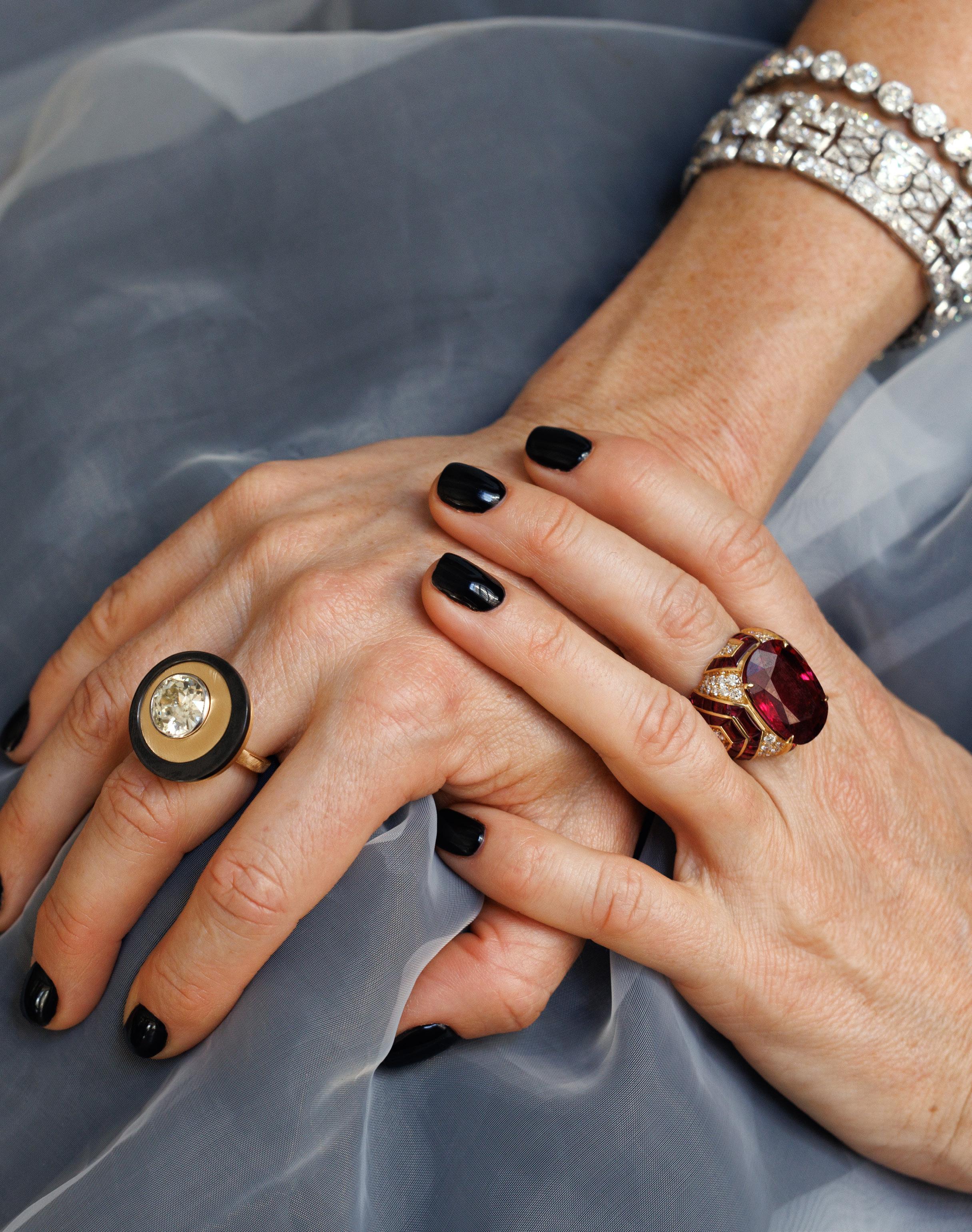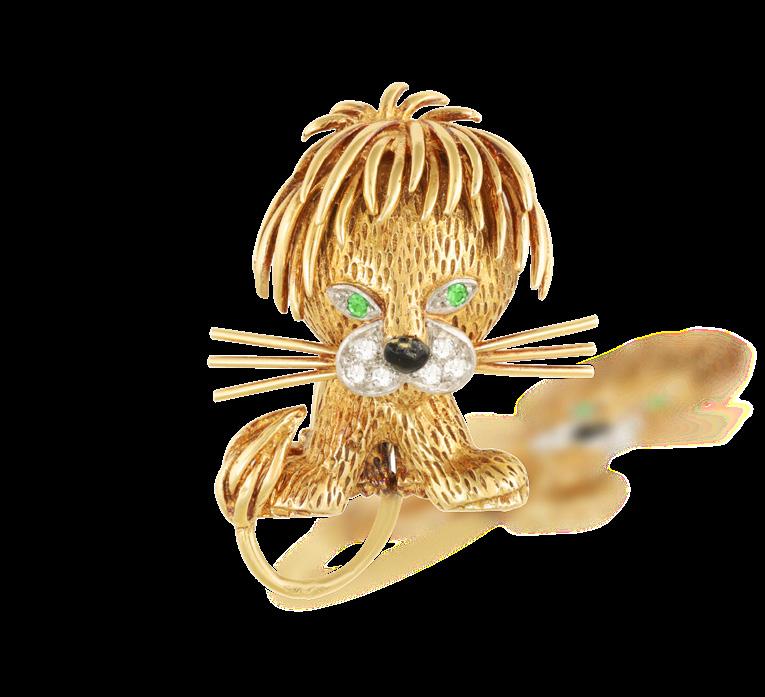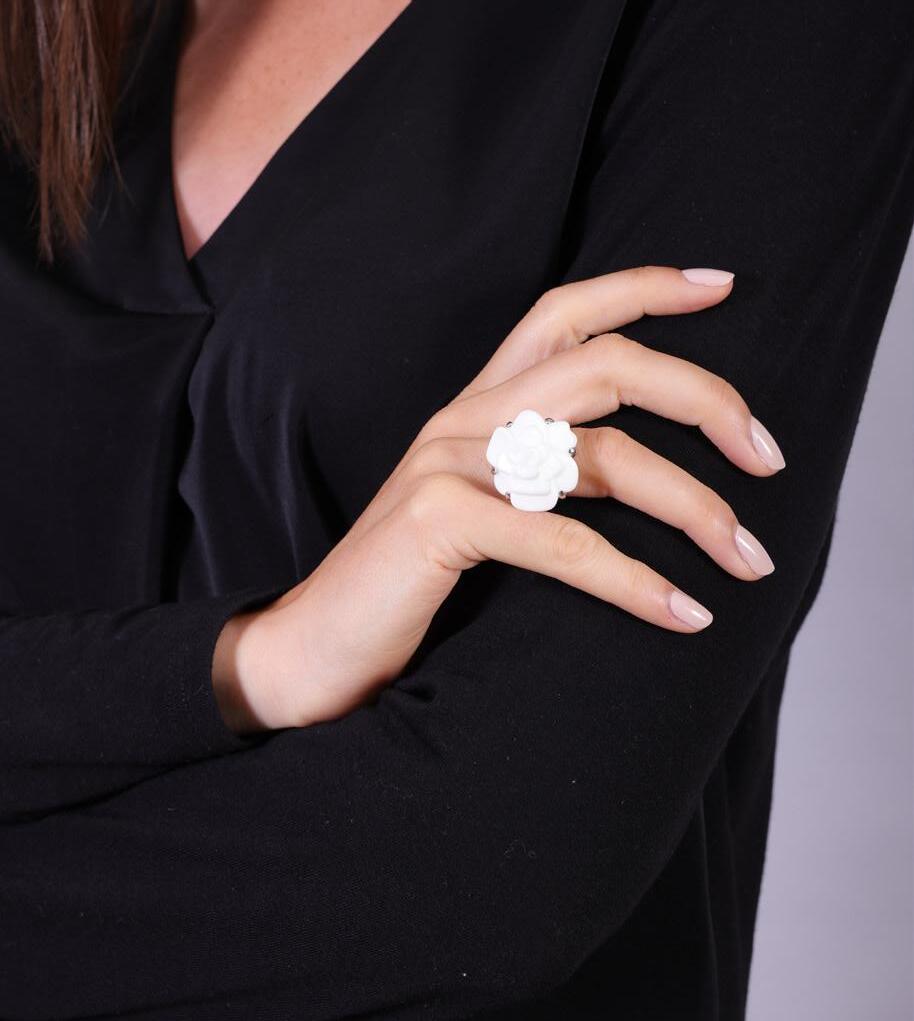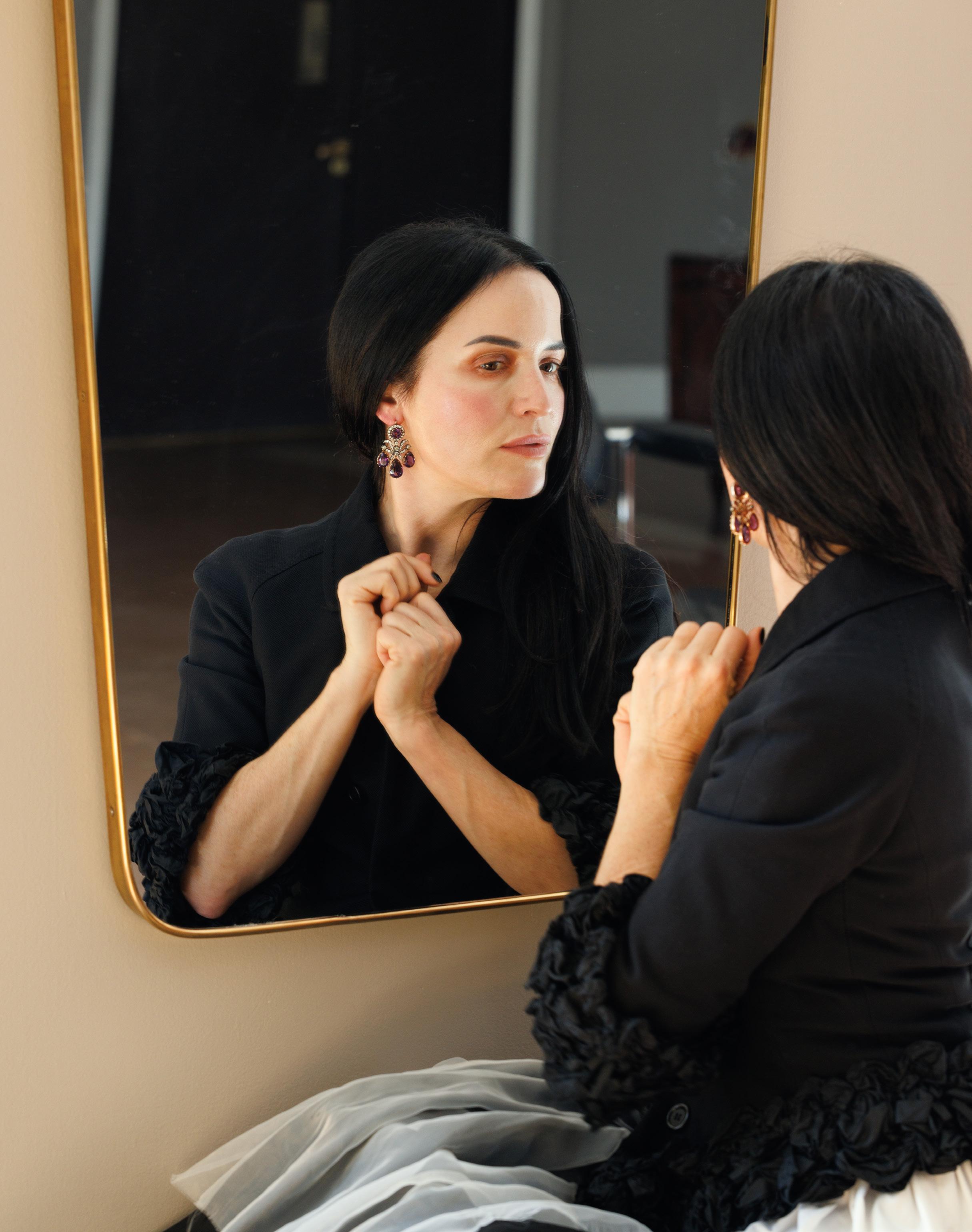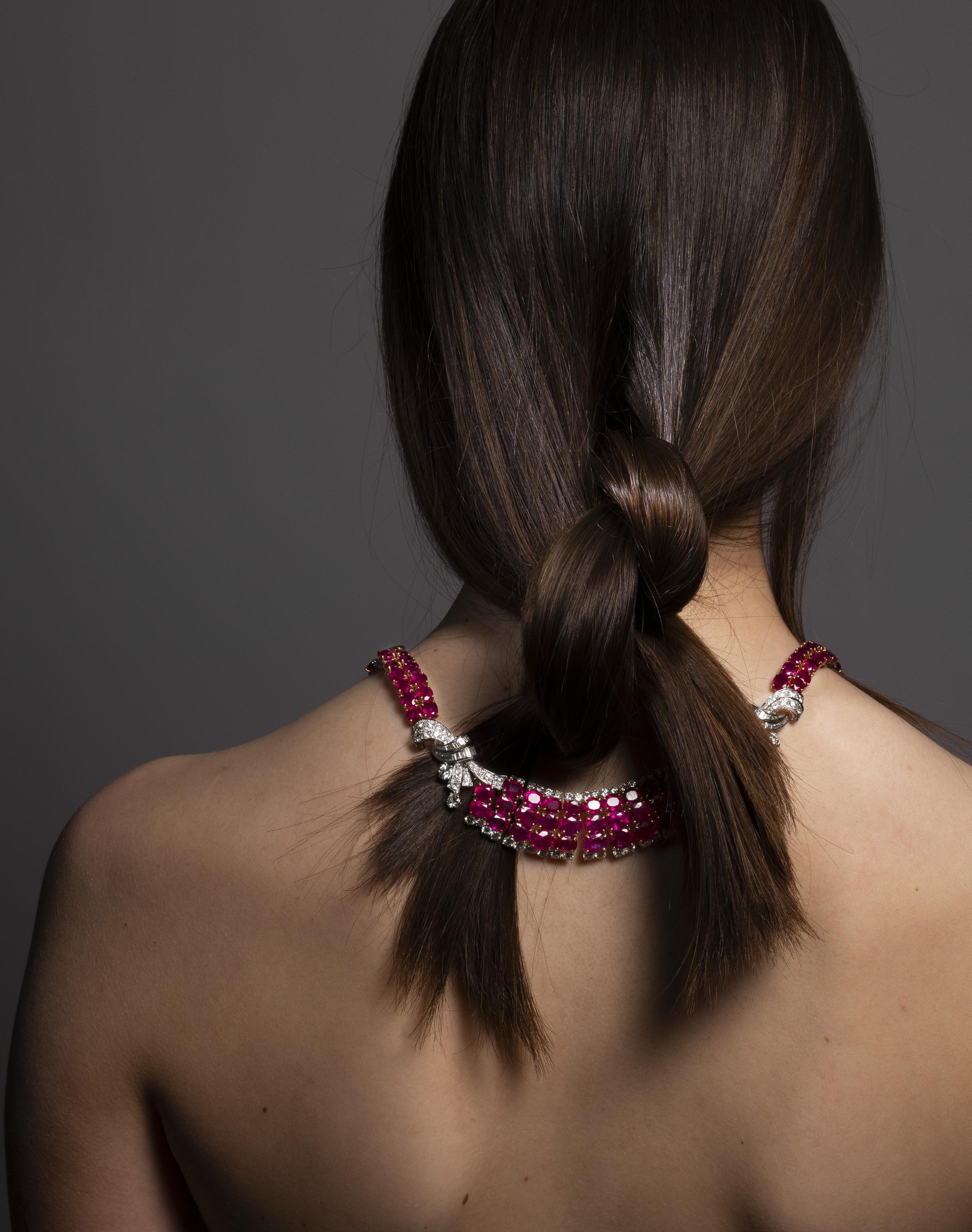

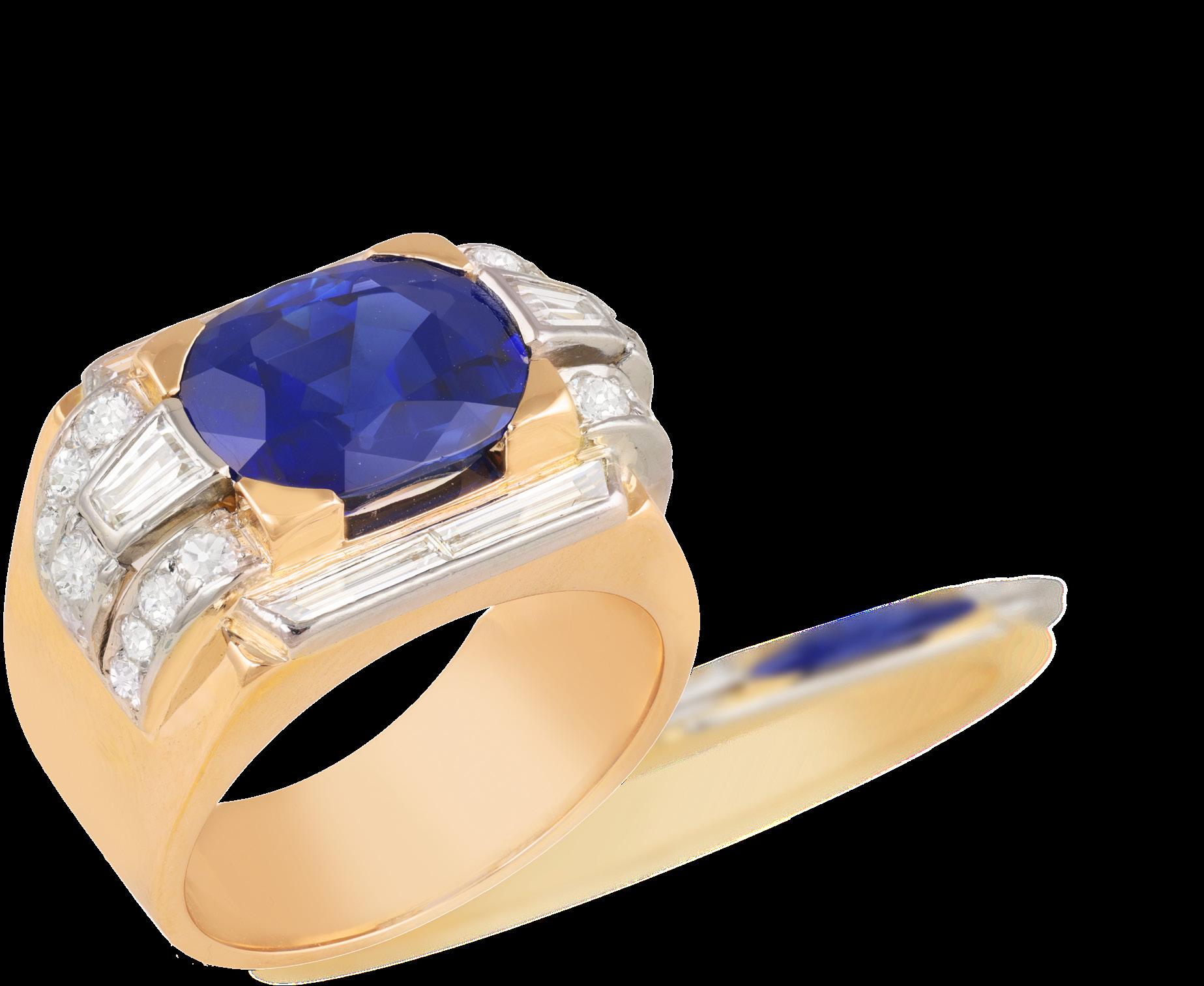




AUCTION 13 May 2025 AT 2.00 PM
26 St. Stephen’s Green, Dublin 2. Ireland , D02 X665 +353 (01)6760261 adams.ie
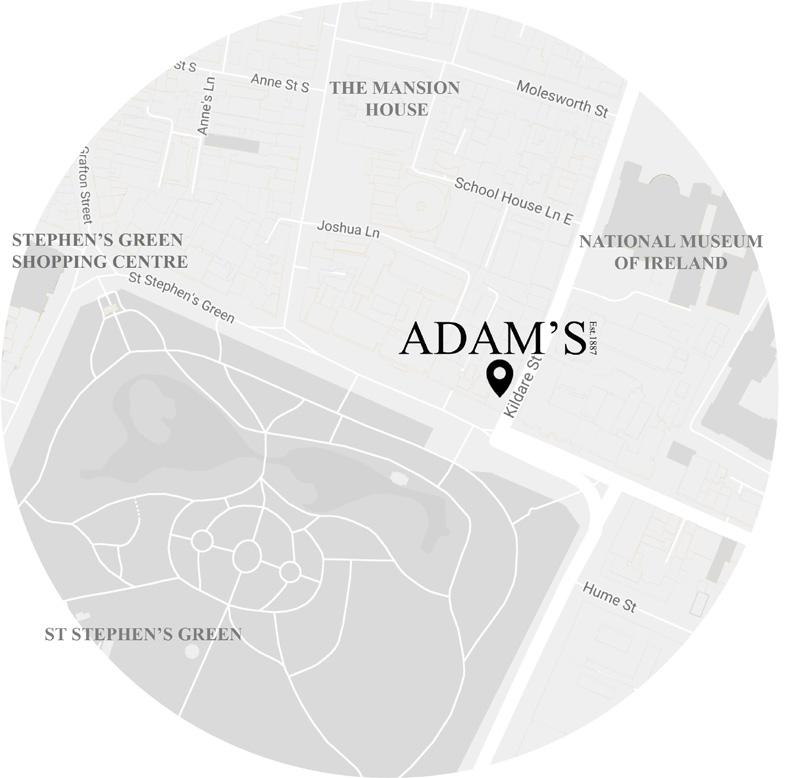

ALL AUCTION VIEWINGS ARE FREE AND OPEN TO THE PUBLIC
Thursday 8 May 10.00am - 5.00pm
Friday 9 May 10.00am - 5.00pm
Saturday 10 May 1.00pm - 5.00pm
Sunday 11 May 1.00pm - 5.00pm
Monday 12 May 10.00am - 5:00pm
Tuesday 13 May 10.00am - 1:00pm
Please refer to the Buying At Auction section at the back of this catalogue, or adams.ie for further details on bidding in this auction, including absentee bidding.
PRIVATE VIEWINGS BY APPOINTMENT ONLY

26 St. Stephen’s Green, Dublin 2. Ireland +353 1 676 0261
The presence of lab-grown diamonds has become more common in the jewellery market. Unfortunately, traditional gemmological methods are not sufficient in identifying their origin, making it difficult to distinguish natural diamonds from their manufactured counterparts. Even in the hands of trained professionals, the use of standard gemmological tools, which are perfectly suited for the inspection of other gemstones, cannot provide an absolute guarantee of a diamond’s origin.
For this reason, at Adam’s Auctioneers, we have invested in a specialist testing device which detects lab-grown diamonds. As a result of this advanced technology, we can confirm the authenticity of all the diamonds offered in our Jewellery auctions.
This additional layer of verification reflects our commitment to both quality and transparency, ensuring that every diamond we sell can be trusted to be of natural origin. We take full responsibility for the diamonds in our collection, giving you the confidence that comes with knowing their authenticity is always guaranteed.
Should you have any questions or concerns, please do not hesitate to contact us. We are always available to provide further information.
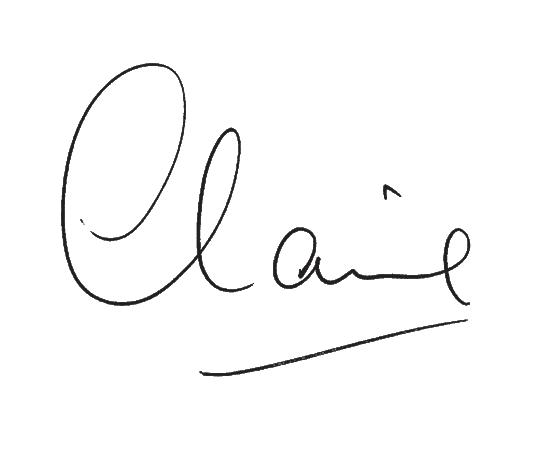

Brian Coyle FSCSI FRICS CHAIRMAN

Claire-Laurence Mestrallet DIRECTOR claire@adams.ie

Stuart Cole MSCSI MRICS MANAGING DIRECTOR s.cole@adams.ie

Nicholas Gore Grimes DIRECTOR nicholas@adams.ie

Claire-Laurence Mestrallet BA, G.G DIRECTOR JEWELLERY & WATCHES DPT claire@adams.ie

Mariachiara Danesi G.G JEWELLERY DEPARTMENT mariachiara@adams.ie

Aoife Doyle JEWELLERY DEPARTMENT aoife@adams.ie

James O’Halloran BA FSCSI FRICS DIRECTOR j.ohalloran@adams.ie

Amy McNamara BA MA ASSOCIATE DIRECTOR amymcnamara@adams.ie

Eamon O’Connor BA DIRECTOR e.oconnor@adams.ie

Nathaniel Nicholson ASSOCIATE DIRECTOR n.nicholson@adams.ie

Eamon O’Connor BA FINANCIAL DIRECTOR e.oconnor@adams.ie

KEN ISRAEL HEAD OF WATCHES Ken@adams.ie

Johanna Gallagher G.G JEWELLERY SPECIALIST johanna@adams.ie

HITESH KHATRI ACCOUNTS DEPARTMENT hitesh@adams.ie
These are shown below each lot in this sale. All amounts shown are in Euro. The figures shown are provided merely as a guide to prospective purchasers. They are approximate prices which are expected, are not definitive and are subject to revision. Reserves, if any, will not be any higher than the lower estimate.
All purchases must be paid for no later than Friday 16th May 2025. Please contact a member of staff to arrange collection/delivery of your purchases. Auctioneers commission on purchases is charged at the rate of 25% (inclusive of VAT). Terms: Strictly cash, card, bankers draft or cheque drawn on an Irish bank. Cheques will take a minimum of eight workings days to clear the bank, unless they have been vouched to our satisfaction prior to the sale, or you have a previous cheque payment history with Adam’s. We also accept payment by credit and debit card (Visa & MasterCard only). For payments by bank transfer please ensure all bank charges are paid in addition to the invoice total, in order to avoid delays in the release of items. Goods will only be released upon clearance through the bank of all monies due. Artists Resale Rights (Droit de Suite) is not payable by purchasers.
All lots are sold within the auctioneers VAT margin scheme. Revenue regulations require that the buyer’s premium must be invoiced at a rate which is inclusive of VAT. This is not recoverable by any VAT registered buyer.
Lots marked * are to be sold whilst subject to Temporary Admission (Import) regulations. For purchasers based in the Republic of Ireland - the hammer price will be subject to import VAT at the reduced rate, currently 13.5%, and the Buyer’s Premium will be subject to VAT at the standard rate, currently 23%. For purchasers outside of the Republic of Ireland, please contact our Accounts Department for further details.
It is up to the bidder to satisfy themselves prior to buying as to the condition of a lot. In relation to Condition Reports, whilst we make certain observations on the lot, which are intended to be as helpful as possible, references in the condition report to damage or restoration are for guidance. The absence of such a reference does not imply that an item is free from defects or restoration, nor does a reference to particular defects imply the absence of any others. The condition report is an expression of opinion only and must not be treated as a statement of fact. Please ensure that condition report requests are submitted before 12 noon on Tuesday 13th May 2025 as we cannot guarantee that they will be dealt with after this time.
We are happy to execute absentee or written bids for bidders who are unable to attend or bid online themselves and can also arrange for bidding to be conducted by telephone. However, these services are subject to special conditions (see conditions of sale in this catalogue). All arrangements for absentee and telephone bidding must be made before 5pm on the day prior to sale. Bidding by telephone may be booked on all lots. Early booking is advisable as availability of lines cannot be guaranteed.
6
ALL LOTS ARE BEING SOLD UNDER THE CONDITIONS OF SALE AS PRINTED IN THIS CATALOGUE AND ON DISPLAY ON OUR WEBSITE.

Claire-Laurence Mestrallet BA, GIA G.G DIRECTOR
JEWELLERY & WATCHES
claire@adams.ie

clm_adams_auctioneers
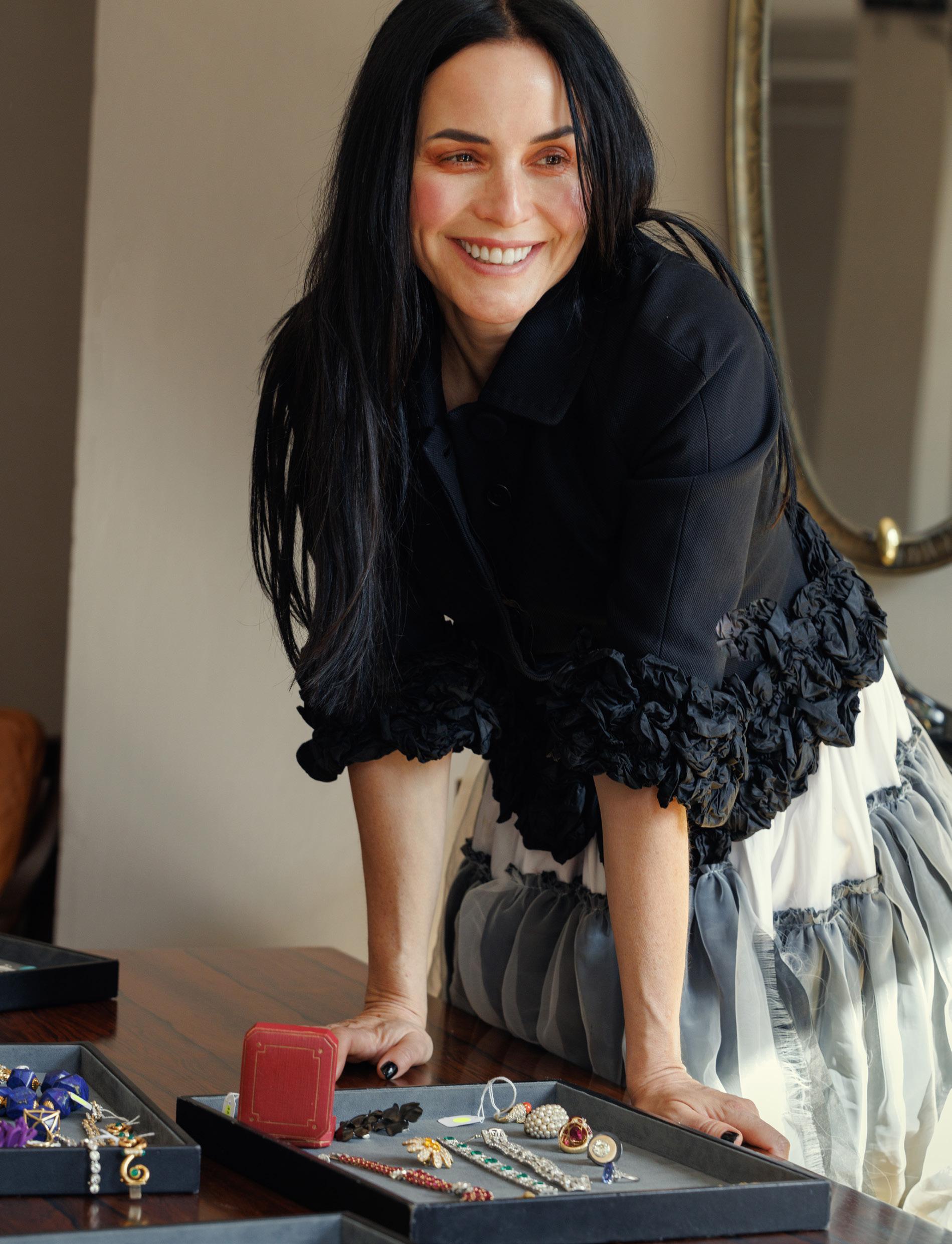
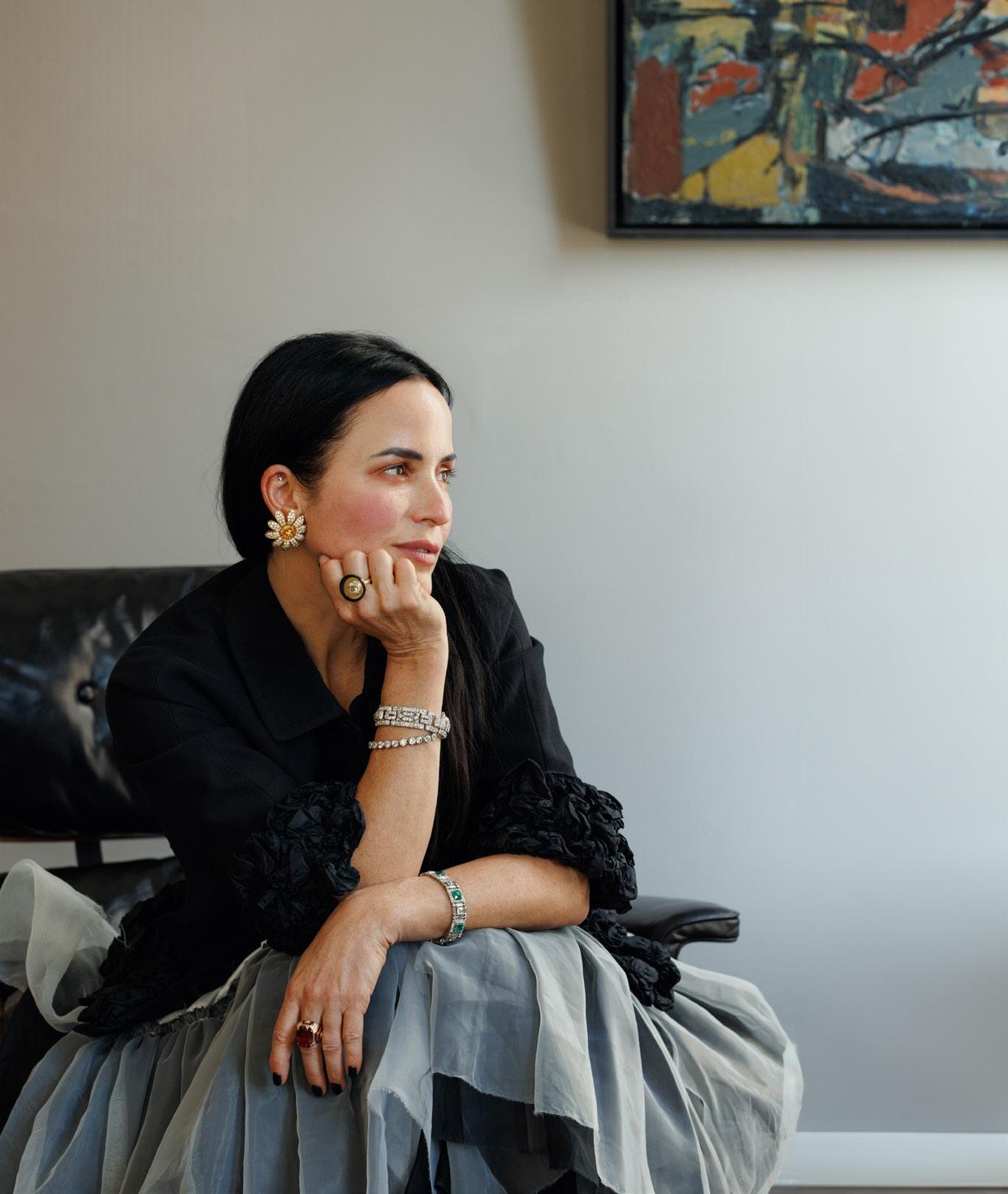
Singer, actress, and author Andrea Corr is best known as the lead vocalist and pianist of the internationally acclaimed band The Corrs. She brought a distinctive depth to the group’s unique blend of Celtic tradition and pop-rock flair. Since their breakthrough in 1995, Andrea and her siblings have captivated audiences worldwide, selling over 40 million albums. In addition to her work with the band, Andrea has released three solo albums and established a career in film and stage acting, making her screen debut in the 1991 film The Commitments. She is also the author of the memoir Barefoot Pilgrimage, in which she reflects on her childhood, the love of her family, and her journey with The Corrs.
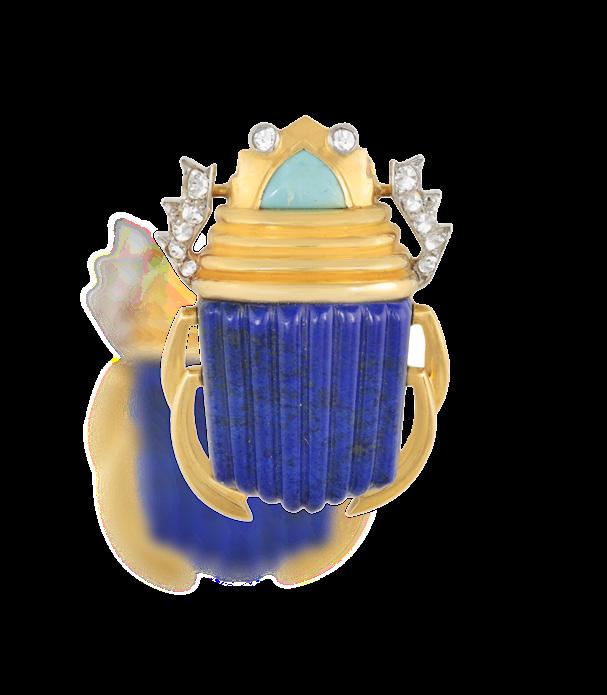
Lot 65. Cartier, circa 1940. I love a brooch as a piece of jewellery. How they put a different twist on what you are wearing. This rare collectible has such character
(EST. €15,000-20,000)
Lot 120. Moroni. I think these are my favourite of what I selected and again it’s a new discovery for me. I think I’ve been pretty unadventurous jewellery wise before this visit. These are so stunning. Blooming beautiful.
(Est. €6,000-8,000)
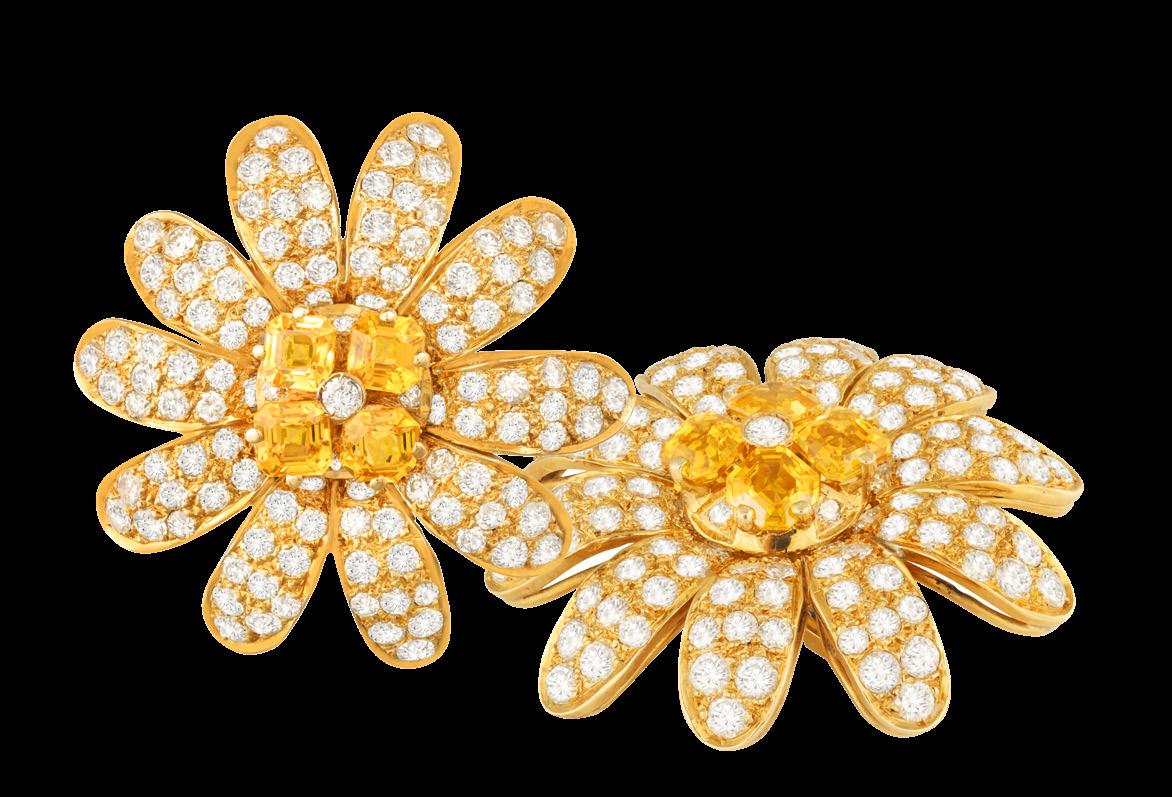
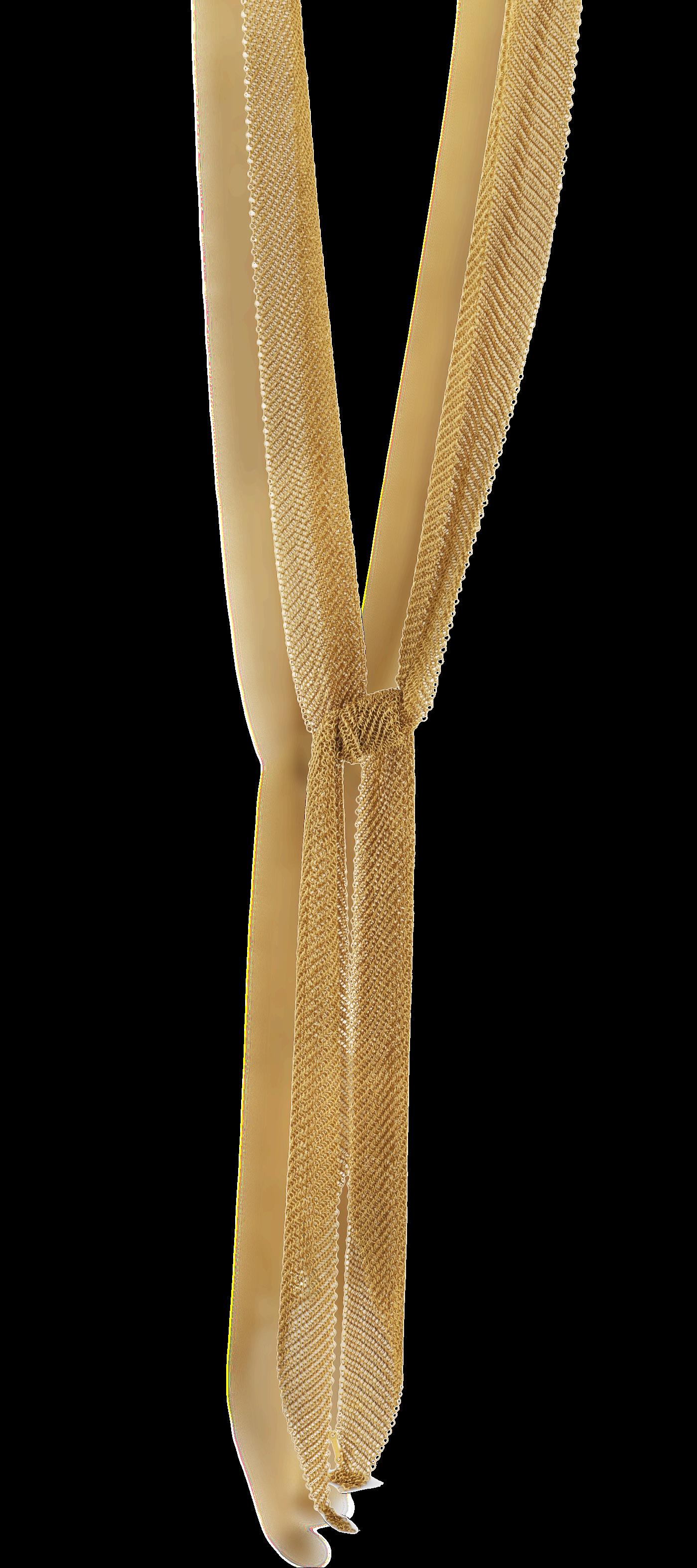

Lot 160. Designed By Elsa Peretti for Tiffany & Co. I am kind of intrigued by this gold mesh scarf necklace. It is gold but it is so delicate I could almost think it would float. I loved the touch of it. Playing with it like a ribbon between my fingers. (Est. €8,000-12,000)
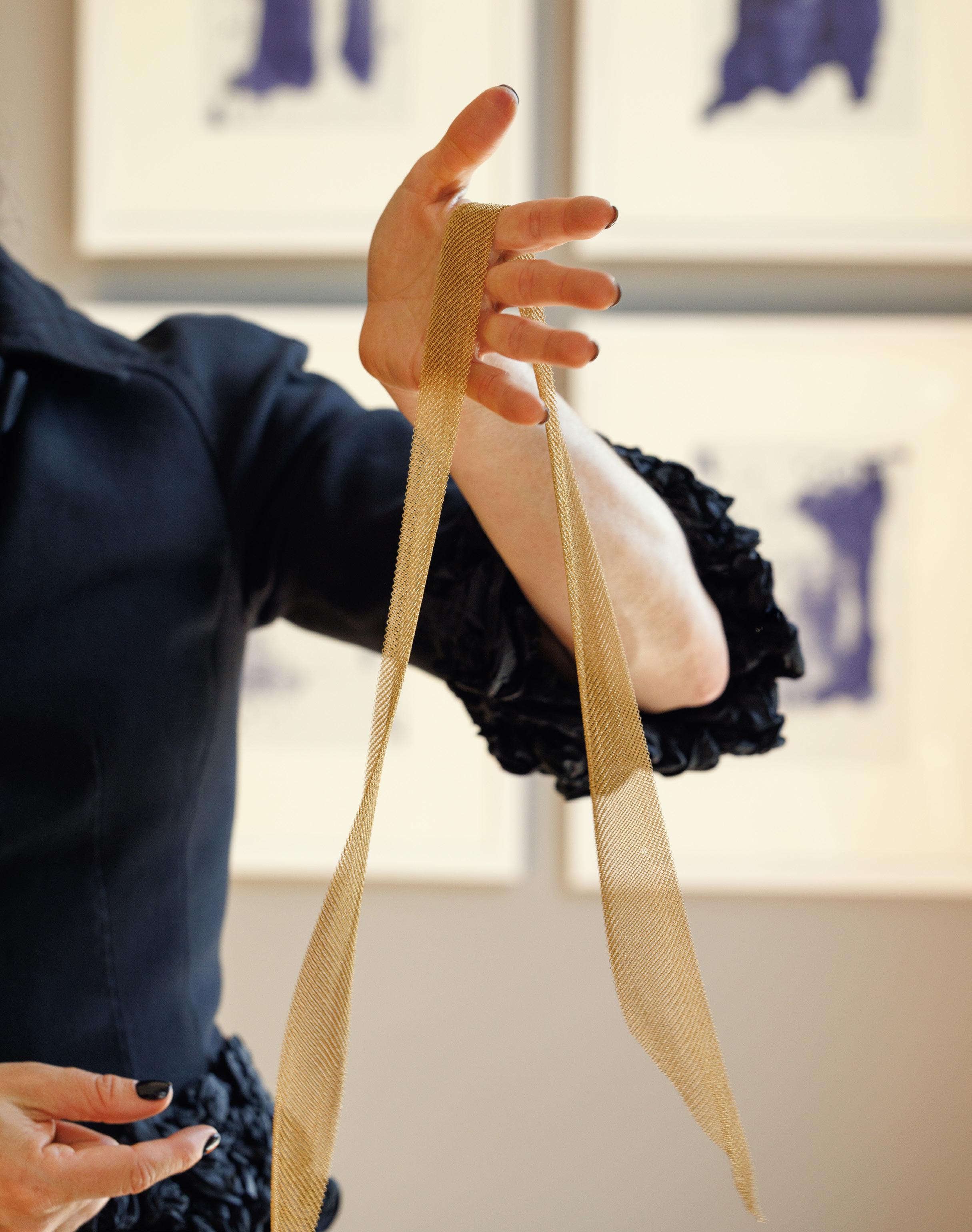
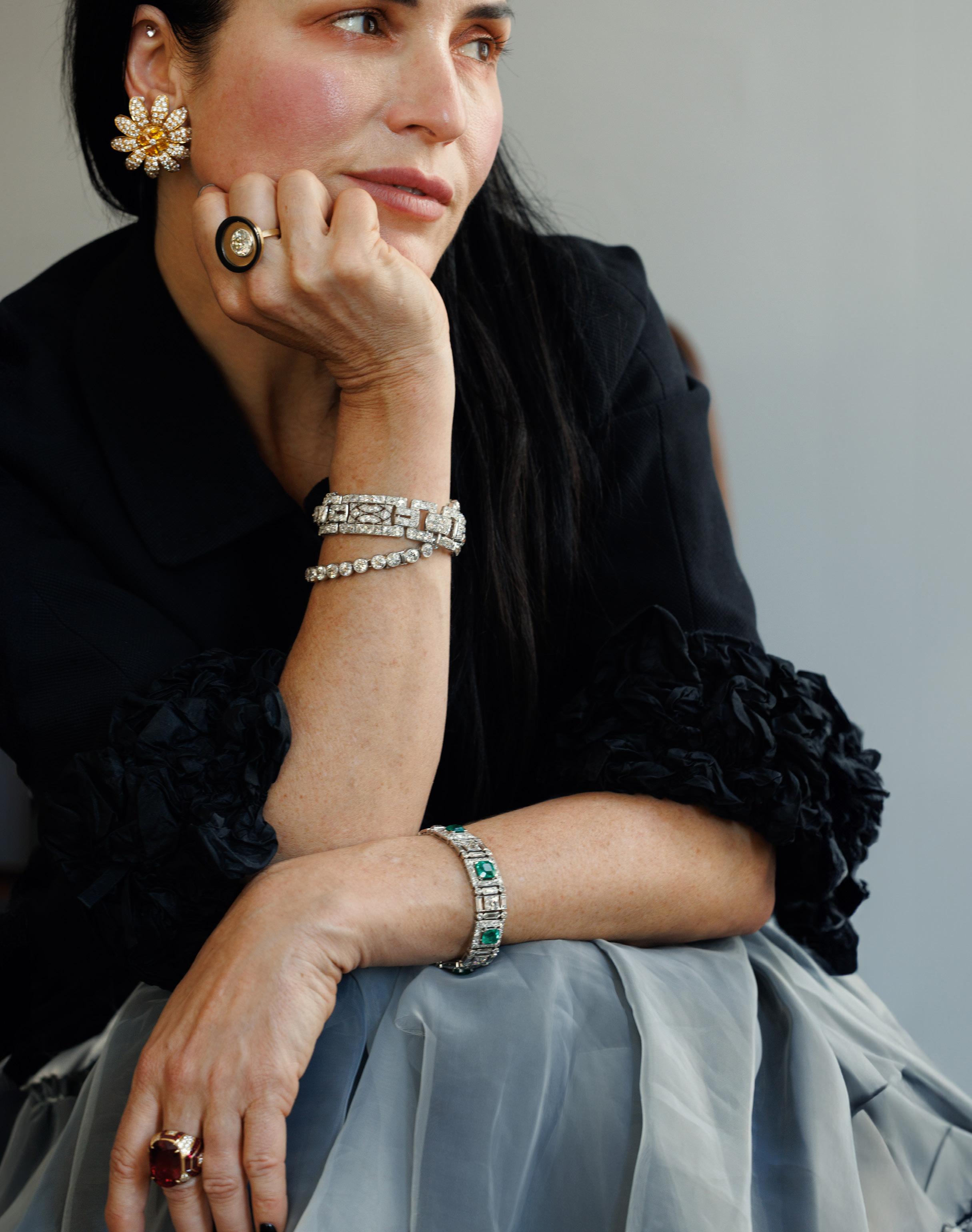
Lot 22. Art Deco, circa 1925. There’s a history to this piece...I feel drawn to emeralds. They are my birthstone and this art deco design is particularly beautiful. (Est. €40,000-50,000)

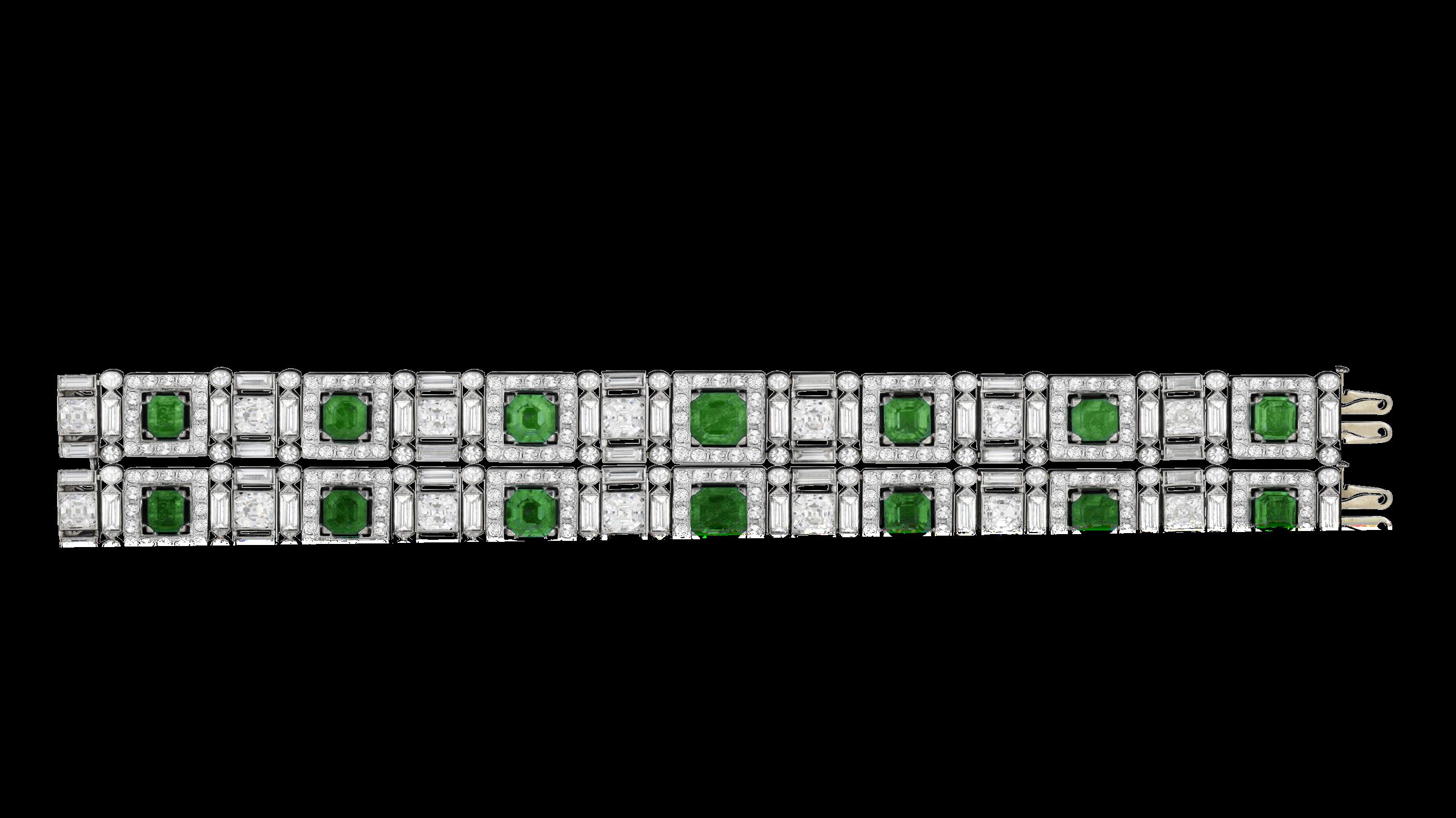
Lot 136. An important Burmese ruby and diamond necklace. This is such a stunning piece of Jewellery. The weight and feel of it is so decadent. I feel lavishly adorned in vivid rubies and diamonds! It’s for the red carpet. (Est. €90,000-110,000)
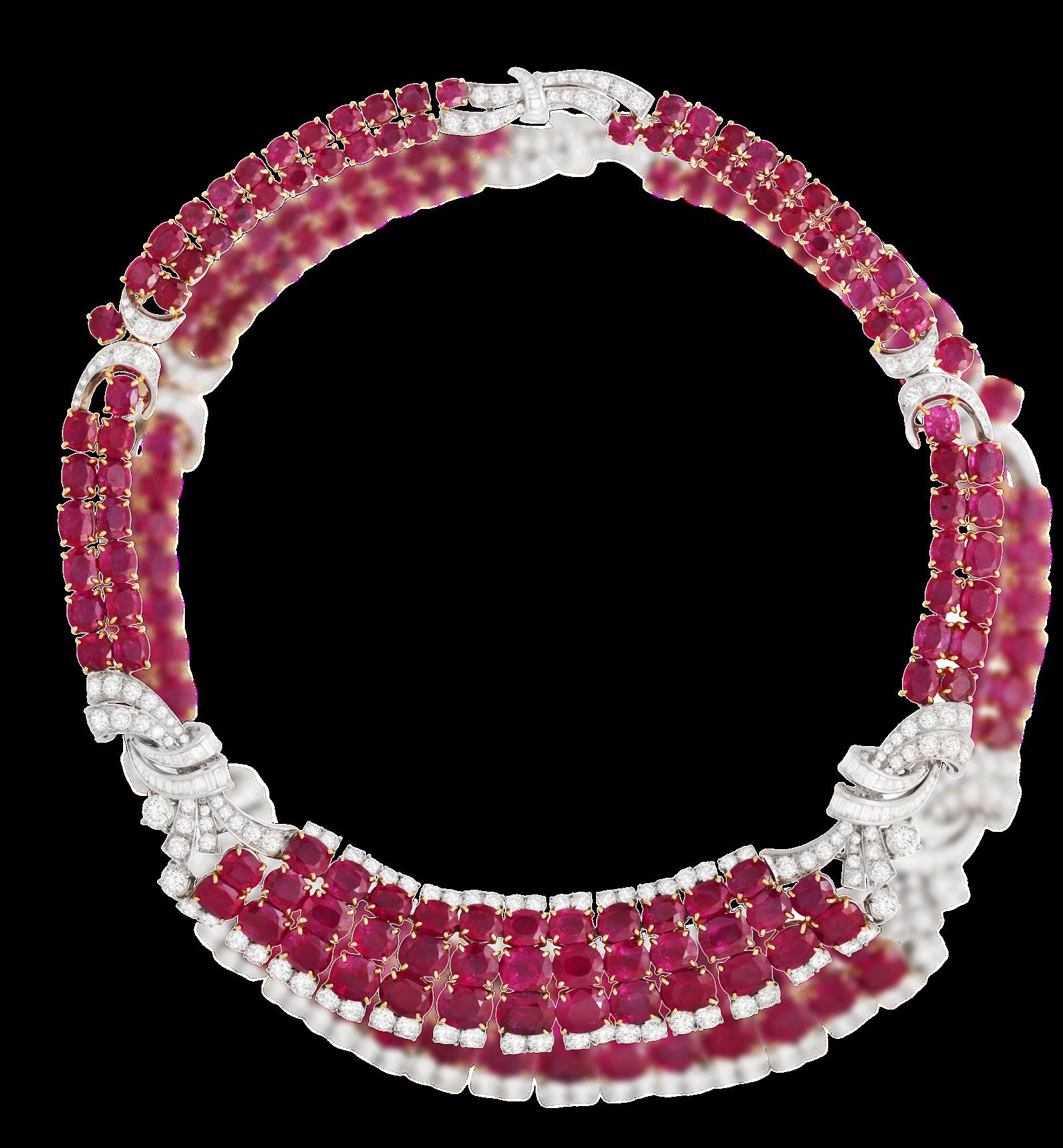
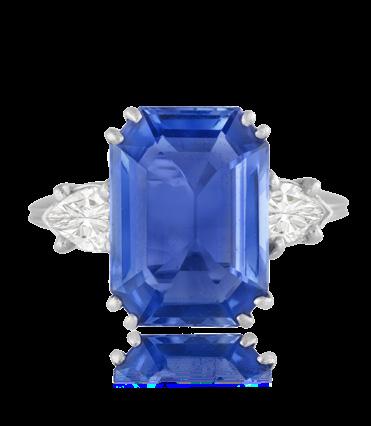
Lot 57. I love this sapphire and diamond dress ring. The blue has an almost lilac hue. It’s like the sea in my dreams and the sapphire is from Sri Lanka which is almost poetic to me. It evokes the beauty of the Indian Ocean. (Est. €14,000-18,000)
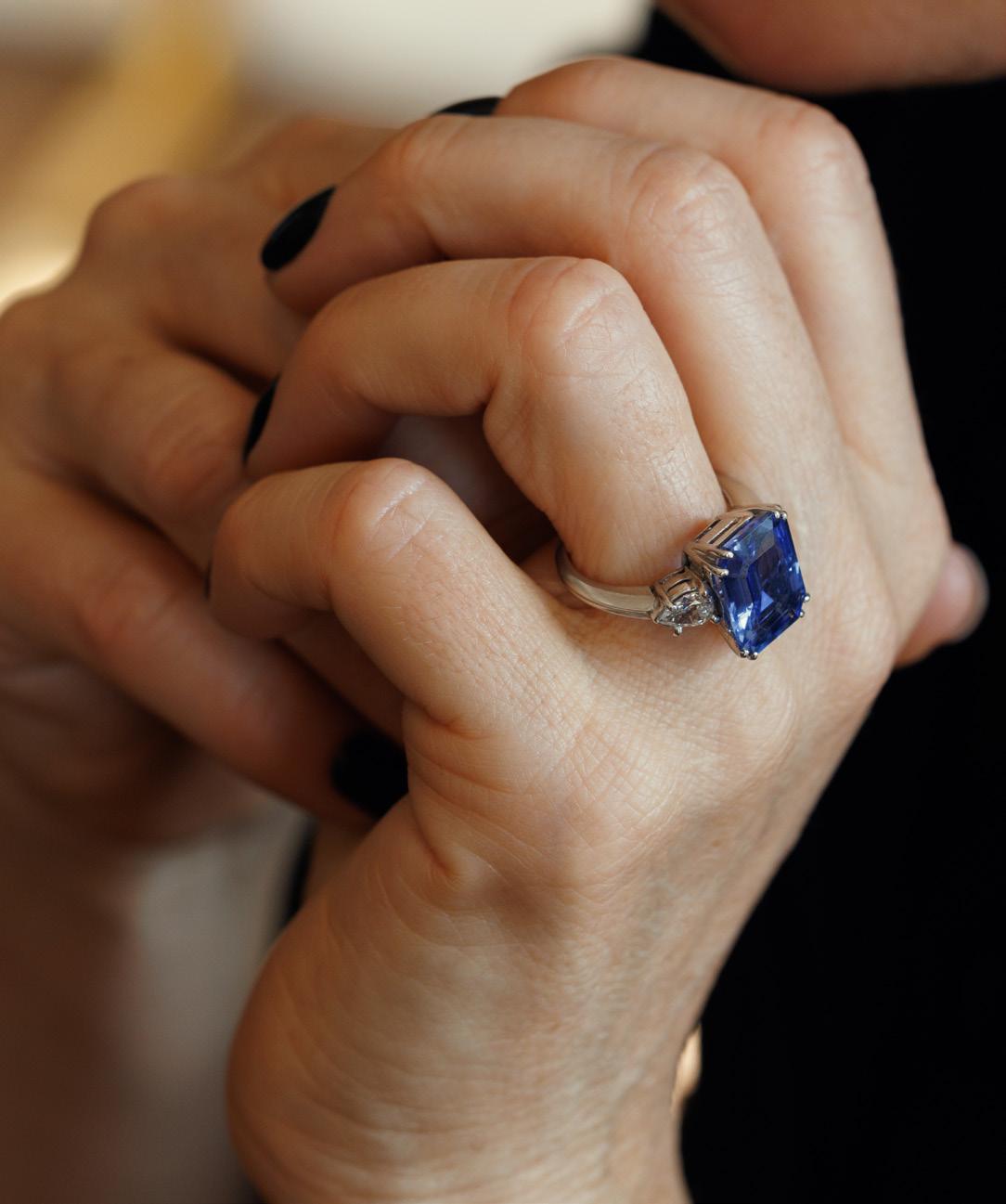
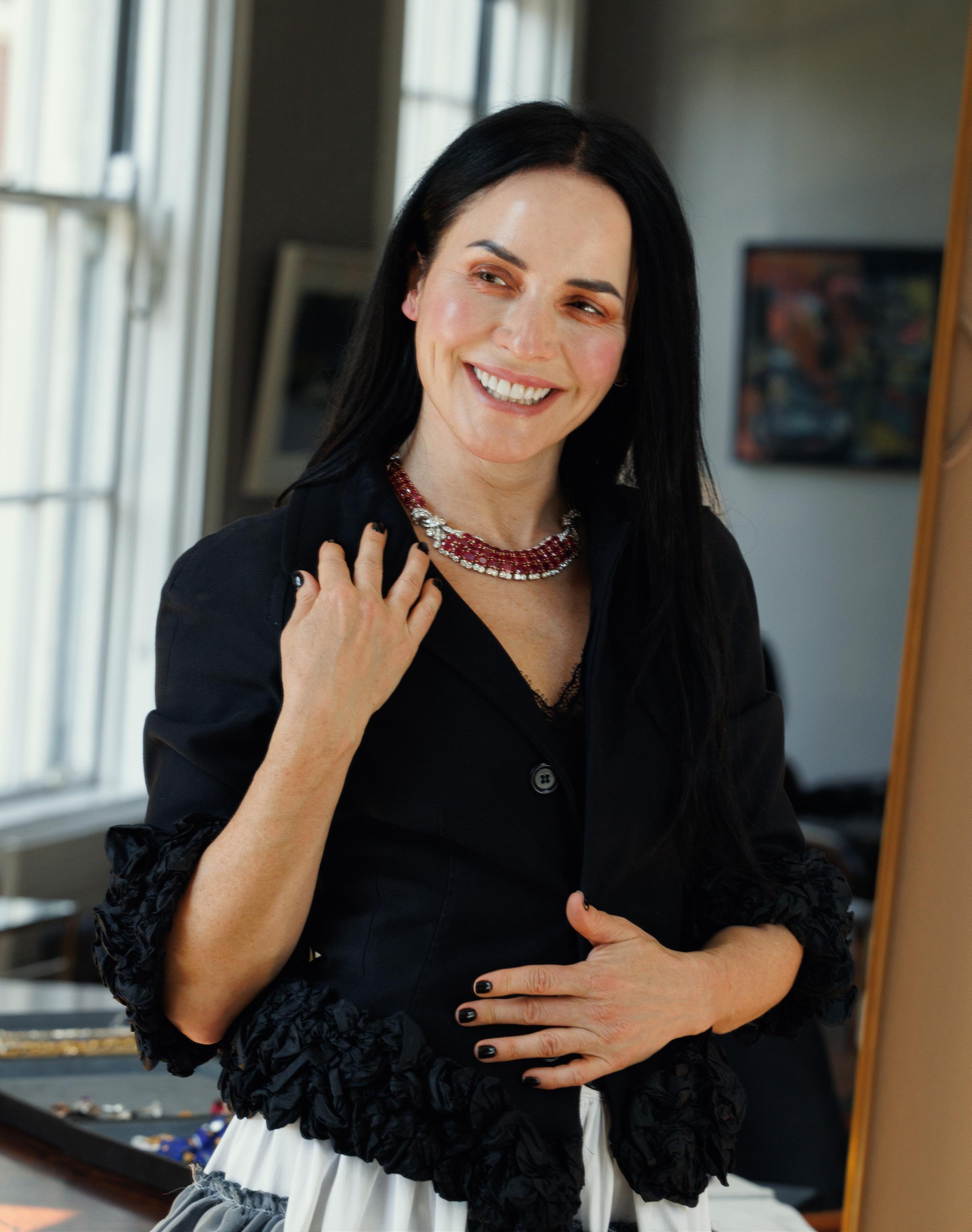
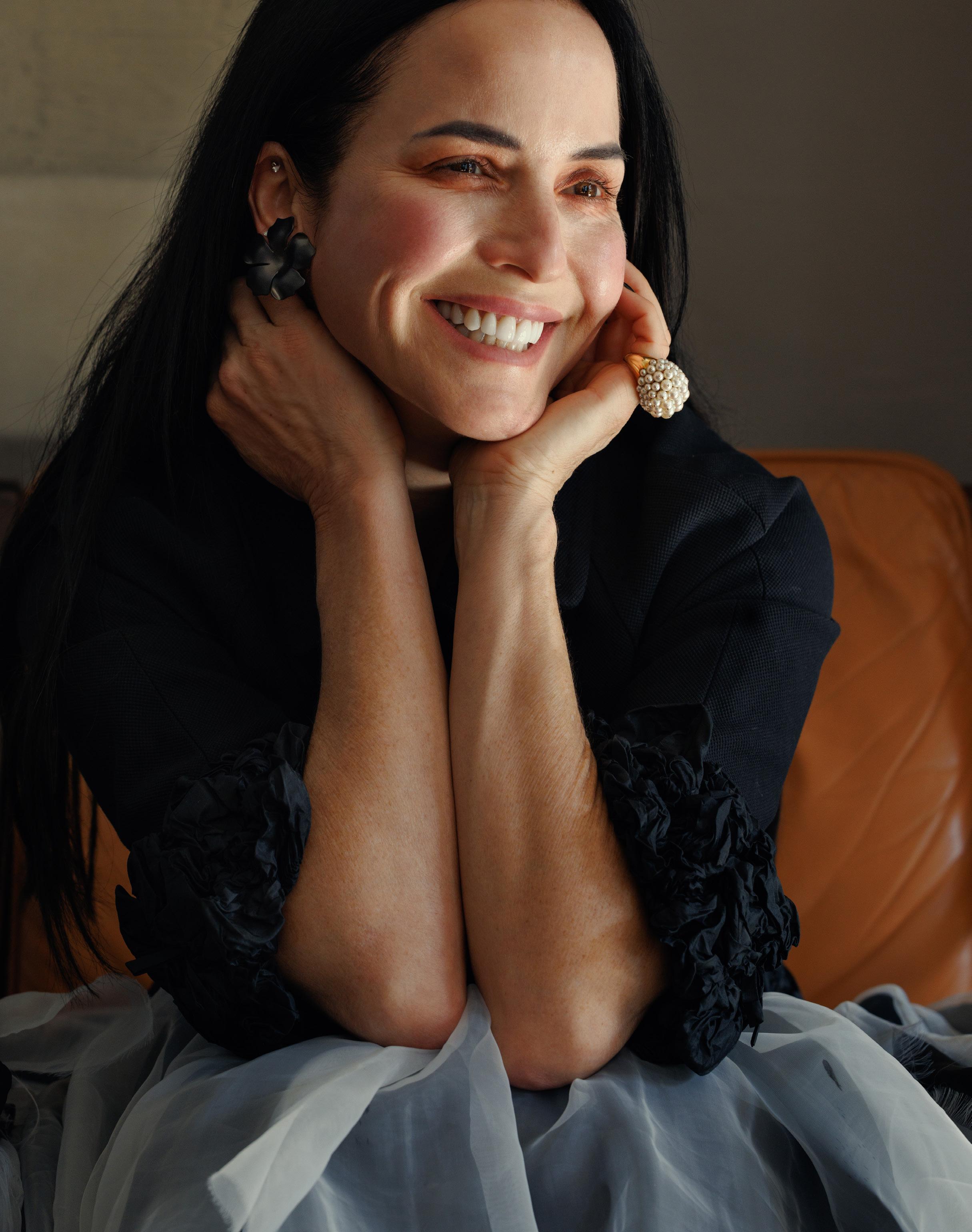
Lot 264. Margherita Burgener. These really became something to me when I tried them on. I think this is what I discovered overall on my visit to Adams. Jewellery as an art form. They are really interesting and beautiful on I think. And they go with my favourite colour of clothes (Est. €600-800)
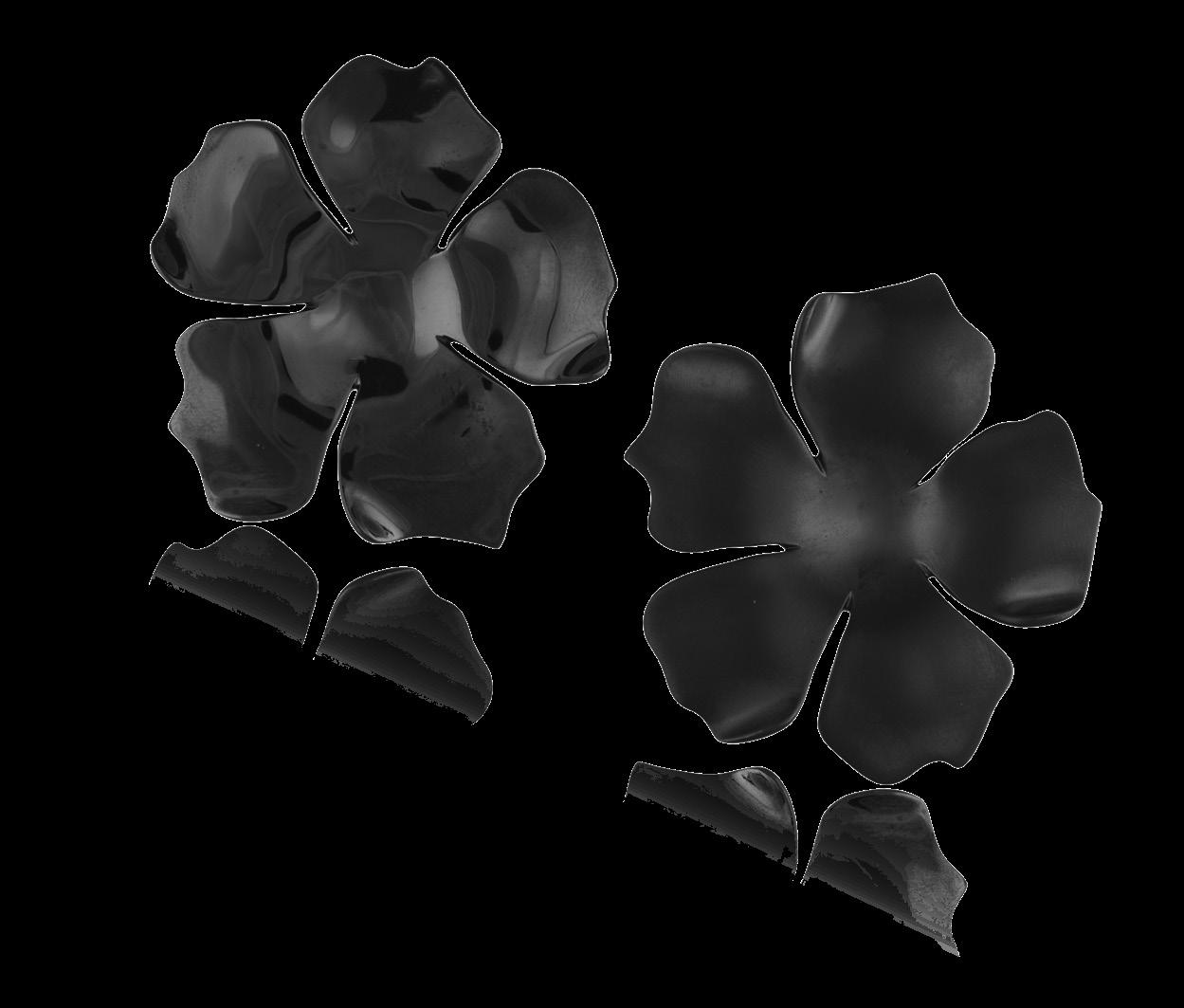
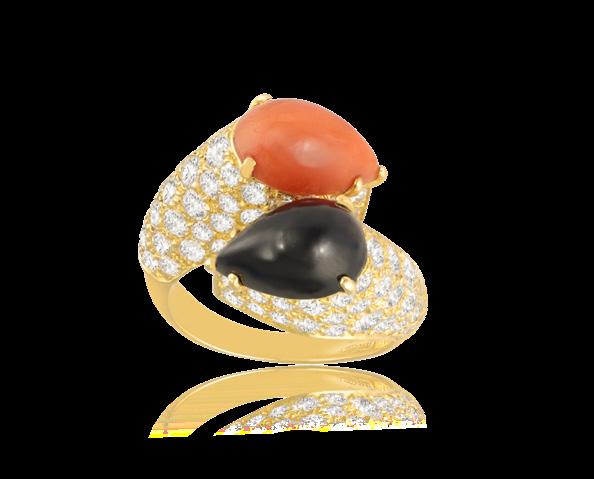
Lot 111. A ‘Toi et Moi’ by Cartier. You and me is a perfect name for this ring I think . It conjured the image of 2 penguins nestling together for warmth.
(Est. €7,000-9,000)
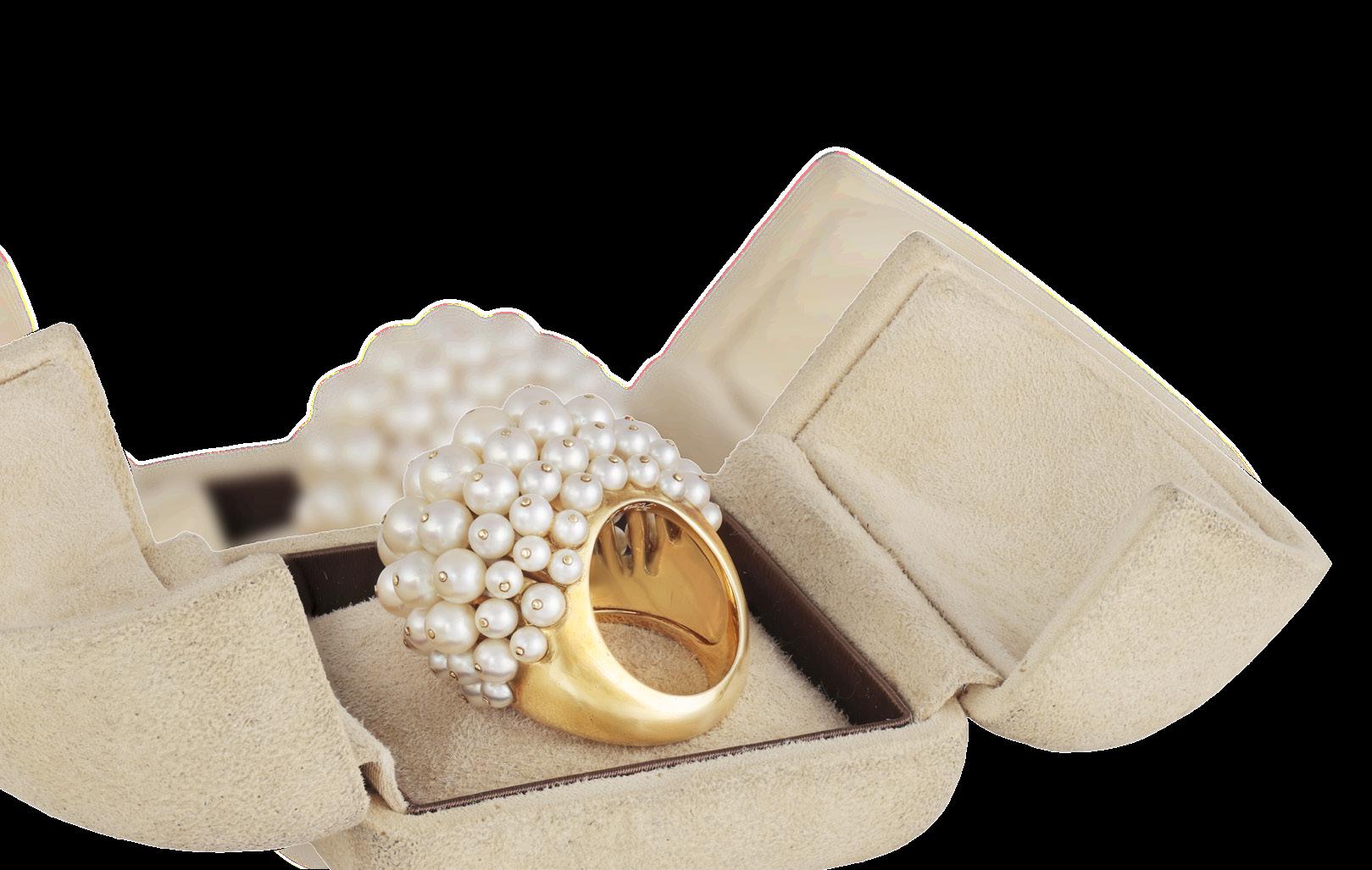

Lot 60. René Boivin. Claire suggested I wear this pearl ring on my little finger which is beautiful and elegant I think.
(Est. €15,000-25,000)

Lot 150. Bulgari. This rubellite, ruby and diamond ring looks regal to me. I can imagine it looking good on a man too. An artist. (Est. €15,000-25,000)
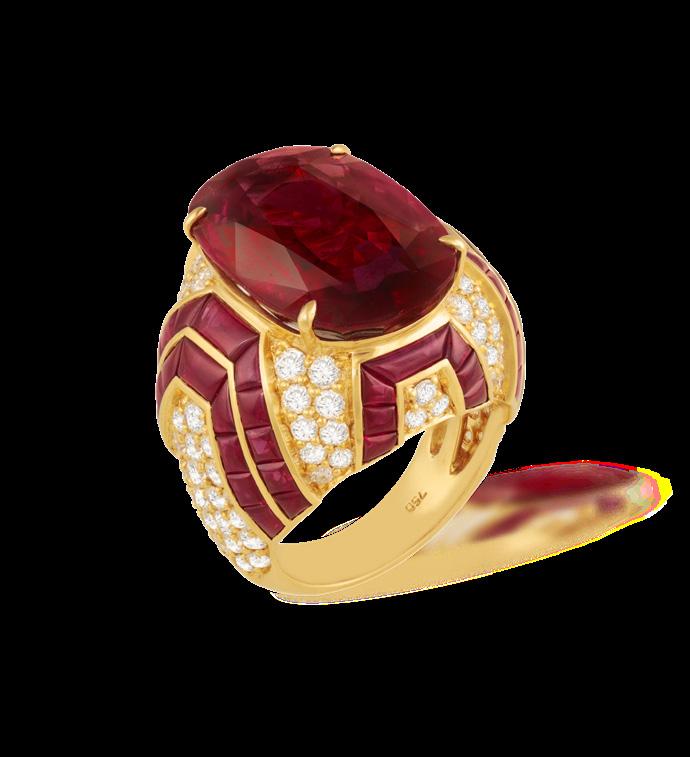

Lot 19. This art deco diamond bracelet is really so perfectly made. The underside is even beautiful to look at. (Est. €18,000-22,000)
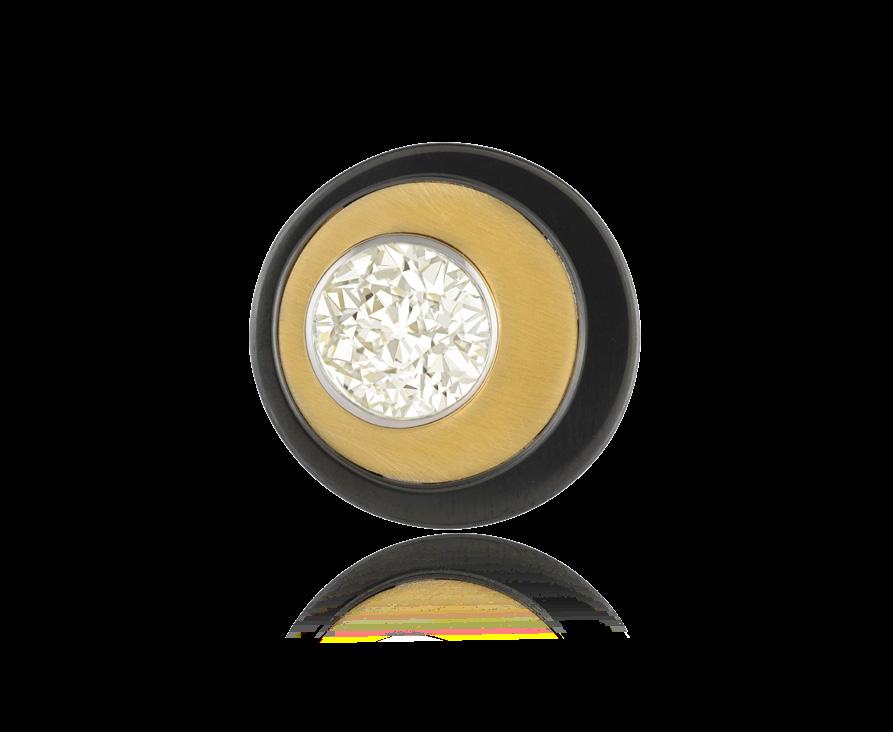

Lot 201. Langi. This is such a unique setting for diamond. I have never seen anything like it before and I love what seems to me like a merging of the past and the future. It is such an interesting and artistic creation (Est. €20,000-30,000)
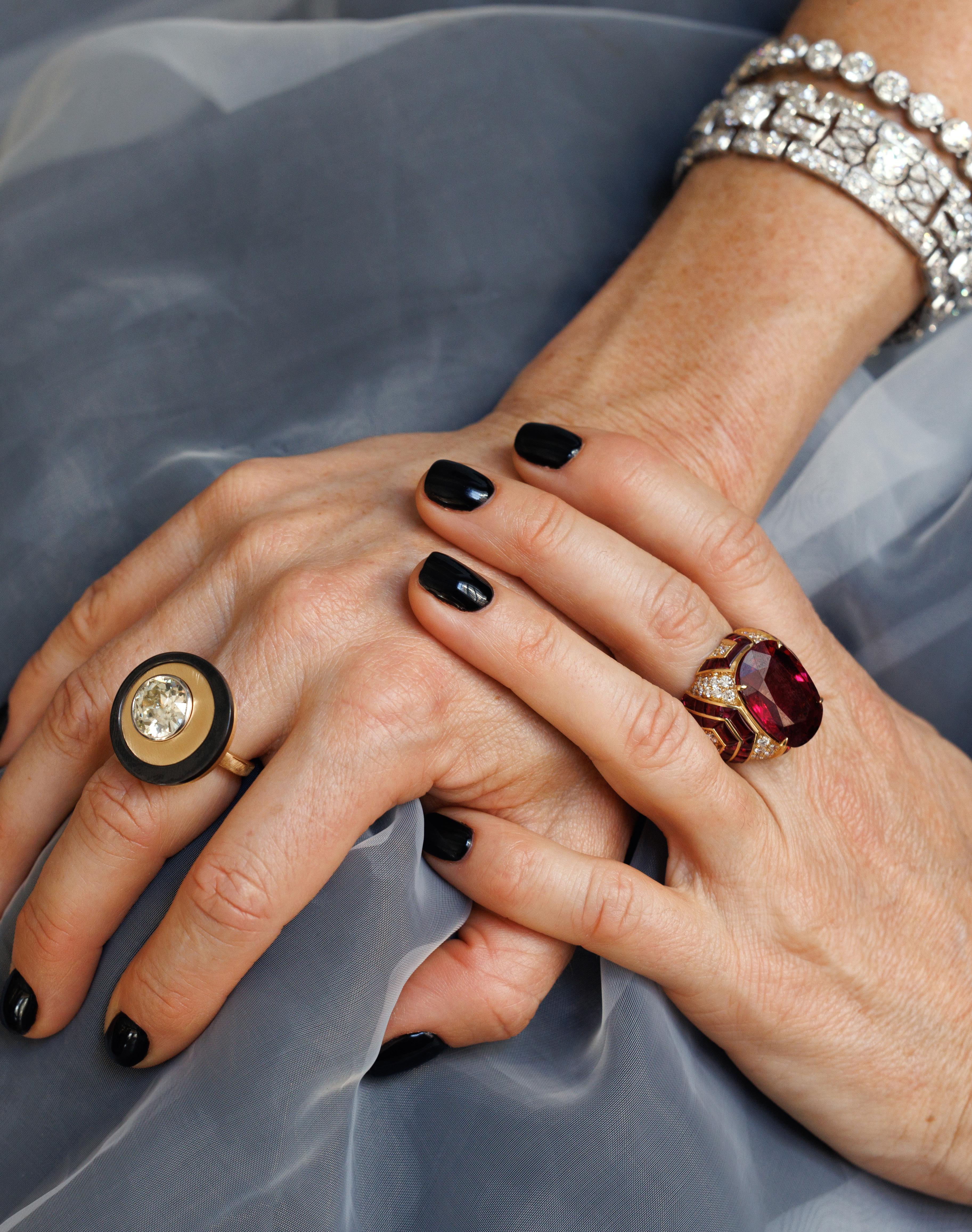
CARTIER A LADY’S 18K GOLD AND DIAMOND ‘PANTHÈRE’ WATCH
The 4-jewel Cal-057 quartz movement, square cream dial with Roman numerals, inner five minute divisions, blued sword hands, secret signature at 10, polished gold bezel highlighted with non factory brilliant-cut diamonds, brushed gold case secured with 8 screws, to a fitted 18K gold brick-link bracelet with signed folding clasp and further brilliant-cut diamonds near bezel, blue cabochon crown, c ase with Cartier maker’s mark and Swiss assay mark, numbered 8057917 & 06467, clasp signed, with Eu ropean convention mark and Swiss assay mark, with mak er’s case, case: 21mm
€ 2,500 - 3,500
3
BULGARI A GOLD ‘B.ZERO1’ RING
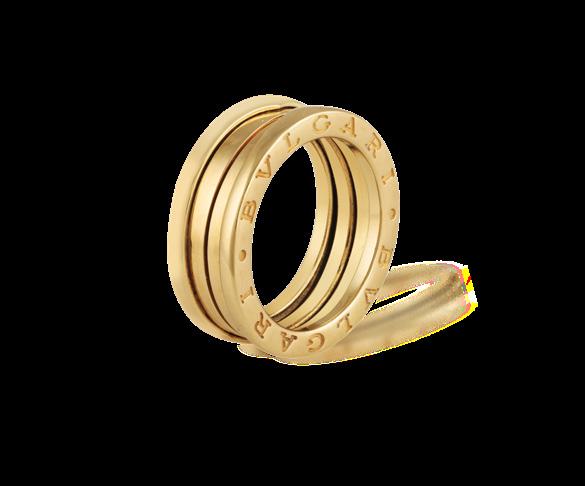
2
CARTIER A GOLD ‘ÉCROU DE CARTIER’ BRACELET
The oval bracelet designed as a circular reeded bolt with four movable nuts and two stationary nuts, in 18K rose gold, signed Cartier, numbered FUF*****, Swiss assay mark, European convention mark, with maker’s case and outer box, size stamped 15
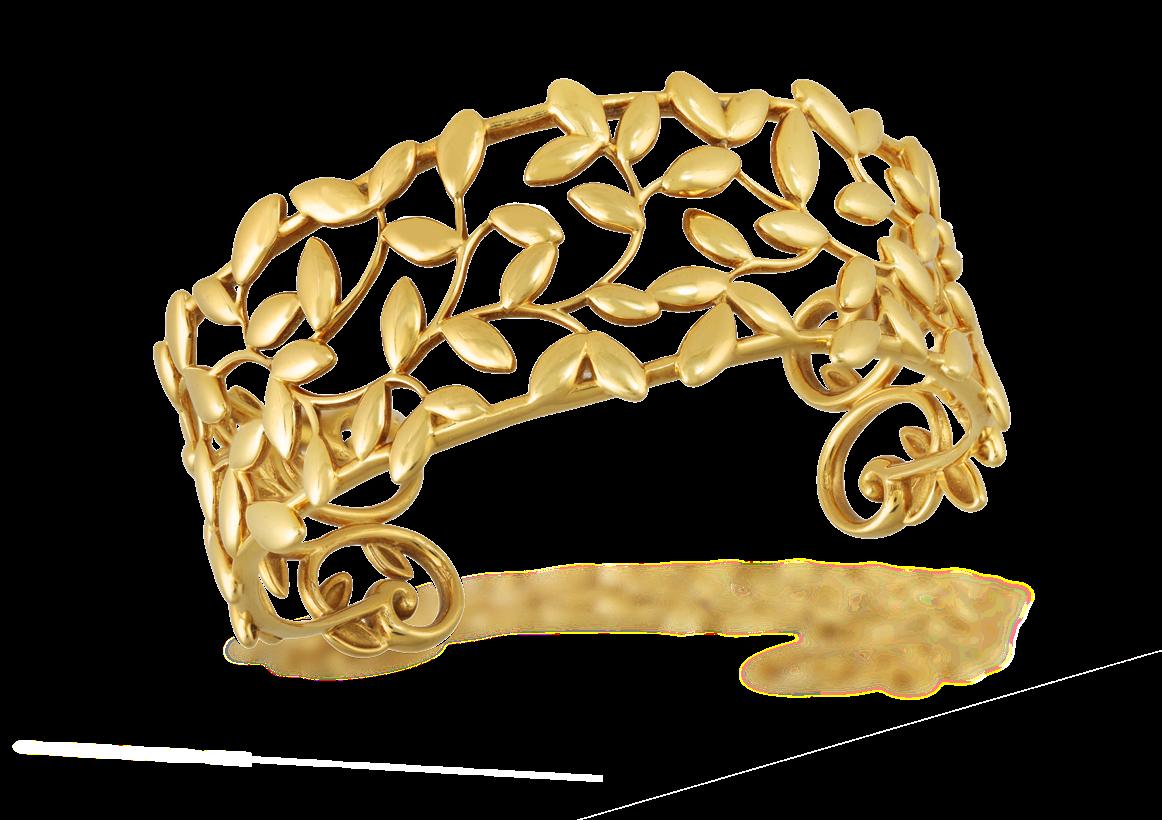
TIFFANY & CO., DESIGNED BY PALOMA PICASSO A GOLD ‘OLIVE LEAF’ BRACELET
Composed of a segmented band, each side with a ring engraved ‘Bvlgari Bvlgari, in 18K gold, signed Bulgari, Italian registry mark, ring size M
€ 1,000 - 1,500
5
BULGARI AN 18K GOLD RING
Of gas-pipe design, in 18K rose, white and yellow gold, signed Bvlgari, Italian registry mark, ring size L
€ 1,400 - 1,800
Of openwork design, the cuff embellished with curvilinear olive leaves throughout, in 18K gold, signed Tiffany & Co. and Paloma Picasso, (accompanied with receipt from Tiffany & Co. in Canada, dated 2014), inner diameter 5.5cm
€ 3,500 - 4,500
6
CARTIER A STAINLESS STEEL AND 18K GOLD ‘BALLON BLEU’ BRACELET WATCH, CIRCA 2021
The 25-jewel Cal-076 automatic movement, circular guilloché silvered dial, black Roman numerals, black inner minute divisions with 5 minute markers, secret signature at 7, brushed stainless steel case secured by 8 screws, blue cabochon inset crown, fitted polished steel and gold link bracelet with signed folding clasp, case, dial and movement signed, case no. 212480, ref. 3284, three stainless steel spare links, with maker’s case and warranty card from Cartier, case (including crown): 38mm
€ 3,000 - 5,000

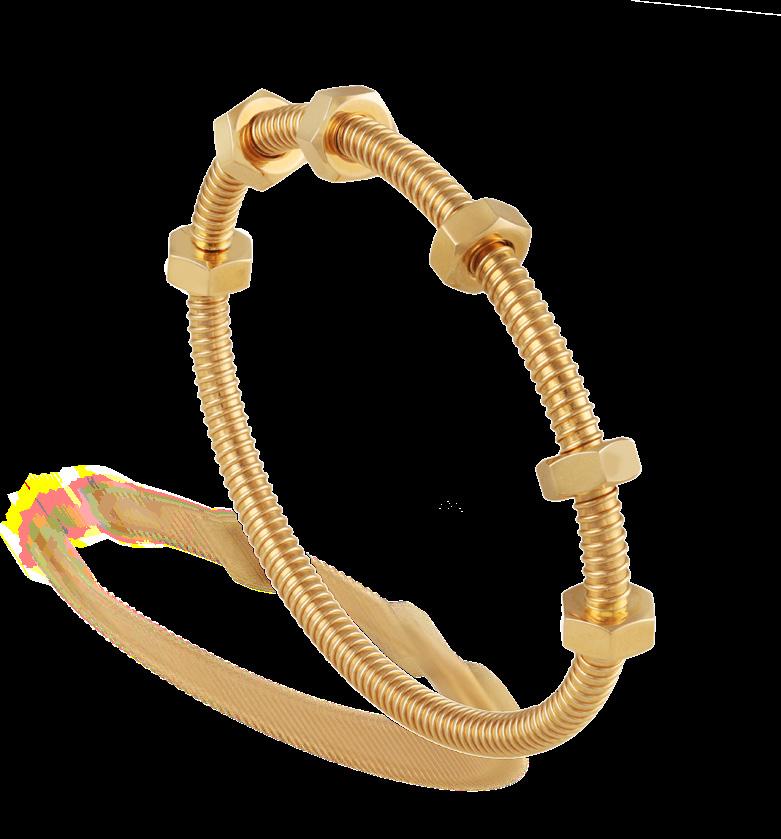
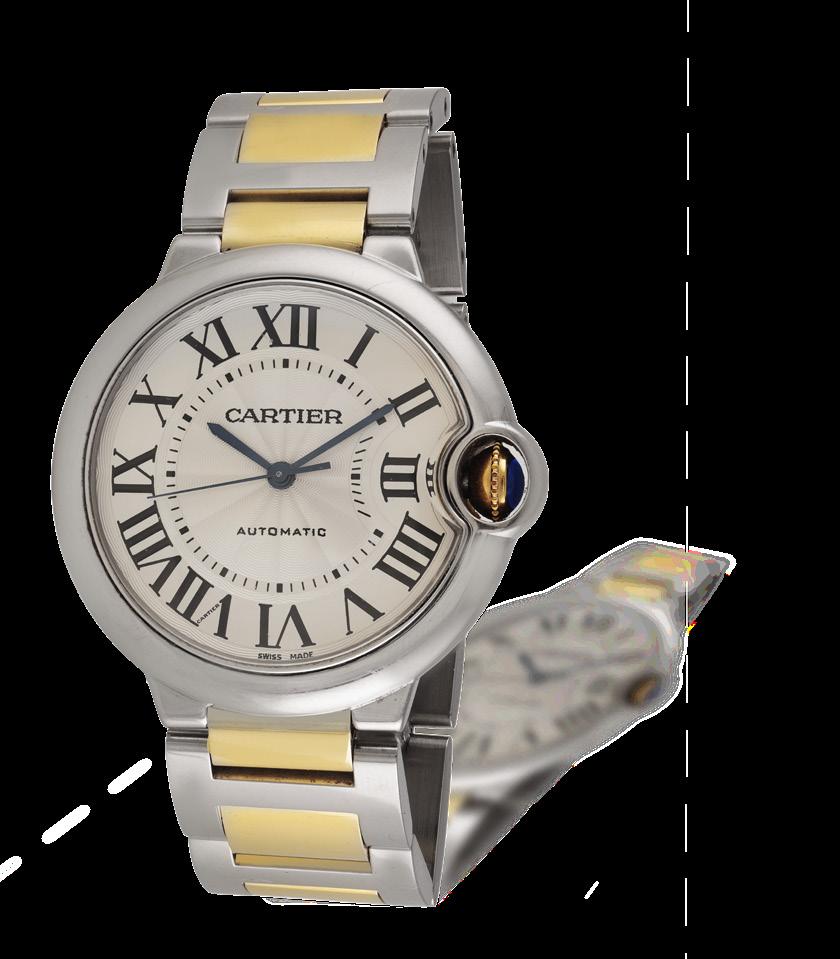
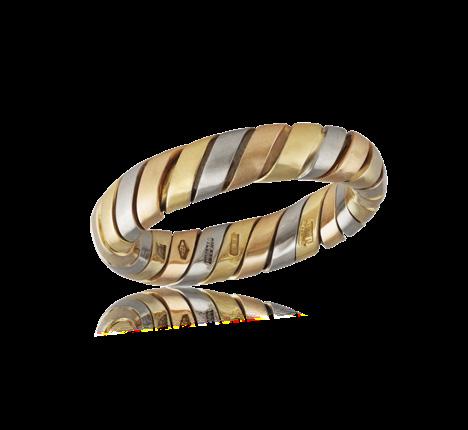

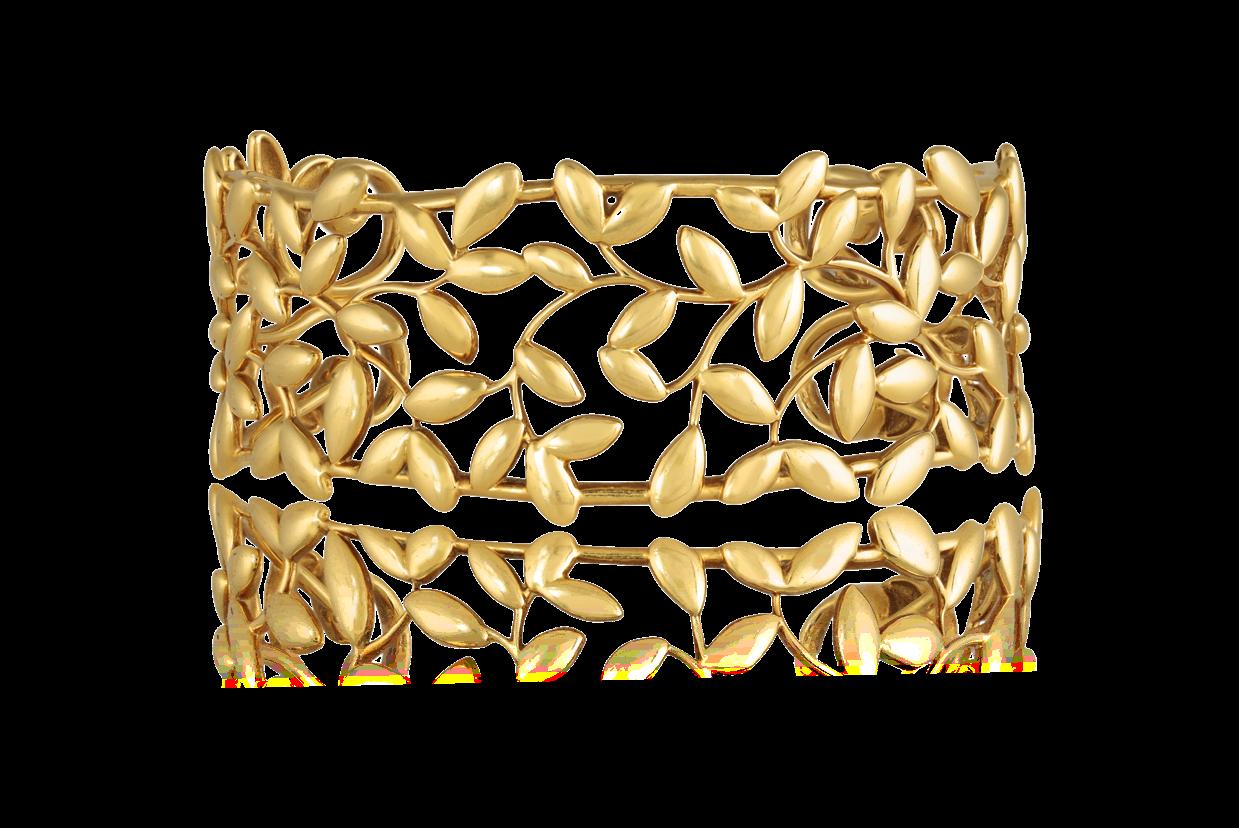

8
VAN CLEEF & ARPELS
A GOLD NECKLACE, CIRCA 1995
Designed as a series of polished gold interlocking links, in 18K gold, signed VCA, numbered B**…, with maker’s mark, French assay mark, length 41.3cm
€ 5,000 - 7,000
9
BULGARI
AN 18K GOLD BRACELET
Composed of gas pipe linking, with circular polished plaque terminals, in 18K gold, signed Bvlgari, Italian registry mark, inner diameter 4.9cm, expandable
€ 2,000 - 3,000
VAN CLEEF & ARPELS
A GOLD BRACELET, CIRCA 1995
Designed as a series of polished gold interlocking links, in 18K gold, signed VCA, numbered B**…, with maker’s mark, French assay mark, length 19.5cm
€ 3,000 - 5,000
10
VAN CLEEF & ARPELS
A CARNELIAN ‘VINTAGE ALHAMBRA’ NECKLACE
Composed of ten quatrefoil-shaped carnelian plaques, within beaded gold frames and claw setting, mounted in 18K gold, signed VCA, numbered BL****, with maker’s mark, length 42.5cm
€ 6,000 - 8,000
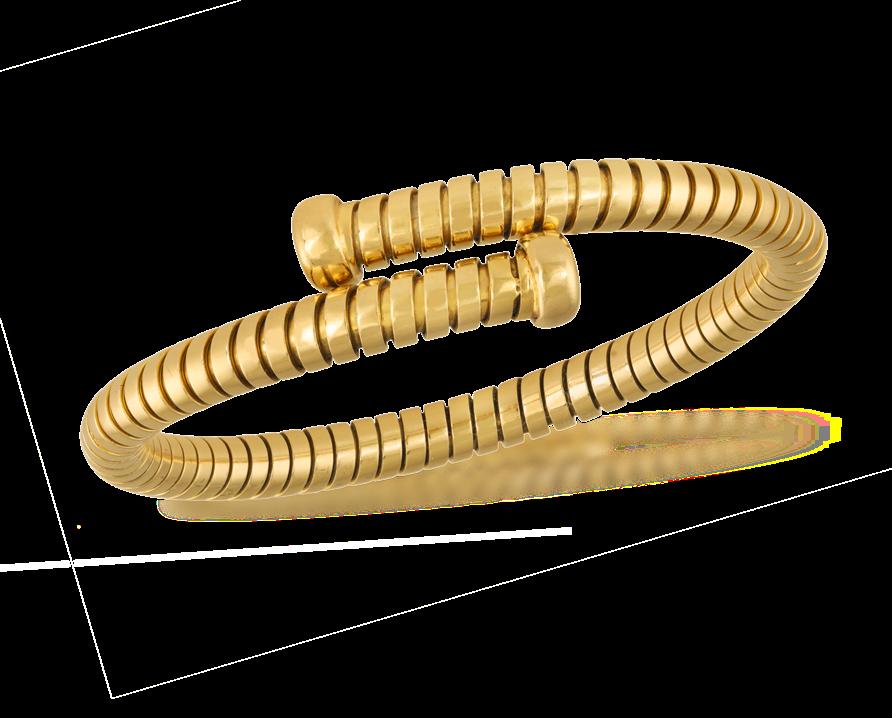

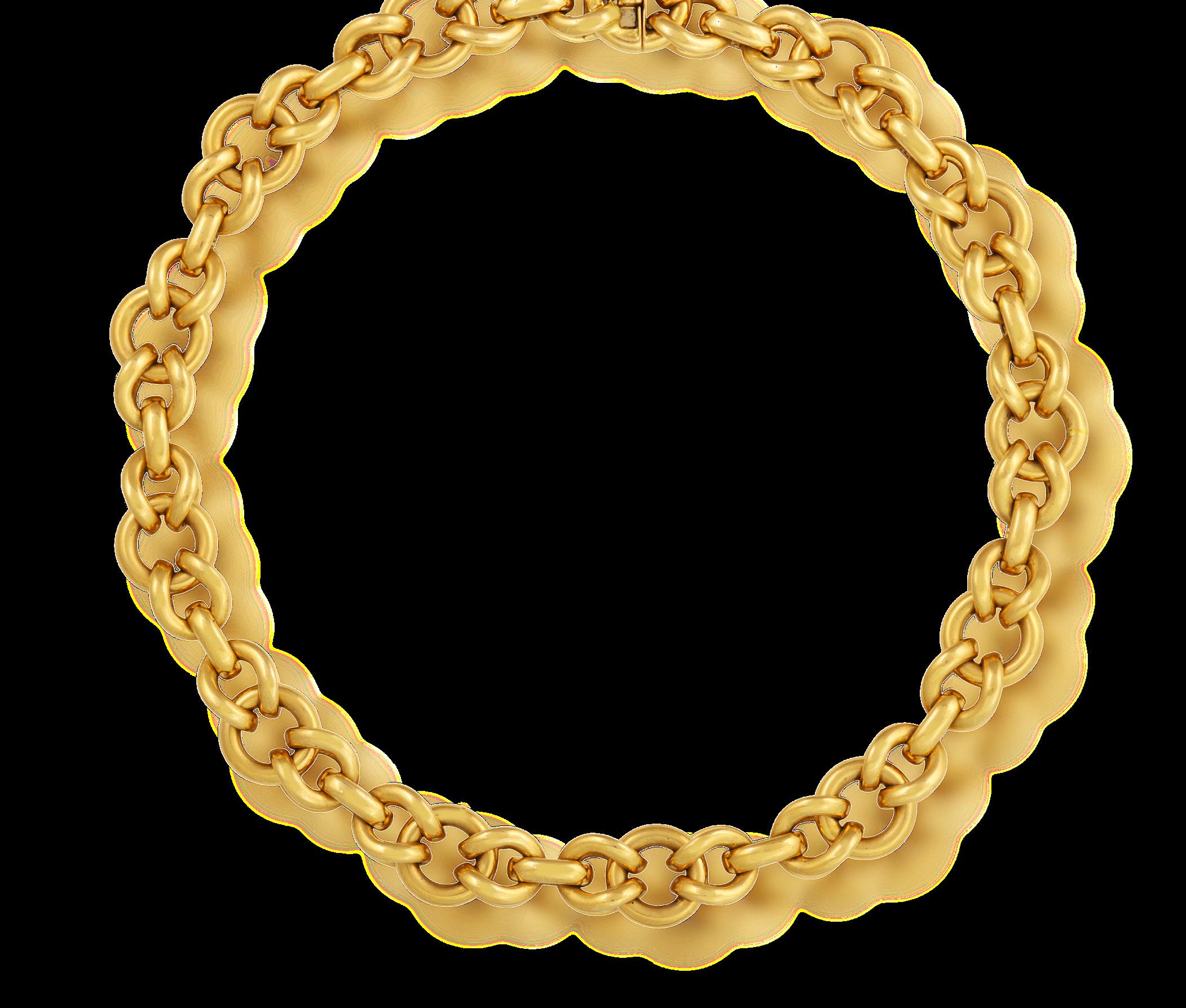
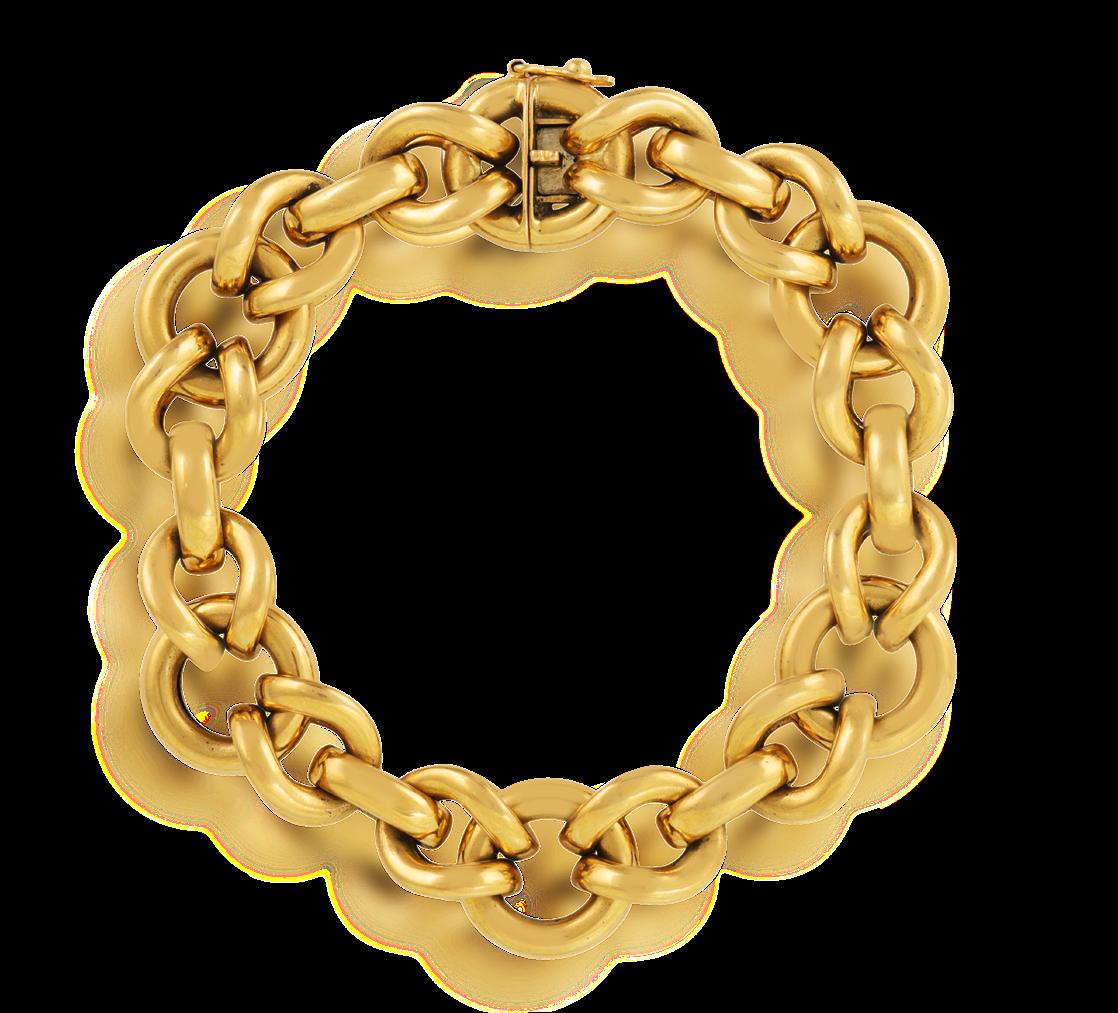
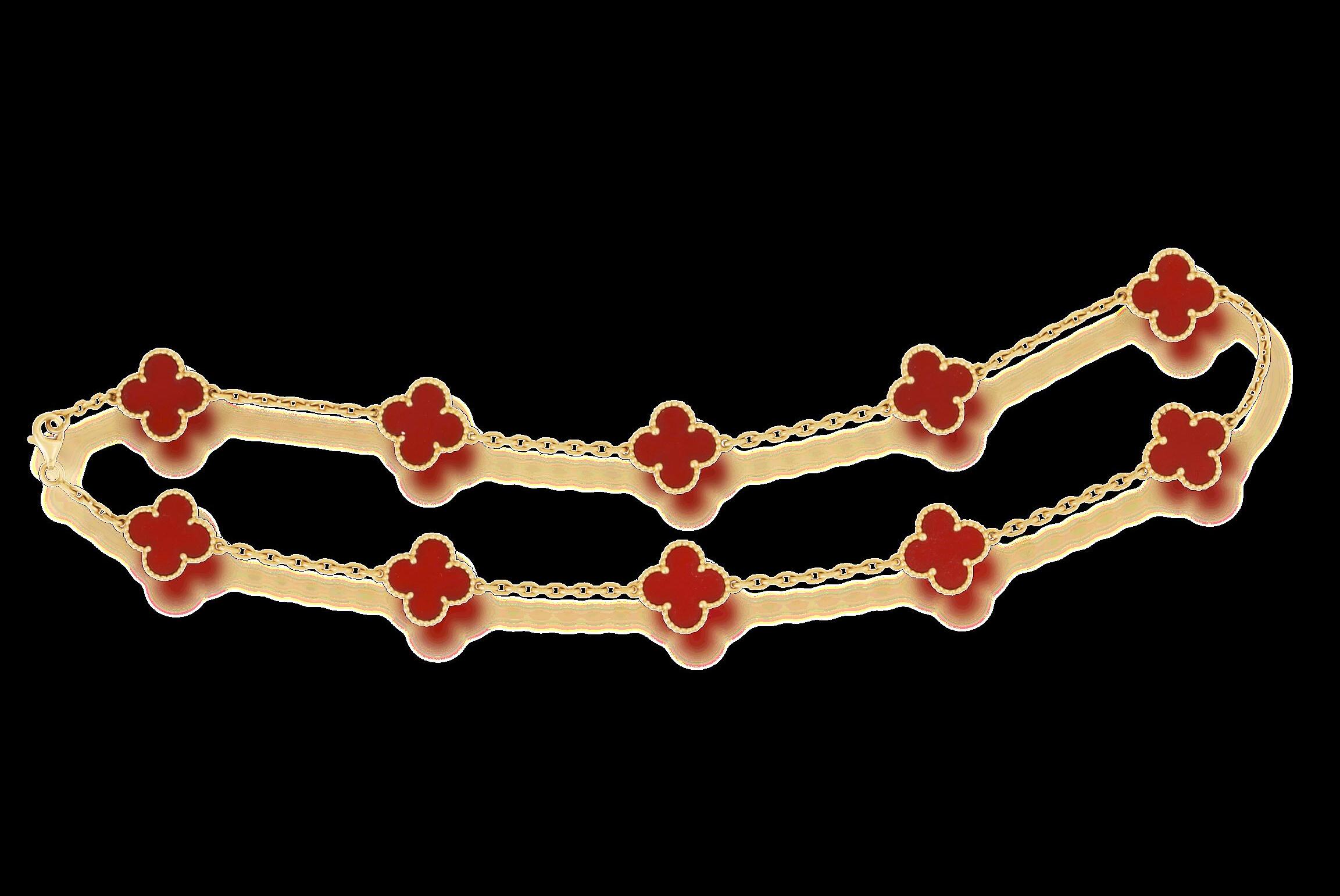
POMELLATO A DIAMOND BRACELET
The highly articulated bracelet, composed of alternate sized circular loops, three loops pavé-set with brilliant-cut diamonds, with rondel spacers, mounted in 18K gold, signed Pomellato, Italian registry mark, length 18.5cm
€ 5,500 - 6,500
Set with a cacholong agate, carved as a camellia flowerhead, to a mount of foliate detailing, mounted in 18K white gold, signed Chanel, numbered, with maker’s mark ‘Sté JCD’ for Jean-Claude Duhem, French assay mark, with maker’s case, ring size N
€ 1,800 - 2,200
Jean-Claude Duhem, is a workshop in Paris, known to execute works for Bulgari, Chanel, amongst others.
12
TIFFANY & CO. DESIGNED BY ELSA PERETTI A DIAMOND ‘BAND’ RING, CIRCA 2016
The polished band centring a brilliant-cut diamond, mounted in platinum, signed Tiffany & Co. & Peretti, English import mark for London 2016, with maker’s case and outer box, ring size M
14
CARTIER A STAINLESS STEEL ‘TANK MUST’ WRISTWATCH
The 4-jewel Cal-157 quartz movement, silver dial with black Roman numerals, inner 5 minute divisions, blued sword hands, secret signature at 6, polished stainless steel bezel and brushed case with four screws on back, blue cabochon for crown, fitted brown leather strap signed Cartier, stainless steel signed buckle, dial, case and movement signed, case no. 715944BX, ref. no. 4323, with maker’s travelling cushion and pouch, case 24mm
€ 1,500 - 2,000
The camellia flower is synonymous with designs by famous French fashion designer Coco Chanel. The blossom motif has appeared almost everywhere in Chanel’s lines and can be traced back to Chanel’s personal adoration of the flower. Chanel saw the performance of La Dame Aux Camélias by Alexandre Dumas and instantly fell in love. In the performance the flower takes centre stage and is also shown on the original cover of the show’s advertisement. Chanel started to use the design in her silk garments and became more fascinated with the flower. It later developed into her chandelier at home in her apartment in Paris so she could witness its beauty everyday. It is now one of the most recognisable motifs in the house of Chanel. It has been reimagined in almost every single collection that the historic fashion house has displayed since the 1920’s. 13
€ 500 - 700 15
PIAGET A DIAMOND ‘DECOR PALACE, POSSESSION’ RING
The central textured gold turning band highlighted with a brilliant-cut diamond, to a reeded polished hoop, mounted in 18K gold, signed Piaget, numbered, with maker’s mark, Swiss assay mark, with maker’s case and outer box, accompanied with a certificate of authenticity from Piaget, dated March 11th 2023, ring size M (53)
€ 700 - 900
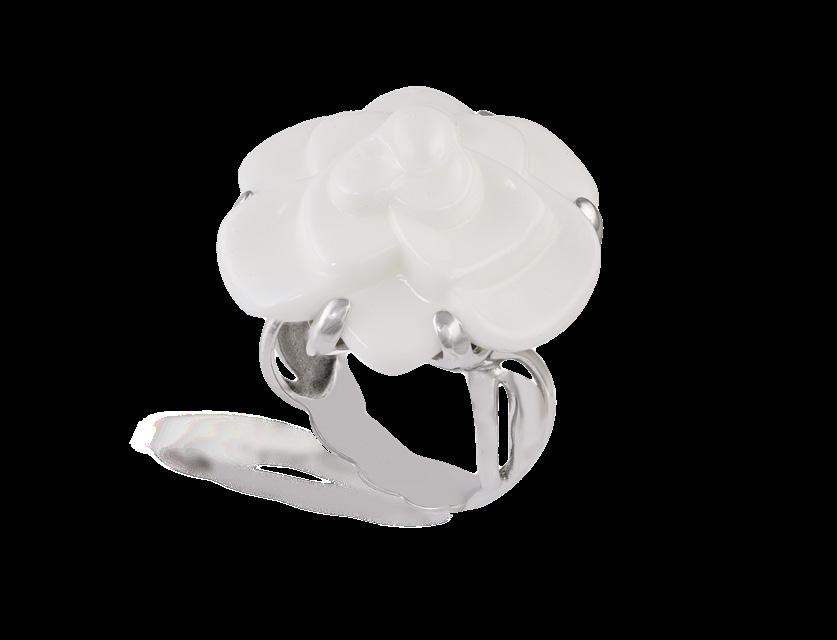
The pendant hoop pavé-set with brilliant-cut diamonds, accented with screw motifs, suspending from a fine trace-link chain, mounted in 18K white gold, signed Cartier, reverse inscribed ‘LOVE’, numbered, Italian registry mark on pendant, Swiss assay mark on chain and European convention mark 750, with certificate of authenticity from Cartier in Nice, dated August 31st 2015, with maker’s case and outer box, pendant length 2.3cm, chain length 41.8cm
€ 4,000 - 5,000
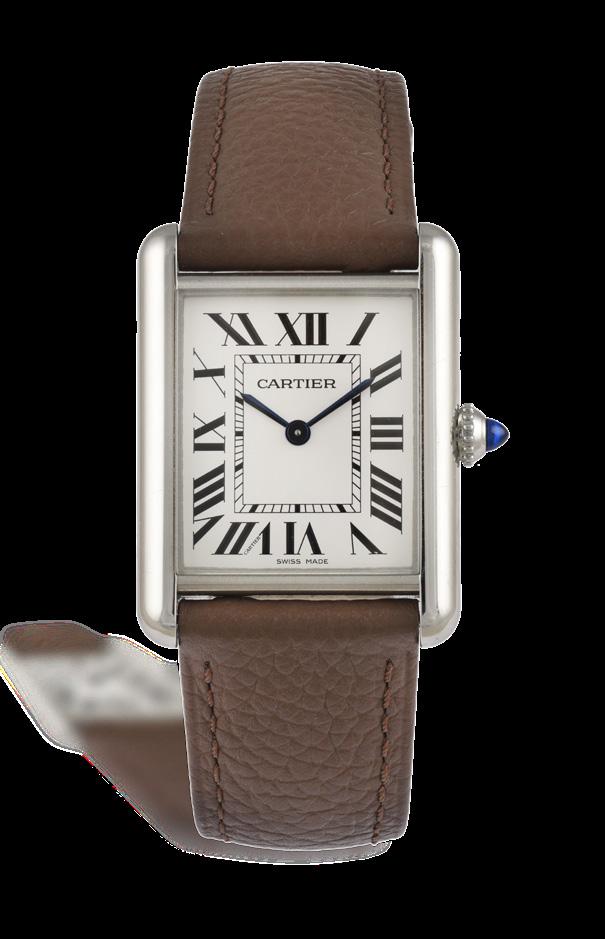
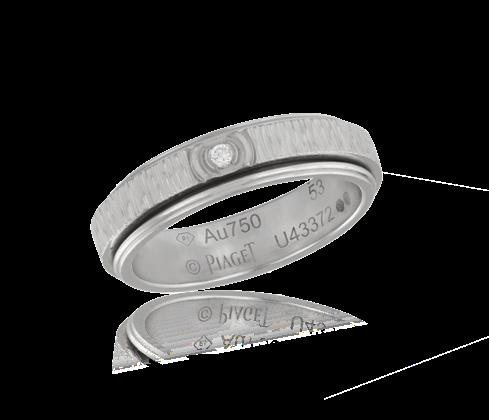
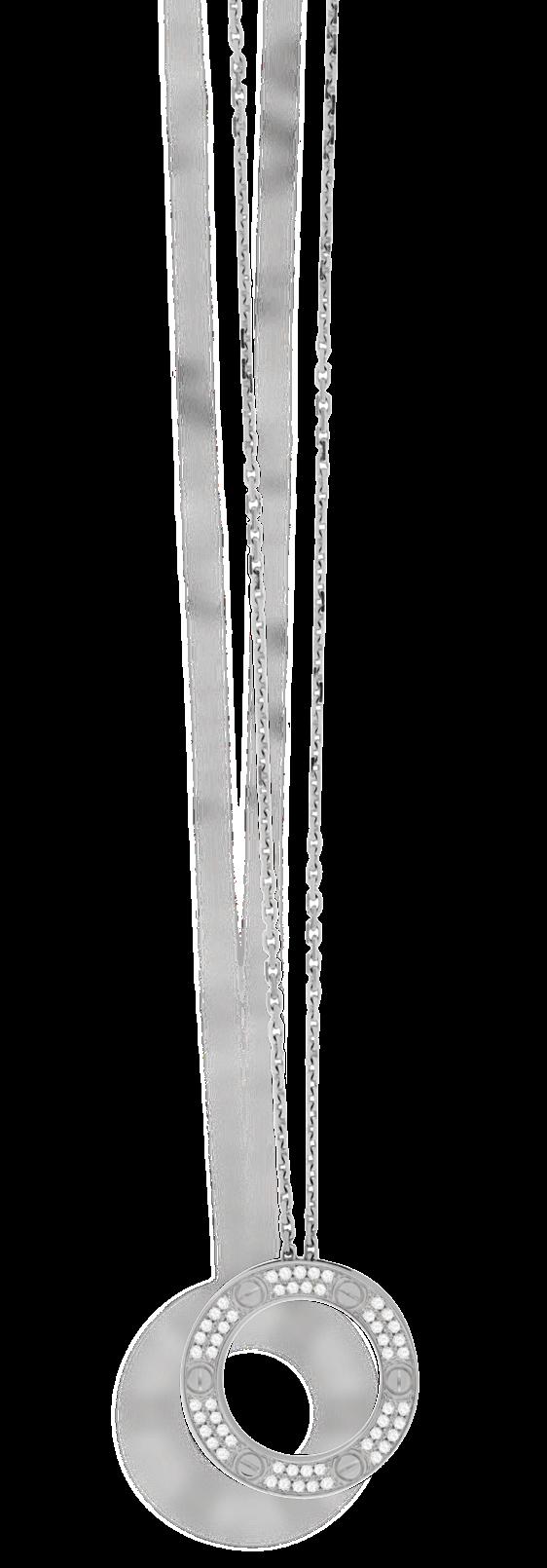
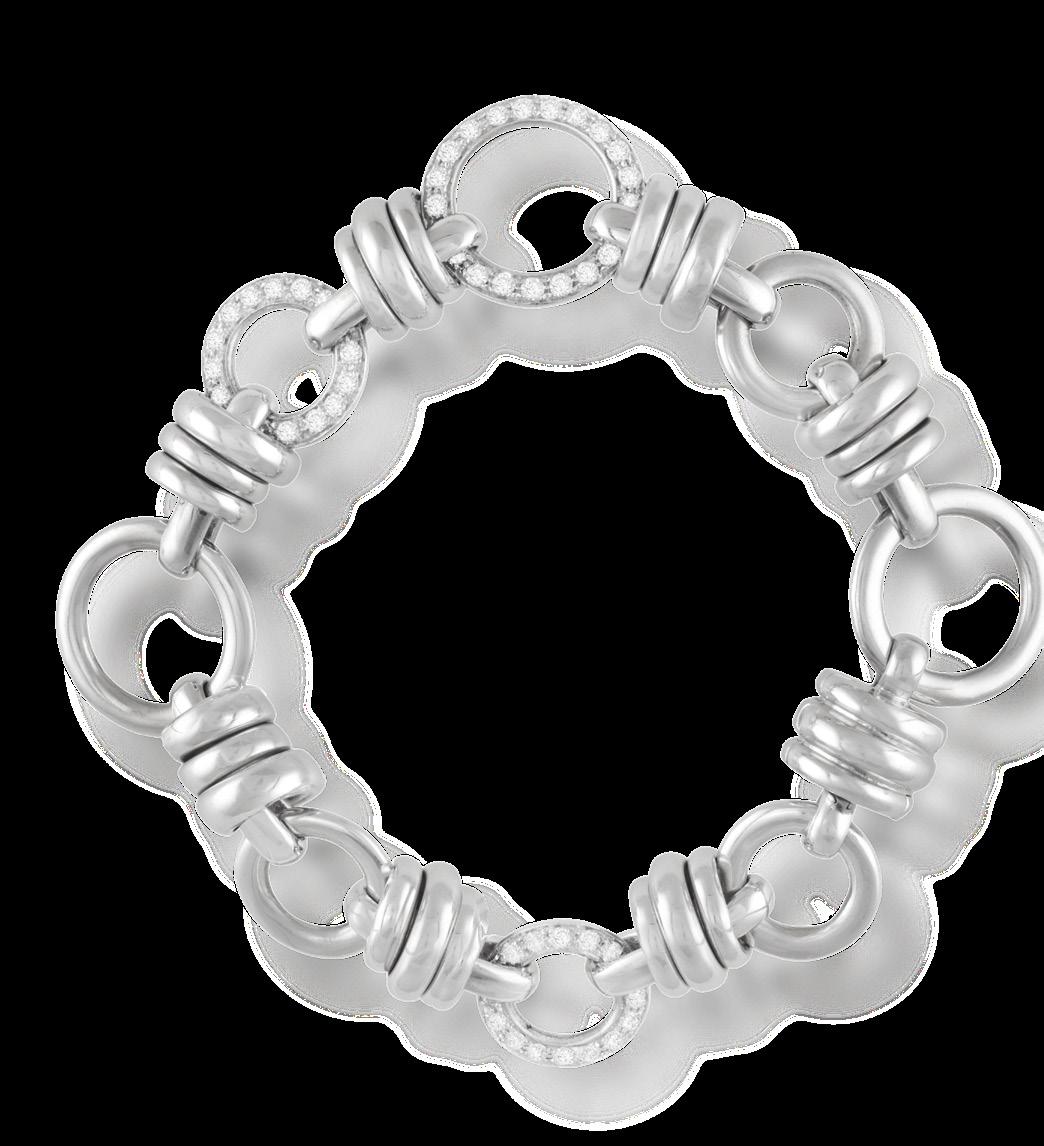
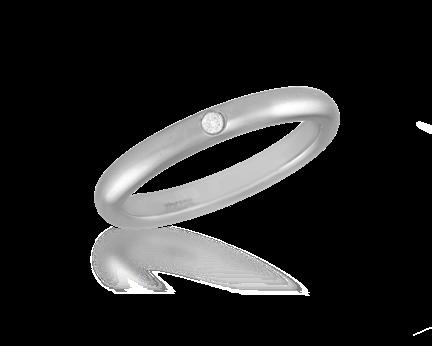

Set with two old brilliant-cut diamonds, each weighing approximately 4.10cts, in platinum, ring size N½
€ 25,000 - 35,000
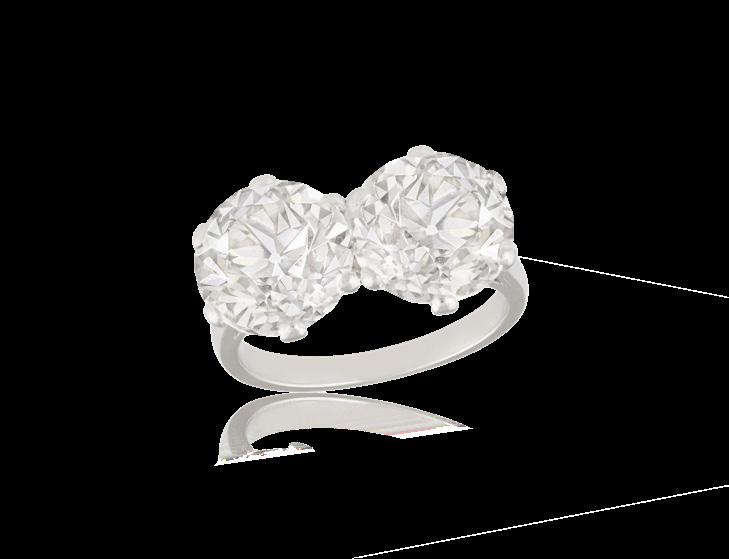
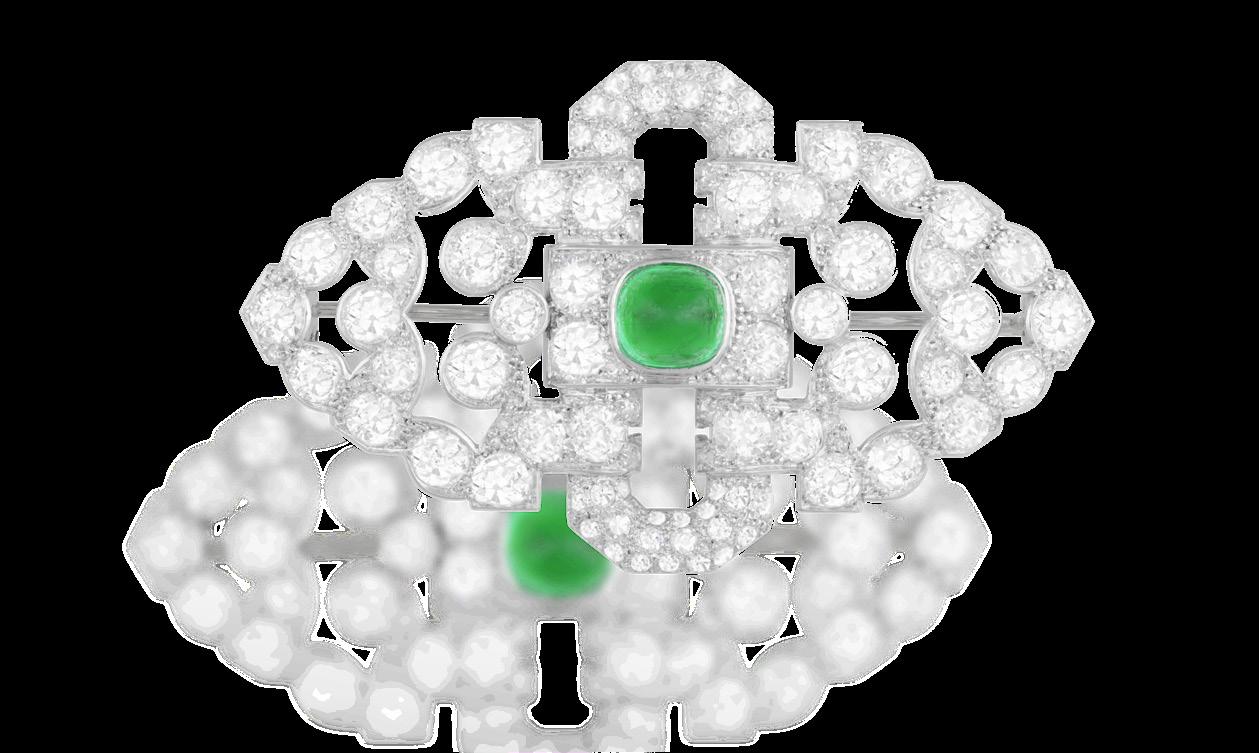
The lozenge openwork plaque, centring a sugarloaf-shaped emerald weighing approximately 2.70cts, within old brilliant and single-cut diamond surround, mounted in platinum, diamonds approximately 10.00cts total, width 5.8cm
€ 5,000 - 6,000
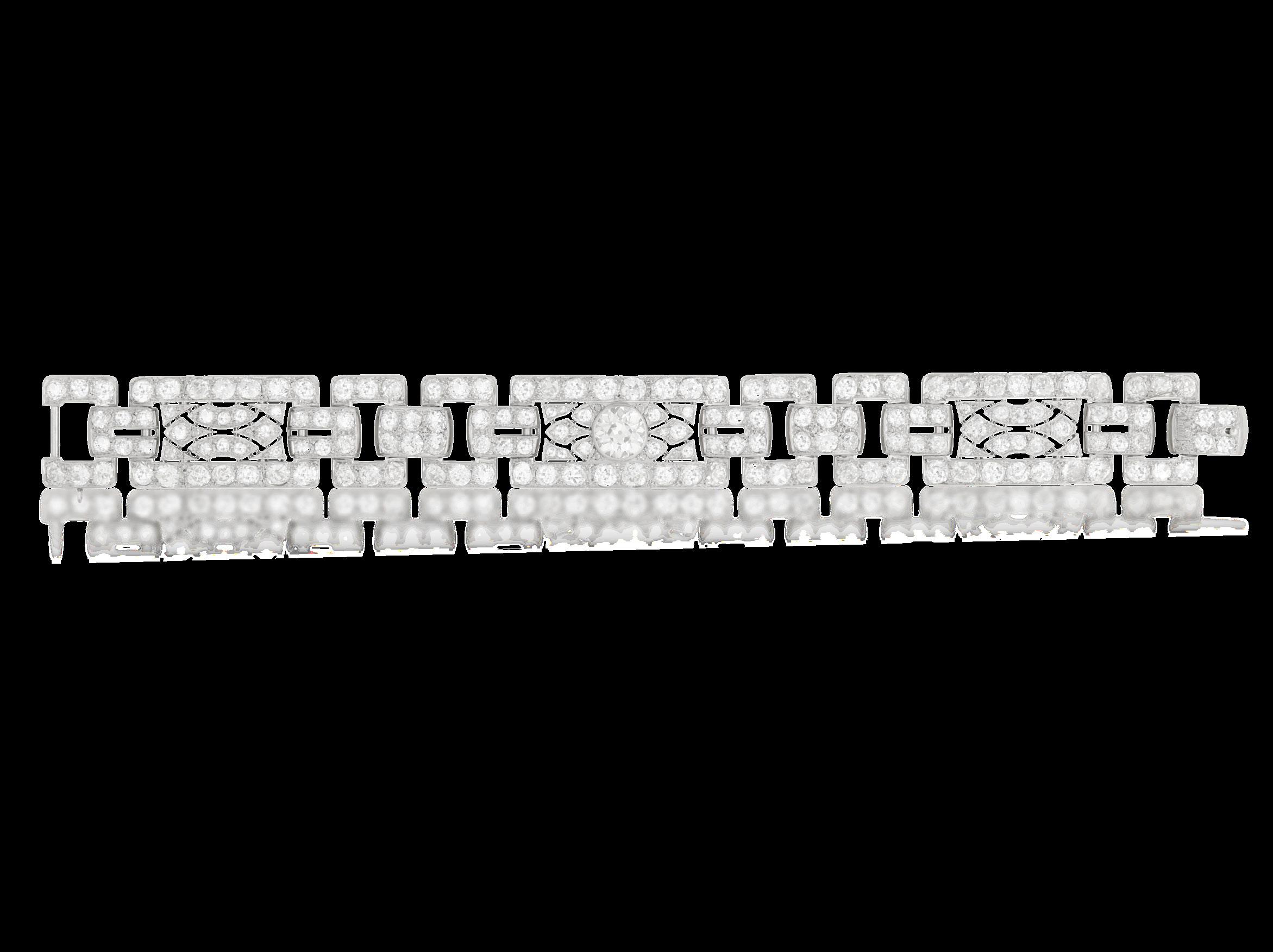
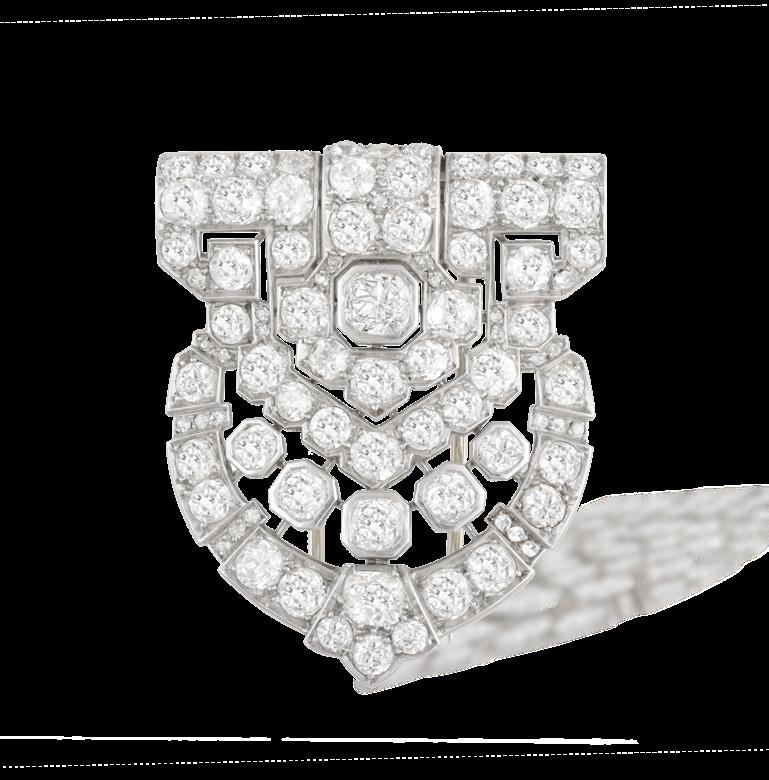
The shield-shaped openwork plaque, centrally set with old-cut diamonds throughout, mounted in platinum and 18K gold, diamonds approximately 6.00cts total, partial maker’s

Composed of a continuous line of graduated old brilliant-cut diamonds, within collet and millegrain setting,
€ 18,000 - 22,000


Of openwork design, the series of square-shaped links pavé-set with single-cut diamonds, each centrally set with a cut-cornered step-cut emerald, connected by rectangular-shaped links set with baguette-cut diamonds accented with further single-cut diamonds to each corner, each centrally set with an old asscher-cut diamond, mounted in platinum and 18K gold, emeralds approximately 10.00cts total, asscher-cut diamonds approximately 7.00cts total, remaining diamonds approximately 10.00cts total, with security chain, length 18cm
€ 40,000 - 50,000

Of tank design, centring a cushion-shaped sapphire weighing 6.22cts, between old brilliant and tapered baguette-cut diamond shoulders, and between baguette-cut diamond borders, mounted in 18K gold, diamonds approximately 2.00cts total, ring size P
€ 150,000 - 250,000
Accompanied by a report from GCS laboratory in London, stating that the sapphire is of Kashmir origin, with no indications of heating. Report number 5785-2140, dated April 17th 2025
Currently being tested at the SSEF laboratory in Switerzland.
A brief look into the history of these sapphires can help illustrate their value. It all began with a natural occurrence in 1880 in the Kashmir region on the Indian subcontinent. A landslide atop the Himalayas revealed unusual type of rocks under the top layers of soil. These rocks were almost completely bare except for the occasional protruding blue stones. It took many years for the local people of the region to realise that the stones were in fact sapphires.
Once news of the discovery reached the Maharajah, he immediately sent a regiment of guards to protect the mine, along with miners to dig out more of the sapphires. The years between 1882 and 1887, marked an extremely productive period for the mine. The mine revealed some very impressive gems which were as large as 5×3 inches.
Summers in the region were extremely hot, and the miners had to work in these conditions with little to no rest. By the end of 1887, the resources of the mine had been exhausted. Hungry for more, the Maharajah sought the assistance of the British, who by then had ruled in India for more than a decade. With the assistance of British geologists, a new mine was found in the valley below. However, this was also quickly depleted, and to this day, no other deposits have been found in the region.
Kashmir sapphires command a high price because they contain a top-quality specimen. You may come across other blue sapphires, Burmese or Ceylonese, but only those from Kashmir pocess a distinctive tint. Experts call it blue velvet.
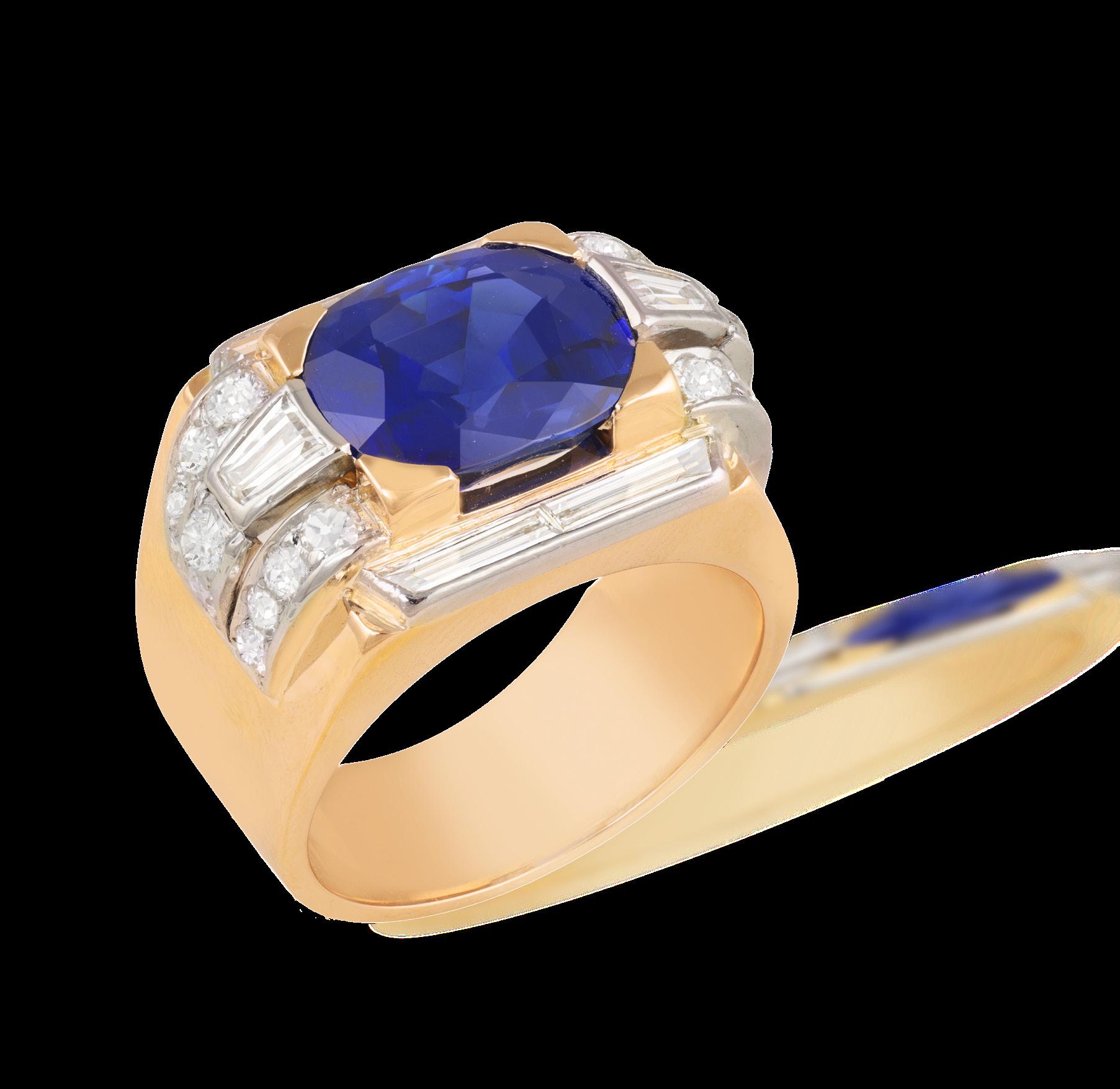
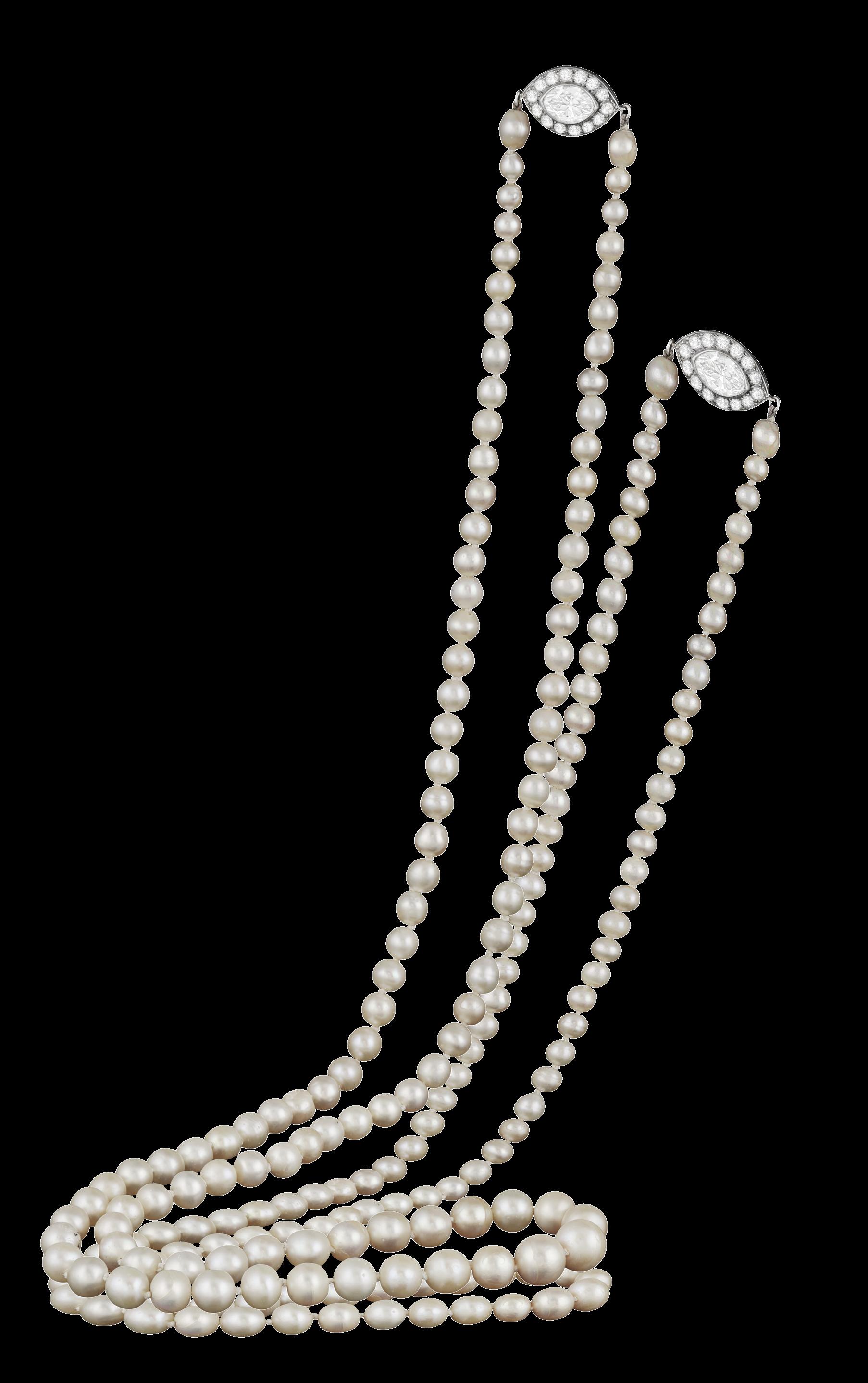
Composed of a single strand of 107 graduated pearls of whitecream tint, measuring from 4.6 to 9.1mm, the clasp set with an old marquise-shaped diamond, within an old-cut diamond surround, with security chain, principal diamond approximately 1.30cts,

Accompanied by a report from the LFG laboratory in Paris, stating that 84 pearls are natural, saltwater and 23 pearls found to be cultured, saltwater, without indications of treatment. Report number 417105,
END OF PRIVATE COLLECTION

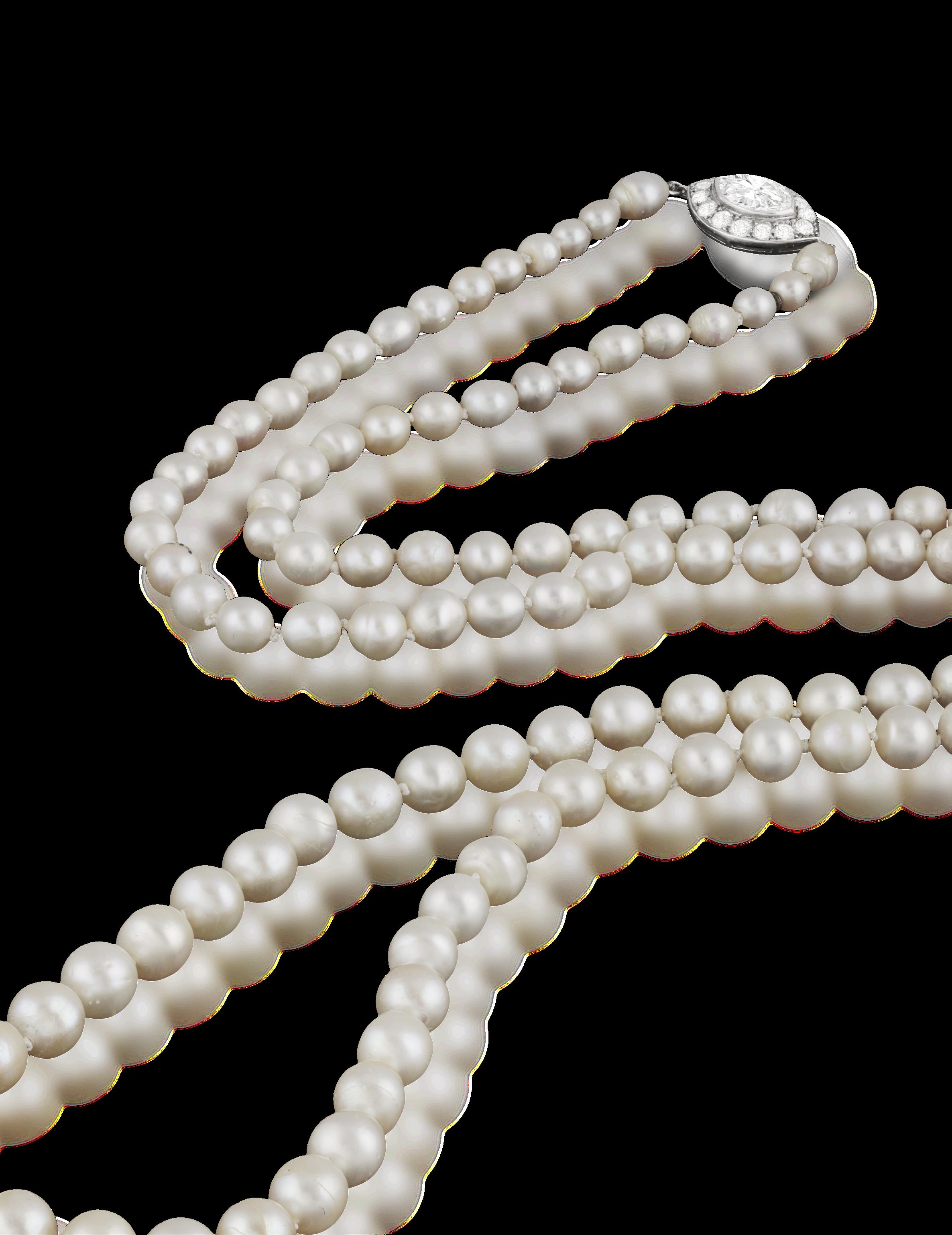


A PAIR OF PEARL AND DIAMOND EARCLIPS
PREVIOUSLY TWO LATE 19TH CENTURY BROOCHES, CIRCA 1890, LATER CONVERTED INTO EARCLIPS
Each five-rayed star set with old brilliant and rose-cut diamonds, centring a button-shaped pearl measuring approximately 7.7mm, mounted in silver and gold, diamonds approximately 2.50cts total, length 2.7cm
€ 4,000 - 5,000
Both pearls were verbally tested at GCS laboratory in London, in March 2025 and were confirmed to be natural, saltwater.
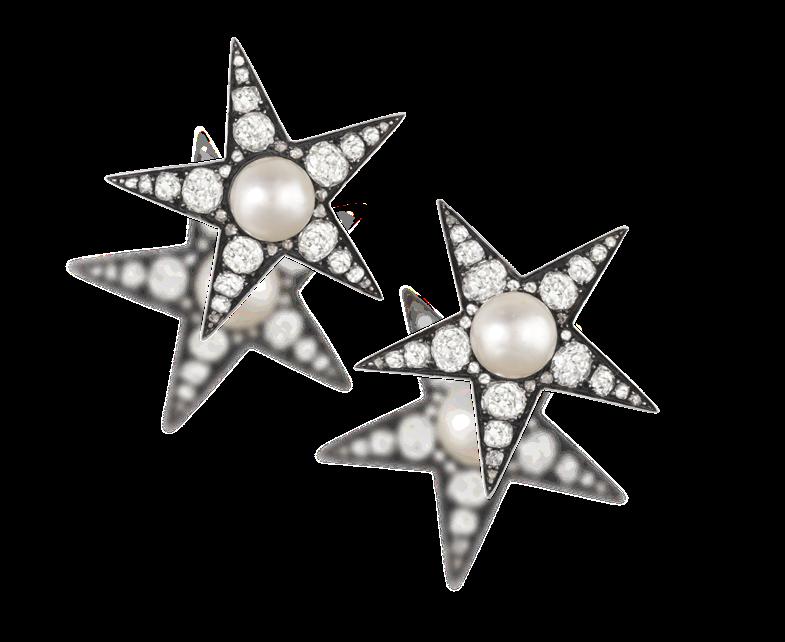
26
A VICTORIAN PEARL, ENAMEL AND DIAMOND DEVANT-DE-CORSAGE BROOCH, CIRCA 1850
The openwork quatrefoil frame, applied with blue enamel, centring a pearl of cream tint within an old-cut diamond surround, to scrolled foliate motifs set with old-mine and old-cut diamonds, suspending a drop-shaped pen dant of similar design, set with an old pear-shaped diamond within cut-down collet mount and a pearl, with rose-cut diamond and fancy-shaped enamel link chain connectors, mounted in silver and gold, diamonds approximately 6.50cts total, length 8.7cm
€ 3,000 - 5,000
The three pearls were verbally tested at GCS laboratory in London, in
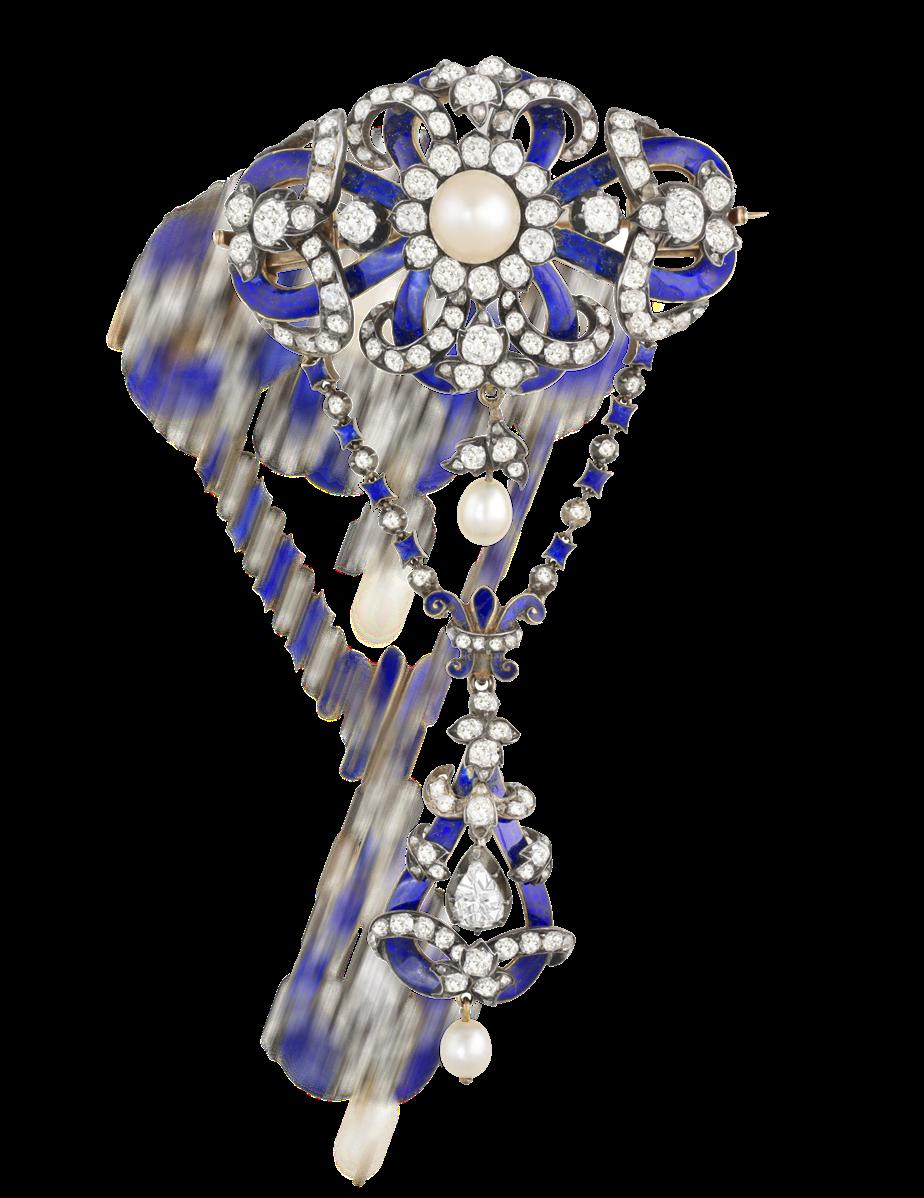
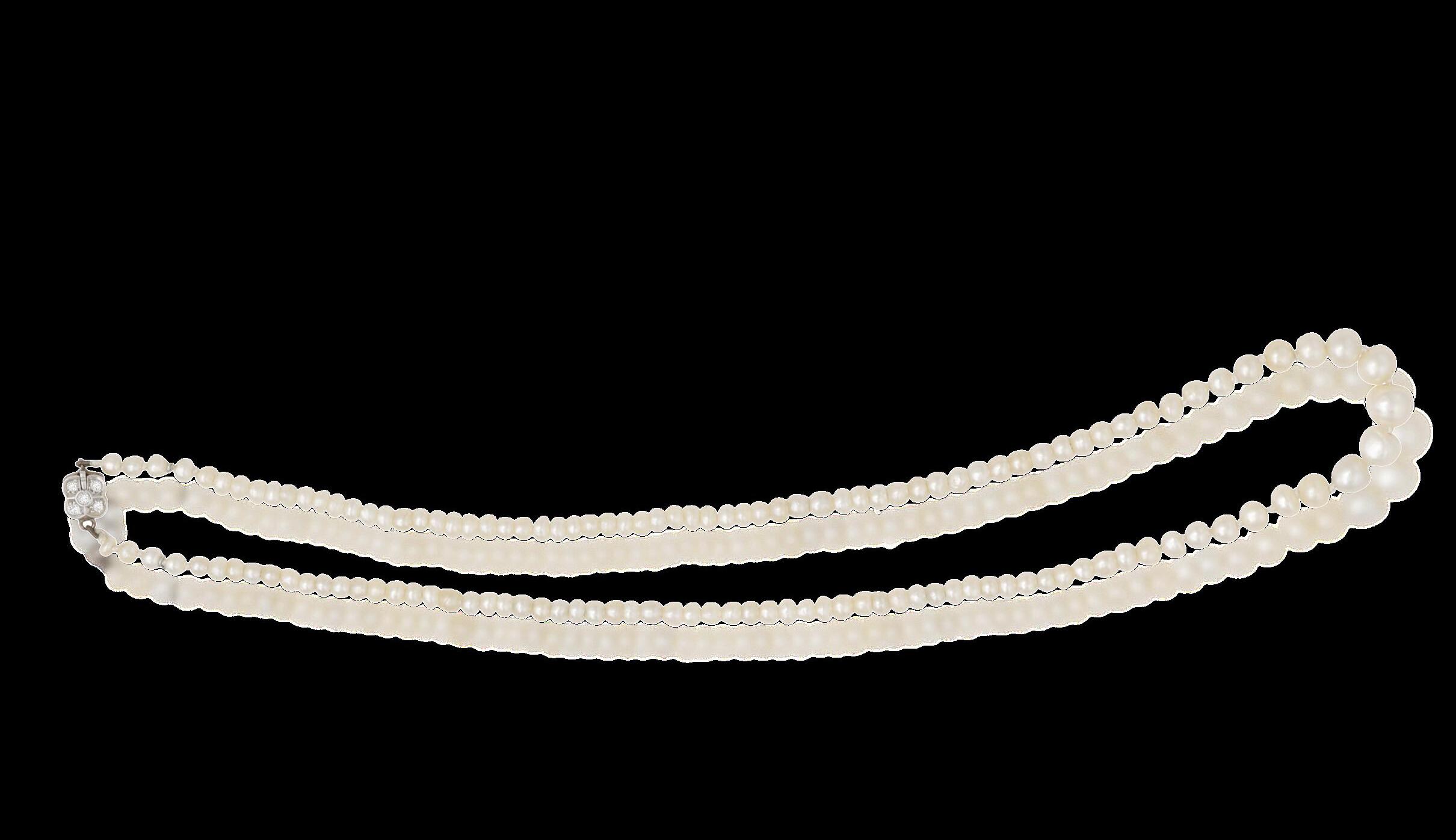
A LATE 18TH CENTURY/EARLY 19TH CENTURY
GEORGIAN EMERALD AND DIAMOND RING
Of double heart design, set at the centre with an oval rosecut diamond and emerald, highlighted with rose-cut diamonds, between foliate engraved shoulders and closedback settings, mounted in silver and gold, ring size I½
€ 1,200 - 1,800 29
A LATE 19TH CENTURY OPAL AND DIAMOND BROOCH
Of crescent design, set with graduated oval-shaped opal cabochons, between old brilliant-cut diamonds, mounted in gold, with security chain, case of crescent form by ‘Pearce and Sons, Goldsmiths Leeds, Huddersfield & Leicester’, length 5.9cm
€ 1,200 - 1,800
A LATE 18TH CENTURY/EARLY 19TH CENTURY
GEORGIAN GARNET AND DIAMOND RING
Centrally set with an oval-shaped garnet cabochon, within an old cushion-shaped diamond surround, to a foliate engraved mount and closed-back setting, mounted in silver and gold, diamonds approximately 1.10cts total, ring size O
€ 1,200 - 1,800
31
A 19TH CENTURY EMERALD AND DIAMOND DRESS RING, SECOND HALF OF THE CENTURY
The collet-set cushion-shaped emerald weighing approximately 2.00cts, within a closed-back rose-cut diamond surround, mounted in silver and gold, French import mark ‘ET’ between 1864-1893, ring size J
€ 2,000 - 3,000
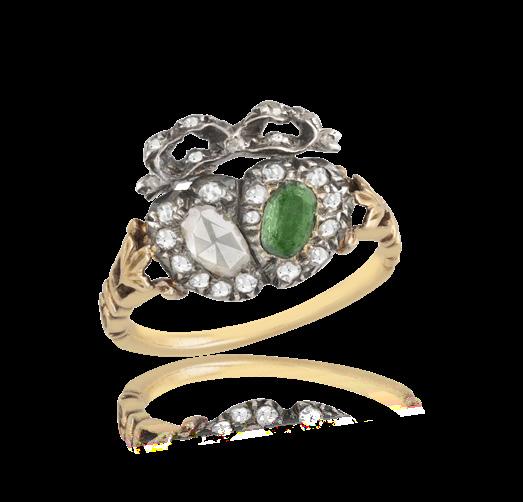
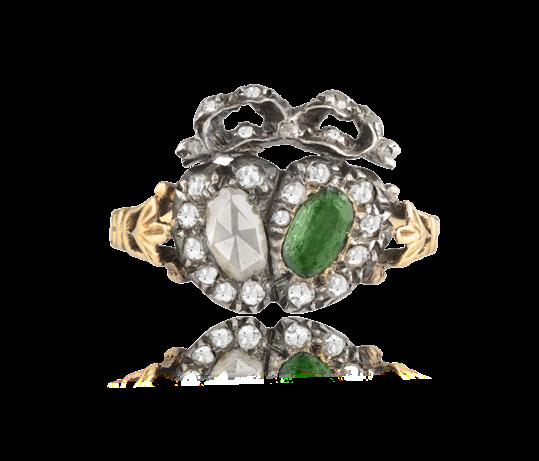
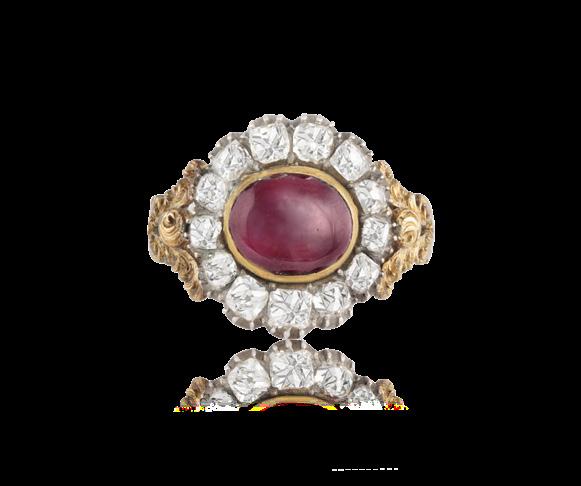
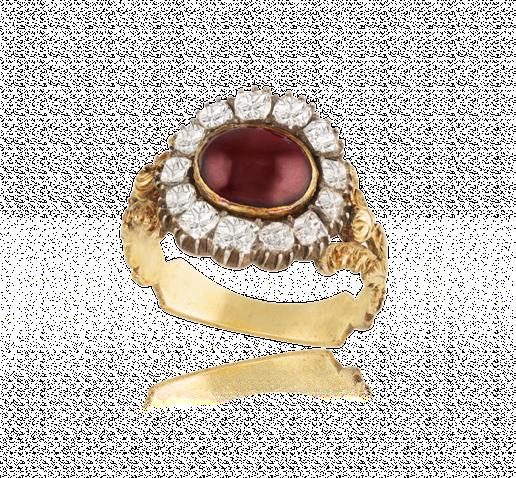
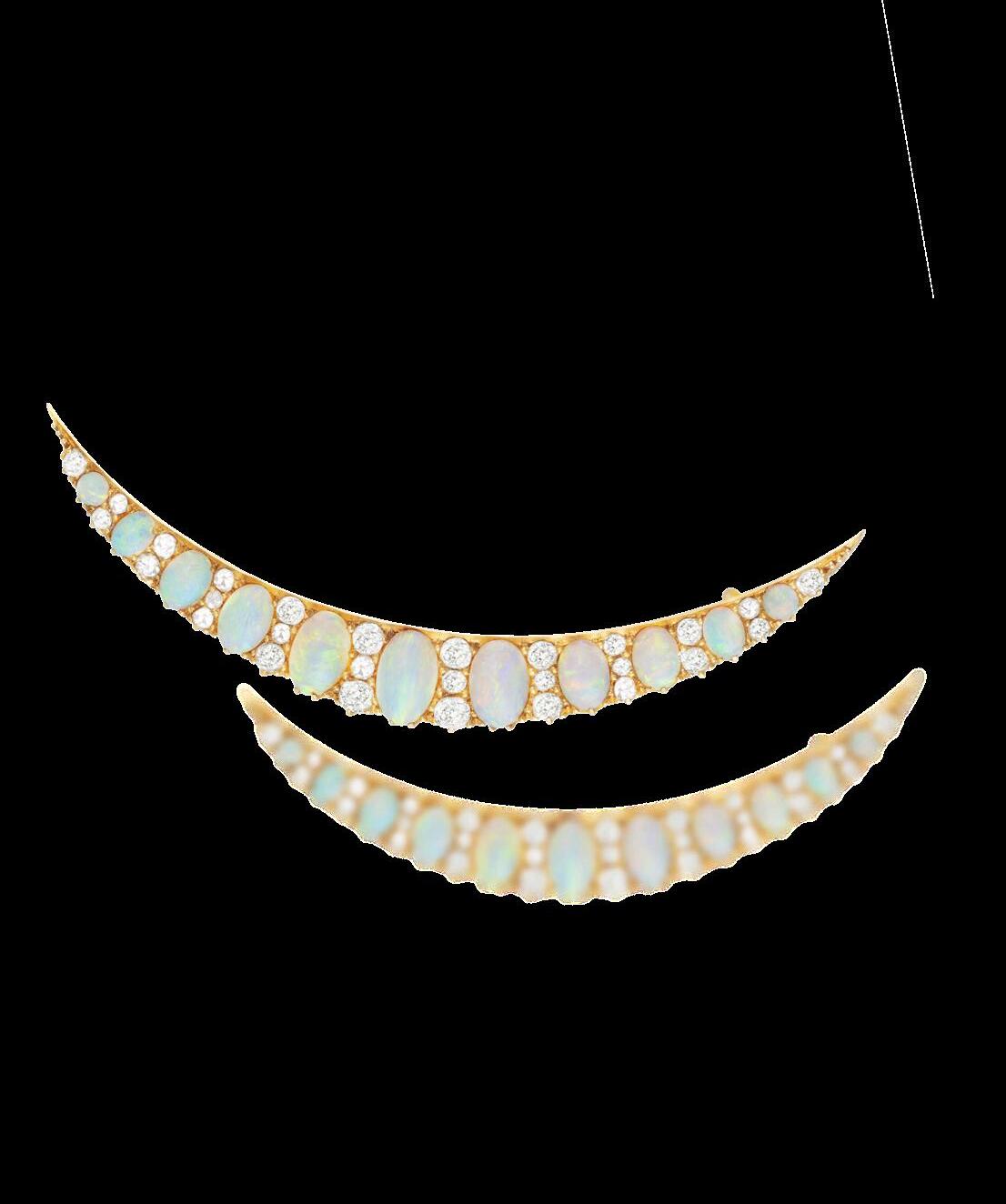
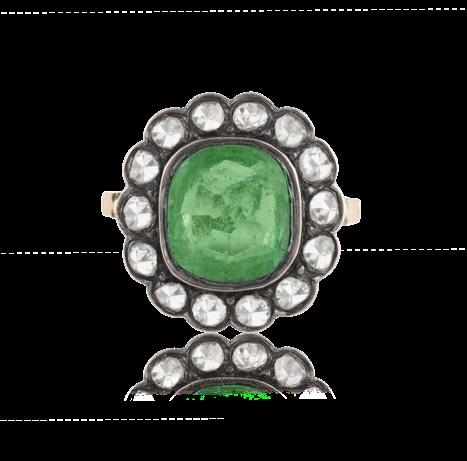
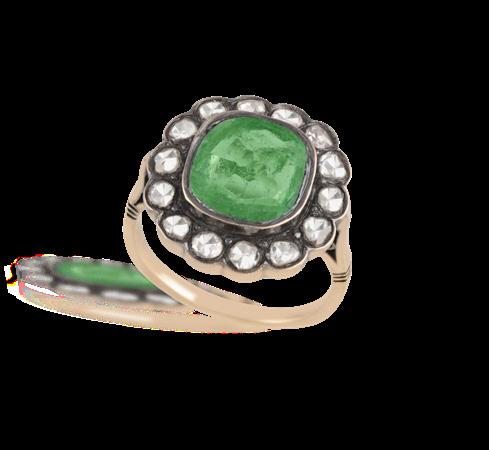
Of swag design, set throughout with old cushion, brilliant and single-cut diamonds, within claw and pinched collet-setting, foliate detailing, diamonds approximately 13.00cts total, with case, length 39cm
€ 6,000 - 7,000
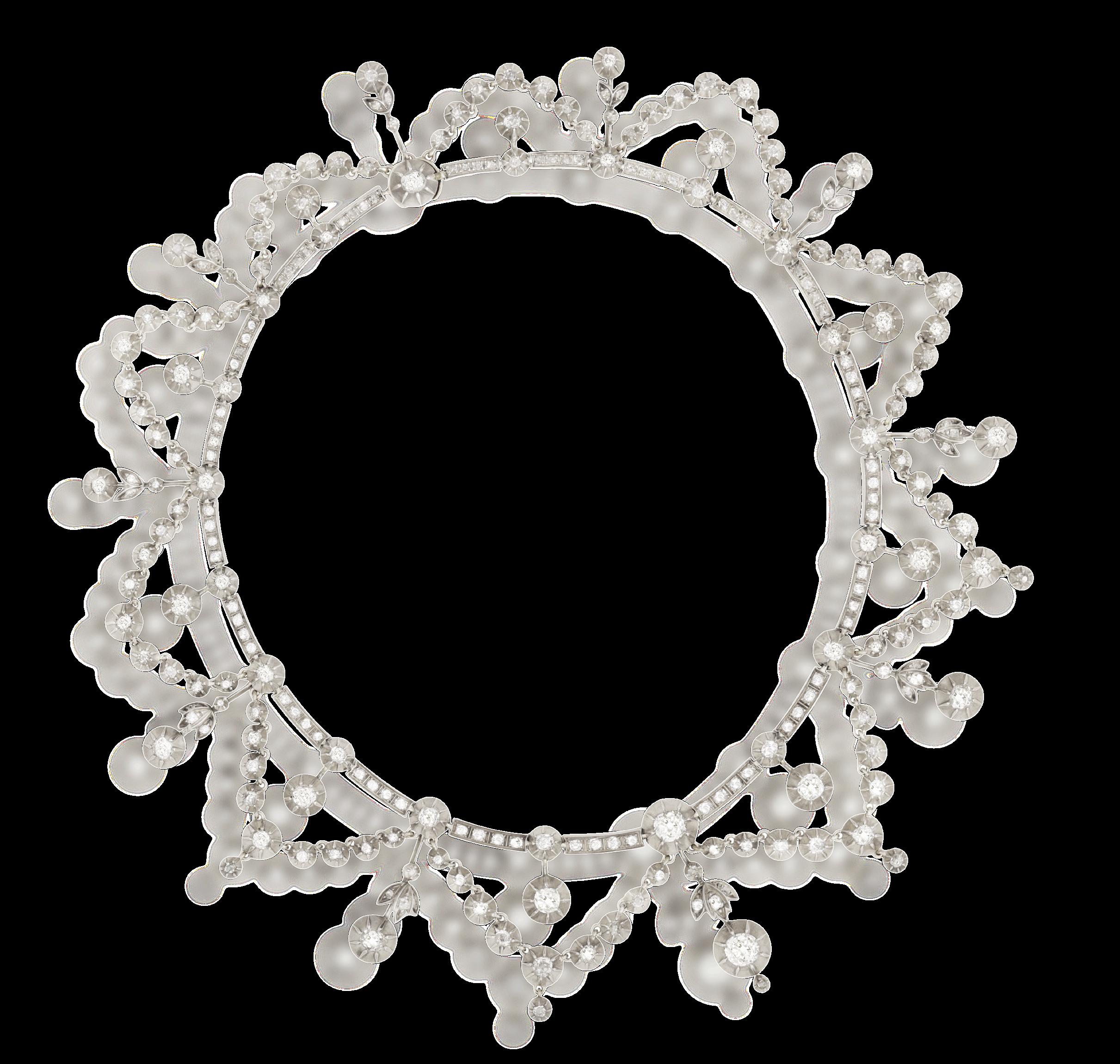
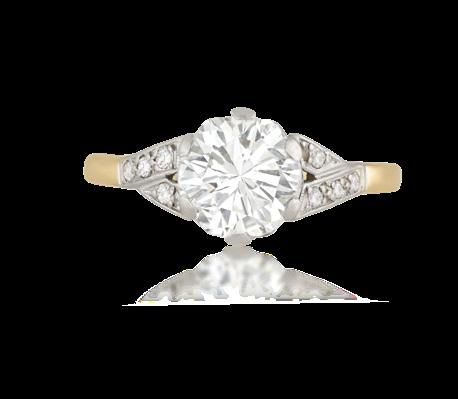
33
The brilliant-cut diamond weighing approximately 1.60cts, between single-cut diamond shoulders, mounted in yellow gold and platinum, ring size N¾
€ 2,500 - 3,500
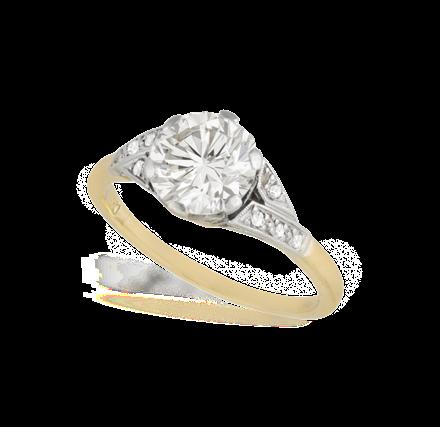
34
The cushion-shaped emerald within multiple-claw setting, to an old cush ion-shaped diamond surround, mounted in silver and gold, diamonds ap proximately 1.60cts total, with gold security chain, width 2.5cm
€ 12,000 - 18,000
Accompanied by a report from GCS laboratory in London, stating that the emerald weighing approximately 7.60cts, is of Colombian origin, with minor clarity enhancement. Report number 5785-1037, dated January 31st 2025.
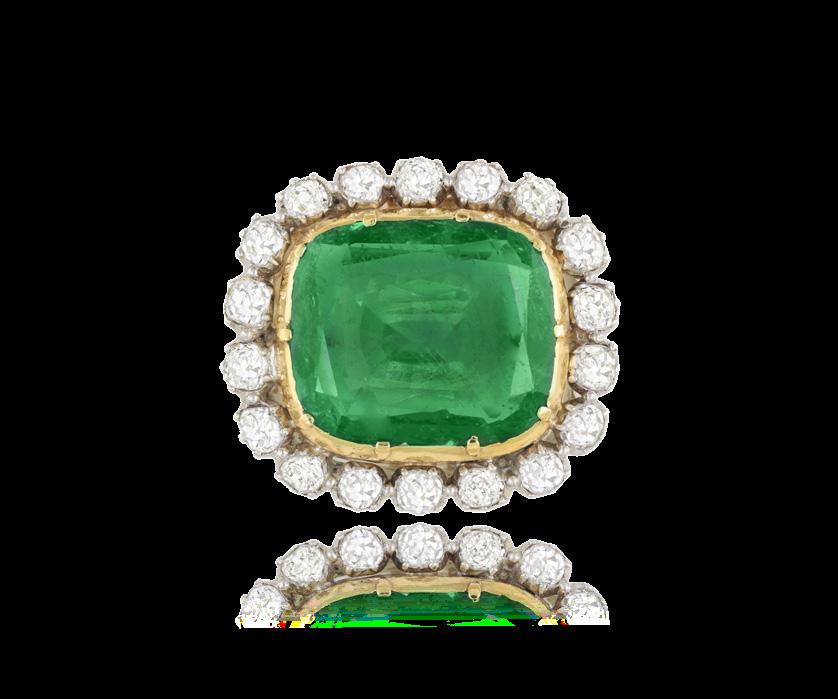
Of crescent design, set with old brilliant and rose-cut diamonds, mounted in silver and gold, diamonds approximately 0.80ct total, length 2.2cm
€ 500 - 700
36 A LATE 19TH CENTURY ‘SAINT ESPRIT’ DIAMOND PENDANT/ BROOCH, CIRCA 1880
Modelled as dove in flight, set with five principal old-mine diamonds, to smaller similarly-cut diamonds throughout, with circular-cut garnet cabochon eyes, finishing with an old-cut pear-shaped diamond suspended from its beak, mounted in silver and gold, diamonds approximately 4.50-5.00cts total, length 3.9cm
€ 5,000 - 6,000
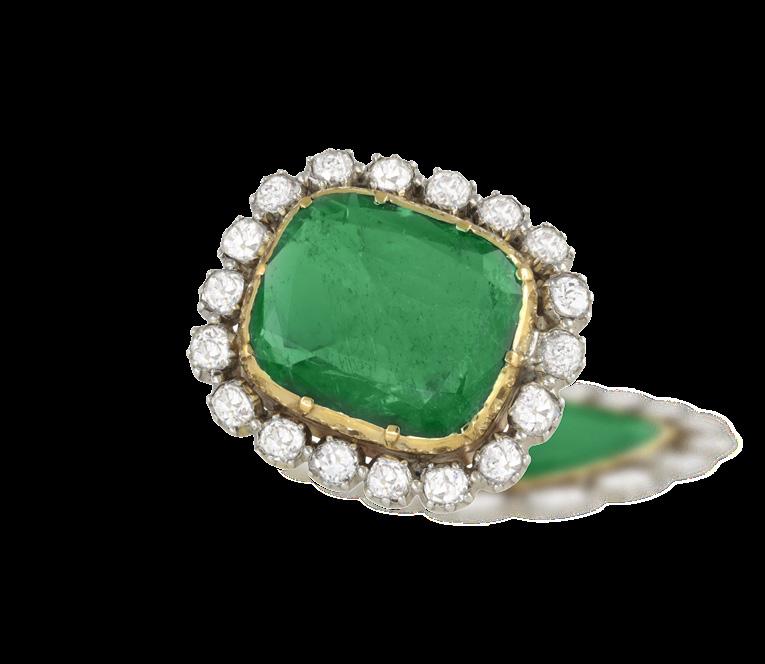
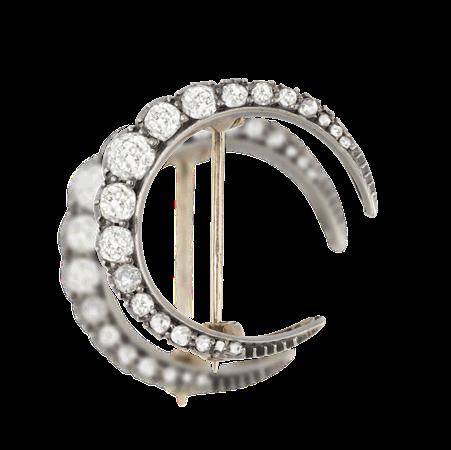
The dove is an animal rich in symbolism: in ancient times, the white dove was associated with Aphrodite or Venus, the goddess of love, and even today, turtledoves are linked to romantic themes. In Christian traditions, the dove carrying an olive branch in its beak symbolises peace and hope, inspired by the Book of Genesis, where a dove sent out by Noah returns to the ark, bringing back an olive leaf that signifies a new beginning. This also suggests the reconciliation of mankind with God after the flood. Additionally, the dove is a symbol of the Holy Spirit, often depicted flying down to the earth with an olive branch in its beak.
This symbolism is reflected in what is known as “Saint Esprit” jewellery. The dove charm, commonly seen in the form of pendants or brooches, is named after the biblical story of the dove descending from heaven with wings spread, seen as a powerful sign and a symbol of love. The use of the Saint Esprit in jewellery likely originates from the Ordre du Saint-Espirit chivalry pendant. These dove-shaped pieces were particularly popular in 18th-century Normandy, where they were worn by the elite and fashionable women of the time. As the years passed, the charm gained even more popularity in 19th-century France, spreading to other social classes and becoming a symbol of elegance.
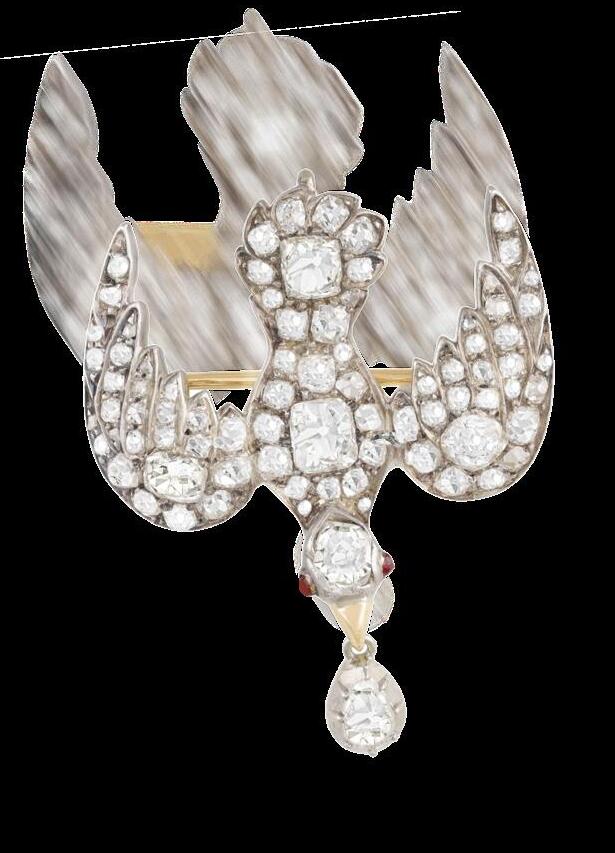
Of quatrefoil design, centring a rectangular-shaped blue chalcedony, corners highlighted by foliate motifs, between red guilloché enamel scalloped quarters, within a twisted-wire frame highlighted with button-shaped and drilled cultured pearls, suspending a baroque-shaped cultured pearl, reverse applied with blue and red champlevé enamel spelling out ‘Ceciliæ, Cecilia, Tibiq and Raphel’, mounted in 18K gold, length 7.7cm
€ 3,000 - 4,000
During the 19th century, a growing fascination with the past sparked a revival of historical styles across Europe, most notably a resurgence of 15th- and 16th-century-inspired jewellery that celebrated the richness and artistry of the Renaissance. The opulence, vibrant colours, and ornate designs once favoured by the Tudor court and European aristocracy returned to prominence in the mid to late 1800s, in a period known as the Renaissance Revival. This movement was fuelled by jewellers who found inspiration in the exquisite pieces portrayed in Renaissance-era portraits, so much so that the term "Holbeinesque jewellery" emerged to describe these revivalist designs.
The 19th century pendant in this auction can be closely compared to a pendant worn by Saint Cecilia in Raphael’s ‘La Sacra Conversazione’. Painted c.1514 by the young master Raphael, La Sacra Conversazione, also known as The Ecstasy of Saint Cecilia, was commissioned by the Bolognese noblewoman Elena Duglioli dall’Olio for the chapel dedicated to the saint in the church of San Giovanni in Monte, Bologna. The revival of this pendant’s design was led by the influential arts and crafts society Aemilia Ars, founded in Bologna in 1898 by Count Francesco Cavazza in collaboration with designer Rubbiani. The designs created by Rubbiani, including that of the St Cecilia pendant, were donated to the Museo della Tappezzeria in Bologna by the Cavazza family in 1994. Known for their patronage of Aemilia Ars, the Cavazza family played a key role in reintroducing historical artistic motifs to a contemporary audience. Marked with the annotation “Grandezza al vero” (actual size), the pendant came with a handwritten list from Rubbiani noting that it was copied from a Raphael painting and was later acquired by prominent figures such as Queen Margherita of Savoy, Queen Elena of Savoy, Princess Corsini, and the Princess of Essling. The design gained public attention when a pendant identical to the one featured in Raphael’s painting was displayed at the 1902 International Exhibition of Decorative Arts in Turin, highlighting its significance as an emblem of historical revivalism. While the design of the Saint Cecilia pendant was driven by Aemilia Ars and Rubbiani, the production is closely linked to the history of the Marchi family. Initially managed by Luigi Marchi alongside his son Raffaele Angelo from 1891 until Luigi’s retirement in 1894, the goldsmith firm was subsequently
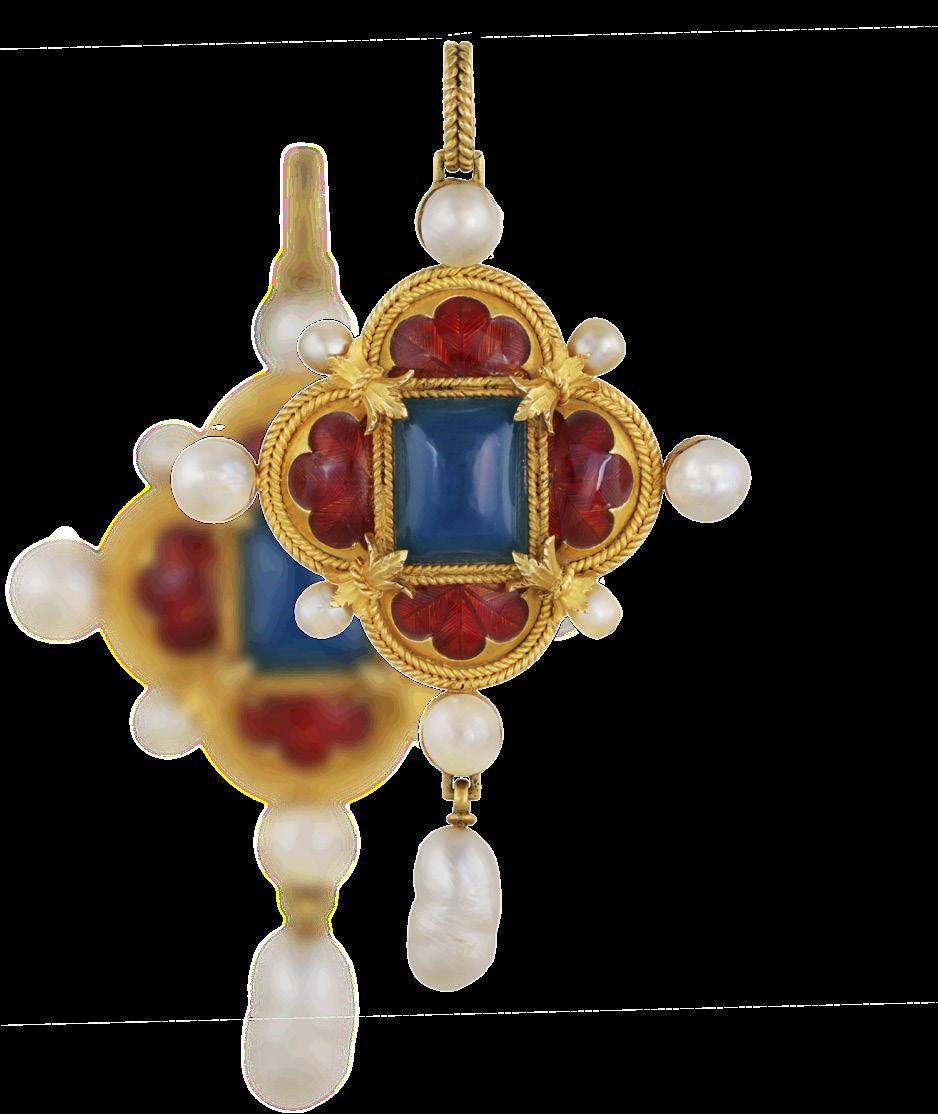
led by Raffaele Angelo alone, who was responsible for producing the Aemilia Ars pieces, including the St Cecilia pendant. Unlike some contemporaries who attempted to pass off their intricate reproductions as genuine Renaissance artifacts, the Marchi brothers were upfront about their work being modern creations inspired by historical designs.
Over time, variations of the reproduced St. Cecilia have emerged, with differences in colour, materials, and detailing; including one version that sold at Christie’s in 1995 that featured a grey-green chalcedony at its centre. Another similar pendant held by the British Museum displays a deliberate colour reversal: where the original design presents a red central chalcedony, the museum’s version features a blue-stained stone, with the enamelled lobes of the quatrefoil rendered in red instead of blue.
It is worth noting, across different examples of the reproduced pendant design, subtle differences can be seen in the inscriptions and decorative details; while the British Museum pendant is inscribed “RAPHAEL CAECILIAE CAECILIA TIBI:QV,” another version omits a letter in “Raphael,” streamlines “Caeciliae,” and leaves off the final “V,” along with variations in the reverse orientation and the thickness of the palmette motifs above the text.
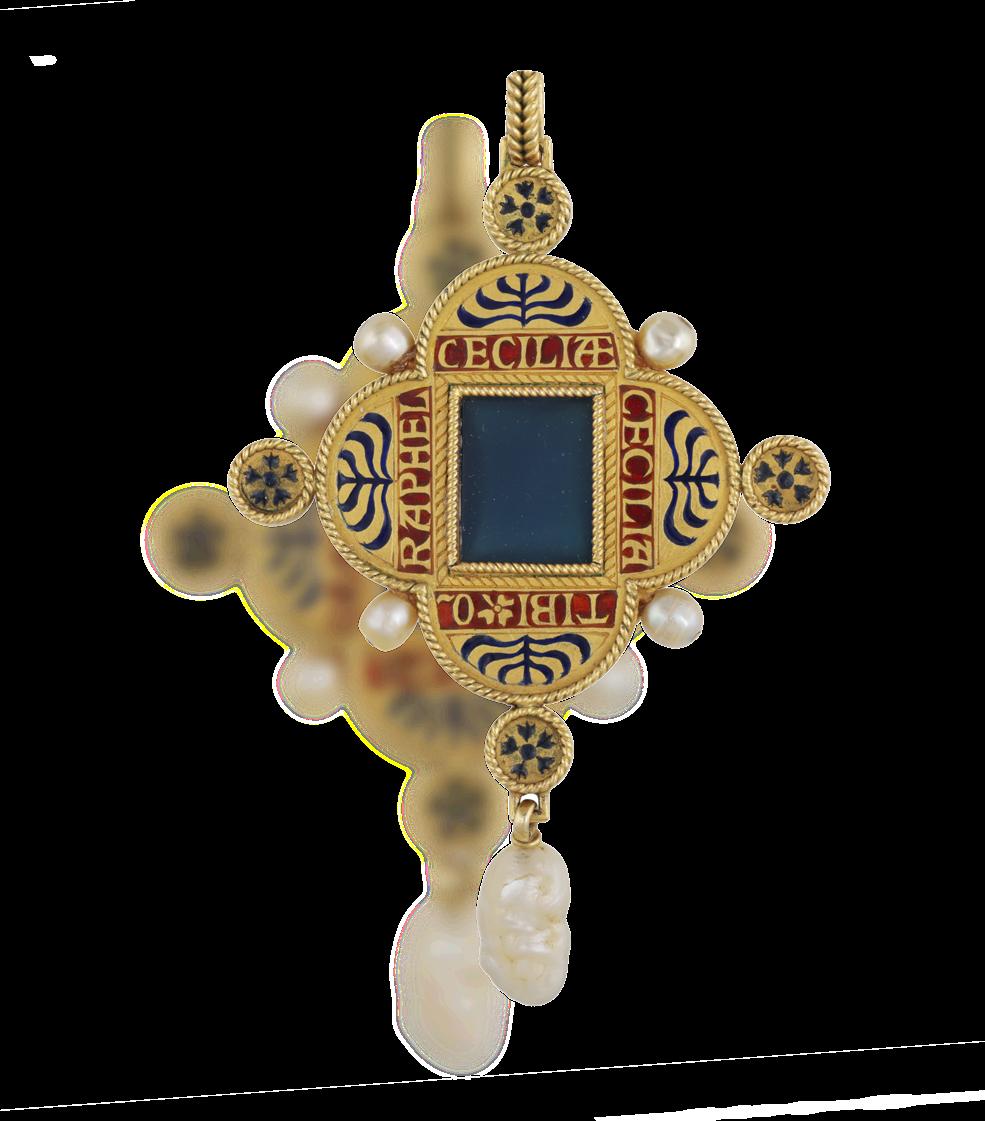
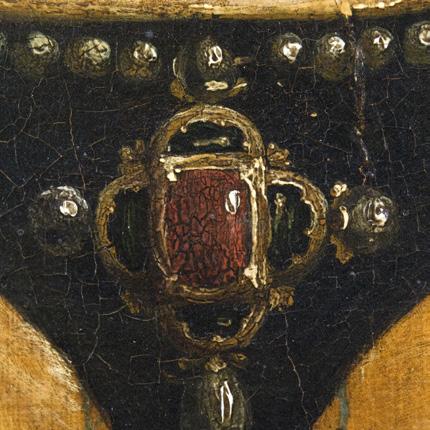
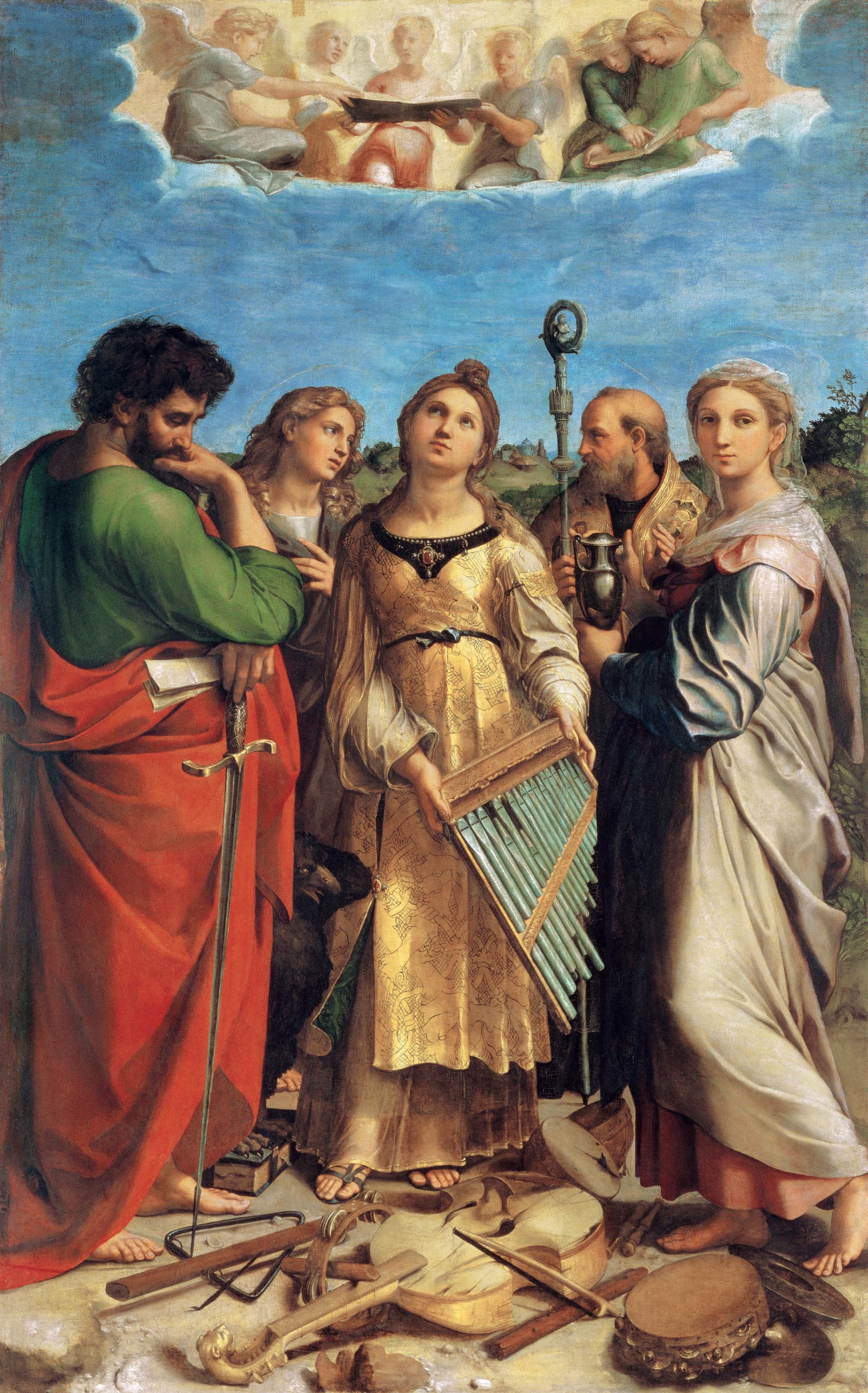
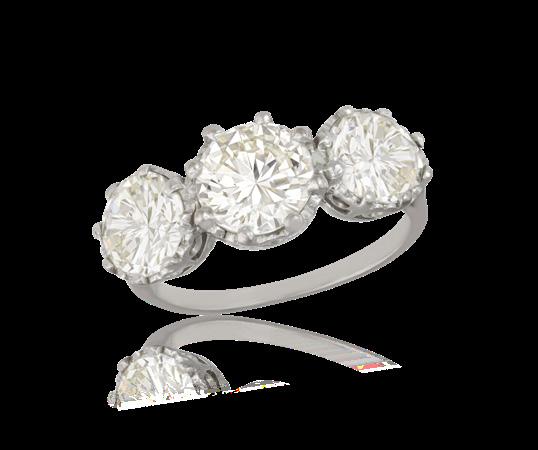
The central brilliant-cut diamond, weighing approximately 1.96cts, between two similar-cut diamonds, partial mark for 18K gold, remaining diamonds approximately 2.60cts total, ring size P¾
€ 7,000 - 9,000
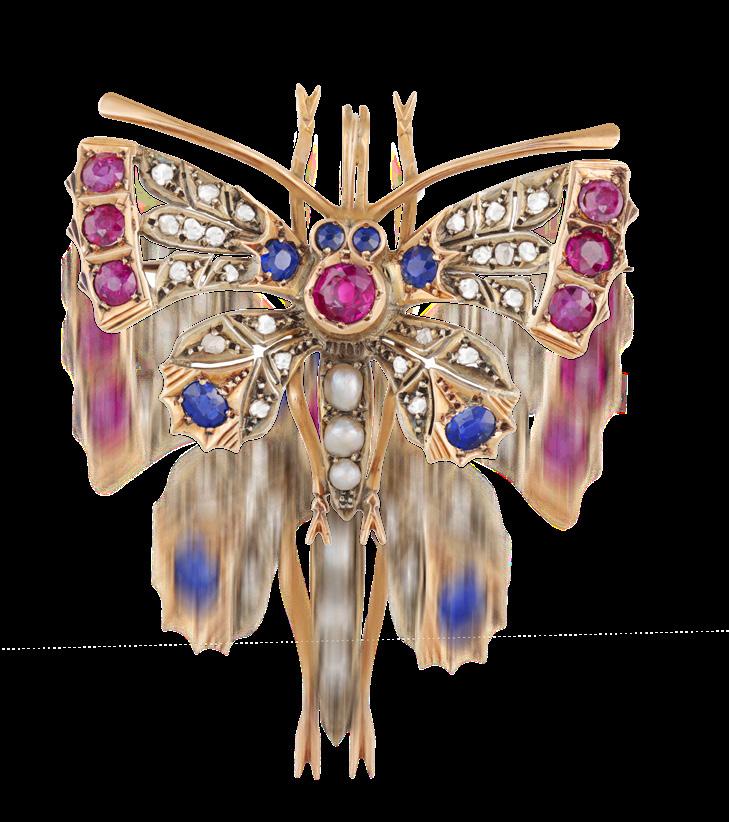
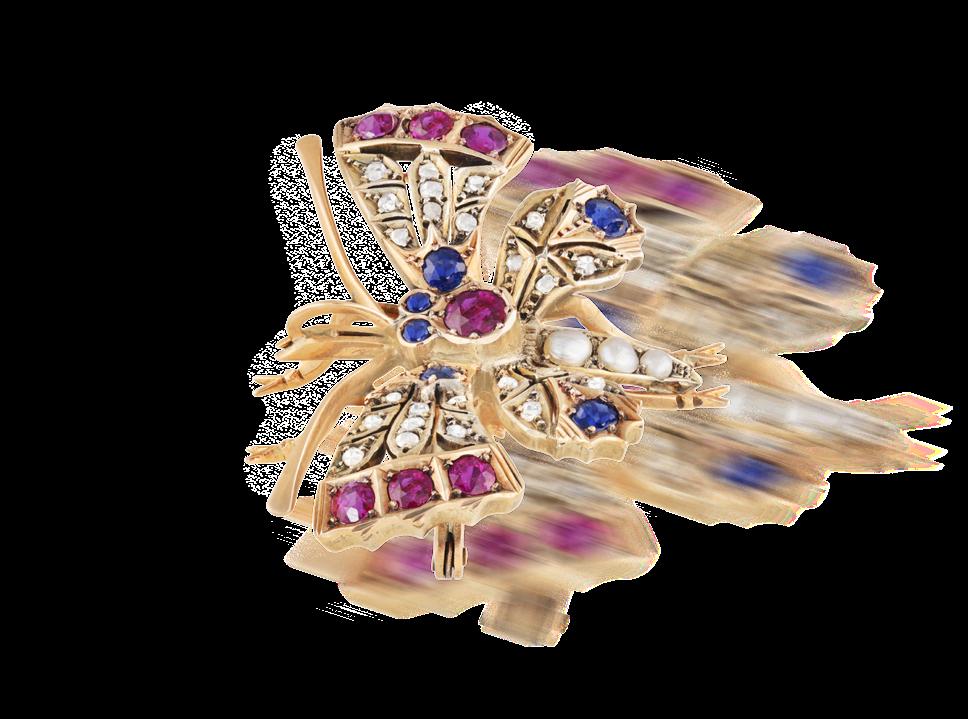
Designed as a butterfly, the body set with a circular-cut ruby and three seed pearls, the wings set with rose-cut diamonds accented with circular-cut rubies and oval-shaped sapphires, with circular-cut sapphire eyes, mounted in silver and gold, with detachable brooch fitting, width 4.5cm
€ 700 - 900
40
Of scroll design, centring a cushion-shaped diamond, between similarly-cut diamond shoulders accented with rose-cut diamonds, mounted in gold, ring size N½
€ 1,200 - 1,800
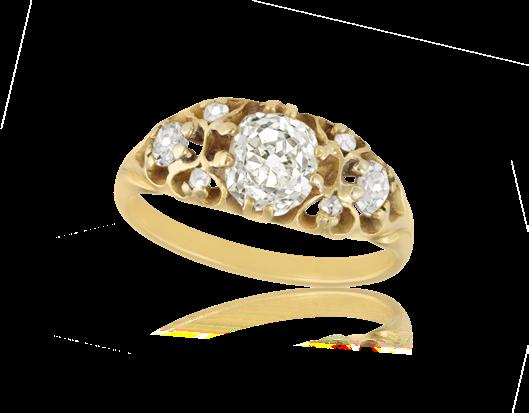
The old cushion-shaped diamond weighing approximately 4.05cts, suspended from knife-wire connectors interspersed with old brilliant-cut diamonds, to a cable-link chain, mounted in platinum, remaining diamonds approximately 1.80cts total, pendant length 5.9cm
€ 15,000 - 20,000
42
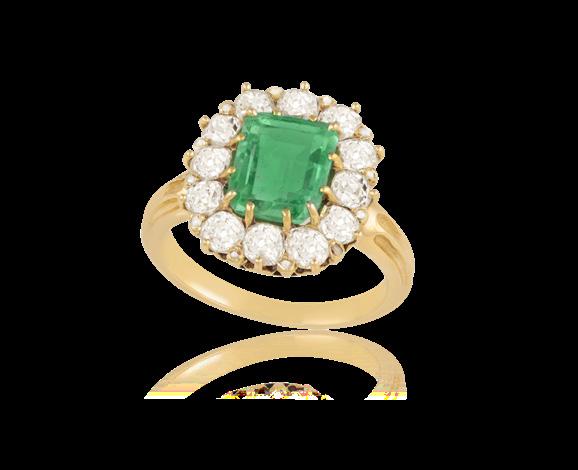
The cut-cornered rectangular-cut emerald weighing approximately 1.50cts, within an old cushion-shaped surround, to reeded mount, mounted in gold, diamonds approximately 1.20cts total, ring size J
€ 4,000 - 5,000
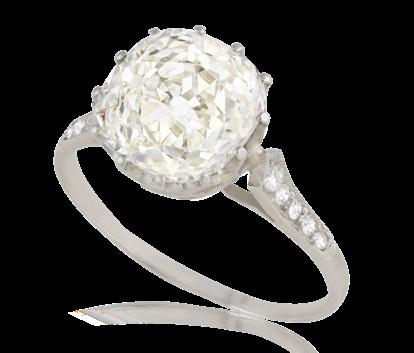
43
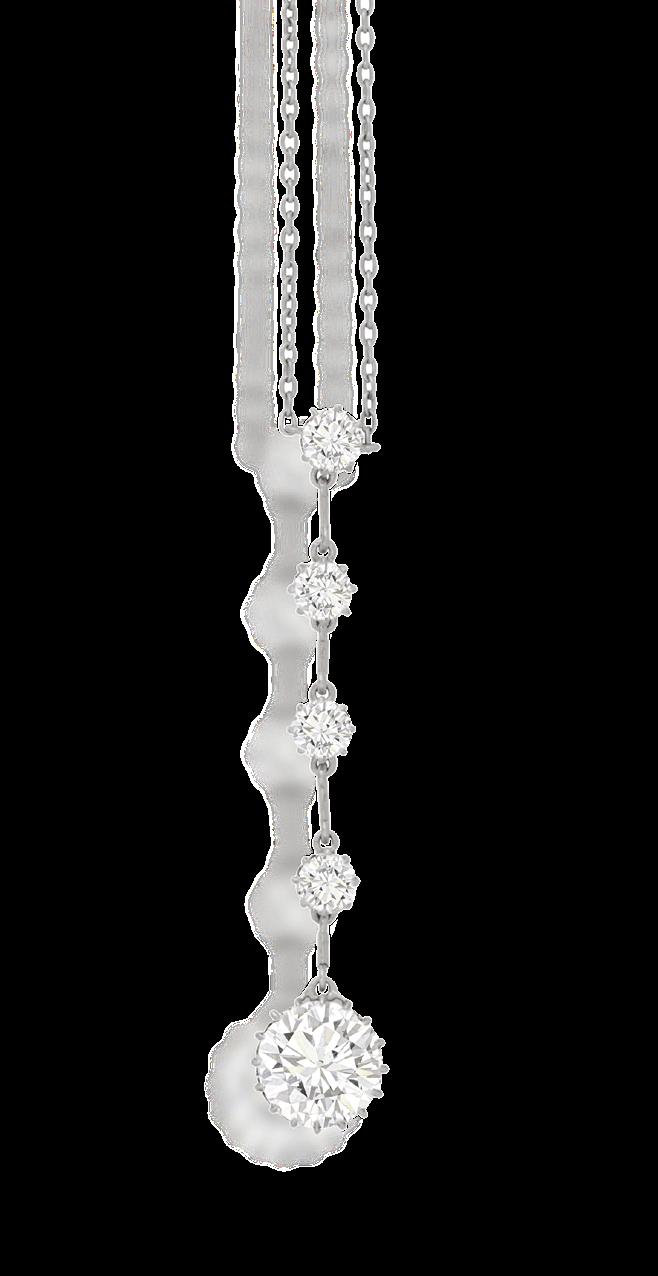
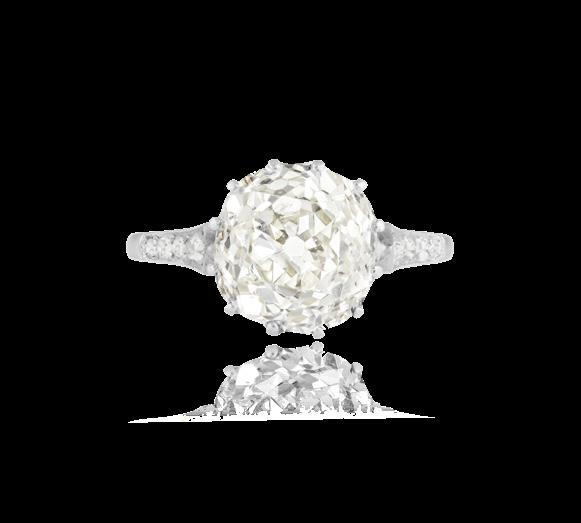
The old cushion-shaped diamond weighing 4.25cts, within a multiple-claw setting, to single-cut diamond shoulders , ring size P½
€ 18,000 - 22,000
Accompanied by a report from the HRD laboratory in Antwerp, stating that the natural diamond weighing 4.25cts, is of K colour, VS2 clarity. Report number 200000099644, dated October 13th 2020.
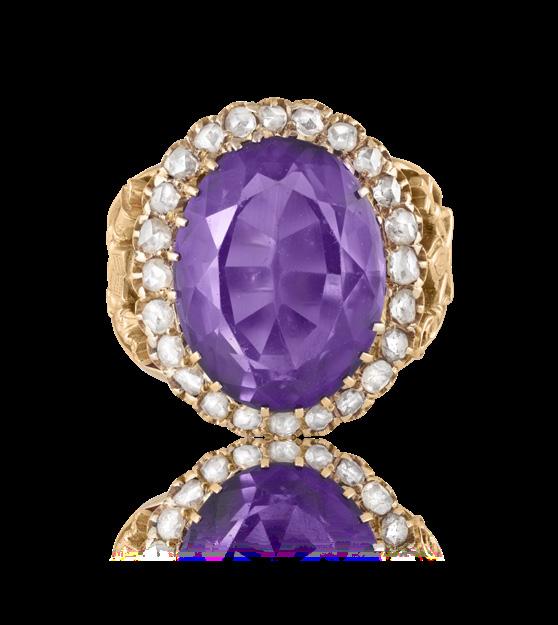
The oval-shaped amethyst, within a multiple-claw setting, to a rose-cut diamond surround, mounted in 18K gold, ring size N
€ 1,200 - 1,800
Amethysts have been treasured for centuries, revered by ancient cultures from Greece to medieval Europe. The name comes from the Greek amethysts, meaning “not intoxicated,” reflecting the belief that the stone could ward off drunkenness and promote mental clarity. Symbolising wisdom, royalty, and spiritual protection, amethysts were worn by bishops and monarchs, were valued for their beauty and their perceived ability to calm the mind and strengthen resolve.
Among the most coveted are Siberian amethysts, famed for their rich, velvety purple hue often accented with flashes of red and blue. Mined from Russia’s Ural Mountains since the 18th century, these stones quickly became the gold standard of amethyst quality. Though production from the region has declined, Siberian amethysts remain highly prized for their depth of colour and exceptional clarity, often commanding premium prices on the market.
Today, amethysts are sourced from regions including Brazil, Zambia, Uruguay, and Madagascar, each offering distinct characteristics. Brazilian stones are typically lighter with a clear, violet hue, while Zambian amethysts are darker, often with a bluish tint. Uruguayan gems stand out for their vivid saturation and purity. Yet among them all, Siberian amethysts remain the most prized, distinguished by their intensity and historical provenance.
Siberian amethysts were favoured by the Russian nobility, with figures like Empress Catherine the Great adorning themselves in amethyst-laden jewels. In modern times, the stone continues to make public appearances. Queen Elizabeth II famously wore amethyst pieces from the Kent Amethyst Suite, while Lupita Nyong’o stunned at the 2015 Golden Globe Awards in Chopard amethyst earrings.
Siberian amethysts have achieved remarkable results at auction, reflecting their rarity and historic value. A Victorian amethyst and diamond necklace from the 19th century sold at Christie’s London for over £75,000, far exceeding its estimate. Similarly, pieces from Queen Alexandra’s collection have also surfaced in royal exhibitions and private sales, often valued in the six-figure range, underscoring the enduring prestige of these exceptional gems.
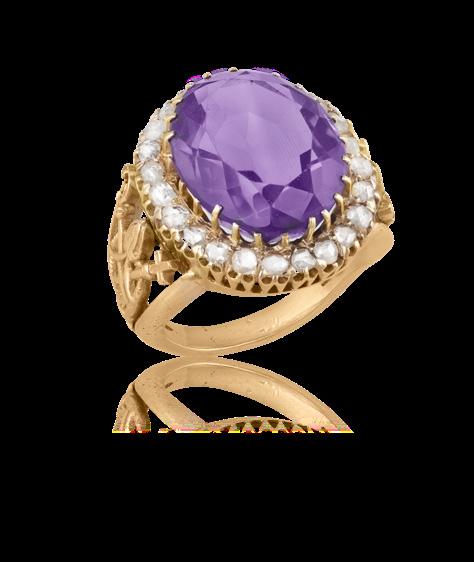
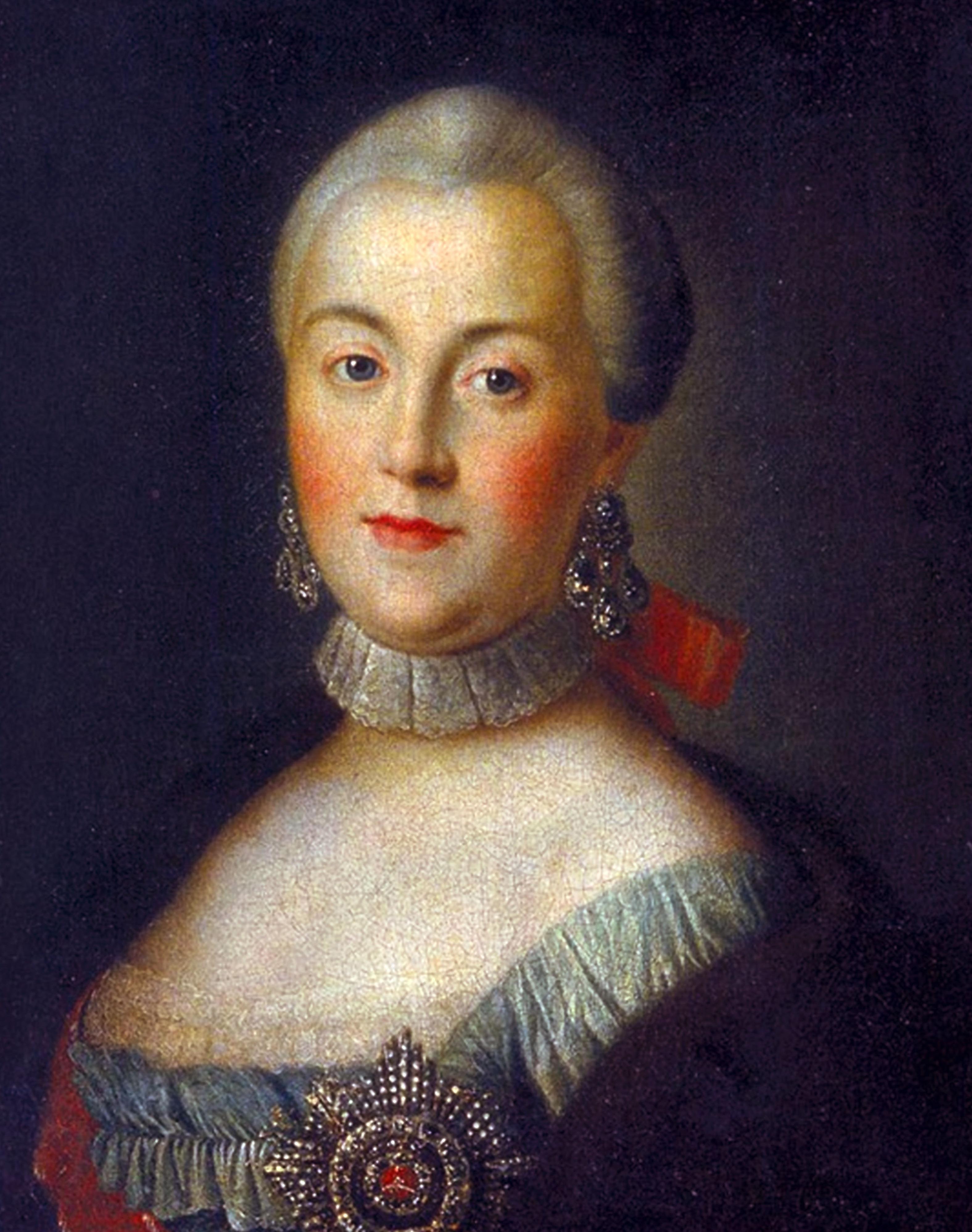
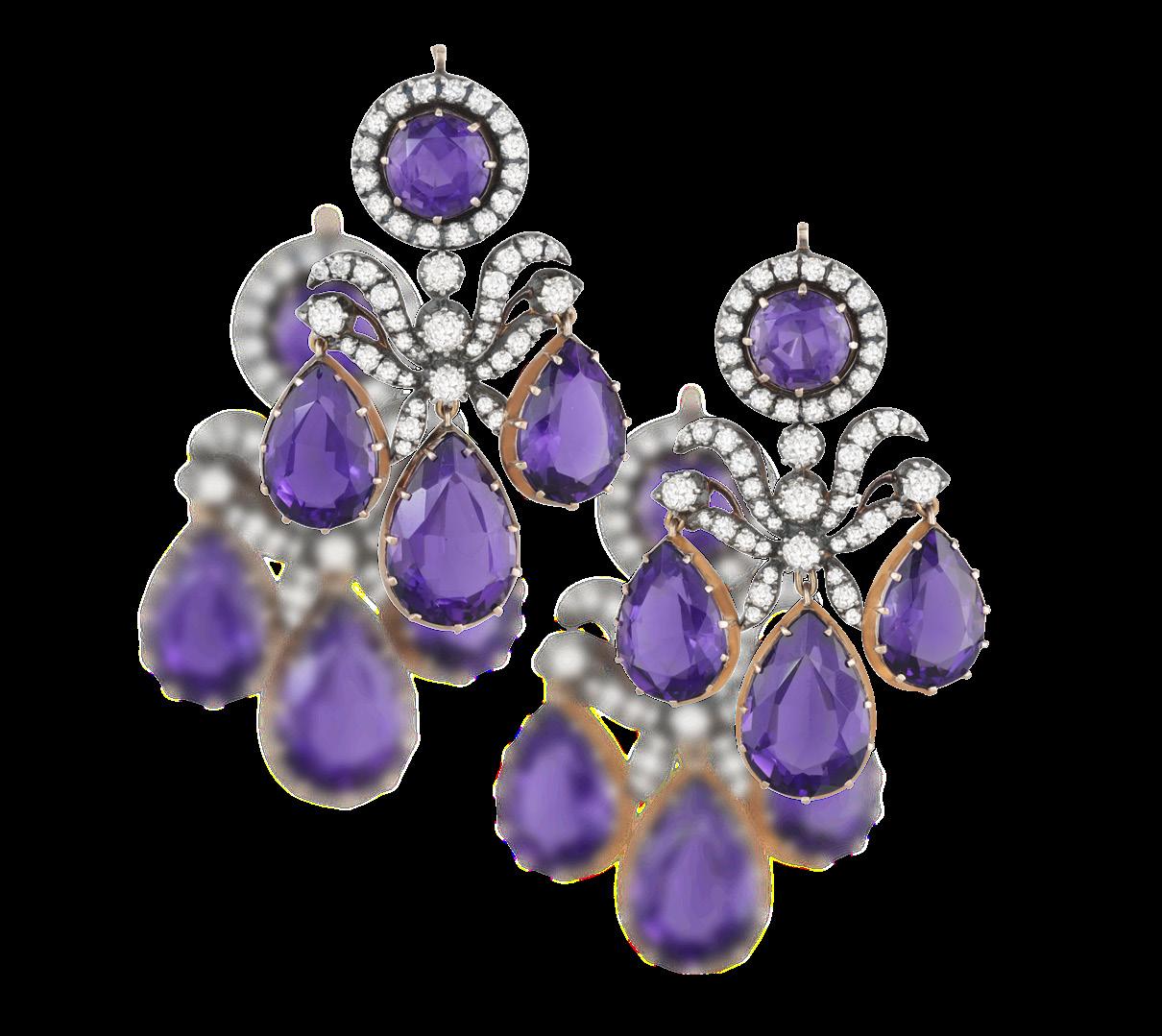
Of girandole design, each set with three pear-shaped amethyst drops, to the old-cut diamond foliate motif and circular-cut amethyst and old-cut diamond cluster surmount, mounted in silver and gold, with partial Russian assay mark ‘?56’, amethysts approximately 35.00cts total, diamonds approximately 3.30cts total, length 4.9cm
€ 30,000 - 40,000
The Romanov dynasty ruled Russia from 1613 until 1917, when the Revolution abruptly ended their empire. The last years of the 19th and the early 20th century was a period of elegance and excess for the Tsars and the wealthy families of Russia. The Imperial family’s jewellery was amongst the most precious in the world. These jewels were tangible symbols of the power of the Romanovs and their deep ties to European aristocracy and culture and were once the epitome of Russian opulence.
After the Bolshevik Revolution, the fate of these precious treasures would become one of the most captivating chapters in the story of the Russian Empire’s fall. The Bolsheviks, in their sweeping promises of equality, claimed that the jewels once hoarded by the aristocracy would be used for the benefit of the people. “Diamonds, pearls, and precious stones that have cost workers endless suffering for centuries are now in safe hands. The proletariat will be able to use them wisely,” they boasted in the 1920s. Yet, while the Soviet government officially denied any sale of the Romanov collection, they could not entirely escape the growing rumours that began circulating in the West. In response to these whispers, the Bolsheviks organised a lavish exhibition of the Russian Crown Jewels in Moscow on December 18, 1925, to counter the belief that the revolution had torn apart the cultural and material legacy of Russia’s royal family. But less than a year later, the treasures were quietly sold, and the secrets of their dispersal would only emerge later.
In a remarkable twist of history, American antiquarian Norman Weiss acquired a substantial portion of the Crown Jewels exhibition in 1926, purchasing 9 kilograms of imperial treasures for $50,000. Among the pieces were two pairs of magnificent 18th-century girandole earrings, a quintessential example of Russian royal jewellery, that soon entered the international market.
One of these pairs, set with vibrant Ural amethysts, is famously associated with Empress Catherine the Great. The earrings are prominently featured in a portrait of the young Catherine, then still a Tsarevna and Grand Duchess, long before she assumed the throne. Though not yet immersed in imperial luxury, the gift, commissioned by Empress Elizabeth Petrovna from her court jeweller, Jérémie Pauzié, already reflected the grandeur of the 18th-century Russian court.
Crafted by Pauzié, renowned for his meticulous attention to detail and his intricate, heavy designs, the earrings became a significant part of Catherine’s early life. When time came for Cathrine’s coronation, the soon-to-be crowned empress entrusted Pauzié with the creation of the Imperial Crown of Russia. The jeweller collaborated closely with the court’s most skilled artisans, and together, they fashioned the exquisite crown, adorned with nearly 5,000 diamonds and 75 large pearls, a feat that has since become an iconic piece of Russian history.
After the earrings were sold to Weiss, they resurfaced in 1929 when JS Phillips purchased them at Christie’s London for 135 pounds. Decades later, in 2007, they appeared again at Christie’s in Geneva, fetching 433,000 Swiss francs and reaffirming the enduring allure of Russian imperial jewellery.
The sale of the Romanov jewels remains a poignant and fascinating story, illustrating the complex intersection of revolution, power, and history. These jewels, symbols of a vanished world, continue to captivate collectors, historians, and admirers offering a glimpse into the opulence of the Russian Empire before its collapse.
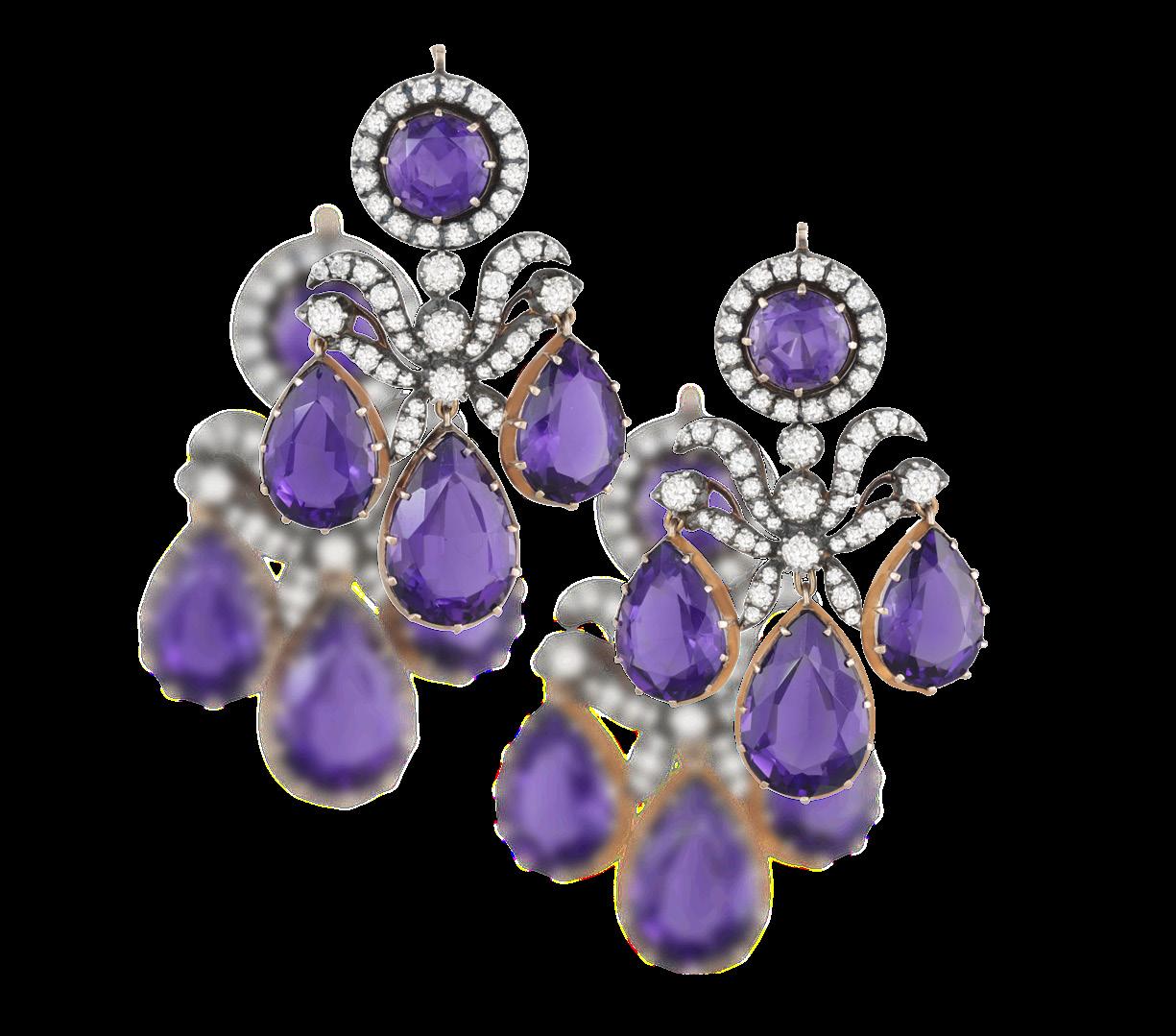
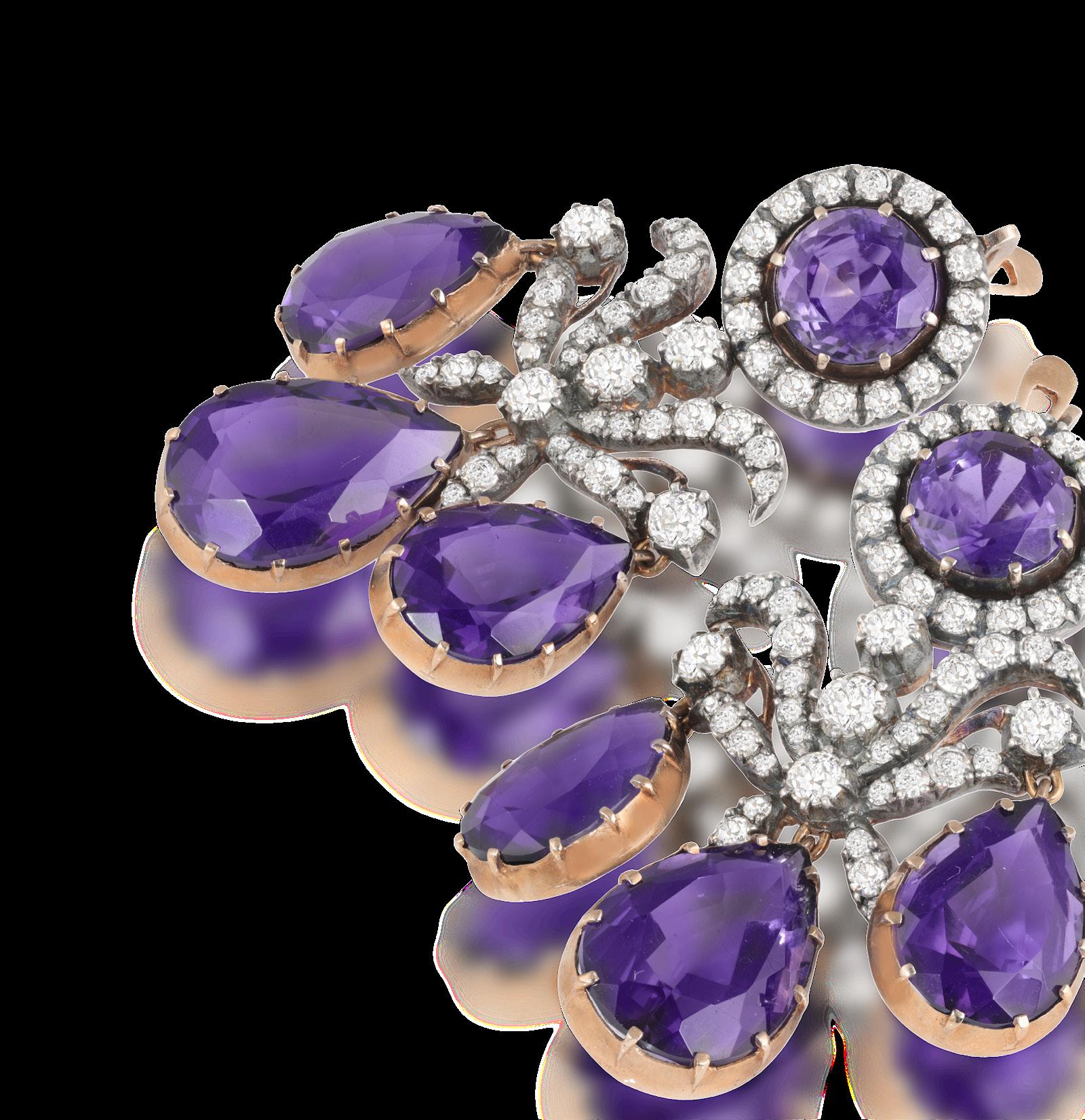
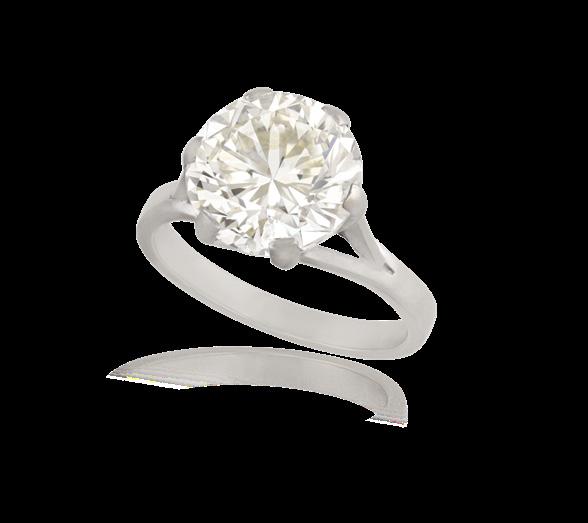
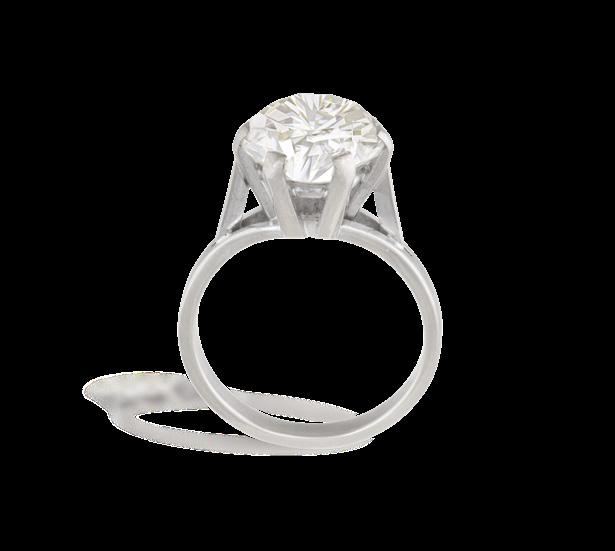
The European-cut diamond weighing approximately 5.30cts, within a six-claw setting, mounted in 18K gold, with maker’s mark ‘JM’, ring size O
€ 20,000 - 30,000
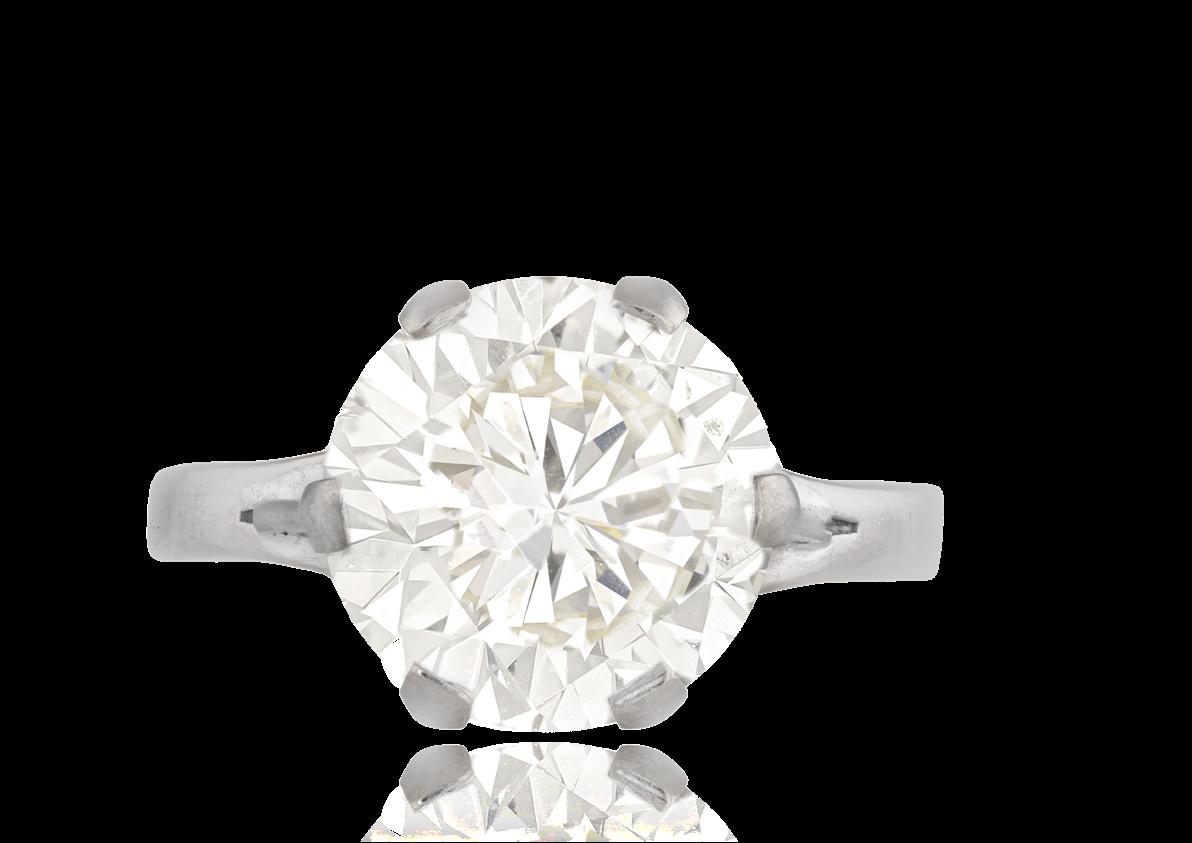
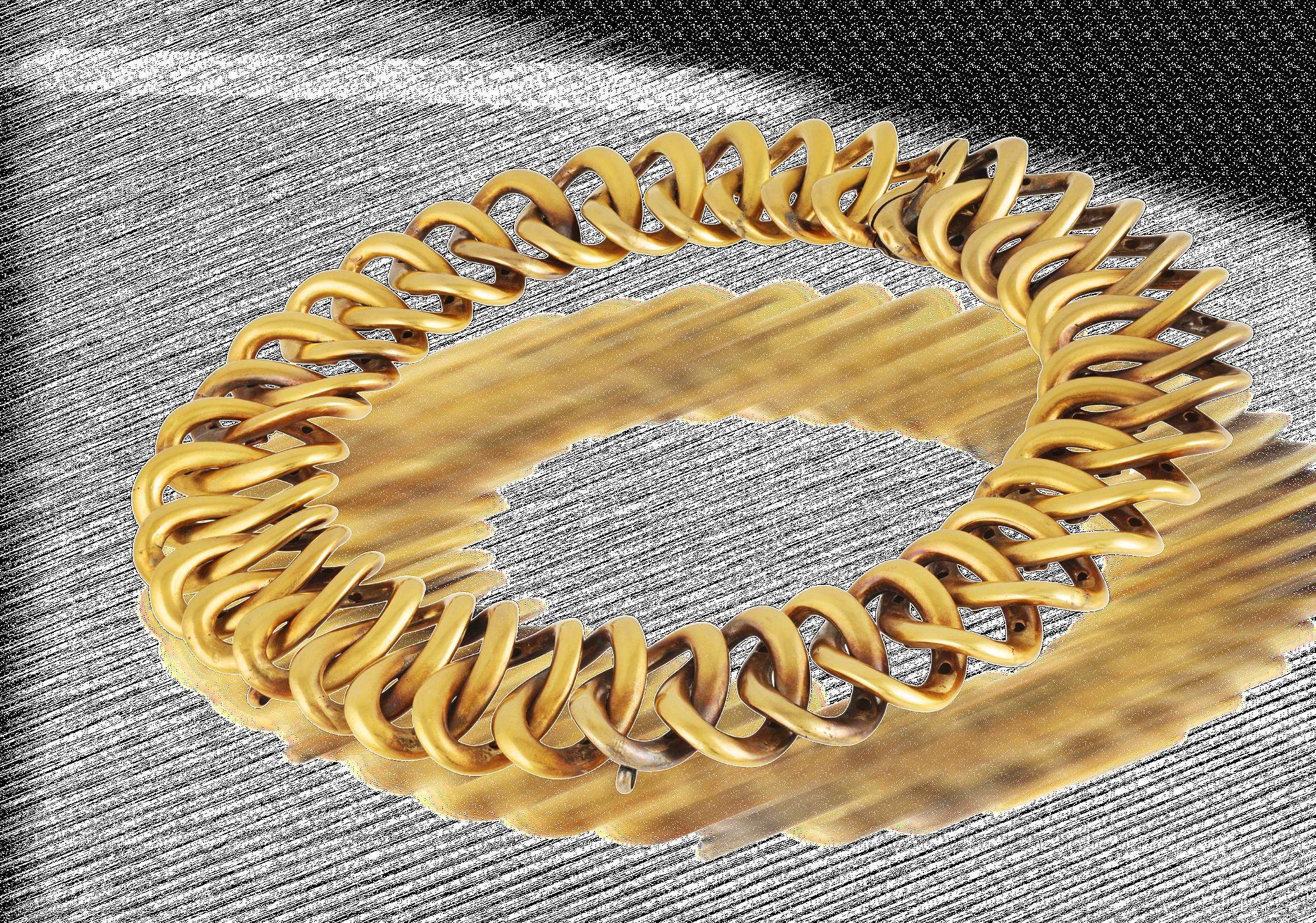
Composed of a continuous row of wide oval-shaped links, in 14K gold, with case from ‘J. Mavec & Company, New York, NY, length 42cm
€ 8,000 - 9,000
Provenance:
Accompanied by a receipt from J. Mavec & Company Ltd, Jewelry and Objects of Vertu, on 946 Madison Avenue in New York, dated November 14th 1998. Purchased at the time by Mrs Miranda de Toulouse-Lautresc for $15,500.-
Countess Miranda de Toulouse-Lautrec (née Redfield) was an American whose remarkable journey led her from Michigan to the French countryside, where she became a respected figure in agriculture. Raised in the American Midwest, Miranda held a degree from Harvard University and had already led an accomplished life before it took an unexpected turn. Following the death of her first husband, she set off on a global journey with her young daughter, a voyage that ultimately brought them to France.
Miranda later married Charles-Constantin de Toulouse-Lautrec, a descendant of the celebrated artist Henri de Toulouse-Lautrec,
whose vivid paintings famously captured the spirit of the Moulin Rouge. In 1970, the couple purchased a 330-acre estate named ‘1 Essart’, transforming it into a thriving haven for horse and sheep breeding. It marked the beginning of a new chapter for Miranda, as she embraced rural life in France alongside her daughter Laurie and son Alex.
On February 16, 2024, Miranda passed away in Verneuil-sur-Vienne at the age of 89. Her life was one of grace, strength, and cultural richness, leaving behind a legacy that bridged continents and celebrated a deep bond between American roots and French tradition.
CARTIER
AN AMETHYST, ENAMEL AND DIAMOND PENDENT NECKLACE
The millegrain-set rose-cut diamond bow suspending an oval-shaped amethyst cabochon, within a white enamel border, to a fine cable-link necklace, chain in platinum and pendant mounted in 9K gold, signed Cartier Paris, partial assay marks, with maker’s case, length 37cm
€ 3,500 - 4,000
50
TIFFANY & CO.
AN EARLY 20TH CENTURY SAPPHIRE AND DIAMOND BROOCH, CIRCA 1920
Of openwork circular design, set with a series of calibré-cut sapphires interspersed with brilliant-cut diamonds, mounted in platinum, diamonds approximately 1.50cts total, signed Tiffany & Co., width 3.3cm
€ 3,500 - 4,000
52
A PAIR OF AQUAMARINE AND DIAMOND PENDENT EARRINGS
Each cut-cornered rectangular aquamarine weighing approximately 7.70cts, within a pierced frame set with old brilliant, single and rose-cut diamonds with scrolling detailing, suspending from a similarly-cut diamond surmount, millegrain-setting throughout, mounted in 18K gold, diamonds approximately 1.70cts total, French import marks, length 4.2cm
€ 4,000 - 5,000
49
AN ART NOUVEAU ENAMEL, CULTURED PEARL AND DIAMOND PENDANT WITH A CHAIN
The scrolled foliate border set to the centre with a flower motif, applied with pink and green enamel and an old-cut diamond, suspending a cultured pearl of golden tint with a rose and old-cut diamond suspension, together with later fine cable-link chain necklace, mounted in 18K gold, French assay mark, pendant length 4.6 x 4.2cm, chain length 45cm
€ 2,400 - 2,800
51
A MID-20TH CENTURY JADE AND DIAMOND BROOCH
Centring an openwork rectangular jade plaque with floral carving, within a platinum polished frame, highlighted with old-cut diamonds, mounted in platinum, diamonds approximately 1.20cts total, with millegrain detailing, French assay mark, with security chain, width 7.2cm
€ 3,000 - 4,000
53
AN ART DECO JASPER AND DIAMOND BROOCH, CIRCA 1925
The polished jasper ring accented with links at each quarter, millegrain-set with rose-cut diamonds, between pierced palmette motifs set with old and rose-cut diamonds, mounted in platinum, French import mark, length 7cm
€ 2,800 - 3,200
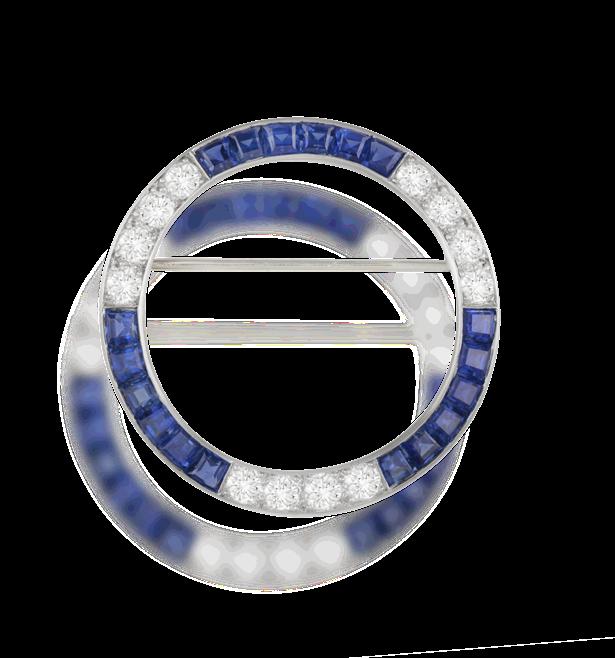

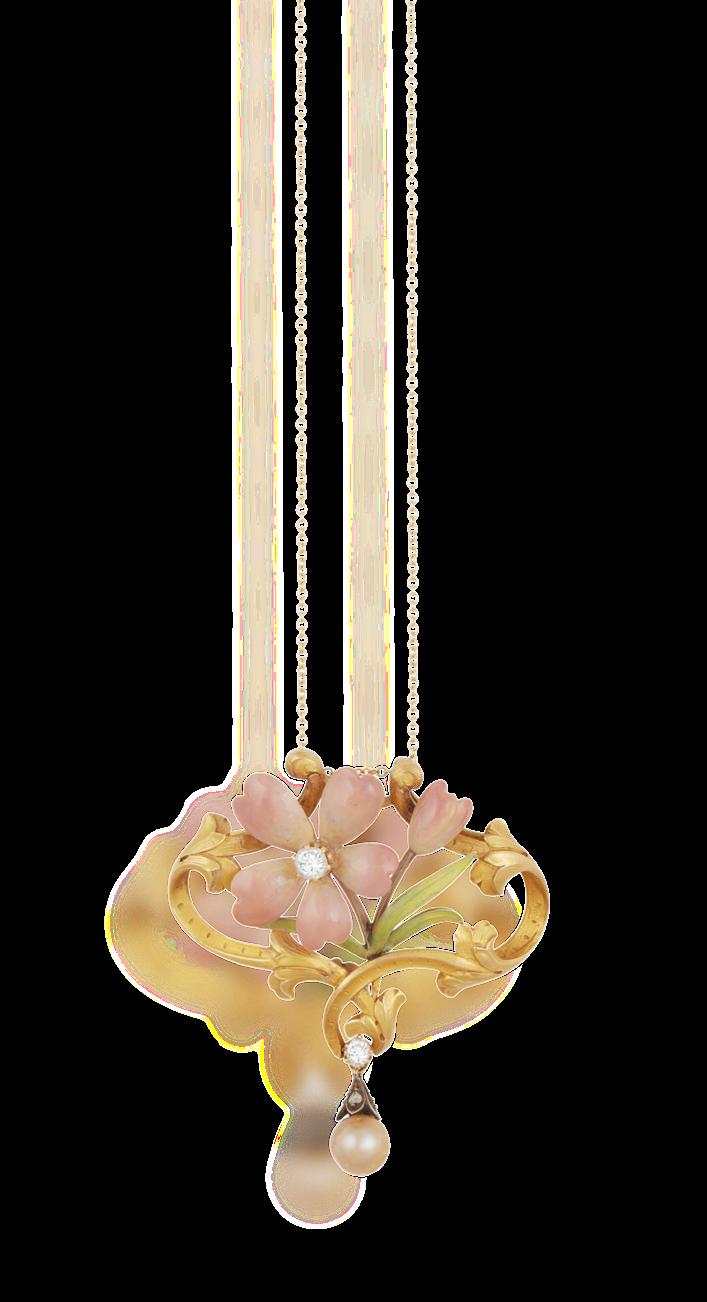

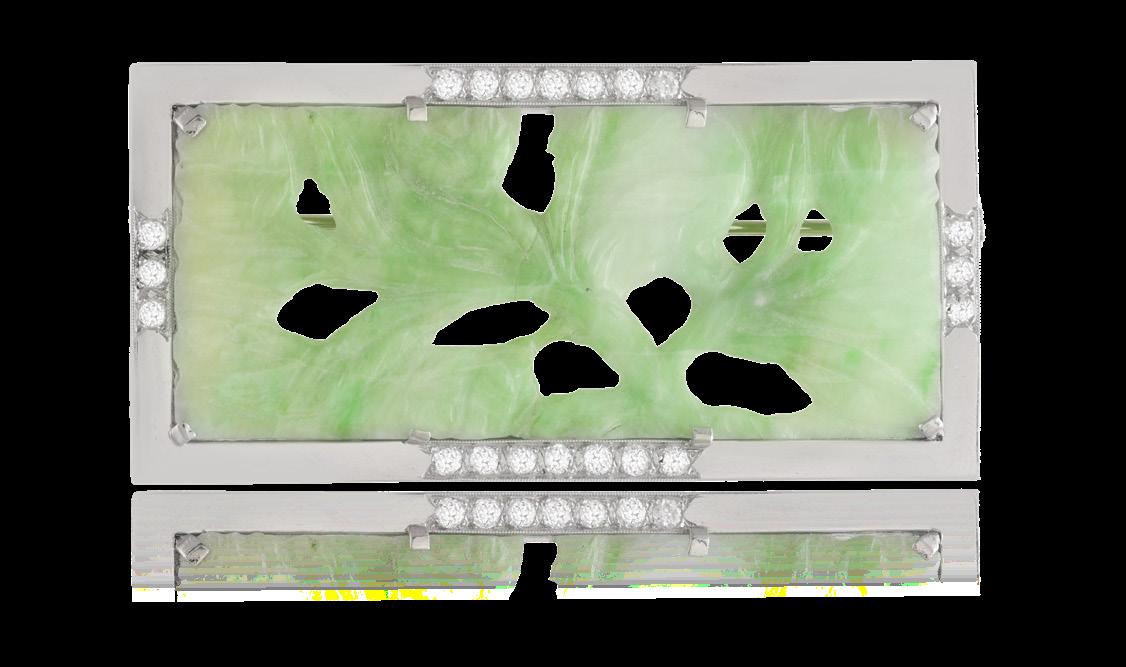
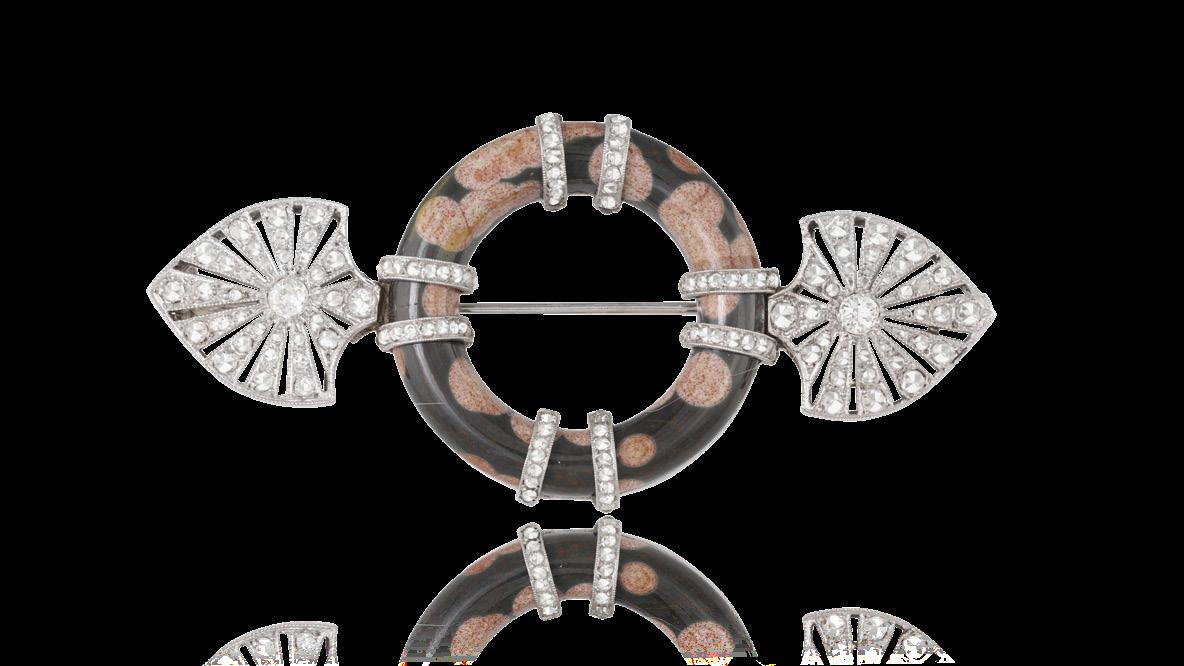
54
A PAIR OF AQUAMARINE AND DIAMOND PENDENT EARRINGS

Of chandelier scrolling design, set with square and tapered baguette-cut and brilliant-cut diamonds, suspending pear-shaped aquamarines, within millegrain setting, mounted in 18K gold, diamonds approximately 3.00cts total, length 7.2cm
€ 4,000 - 5,000
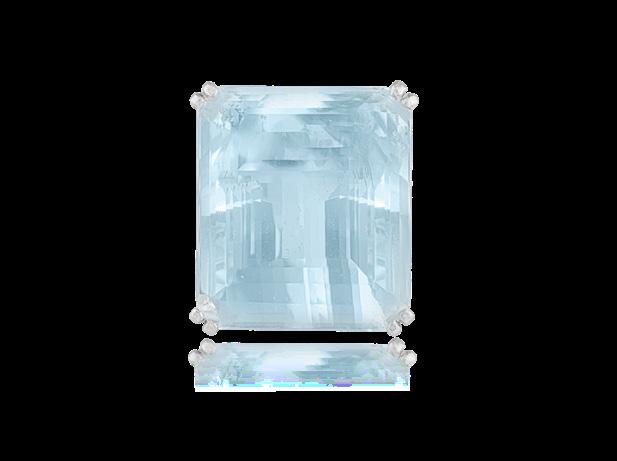
55
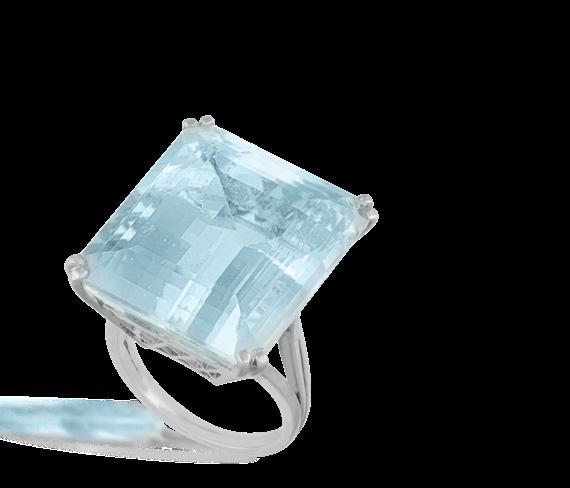
AN AQUAMARINE DRESS RING, FRENCH, FIRST QUARTER OF THE CENTURY
The raised cut-cornered rectangular aquamarine, weighing approximately 28.00cts, within a double four-claw setting, to a geometric gallery, trifurcated shoulders and plain hoop, mounted in platinum, with partial maker’s mark, French assay mark, ring size H½
€ 4,500 - 5,500
Of late 19th century style, composed of a single row of graduated old-cut diamonds, mounted in silver and rose gold, diamonds approximately 13.00cts total, length 43.6g
€ 8,000 - 9,000
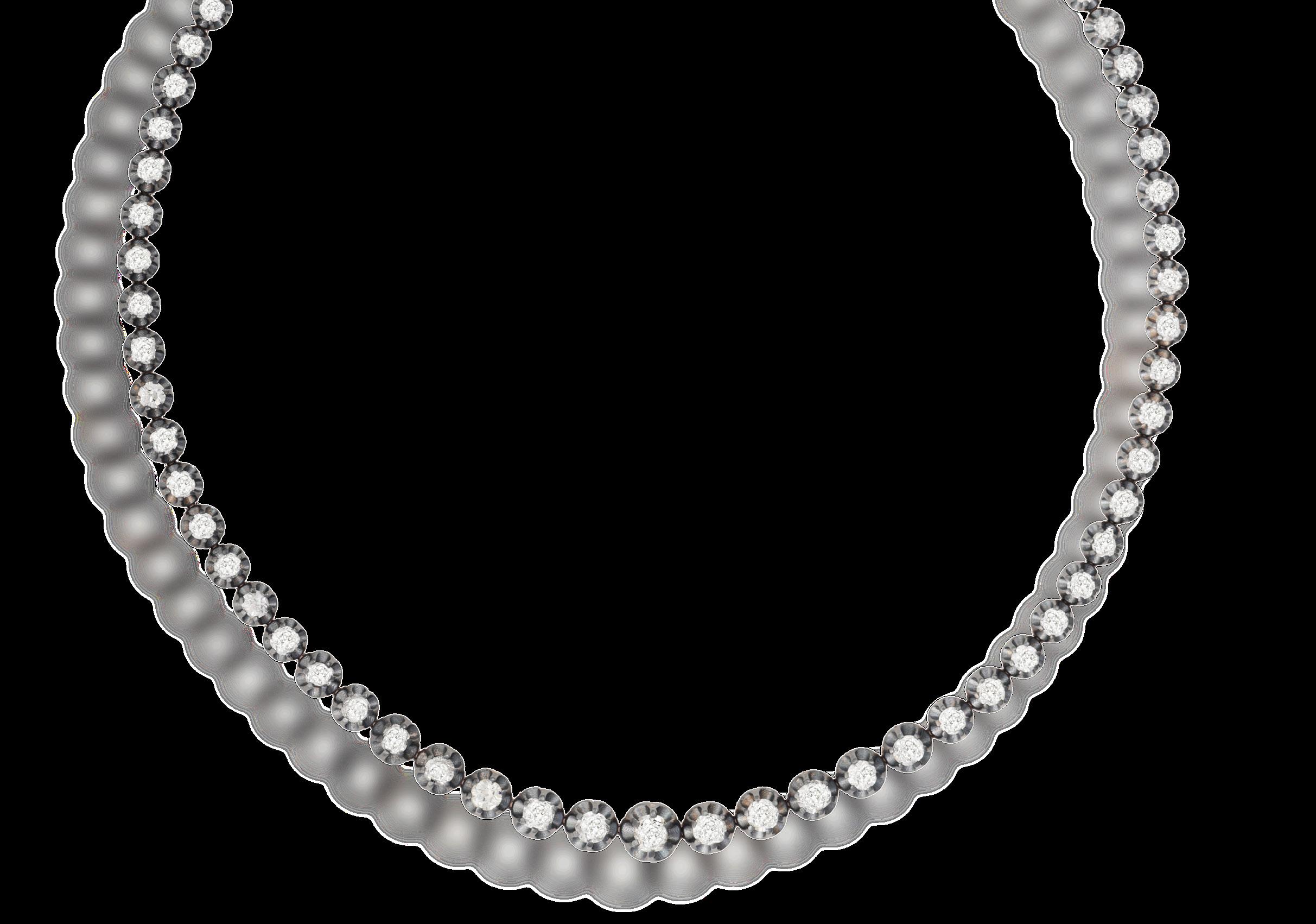
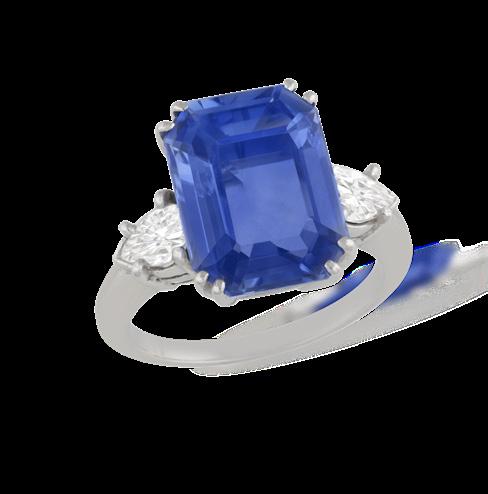
The rectangular-cut sapphire at the centre, weighing approximately 7.50cts, between pear-shaped diamond shoulders, mounted in gold, diamonds approximately 0.50ct total, ring size L¼
€ 14,000 - 18,000
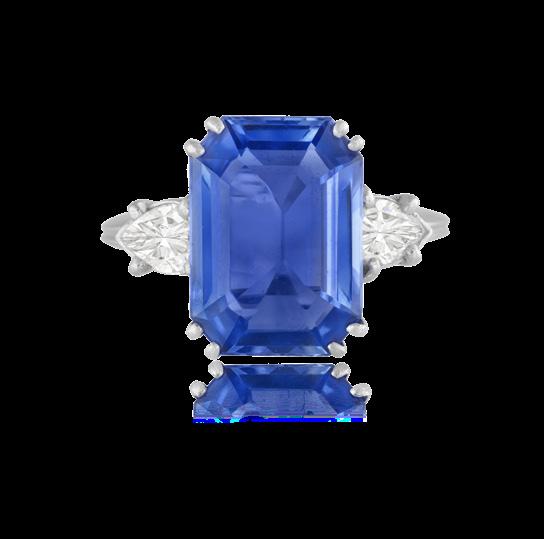
Accompanied by a report from C. Dunaigre laboratory in Switzerland, stating that the natural sapphire weighing approximately 7.50cts, is of Sri Lankan origin, with no indications of heating. Report number 2412117, dated December 6th 2024...
René Boivin (1864–1917) began his jewellery career at seventeen, following his elder brother Victor’s footsteps by working first as a goldsmith’s apprentice and taking drawing lessons at a local art school. Having refined his skills in several workshops, he soon earned a reputation as a talented draughtsman, designer and engraver.
By 1890, René was ready to start his own enterprise. He acquired his first workshop in Paris, equipping it with all the necessary tools and skilled craftsmen. A few years later, he moved to new premises on the rue de Turbigo and married Jeanne Poirot, sister of the esteemed French fashion designer Paul Poiret. The firm’s reputation grew rapidly by word of mouth, thanks to its meticulously crafted pieces and commissions from jewellers such as Mellerio and Boucheron. Though proficient in both modern and classical design, René developed a keen interest in naturalism; his solid background in botany led him to create life-like floral motifs. While Art Nouveau’s flowing curves were fashionable at the time, the Boivin workshop chose a more unconventional path to appeal to a more discerning clientele.
Boivin’s wife Jeanne had already been deeply involved in the business, and after René’s untimely death in 1917, she took full control of Maison Boivin. Though she had not planned a career in jewellery, she quickly adapted to managing both the creative and financial aspects of the business. Jeanne not only upheld René’s legacy, but she also steered the firm through challenging post-war years, leading a workshop of around twenty artisans and establishing it as the only major jewellery house of its time run by women.
Jeanne possessed a keen eye for talent. In 1919, she recruited Suzanne Vuillerme, later known as Suzanne Belperron, a new graduate from the Besançon BeauxArts Academy. Belperron’s innovative use of coloured stones, texture, and predominantly 18K yellow gold set her work apart from the prevailing Art Nouveau and Art Deco styles. Her collaboration with Jeanne brought renewed energy to the firm throughout the 1920s.
In 1931, Belperron left to form a partnership with Bernard Herz, paving the way for Juliette Moutard to join the firm. Moutard was an experienced designer having
worked at Verger Frères and designed for Cartier and Van Cleef & Arpels. She began her long-standing association with Maison Boivin in 1933. Under Jeanne’s guidance, Juliette flourished. She introduced bold, imaginative designs that embraced organic, feminine lines over rigid Art Deco forms. Jeanne further recognised Juliette’s talent by entrusting her with drawing duties for both herself and her daughter Germaine, who had recently joined the business. The close collaboration between Jeanne, Germaine, and Juliette created a unified creative force, often making it hard to pinpoint the origin of any single design.
The firm’s approach was as distinctive as its jewellery. Clients were rarely given cost estimates or delivery dates, and customer gemstones or design ideas were only accepted for particularly significant patrons, such as the Duchess of Windsor and Millicent Rogers. Madame Boivin was so confident in her workshop’s output that she famously declared, “my style is my signature”, believing the pieces spoke for themselves. Many clients appreciated this unconventional method, knowing each design was unique, with few repeats and even fewer exact copies.
Juliette Moutard dedicated her entire career to Maison Boivin, remaining at the firm even after Madame Boivin retired in 1954 and passed away five years later, leaving Germaine in charge. Together, Moutard and Germaine maintained the firm’s creative integrity and commitment to originality. Moutard retired in 1970 but stayed connected to the firm until her death in 1990.
The family sold the jewellery house to their diamond supplier Mr. Perrier, and in 1967 Jacques Bernard took over, with a former Cartier workshop manager later assuming ownership. The 1980s brought revived interest in the Boivin Maison, first led by Marie-Caroline de Brosses and subsequently by Sylvie Vilein. The introduction of fresh, new creations that remained true to the Boivin style, attracting clients such as Hélène Rochas and the Aga Khan. The Asprey Group, acquired the firm before Nathalie Choay purchased it in 1999 to preserve its heritage and archives. Now overseen by Thomas Torroni-Levene, these documents will form the basis of a definitive book scheduled for publication this year, one that aims to record the complete history of René Boivin and highlight the contributions of each designer along the way.
58
RENÉ BOIVIN
A RARE CULTURED PEARL CLIP PENDANT BROOCH, CIRCA 1940
Designed as a cluster of grapes, of various sized cultured pearls of cream tint, suspended from a polished vine leaf surmount, mounted in silver and gold, signed René Boivin, indistinct maker’s mark, French assay marks, length 6.8cm
€ 5,000 - 7,000
Accompanied by a certificate of authenticity from René Boivin Joaillier, certifying that the brooch is an original piece manufactured by René Boivin, circa 1940, after a drawing by Juliette Moutard. Certificate no. 202503PEP, dated March 31st 2025.
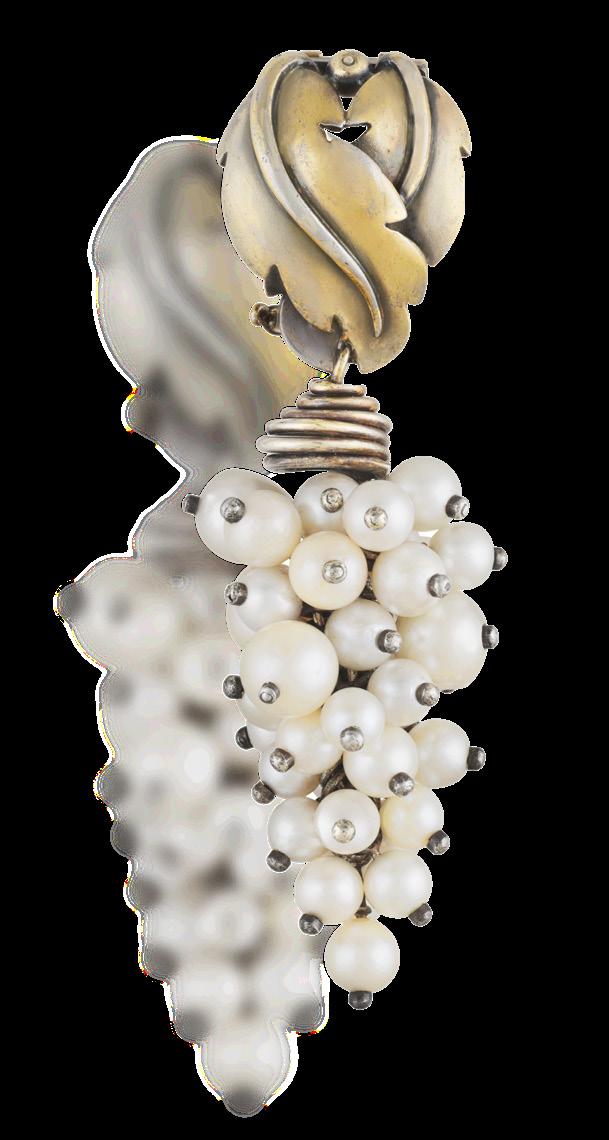
59
RENÉ BOIVIN
A RARE PAIR OF CULTURED PEARL PENDENT EARCLIPS, CIRCA 1950
Each designed as a cluster of grapes, with cultured pearls of cream tint, suspended from a polished vine leaf surmount, mounted 18K gold, signed René Boivin, with maker’s mark ‘RB’ for René Boivin, French assay marks, length 5cm
€ 8,000 - 10,000
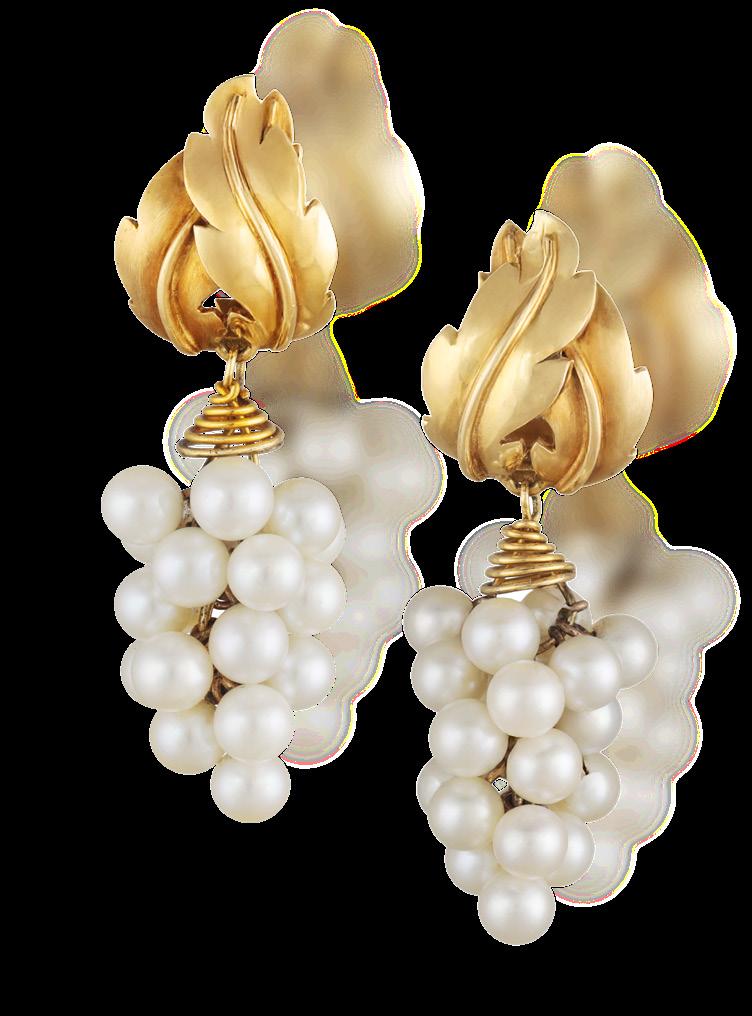
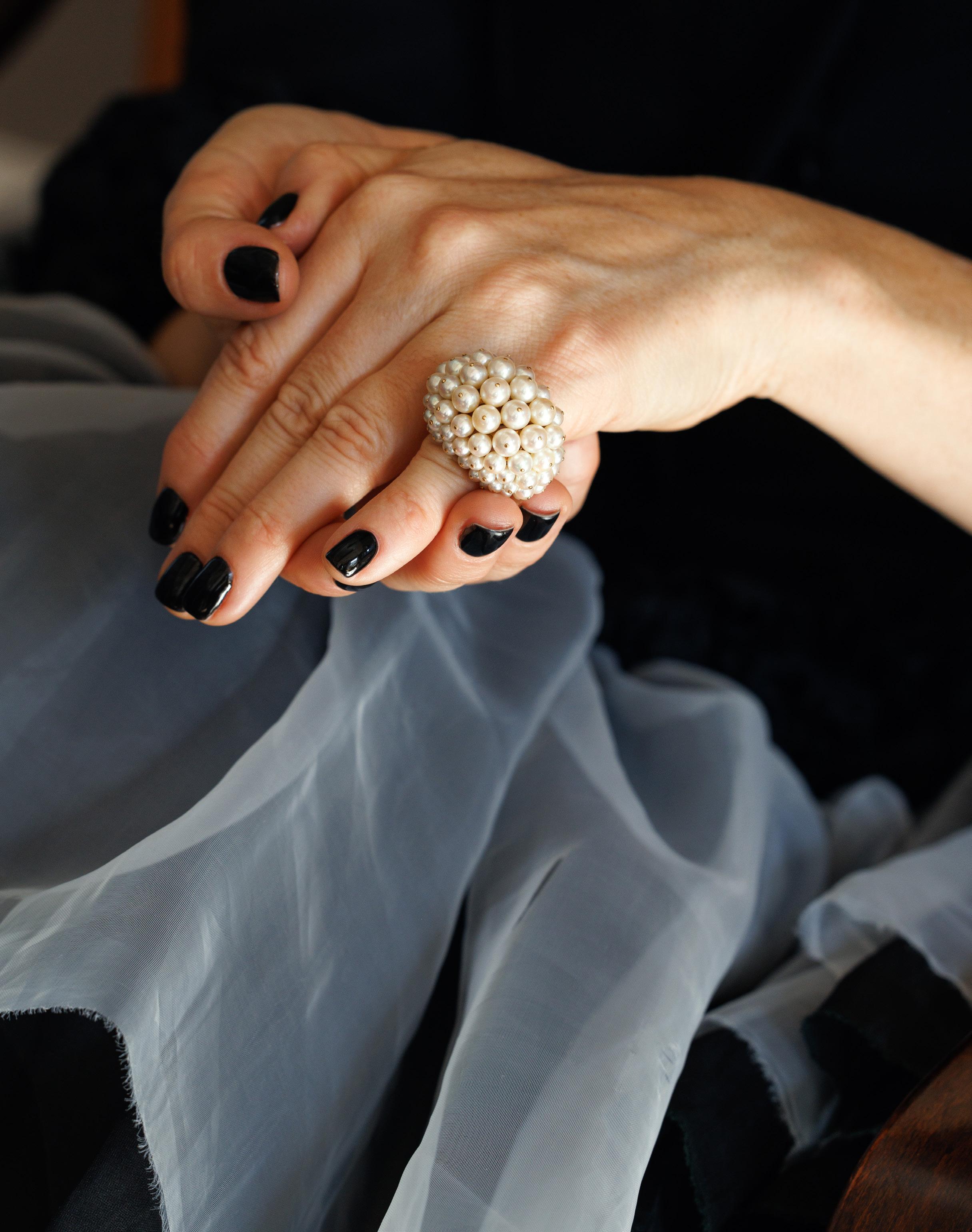
‘GROSEILLES’
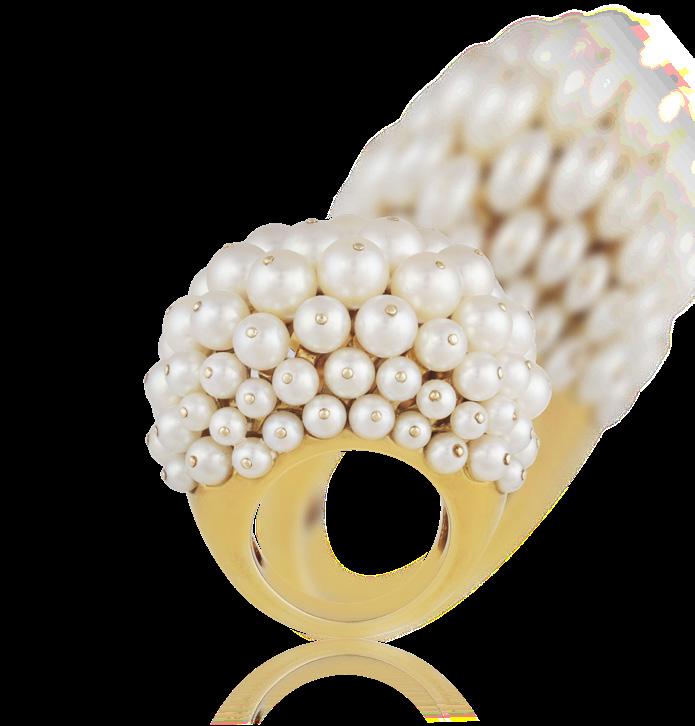
Of bombé design, set with graduated cultured pearls, each punctuated with dot gold detailing, mounted in 18K gold, signed René Boivin, with maker’s mark ‘Sté RB’ for René Boivin, French assay mark, with maker’s case, ring size I½
(Probably a design from Juliette Moutard, later reinterpreted by Boivin designer, Marie-Caroline de Brosses)
€ 15,000 - 25,000
A similar ring is illustrated, page 388, ‘René Boivin, Paris’, by Francoise Cailles, éditions de l’Amateur.

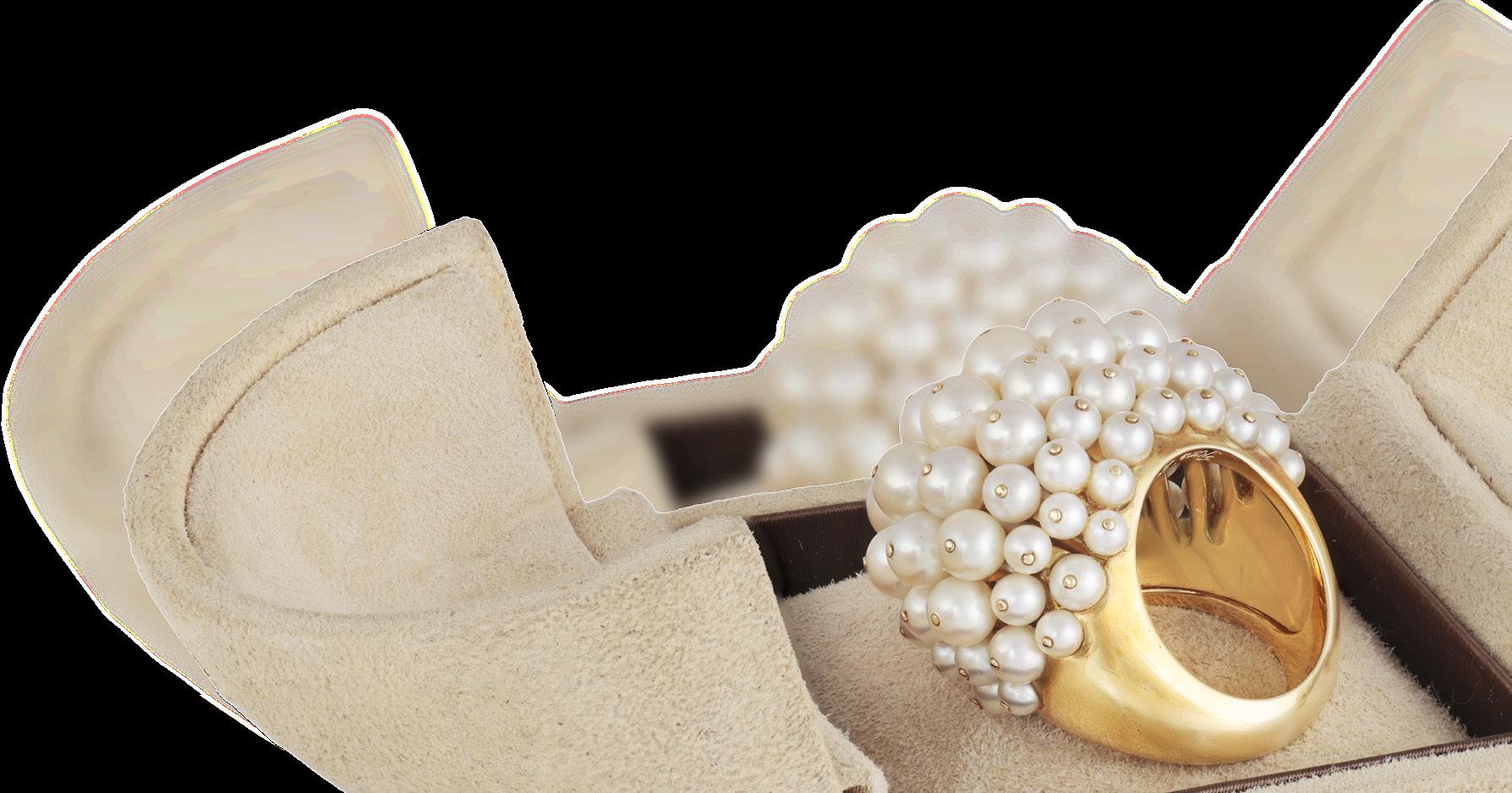
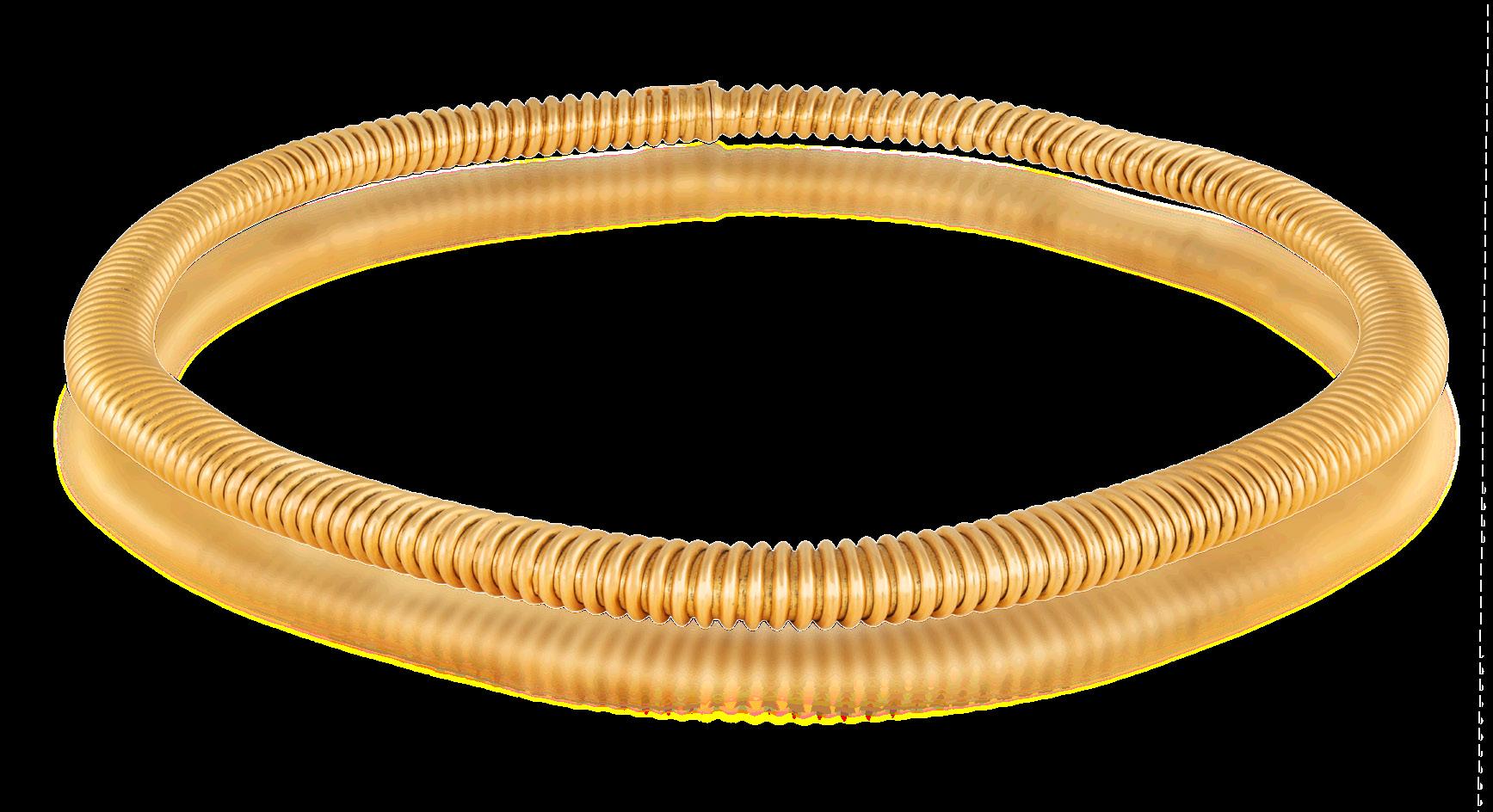
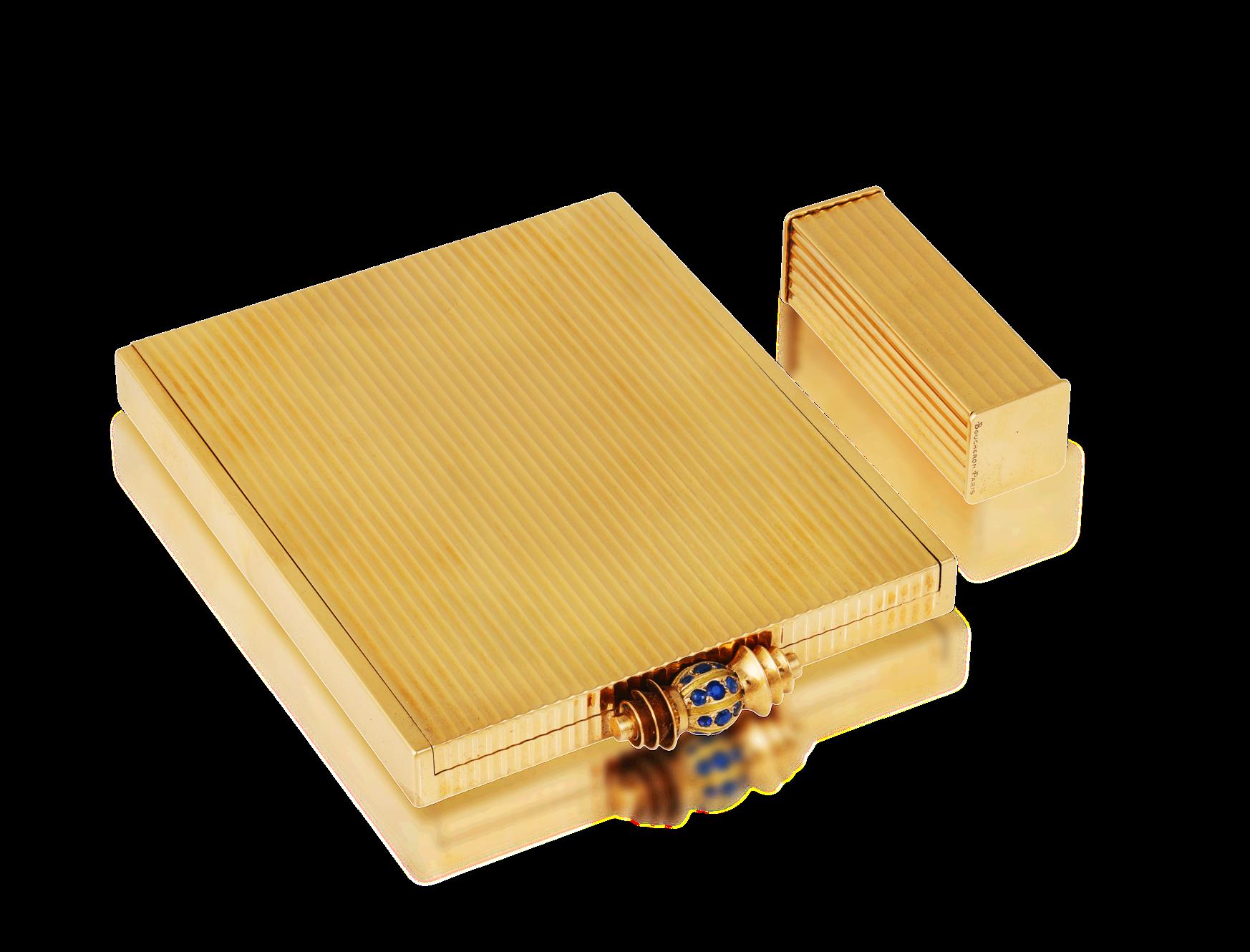
BOUCHERON. A GOLD AND SAPPHIRE COMPACT, WITH MATCHING LIPSTICK HOLDER, FRENCH, CIRCA 1935-40
The rectangular powder compact, the exterior with reeded detailing with polished sides, the thumbpiece embellished with circular-cut sapphires between circular scrolls, opening to reveal a powder compartment and a mirror, in 18K gold, signed Boucheron Paris, patent mark BTE SGDG, French assay mark, numbered 864, length 9.4cm (excluding the thumpiece), width 8cm, depth
Together with a lipstick case of similar de, signed Boucheron Paris, numbered 15183, with maker’s mark ‘SAM’ for Strauss, Allard & Meyer, French assay mark, length 5.1cm, with fitted pouch for both, total gross weight approx. 270.4g
Strauss, Allard & Meyer was a Parisian workshop between 1919-1941, located 11 place des Vosges. One of the most prominent box makers in Paris between the two wars. They worked for Boucheron, Van Cleef & Arpels, Cartier amongst many other prestigious jewellery houses.
63
A RETRO AMETHYST RING, FRENCH, CIRCA 1940
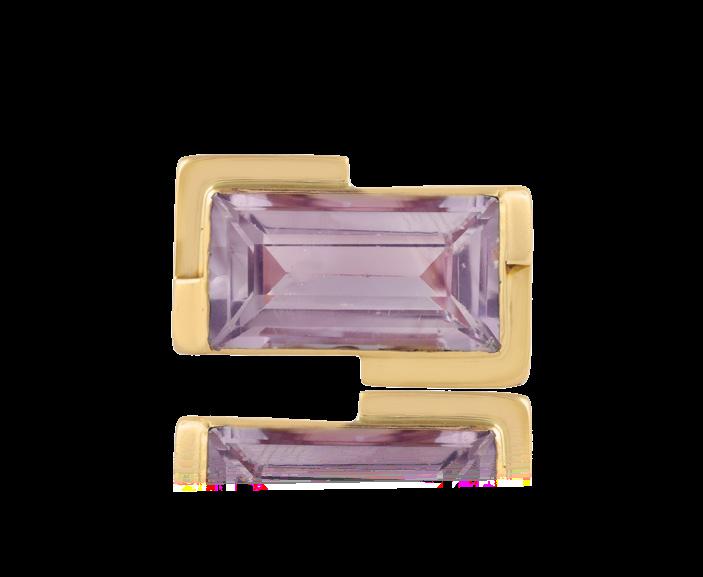
Of tank design, the elongated rectangular-cut amethyst weighing approximately 11.00cts, horizontally-set within collet-setting, to a geometric pierced mount, ed in 18K gold, with maker’s mark ‘MD’, French assay mark, ring size F
€ 1,200 - 1,800
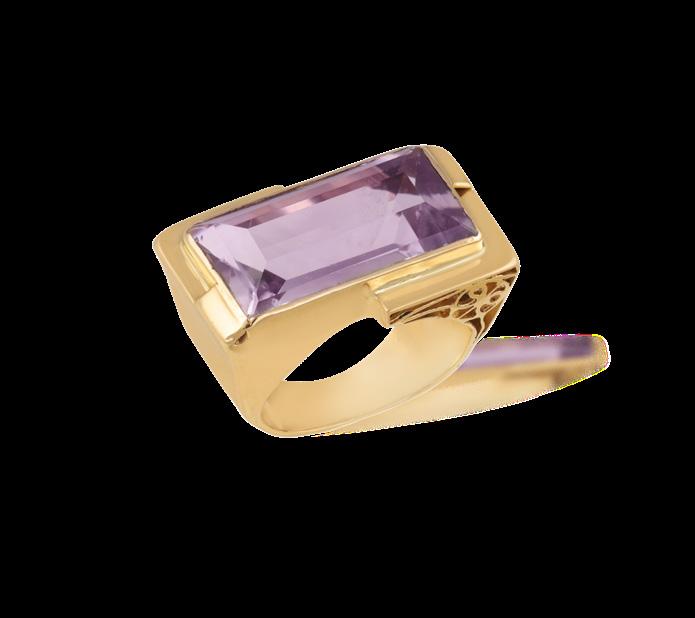
64
AN ART DECO CHRYSOPRASE AND ROCK CRYSTAL BRACELET, FRENCH, CIRCA 1930
Designed as a series of sugarloaf-shaped green chrysoprase cabochons, between openwork rock crystal links, with polished gold connectors, mounted in 18K gold, with maker’s mark ‘MC’ for Maximo Cuesta, French assay marks, length 19cm
€ 8,000 - 9,000
Lorenzo Marzo (1865–1929) was a Spanish jeweller, who relocated to Paris in the early 1890s and founded his own workshop in 1901. In 1911, he entered a ten-year partnership with Eugène Laillet under the name Marzo & Laillet. Following Lorenzo Marzo’s death in 1929, the business was taken over by his son Rafael Marzo.
The maker’s mark registered by Lorenzo Marzo consisted of a pair of pincers flanked by the initials “LM” inside a horizontal lozenge. Other pieces associated with the firm feature the initials “MC” in a similar lozenge, marked with a three-legged rooster. This mark corresponds to Maximo Cuesta, whose registration was active from 1919 to 1936. Cuesta was connected to the family through Rafael Marzo’s marriage to Conchita Cuesta.
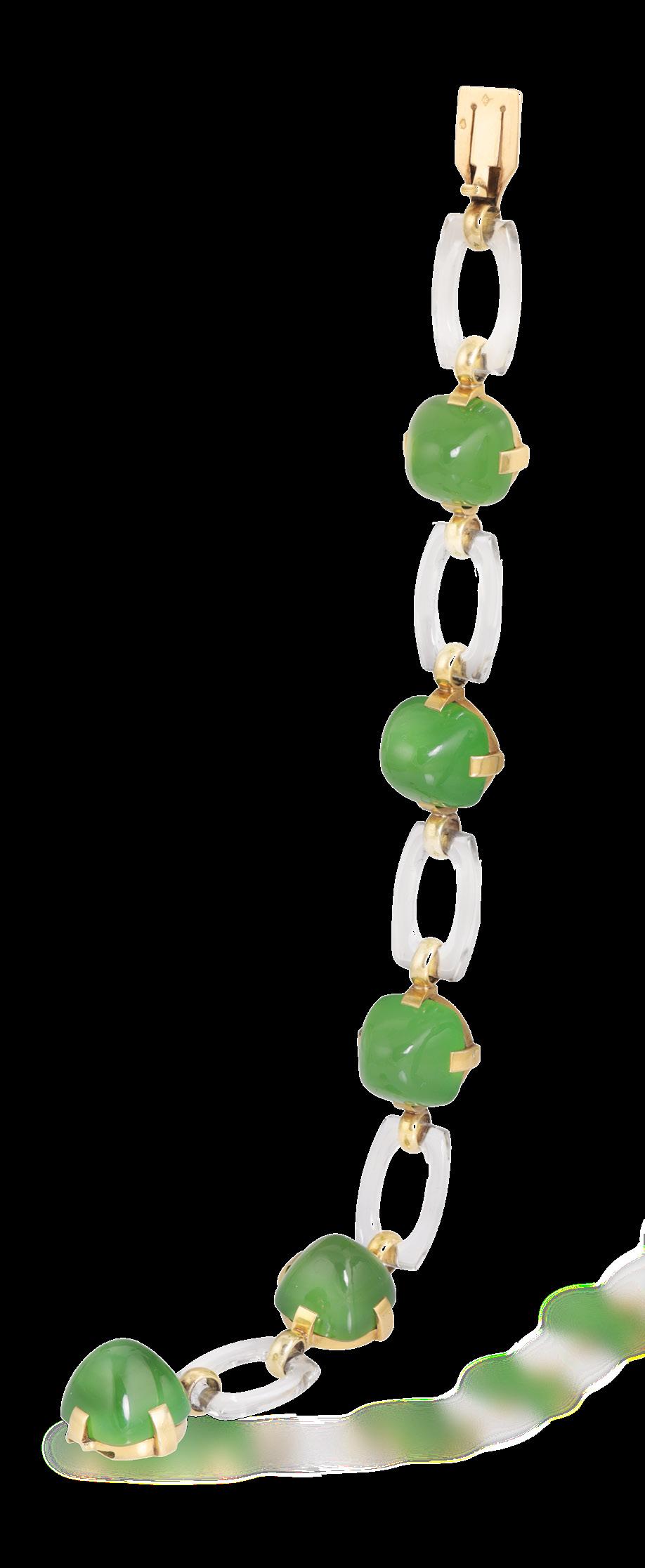
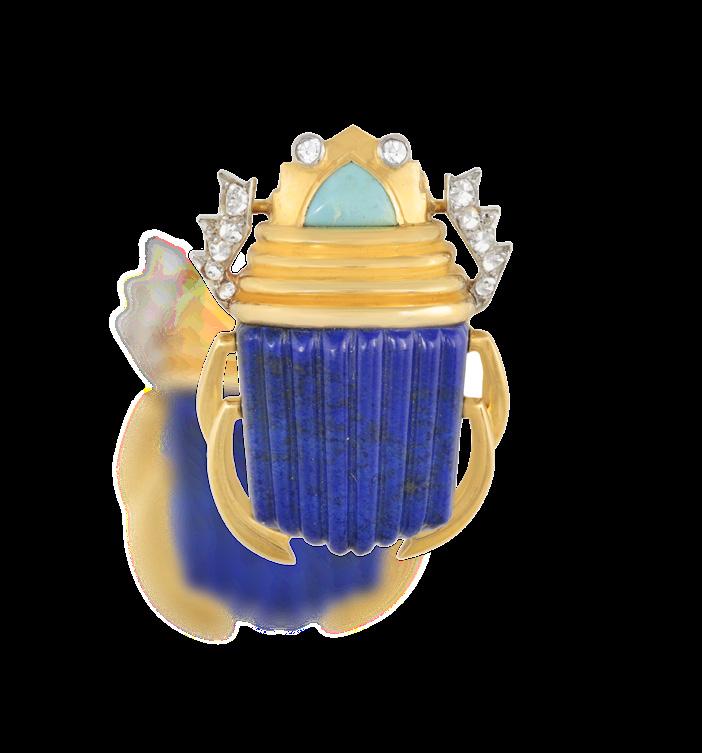
The stylised scarab, with carved lapis lazuli body, a turquoise cabochon head, highlighted with single-cut diamond eyes and rose-cut feet at the front, mounted in 18K gold and platinum, signed Cartier Paris, with maker’s mark, French assay marks, with maker’s case, length 2.7cm
€ 15,000 - 20,000
An identical brooch is illustrated, page 164, in the catalogue of the Cartier exhibition, L’Art de Cartier at the Musée du Petit Palais between October 1989-January 1990, by Hans Nadelhoffer.
The discovery of Tutankhamun’s tomb in 1922 sparked a cultural phenomenon that extended far beyond archaeology. Throughout the 1920s and 1930s, the Egyptian Revival style swept across the decorative arts, leaving its mark on everything from ceramics and prints to furniture and, most strikingly, jewellery. Museums in Cairo and touring exhibitions in London and Paris further solidified the global fascination, showcasing the dynamic dialogue between age-old myths and contemporary design.
The era’s fascination with ancient Egypt found a perfect partner in the materials and aesthetics of Art Deco: platinum, diamonds, onyx, and vibrant enamel brought ancient motifs into the modern age. Designers reimagined scarabs, sphinxes, lotuses, and hieroglyphs through the lens of contemporary luxury, resulting in pieces that were at once reverent and boldly forward-looking.
Among the jewellers of the time, Cartier distinguished itself not merely by mimicking Egyptian symbols but by engaging directly with history. Louis Cartier developed a personal passion for Egyptian antiquity, travelling and acquiring genuine archaeological objects from dealers who handled finds from ongoing excavations. Rather than replicate ancient designs, Cartier incorporated these authentic artifacts such as scarabs, faience fragments, and deity heads into his own creations, elevating them with platinum and diamonds to craft sophisticated Art Deco jewels that were both historically rooted and stylistically avant-garde. This approach set Cartier apart, offering clients pieces that were not just inspired by the past but built from it.
Egyptian-inspired jewellery is defined by its rich symbolism and vibrant palette. Gold, regarded as the skin of the gods, and silver, seen as divine
bone, were used alongside vivid lapis lazuli, symbolising the intense, sky-like blue hair of the deities. Turquoise and green hues evoked the protective qualities of water and the Mediterranean. Jewellers embraced these colours and symbols, often incorporating amulets like the scarab, which in ancient mythology was observed pushing its ball in the desert, as a metaphor for the sun’s journey at dawn and a symbol of rebirth, cosmic order, good luck, and fortune.
With the advent of global conflict, significant material shortages and restrictions rapidly transformed the landscape of jewellery production. The scarcity of platinum and diamonds forced designers to adopt innovative solutions without sacrificing the aesthetic values of their style. In response, jewellers began experimenting with advanced alloys and a wider array of semi-precious stones, reinterpreting traditional motifs with alternative materials that mimicked the allure of their predecessors. These necessary adaptations led to creative breakthroughs, ensuring that the symbolic richness and visual impact of their creations endured even in times of adversity.
Even after the height of its popularity at the beginning of the 19th century, Egyptomania continued to resonate through popular culture. The mid-to-late 20th century saw waves of renewed interest thanks to cinema, particularly Hollywood films of the 1960s through the 1980s featuring mummies, curses, and pharaohs. These narratives reignited public fascination with Egypt’s mystique, sustaining its influence in both fashion and fine jewellery. From screen to studio, the mythos of ancient Egypt remained a rich source of inspiration and proving that, even decades later, its magic still had the power to captivate and create.
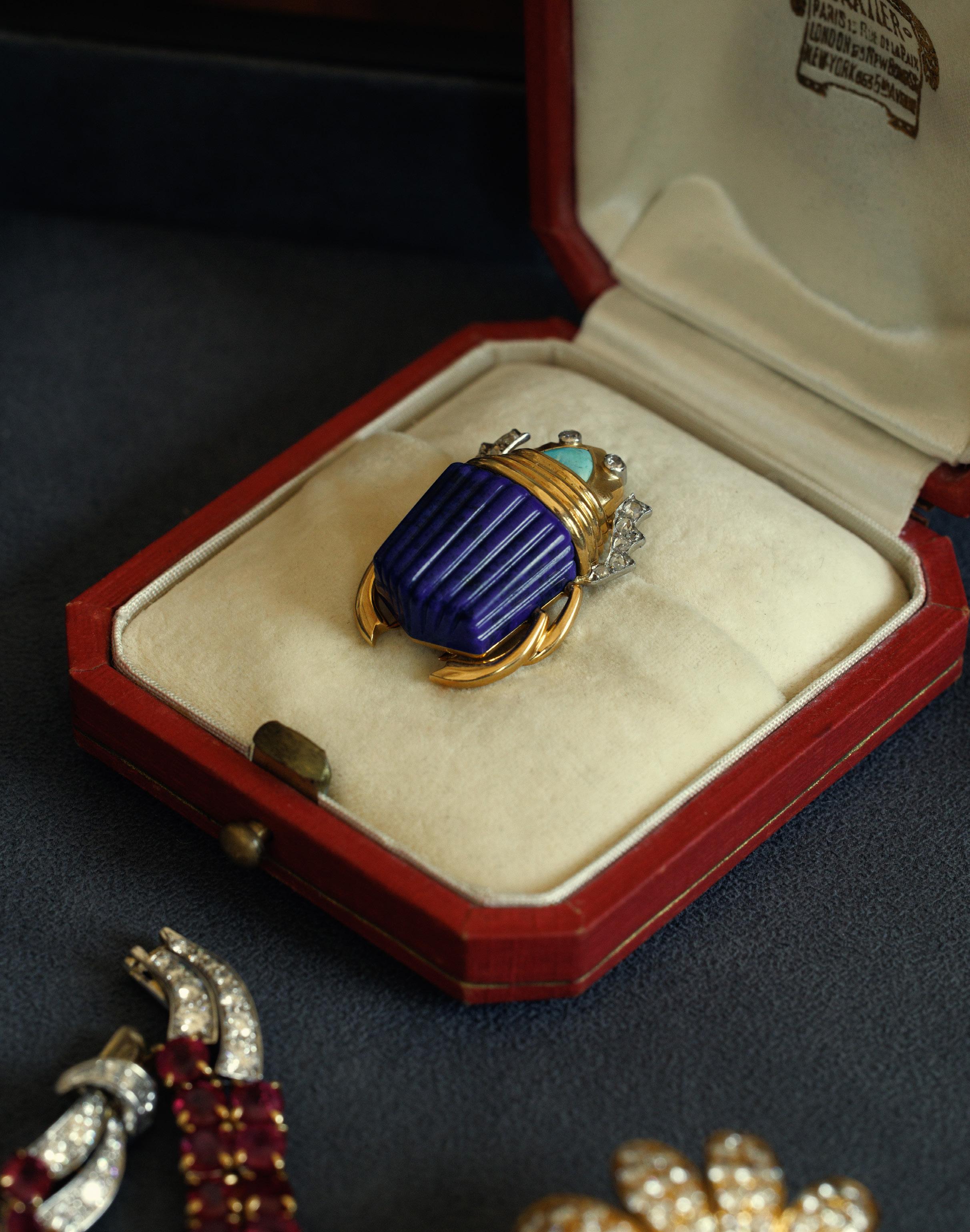
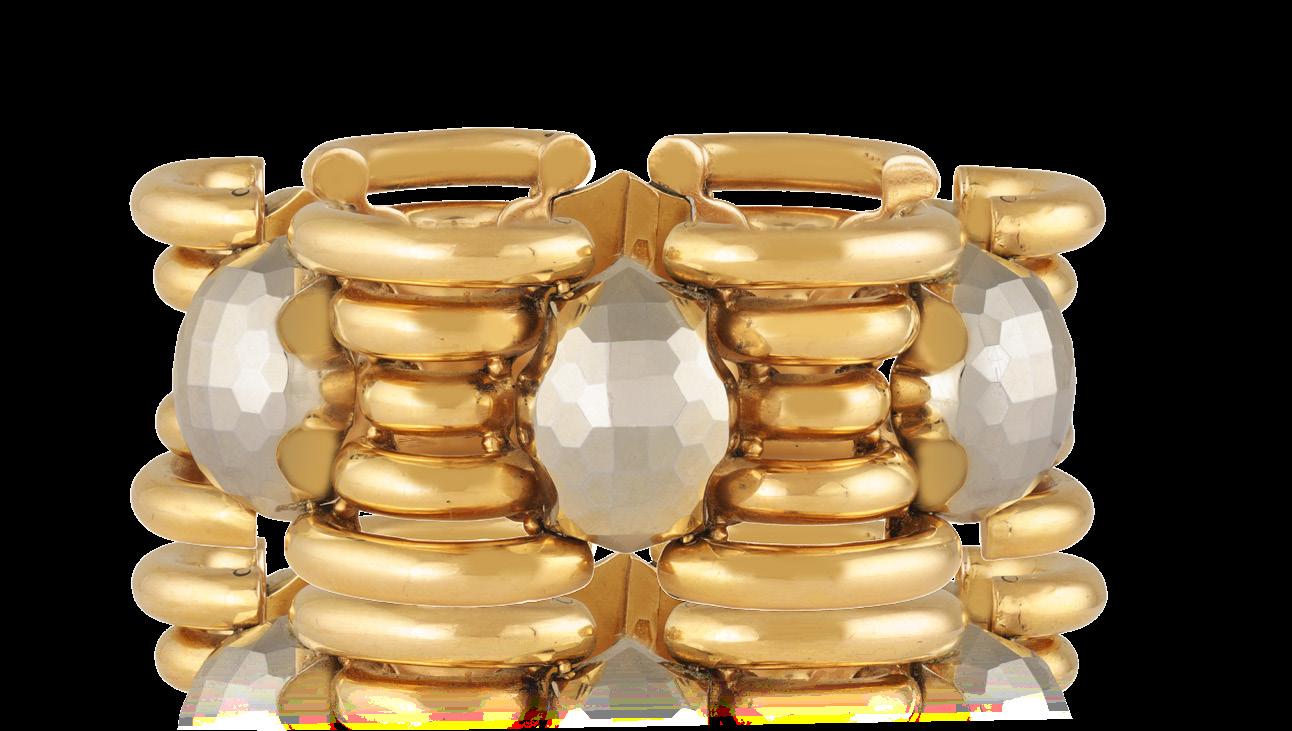
A RETRO GOLD BRACELET, ITALIAN, CIRCA 1940
Of bi-coloured bombé design, composed of openwork arched links and oval-shaped faceted motifs, in 18K gold, Italian registry mark between 1934-1944, length 19.5cm
€ 8,500 - 9,500
67
A RETRO RUBY AND DIAMOND CLIP BROOCH, FRENCH, CIRCA 1940
Of openwork scroll design, set with a cluster of circular-cut rubies accented with a line of brilliant-cut diamonds, mounted in 18K gold, with maker’s mark ‘GR’, numbered 9256, French assay mark, length approx. 2.9cm, width approx. 3.7cm
€ 1,500 - 2,000
68
A RETRO DIAMOND RING, CIRCA 1945
Of tank design, the frontispiece designed as stylised bow pavé-set with old brilliant and rose-cut diamonds, to a polished gold mount, mounted in platinum and 18K gold, diamonds approximately 1.20cts total, ring size L
€ 2,500 - 3,000
69
A RETRO GOLD BRACELET, ITALIAN, CIRCA 1940
Composed of a continuous row of fancy-shaped openwork motifs with reeded detailing, in 18K gold, Italian registry mark between ‘1934-1944’, length 19.5cm
€ 4,000 - 5,000
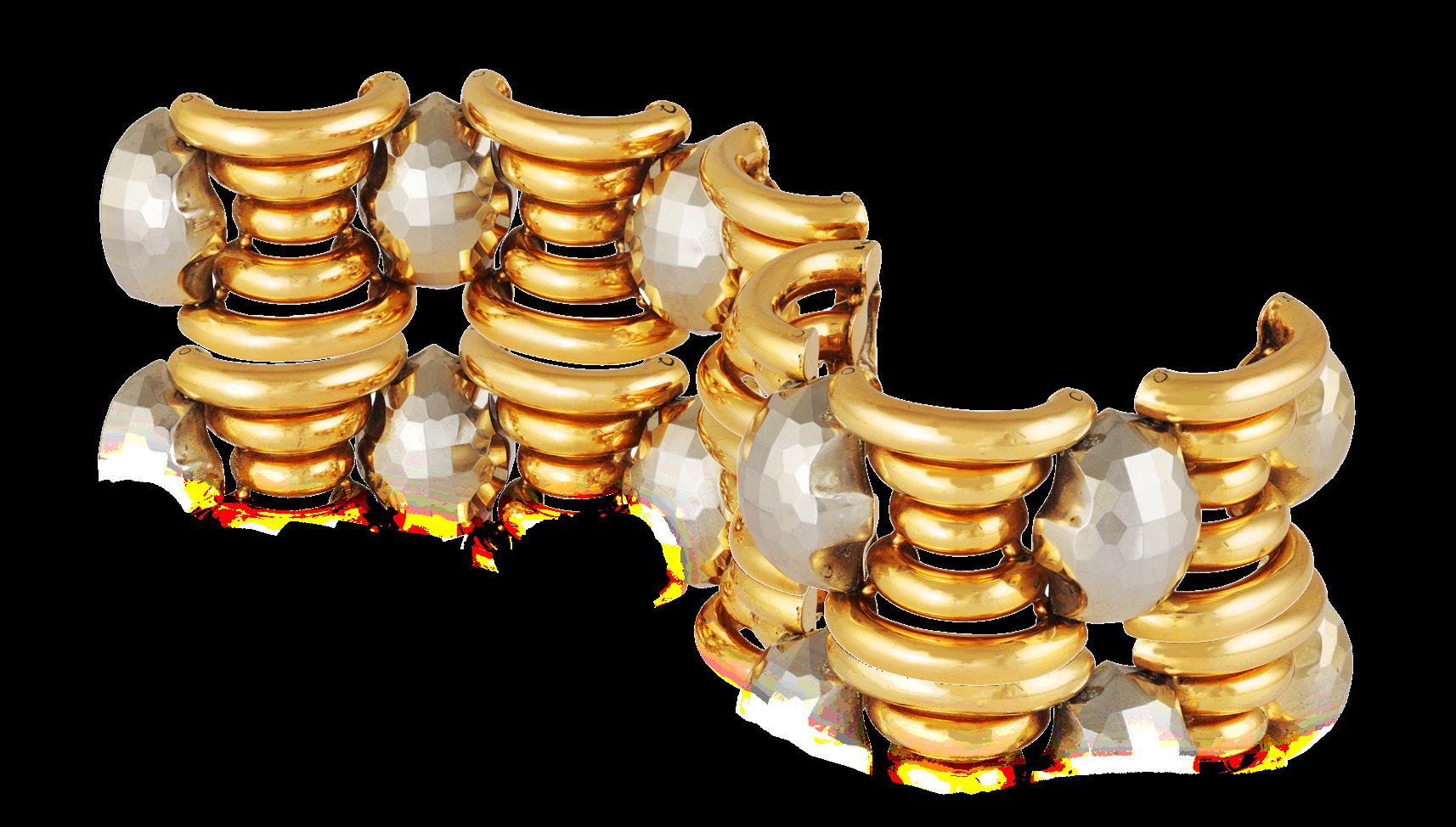
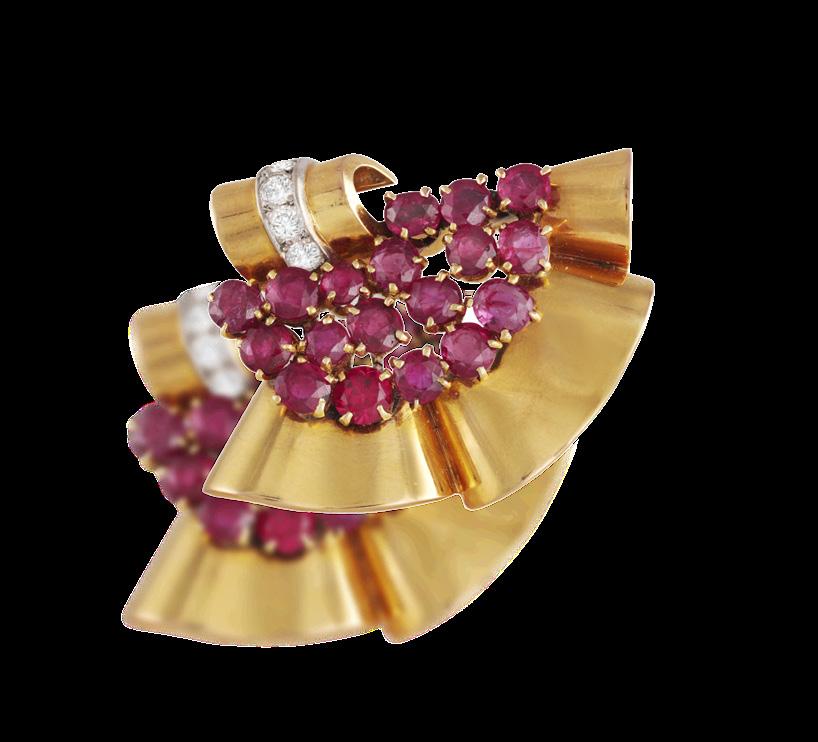
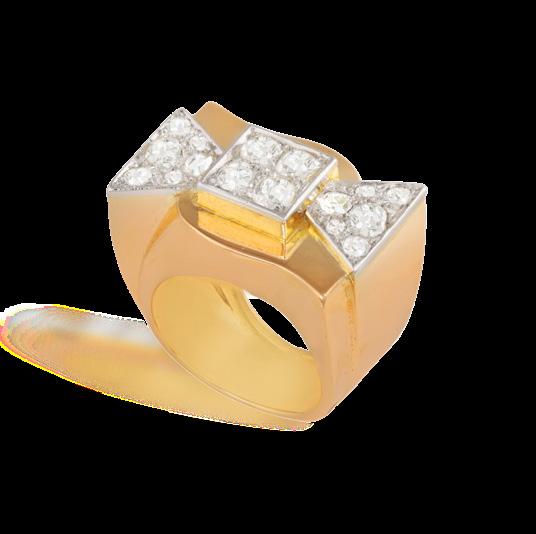
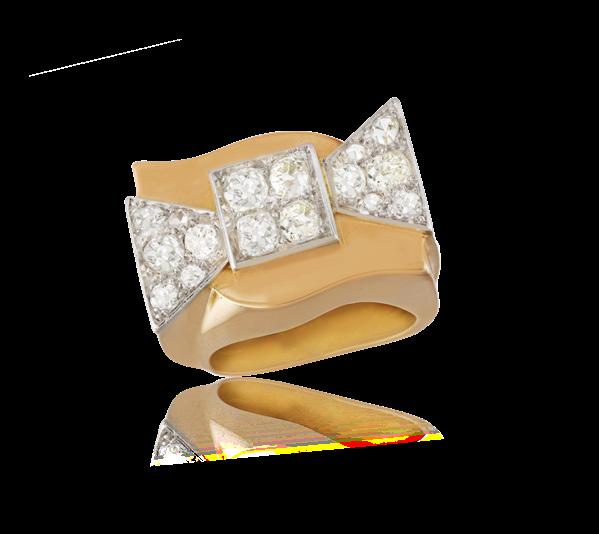
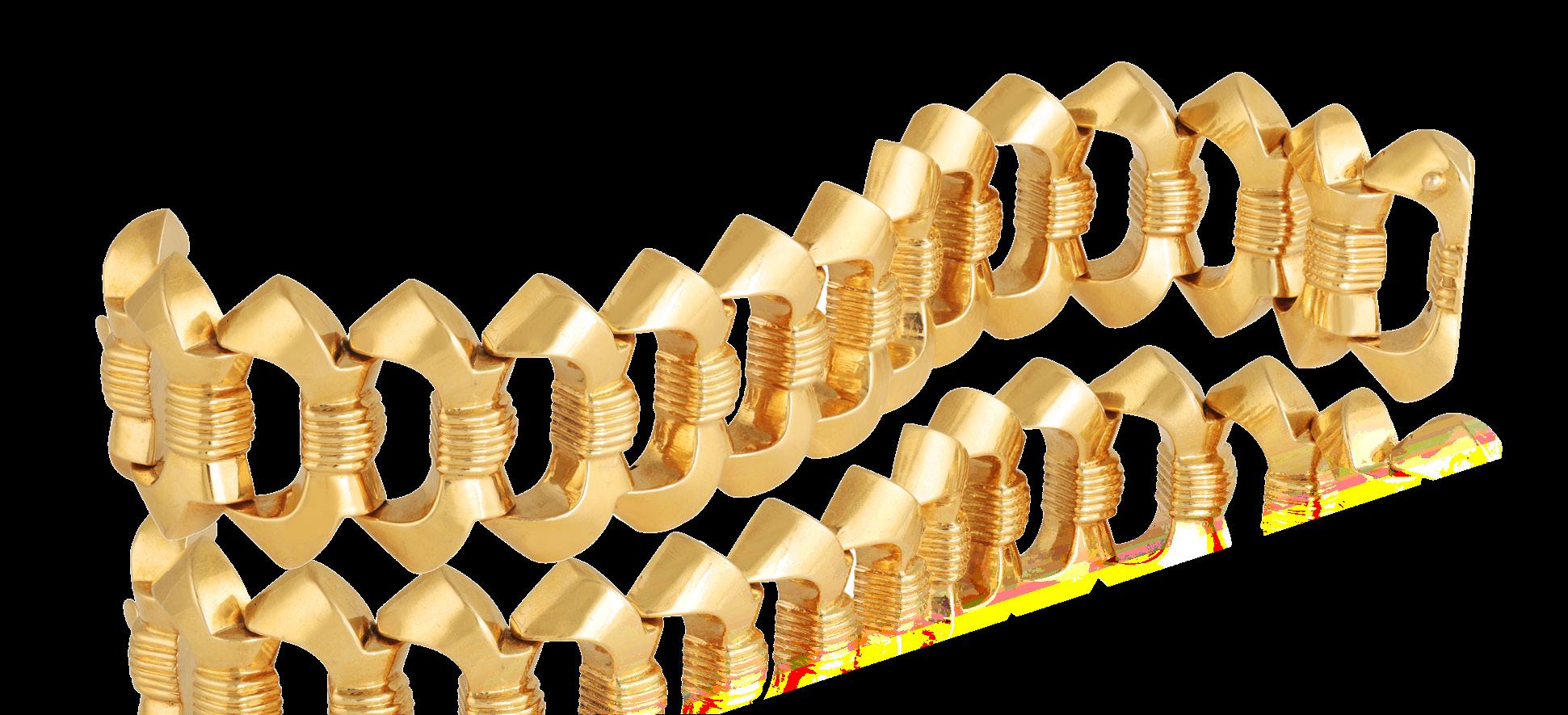
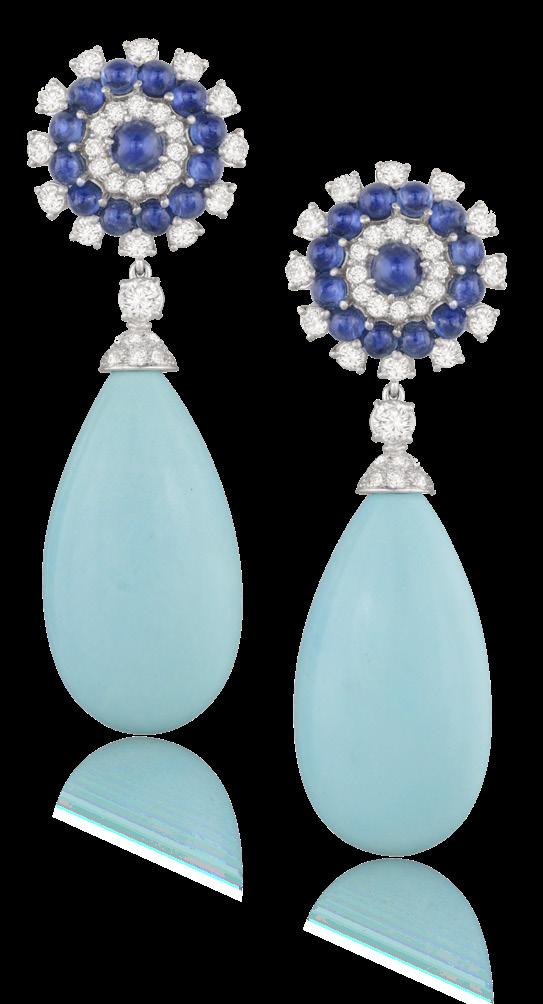
A PAIR OF TURQUOISE, SAPPHIRE AND DIAMOND PENDENT EARCLIPS
Each turquoise drop with brilliant-cut diamond cap, to an old brilliant-cut diamond connector, suspended from a circular-cut sapphire cabochon and brilliant-cut diamond surmount, mounted in 18K gold and platinum, signed Bvlgari, length 5.5cm 71
A SAPPHIRE AND DIAMOND BROOCH, CIRCA 1950
Of openwork star shape design, set with circular-cut sap phire cabochons, highlighted with brilliant-cut diamonds throughout, mounted in 18K gold, signed Fürst, sapphires approximately 25.00cts total, diamonds approximately 2.20cts total, length 4.3cm
€ 6,000 - 8,000
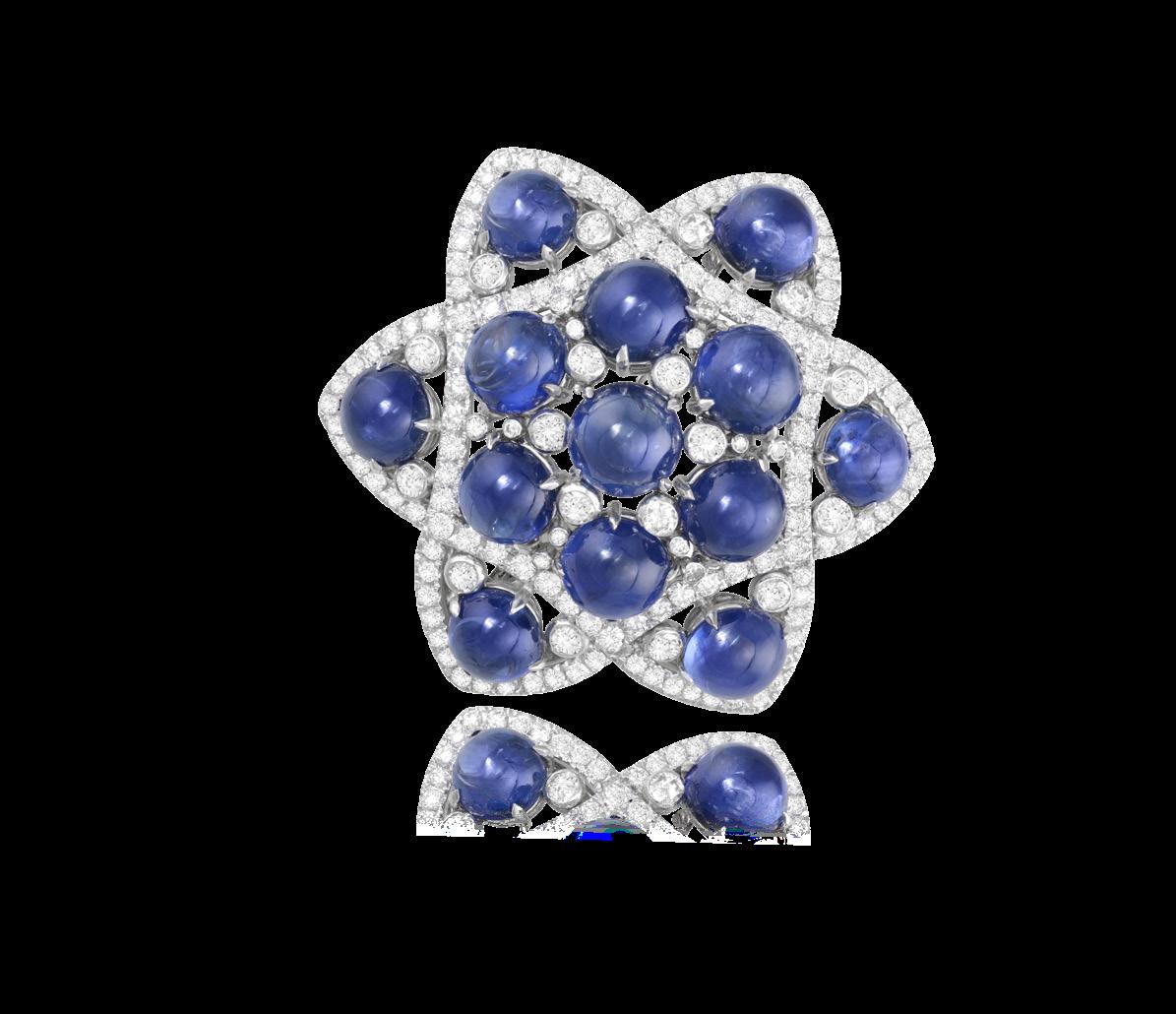
In the 1850s, Moric Fürst , an Austro-Hungarian jeweller, relocated to Turin, Italy, to establish his jewellery business. He opened a retail store in the Galleria Subalpina, quickly becoming a leading supplier to the Savoyard court. Between 1861 and 1865, Turin served as Italy’s capital, solidifying its status as a centre for gold and precious stones.
Moric and his wife had nine children, five of whom became jewellers. Their son, Renzo Emanuele, succeeded Moric in managing the atelier. Renzo expanded the family business by opening shops in Rome, Genoa, and Milan,
with the Rome boutique located on the glamorous Via Veneto, epitomising the Italian dolce vita.
After World War II, the Fürst shops gained renown for crafting rare and unique pieces, handmade exclusively for select customers, including royalty and Hollywood stars. Notably, Audrey Hepburn wore a pearl necklace with a very similar pendant to this lot, by Fürst in the 1953 film Roman Holiday. In the movie’s final scene, she portrayed Princess Ann, a young royal exploring Rome incognito. Following the film’s completion, Hepburn returned the necklace to the jeweller, accompanied by a signed photograph.
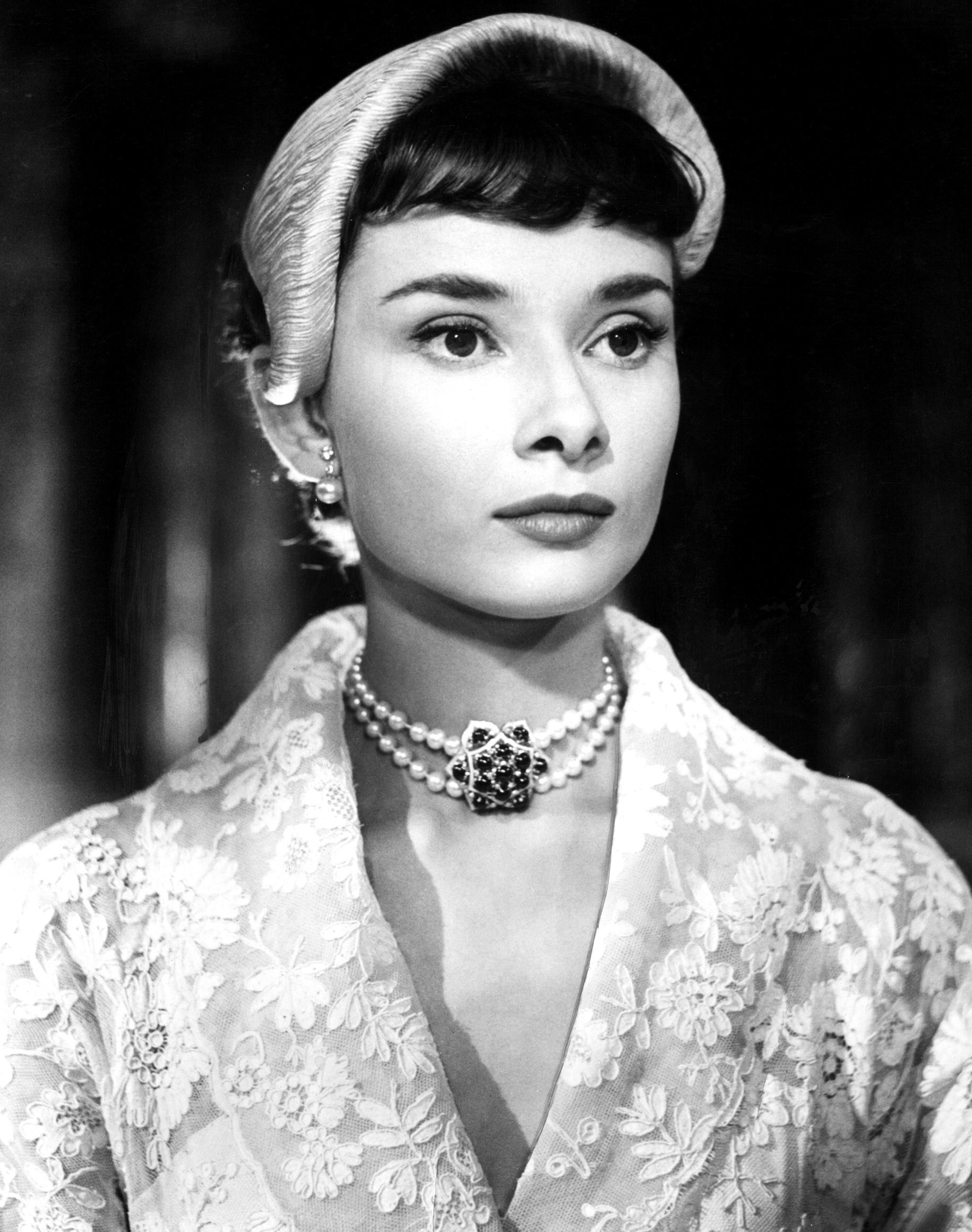
72
TIFFANY & CO. A CITRINE LINE BRACELET, CIRCA 1940
Of articulated design, the continuous row of square-cut citrines, mounted in 18K gold, signed Tiffany & Co., approximately 18.00cts total, length 18.4cm
€ 6,000 - 7,000
74 A CITRINE AND DIAMOND DRESS RING, CIRCA 1950
Set horizontally, the cut-cornered rectangular citrine weighing approximately 9.50cts, within a four-claw setting, between broad shoulders formed as openwork loops, accented with old brilliant and single-cut diamonds, mounted in 18K gold, indistinct maker’s mark and hallmarks, ring size L
€ 1,400 - 1,800
73
STERLÉ A CITRINE AND DIAMOND COCKTAIL RING, CIRCA 1950
The raised oval-shaped citrine weighing approximately 41.00cts, within a multiple-claw setting highlighted with brilliant-cut diamonds, to a reeded mount with ropetwist detailing, mounted in 18K gold, signed Sterlé Paris, numbered, with maker’s mark, French assay mark, ring size M½
€ 5,000 - 6,000
75
BOUCHERON A CITRINE AND DIAMOND BROOCH, CIRCA 1940
Of foliate design, the triple gold and circular-cut citrine scroll, accented with single-cut diamonds, mounted in 18K gold and platinum, signed Boucheron Paris, with maker’s mark ‘CHP’ for Charles Profilet, French assay marks, length 5.8cm
€ 7,000 - 8,000
Charles Profilet was a workshop in Paris, known to be one of René Boivin’s favourite worshops. They also worked for renown names such as Van Cleef & Arpels, Boucheron, amongst others.


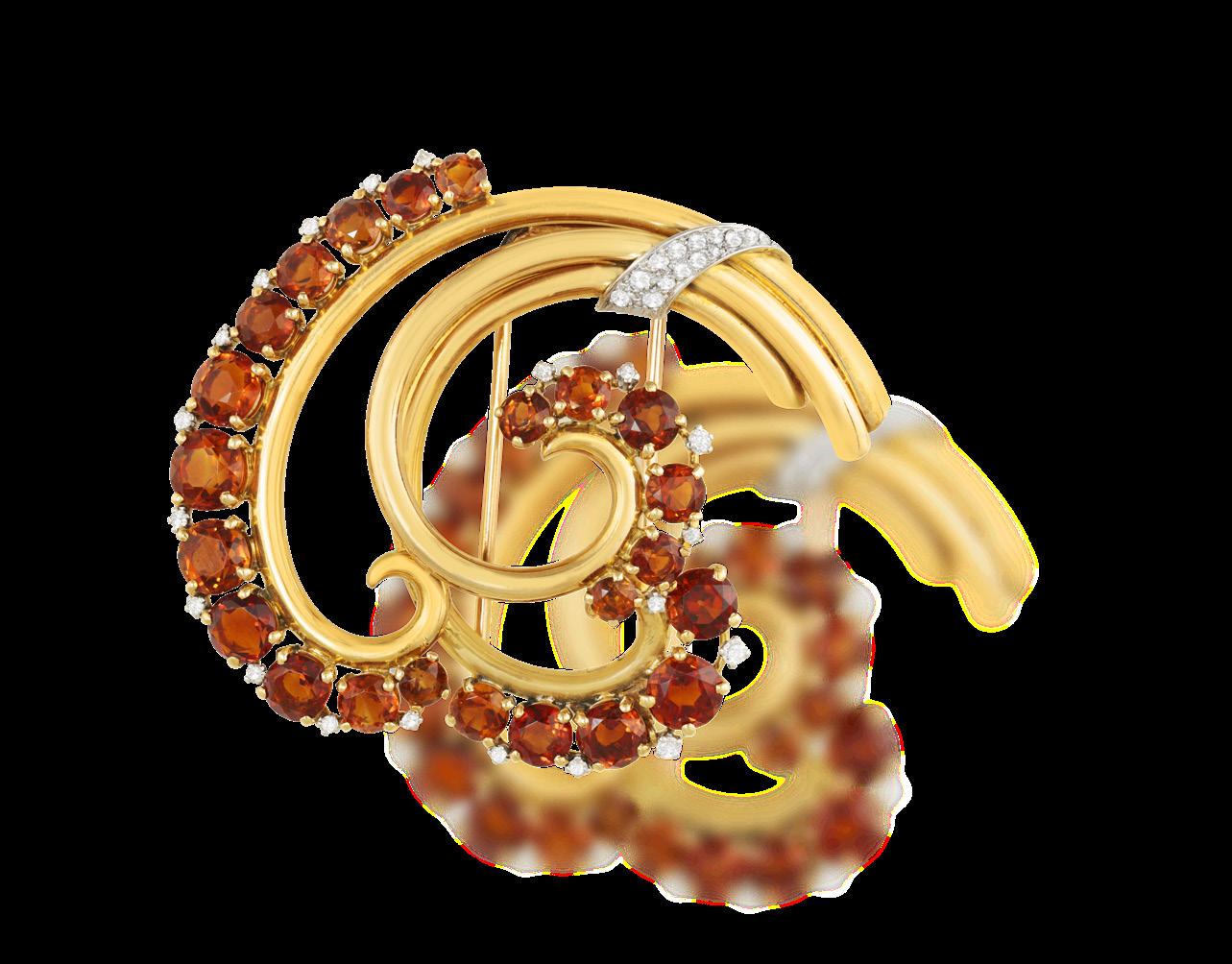
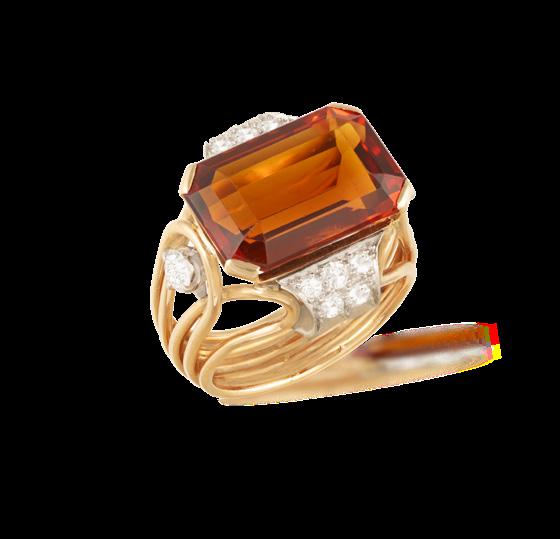
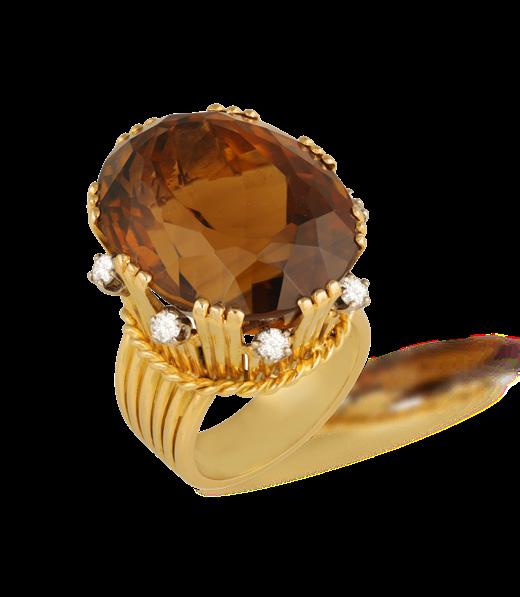

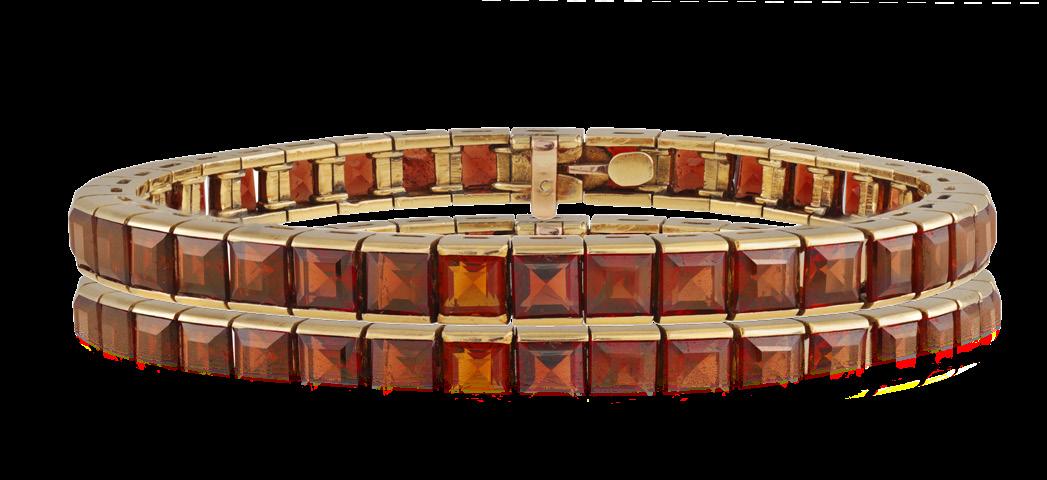
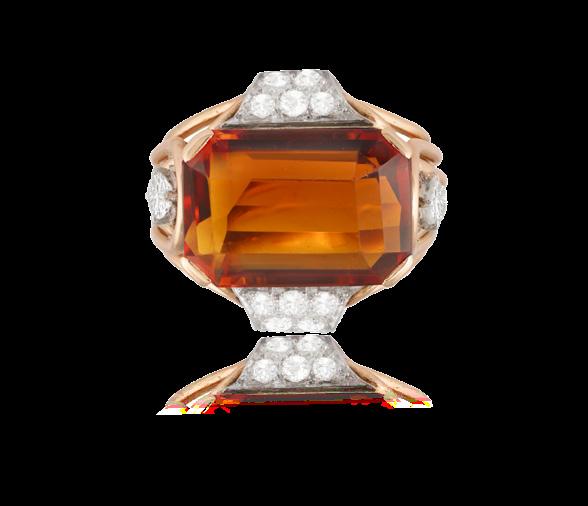
76
CARLO WEINGRILL
A RETRO CHRYSOPRASE BRACELET, ITALIAN, CIRCA 1955
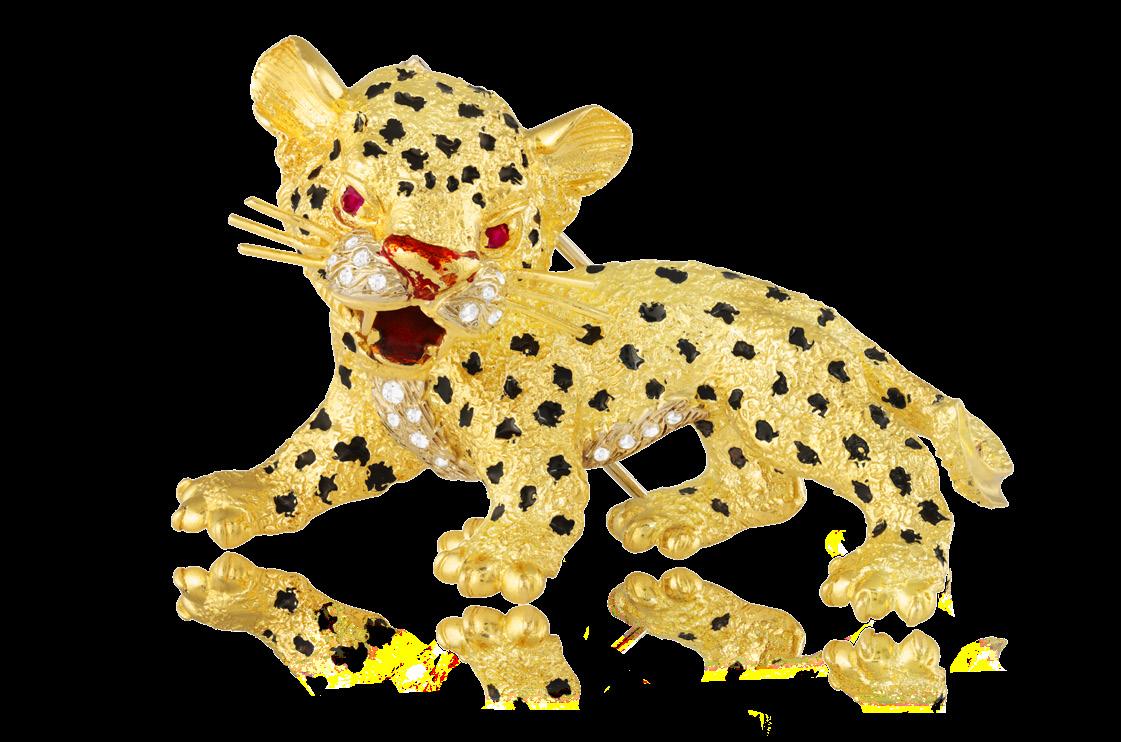
FRASCAROLO
AN ENAMEL, RUBY AND DIAMOND LEOPARD BROOCH, CIRCA 1960
Of continuous scrolling design, set with circular-cut chrysoprase cabochons interspersed with cylindrical hinges similarly set, mounted in 18K gold, with maker’s mark for Carlo Weingrill, Italian registry mark for ‘Carlo Weingrill between 1944-1968’, length 19.2cm
€ 6,500 - 7,500
78
A GEM-SET NOVELTY PENDANT, FRENCH, CIRCA 1960
The stylised bird with an oval-shaped star sapphire body, the head embellished with single-cut diamonds and circular-cut ruby eye, the tail set with three similarly-cut diamonds suspending a angel ropetwist tassel, to polished gold swirled feet, mounted in 18K gold and platinum, French assay marks, numbered 2880, length 5.4cm
€ 2,000 - 3,000
80
HERMÈS A GOLD BROOCH, CIRCA 1960
Designed as a riding crop, with ropetwist detailing, in 18K gold, signed Hermès Paris, French assay marks, with maker’s case ‘Hermès 24. Faubg St Honoré, Paris, length 5.4cm

Modelled as a roaring leopard, its textured body applied with black enamel dots, nose and tongue with red enamel, its whiskers and belly set with single-cut diamonds, to circular-shaped ruby eye details, mounted in 18K gold, with maker’s mark ‘FC’ for Frascarolo, Italian registry mark, width 6.6cm
€ 4,000 - 5,000
79
A MID 20TH CENTURY GOLD BRACELET, FRENCH, CIRCA 1955
Of bombé braided design, with reeded detailing throughout, in 18K gold, French assay marks, with gold security chain, length approximately 18.5cm
€ 5,500 - 6,500
81
A GOLD AND DIAMOND COCKTAIL RING
The openwork raised mount composed of scrolled textured leaf-shape motifs, cluster-set to the centre with brilliant-cut diamonds, mounted in 18K gold, French import marks for 18K gold and platinum, diamonds approximately 2.00cts total, ring size O
€ 3,500 - 4,500

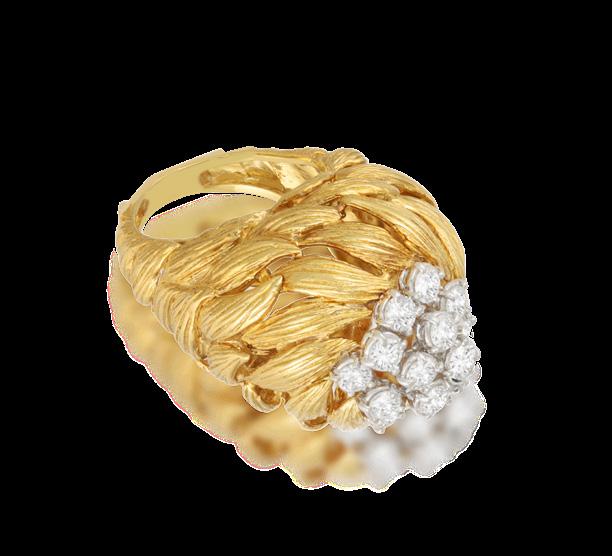
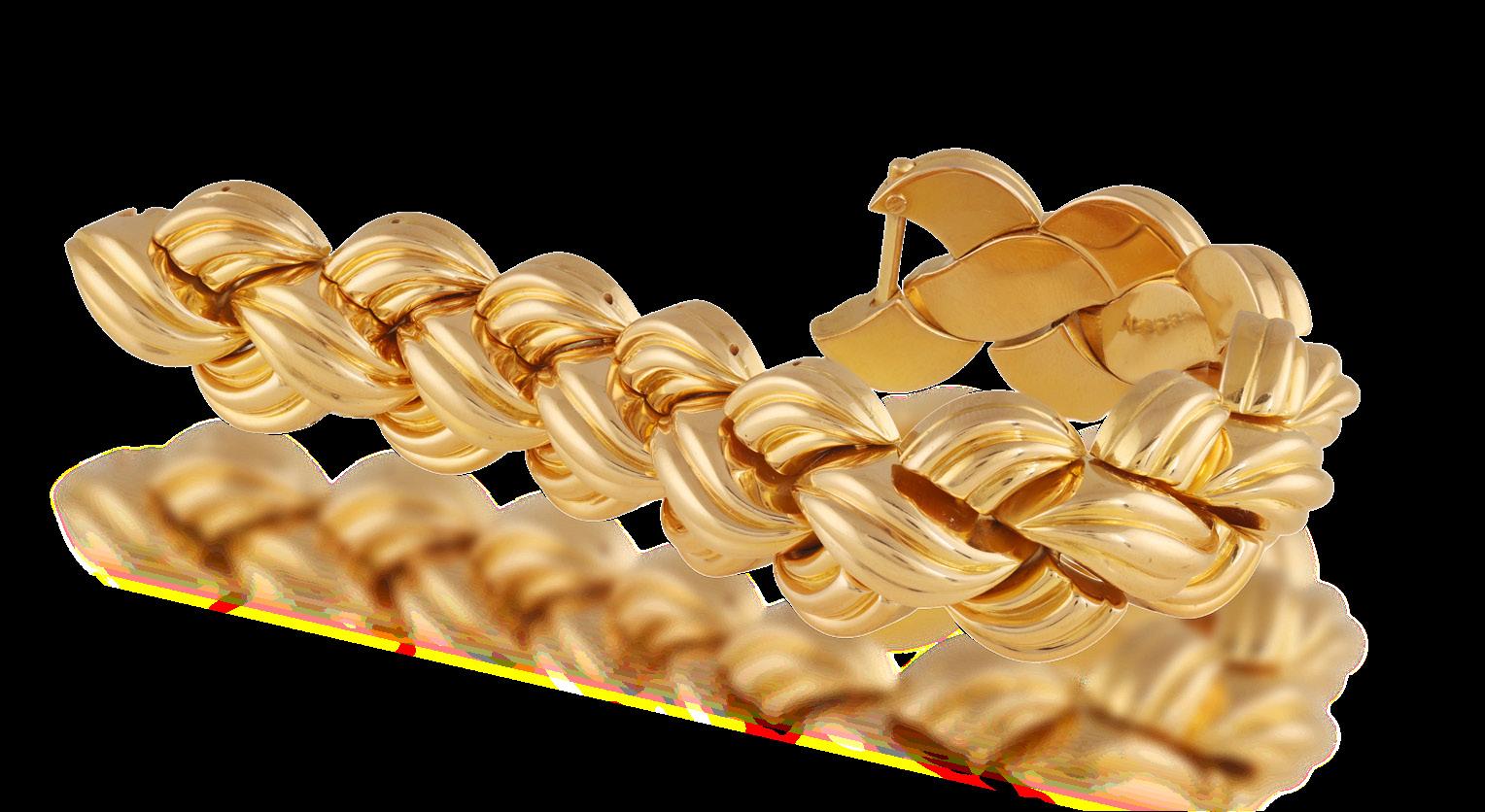
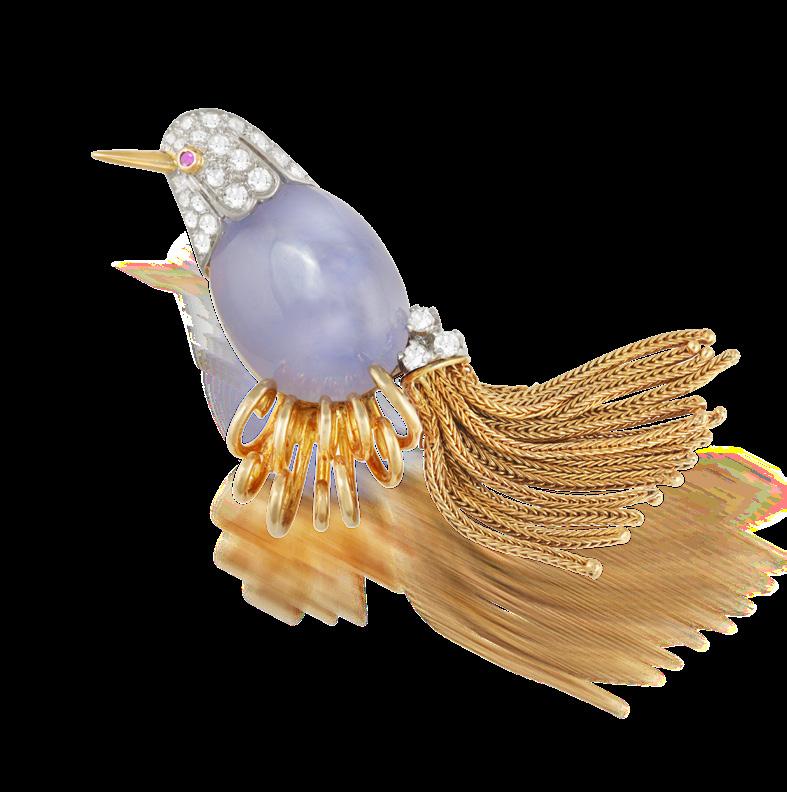
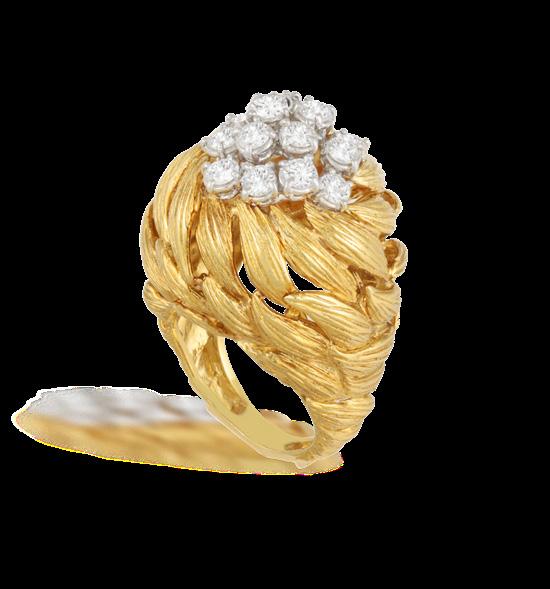
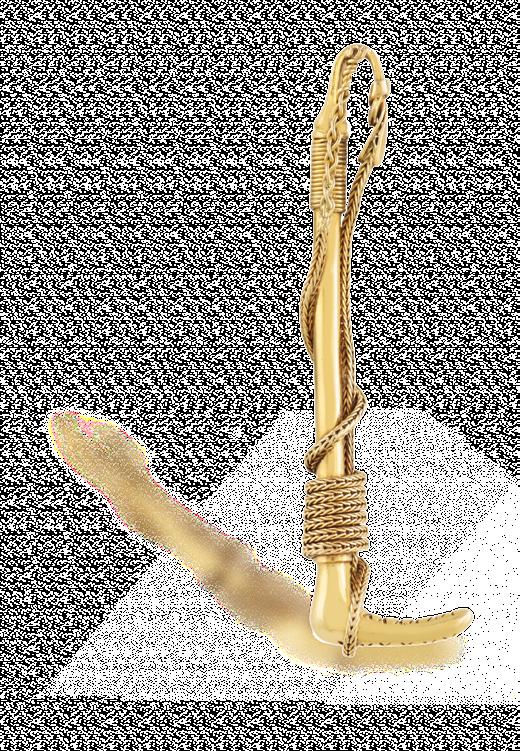


Of large rectangular form, all-over reeded decoration to the exterior, with a polished gold push-button thumbpiece, the hinger cover opening to reveal a plain polished interior, with openwork arm inside for securing contents, in 18K gold, signed Hast, stamped 750, W:10.9cm x L:8cm x depth 1cm, total gross weight approx. 216.7g
€ 10,000 - 15,000
83
The articulated bracelet composed of a series of graduated polished and brushed gold spheres, accented throughout with cultured pearls of white tint, mounted in 18K gold, with maker’s mark ‘TW’ or ‘WT’, length 18.8cm

The bi-coloured mount of arched domed design, pavé-set with brilliant-cut diamonds and highlighted with beaded detailing, to a similar beaded mount with faceted edges, mounted in 18K gold, diamonds approximately 2.20cts total, French import marks, ring size J⅔
€ 3,200 - 3,800
85
Composed of cable-chain and twisted loops with scrolled detailing links, to a swivel-clasp, in 9K gold, signed ABJ Australia, English maker’s mark and hallmark, length 71cm
€ 2,500 - 3,000


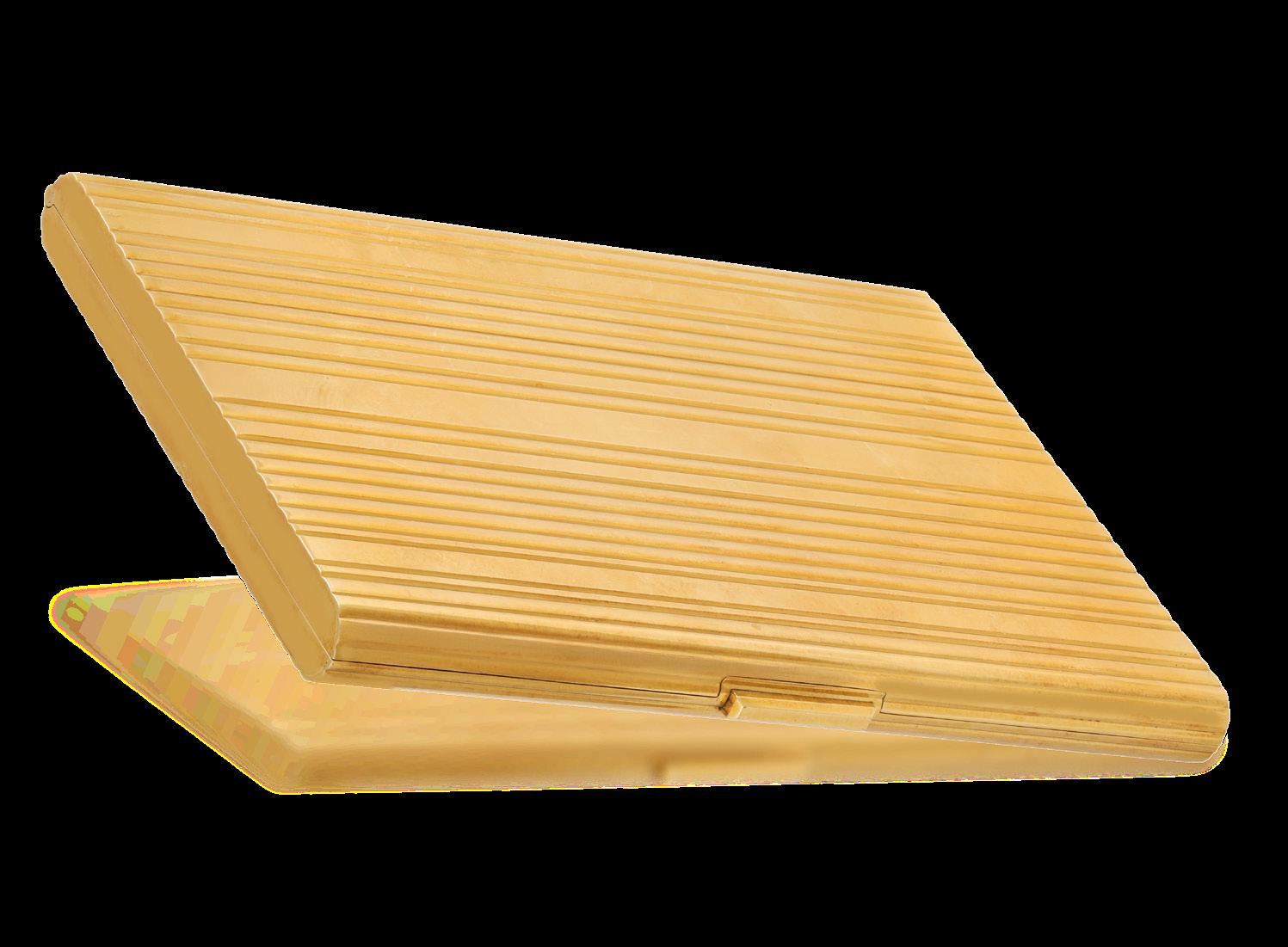
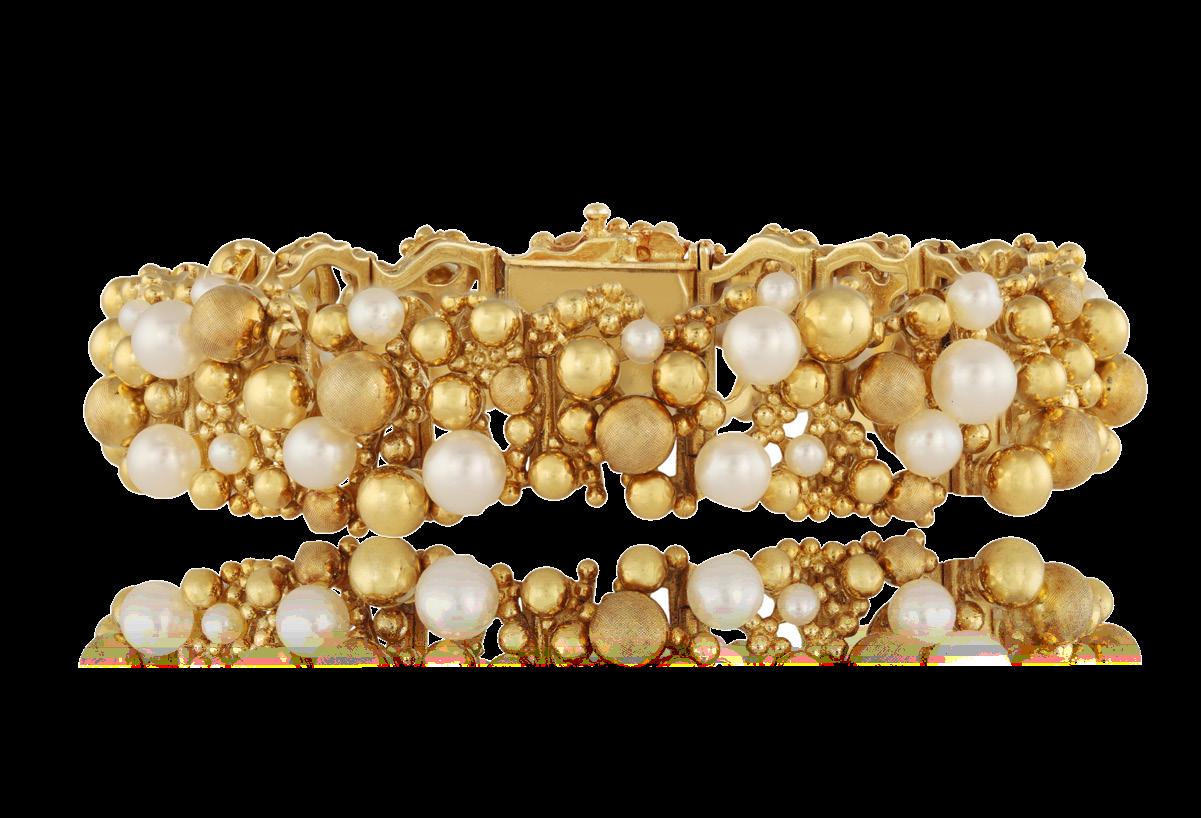
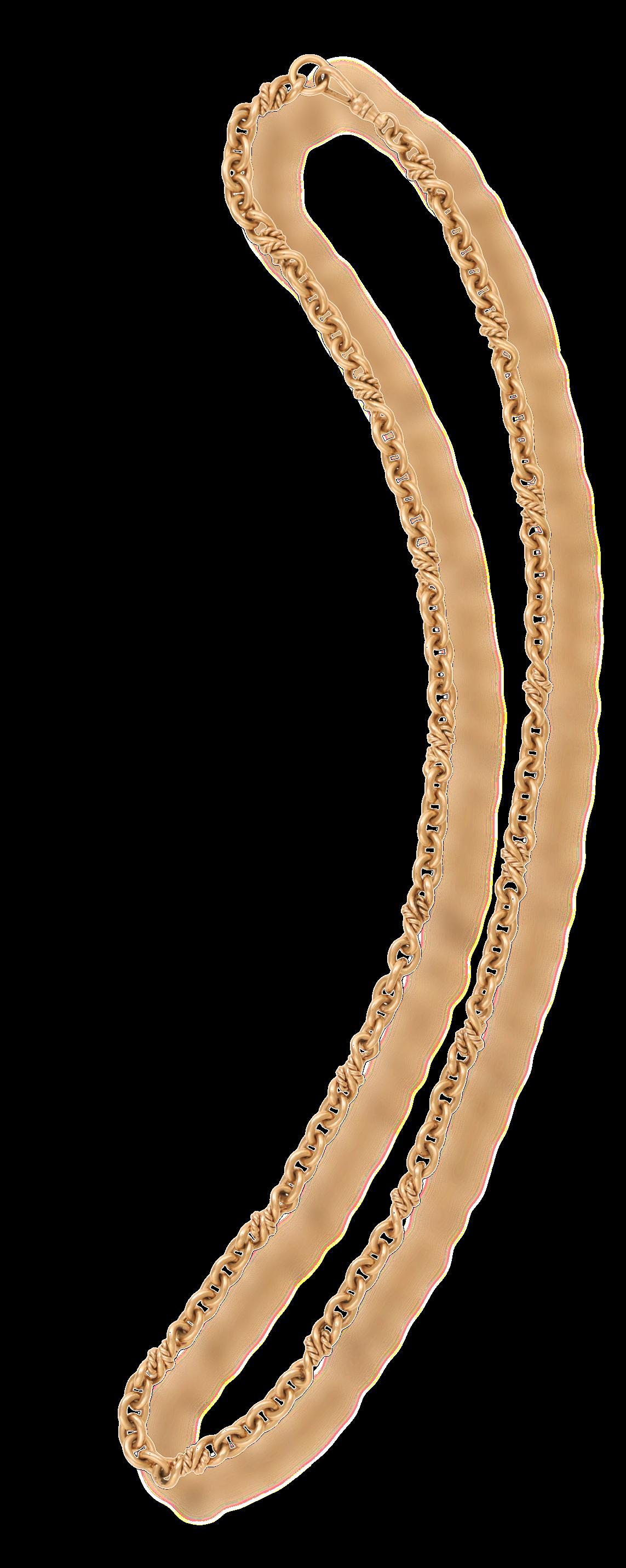
86
CARTIER A DIAMOND, EMERALD AND ONYX ‘PANTHÈRE DE CARTIER’ PENDANT NECKLACE, CIRCA 2012
Designed as a stylised panther, the body pavé-set with brilliant-cut diamonds throughout, to circular-cut emerald eyes and onyx nose, suspended from a fine gold double chain, mounted in 18K gold, signed Cartier, numbered, with maker’s mark ‘GC’, French assay mark, Swiss assay mark, European convention mark, with photocopy of invoice from Cartier Paris dated 2012, with maker’s case, pendant length 2.9cm, chain length 45cm
€ 10,000 - 15,000
87
A LADY’S 18K GOLD AND DIAMOND-SET ‘TANK AMÉRICAINE’ BRACELET WATCH
The 4-jewel Cal-157 quartz movement, with rectangular silvered guilloche dial, Roman numerals, inner 5 minute divisions, blued sword hands, secret signature at 10, bezel and lugs highlighted with brilliant-cut diamonds, to a fitted 18K gold brick-link bracelet with signed folding clasp, brushed gold case secured with four screws, case with Cartier maker’s mark, Swiss assay mark and European convention mark, case no. 88562CE, ref. no. 2489, dial, case, clasp and movement signed, with maker’s case and certificate of authenticity from retailer WatchGallery, case: 19mm
€ 7,000 - 9,000
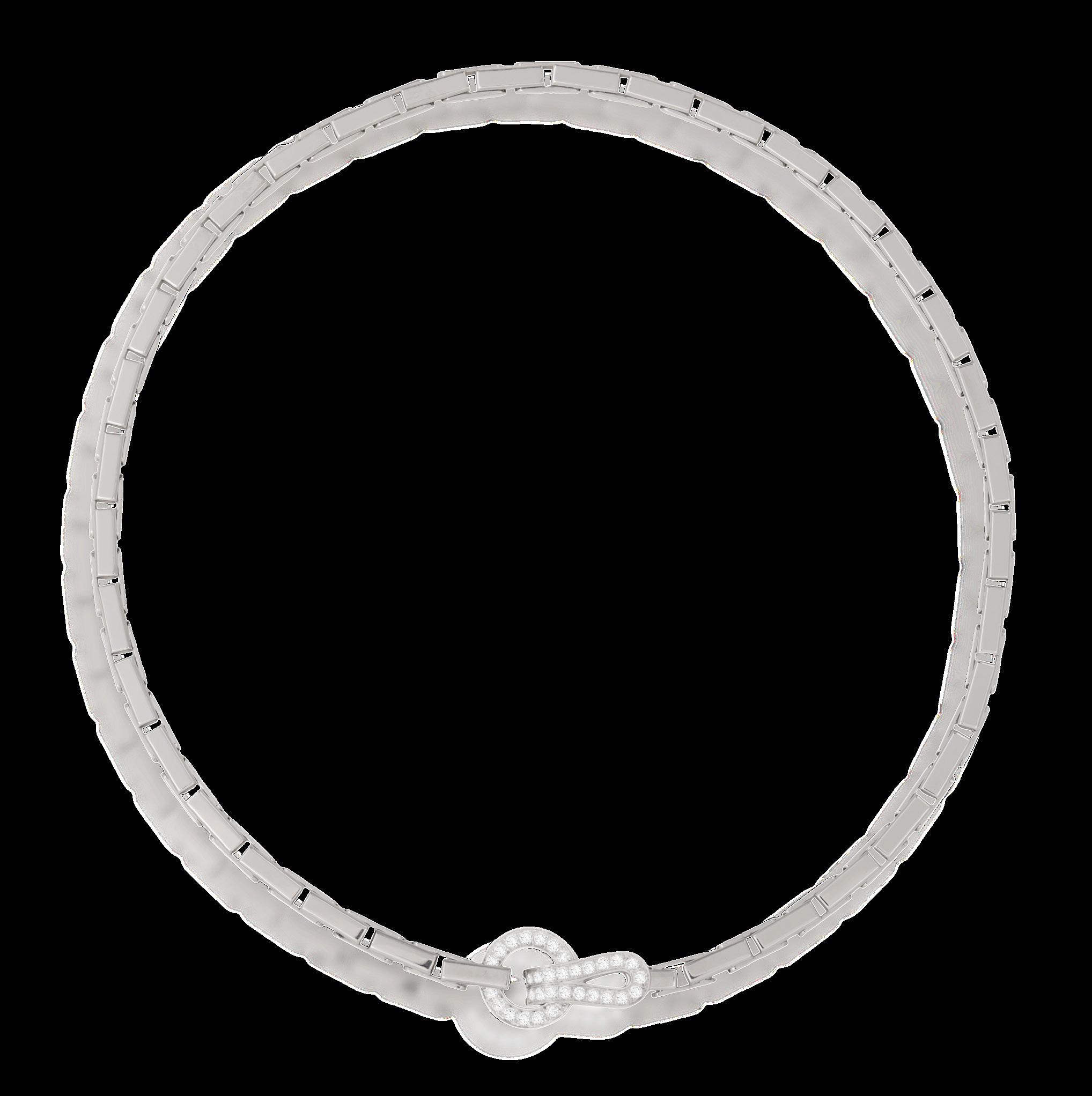
88
A DIAMOND ‘AGRAFE’ NECKLACE
Composed of a fancy-link chain, centring a hook-and-loop clasp pavé-set with brilliant-cut diamonds, mounted in 18K white gold, signed Cartier, numbered, with maker’s mark ‘S.A. P.B’ for Sté Pierre-G. Brun, French assay mark, with maker’s case, length 42.7cm
€ 7,000 - 9,000
Société Pierre-G Brun is a jewellery workshop which worked for Cartier & Fred, amongst others. They were bought by Cartier in 2000.

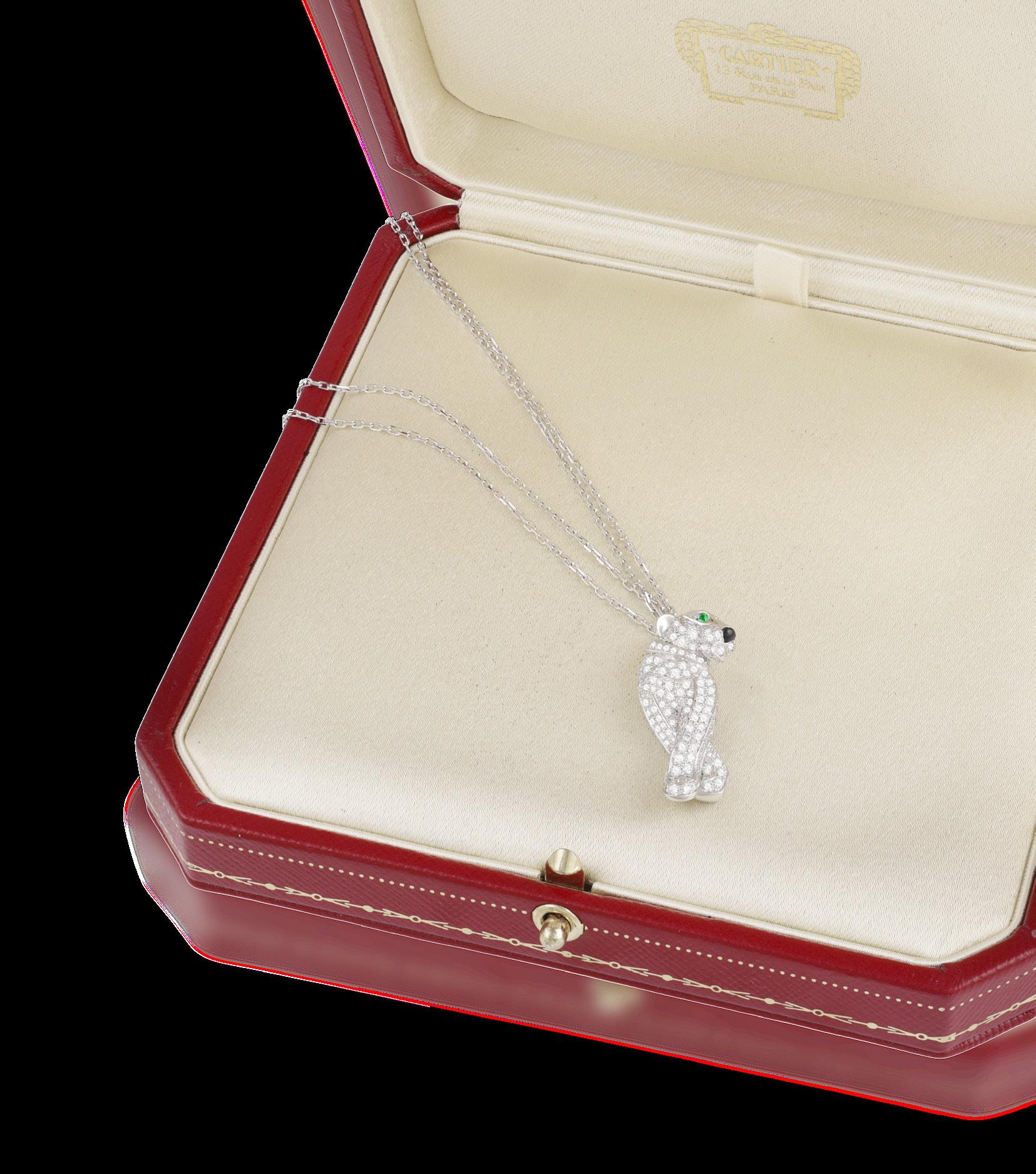
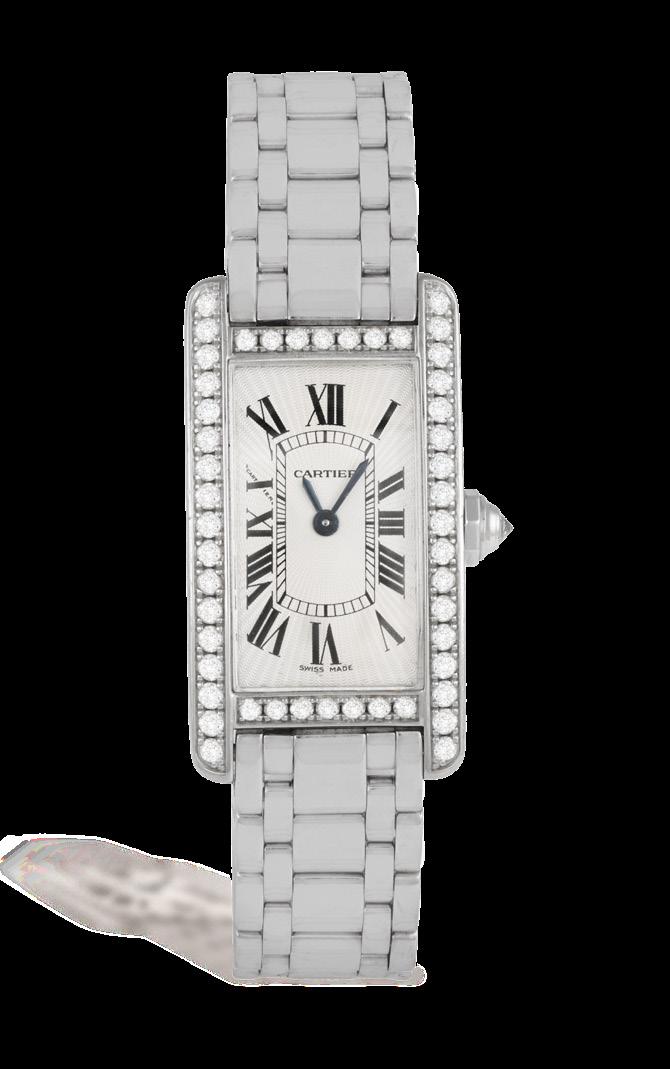
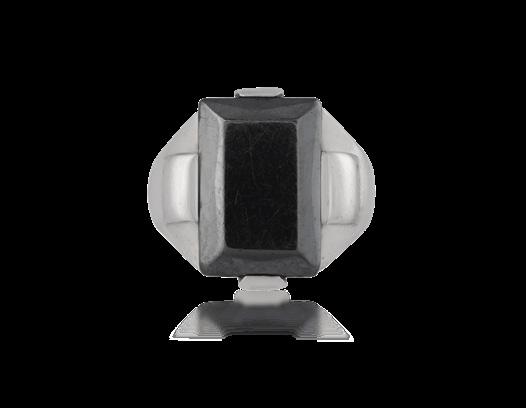
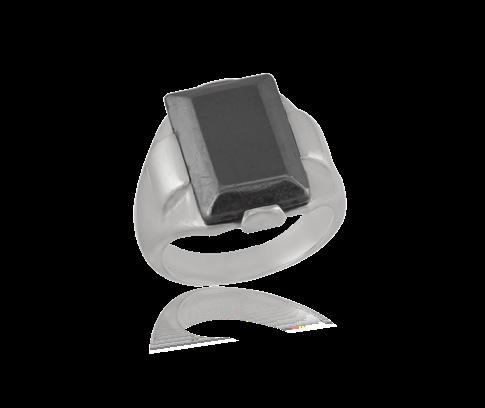
Composed of a rectangular-shaped polished hematite, set between curved panels, to a tapered band, mounted in silver, ring size J
€ 500 - 700
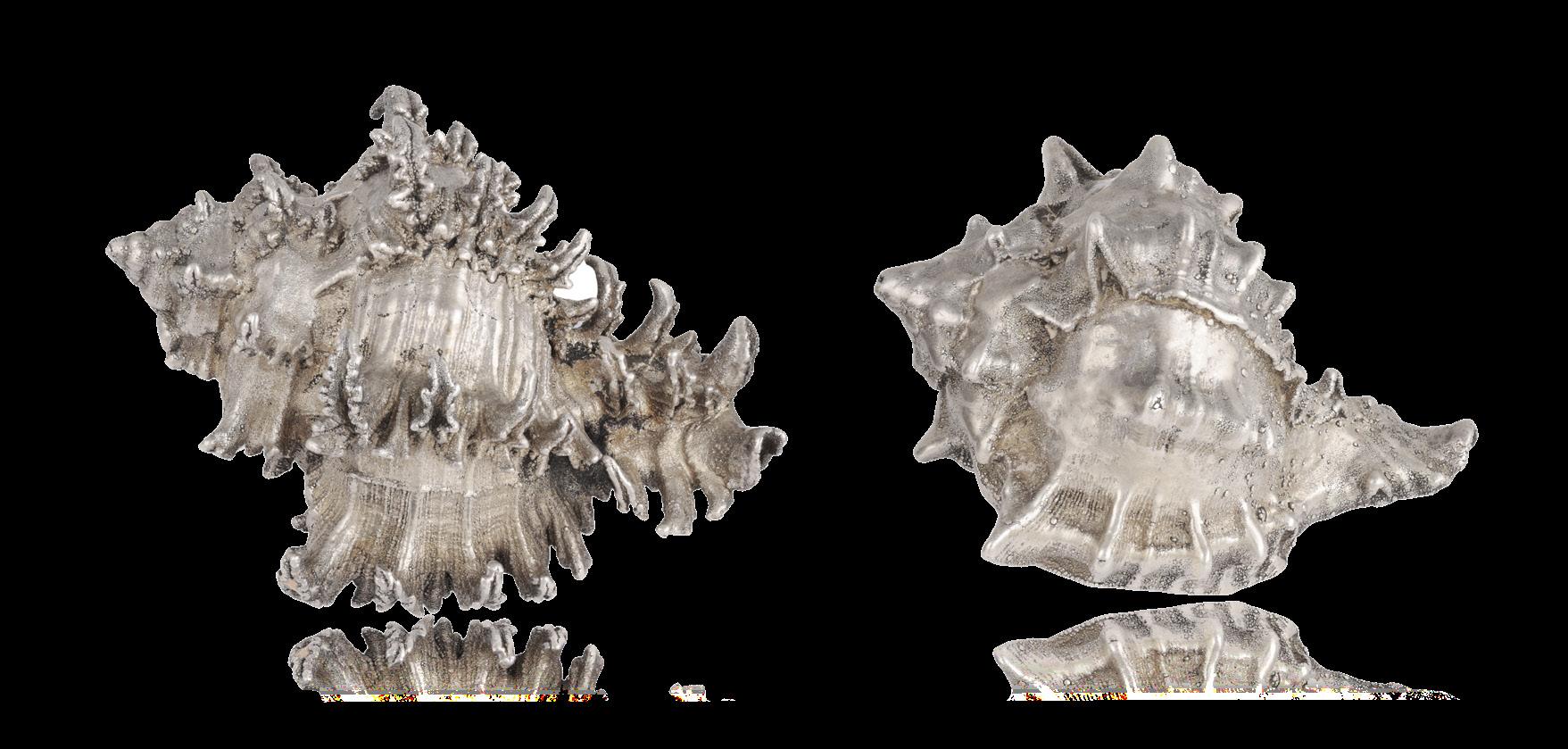
BUCCELLATI
TWO SILVER COATED DECORATIVE OBJECTS
The Murex and the Cassis Cornuta shells, each 999 silver coated, signed Federico Buccellati, Italian registry marks, lengths approximately 7 & 6.1cm
€ 800 - 1,200
Composed of fancy fold-over links, in 925 silver, signed Georg Jensen, numbered 149B, stamped 925 S Denmark, French import marks, maker’s mark, length 40.1cm
€ 700 - 900
A matching bracelet is illustrated page 120, ‘Georg Jensen, A Tradition of Splendid Silver’, by Janet Drucker (revised & expanded 2nd edition).
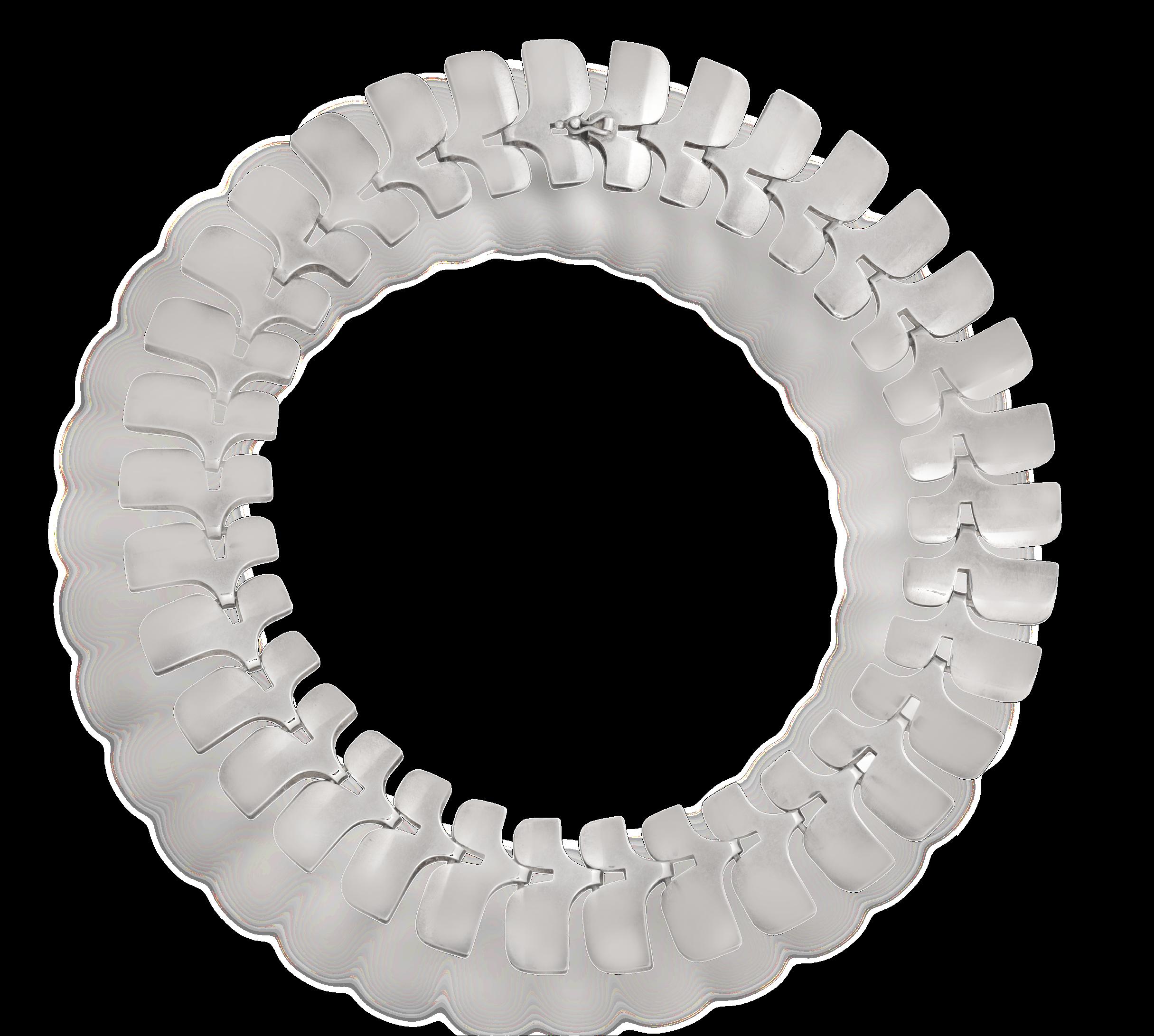
Inga-Britt “Ibe” Dahlquist (1924-1996) was a renowned Swedish silversmith whose nature-inspired, modernist jewellery left a lasting impact on the industry. Born on the Swedish island of Gotland, Dahlquist began incorporating natural elements such as fossils and beach stones into her work, creating pieces that were both unique and timeless. She studied at Stockholm’s Swedish School of Arts, Crafts, and Design, where she developed her distinctive style.
Dahlquist gained early recognition for her work, particularly after exhibiting in the 1959 “Contemporary Jewellery” show at the National Museum of Sweden. At the 1961 International Exhibition of Modern Jewellery in London, Dahlquist captivated the public with her creations, while exhibiting alongside renowned names such as Harry Winston and Pablo Picasso. For nearly 30 years, Dahlquist worked in a shared studio in Visby,
Gotland, alongside silversmith Olof Barve, a fellow graduate of Konstfack. While Dahlquist focused on design, Barve executed her ideas, allowing her to push the boundaries of silversmithing and modernist jewellery.
In 1965, Dahlquist joined the prestigious Danish company Georg Jensen, where her naturalistic approach complemented the brand’s minimalist modernist aesthetic. Dahlquist’s work brought a distinctive organic touch to Jensen’s sleek, precise designs, blending the vitality of nature with the precision of modern craftsmanship.
Today, Dahlquist’s work is held in high regard and can be found in prestigious institutions such as the British Museum, Stockholm’s National museum, and Goldsmith’s Hall in London. Her legacy continues to inspire, and her jewellery remains a symbol of the harmonious relationship between nature and craftsmanship.
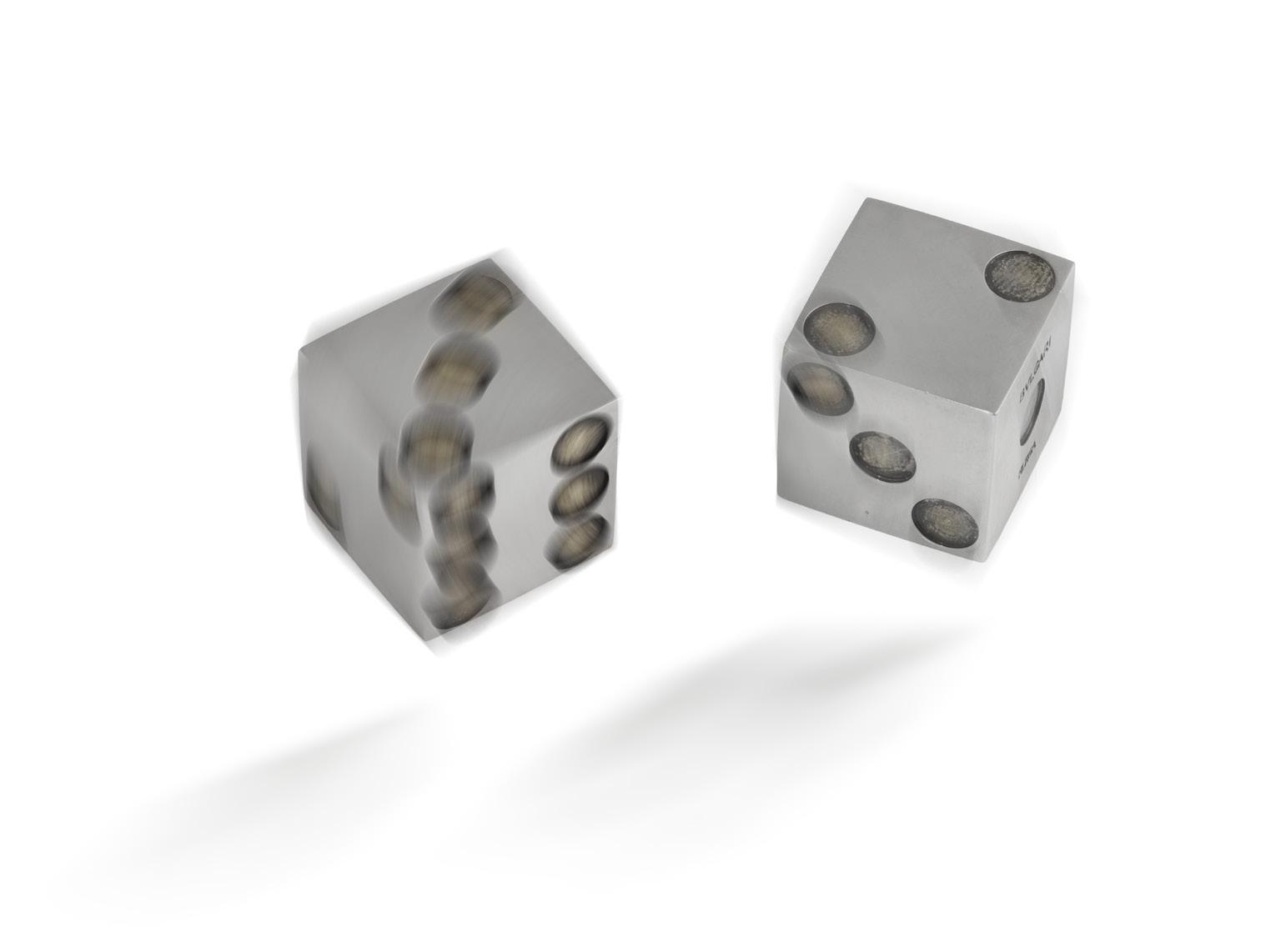

Each square cube with concave dotes, signed Bvlgari Roma, with maker’s mark ‘SB’, English hallmarks for silver, London, 2000, with maker’s fitted case and maker’s outer box, 2x2cm
€ 800 - 1,200
Maker’s mark ‘SB’ for Sotirio Bulgari, mark registered in 1967 at the Goldsmith Hall, London and used on silver objects by Bulgari.
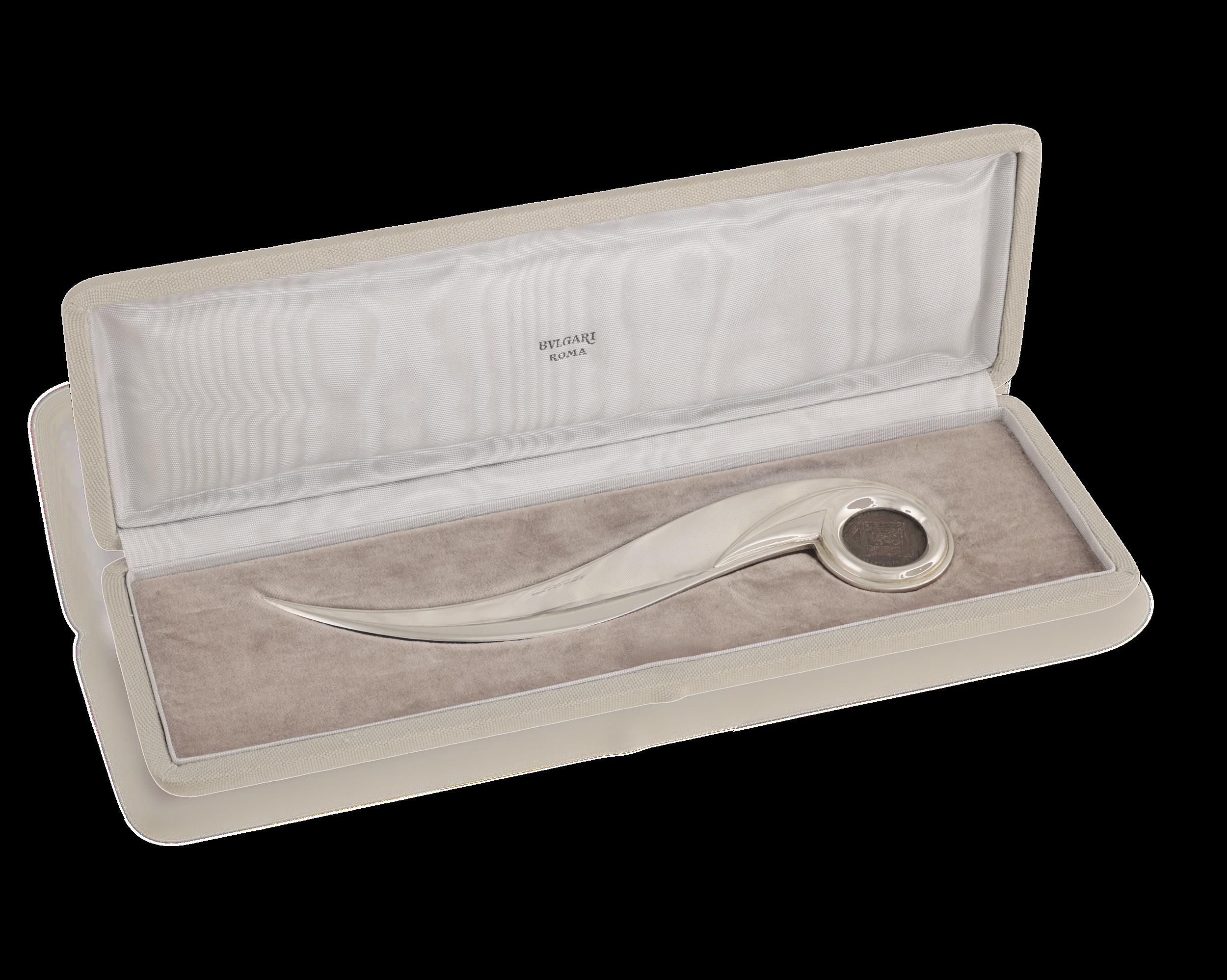

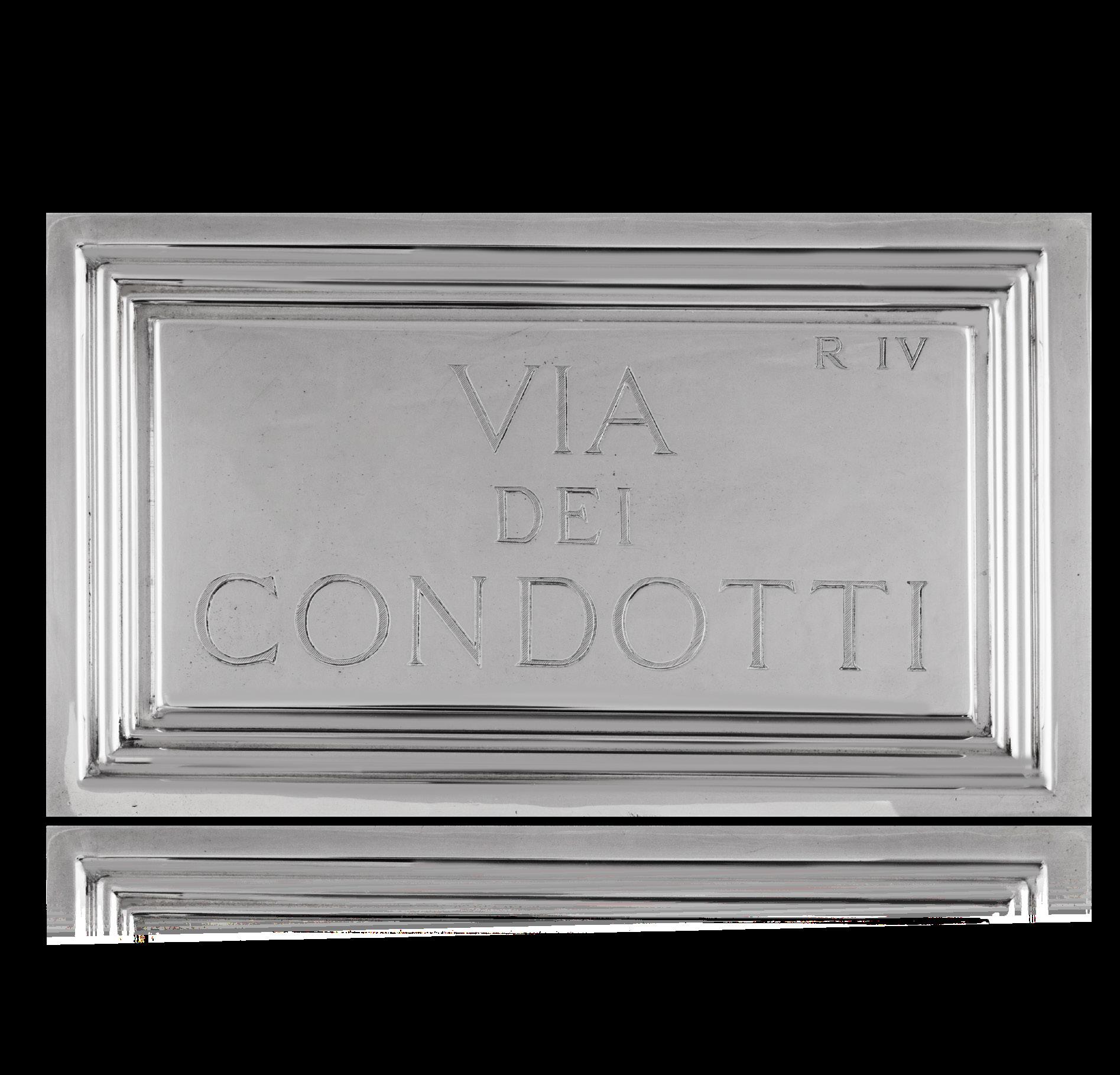
The rectangular-shaped plaque, inscribed to the front ‘R IV VIA DEI CONDOTTI’, the textured silver reverse signed Bvlgari, 925, Italian registry mark 156ROMA for Aldo Vitali, 24x12.3x2.5cm, total gross weight approx. 1003.8g
€ 1,800 - 2,200

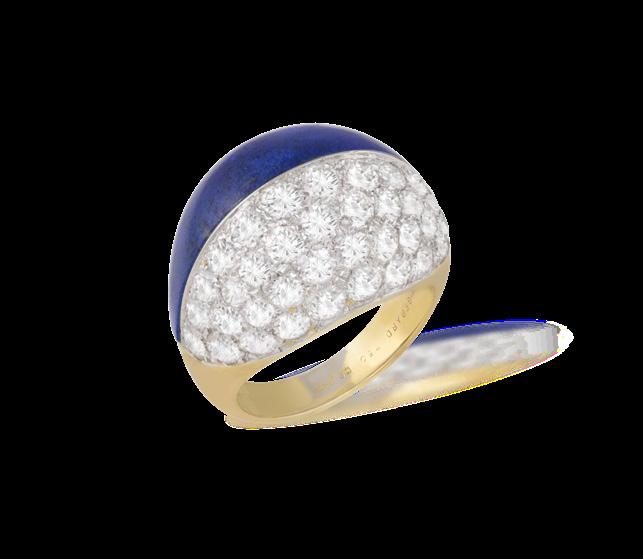

Louis Gérard worked for many years for the world-famous house of Van Cleef & Arpels before making the decision to establish a maison of his own in 1968. Thus, the house of M Gérard was born and opened its doors for the first time at 8 Avenue Montaigne in Paris.
Gérard worked primarily with the Atelier Vassort workshop producing magnificent suites of jewellery of the highest quality and craftsmanship and lavishly decorated with diamonds and precious gems. A character with a large personality, Gérard delighted in throwing fabulously stylish parties from Cannes to Monte Carlo, for the jet-setting elite he proudly called clients. His boutiques were situated in London, Lausanne, Monte-Carlo and Gstaad, an upscale resort village in the Swiss Alps.
96
VAN CLEEF & ARPELS
A LAPIS LAZULI, CULTURED PEARL AND GOLD ‘TWIST’ BRACELET, CIRCA 1965
Of twist rope design, with alternating rows of lapis lazuli, cultured pearl and gold beads, mounted in 18K gold, signed VCA, numbered, with maker’s mark ‘S Cie’ for Roger Stoffel et Compagnie’ and maker’s mark ‘VCA’, French assay marks, with maker’s case, length 19.8cm
€ 8,000 - 10,000
A COLLECTIBLE LAPIS LAZULI AND DIAMOND DRESS RING, CIRCA 1975
Of bombé design, the frontispiece embellished with lapis lazuli to one side, and pavé-set with brilliant-cut diamonds to the other side, mounted in 18K gold, diamonds approxiately 3.50cts total, signed M Gerard, numbered, with maker’s mark ‘AV’ for André Vassort, French assay mark, ring size N
€ 7,000 - 9,000
However, the rapid expansion and extravagant entertaining budget sadly proved unsustainable and in 1985, Gérard was forced to sell out to a group of American investors. He later succeeded in re-gaining his company and re-launched under the name of Louis Gérard, Joaillier International but this success was short-lived and by 1991, the firm was forced once again to shut its doors.
Today, pieces from the prestigious house are highly sought after for their high quality. A number of pieces by the house appeared as highlights of “The Royal House Sale” at Christie’s Geneva in November 2006, one of the top ten most expensive private jewellery collections ever sold at auction.
For a similar example of the ‘Twist’ collection, with coral beads, see page 162 from ‘Le Dictionnaire Merveilleux, Van Cleef & Arpels’, by Fabienne Reybaud, éditions Flammarion.
Another similar example with cultured pearls and gold beads, was shown at the ‘The Art of Movement, Van Cleef & Arpels’ exhibition, at the Design Museum in London in Sept-Oct. 2022. See page 130 from ‘Le Dictionnaire Merveilleux, Van Cleef & Arpels’, by Fabienne Reybaud, éditions Flammarion.
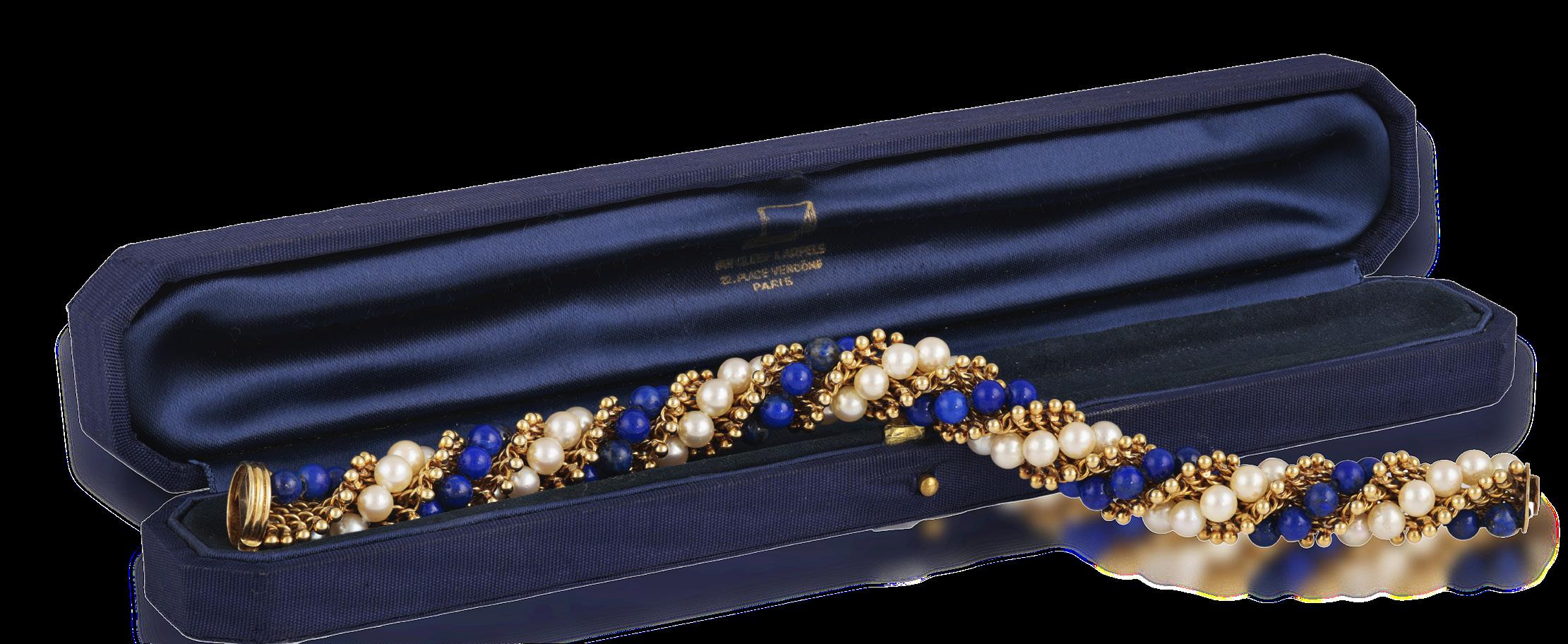
VAN CLEEF & ARPELS
A CHRYSOPRASE PENDANT/BROOCH, CIRCA 1965-70
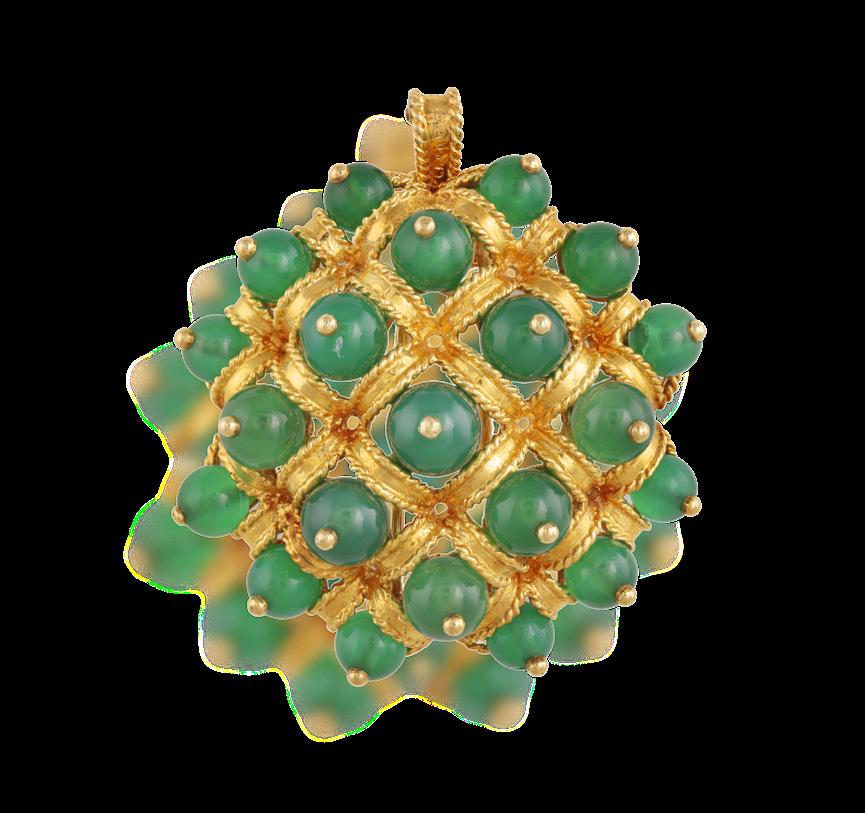
Of openwork lattice design, set throughout with chrysoprase beads, between polished gold frames, to an articulated similar bale, with ropetwist and beading detailing, mounted in 18K gold, signed VCA, numbered, with maker’s mark, French assay marks, length (excluding bale): 3.8cm
€ 5,500 - 7,500
VAN CLEEF & ARPELS
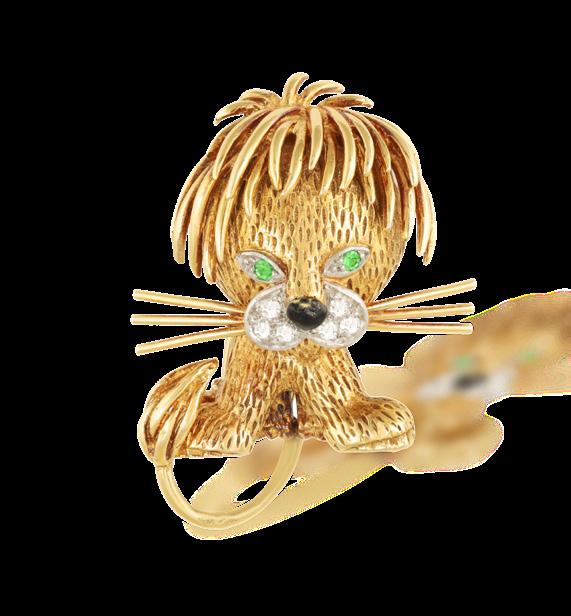
A GEM-SET AND DIAMOND ‘LION EBOURIFFÉ’ NOVELTY BROOCH, CIRCA 1960
In the form of a lion, the eyes set with circular-cut emeralds, the muzzle highlighted with single-cut diamonds and the nose decorated with black enamel, mounted in 18K gold and platinum, signed VCA, 63, numbered B1023I43, with maker’s mark ‘P & fils’ for Pery & Fils, French assay marks, with maker’s case, length 3.4cm
€ 6,500 - 7,500
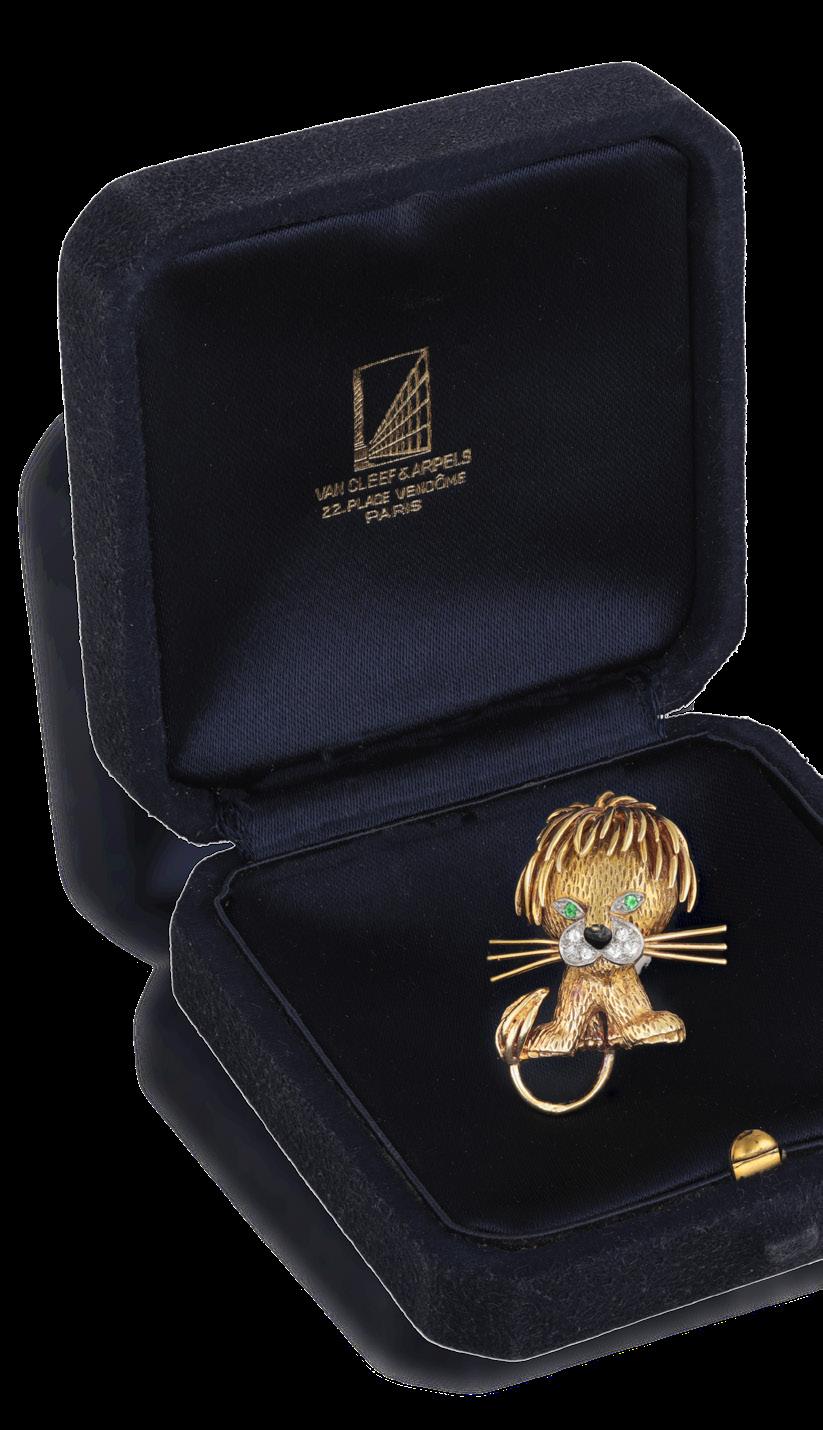
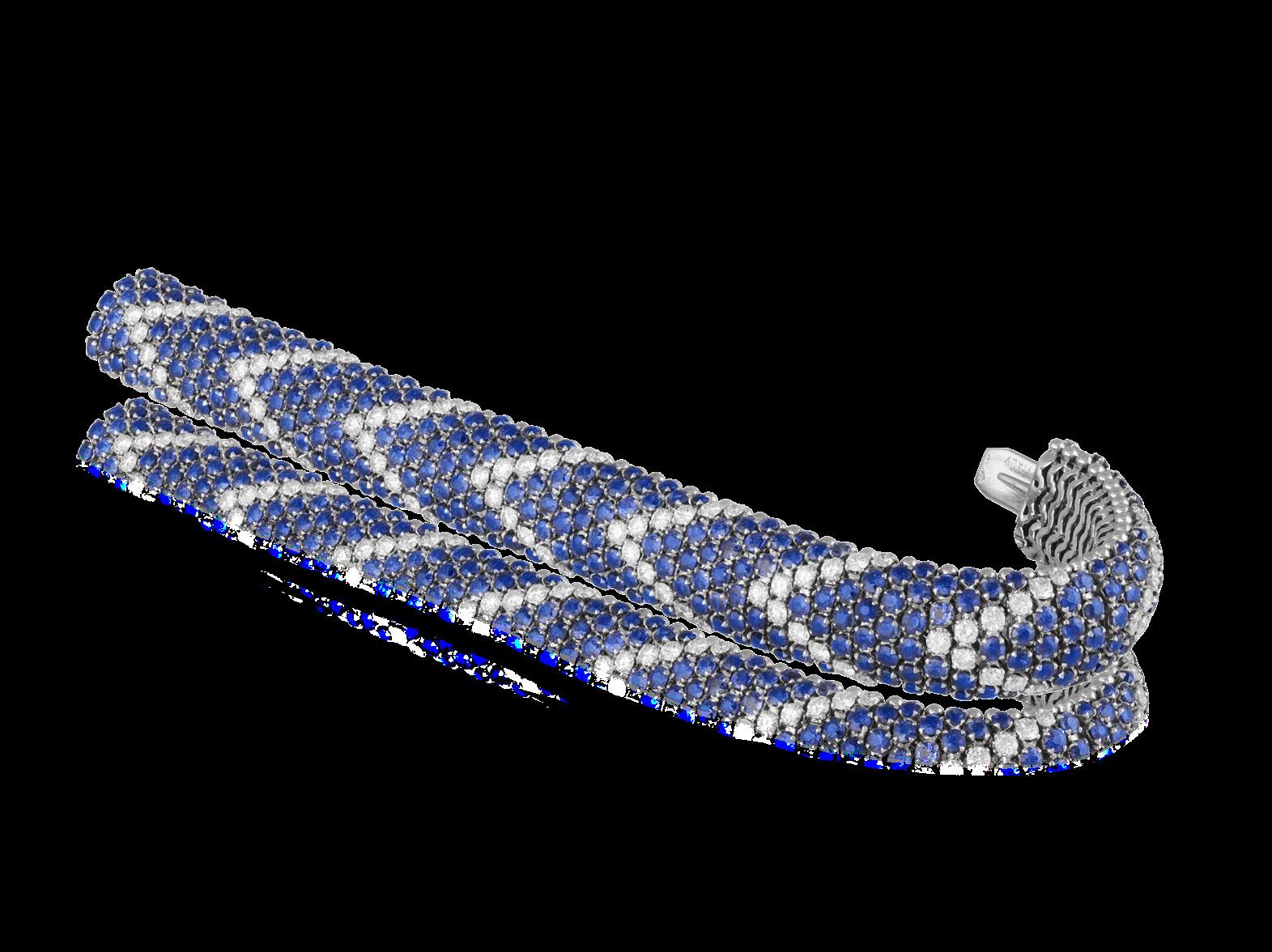
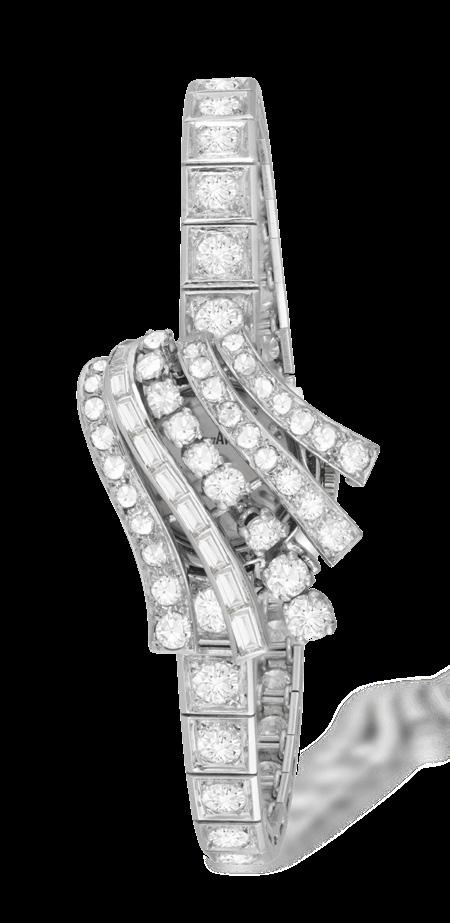
Of fine articulated bombé design, set throughout with circular-cut sapphires, interspersed by mounted in 18K white gold, sapphires approximately 15.00cts total, diamonds approximately 5.00cts total, French import mark, length
The oval-shaped turquoise cabochon weighing approximately 40.00cts, within a multi ple-claw setting, to a brilliant-cut diamond surround, diamonds approximately 3.00cts
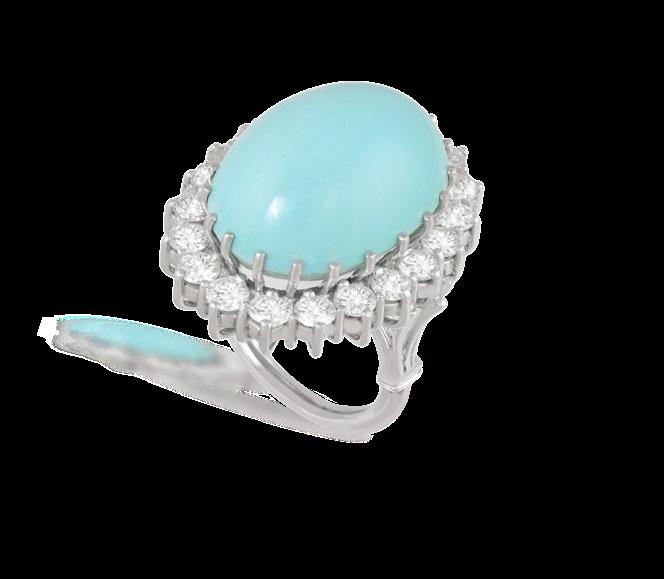

The 10-jewel manual wind movement, with central hinged motif of scrolled undulating design, set with brilliant, single and baguette-cut diamonds, opening to reveal a hidden circular-shaped cream dial with baton hour indicators, steel hands and screw crown, to a fitted tapered box-link bracelet, set with graduated brilliant-cut diamonds, mounted in 18K gold and platinum, dial signed Eviana, French assay marks, diamonds approximately 5.00cts total, case 15mm, length 16.2cm

102 BULGARI A DIAMOND SINGLE-STONE RING
The raised octagonal-shaped mount, collet-set with a brilliant-cut diamond weighing ap proximately 2.40cts, mounted in gold and platinum, signed Bvlgari, ring size G
€ 15,000 - 20,000
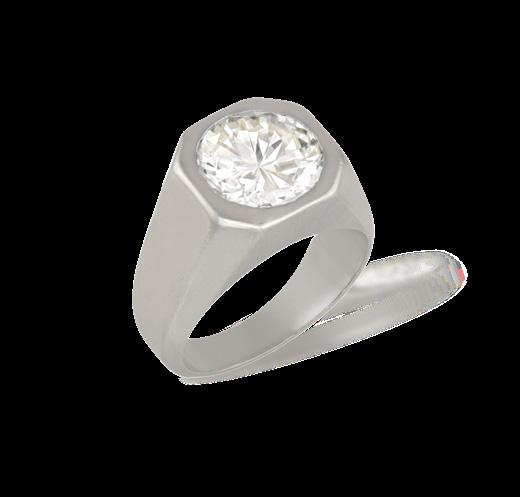
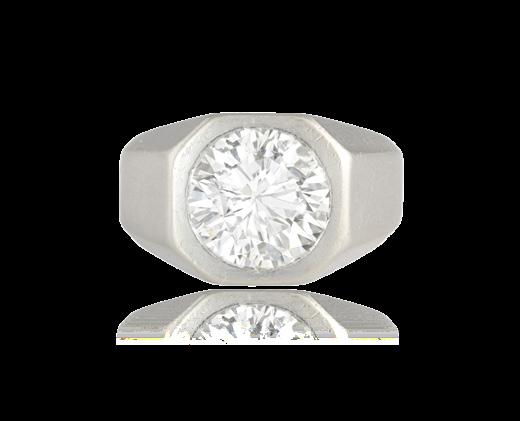
103
A PAIR OF DIAMOND PENDENT CLIP EARRINGS, FRENCH, CIRCA 1955
Each surmount designed as a stylised scalloped knot of brilliant-cut diamonds, suspend ing a tassel of tapered baguette-cut and brilliant-cut diamonds, mounted in 18K gold and platinum, diamonds approximately 8.50cts total, with partial maker’s mark, French assay marks, length 4.2cm
€ 6,000 - 7,000
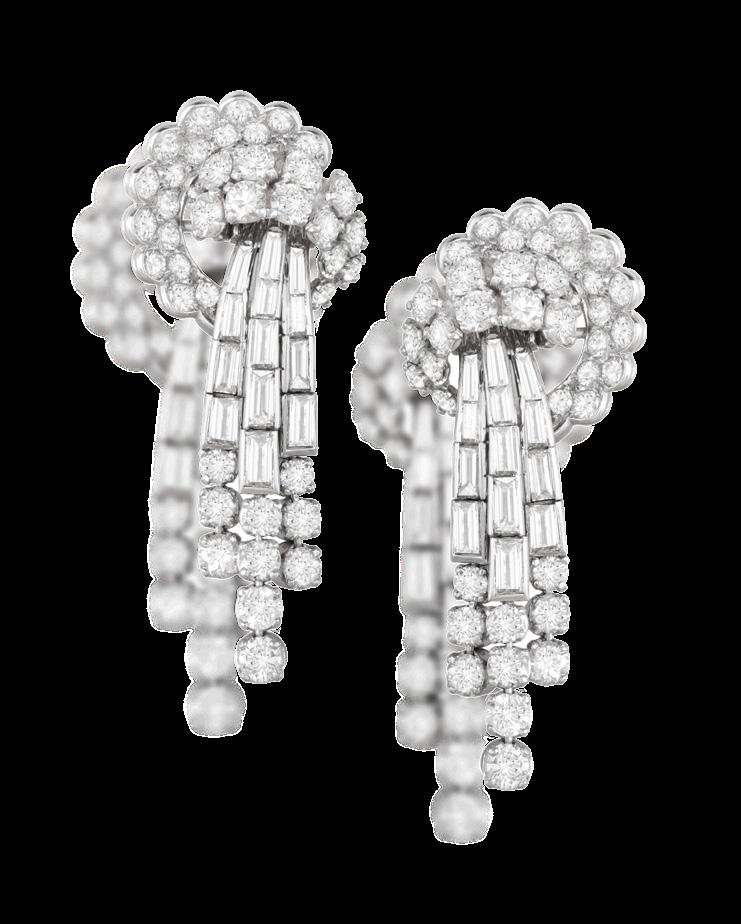
104
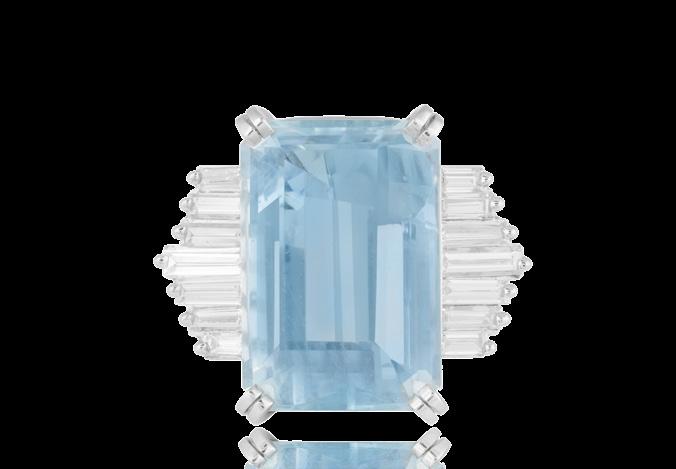
A FINE AQUAMARINE AND DIAMOND RING, FRENCH, CIRCA 1960
The raised and elongated rectangular-cut aquamarine weighing approximately 16.00cts, between baguette-cut diamonds, mounted in platinum, with maker’s mark ‘Sté C’, ring size R½
€ 8,000 - 9,000

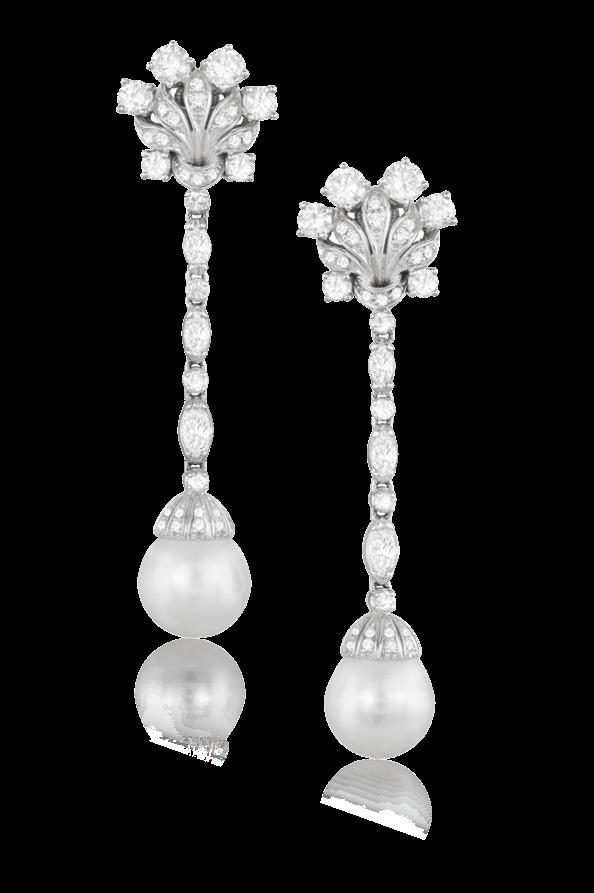
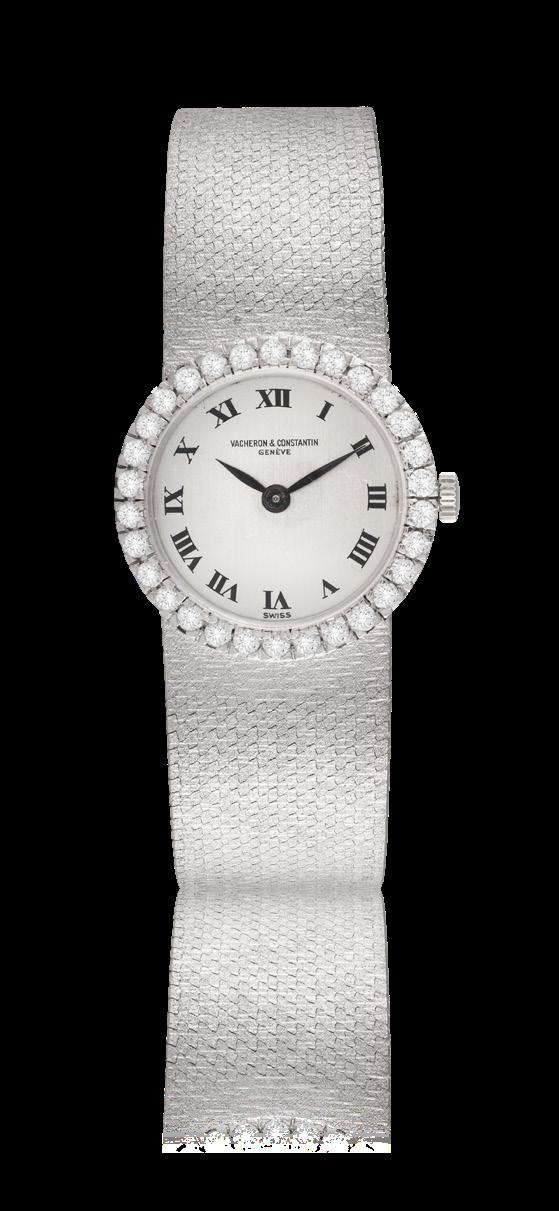
105
VACHERON CONSTANTIN
A LADY’S DIAMOND-SET COCKTAIL WATCH, CIRCA 1970
The 20-jewel Cal-K1050 manual wind movement, with silver circular dial, black painted Roman numerals and hands, the bezel highlighted with a brilliant-cut diamond frame, to a fitted mesh-link bracelet, polished gold case with snap on back and Swiss assay mark, Italian registry mark on bracelet clasp, case no. 7146 & 441065, in 18K white gold, dial and movement signed, case 22.5mm, length 16.9cm
€ 4,000 - 5,000
106
A PAIR OF CULTURED PEARL AND DIAMOND PENDENT EARCLIPS, CIRCA 1960
Each composed of a marquise-shaped and brilliant-cut diamond line, suspending a cultured pearl of white tint set on a single-cut diamond cap, to a scrolled palmette motif suspension, set with brilliant and single-cut diamonds, mounted in 18K white gold, diamonds approximately 3.60cts total, length 5.8cm
€ 4,000 - 5,000
107
A MID-20TH CENTURY DIAMOND DOUBLE CLIP BROOCH, FRENCH, CIRCA 1955
Of cornucopia design, the two motifs of scrolled and twisted rope wire design, set with single and brilliant-cut diamonds throughout, mounted in platinum and 18K gold, diamonds approximately 3.00cts total, partial maker’s mark, French assay marks, length 5.4 x 6.0cm
€ 4,000 - 5,000
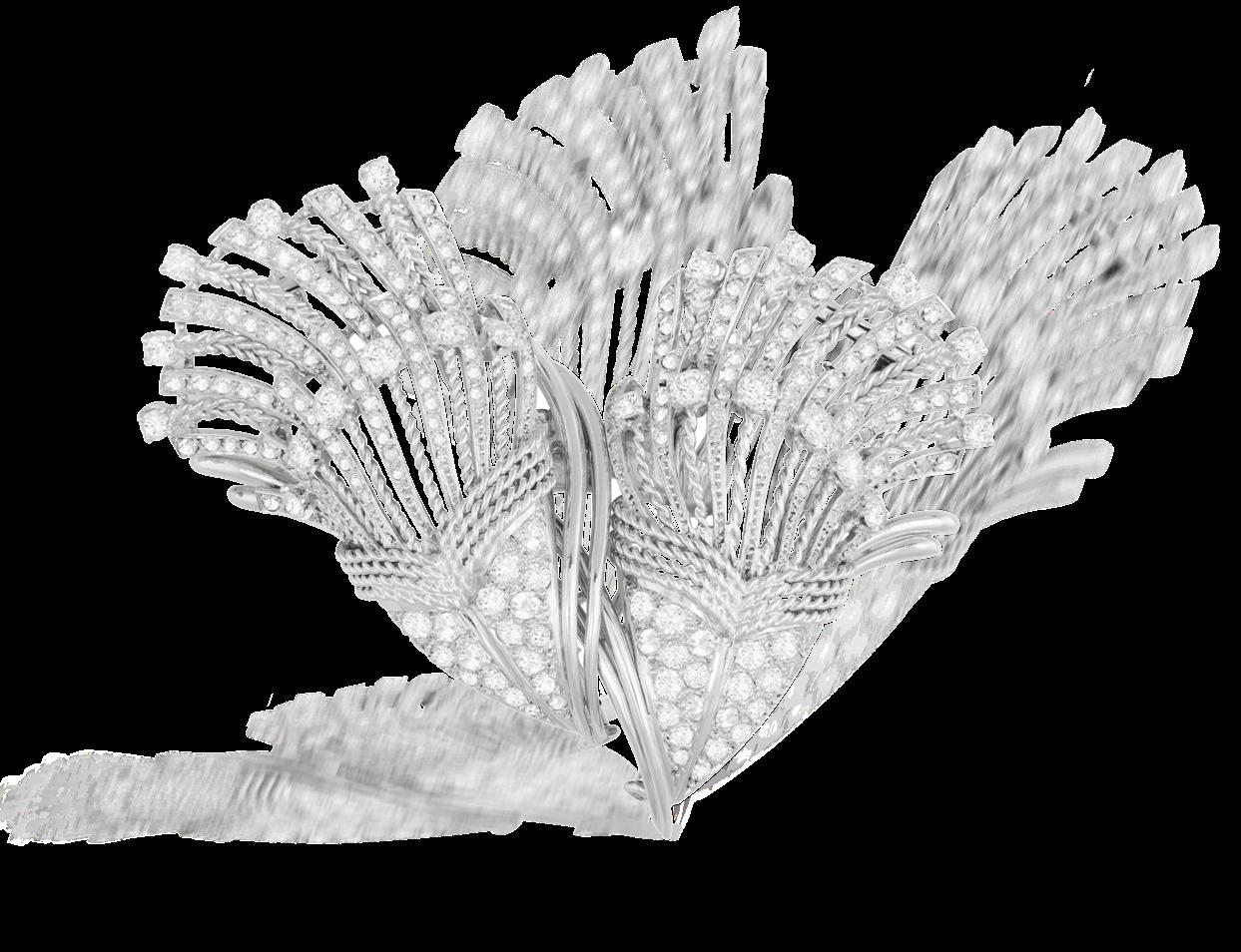
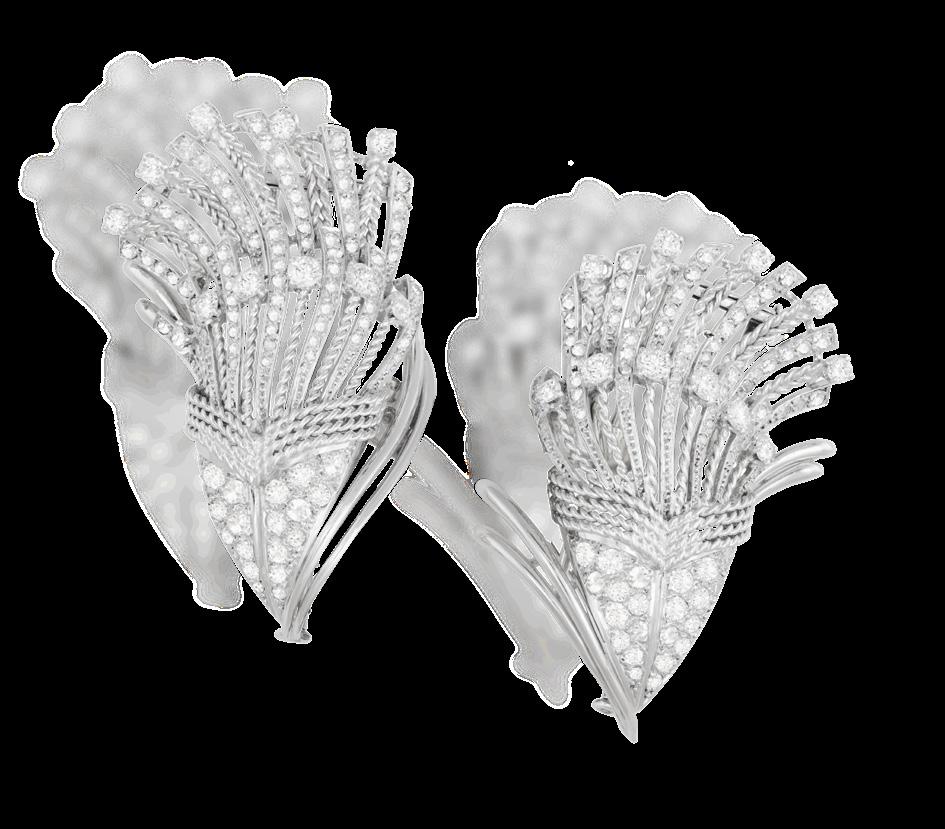
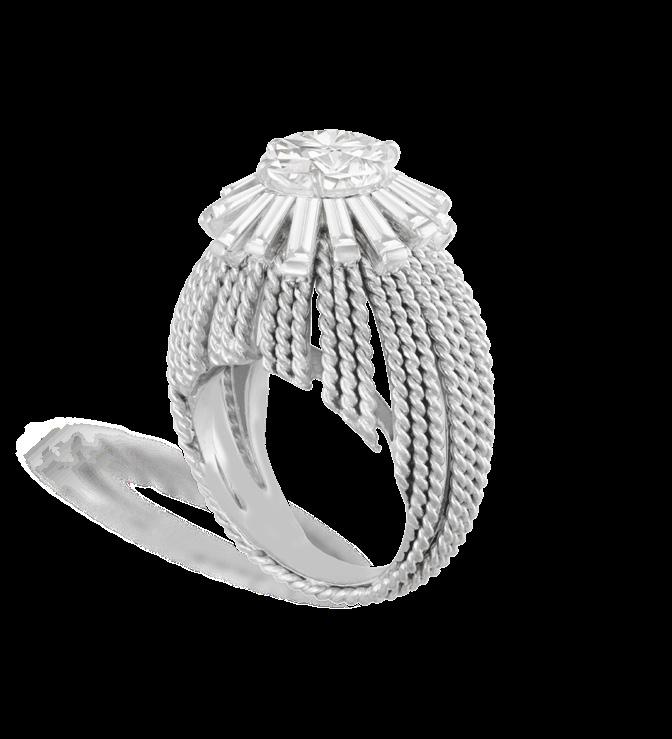

Of openwork dome design, the brilliant-cut diamond with in a baguette-cut diamond surround, raised on a ropetwist mount, mounted in platinum, remaining diamonds approxi mately 1.00ct total, signed Sterlé Paris, with maker’s mark for Sterlé (Opera), with maker’s case, French assay mark, ring size J
€ 15,000 - 20,000
Accompanied with a photocopy of its insurance valuation from Pierre Sterlé, stating that the principal diamond is 2.13cts, mounted on platinum, dated February 9th 1965.
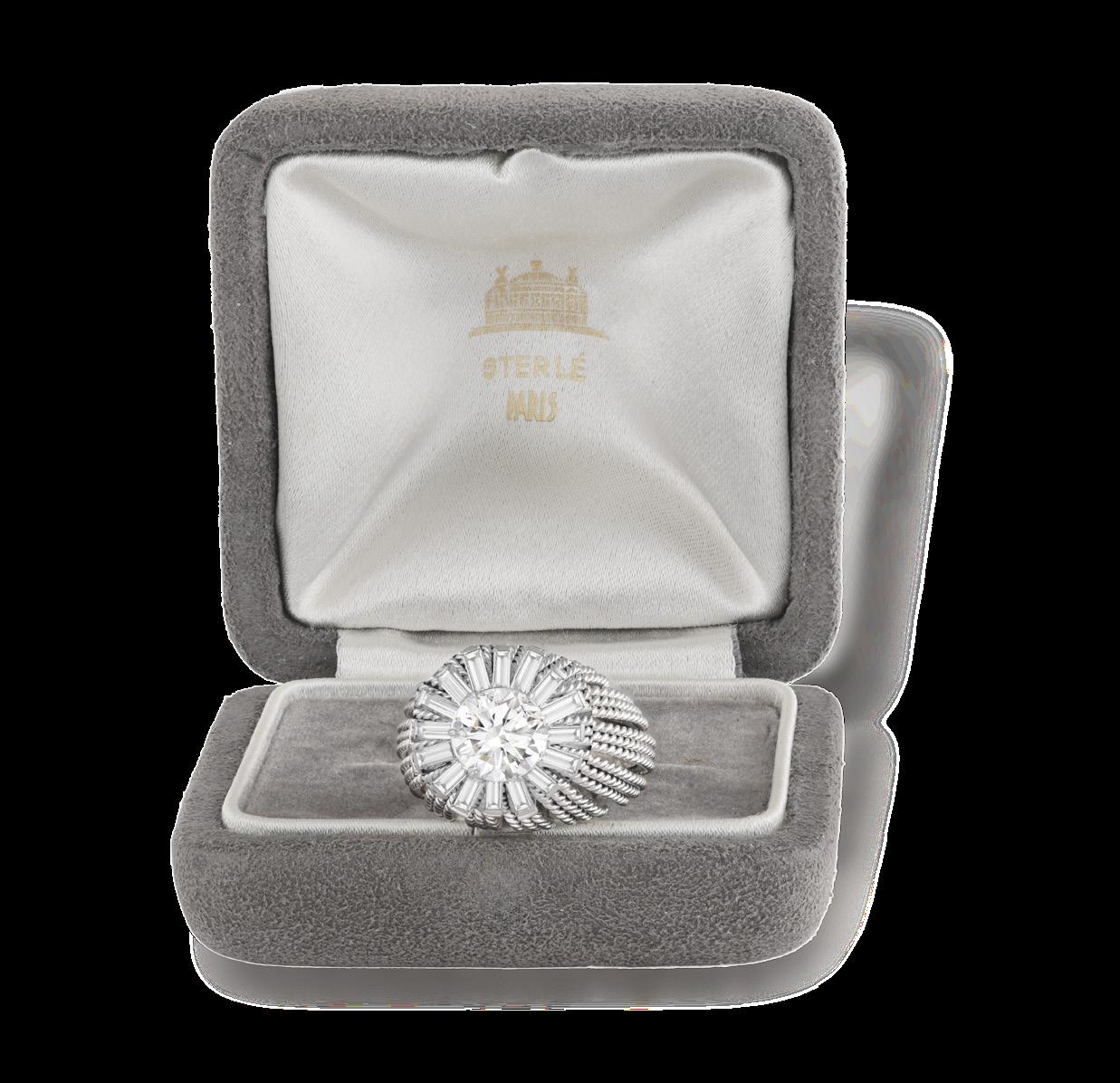
Sterlé was born in 1905 to a family of financiers. After his father died in World War I, he was raised by his uncle, who was a jeweller, and introduced him to the world of gemstones and precious metals. By 1934, Sterlé had established his own workshop in Paris. Unlike many of his contemporaries, he refused to open a traditional boutique. Instead, he preferred the privacy of an upstairs atelier at 43 Avenue de l'Opéra, where he designed exclusively for the elite: royalty, aristocrats, and celebrities who valued rarity over convention. He also lent his talent to esteemed houses such as Boucheron, Chaumet, Ostertag, and Puiforcat before fully dedicating himself to his own masterpieces.
What set Sterlé apart was his unparalleled ability to manipulate gold, bending it to his artistic will. His jewels exuded an ethereal lightness, as if caught in mid-motion: a bird in flight, a tassel swaying, a ribbon floating on the breeze. Inspired by Art Nouveau and his deep love of nature, he captured the organic world with breathtaking precision. His signature techniques became legendary. The 'Fil d'Ange' (Angel's Thread) effect, was a technique perfected over seven years, where fine gold was woven like chain mail, giving it an astonishing fluidity, almost textile-like appearance. Inspired by an ancient Egyptian bracelet he once saw in Cairo, Sterlé recreated its delicate beauty using a stagger-
ing 60 meters of twisted gold wire and over 6,000 solder points. He also mastered the art of transforming gold into braids, cords, tassels, fringes, and basket weaves, making the metal appear as supple as silk. His mobile settings allowed gemstones to shimmer and catch the light in new ways, bringing each piece to life with the wearer’s every movement. His love of nature found further expression in his whimsical creations, especially his iconic bird designs, which remain among the most coveted jewellery pieces today. Between 1965 and 1974, he crafted fantastical characters, including a bandit, an archer, a joker, and a falconer, each adorned with mother-of-pearl or hardstone busts meticulously sculpted by the renowned Robert Lemoine.
Sterlé’s talent did not go unnoticed. Publicly celebrated as the “couturier of jewellery,” he won the prestigious De Beers International Diamond Award three years in a row (1953–1955), cementing his reputation as a master of his craft.
Yet, despite his artistic genius, financial difficulties eventually led to the closure of his firm in 1976. Chaumet acquired both his stock and expertise, hiring him as an artistic advisor. He passed away in Paris in 1978, leaving behind a legacy of technical innovation and exquisite beauty.
BOUCHERON. A LADY’S DIAMOND-SET COCKTAIL WATCH, CIRCA 1975
Of manual wind movement, the oval champagne dial with gilt hands, the bezel and lugs pavé-set with brilliant-cut diamonds, to a double ropetwist chain bracelet, with brilliant-cut diamond connectors, mounted in 18K gold, diamonds approximately 7.50-8.00cts total, dial and movement signed Boucheron, with maker’s mark ‘Sté M’ for Roger Mathon, French export marks, case no. 98541, length 17.5cm
€ 8,000 - 12,000
Studies of similar models dated 1975 from the archives of Boucheron, page 178: ‘Boucheron: Le Joaillier Du Temps’, by Gilles Neret.
Roger Mathon’s workshop was founded in 1972 in Paris and executed fine works for Van Cleef & Arpels, Fred, Boucheron amongst others.
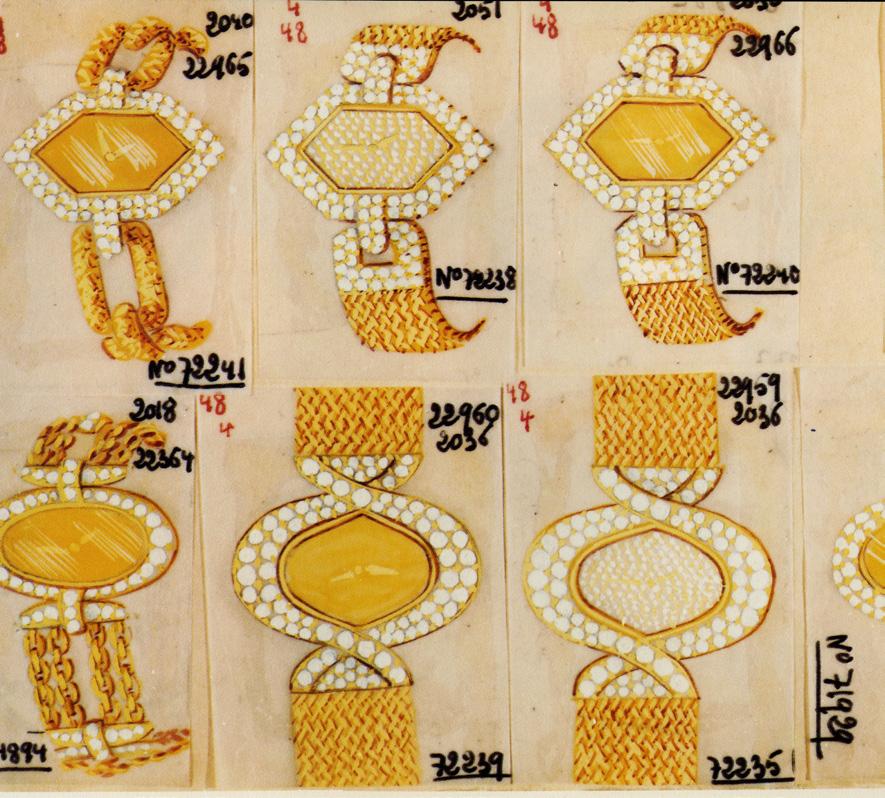
Of raised crossover design, set with a pear-shaped onyx and corallium rubrum coral cabochon, within a surround pavé-set with brilliant-cut diamonds, mounted in 18K gold, approximately 3.00cts total, signed Cartier London, English hallmarks for London 1976, with maker’s mark ‘JC’ for Jacques Cartier, French import mark, ring size J
€ 7,000 - 9,000
The hinged bangle decorated with screw motifs, in 18K gold, signed, Cartier & Aldo Cipullo, stamped 1970 & Love, with maker’s case and later screwdriver for opening and closing the bracelet, inner length approximately 16cm, width 6.3mm
€ 5,000 - 6,000
Designed in 1969 in NYC, the Cartier Love bangle was the creation of Italian jewellery designer, Aldo Cipullo, who created this piece in 1969. “Love,” said Cipullo, “has become too commercial, but life without love is nothing. What modern people want are love symbols that look semi-permanent — or, at least, require a trick to remove. After all, love symbols should suggest an everlasting quality.” Cipullo was known for his innovative and bold designs. Initially he had proposed the design of the Love bangle for Tiffany &Co. When Tiffany turned down his concept for the Love bangle, Aldo offered the design to Cartier. At the time, Cartier New York was independent from the Parisian Maison, and under the dynamic direction of Michael Thomas, who immediately saw the massive potential of the Love bangle to appeal to a new generation with entirely new values, lifestyle, and attitudes.
The Love bangle as a symbol of everlasting love and commitment. The bangle features a simple, sleek design with a screw motif, inspired by medieval chastity belts, and it is meant to be worn as a symbol of love and unity. It is distinctive for its seamless, unbroken design, with a screwdriver needed to open and close it, symbolising the idea that love is something to be kept safe and protected. As the story goes, the bangles could at first only be purchased by couples who would surrender the screwdrivers to one another. When Cartier introduced the bangle, they were given to high-profile couples like Elizabeth Taylor and Richard Burton. According to Vogue, some NYC hospitals keep a Love bangle screwdriver on hand in case patients need their accessory removed in an emergency. While a Cartier Love bangle may be easier to remove than a chastity belt, it has still proved enduring, and a smart investment. What makes the Cartier Love bangle even more intriguing is the way it is meant to be worn. Traditionally, the bangle is given by one partner to another, and it is secured on the wrist with the help of the accompanying screwdriver. Once fastened, it is typically not meant to be removed, symbolising the permanence of the relationship. The Love bangle quickly gained popularity among couples, celebrities, and fashion icons. Its iconic design and symbolism resonated with people around the world. The bangle not only became a symbol of love and commitment, but a status symbol as well.
The circular pendant set with a central dog’s head motif of a carved terrier, on a polished jasper plaque, to a textured gold openable bale, in 18K gold, signed Fred, partial maker’s mark ‘Sté LFV’ for Lasbleiz Fournier Vitiello, French assay mark, length 6.8cm
€ 4,500 - 5,500

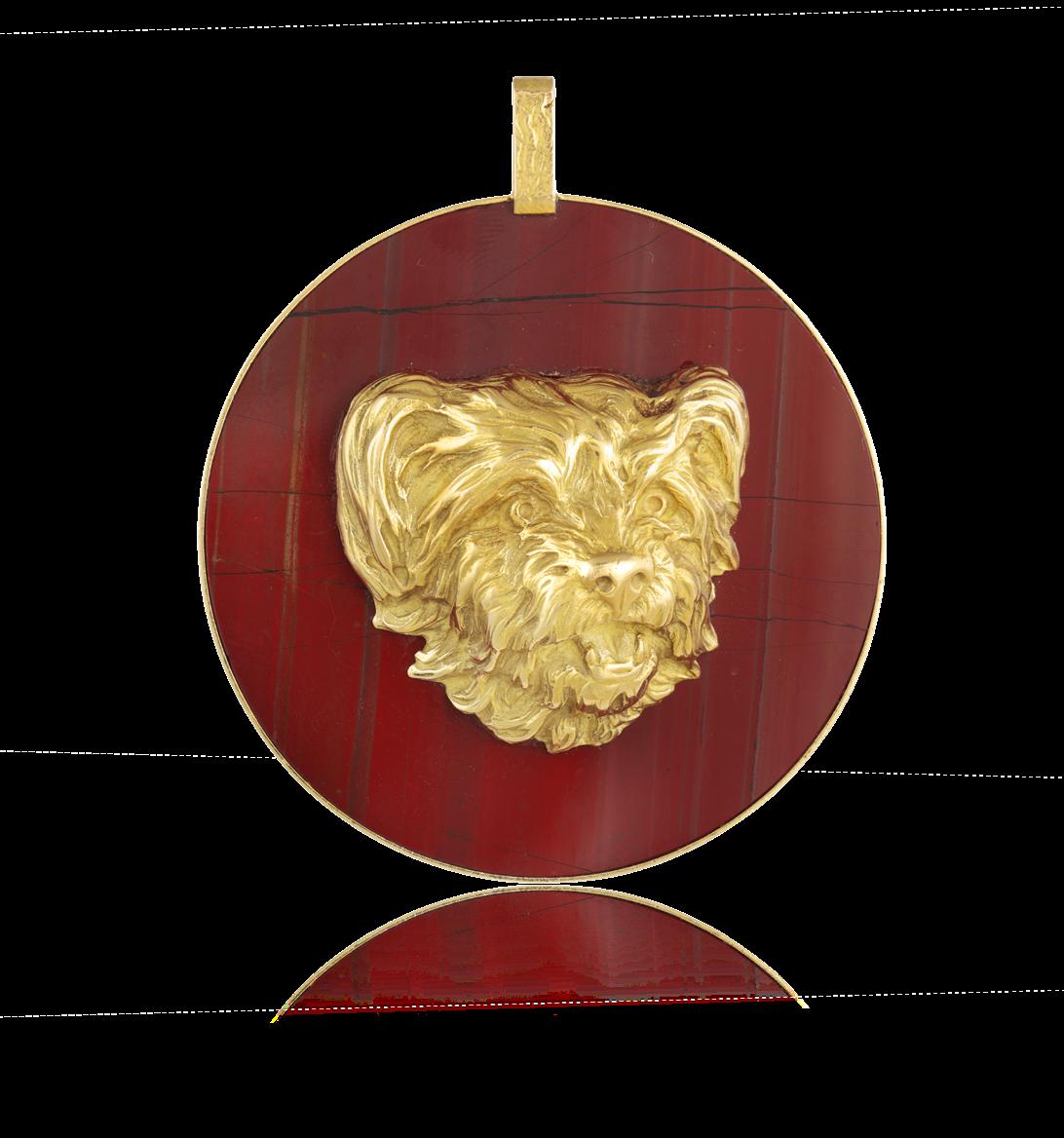
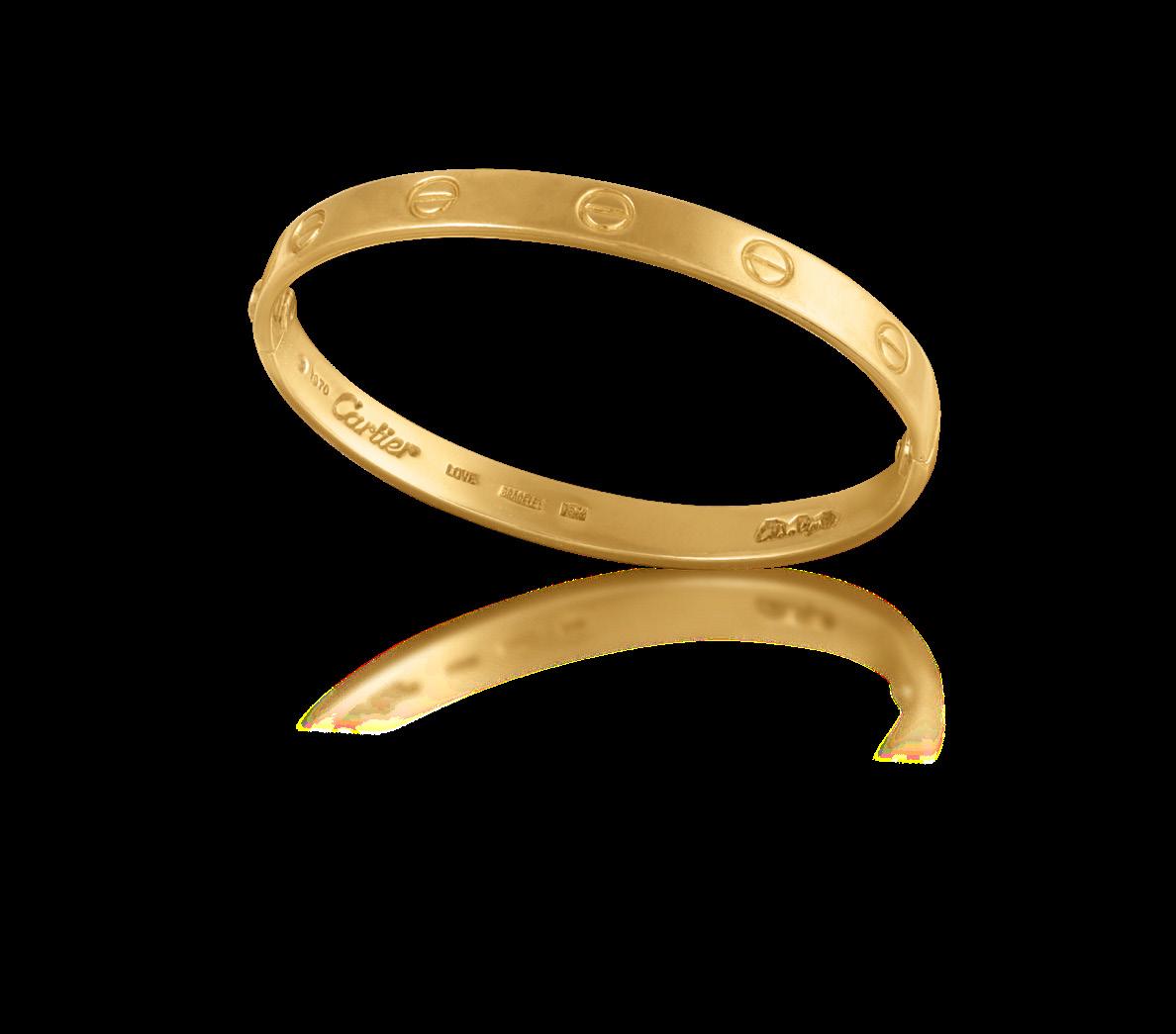
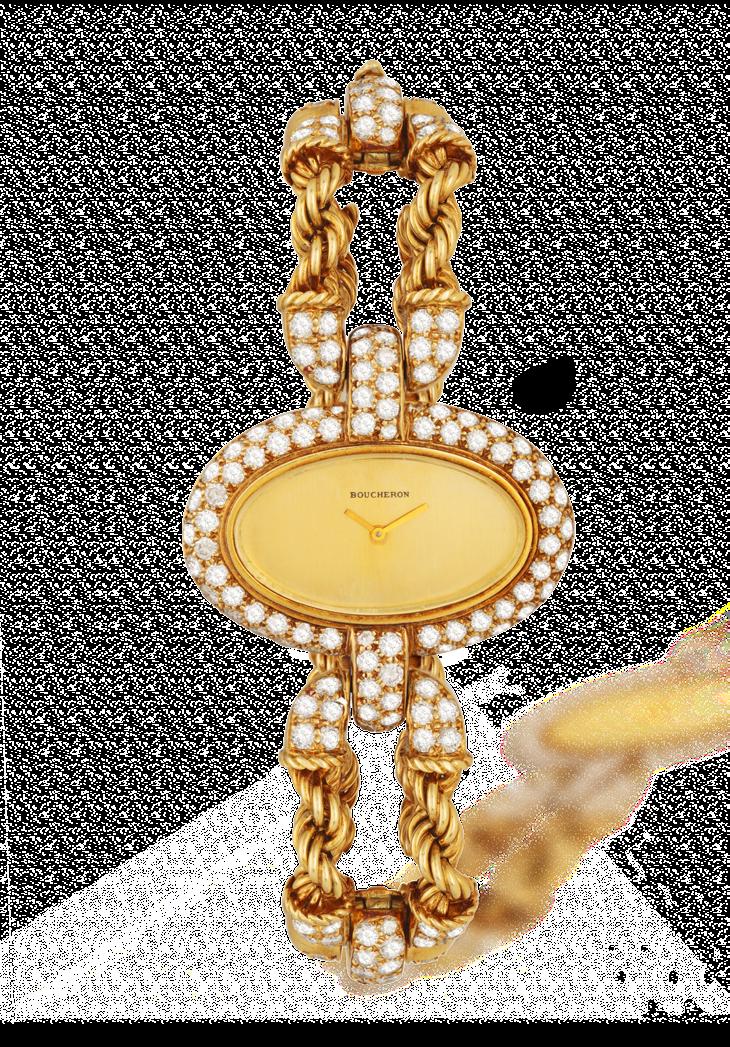
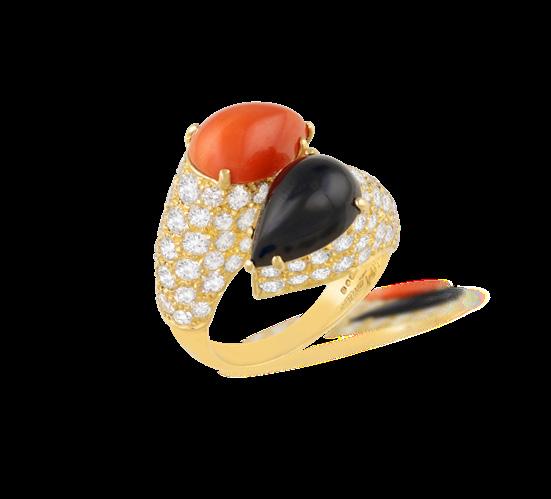
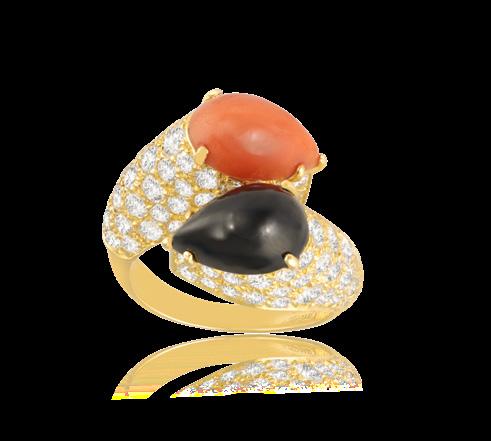
JEAN & PIERRE BELLIN
A CORAL, DIAMOND AND CULTURED PEARL PENDANT NECKLACE, CIRCA 1970
The ropetwist-link chain suspending two openwork lozenge motifs highlighted with brilliant-cut diamonds, within ropetwist and beading detailing, suspending a detachable cultured pearl and coral tassel finishing with gold bead terminals, mounted in 18K gold, with maker’s marks ‘Sté JPB’ for Jean & Pierre Bellin’, unsigned, French assay marks, necklace length 50.5cm, detachable tassel length 9.2cm
€ 2,500 - 3,500
Jean & Pierre Bellin, heirs to a long lineage of master jewellers, represented the fourth generation of a family whose legacy in fine craftsmanship began in the early 20th century. Trained by both their father and grandfather, the brothers honed their skills in the prestigious workshops of Cartier before setting out to revive their own family’s maison.
In 1962, they brought new life to the house by opening an impressive atelier at 62 rue La Fayette, one of the largest jewellery workshops in Paris. This expansion followed their original atelier on 16 rue de la Grange-Batelière, established decades earlier. Their sister Pierrette later joined them, as did thier brother Philippe, as representatives of the next generation, ensuring that the Bellin legacy would continue to shine.
Jean & Pierre Bellin quickly gained a reputation for being extraordinary craftsmen: their work was defined by a vibrant aesthetic, blending the clean, bold lines of Art Deco with the rich, flowing elegance of Baroque art. They were particularly renowned for their use of emeralds, rock crystal, and other stones that required intricate cutting and imaginative setting.
Demand for their pieces was so high that clients were often placed on lengthy waiting lists. Though they were among the most successful independent jewellers in France, a sig-
nificant portion of their revenue came from international markets, particularly in the Middle East and Asia, where their name became synonymous with refined French luxury.
In the 1980s, the two brothers also produced unique, highpriced pieces, destined for Place Vendôme houses such as Mauboussin and Chaumet, and numerous pieces of jewellery for Fred.
In the 1980s and 1990s, the Bellin workshop embraced evolving techniques, including the popular “chaté de chaton”, a setting style that added movement and energy to gemstone designs.
Whether it’s a turquoise cabochon bird pendant with ruby foliage and emerald eyes or a finely polished brooch with engraved detail, every Bellin jewel holds a spark of individuality and imagination.
From the narrow streets of Paris’s 9th arrondissement to private collections across the globe, such as the Sultan of Brunei, Jean & Pierre Bellin crafted a legacy of elegance, imagination, and timeless artistry.
In a testament to the enduring appeal of their creations, a sale held last March by Margaux Serrano Maison de ventes in Paris featured 56 pieces dedicated to the jewellery crafted by the Bellin brothers. This exceptional auction offered collectors and connoisseurs the rare opportunity to acquire works from the renowned Parisian house.
1970
The oval-shaped coral cabochon within collet-setting, to a C-shape plaque pavé-set with brilliant-cut diamonds, mounted in 18K gold, signed Cartier Paris, with maker’s mark ‘P&Fils’ for Pery & Fils, French assay mark, ring size N½
€ 7,000 - 9,000
Péry & Fils was one of the most renown workshop, working for the main prestigious French jewellery houses such as Van Cleef & Arpels, Cartier, Bulgari, Boucheron, Tiffany & Co., to only name a few. The workshop was sold to Van Cleef & Arpels in 2012.
Of rhombus shape, centring a coral plaque accented with brilliant-cut diamonds, between similarly-cut diamond shoulders, mounted in 18K gold, signed Bvlgari. NY. , width 8cm
€ 1,800 - 2,200

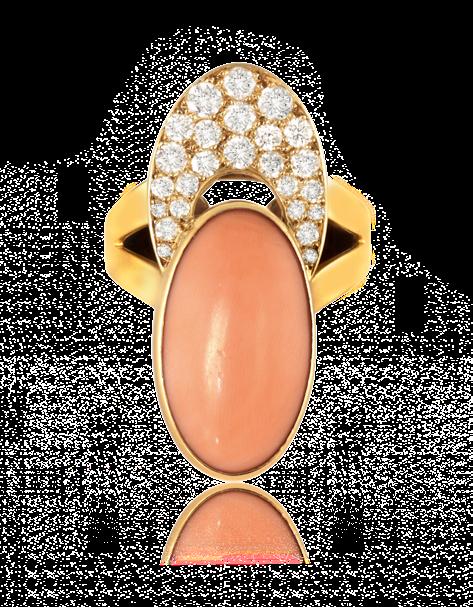
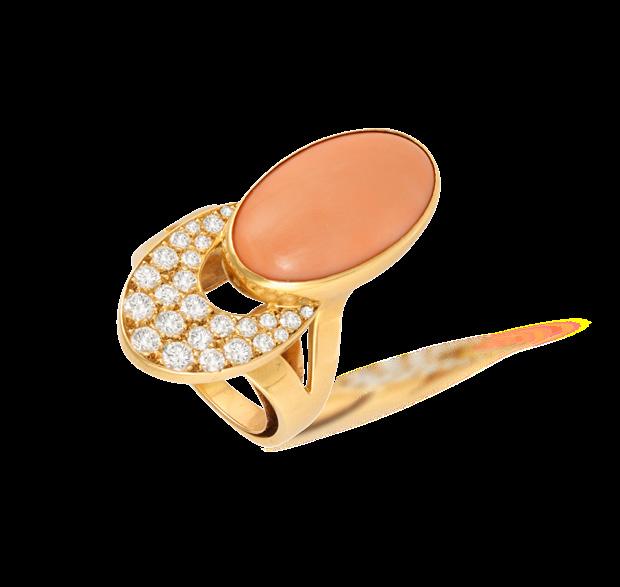
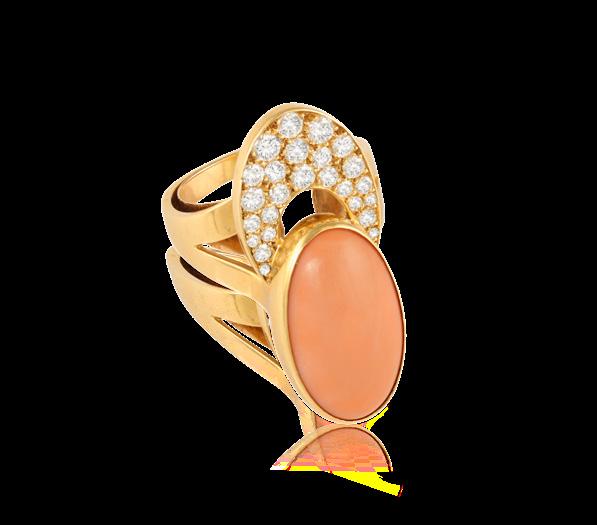
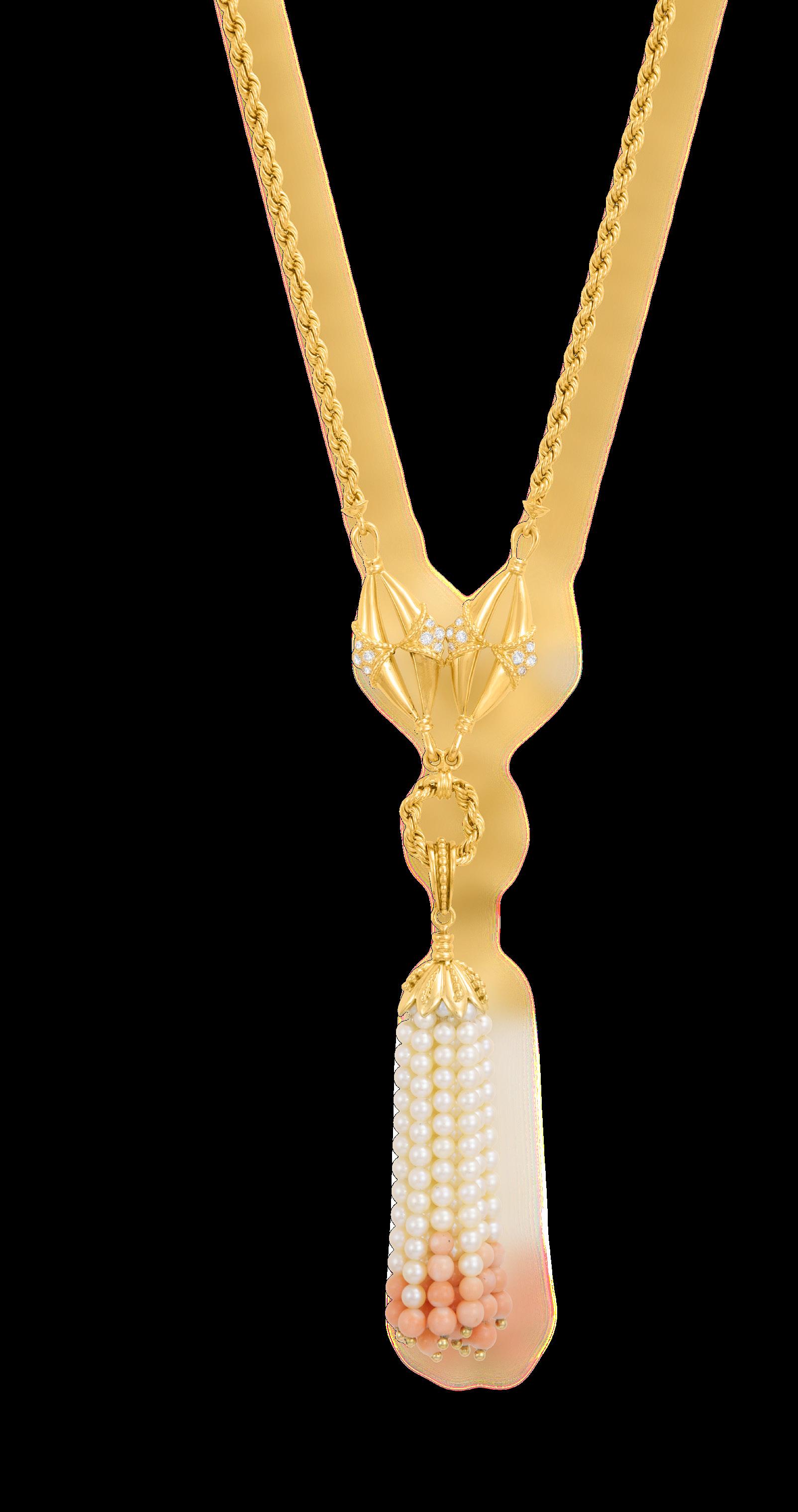
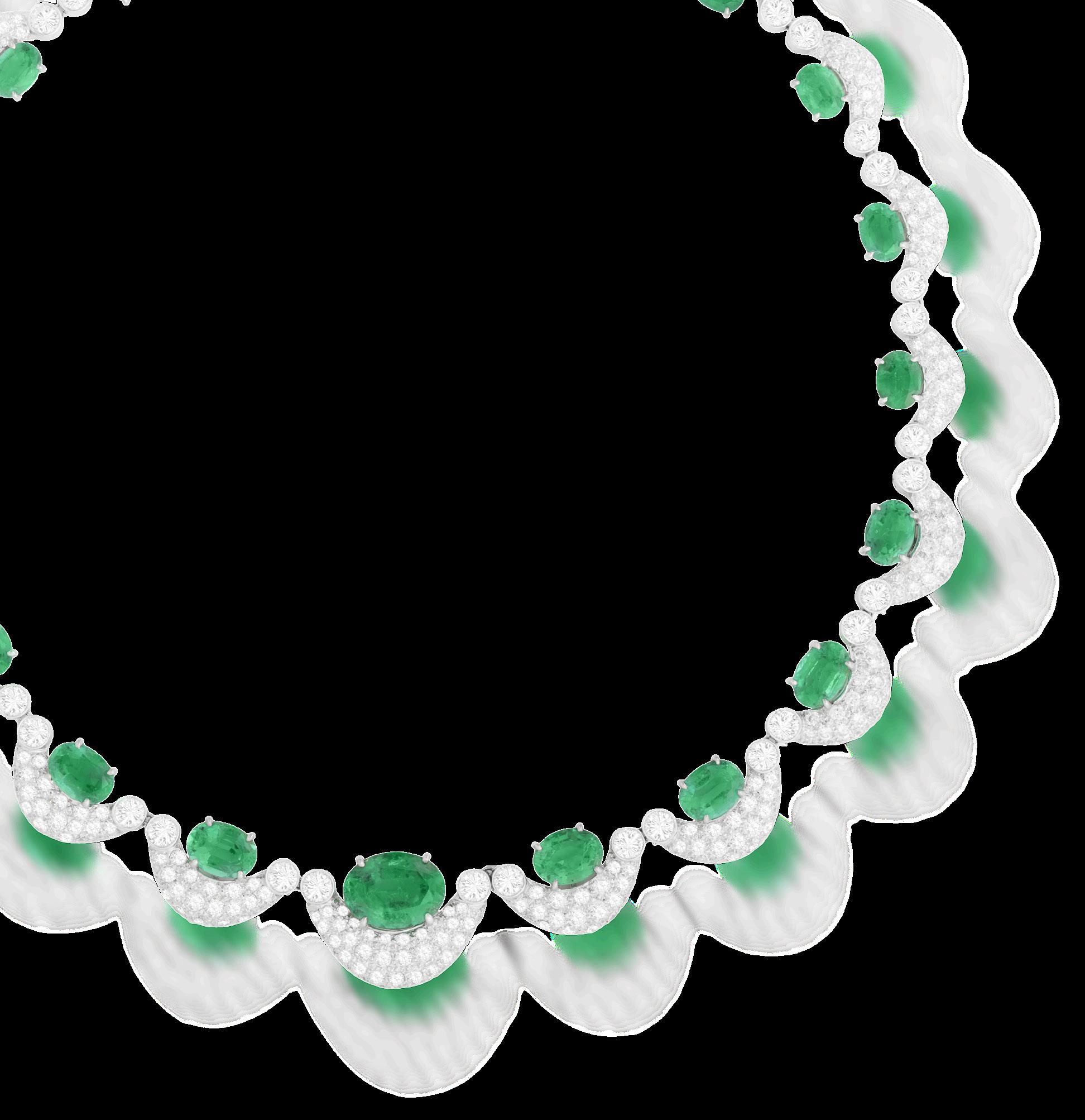
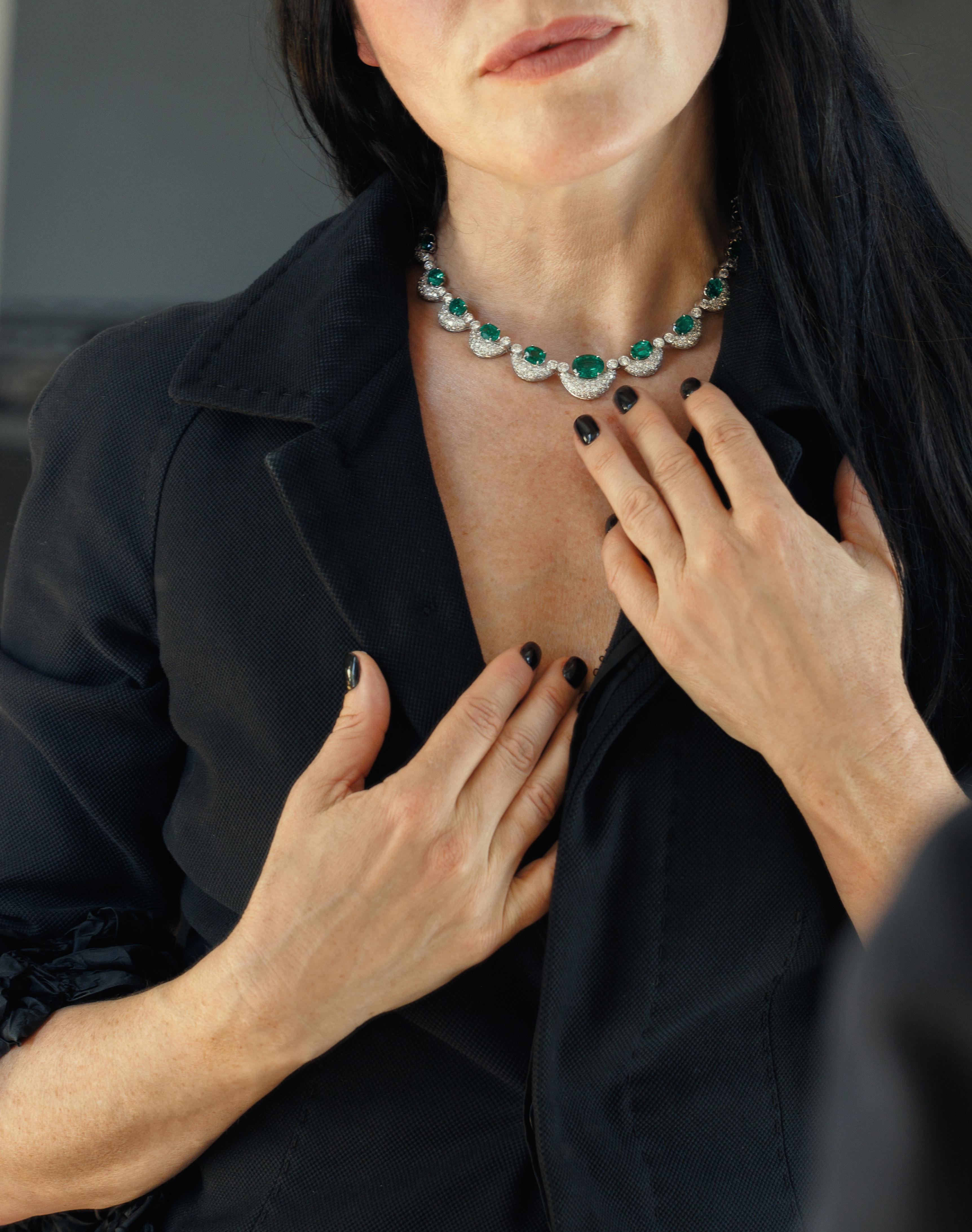
The necklace composed of graduated curved pavé-set brilliant-cut diamond links, with collet-set brilliant-cut diamond accents, each motif claw-set with a graduated oval-shaped emerald, to a concealed clasp; together with a pair of matching earclips, mounted in 18K gold and platinum, diamonds approximately 25.00cts total, with green leather pouch, length of necklace 38.5cm, length of earclips 2cm
€ 50,000 - 60,000
Accompanied by a report from the SSEF laboratory in Switzerland, stating that the twenty-two emeralds are natural, of Zambian origin, with strong green saturation, minor to moderate. Dimensions from approx. 12.20x9.20x5.80mm to 6.85x5.20x3.60mm. Report number 144739, dated March 3rd 2025.
Emeralds have captivated civilizations for centuries, from Cleopatra’s Egypt to the Mayans and the Mughals. The name “emerald” comes from the Greek 'smaragdos', meaning “green gem,” symbolizing life and renewal. Over time, the emerald became legendary, thought to hold powers of prophecy and truth-telling, solidifying its status as a revered gemstone.
For centuries, Colombia has been the most famous source of emeralds, renowned for their deep green colour with rich undertones. Colombian emeralds owe their striking hue to the presence of chromium and vanadium. These stones are often described as having a “velvety” softness. However, they typically contain more inclusions, known as jardin, which are natural characteristics of the gem but can impact its durability. Despite these inclusions, Colombian emeralds are still highly sought after for their rich, saturated green tones.
In contrast, Zambian emeralds, which gained recognition in the late 20th century, have carved out a prominent position in the global gemstone market. These emeralds are known for their intense bluish-green hue and exceptional clarity, which results from the presence of iron rather than chromium. Zambian emeralds typically have fewer inclusions, giving
them a cleaner appearance and making them more structurally durable. This clarity has made them increasingly popular among jewellers who value both beauty and resilience in gemstones.
The Kagem Mine in Zambia’s Copperbelt Province, the world’s largest emerald mine, supplies around 25% of global emeralds. Notable finds include the 5,655-carat “Inkalamu” (2018), 1,225-carat “Kafubu Cluster” (2022), and 1,104-carat “Lion Emerald” (2017), cementing Zambia’s status as a leading source of large, high-quality emeralds with exceptional clarity.
In recent years, Zambian emeralds have broken auction records, underscoring their growing value. A 56.87-carat piece by Chopard sold for over $1 million at Phillips Hong Kong in 2021, while a 17.43-carat emerald fetched £1.2 million at Bonhams London in 2022. Renowned jewellers such as Chopard, Graff, Boucheron, and David Morris have incorporated Zambian emeralds into their collections. High-profile figures like Julianne Moore at the 2016 Cannes Film Festival, Taraji P. Henson at the 2016 Golden Globe Awards, and Ellie Goulding at the 2020 Green Carpet Fashion Awards, have all been spotted wearing them.
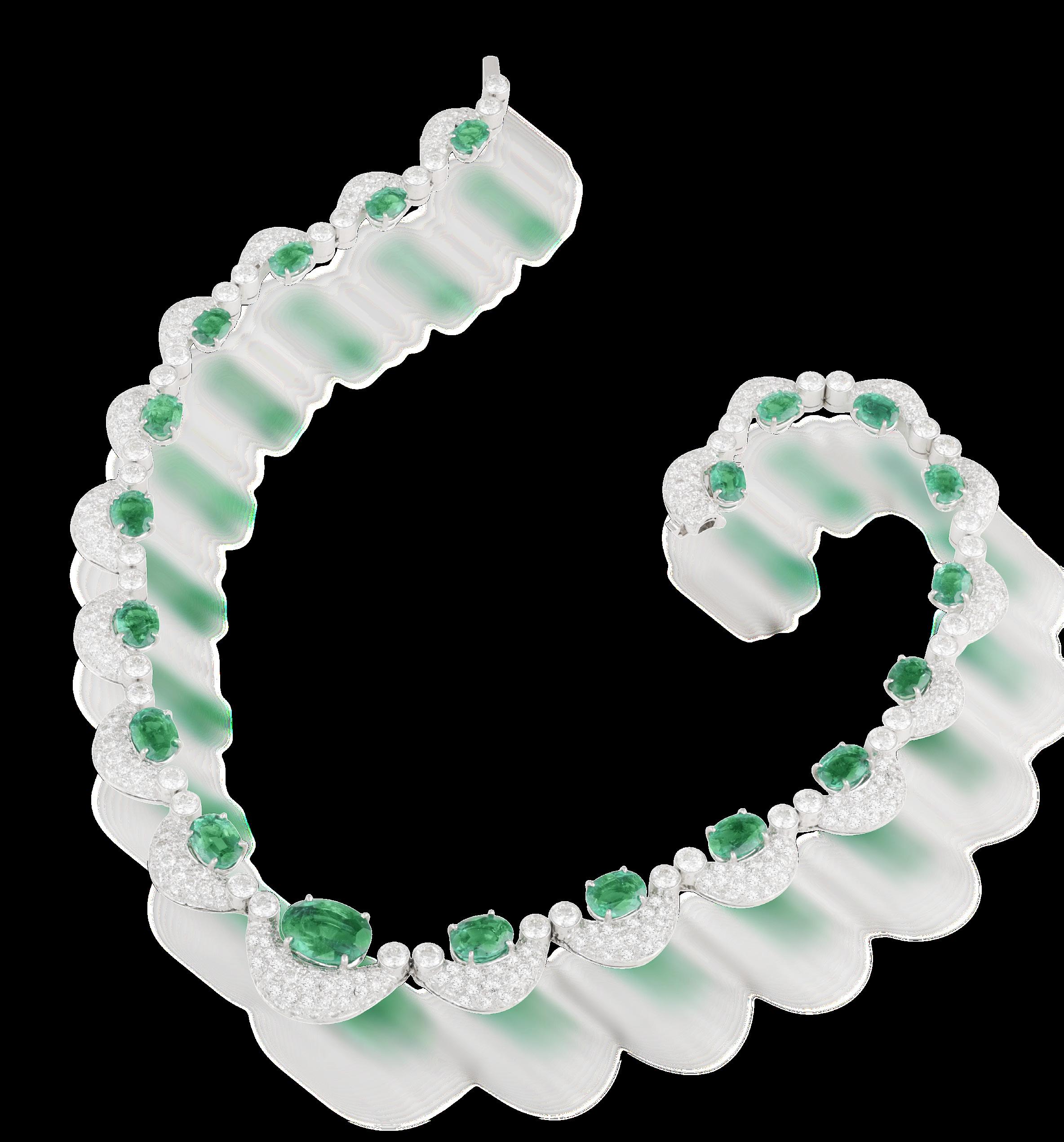
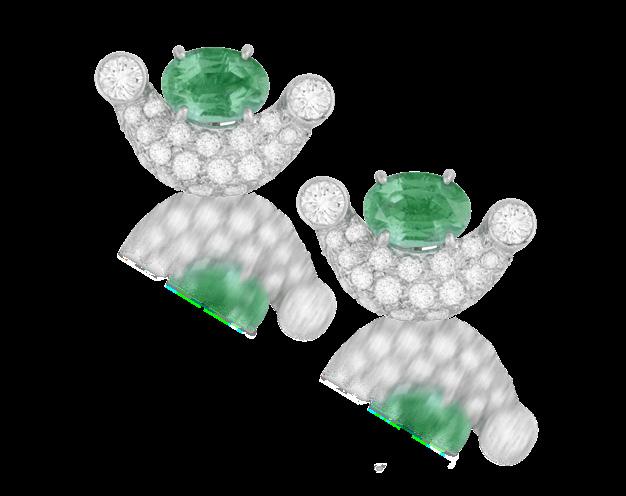
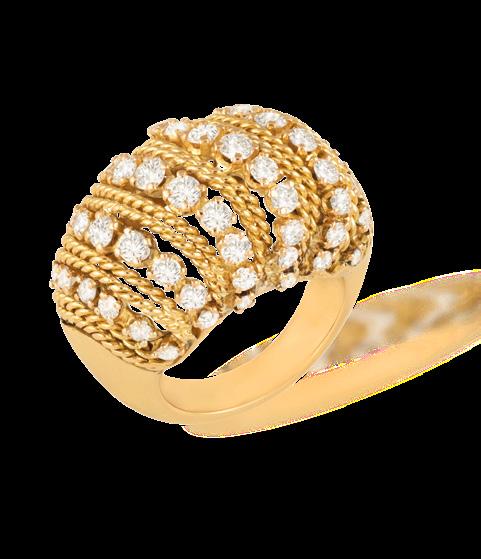
The cushion-shaped emerald, weighing approximately 8.80cts, within a double four-claw set ting, to a brilliant-cut diamond frame, mounted in 18K gold, diamonds approximately 2.00cts total, ring size N
€ 8,500 - 9,500

The emerald was verbally tested at GCS laboratory in London, in March 2025. It was confirmed to be natural, of Brazilian origin, minor oil.
Of openwork bombé design, set with a series of brilliant-cut diamonds between ropetwist detailing, mounted in 18K gold, diamonds approximately 2.40cts total, ring size K
€ 2,500 - 3,500
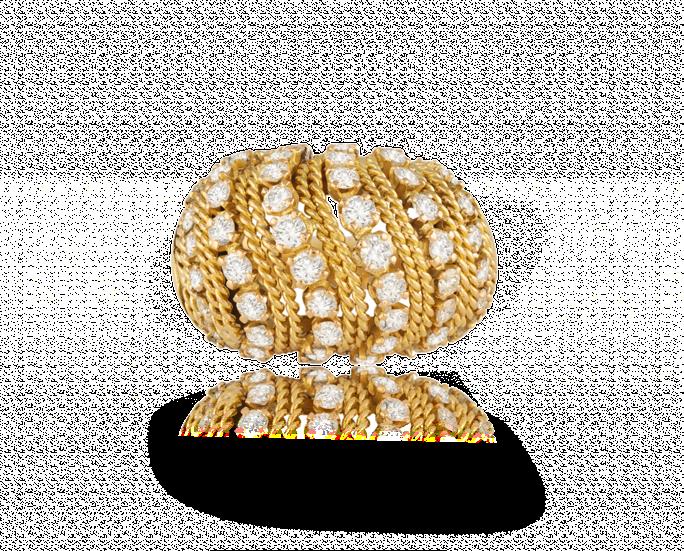
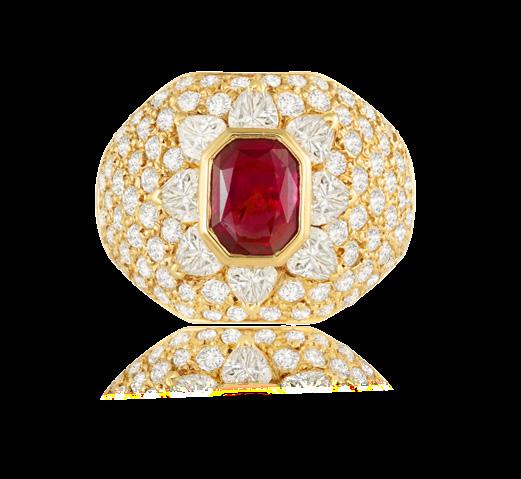
The collet-set cut-cornered rectangular ruby, within a bombé mount, set with a heart-shaped diamond surround and pavé-set with brilliant-cut diamonds, mounted in 18K gold, diamonds approximately 3.80cts total, with case by ‘Mancini E Lefevre Gioiellieri, via della Croce, 87, Roma’, ring size O½
€ 4,000 - 5,000
Accompanied by a report from the Istituto Gemmologico Nazionale, stating that the ruby weighing approximately 1.40cts is natural, of Thai origin, with indications of heat treatment and presence of residue. The diamonds are natural, weighing approximately 3.80cts total, estimated colour G/H, estimated clarity IF/VVS. Report number 36404, dated November 18th
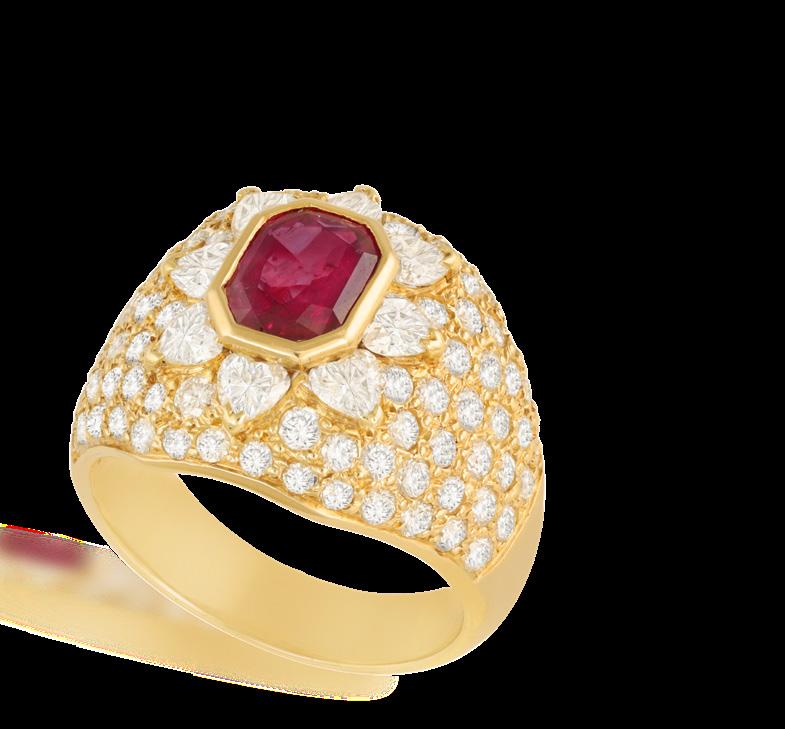
Each designed as a daisy, petals pavé-set with brilliant-cut diamonds, pistil set with cut-cornered square-shaped orangy-yellow sapphires accented with brilliant-cut diamonds, mounted in 18K gold and platinum, diamonds approximately 10.00cts total, with case by ‘F. Moroni, Roma’, length 4cm
€ 6,000 - 7,000
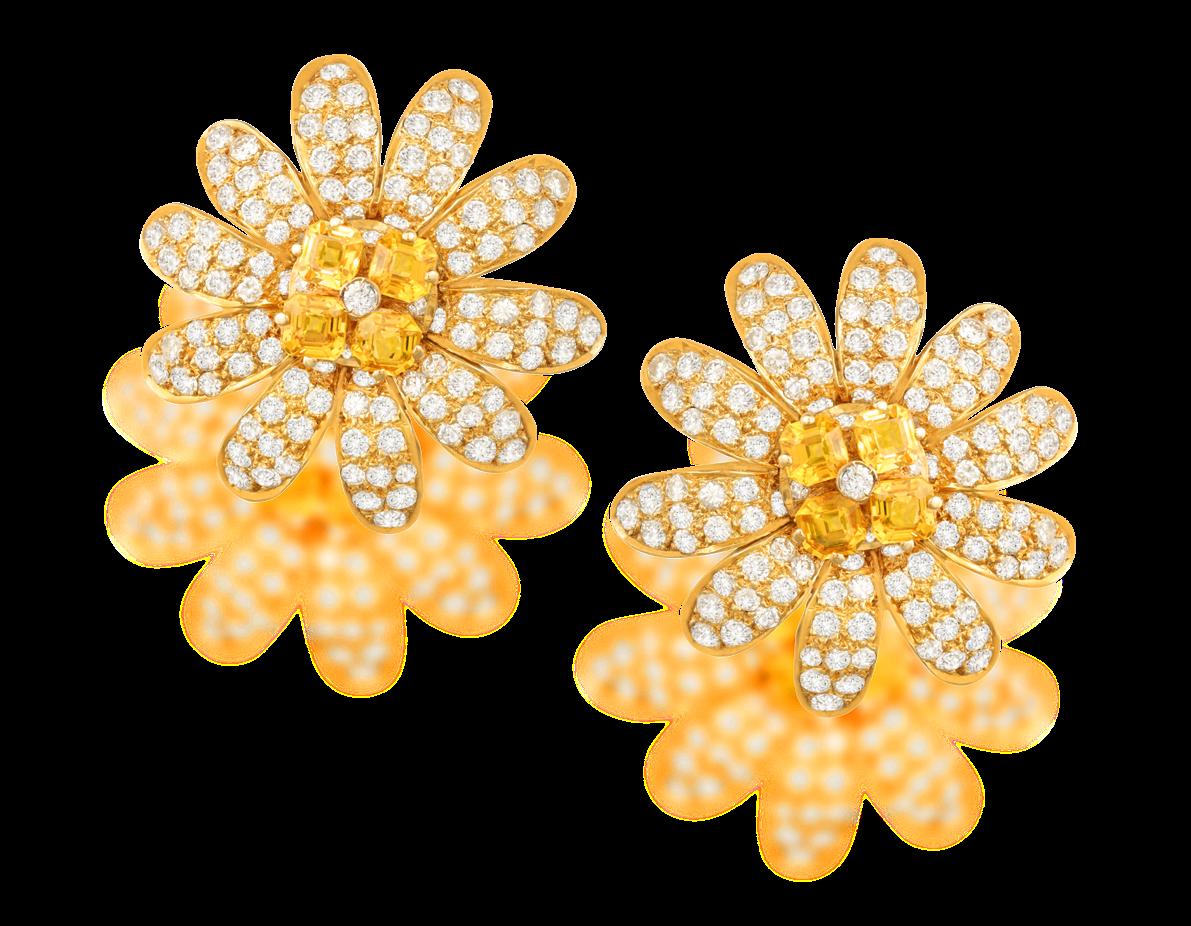
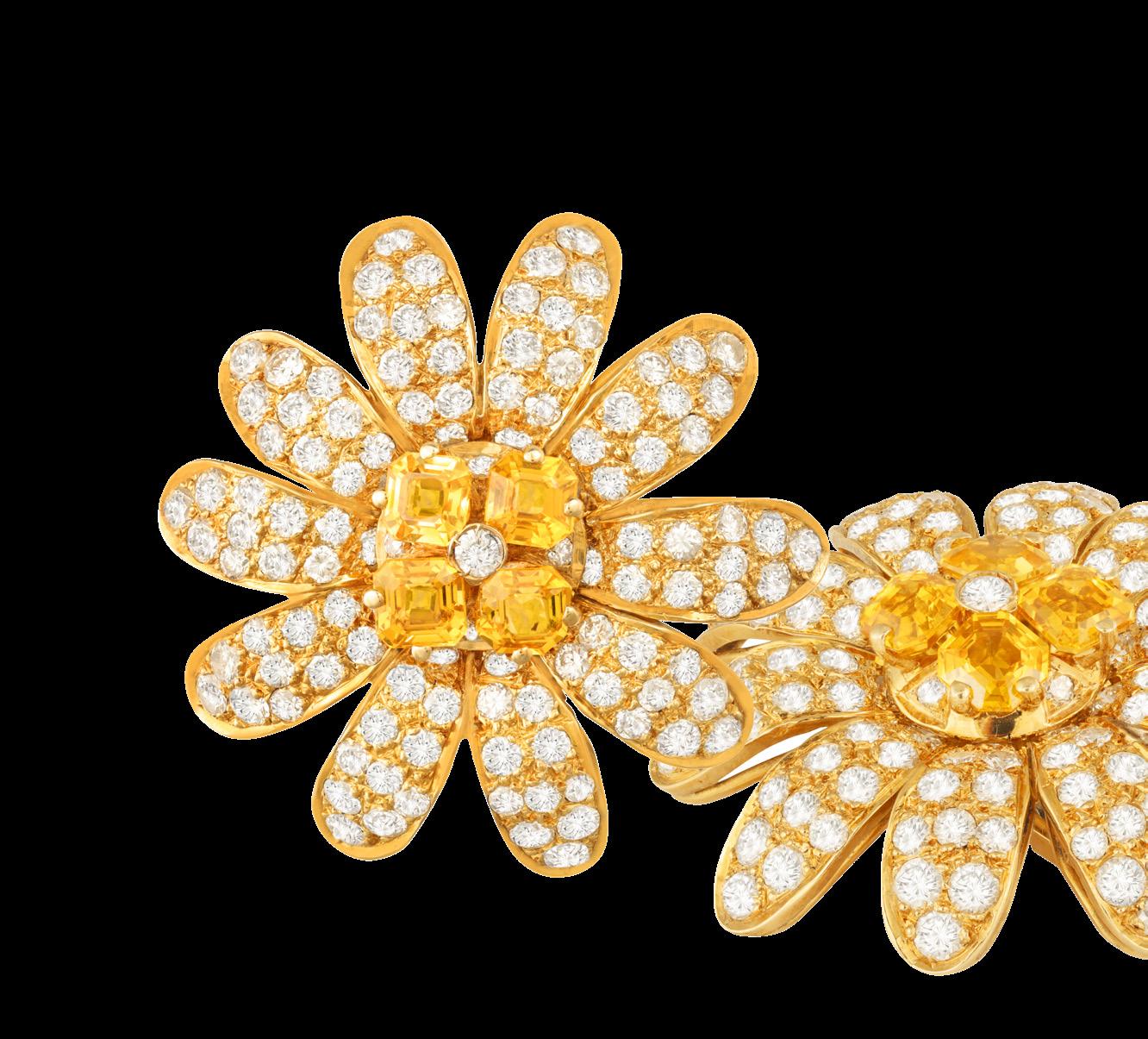
The fancy-link chain suspending a stylised scarab, the carved jade body with engraved hieroglyphics on reverse, to polished gold feet highlighted with brilliant-cut diamonds, mounted in 18K gold, French assay mark, Egyptian assay marks, pendant length 6.7cm, necklace length 67cm
€ 5,000 - 6,000
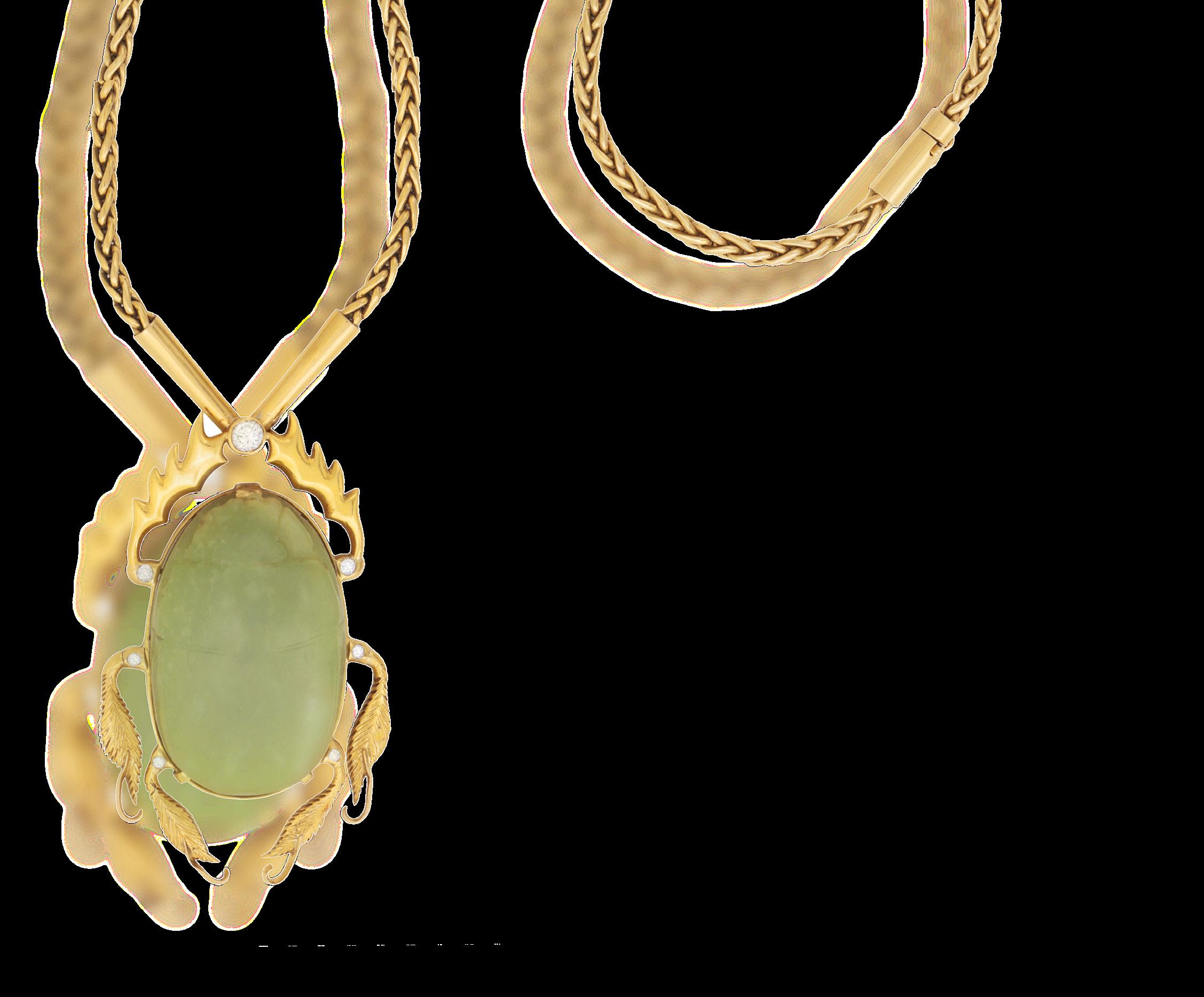
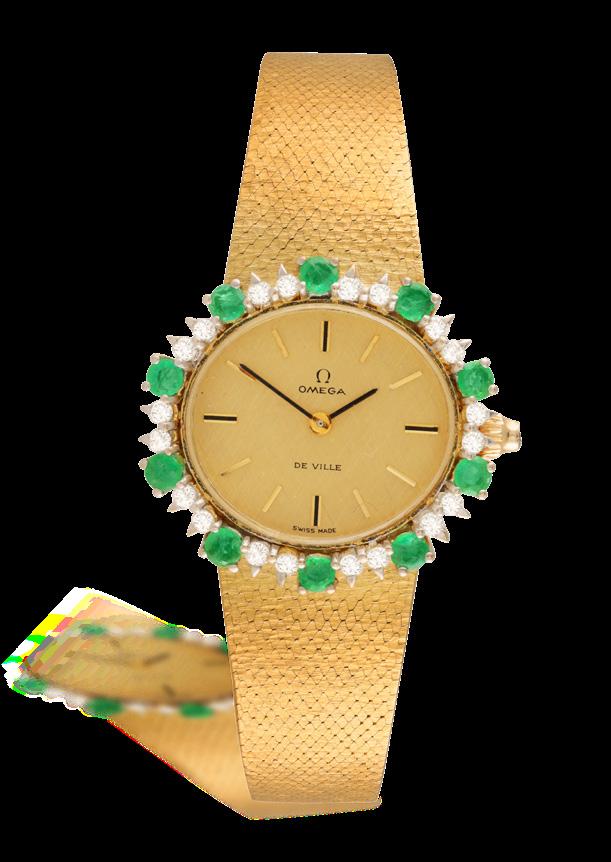
Swiss assay mark, dial and movement signed, case no. 8226, movement no. 29740633, with original maker’s case and outer box, case (excluding stones and crown): 21mm, length 18cm
€ 2,500 - 3,500
Of openwork design, the stylised flower set with circular-cut rubies and brilliant-cut diamonds with ropetwist detailing, the sepal leaves highlighted with further brilliant-cut diamonds, to a polished gold mounted in 18K gold, marked M, numbered 59413, length
€ 2,800 - 3,200
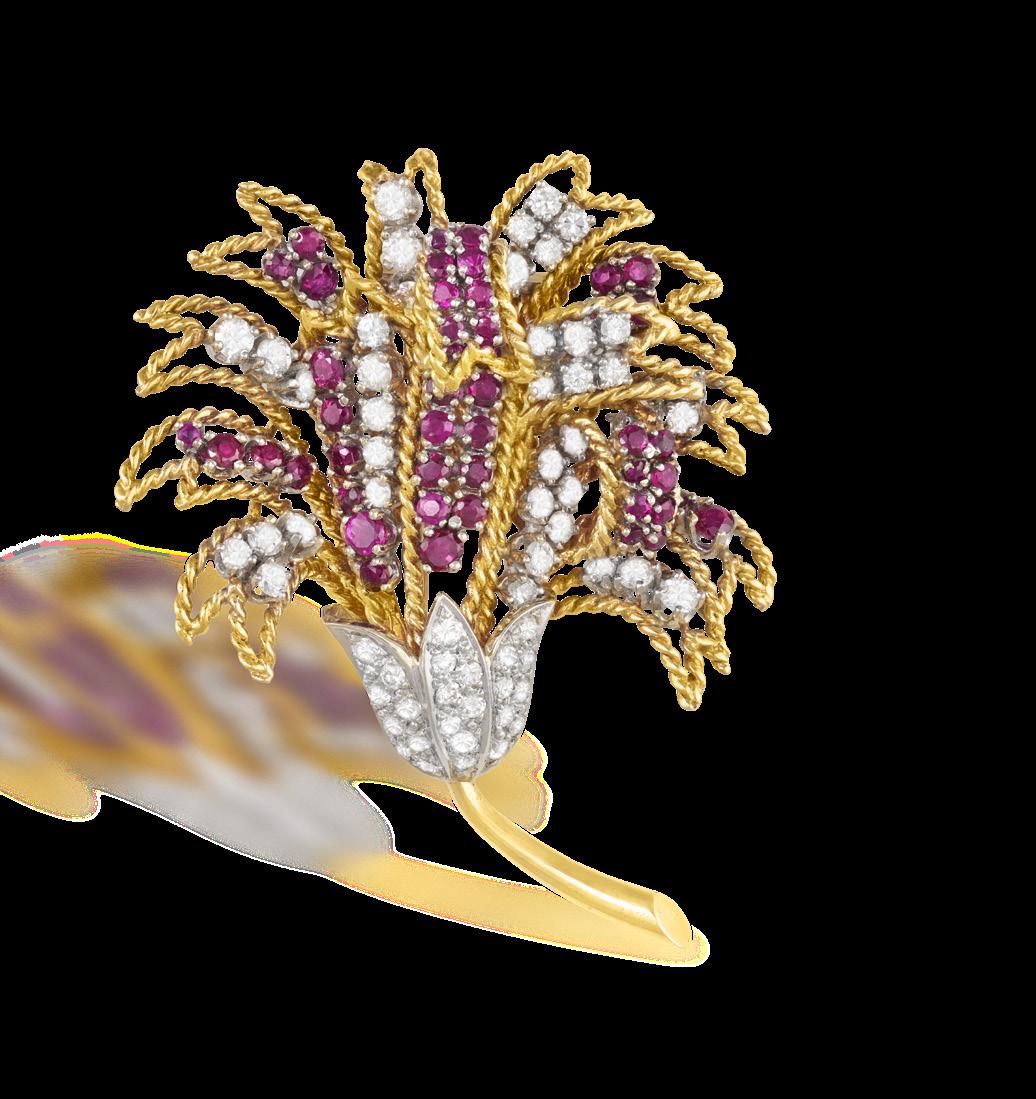
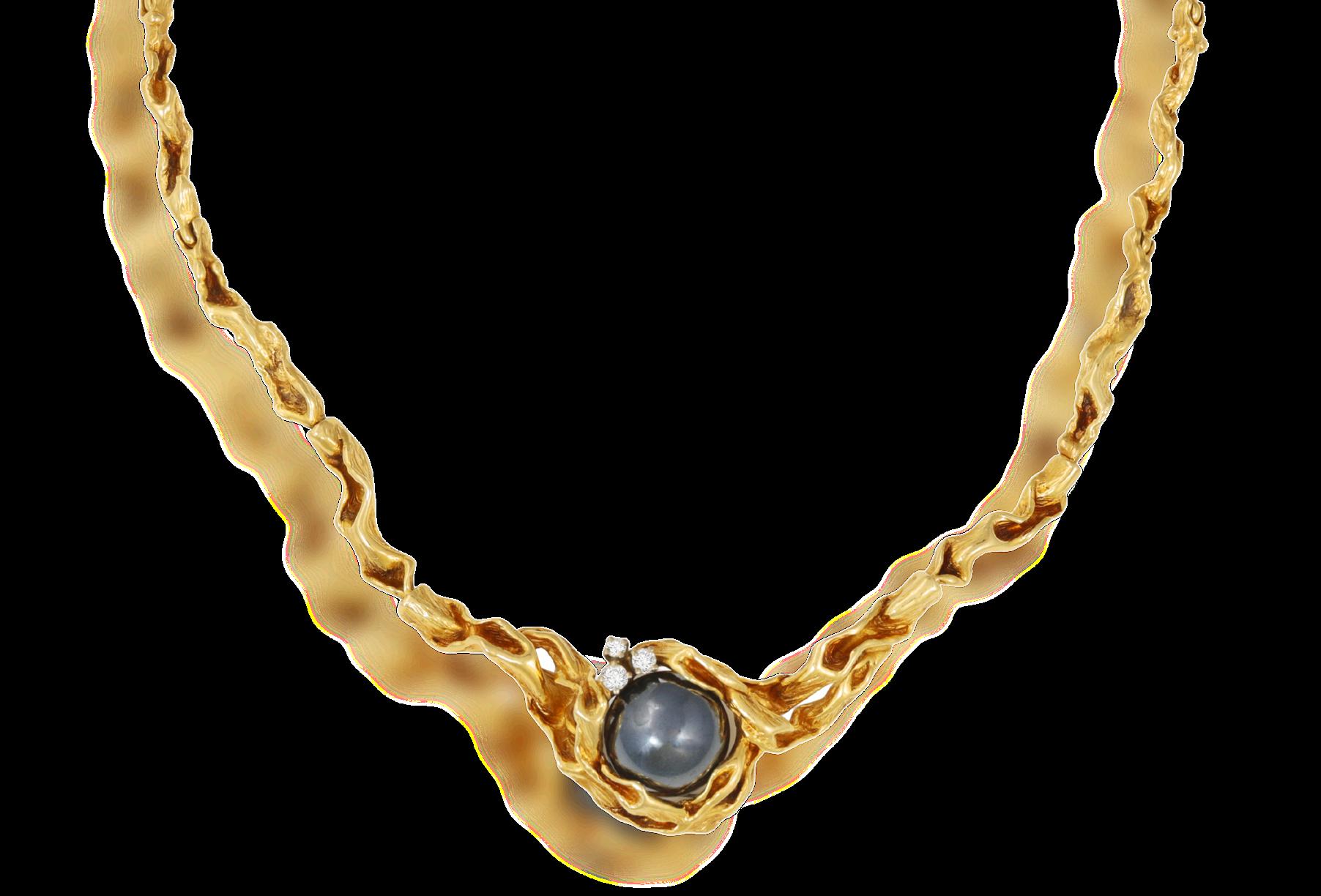
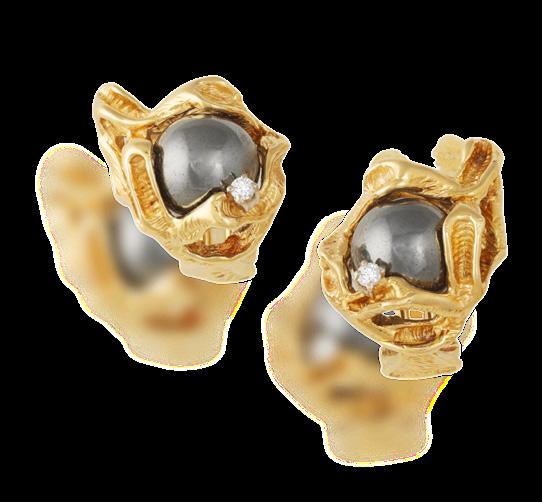
GILBERT ALBERT
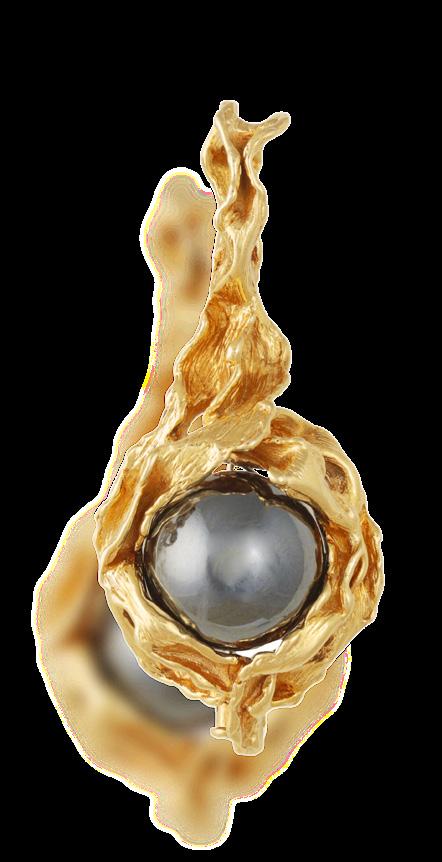
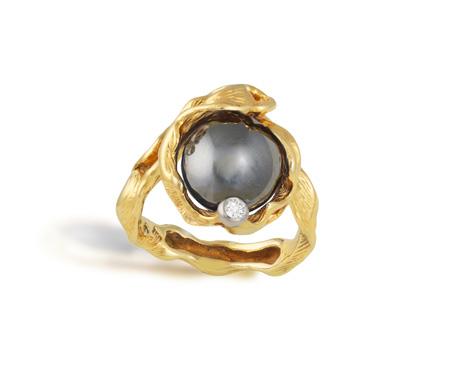
Comprising a necklace, a pair of earclips, a pendant/brooch and a ring, of abstract and textured gold design, decorated, each enhanced with brilliant-cut diamonds (apart from the pendant), accompanied by interchangeable hardstone spheres of various tints, mounted in 18K gold, each with maker’s mark ‘GA’ for Gilbert Albert, with maker’s pouch, pendant/brooch length 5.3cm, ring size J½, earclips length 3.3cm, necklace approximately 42cm
€ 6,000 - 7,000
Gilbert Albert was born on September 30, 1930, in Geneva. Inspired by his father’s reverence for the natural world, Albert’s creative vision redefined the relationship between nature and adornment.
Albert’s design journey began early with him attending the esteemed School of Industrial Arts in Geneva. His exceptional talent caught the eye of Patek Philippe, and by the age of 25 he was working in Philippe’s workshop, where he revolutionised watch design. Breaking away from conventional forms, Albert introduced asymmetrical cases and sculptural aesthetics, creating iconic timepieces that transcended mere functionality.
His groundbreaking “Ricochet” series, celebrated for its daring geometry, earned him three prestigious Diamonds International Awards during his tenure—recognition that solidified his status as a leading innovator in horology.
In 1962, Albert opened his own atelier, transforming the unconventional into the extraordinary with materials such as meteorites, fossilised bones, and the exoskeletons of scarab beetles.
His philosophy was to preserve the inherent beauty of nature without alteration, a principle that infused his jewellery with an air of mystery and allure.
Among his most iconic pieces is the innovative necklace with interchangeable beads, which affords its wearer a highly individualised expression of beauty. His work often featured the sacred beetle pattern, paying homage to ancient cultures that revered these creatures.
His passing in October 2019 has been exceeded by the legacy Gilbert Albert left behind, with his creations highly sought after in auction houses worldwide, celebrated as masterpieces of both art and nature.
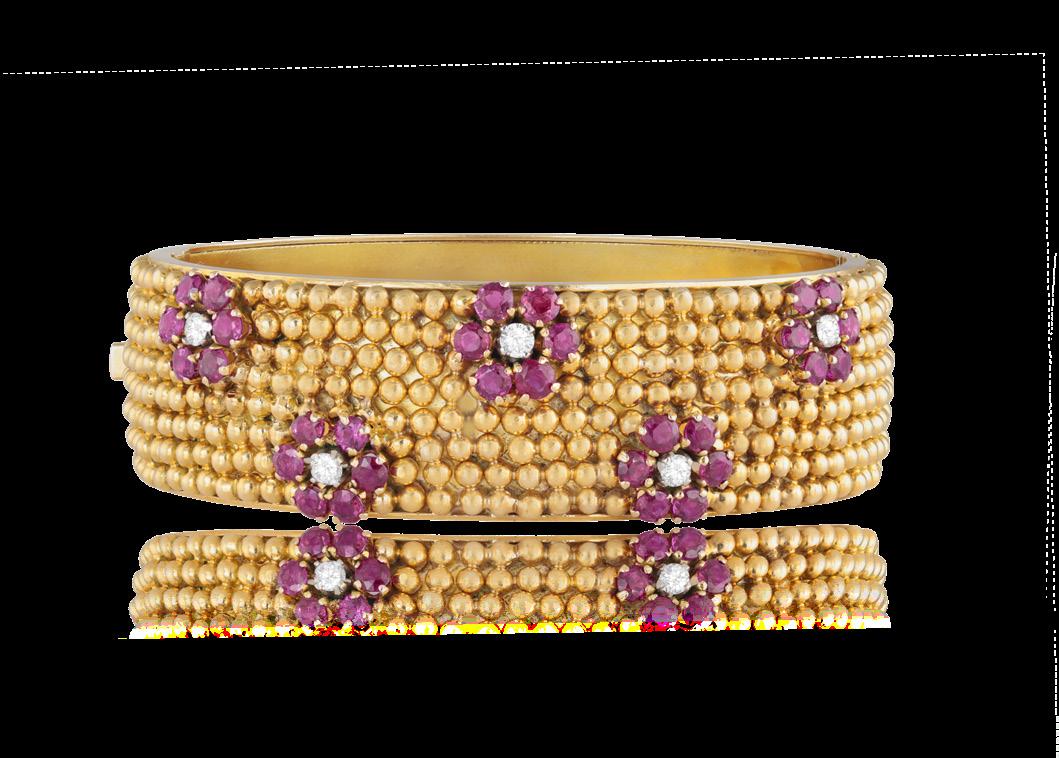
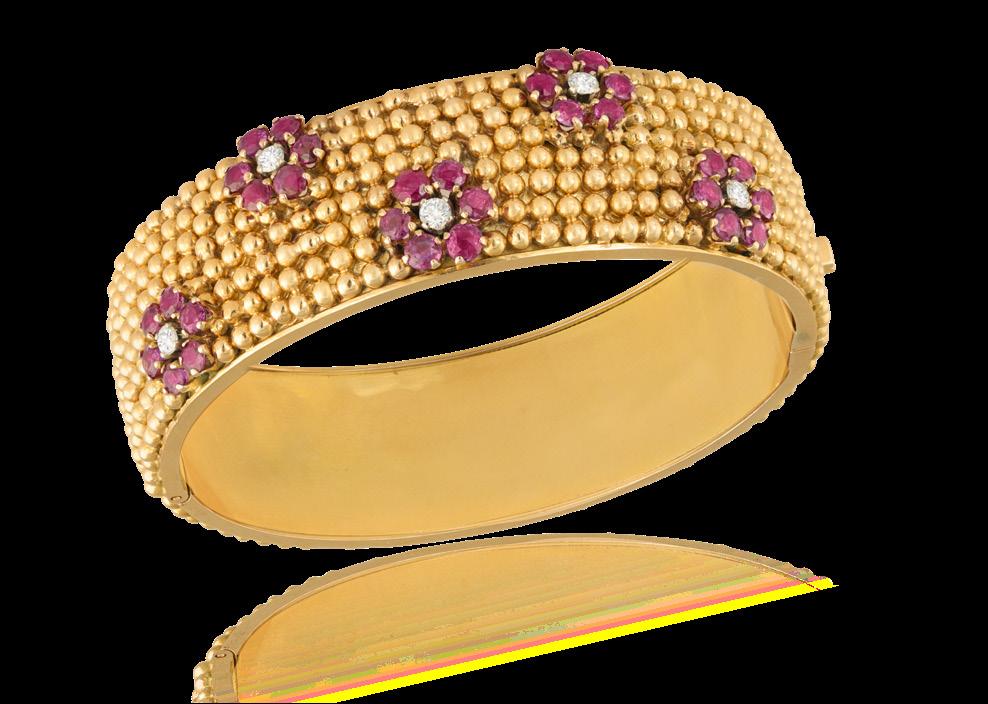
1955-60
Of hinged design, the bangle composed of gold beads, highlighted to the front with circular-shaped rubies and brilliant-cut diamond flower motifs, mounted in 18K gold, signed Bvlgari, inner circumference 16cm
€ 15,000 - 20,000
Of openwork cross design, with dot and engraved detailing, mounted in 18K gold, Italian registry mark for Cusi between ‘1944-1968’, length (including bale): 5.8cm
€ 800 - 1,000
Founded in Milan in 1886 by Annibale Cusi, the historic High Jewellery House, bearing the family name, has been representing Italian artisanal excellence for five generations. Rising to prominence during the Art Nouveau era, the Maison quickly became a favourite of Milanese aristocracy and the Italian Royal Family. Among its masterpieces is the “Maria Stuarda” necklace, which was awarded the Grand Prize at the 1906 Milan International Exhibition. The necklace took over two years to be completed, it is set with around 15,000 diamonds, pearls and rubies, and is crafted in Platiuralium, a unique alloy invented by Annibale Cusi, to achieve incredible lightness. With boutiques in Milan and Portofino, Cusi continues to blend tradition, innovation, and a passion for rare gemstones.
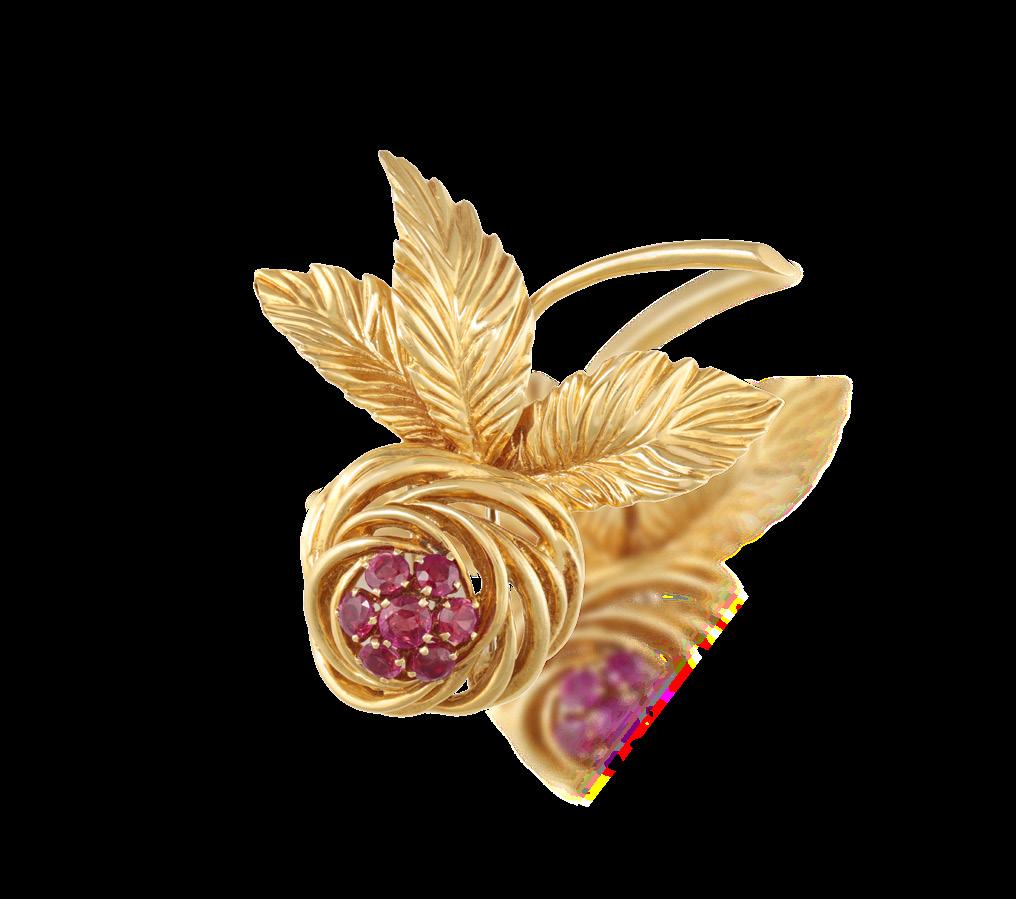
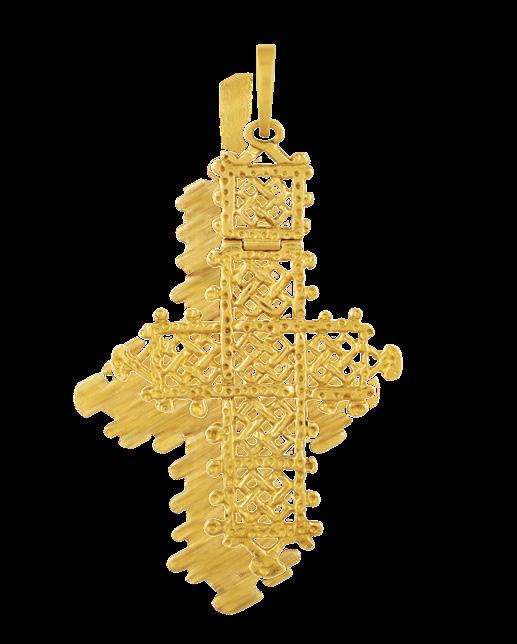
The stylised rose flower, embellished with circular-cut ruby pistil, to textured gold leaves and polished gold stem, mounted in 18K gold, signed Van Cleef & Arpels, numbered, with maker’s mark ‘P&Fils’ for Pery & Fils, French assay marks, length 4.3cm
€ 4,500 - 5,500
Of scrolled wire design, highlighted with graduated with brilliant and single-cut diamonds, mounted in 18K gold and platinum, diamonds approximately 1.20cts total, signed Gübelin, numbered, maker’s mark, length 4.8cm
€ 4,500 - 5,500
Gübelin’s journey began in the 1850s when Mauritz Breitschmid opened a small watchmaker’s shop in Lucerne, Switzerland. In 1886, Eduard Jakob Gübelin, a former apprentice of Breitschmid, became his business partner, marking the start of the Gübelin family’s involvement in the company. By the 1920s, the company had expanded to include a jewellery atelier and a gemmological laboratory to ensure the authenticity of the gemstones it used. Over the years, the brand grew, opening several boutiques in Switzerland and abroad, including its first Hong Kong branch in 2010.
Known for its handcrafted creations, the Gübelin Jewellery Atelier draws inspiration from the natural beauty of coloured gemstones. Each piece highlights the distinctive qualities of these exceptional gems, blending art, science, and tradition into designs that are truly one-of-a-kind.
Gübelin’s creations feature high-quality stones such as Paraiba tourmalines and Siberian amethysts, with a strong focus on ethical sourcing and sustainability. Their bespoke collections often combine timeless gems like sapphires, emeralds, and diamonds.
With deep ties to its heritage, Gübelin continues to uphold high standards, blending innovation with traditional techniques. After more than 165 years, the brand remains a respected name in the jewellery world, renowned for its commitment to quality and elegant designs.
130
The 7-jewel quartz movement, with circular champagne dial, dots for hours and gilt hands, the bezel highlighted with brilliant-cut diamonds, polished gold case with snap, with a quadruple fancy-link fitted two-tone bracelet and textured gold clasp, dial and movement signed, C logo on clasp, case no. 198692 & 4057, Swiss assay mark, clasp & crown signed LUC, case 22mm, diamonds approximately 1.10cts total, length approximately 19cm
€ 1,500 - 2,500
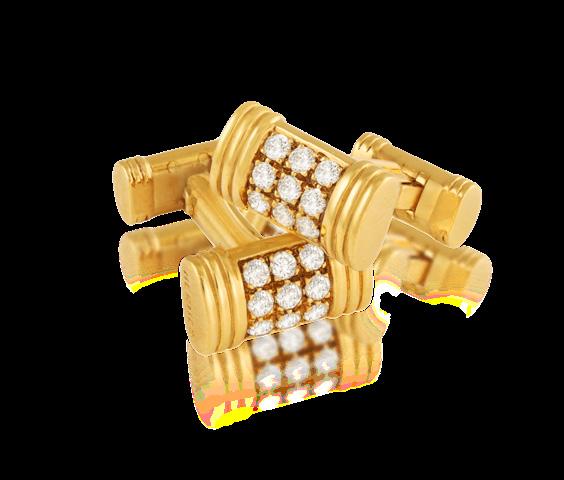
HERMÈS
A PAIR OF DIAMOND CUFFLINKS
Each centring brilliant-cut diamonds between reeded borders, to a T-bar of similar design, mounted in 18K gold, signed Hermes, diamonds approximately 1.00ct total, with maker’s mark ‘GF’ for Gay Freres, with maker’s case
€ 2,000 - 3,000

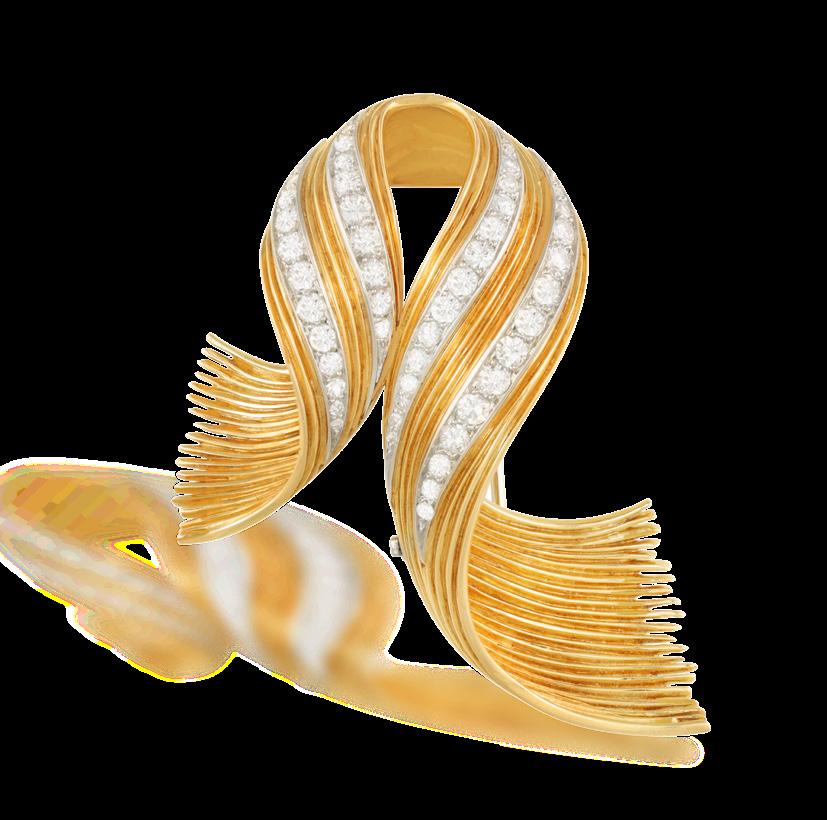
Designed as a floral and ribbon spray, set with marquise, brilliant and tapered baguette-cut diamonds throughout, mounted in platinum and 18K gold, diamonds approximately 12.00cts total, signed Albuquerque Paris - Monté Carlo, numbered 1.264, French assay marks, length 4.7cm
€ 10,000 - 15,000
133
Designed as an openwork heart of foliate design, millegrain-set with rose-cut diamonds, centring a colletset cushion-shaped sapphire weighing approximately 3.00cts, further collet-set with old-cut diamonds, mounted in platinum, length 4.3cm
€ 2,000 - 3,000
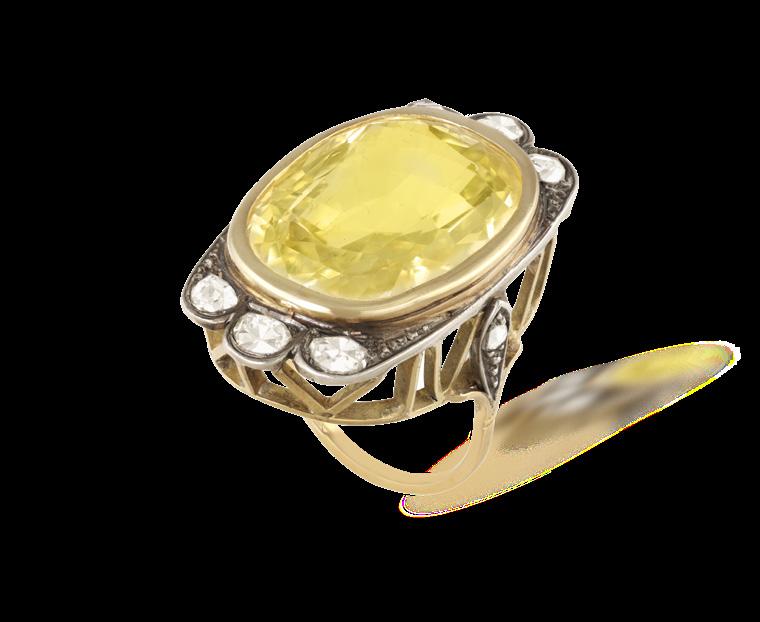
Of openwork bombé design, set with brilliant-cut diamonds, within a surround of marquise-shaped and baguette-cut diamonds, to a hinged ring shank, mounted in 14K gold, diamonds approximately 5.40cts total, ring size E½
€ 3,500 - 4,500
The European-cut diamond weighing 3.90cts, within a multiple-claw setting, to a plain mount, mounted in 18K gold, ring size L¾
€ 12,000 - 18,000
Accompanied by a report from the HRD laboratory in Antwerp, stating that the natural diamond, weighing 3.90cts, is N-O colour, VVS2 clarity. Report number 250000050660, dated March 13th 2025.
Collet-set with a cushion-shaped yellow sapphire, within a mount set with rose-cut diamonds, to a gallery of openwork wire design, mounted in 18K gold, ring size J⅔
€ 12,000 - 18,000
Accompanied by a report from Carat Gem Lab in France, stating that the natural yellow sapphire is 31.00cts, of Sri Lankan origin, with no indications of heating. Report number CGL21816, dated June 2020.
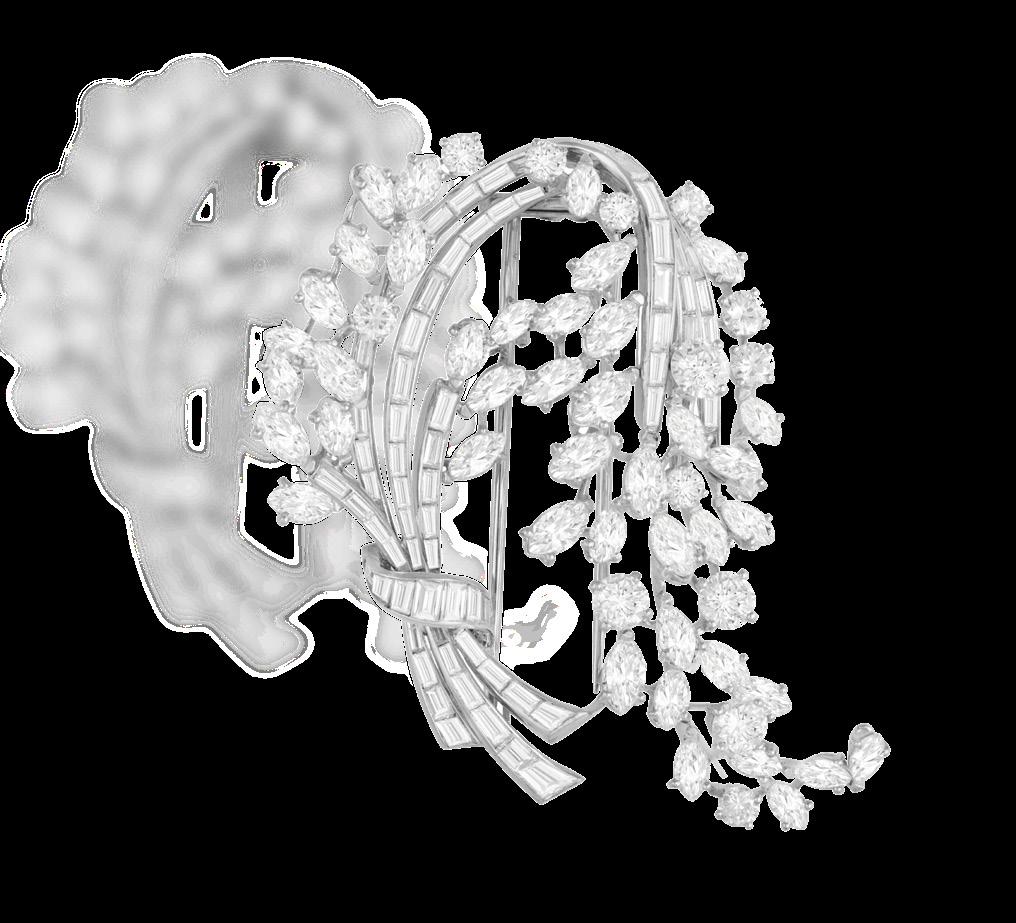
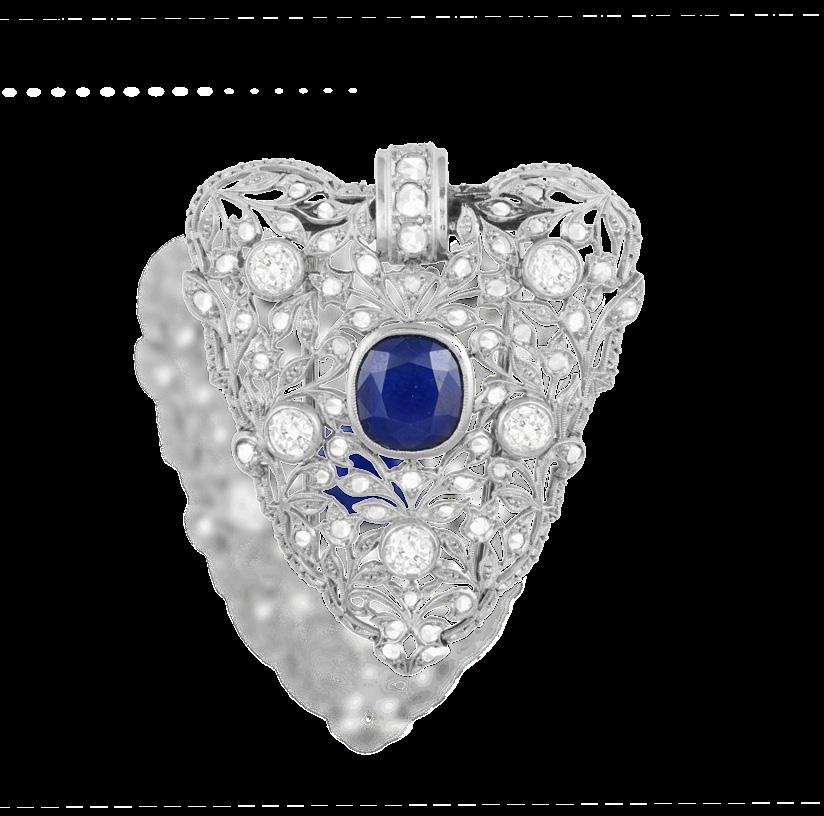

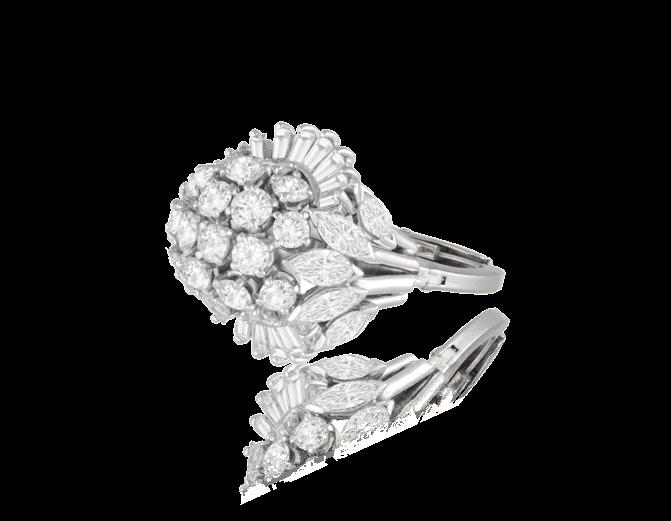
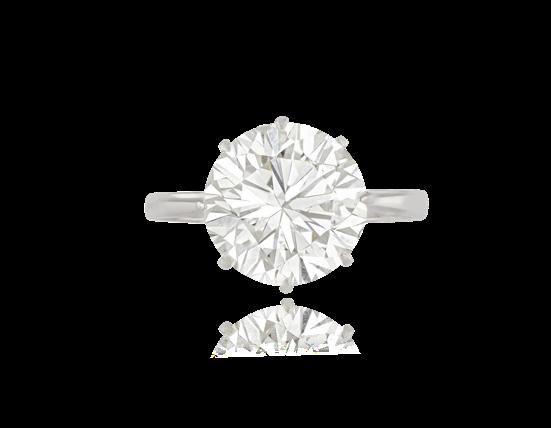
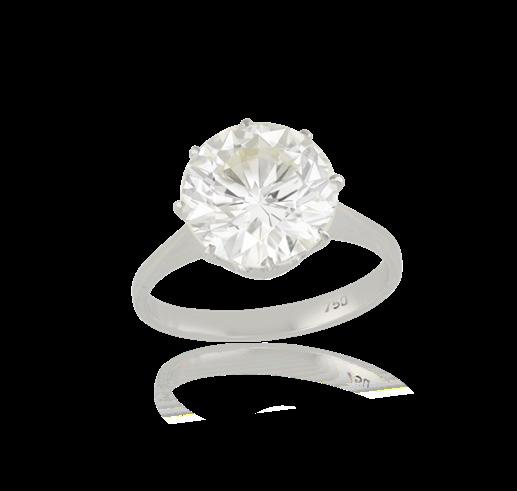

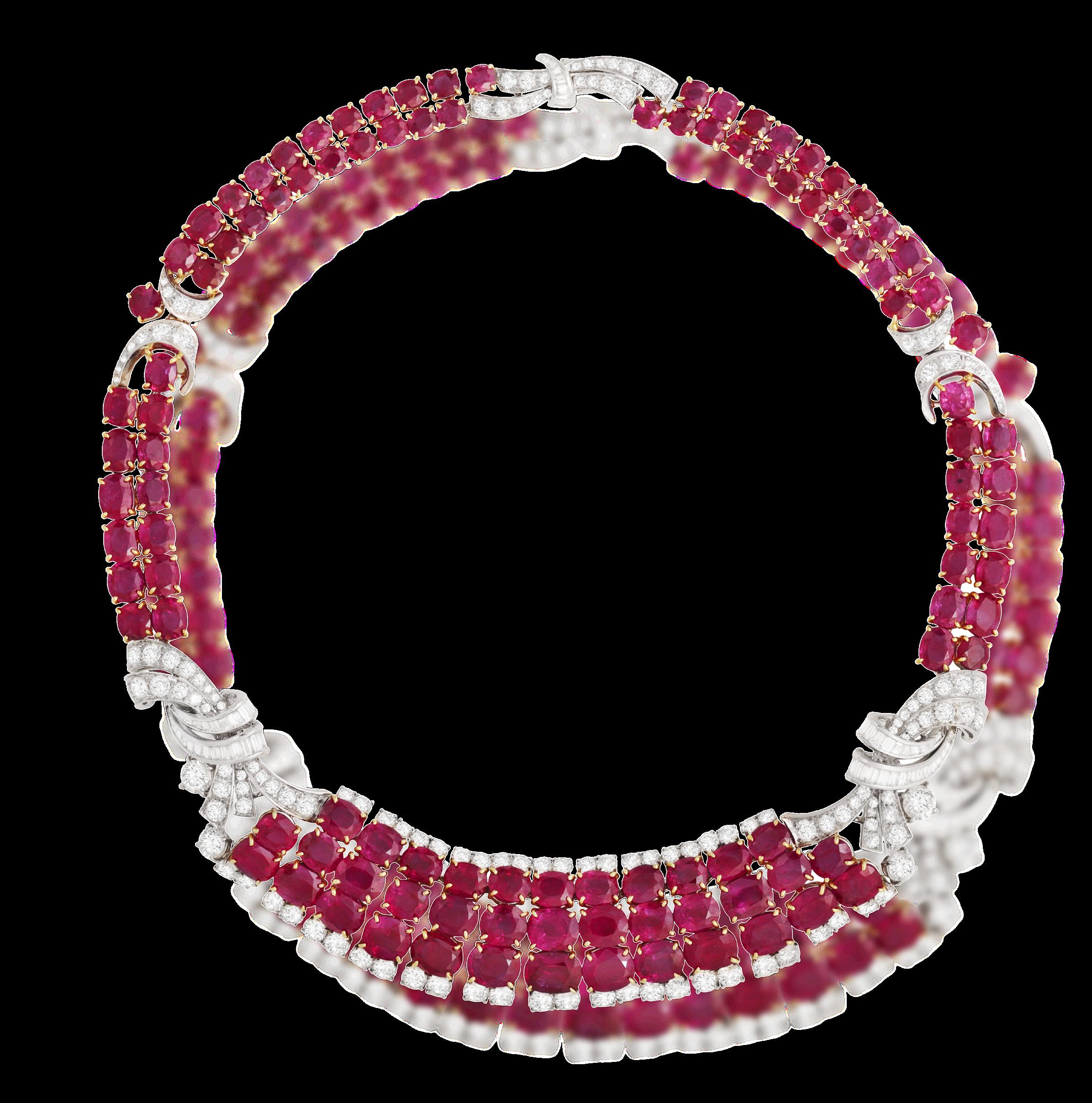
The front section of articulated panel design, claw-set with graduated oval and cushion-shaped rubies, to brilliant-cut diamond borders, flanked by scrolled bow-motifs set with square, baguette and brilliant-cut diamonds, extending to the back section by two rows of circular, oval and cushion-shaped rubies, between similar scrolled motifs set, with brilliant-cut diamonds, to a concealed diamond clasp, mounted in platinum, 18K yellow and white gold, French import mark, numbered 502, diamonds approximately 20.00cts total, inner circumference 38cm
€ 90,000 - 110,000
Accompanied by a report from the SSEF laboratory in Switzerland, stating that all 107 rubies are natural, of Burmese origin. Two larger rubies were found to be without indications of heating, while indications of heating were identified on the others. Report no. 144738, dated March 3rd 2025.
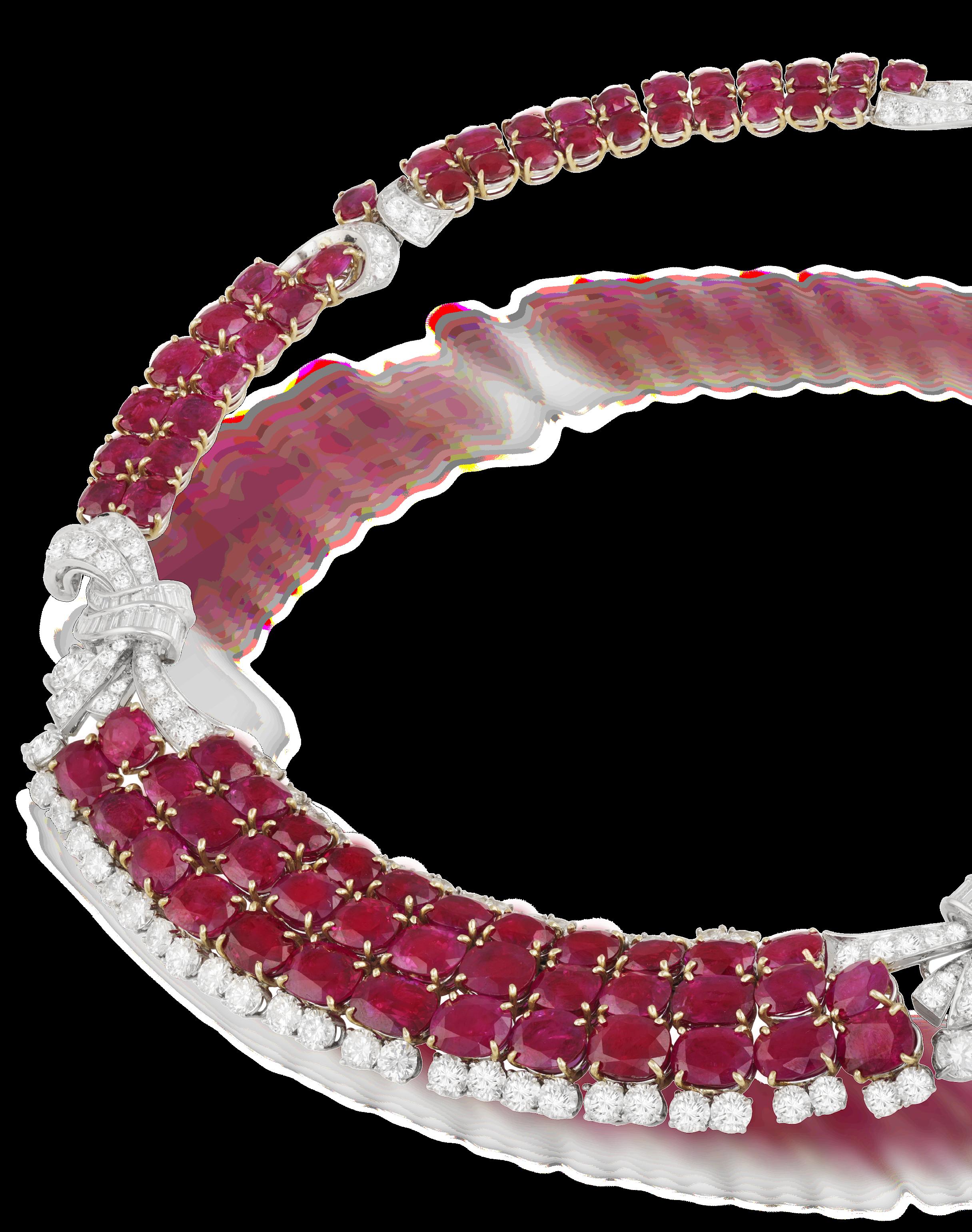
137
A PAIR OF MOTHER-OF-PEARL AND DIAMOND EARRINGS
Each of scrolled design, set with fancy-shaped motherof-pearl plaques, between pavé-set brilliant-cut diamond panels and border, mounted in 18K rose gold, numbered, diamonds approximately 2.20cts total, length 3cm
€ 3,500 - 4,000
139
Composed of a continuous line of princess-cut diamonds without claw-setting, mounted in platinum, with security chain, diamonds approximately 10.80cts total, length approx. 19.5cm
€ 6,000 - 8,000
141
MARGHERITA BURGENER. A PAIR OF DIAMOND AND TITANIUM EARCLIPS
Each circular undulating concave plaques, highlighted with a burst of brilliant-cut diamonds, mounted in 18K gold and titanium, signed Margherita Burgener, with maker’s mark ‘MB’, Italian registry mark, with flapping back-posts, with maker’s case, length 2.2cm
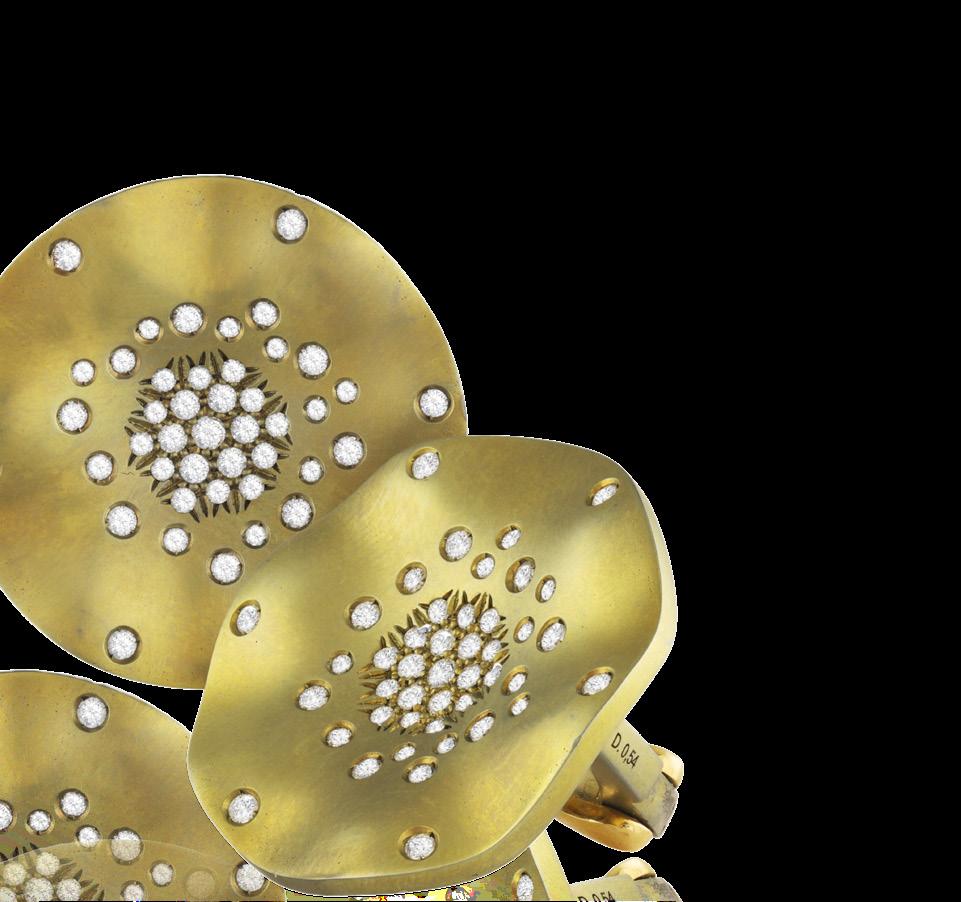
138
Of knife-edge crossover design, pavé-set with brilliant-cut diamonds, mounted in 18K rose gold, diamonds approximately 1.40cts total, ring size M½
€ 1,200 - 1,800
140
Of crossover design, set with a pear-shaped diamond of brown tint and a pear-shaped diamond, to shoulders set with baguette-cut diamonds, mounted in platinum, partial Italian registry mark, ring size M½
€ 2,500 - 3,500
142
Horizontally set at the centre, the cushion-shaped zircon weighing approximately 15.00cts, between brilliant-cut diamond borders and shoulders, mounted in 18K gold, diamonds approximately 0.50ct total, French assay mark, ring size M½
€ 2,500 - 3,500

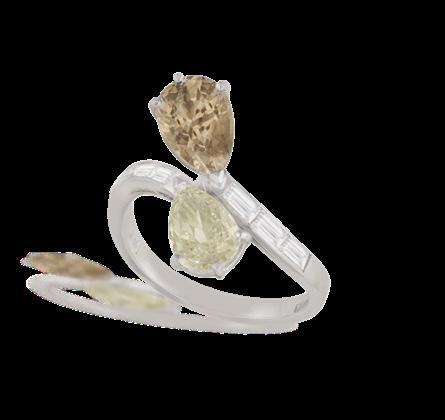
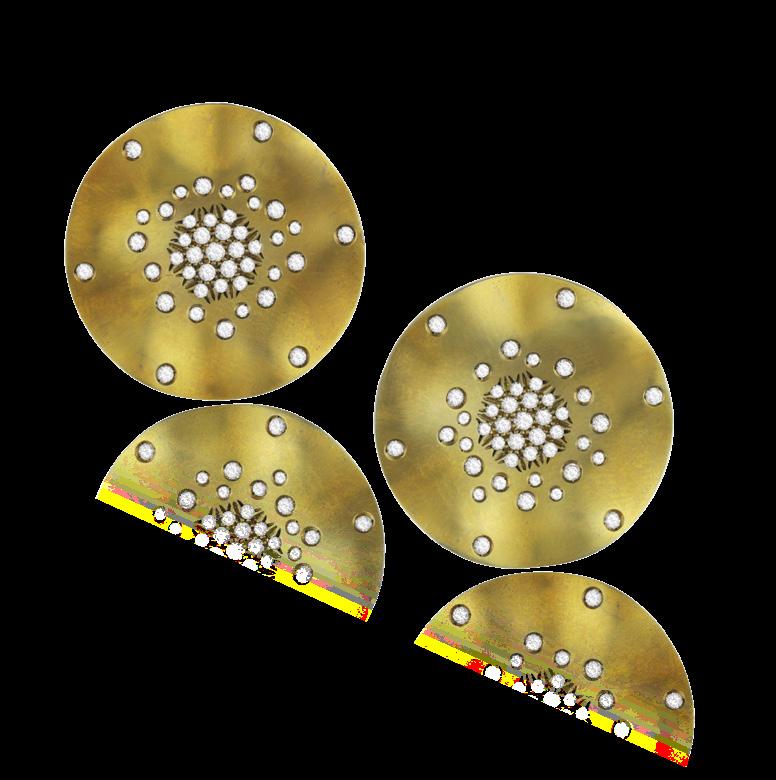
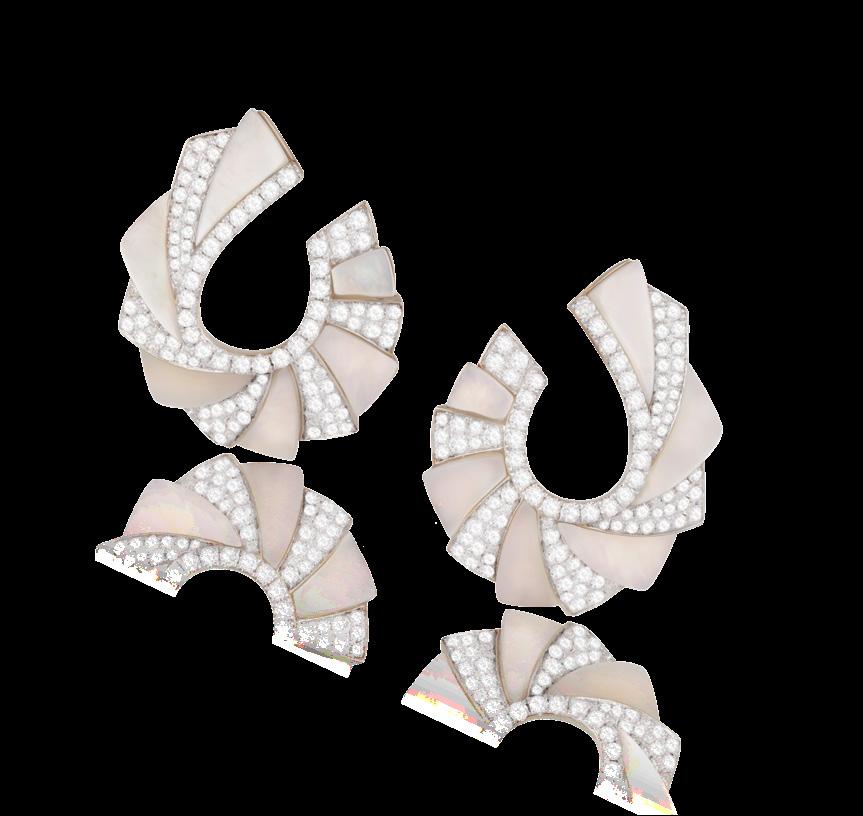
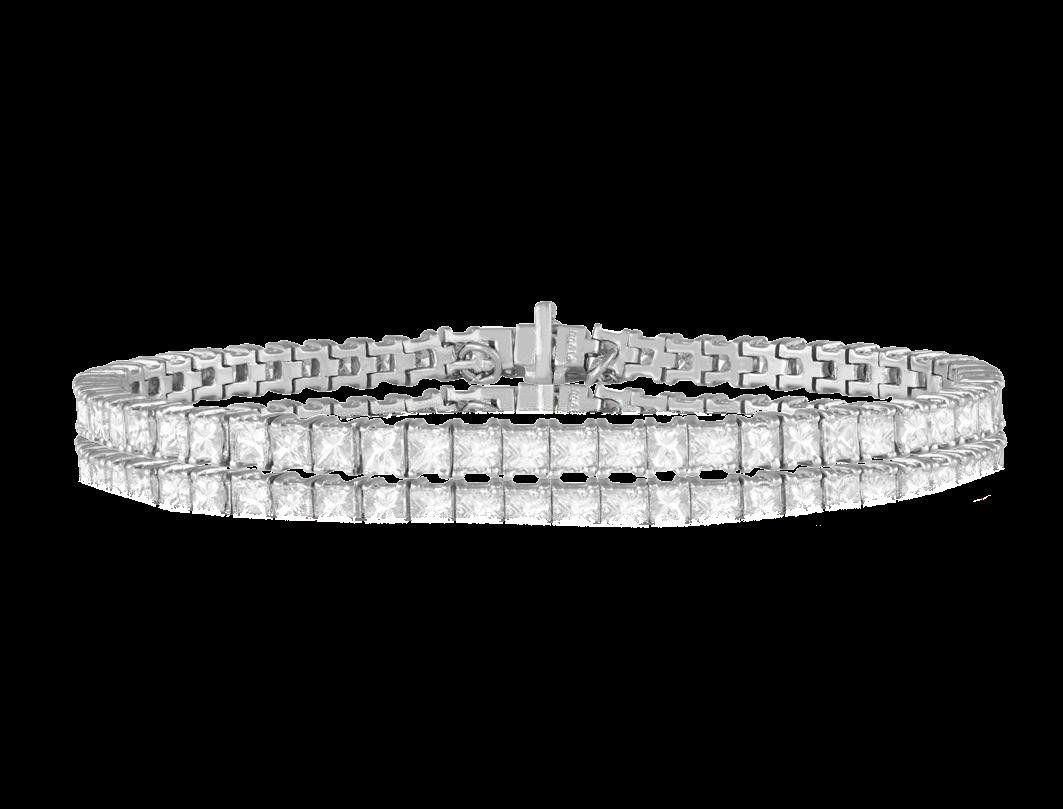
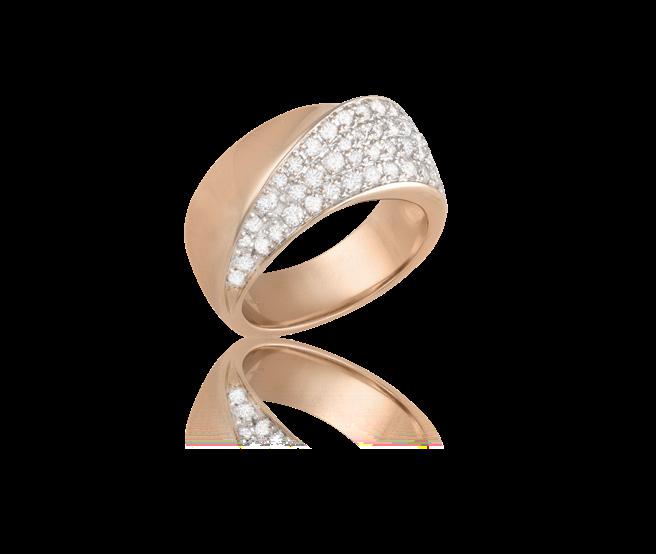
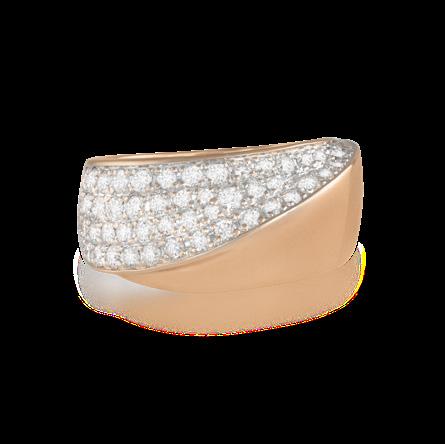
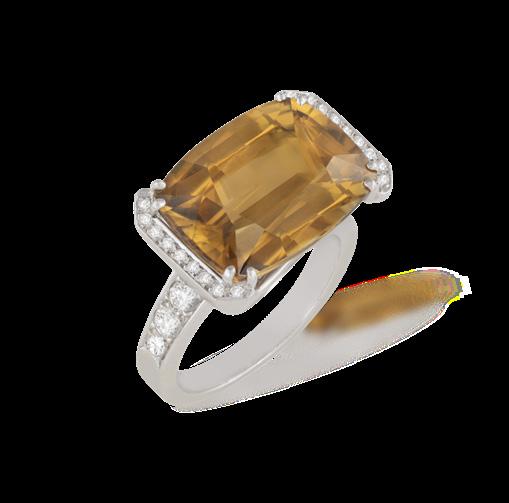
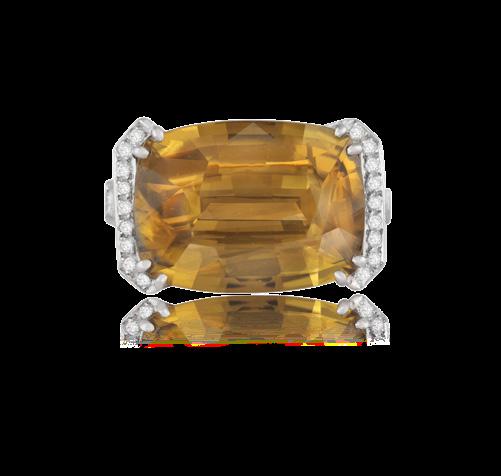
143
POMELLATO A DIAMOND RING
Designed as a series of brushed and polished bombé bands with a recess of brilliant-cut diamonds, mounted in 18K yellow and white gold, signed Pomellato, Italian registry mark, ring size approx. N
€ 3,000 - 4,000
145
POMELLATO A LABRADORITE DRESS RING
The broad asymmetrical mount set with an egg-shaped labradorite cabochon, mounted in 18K gold, signed Pomellato, Italian registry mark, ring size O½
€ 3,000 - 4,000
147
POMELLATO A BI-COLOURED BRACELET
Composed of graduated curb links, in 18K white and yellow gold, signed Pomellato, Italian registry mark, length 20.3cm
€ 6,000 - 7,000
144
POIRAY. A PAIR OF AMETHYST AND DIAMOND EARCLIPS
Each hoop set with sections of calibré-cut amethyst cabochons and brilliant-cut diamonds, mounted in 18K gold, diamonds approximately 1.60cts total, signed Poiray, numbered, with maker’s mark ‘HV’ for Abysse Hamard-Vitau, French assay marks, length 2.5cm
€ 4,000 - 5,000
146
DE GRISOGONO A GOLD ‘ONDE’ COCKTAIL RING
Composed of four slightly articulated wavy hoops, in 18K rose gold, signed De Grisogono, numbered, with maker’s mark, Italian registry mark, Swiss assay mark, European convention mark 750, ring size approx. J (stamped 50)
€ 2,500 - 3,500
148
BOUCHERON A DIAMOND PENDANT
Of openwork bombé heart design, pave-set with brilliant-cut diamonds throughout, with single-cut diamond bale, mounted in 18K gold, diamonds approximately 2.90cts, signed Boucheron, with maker’s mark ‘AJV’ for Atelier de Joaillerie Vendôme, French assay mark, length 3cm
€ 2,000 - 3,000
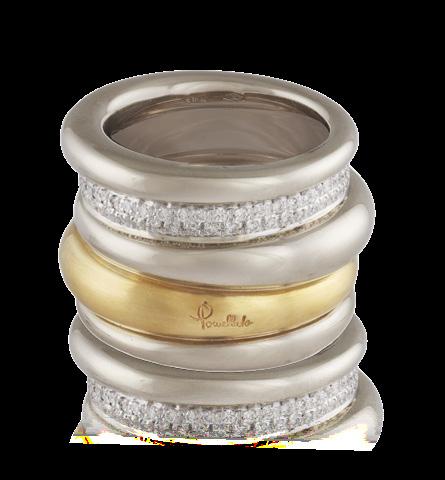

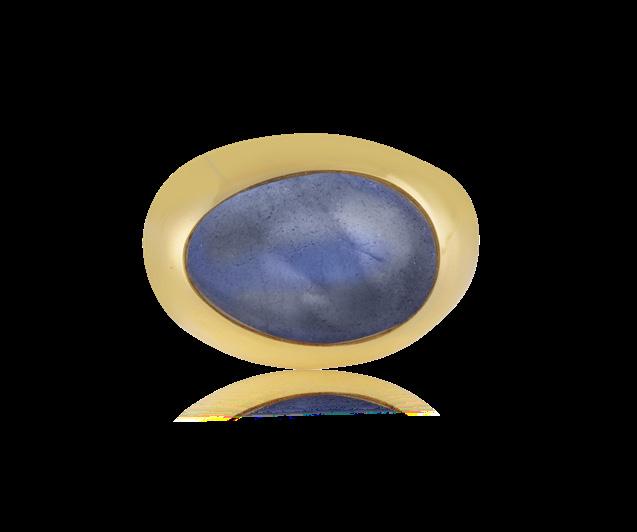

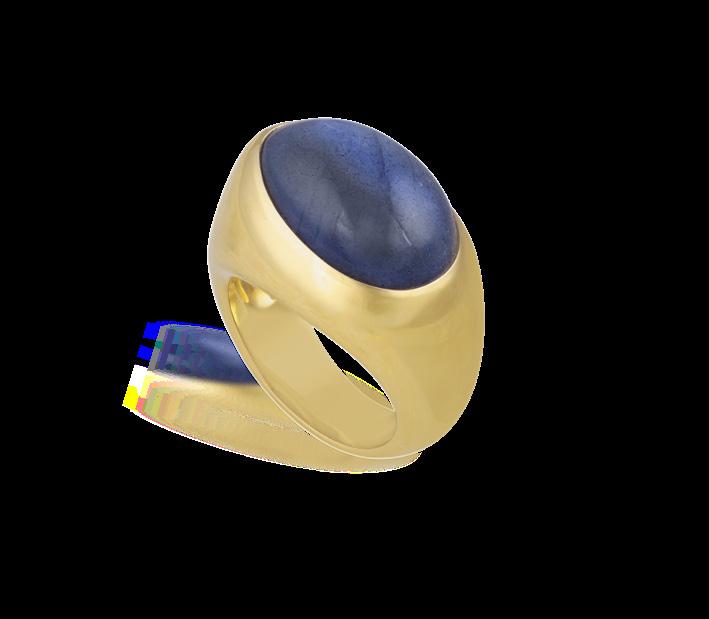

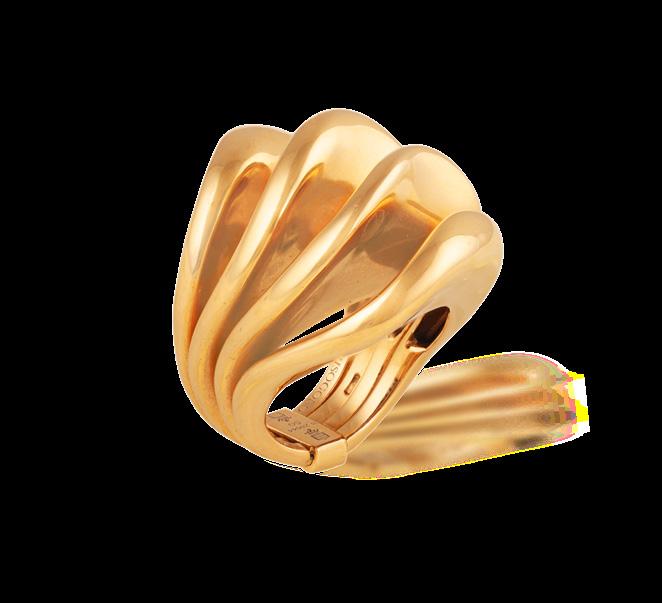


The highly articulated necklace set with circular and oval-shaped coloured sapphire cabochons throughout, mounted in 18K yellow gold, signed MdV, with maker’s mark, inner diameter 12.2cm
€ 20,000 - 30,000
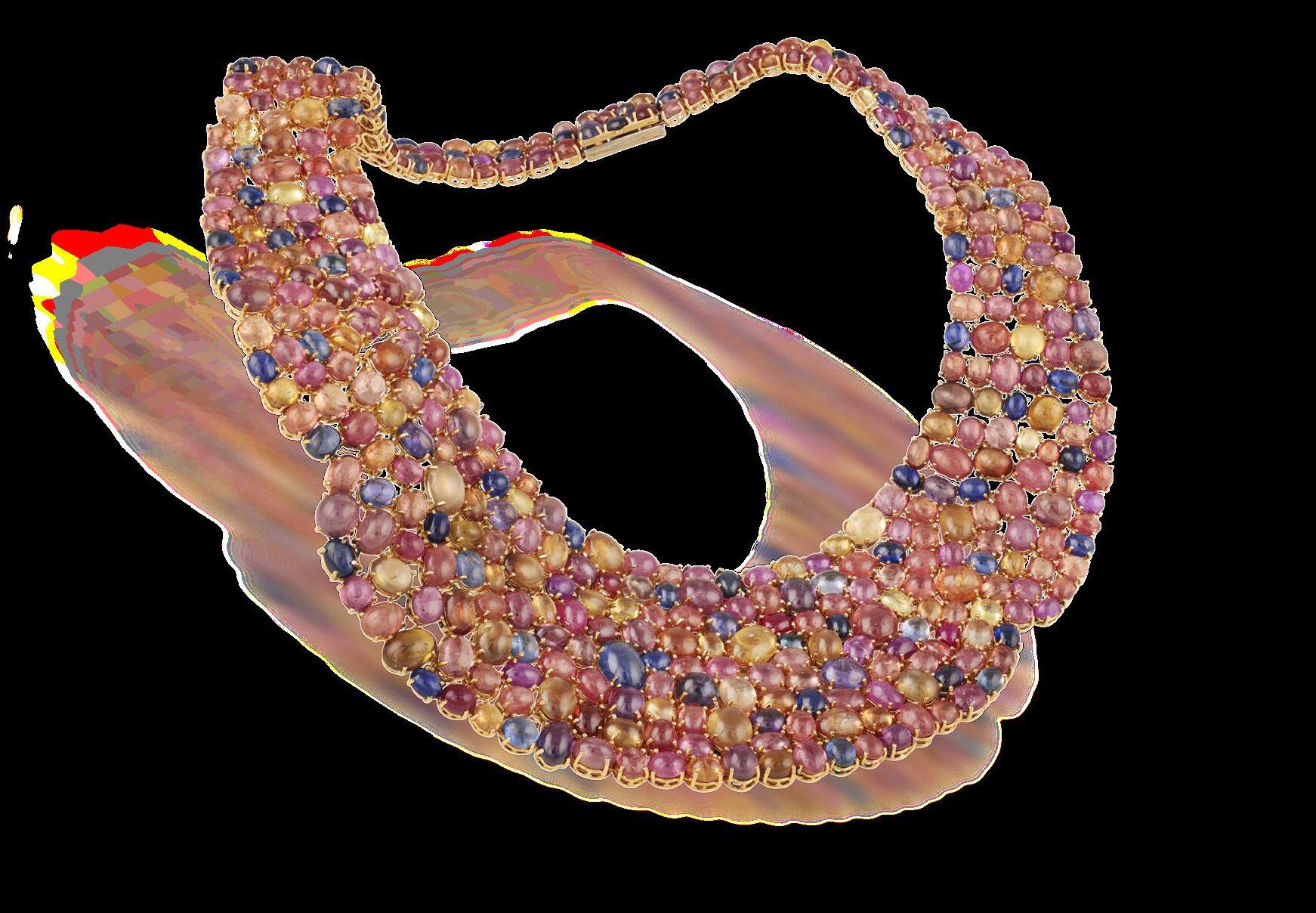
Michele della Valle was born in Rome and began designing costume jewellery at the age of 16. During a trip to Burma in 1976, della Valle bought his first stone, which he showed to revered stone dealer Roger Varenne, who suggested he take it to Hans Nadelhoffer, jewellery expert at Christie’s. This proved to be a life-changing moment as it marks the beginning of della Valle’s career as a precious stone dealer and jewellery designer.
In 1976 he worked for a year at Fürst Jewellers (a representative of Harry Winston) in Via Veneto, Rome and in 1978 opened his own workshop at Rome’s Piazza di Spagna. At this point, he began frequently travelling to Asia in search of precious stones and started collaborating with Bulgari on special orders, leading to his recognition as an important designer by famous Italian clientele of film stars and opera singers.
Still a rarefied name in the world of jewellery, della Valle presents ideas and designs to clients by appointment only. The finished jewellery piece is then commissioned and meticulously handmade by sixteen highly skilled craftsmen in his atelier in Rome.
Della Valle has become one of the most sought-after contemporary jewellers in the world. He developed a distinctive style, conjuring up lyrical compositions from a treasure trove of envious gemstones. This approach stems from his personal passion for opera and his own early training as a dramatic tenor. Nature remains his greatest inspiration, as he reinterprets classic jewellery iconography - soft, silky, light feathers and ethereal flowers. He dreams in colour, the vibrant grass greens, flaming orange and lilting blues of sea and sky are the colours of jewels for which he has become celebrated.
Della Valle’s travels have an enormous influence on his creativity, stating: “I don’t understand how a jewel can be created without the magic of a trip to India or to the Far East in search of stones. The stones give birth to the design, and not the other way around.”
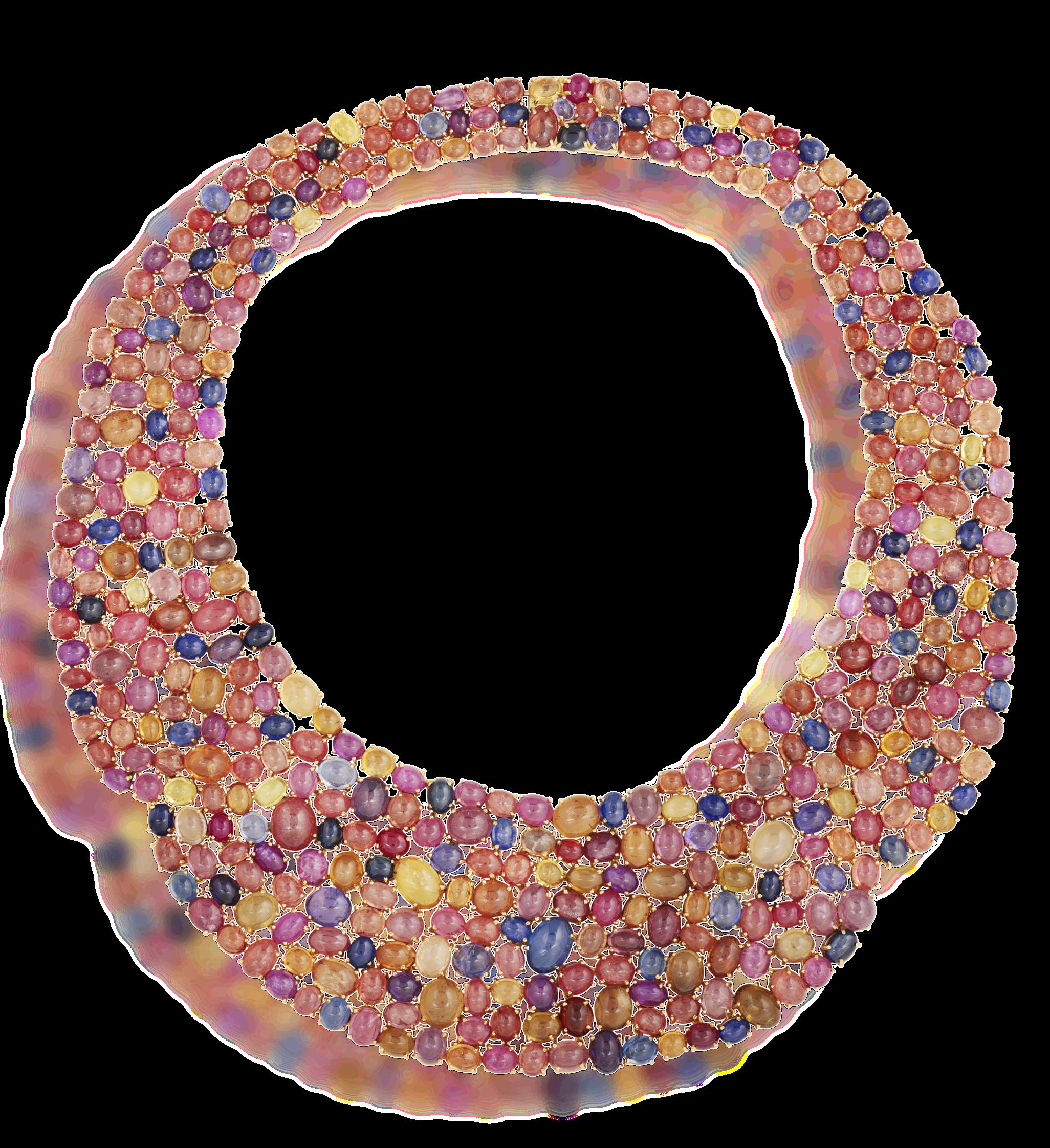
150
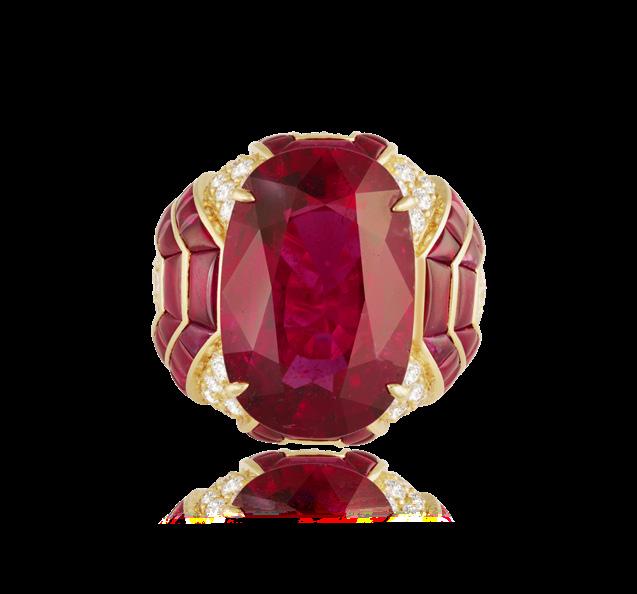
A FINE RUBELLITE, RUBY AND DIAMOND RING
Of bombé design, centring an oval-shaped rubellite weighing approximately 15.00cts, the mount decorated with geometrical pattern pavé-set with brilliant-cut diamonds and calibré-cut ruby cabochons, mounted in 18K gold, signed Bvlgari, ring size M
€ 15,000 - 25,000
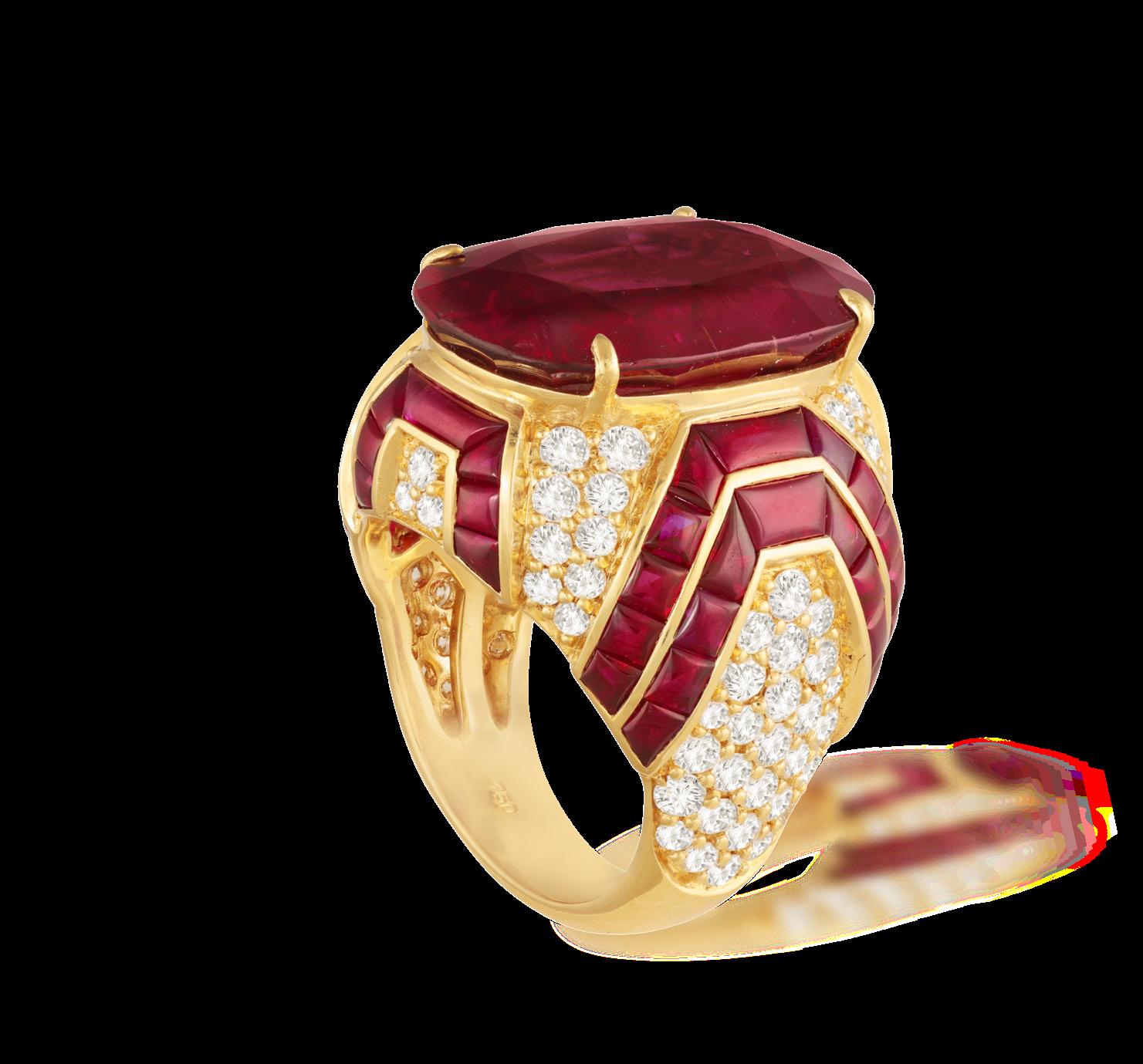
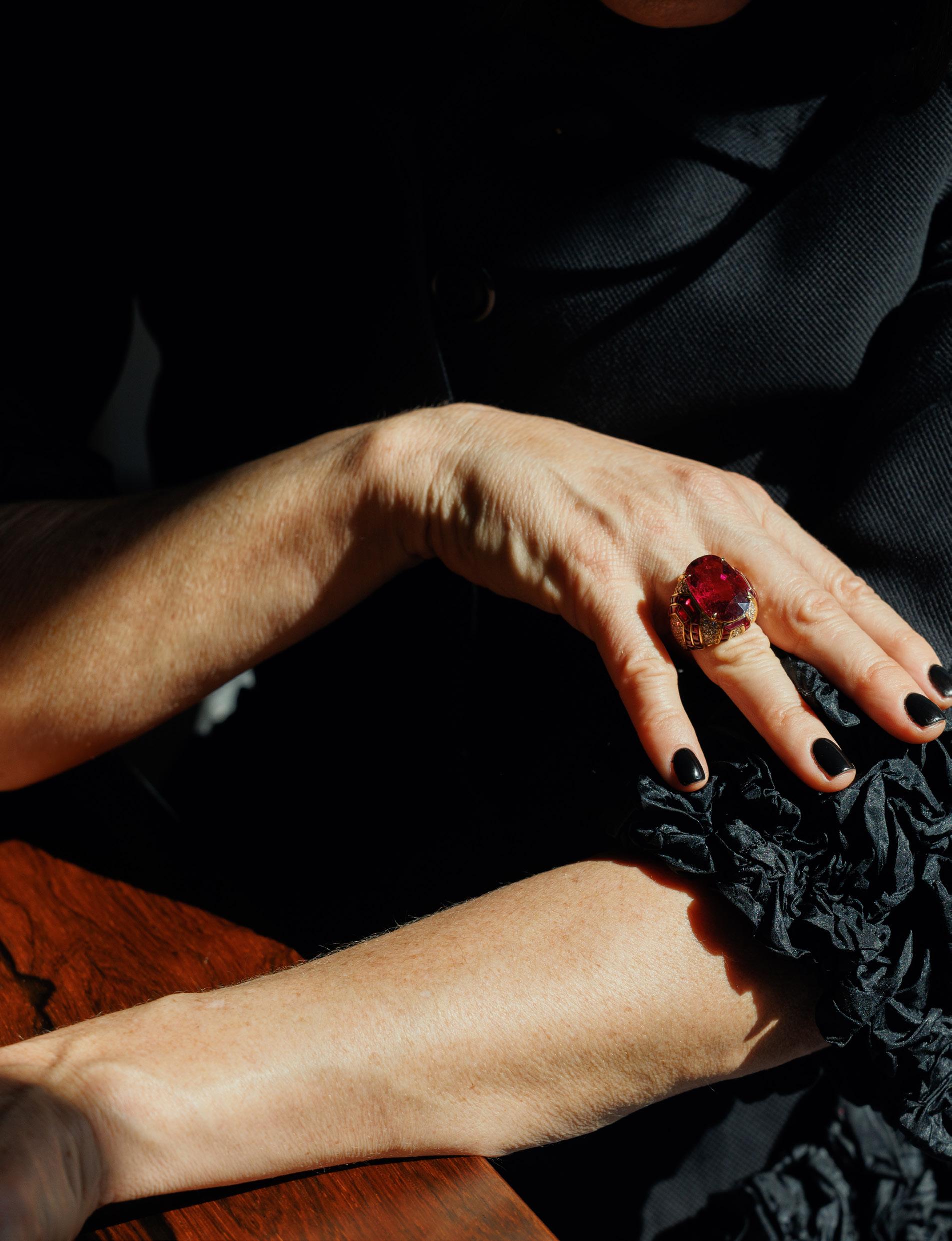
A DIAMOND CHAIN NECKLACE
The fine cable-link chain, interspersed by ten collet-set brilliant-cut diamonds, mounted in 18K gold, French assay mark, length 50.2cm
€ 1,000 - 1,500
153
A PAIR OF DIAMOND HOOP EARRINGS
Each set with brilliant-cut diamonds to the front and interior, mounted in 18K gold, diamonds approximately 3.80cts total, length 3.9cm
€ 4,200 - 4,800
155
A DIAMOND ETERNITY RING
Composed of a continuous row of brilliant-cut diamonds, mounted in 18K gold, diamonds approximately 1.60cts total, French assay mark, ring size P
€ 600 - 800
152
A PAIR OF DIAMOND CHAIN BRACELETS
Each fine cable-link chain, interspersed by collet-set brilliant-cut diamonds, mounted in 18K gold, Italian registry mark, lengths 18cm
€ 1,200 - 1,800
154
A DIAMOND DRESS RING
The frontispiece, slightly bombé, pavé-set with brilliant-cut diamonds, mounted in 18K gold, diamonds approximately 4.00cts total, ring size N½
€ 4,000 - 5,000
156
A PAIR OF RUBY AND DIAMOND PENDENT EARRINGS
Each pear-shaped ruby, suspended from a line of brilliant and marquise-cut diamonds, to a brilliant-cut diamond surmount, mounted in 18K gold, diamonds approximately 2.50cts total, Italian registry mark, length 4cm
€ 3,800 - 4,200
Accompanied by a report from CISGEM laboratory in Milan, stating that both natural rubies, weighing 1.00ct & 1.11cts, are of Burmese origin, with indications of heating. Report no. 18622, dated April 14th 2021.

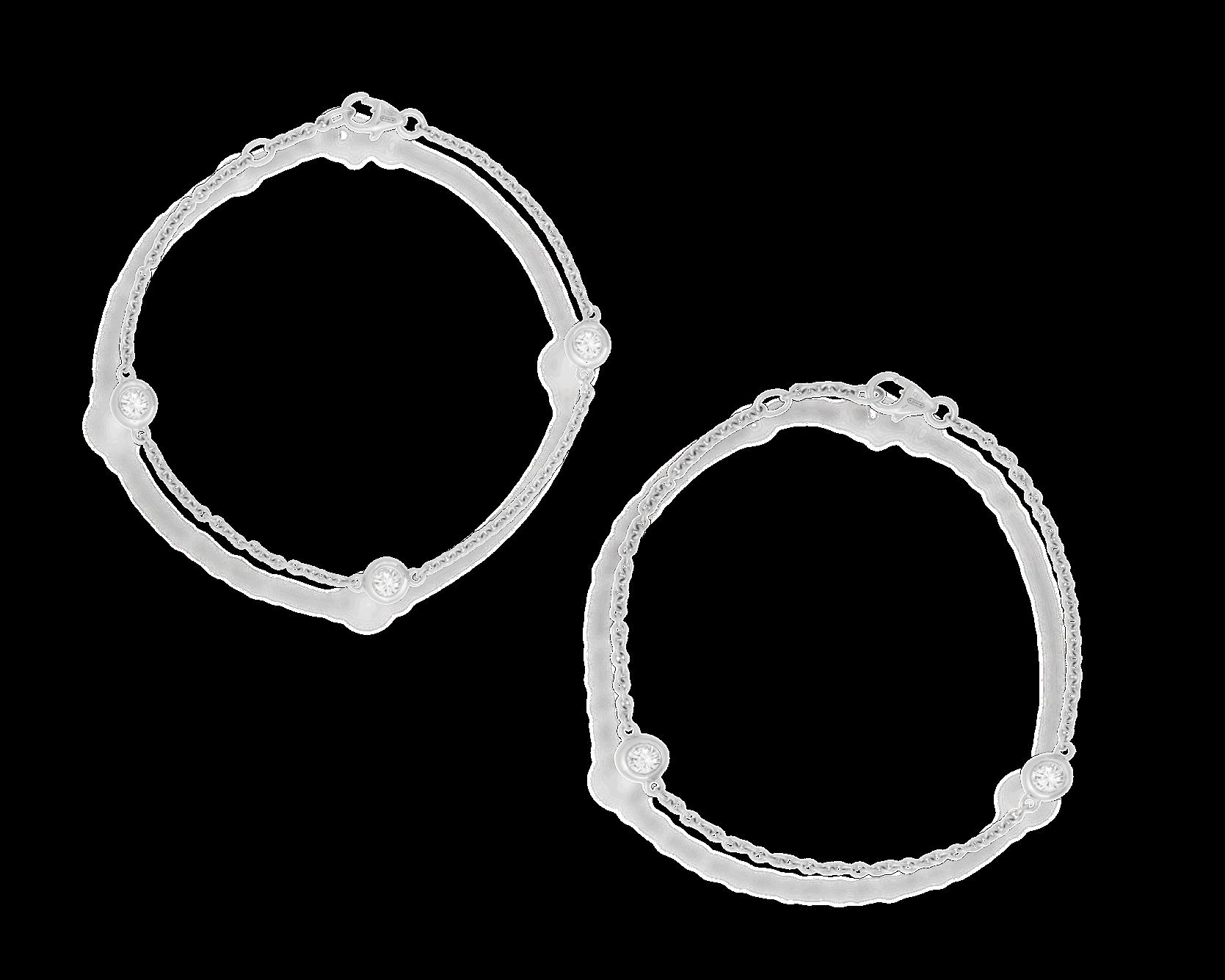
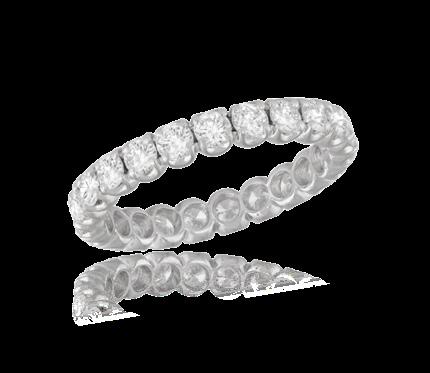
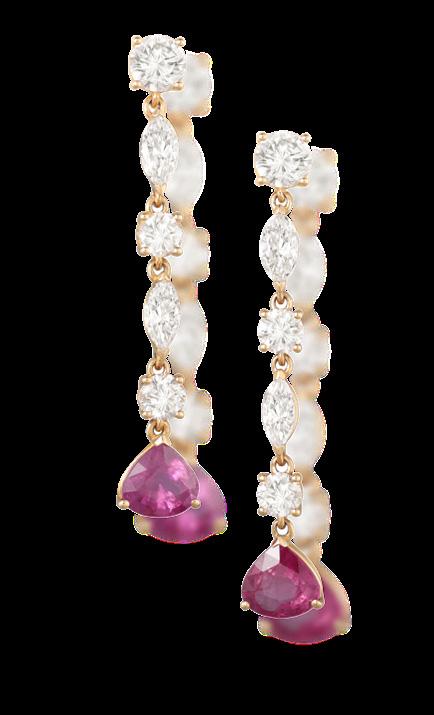
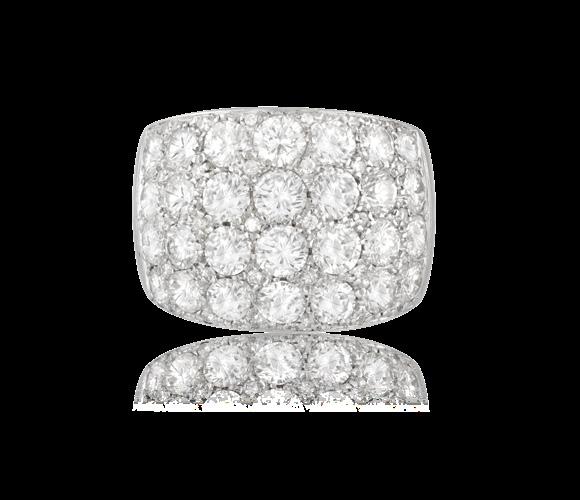
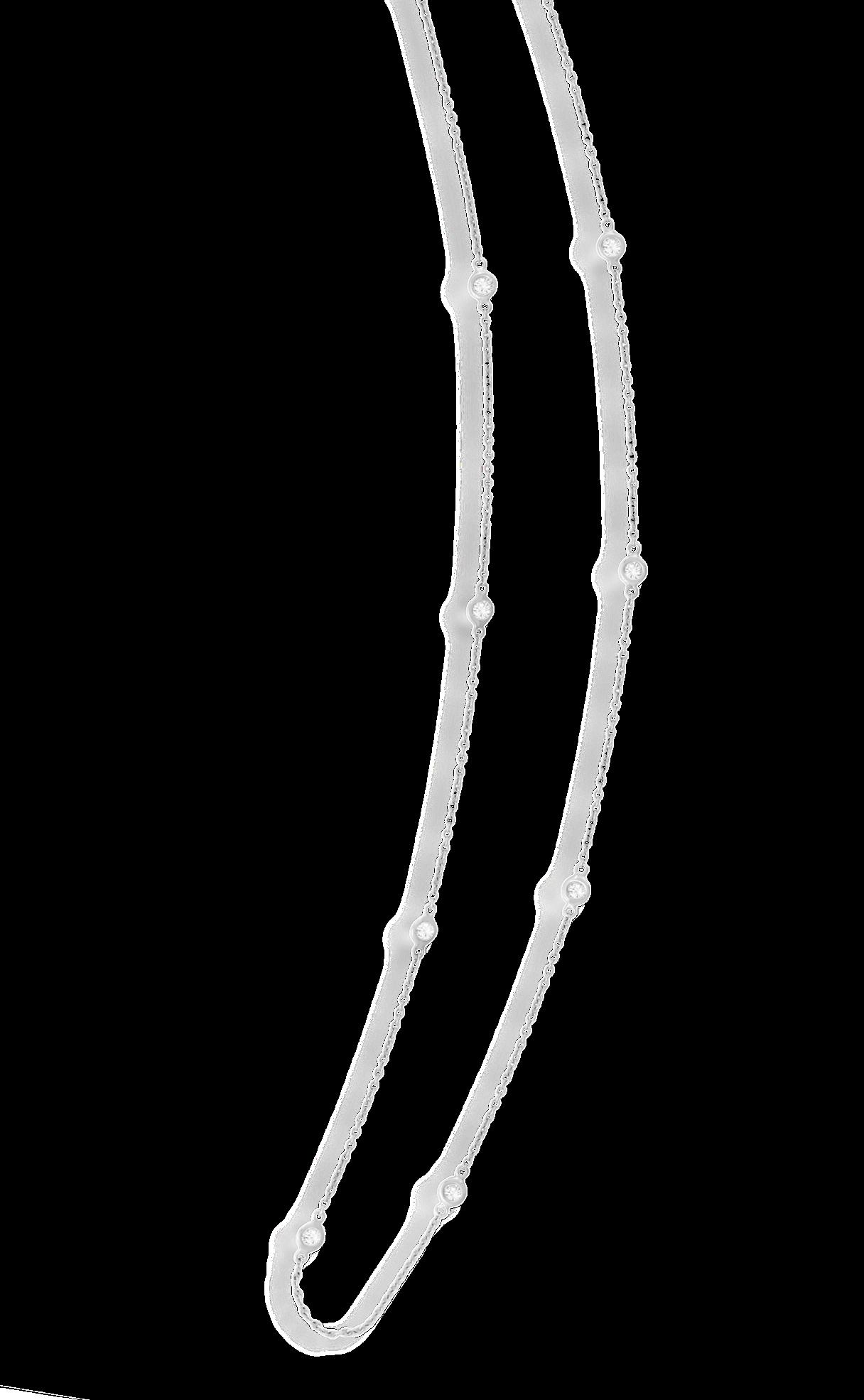
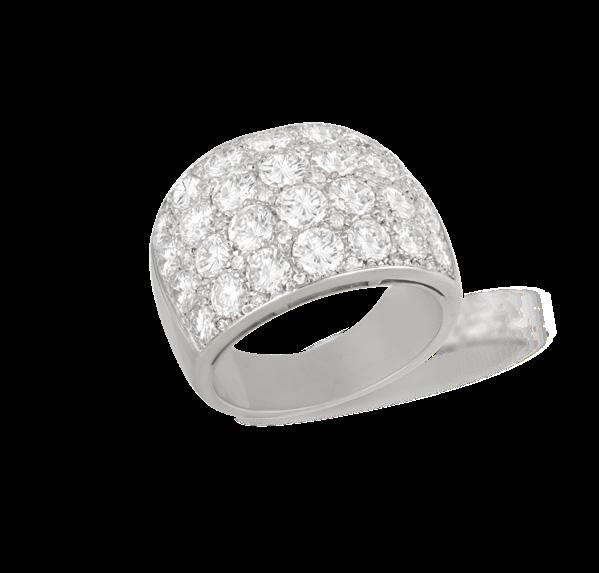
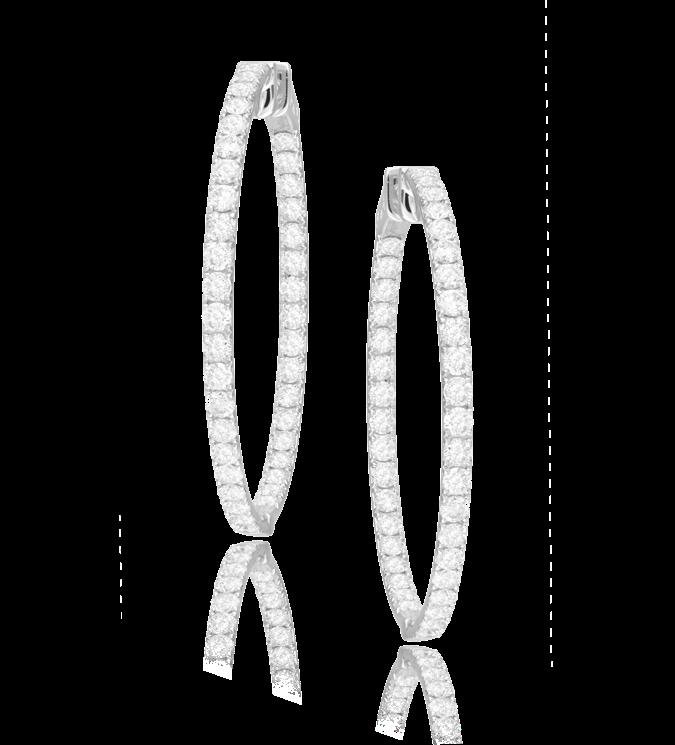

Of chequerboard design, inlaid with squares of opal, black jade and polished gold, mounted in 18K gold, signed T&Co., dated 1982, length 2cm
€ 3,500 - 4,000
Born in Austria in 1944 and raised in the United States, Angela Cummings studied fine art in Italy and trained in gemmology and goldsmithing in Germany. These formative years set the foundation for her innovative design career.
Joining Tiffany & Co. in 1967, Cummings worked under Donald Claflin, developing a design philosophy that balanced artistic expression with timeless craftsmanship. In 1975, she became one of the first designers at Tiffany to debut a collection under her own name, marking a pivotal moment in her career.
Inspired by nature, Cummings incorporated textures from leaves, petals, and marine life into her designs, often using materials like lapis lazuli, jade, and opal set in 18 carat gold. This technique, combining hardstone and metal seamlessly, resulted in tactile, luminous pieces.
In 1984, she left Tiffany to launch Angela Cummings Inc. with her husband, Bruce. That same year, she opened a boutique at Bergdorf Goodman, becoming the first fine jewellery designer to do so, solidifying her reputation in the luxury market.
Her work attracted a distinguished clientele, including Elizabeth Taylor, Jacqueline Kennedy Onassis, and Oprah Winfrey. More recently, actress Gal Gadot wore a vintage Cummings piece at the 2025 Academy Awards, demonstrating the enduring relevance of her designs.
After retiring in 2003, Cummings returned to design in 2013 with a collaboration with Assael, creating a 25-piece collection of pearl jewellery set in platinum, gold, and diamonds. Her pieces are now held in prestigious collections, including The Metropolitan Museum of Art and the Cooper Hewitt, Smithsonian Design Museum.
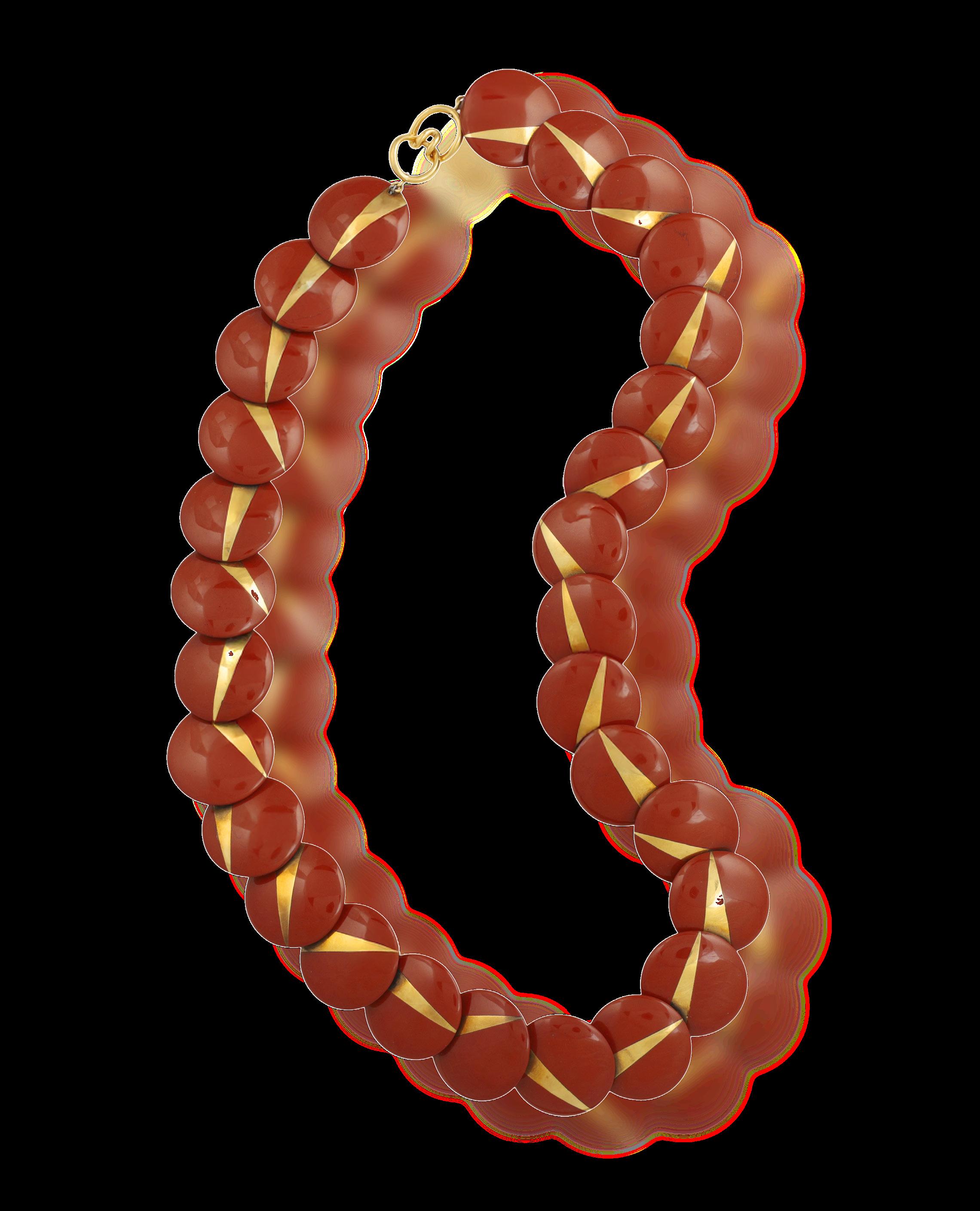
The articulating graduated ‘bean’ links, finishing with a polished gold snake head clasp, mounted in 18K gold, signed Tiffany & Co. and Elsa Peretti, with maker’s pouch and outer box, length 50.4cm
€ 6,000 - 8,000
Born in Florence in 1940, Elsa Peretti led a life that spanned multiple countries and disciplines. Educated in Rome and Switzerland, she left home at 21 to teach abroad, later working as an interior designer in Milan. In 1966, she moved to Barcelona, where she began modelling, eventually relocating to New York two years later.
In the 1960s and ’70s, Peretti forged her way as a fashion model and joined the glitterati of the New York’s nightlife scene, often attending Studio 54. During this time, she worked with photographers such as Helmut Newton and developed lasting relationships with designers, including Giorgio di Sant’Angelo and Halston. Peretti’s early jewellery designs were featured in Halston’s runway shows, complementing his minimalist style. Halston’s influence encouraged her to focus more seriously on jewellery design, so much so he became a key figure in her life, both personally and stylistically.
Renowned for her effortless style, Peretti was soon invited to design silver jewellery in Manhattan. In 1972, she opened a boutique at Bloomingdale’s within Cul de Sac, a space for emerging designers. Two years later, through a meeting arranged by Halston and fashion editor Carrie Donovan, she joined Tiffany & Co. and was offered a contract shortly thereafter.
Elsa Peretti’s defining moment came in 1974 when she began working with Tiffany & Co., reintroducing sterling silver to the brand for the first time in 25 years. Inspired by Victorian silver pieces she had encountered in London’s Portobello Road, she brought a fresh, modern perspective to Tiffany’s designs. That same year, she introduced her 'Diamonds by the Yard' collection, featuring fine gold chains with bezel-set diamonds, presenting a fresh and more accessible way to wear these precious stones.
Her designs were deeply influenced by personal experiences, tactile sensations, and objects around her. Wearability was central to her work, ensuring each piece was comfortable, fluid, and body-conscious. In 1975, while visiting India, Peretti discovered a metal mesh fabric that intrigued her with its movement and texture. She reached out to Samuel Beizer, Director of the Jewellery Department at the Fashion Institute of Technology, and together they sourced antique
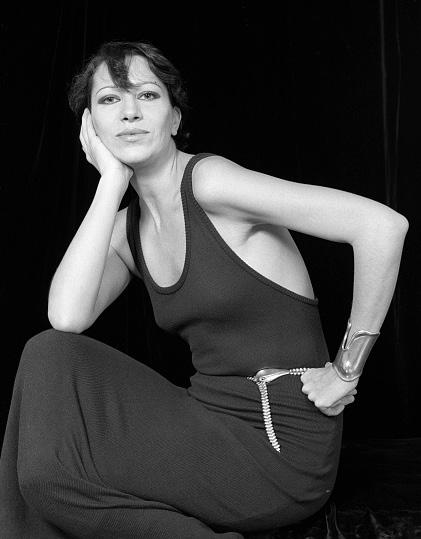
machinery originally used to make mesh for evening bags in the early 20th century. This led to the creation of Peretti’s iconic mesh pieces, including a bra that debuted on the Halston runway and the scar, that with its innovative design created a fluid, tactile quality that became a hallmark of her work.
By the mid-1970s, Elsa Peretti had established herself as a defining figure in contemporary jewellery design, creating some of the most recognisable pieces of the 20th century. Among them were the Open Heart, inspired by a void in a Henry Moore sculpture; the Bean, symbolising the beginning of life; and the Bone Cuff, inspired by the Capuchin crypt in Rome and Gaudí’s forms in Barcelona.
One of her most notable designs, the Snake, was inspired by a rattlesnake tail given to her by a friend from Texas, which she kept as a talisman throughout her youth. The first design featuring this motif was a necklace-belt (illustrated above) composed of 120 graduated, fully articulated bean-shaped links, allowing fluid movement. When the belt was first showcased in Women’s Wear Daily in 1973, Peretti modelled it herself, paired with a calflength cashmere sweater dress by Halston. Over time, the snake motif was expanded into various forms, including a belt buckle, hairband, necklace, choker, pendant, bangle, ring, and earrings.
Elsa Peretti passed away in March 2021 at the age of 80 in her Spanish home, leaving behind a lasting legacy in the history of jewellery design.
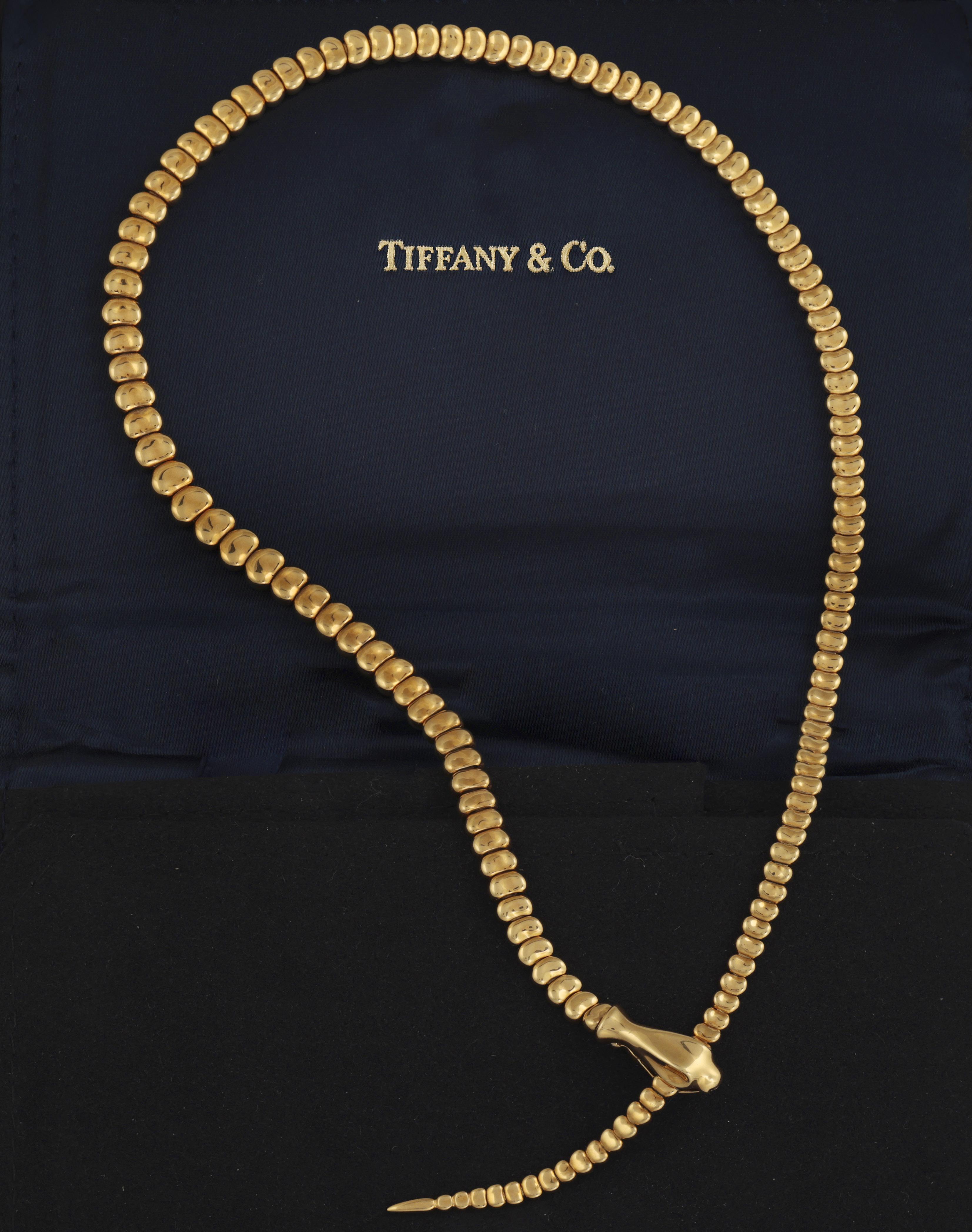

TIFFANY & CO., DESIGNED BY ELSA PERETTI A GOLD ‘MESH SCARF’ NECKLACE
in 18K gold, signed Peretti and T&Co., with maker’s pouch and outer box, length approxi-
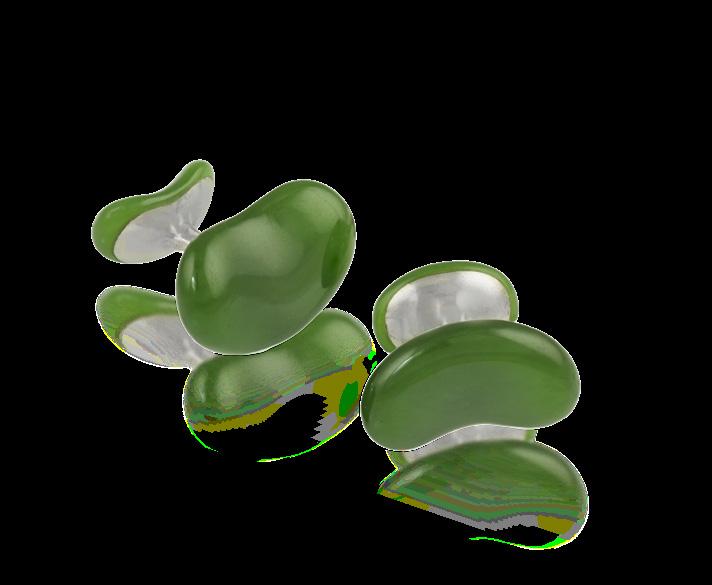
TIFFANY & CO., DESIGNED BY ELSA PERETTI A PAIR OF JADE ‘BEAN’ CUFFLINKS
Each polished jade bean front and back, mounted in 925 silver, signed Tiffany & Co. and Elsa Peretti
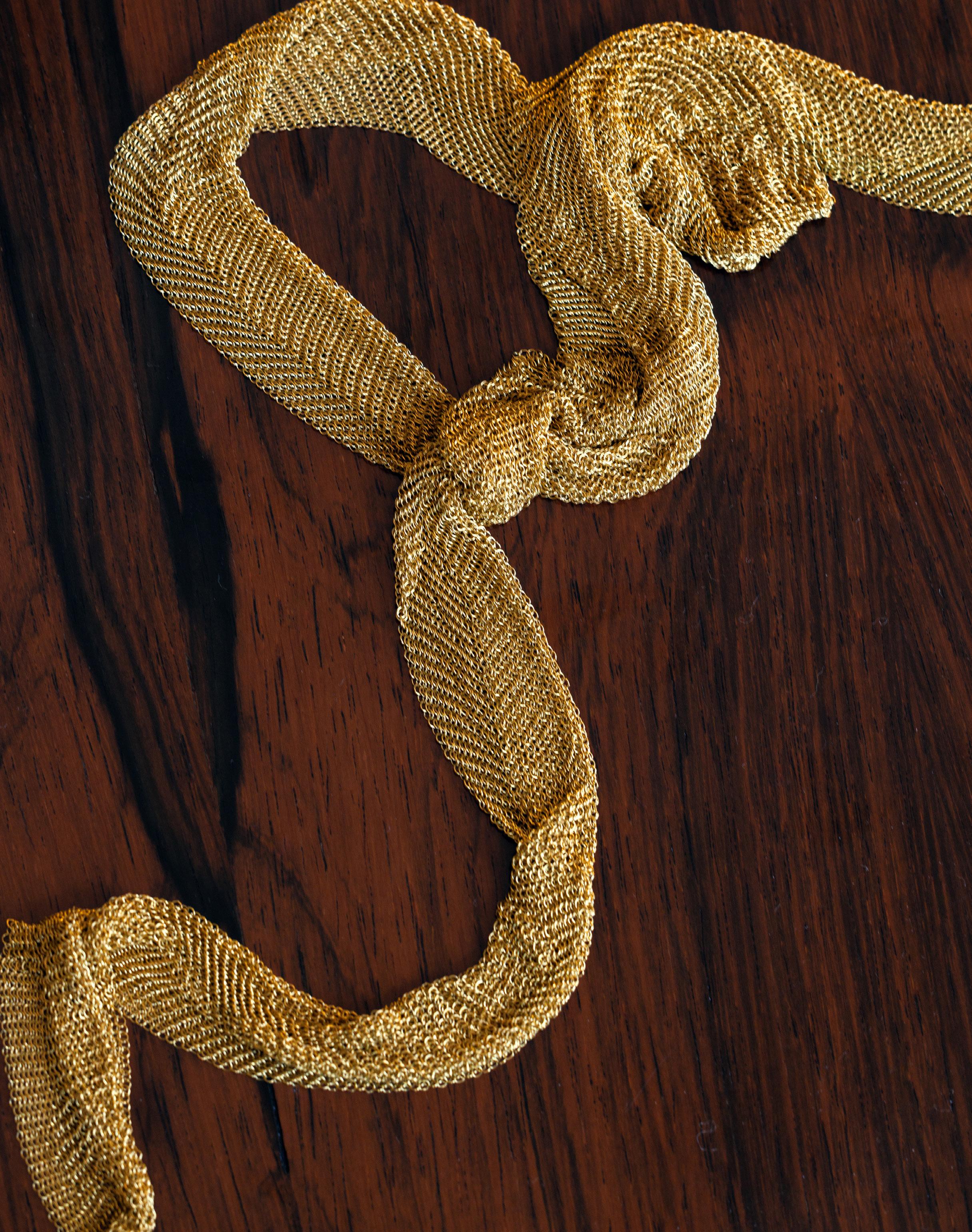
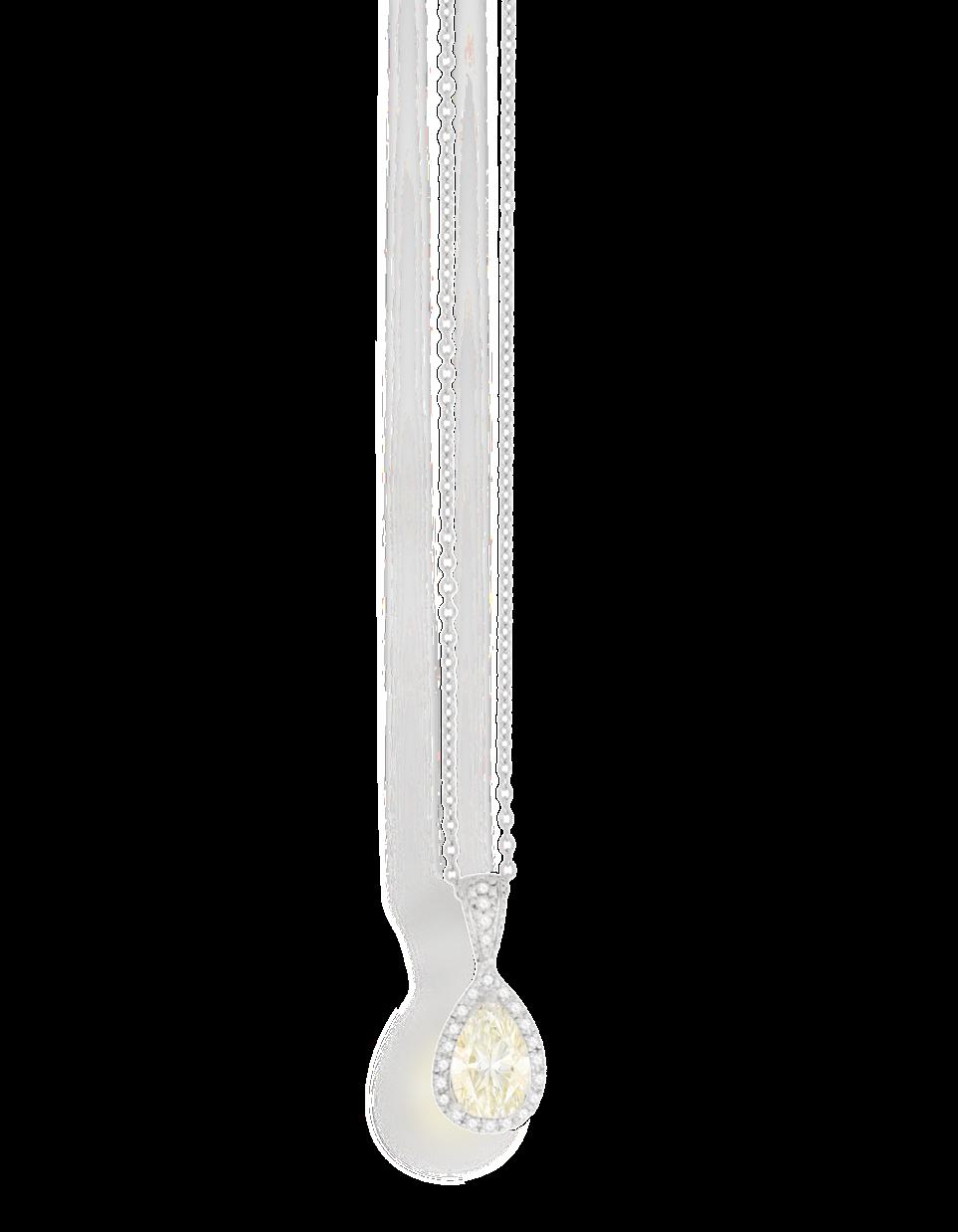
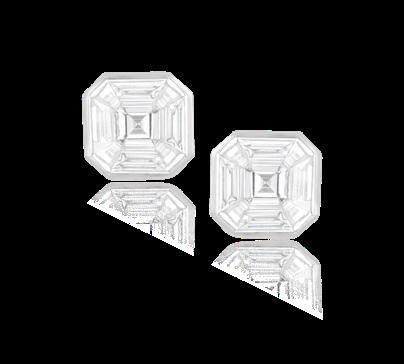
The pear-shaped diamond weighing approximately 1.60cts within a three-claw setting, to a brilliant-cut diamond surround and bale, mounted in 18K gold, pendant length (including bale): 2cm, chain length 43.5cm
€ 3,000 - 4,000
Of illusion design, each stud of cut-corner square design, set with fancy-shaped diamonds, gallery enhanced by brilliant-cut diamonds, mounted in 18K white gold, signed Gabri, length of studs 0.7cm
€ 1,200 - 1,800

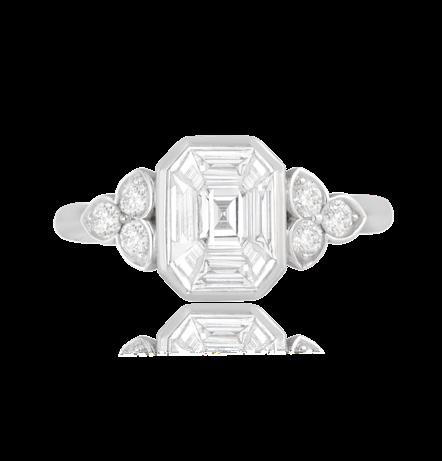
Of illusion design, the cut-cornered rectangular mount set with fancy-shaped diamonds, between brilliant-cut diamond shoulders of three-clover design, mounted in 18K white gold, signed Gabri, ring size M⅓
€ 1,500 - 2,000
Composed of brilliant-cut diamonds within claw-setting, mounted in 18K gold, diamonds approximately 11.00cts total, length 43.7cm
€ 12,000 - 18,000
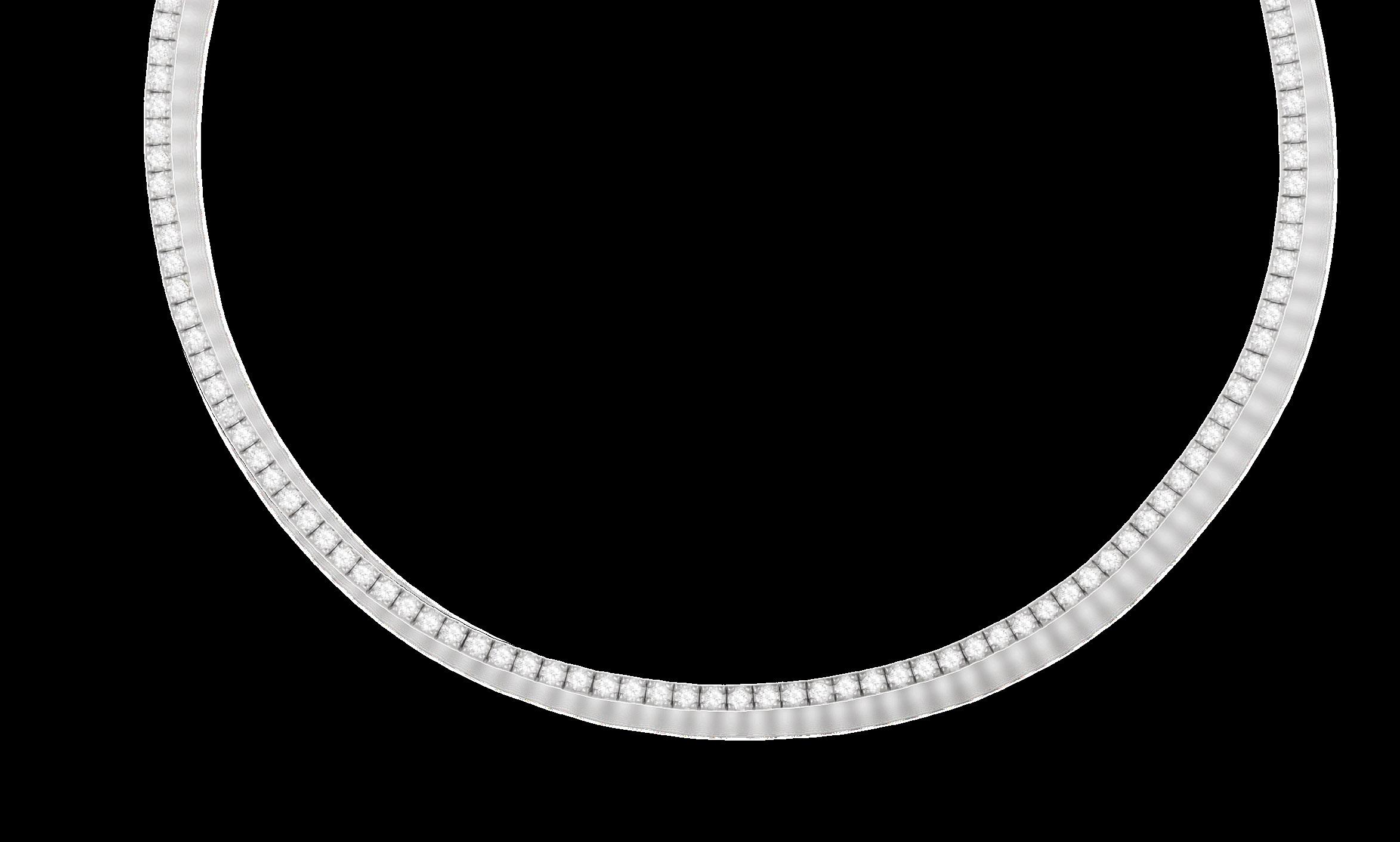
Centring a claw-set cushion-shaped ruby weighing approximately 2.60cts, flanked by fancy-shaped diamonds, within a raised openwork mount of scrolled design, set with brilliant-cut diamonds, millegrain detailing, mounted in 18K gold, ring size O
€ 3,000 - 4,000
The ruby was verbally tested at GCS laboratory in London, in March 2025 and was confirmed to be natural, of Thai origin, with some indications of heating.
Centrally set with an oval-shaped yellow sapphire weighing 6.05cts, within a four-claw setting, to a brilliant-cut diamond surround, mounted in 18K yellow gold and platinum, diamonds approximately 0.80ct total, ring size L
€ 7,000 - 8,000
Accompanied by a report from The Gem & Pearl Laboratory in London, stating that the natural yellow sapphire, weighing 6.05cts, is of Sri Lankan origin, with no indications of heating. Report number 25835, dated April 4th 2025.

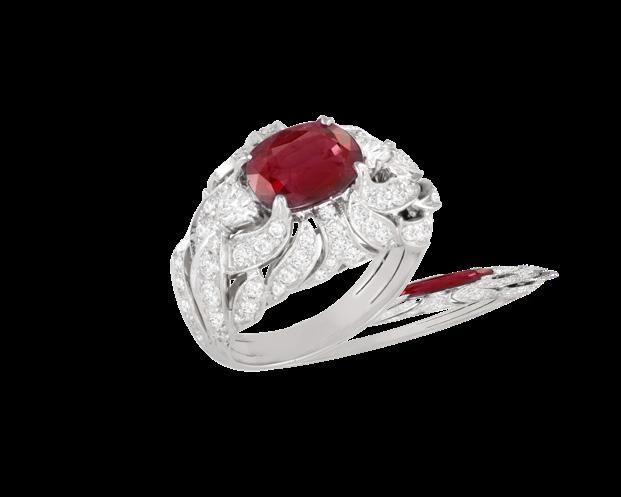
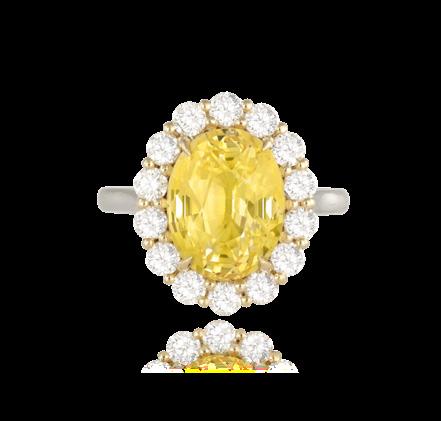
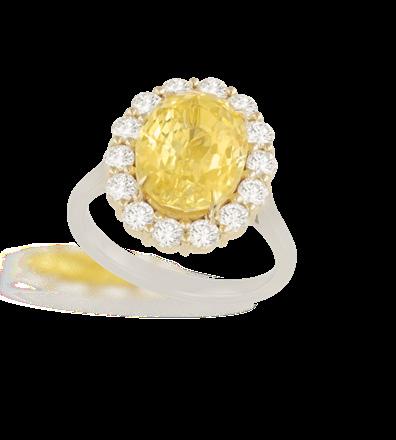
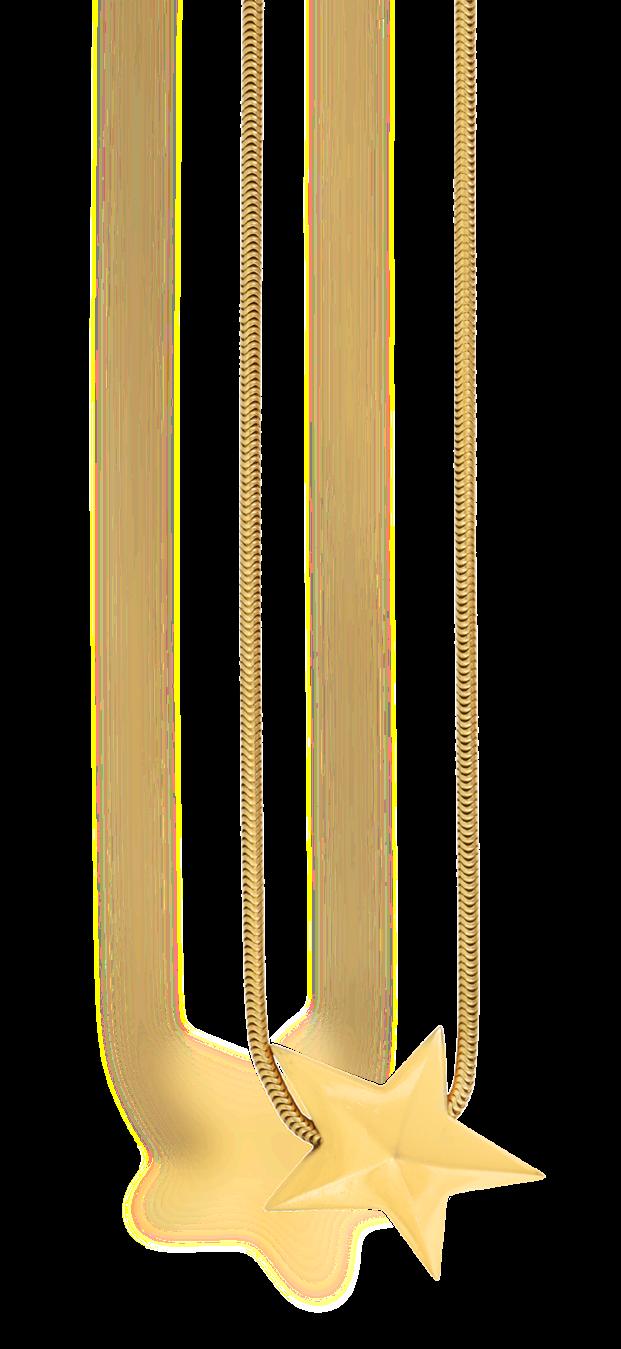
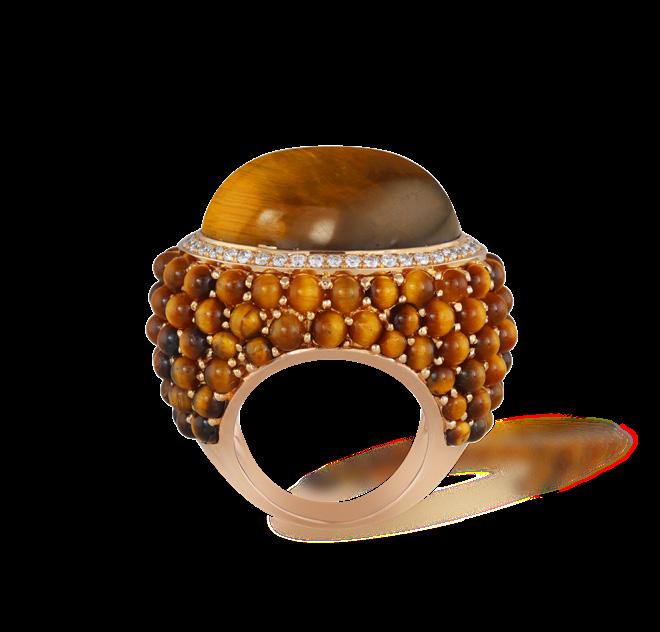
168
TIFFANY & CO.
The polished bombé star pendant, suspending from a snake-link chain, in 18K gold, signed Tiffany & Co. 1984, length 42cm
€ 1,400 - 1,800
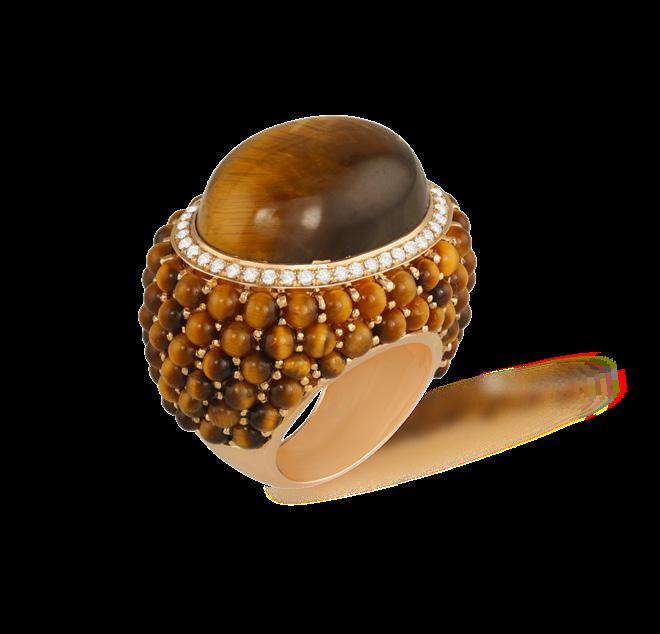
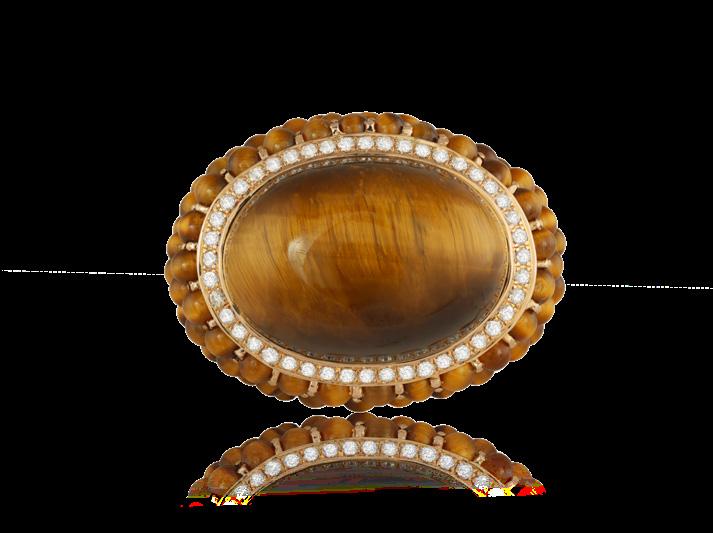
Of bombé design, centring an oval-shaped tiger’s eye cabochon, within a brilliant-cut diamond frame, to similarly-cut tiger’s eye cabochons mount, mounted in 18K rose gold, ring size J
€ 2,000 - 3,000
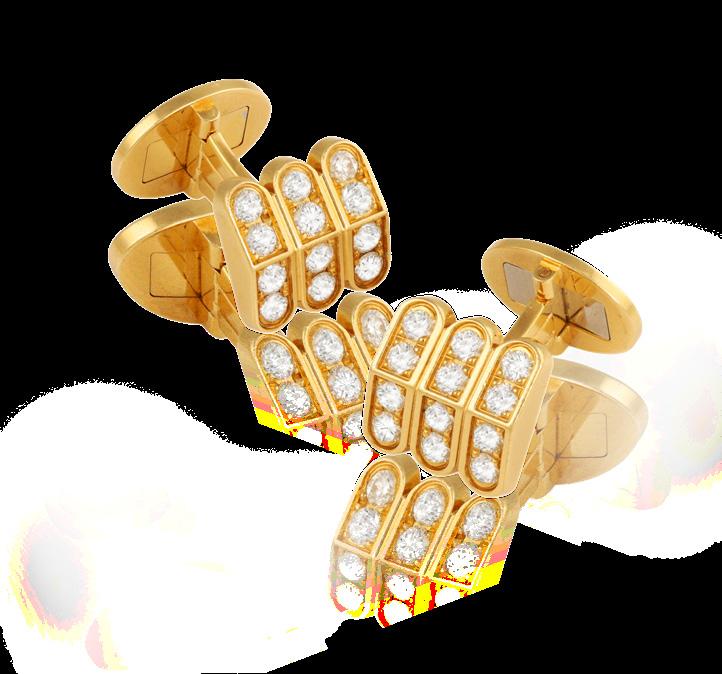
170
HARRY WINSTON
A PAIR OF DIAMOND CUFFLINKS
Of arched rectangular shape with scalloped borders, set with brilliant-cut diamonds, with reeded gold connector to oval-shaped plaque terminal with ‘HW’ engraving, mounted in 18K gold, diamonds approximately 1.90cts total, with maker’s mark ‘HW’, with European convention mark for 18K gold, Swiss assay marks
€ 1,500 - 2,500
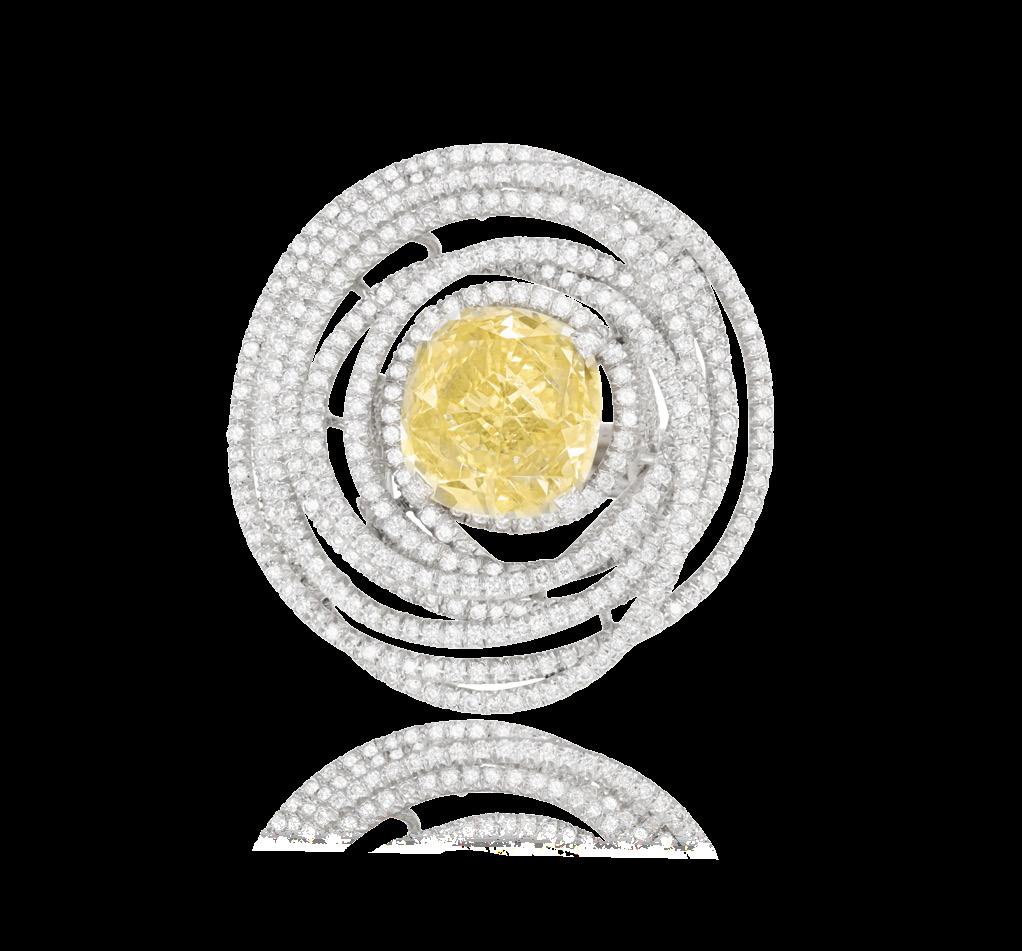
The cushion-shaped fancy coloured diamond weighing 8.08cts, within a surround of orbiting rings pavé-set with brilliant-cut diamonds, to similarly-cut diamond shoulders, mounted in 18K gold, remaining diamonds approximately 3.00cts total , signed Chanel, numbered, with maker’s mark ‘JB’, French assay mark, with maker’s case and outer box, ring size approximtely K
€ 40,000 - 50,000
With Photocopy of reports from EGL & HRD Laboratories. Please efer to Jewellery Department for further details.
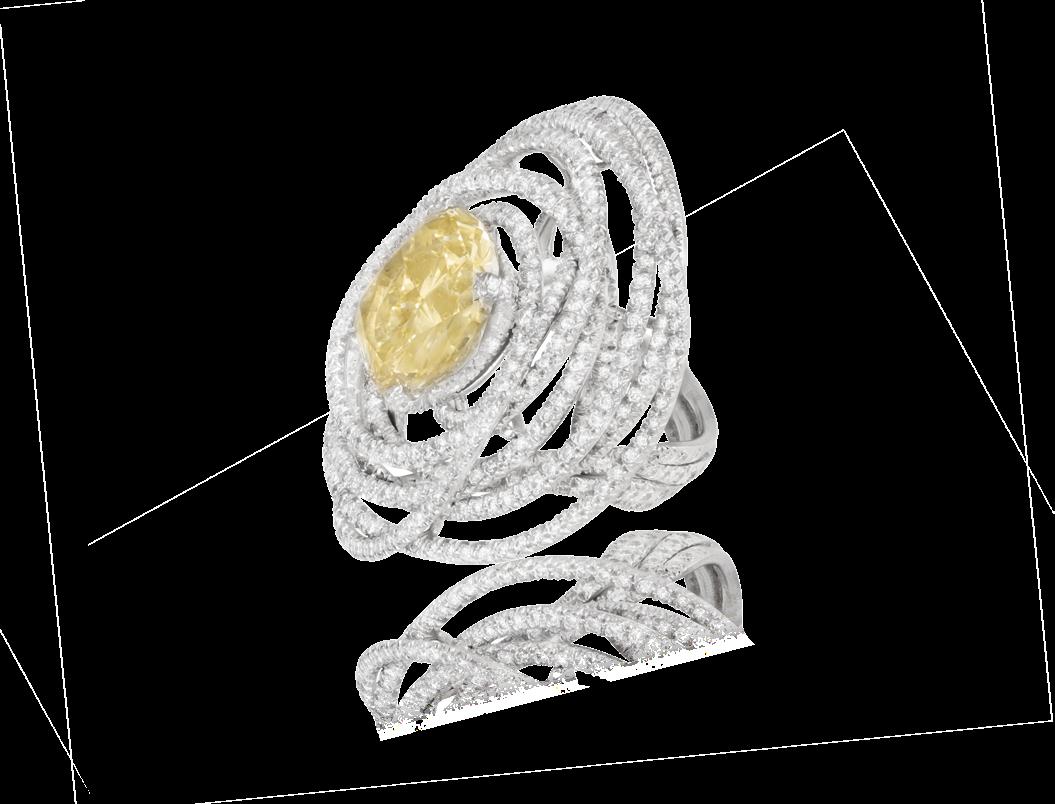
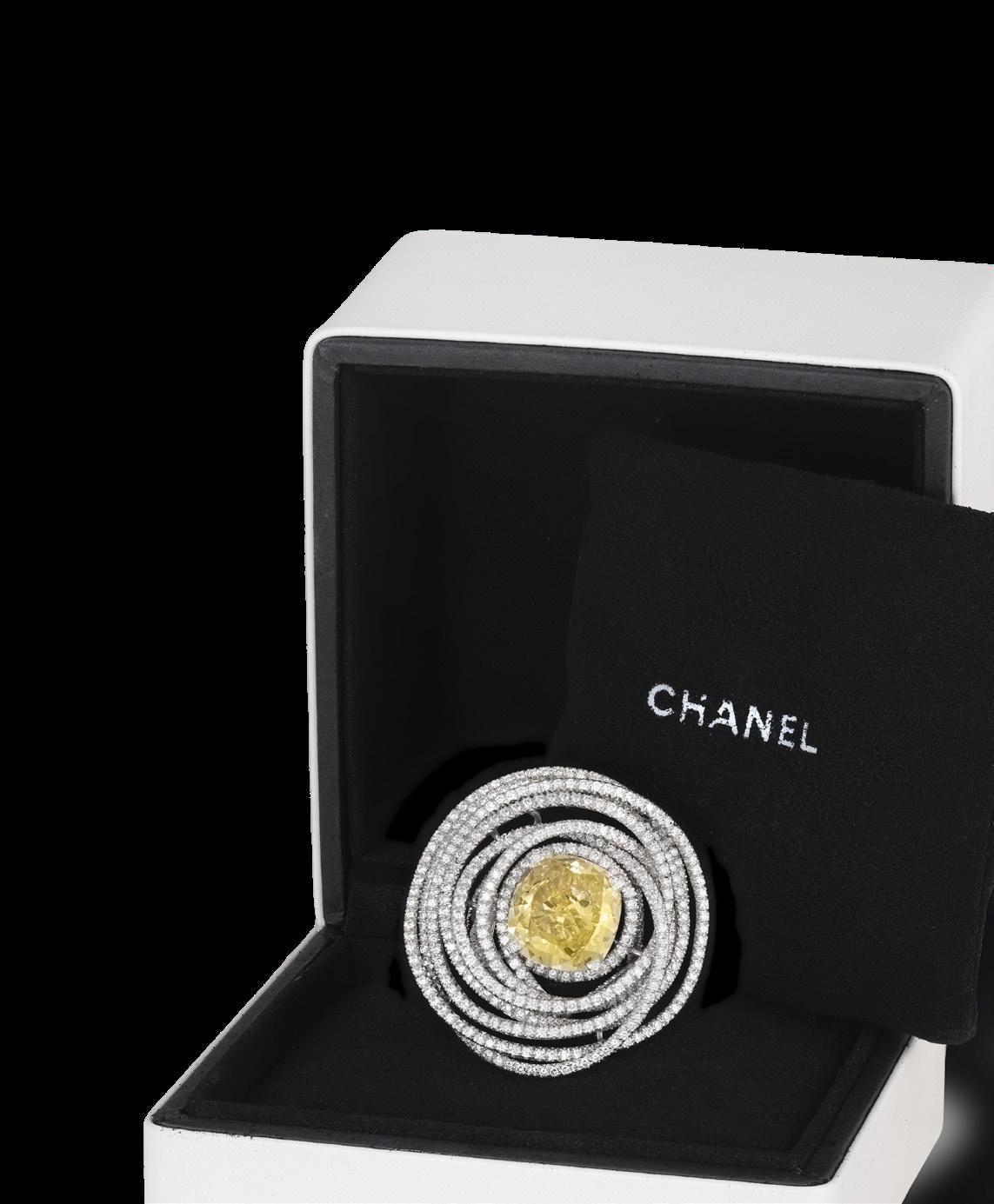
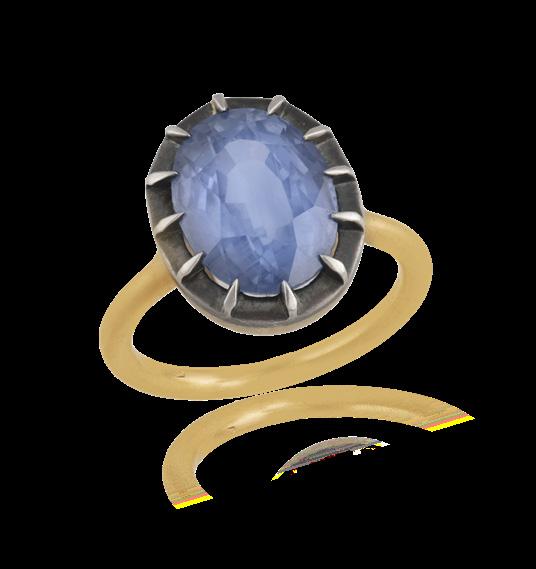
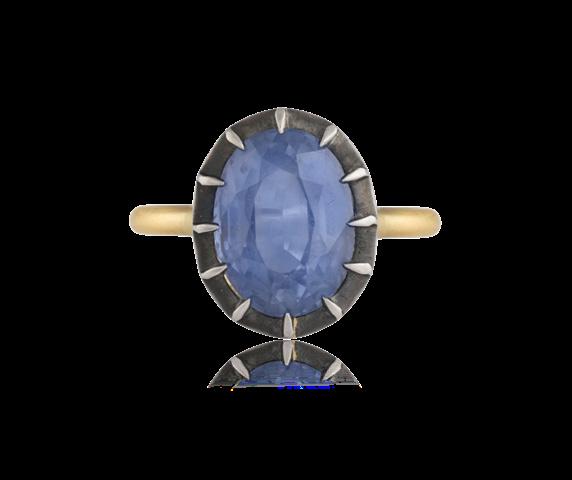
Of Georgian style, the oval-shaped sapphire weighing 5.71cts, within a multiple-claw setting, to a plain hoop, mounted in 18K gold, ring size J½
€ 5,000 - 6,000
Accompanied by a report from C. Dunaigre in Switzerland, stating that the natural sapphire weighing 5.71cts, is of Sri Lankan origin, with no indications of heating. Report number CDC2206592, dated June 24th 2022.
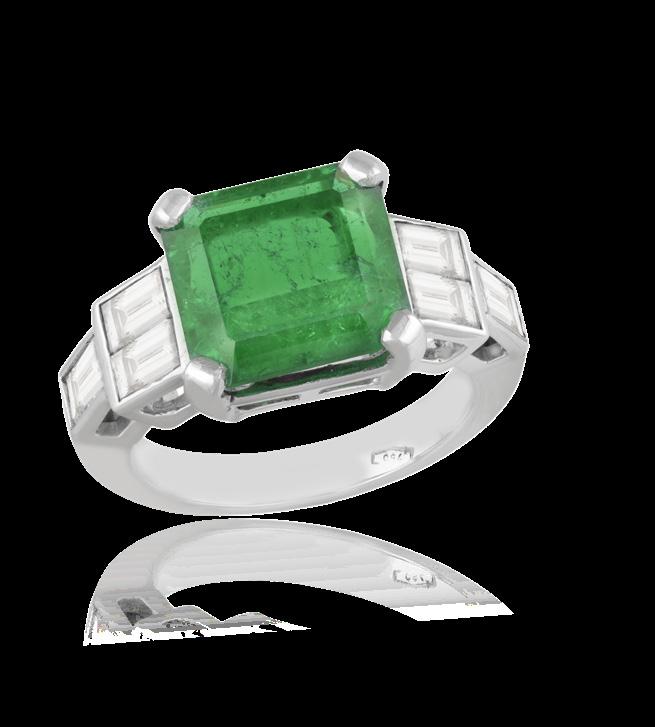
The cut-cornered step-cut emerald weighing approximately 4.70cts, within a four-claw setting and between baguette-cut diamond shoulders, mounted in 18K gold, diamonds approximately 1.50cts total, ring size N½
€ 8,000 - 12,000
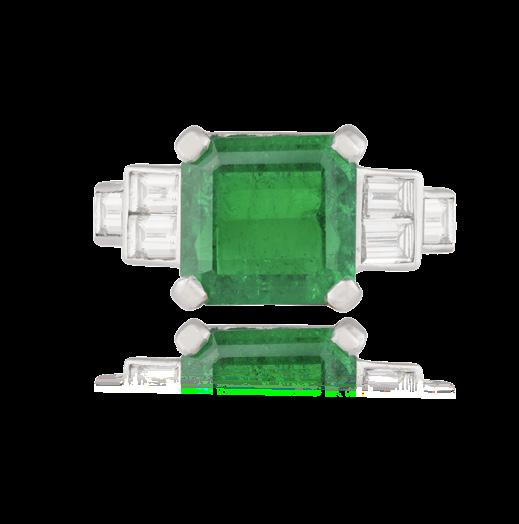
Accompanied by a report from the SSEF laboratory in Switzerland, stating that the natural emerald measuring approx. 11.20x10.70x5.30mm, is of Colombian origin, with minor oil and resin. Report number 138864, dated June 12th 2024.
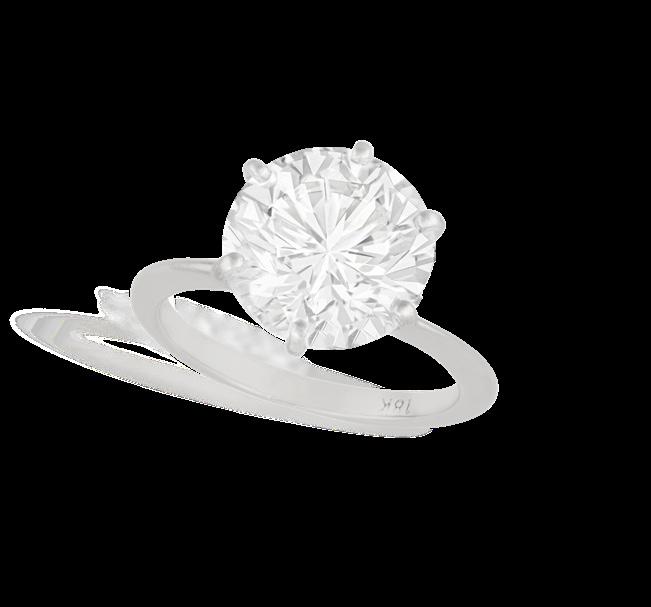
The brilliant-cut diamond, weighing 4.03cts, within a four-claw setting, to a plain hoop, mounted in 18K gold, ring size I⅓
€ 70,000 - 80,000
Diamond with laser inscription on girdle from the GIA laboratory in America, stating that the natural diamond weighing 4.03cts, is E colour, VS1 clarity (Ex - Ex - Ex). Report no. 6204649538, dated October 10th 2019.
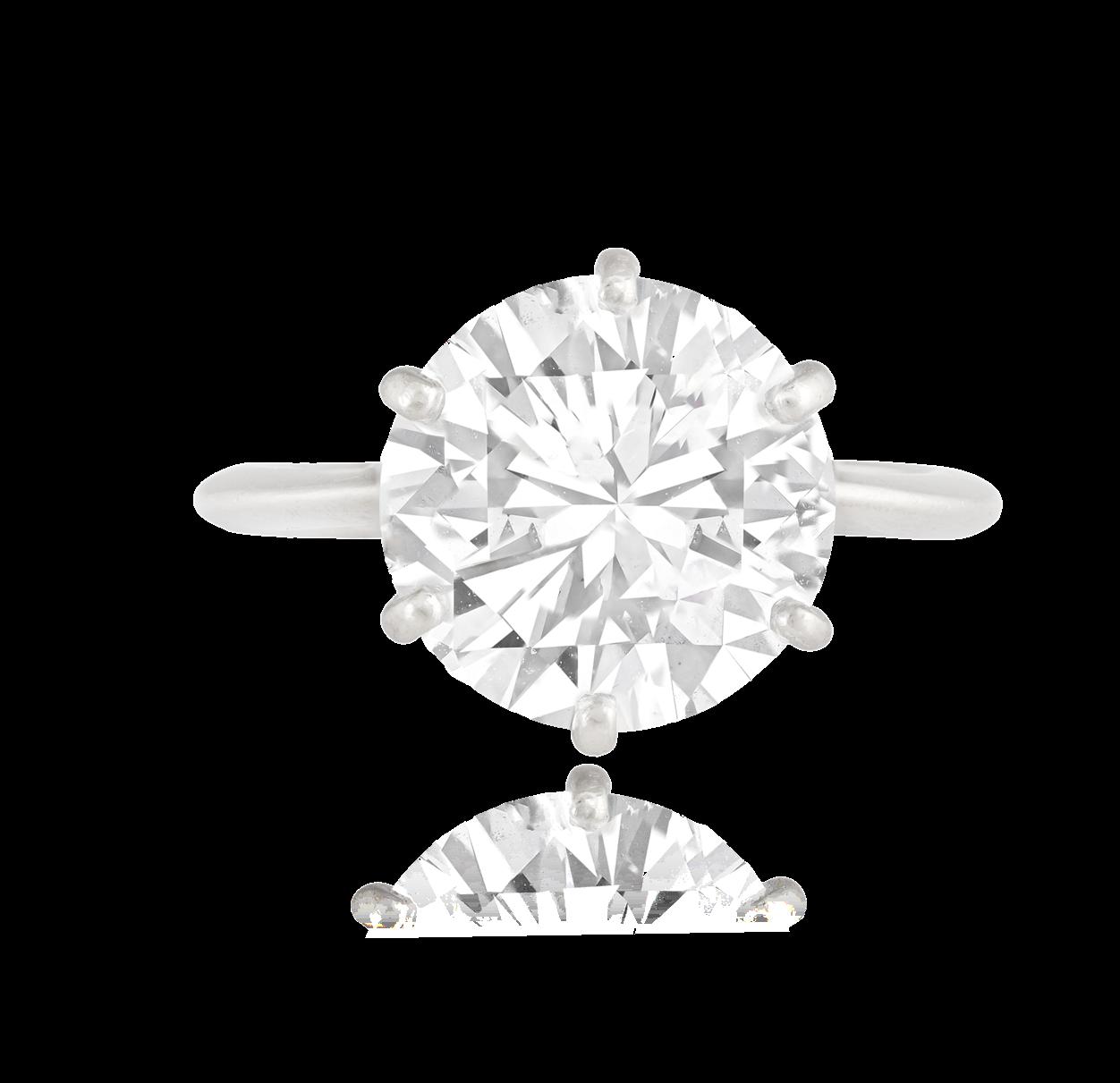
The flattened byzantine-link chain, highlighted with seven lapis lazuli batons, in 18K gold, maker’s mark BR, length 94.5cm
€ 2,500 - 3,500
Centring a lapis lazuli baton, between single-cut diamond borders, to reeded and domed shoulders, mounted in bi-coloured 18K gold, signed Max, Italian registry mark ‘1TO’ for Marchisio between 1944-1968, numbered, ring size L
€ 800 - 1,200
The story of the Marchisio family in the world of jewellery begins as early as 1649, when the Marchisio name first appeared in Turin’s goldsmith industry records. Nearly two centuries later, in 1846, Felice Marchisio was born and at just 13 years of age, he started working in his older brother Antonio’s workshop to help support his family. After Italy’s capital moved from Turin to Florence, economic challenges forced Felice to move to Paris, where he learned modern processing techniques and refined his manual skills.
During his time in Paris, Felice was caught up in the Siege of Paris before escaping back to Turin, bringing with him some of highly capable laboratory workers from France. Back home, he and his brother founded their own workshop, which rapidly grew into Turin’s largest goldsmith company by the 1880s, employing over 100 workers. One of their early and notable projects was the creation of a 14 kg gold jewellery box, which was presented by the City of Turin to the future Queen Margherita, wife of Umberto I of Savoy.
The hinged bangle centring a lapis lazuli baton, between single-cut diamond borders and reeded shoulders, mounted in bi-coloured 18K gold, signed Max, Italian registry mark ‘1TO’ for Marchisio between 1944-1968, numbered, inner length approximately 17.5cm
€ 1,200 - 1,800
Each set with an oval-shaped lapis lazuli cabochon, within a brilliant-cut diamond surround, mounted in 18K gold, length 2.5cm
€ 1,800 - 2,200
In the early 1900s, Felice’s three sons Francesco, Napoleone and Giuseppe began contributing to the company’s success. In 1903, Felice co-founded the Turin Goldsmith’s Art School with Sir Ghirardi. His son Francesco was one of its first students. However, World War I brought hardships, forcing a reduction in the workforce and claiming the lives of two of his sons, Francesco and Giuseppe.
After Felice’s death in 1926, his only remaining son Napoleone took over, but political unrest and World War II forced the factory to close. After the war, Napoleone and his son Giovanni reopened the business as “Napoleone Marchisio”, achieving immediate commercial success. In 1968, the company became Giovanni Marchisio & Co, re-establishing the brand’s prestigious reputation.
Since the 1990s the company has been led by the Mattioli family, under whose guidance it maintained a strong position in the industry. In 2013, the historic Antica Ditta Marchisio was acquired by the Richemont Group, continuing production and remaining a key supplier for major inter-

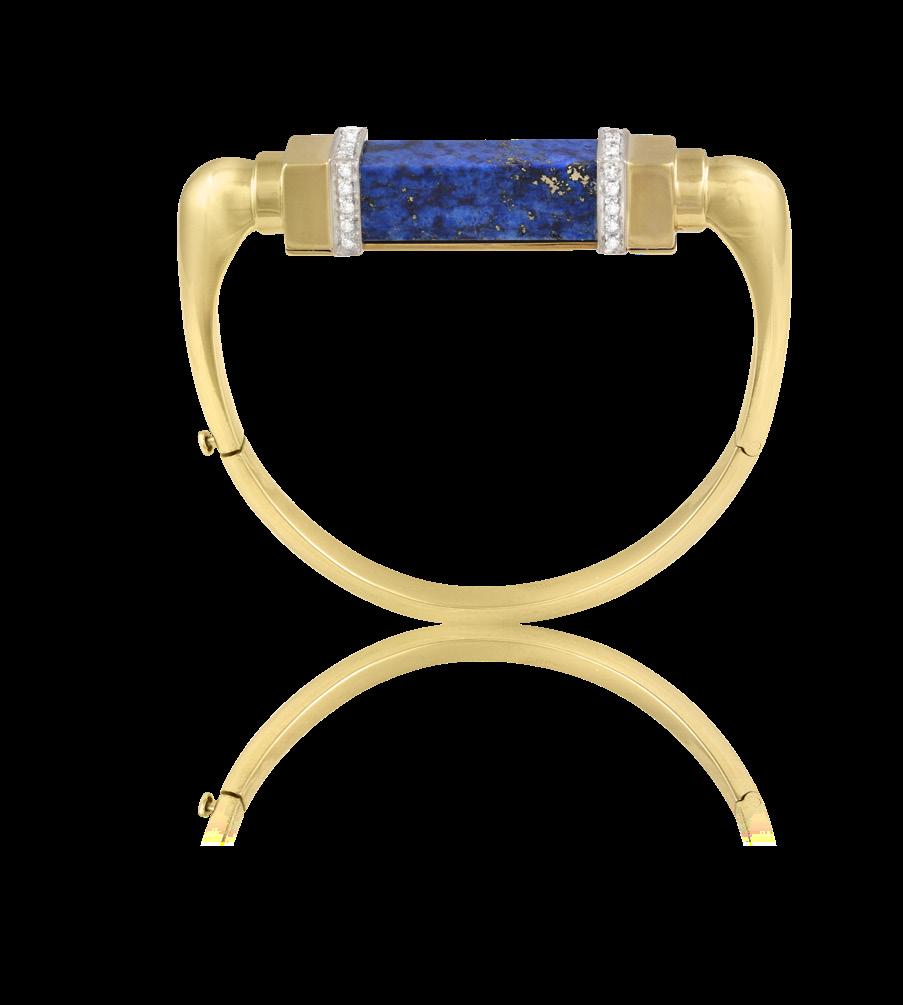
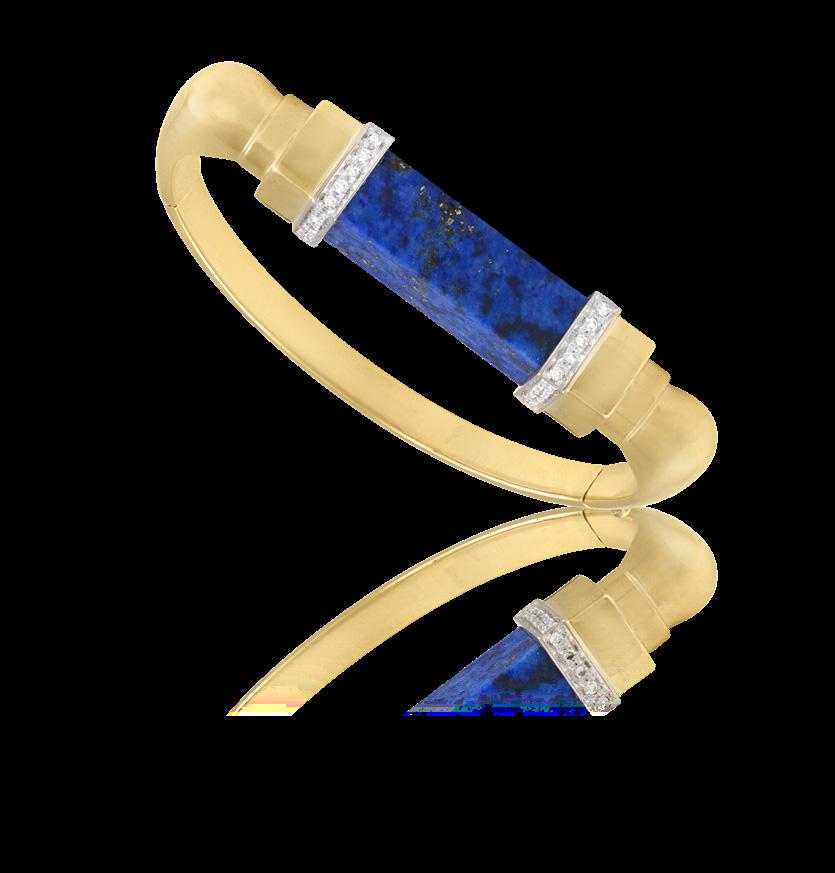
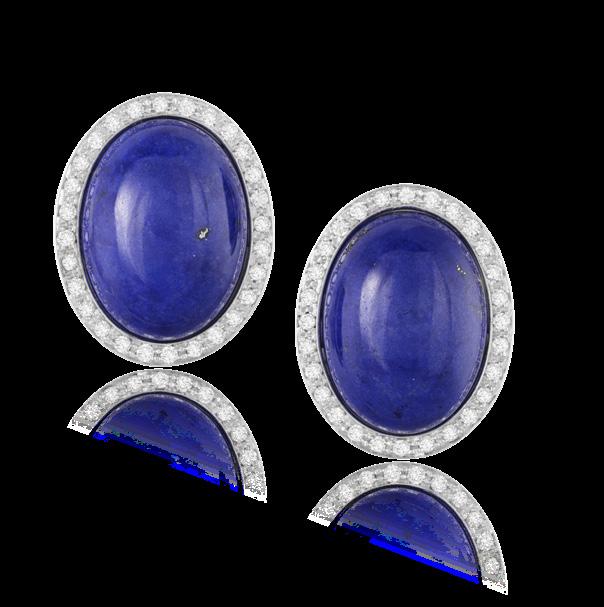
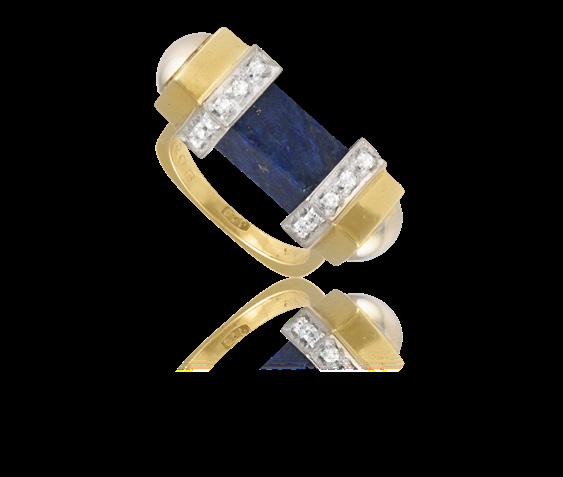
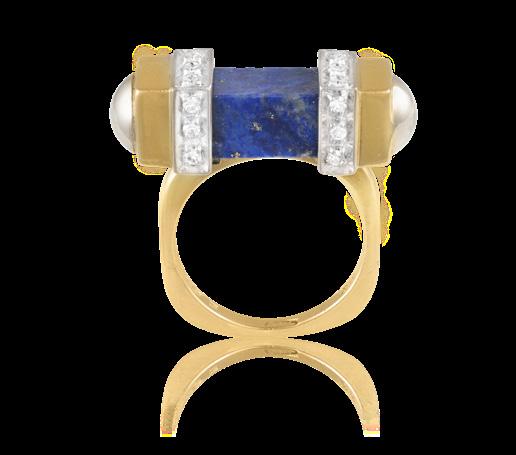
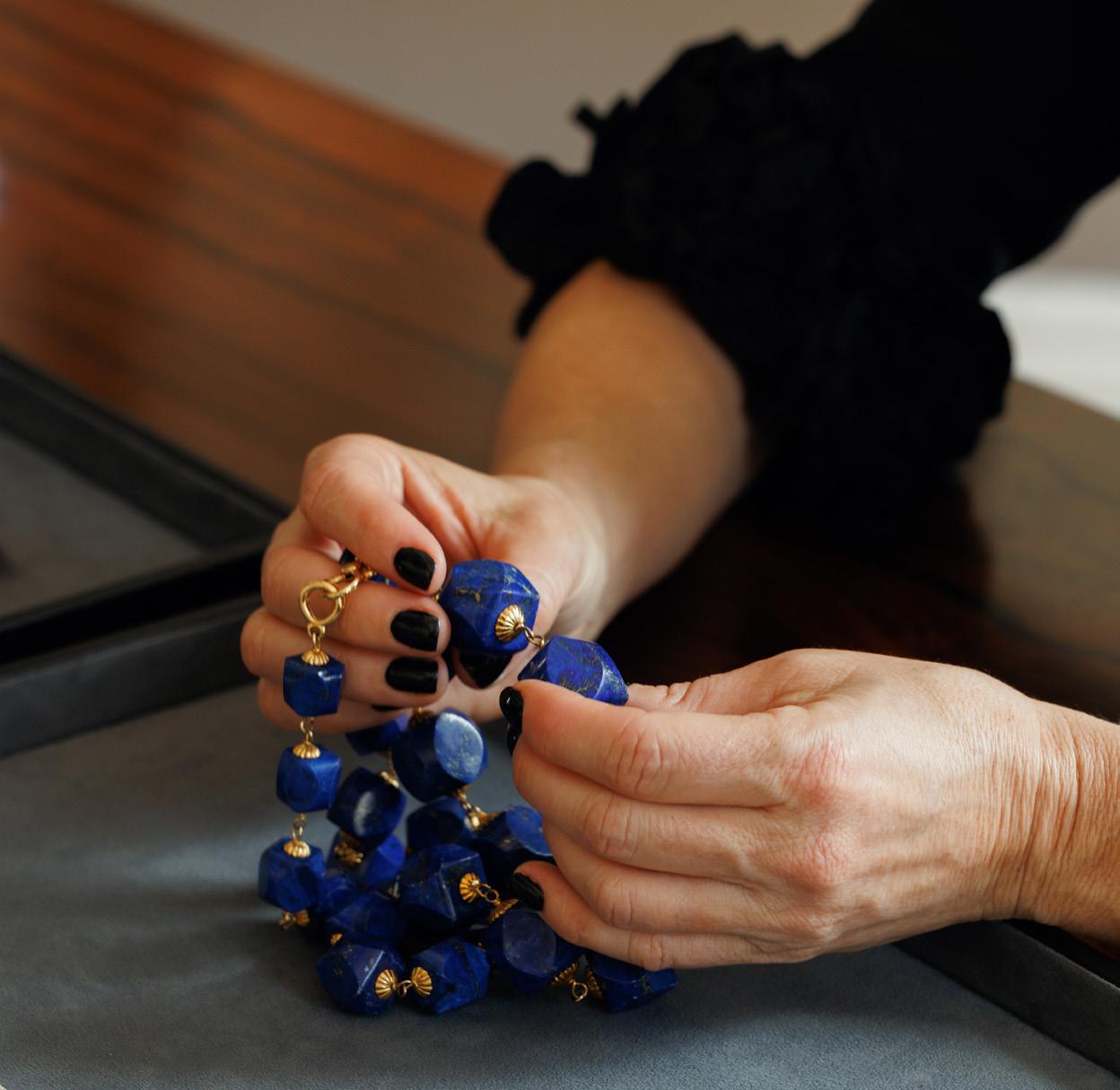
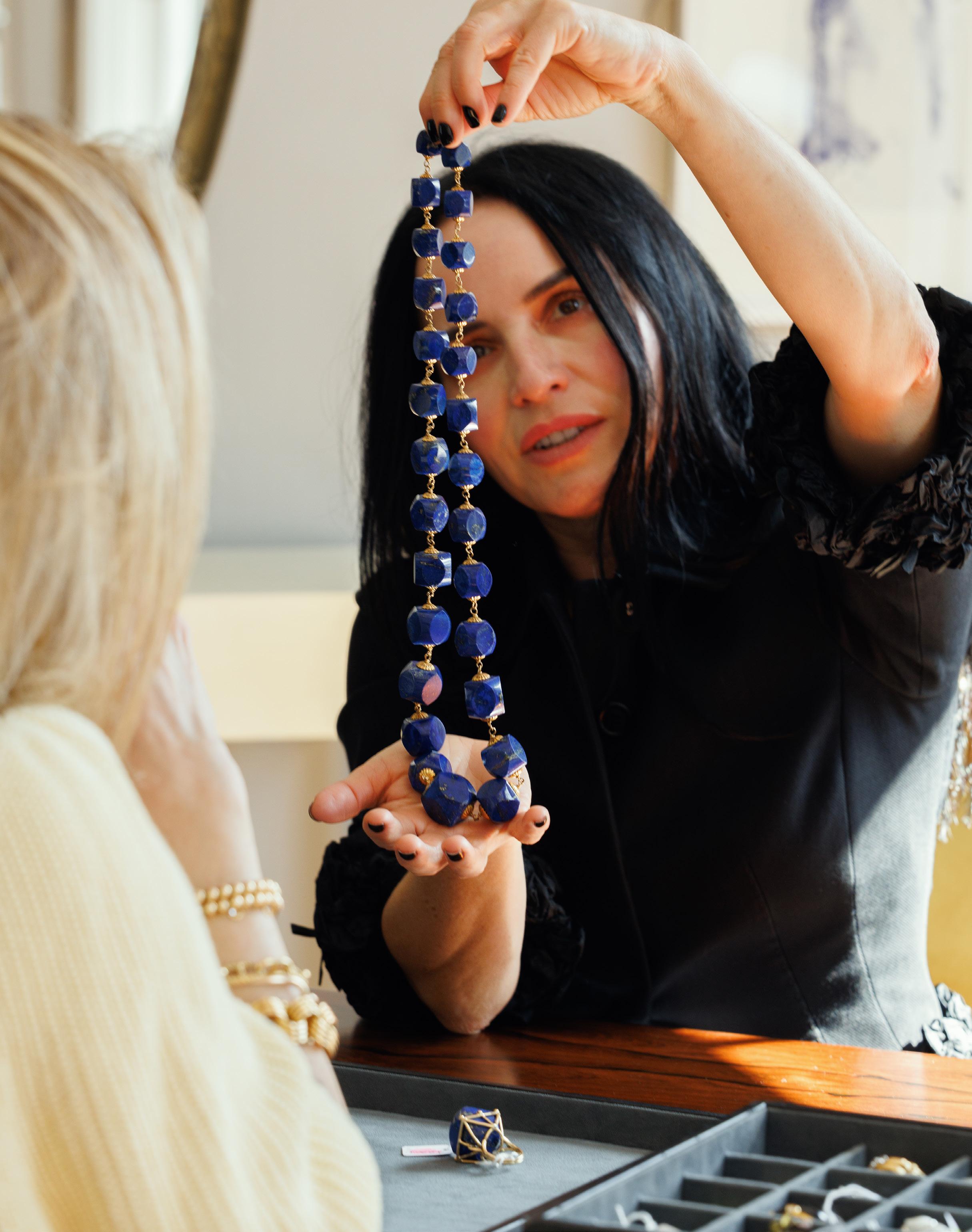
Composed of graduated faceted lapis lazuli beads, each with reeded gold cap connectors, to a gold clasp, Italian registry mark, mounted in gold, length 80.5cm
€ 4,000 - 5,000
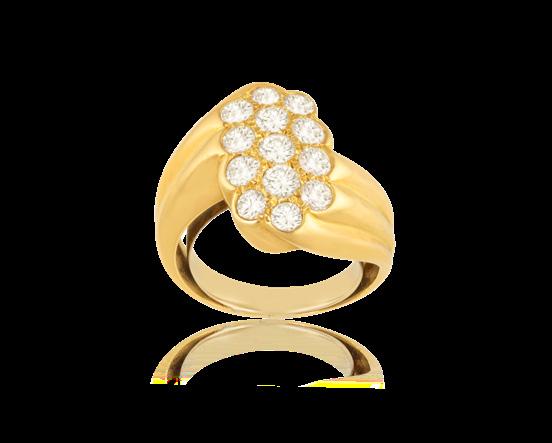
Of cluster design, set with brilliant-cut diamonds within a scalloped border, to a reeded mount, mounted in 18K gold, diamonds approximately 1.50cts total, indistinct French maker’s mark, English maker’s mark ‘BLt’, English import marks for London 1974, ring size O (sizing band)
€ 1,200 - 1,800
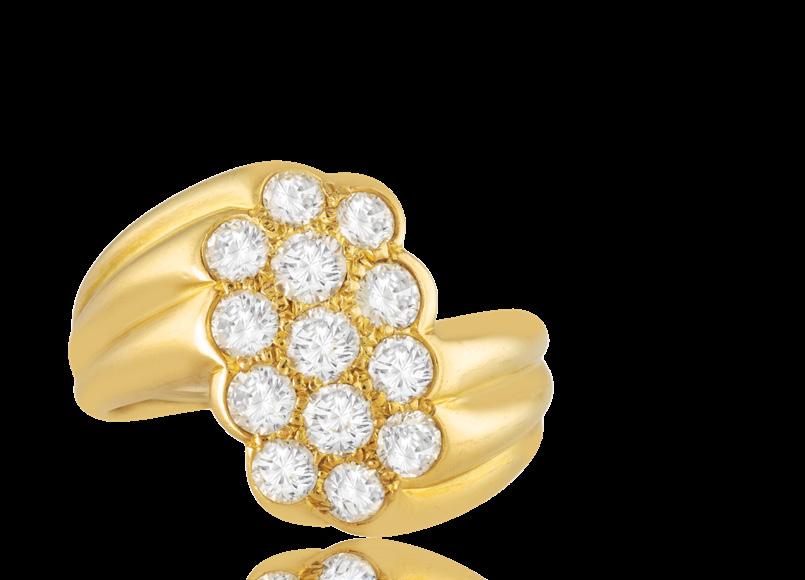
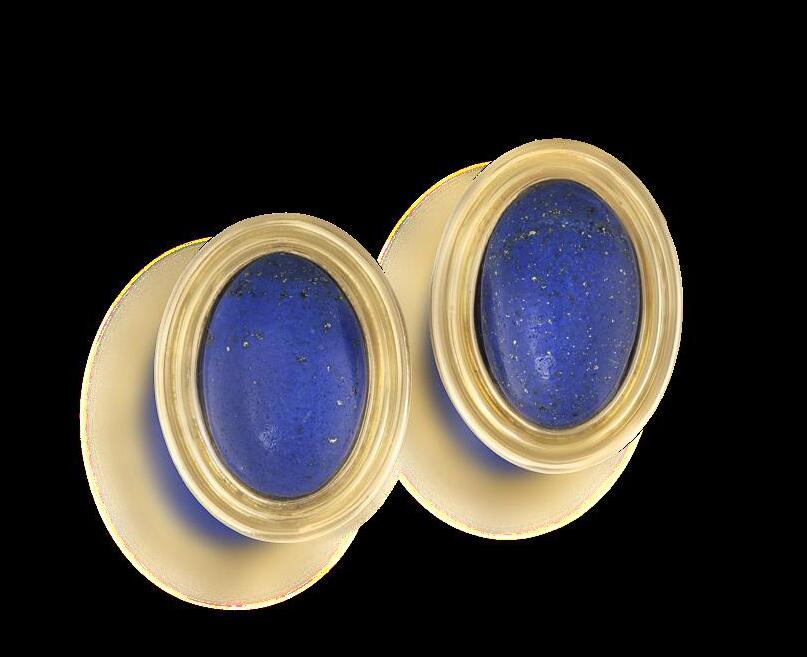
Each oval-shaped lapis lazuli cabochon, within a reeded frame, mounted in 18K gold, length 2.7cm
€ 500 - 700
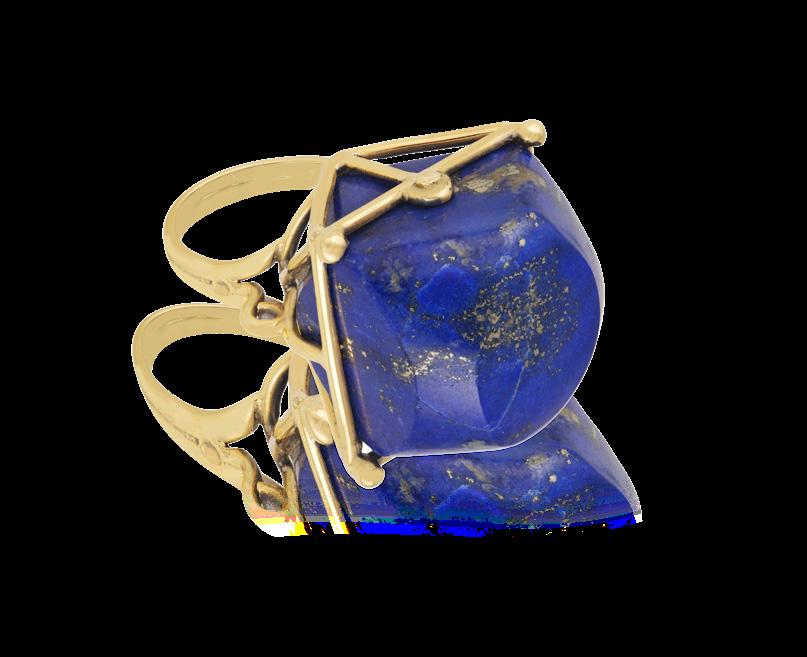
The openwork wire mount highlighted by beads and scrolled shoulder detailing, set with a prominent faceted lapis lazuli, mounted in 18K gold, ring size O½
€ 1,200 - 1,800
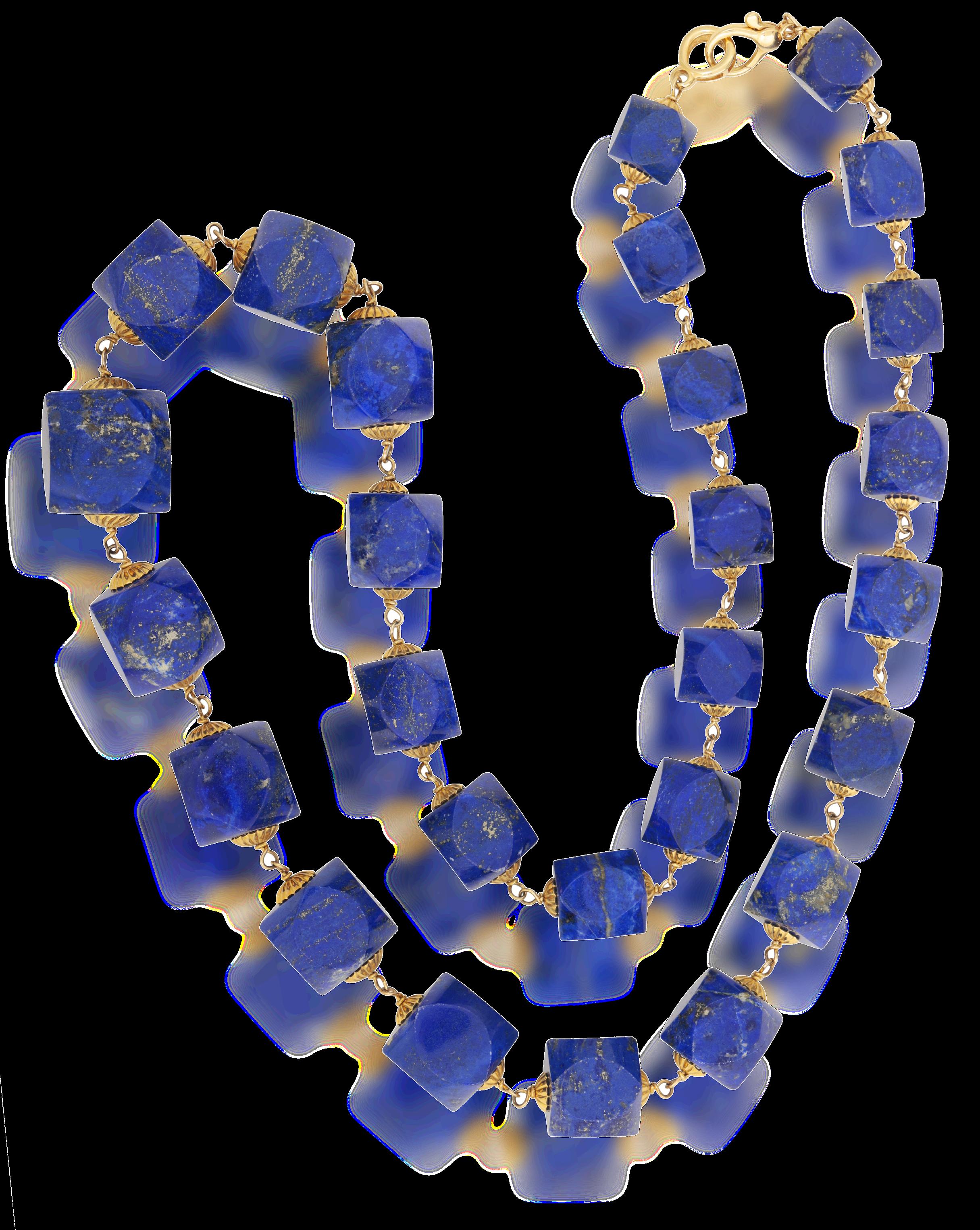
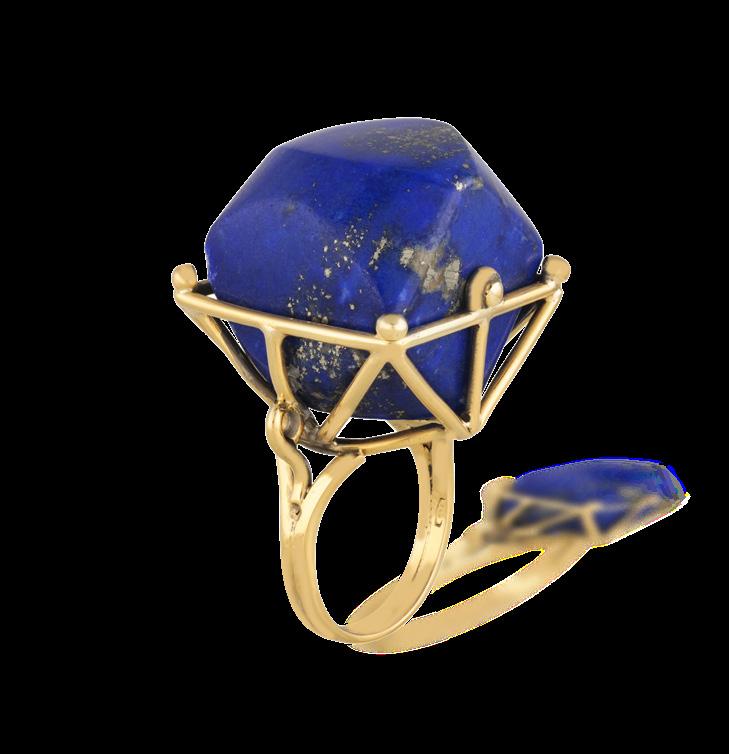
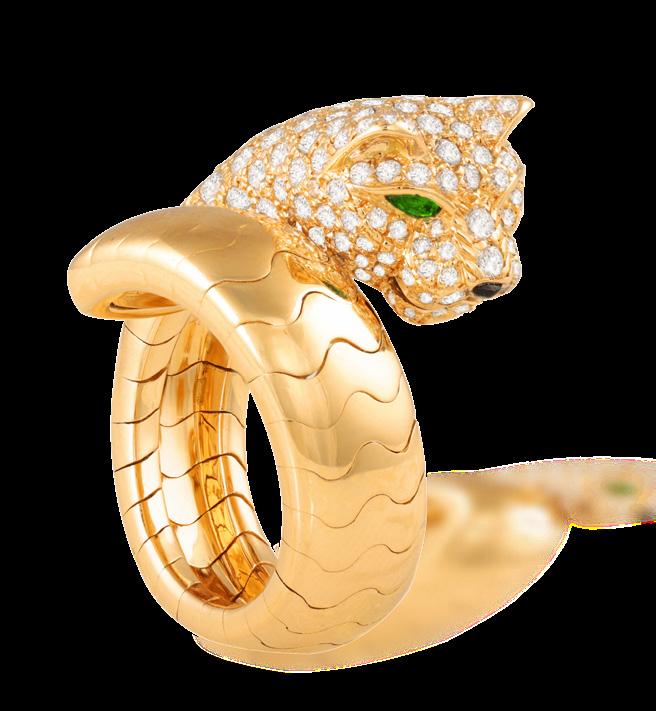
183
CARTIER A DIAMOND, EMERALD AND ENAMEL ‘LAKARDA PANTHÈRE’ DRESS RING, CIRCA 2001
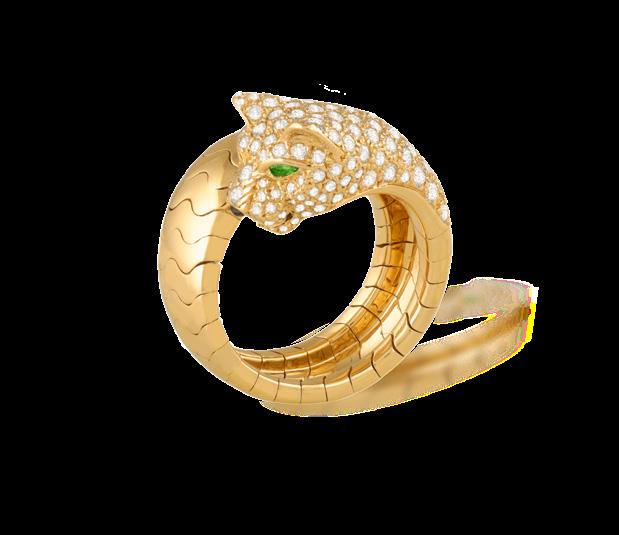
The sprung ring designed as a panther, the head pavé-set with brilliant-cut diamonds, the eyes set with pear-shaped emeralds, the nose with onyx detailing, mounted in 18K yellow gold, signed Cartier, numbered, with maker’s case, ring size L (51)
€ 15,000 - 20,000
Accompanied with an insurance valuation from Cartier in Geneva, stating that the diamonds are 2.31cts, insurance valuation CHF 22,800.- dated March 21st 2001, for a sale dated March 3rd 2001.
184 A PAIR OF DIAMOND EARCLIPS
Each designed as a pair of acorn leaves, pavé-set with brilliant-cut diamonds, mounted in 18K gold, diamonds approximately 2.60cts total, maker’s mark ‘M’, French import marks, length 2.6cm
€ 3,000 - 4,000
185
CARTIER A DIAMOND ‘MADISON’ PENDANT NECKLACE
The central bombé plaque, pavé-set throughout with brilliant-cut diamonds, between similarly-cut diamond fancy links, to a flattened fancy-link backchain, mounted in 18K gold, diamonds approximately 2.70cts total, signed Cartier Paris, numbered, with maker’s mark, French assay mark, with maker’s pouch, length 37.7cm
€ 6,000 - 7,000

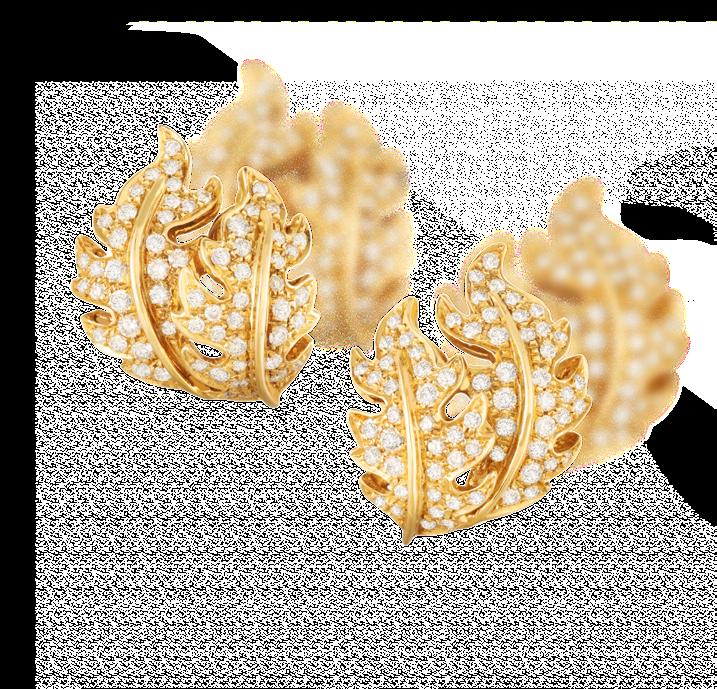

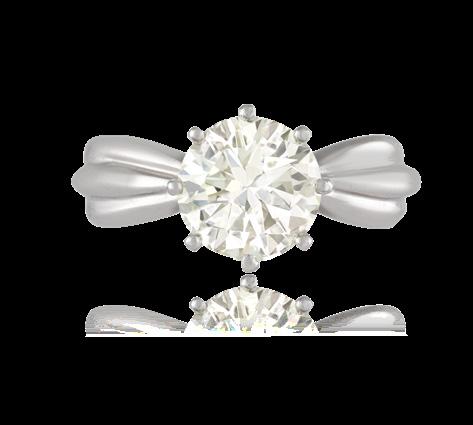
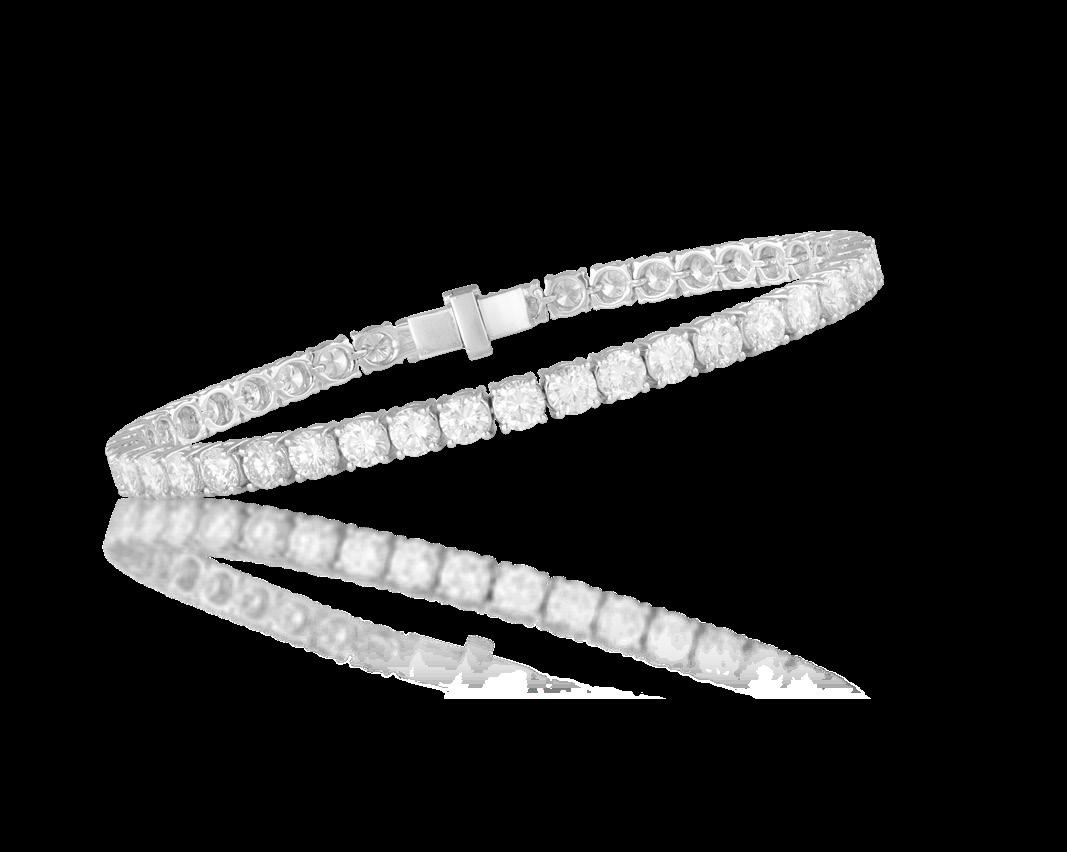
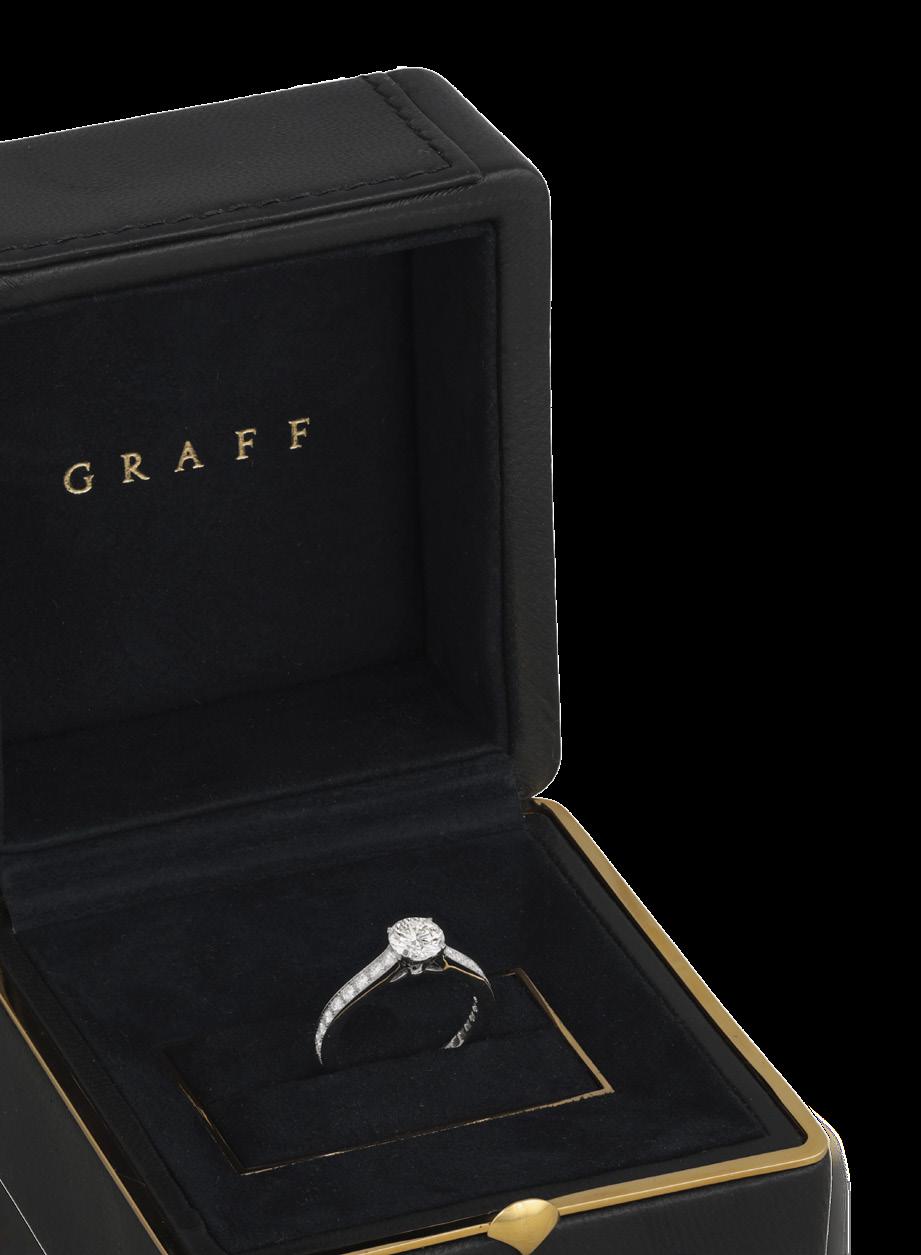
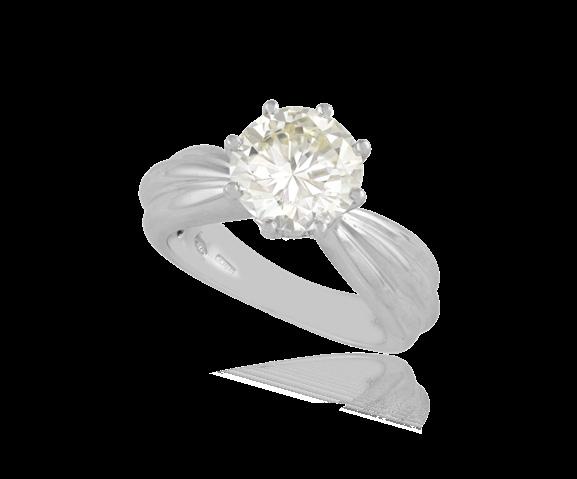
The brilliant-cut diamond weighing 2.84cts, within an eight-claw setting, between bombé reeded shoulders, mounted in 18K gold, Italian registry mark, ring size M
€ 5,000 - 7,000
Accompanied with a photocopy of a report from Laboratorio Gemmologico Enrico Butini (Gemmologo Consultente Tecnico Tribunale Di Roma), stating that the diamond weighing 2.84cts, is N colour, IF (Internally Flawless) clarity. Dated February 2nd 2001, numbered 00142.
The single line composed of forty-two claw-set brilliant-cut diamonds, mounted in 18K white gold, diamonds approximately 11.00cts total, length 18.3cm
€ 12,000 - 18,000
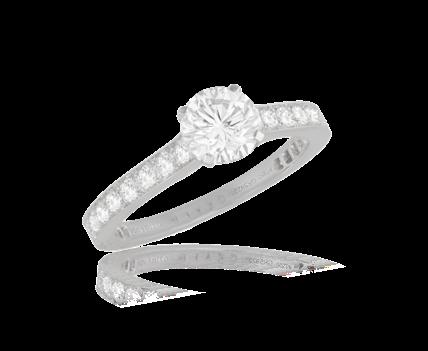
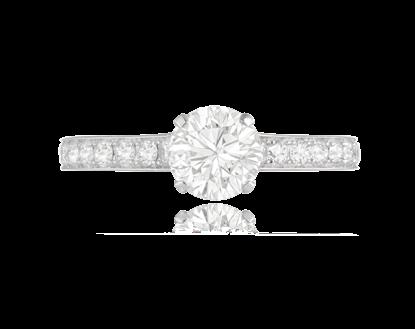
The brilliant-cut diamond, within a four-claw setting, to similarly-cut diamond shoulders, mounted in platinum, signed Graff, numbered, inscription 0.71ct F VS1, with maker’s case, ring size I½
€ 1,200 - 1,800
The principal diamond with a laser inscription on girdle, from the GIA laboratory in America, stating that the natural diamond weighing 0.71ct, is F colour, VS1 clarity (Ex - Ex - Ex). Report no. 6187167749, dated February 22nd 2017.
The brilliant-cut diamond, within a six-claw setting, between a bifurcated hoop set with brilliant-cut diamonds at the front, with similarly-cut diamond to the gallery, mounted in 18K gold, remaining diamonds approximately 2.00cts total, with maker’s mark ‘WR’, ring size N½
€ 14,000 - 18,000
Accompanied by a report from l’institut de gemmologie Monaco, stating that the natural diamond weighing 2.03cts, is G colour, VVS2. Report number 2024112901, dated November 29th 2024.
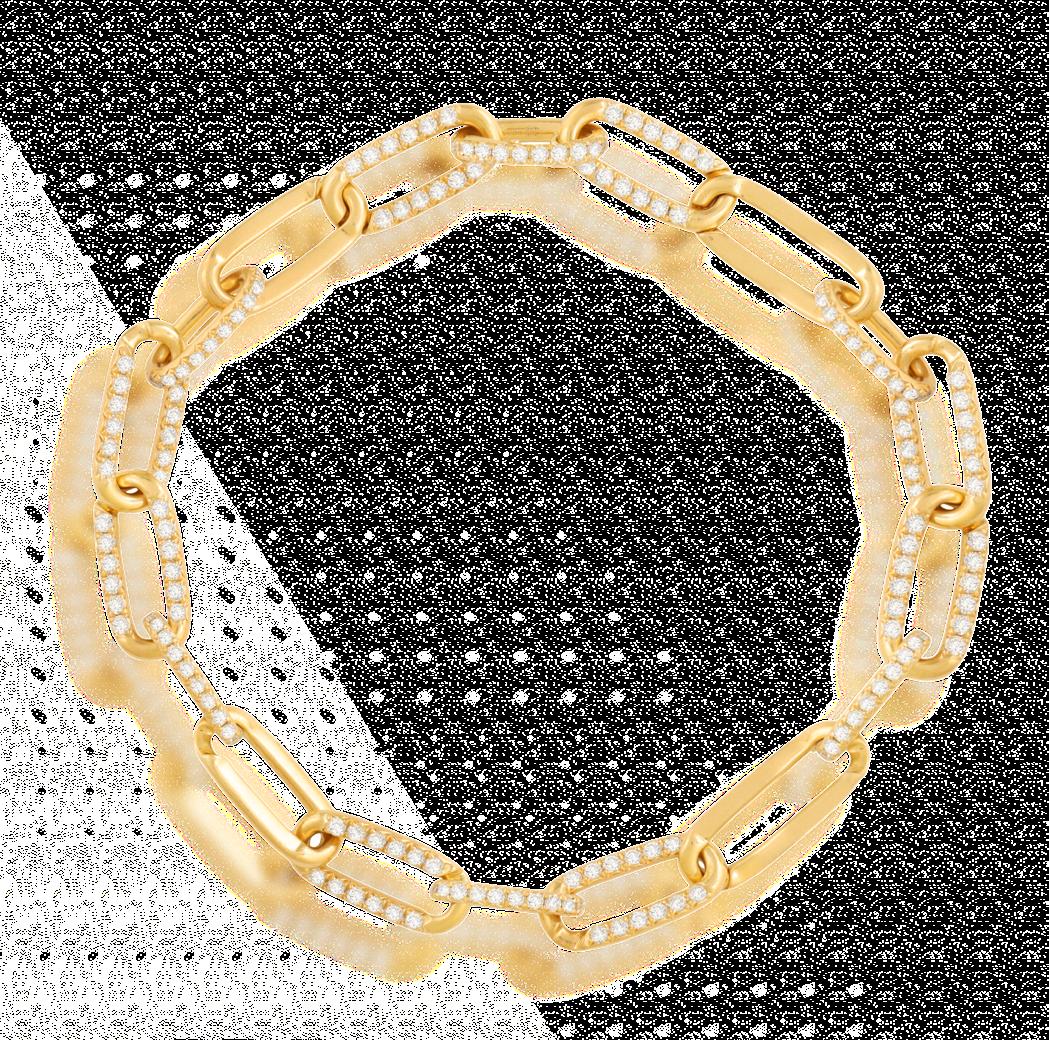
191
The single line composed of hexagonal-mounts, set with brilliant-cut diamonds, mounted in 18K gold, diamonds approximately 5.00cts total, Italian registry mark, length 18.3cm
€ 5,000 - 6,000
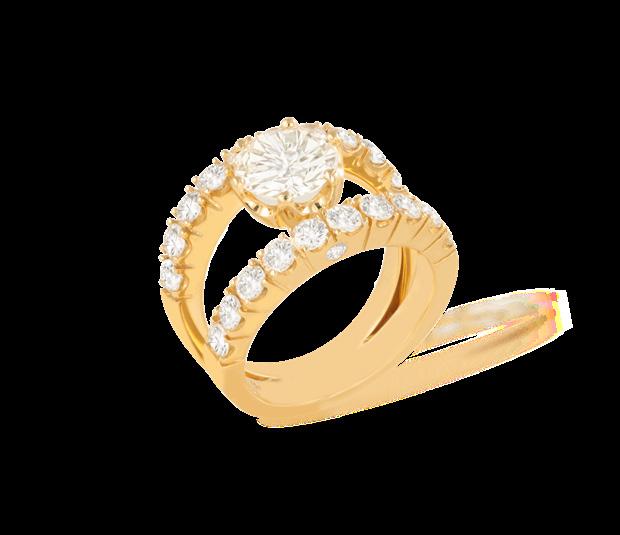
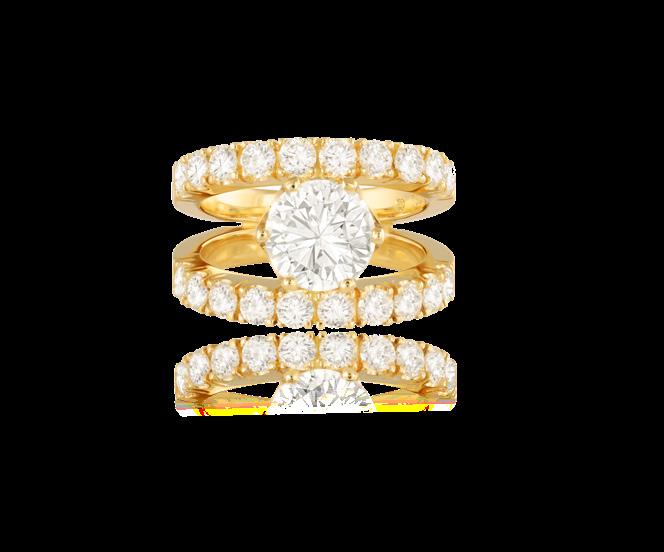
Composed of various oval-shaped links, intermittently set with brilliant-cut diamonds, in 18K gold, diamonds approximately 2.20cts total, length 19.3cm
€ 1,200 - 1,800
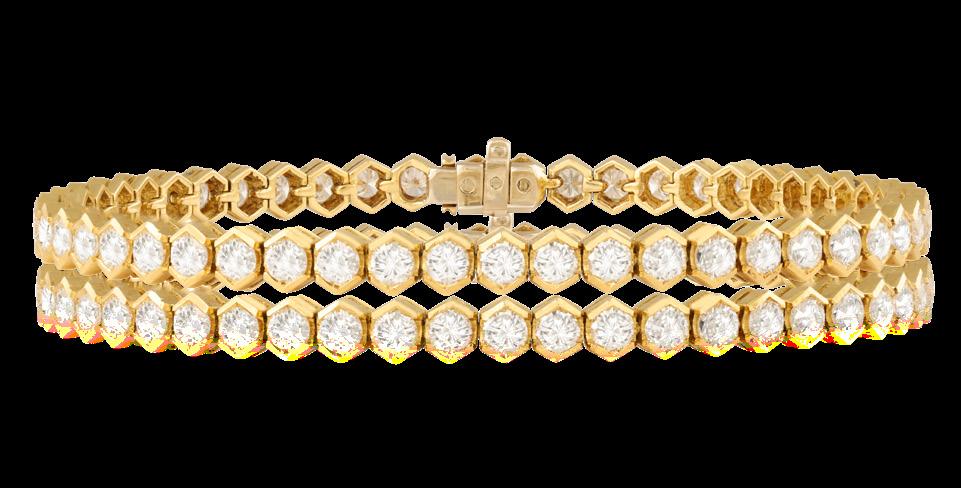
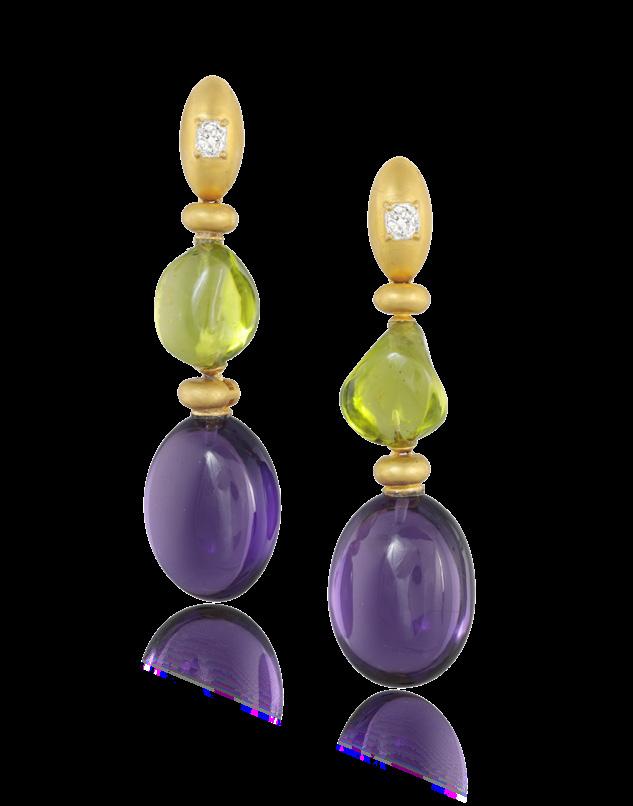
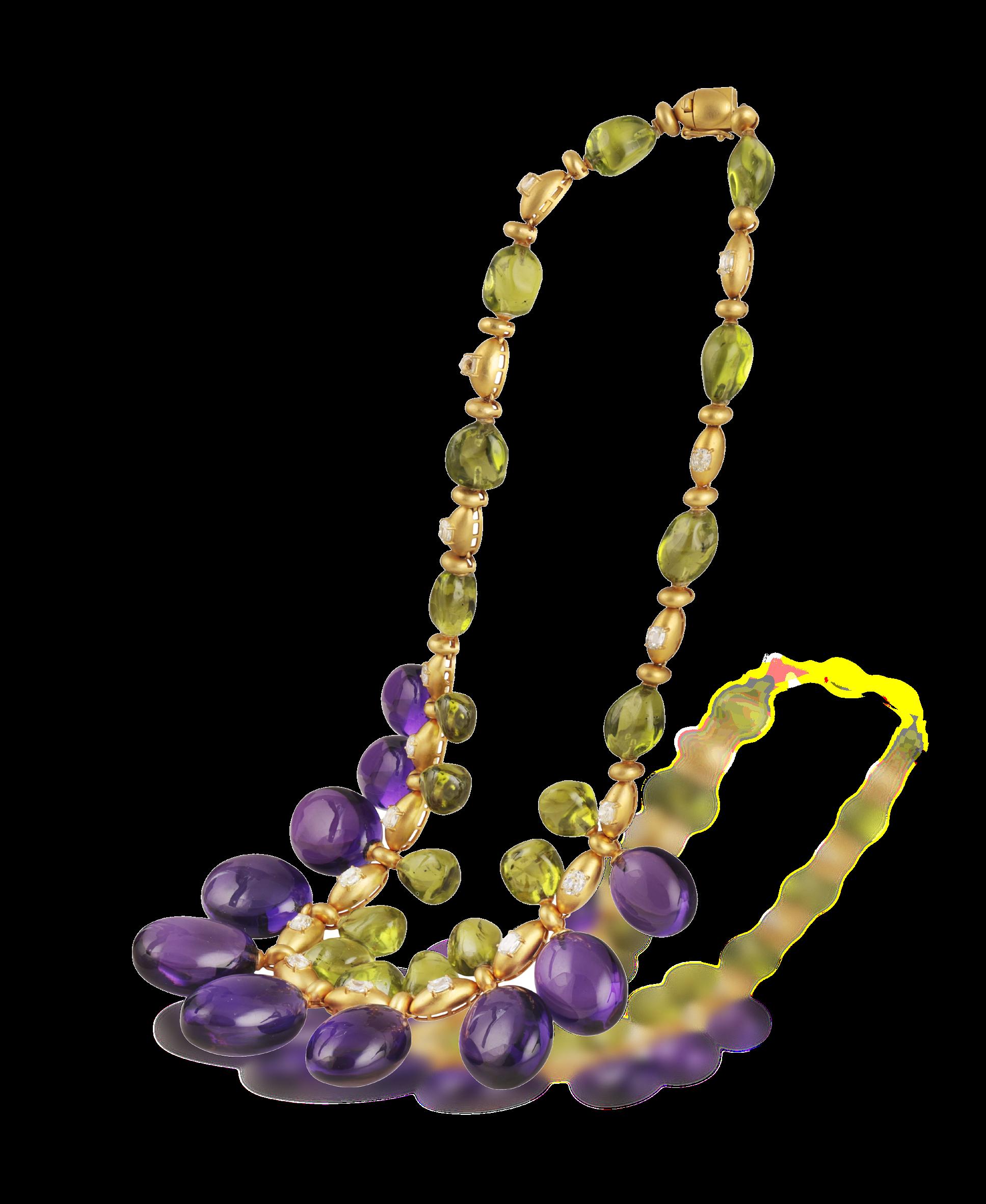
The necklace composed of a central row of graduated polished amethyst beads and reversely-set tumbled peridot beads, to a brushed bombé navette-shaped and roundel-link chain, accented with old cushion-shaped diamonds, back section further enhanced by tumbled peridot beads; pendent earrings of matching design, mounted in 18K gold, diamonds approximately 4.90cts total, amethysts approximately 320.00cts total, peridots approximately 172.00cts total, length of necklace 41cm, length of pendent earrings 5.4cm
€ 14,000 - 18,000
Of stylised feather design, in purple resin and 18K gold, signed JAR, numbered, with maker’s mark, French assay mark, with maker’s pouch, length 6cm
€ 7,000 - 8,000
Joel Arthur Rosenthal is one of the most exclusive and sought-after jewellery designers in the world, and yet, he remains a mystery to many. Founder of JAR, Rosenthal is known for his reclusive nature and limited production, making his creations highly coveted. His boutique in Paris's prestigious Place Vendôme doesn't advertise its presence with flashy signage or displays. Instead, the doors open only to a select few, such as Princess Caroline of Monaco, Ann Getty, Marella Agnelli and Princess Firyal of Jordan, ensuring that his work stays reserved for an elite clientele.
A New York City native, Rosenthal never intended to enter the world of jewellery. After graduating from Harvard with a degree in art history and philosophy, he moved to Paris and opened a needlepoint shop. Though his business began slowly, his experiments with unusual colours of yarn attracted the custom of designers for Hermès and Valentino. It was through one of these clients, who asked him to design a mount for a gemstone, that Rosenthal's path toward jewellery design was set in motion. His growing fascination with fashion led him back to New York, where he worked at Bulgari's Fifth Avenue store. However, it was his love for gemstones that eventually drew him back to Paris in 1977, where he and his partner, Swiss psychiatrist Pierre Jeannet, opened an exclusive boutique.
While JAR's name remained relatively unknown outside of Paris for years, his 2002 exhibition at London's Somerset House showcasing 400 of his pieces brought his work to global attention.
A perfectionist, JAR shuns mass production and commercial trends, opting instead for an almost secretive, highly selective approach. This dedication to artistry and exclusivity culminated in a major retrospective at the Metropolitan Museum of Art in 2013, making him the first living jeweller to be honoured with a solo exhibition there.
JAR's designs are celebrated for their daring use of unconventional gemstones, materials and striking colour combinations. His jewellery, often inspired by nature, transforms ordinary elements such as flowers, butterflies, and wildlife into intricate works of art. His mastery of materials like titanium and aluminium, paired with his innovative ombré colour schemes, adds a modern, sculptural quality to his pieces.
Each piece is meticulously handcrafted, with only 70 to 80 jewels created annually, ensuring both exclusivity and a sense of personal connection with each client.
One of her notable clients is Ellen Barkin, who in December 2006, after Revlon mogul Ronald Perelman blindsided her with divorce papers, turned the tables by selling her world-class jewellery collection at a Christie's auction
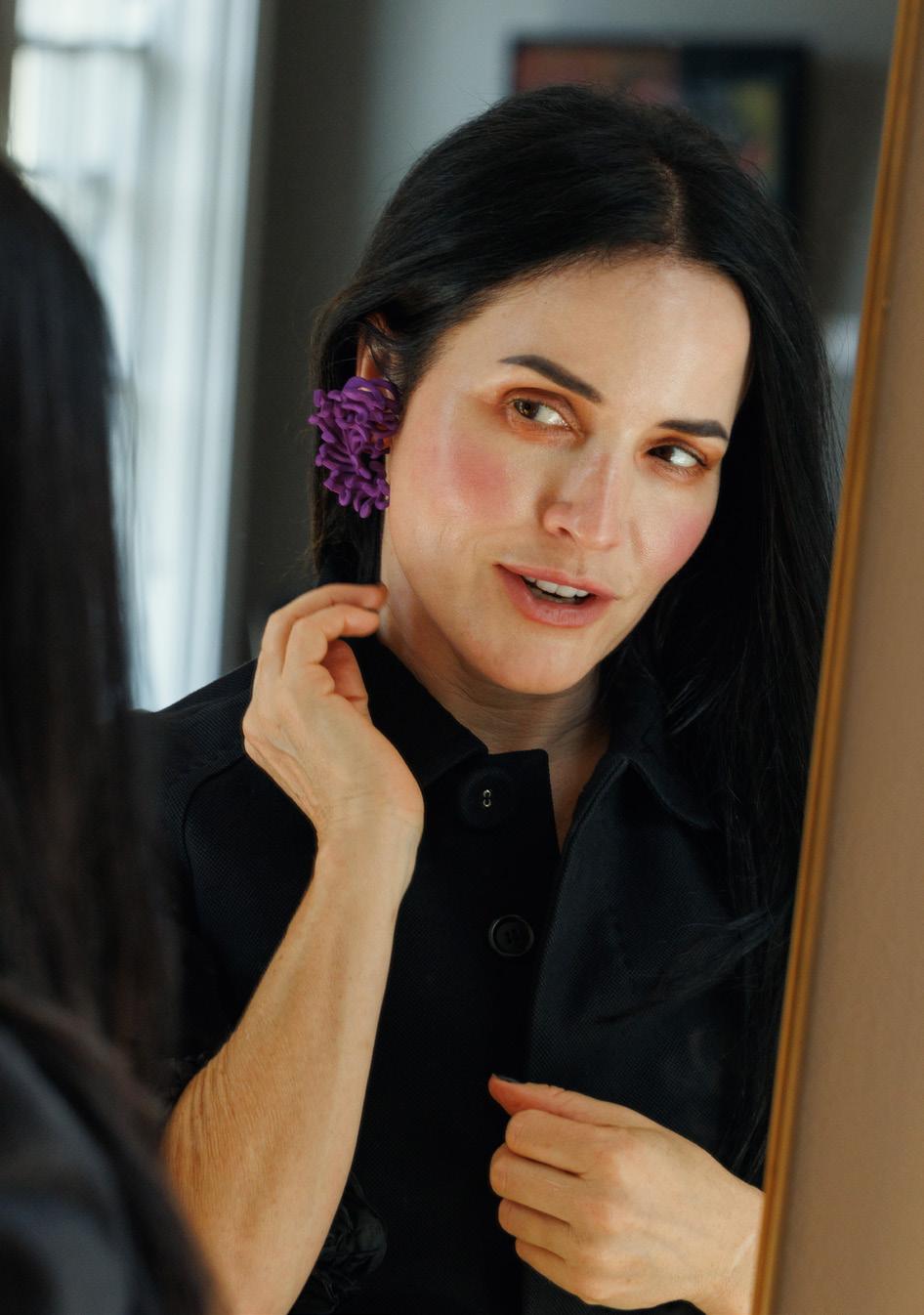
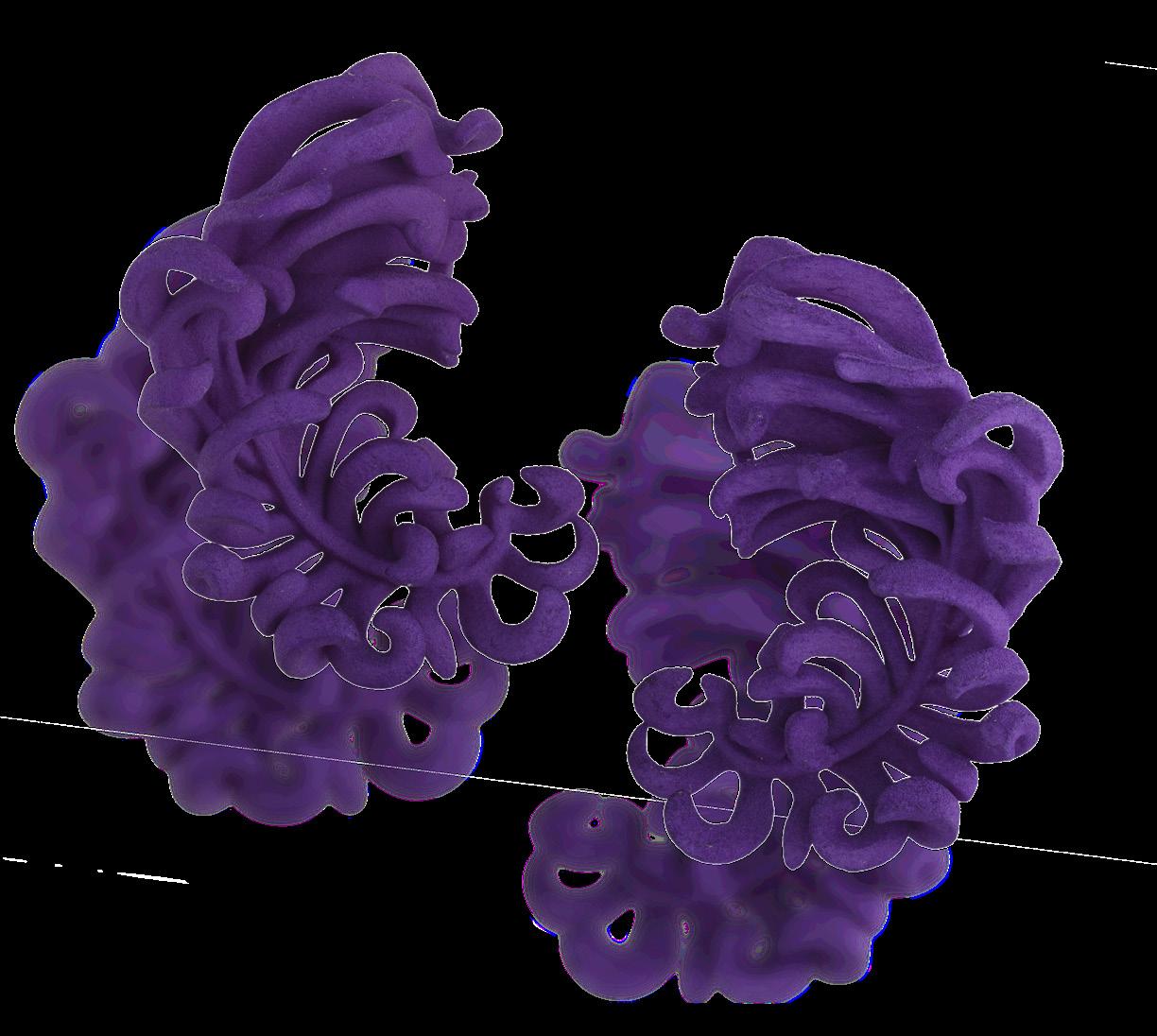
in New York. The jewels, all gifts from her ex, included pieces once owned by the Duchess of Windsor and Doris Duke, but it was her 17 JAR pieces that stole the show. Highlights included a 22.76-carat thread ring and her favourite topaz, ruby, and diamond earrings, which she wore to the 2005 Vanity Fair Oscars.
The auction reached $20 million, with JAR pieces such as diamond bangles and a diamond ring each surpassing $1 million. Ellen didn't just sell jewellery but a story of revenge and unapologetic glamour.
JAR's influence on the jewellery world is profound. His work, blending antique techniques with modern sensibilities, has inspired a new generation of jewellers and helped re-establish high jewellery as a true art form. For nearly half a century, Joel Arthur Rosenthal has remained an elusive figure in luxury jewellery, letting his creations speak for themselves with unmatched artistry and vision.
194
A DIAMOND HALF-ETERNITY RING
Composed of seven marquise-shaped diamonds, within collet-setting, mounted in 18K gold, diamonds approximately 1.60cts total, ring size O½
€ 2,000 - 3,000
195
A PAIR OF CULTURED PEARL AND DIAMOND PENDENT EARRINGS
Each set with an oval-shaped diamond within collet-setting, to a brilliant-cut diamond connector, suspending a round-shaped South Sea cultured pearl of gold tint measuring approximately 12.41mm, mounted in 18K yellow gold, diamonds approximately 1.10cts total, length 2.4cm
€ 1,800 - 2,200
196
A SAPPHIRE AND DIAMOND DRESS RING, FRENCH, CIRCA 1960
The oval-shaped sapphire at the centre, set within an old brilliant-cut diamond surround, to a swirled reeded mount, mounted in 18K gold and platinum, ring size O½
€ 3,000 - 4,000
198
A PAIR OF CULTURED PEARL AND DIAMOND PENDENT EARRINGS
Each baroque-shaped cultured pearl with brilliant-cut diamond cap, suspended a brilliant-cut diamond surmount, mounted in 18K gold, diamonds approximately 2.30cts total, length 5.1cm
€ 3,000 - 4,000
197
A DIAMOND ETERNITY RING
Composed of a continuous row of brilliant-cut diamonds in claw-setting, mounted in 18K rose gold, diamonds approximately 4.00cts total, Italian registry mark, ring size M½
€ 4,000 - 5,000
199
A PAIR OF DIAMOND EARSTUDS
Each brilliant-cut diamond within collet-setting, mounted in 18K yellow gold, diamonds approximately 2.40cts total, length 7mm
€ 4,000 - 5,000

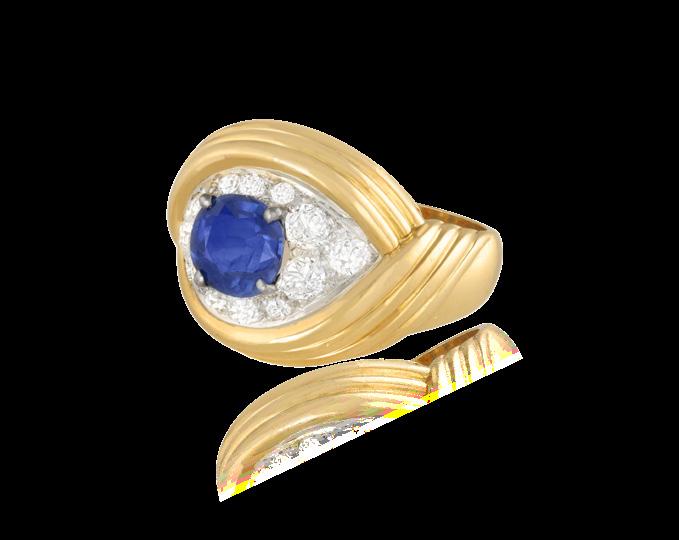
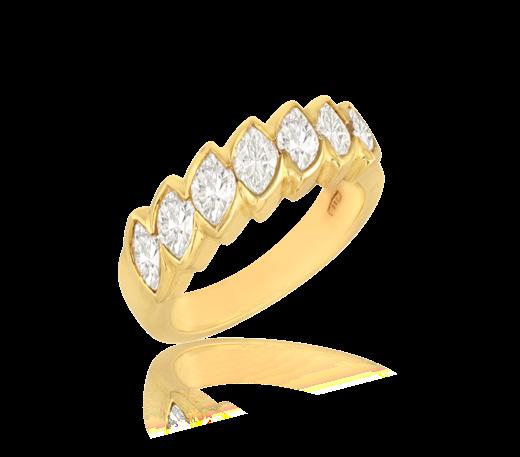
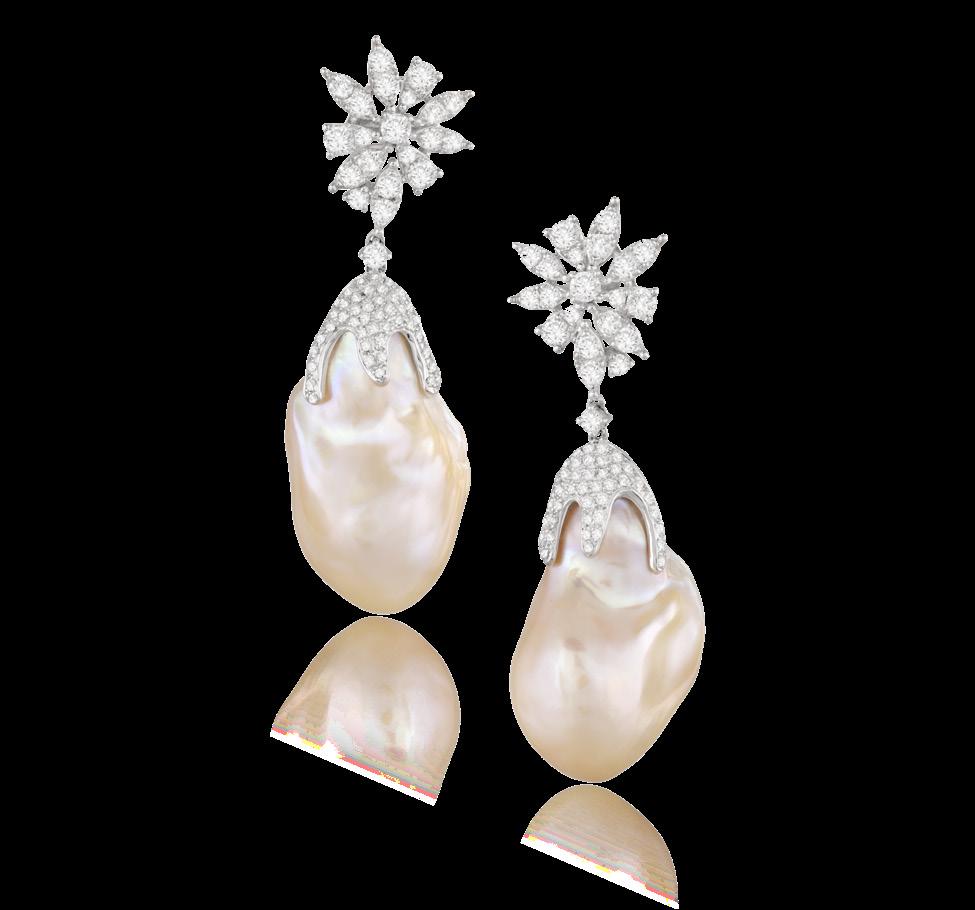

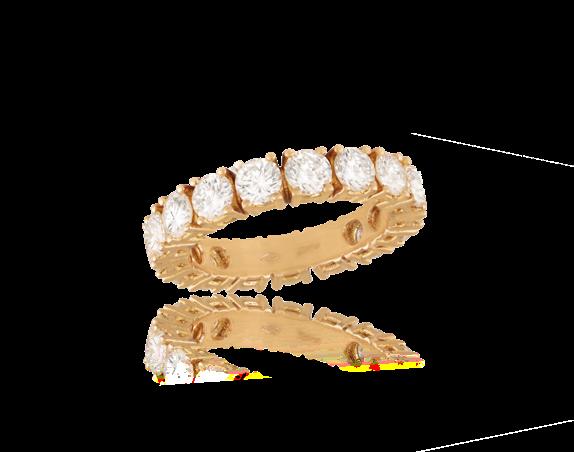
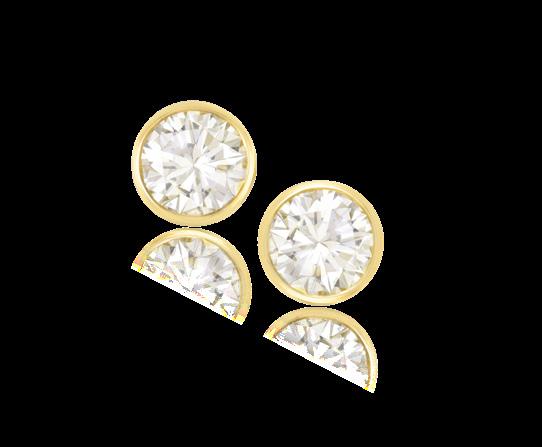
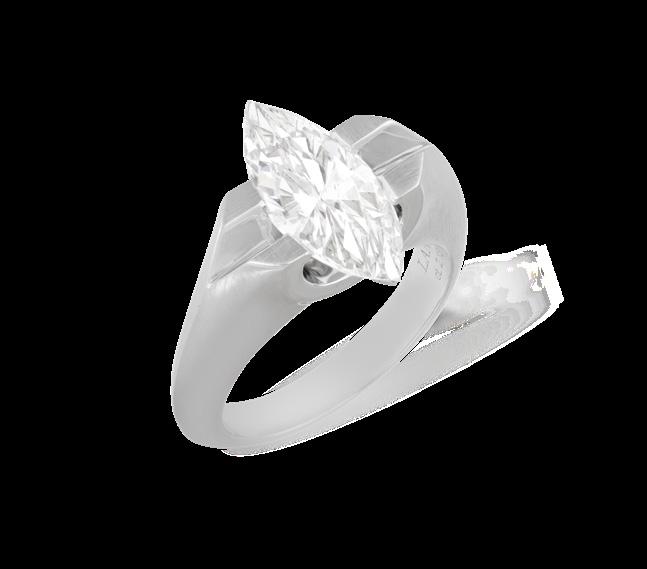

Of architectural design, centring a marquise-shaped diamond weighing 2.13cts, to a plain brushed gold mount, mounted in 18K gold, signed Langi, Italian registry mark, ring size M
€ 13,000 - 18,000
Accompanied by a report from the GIA laboratory in America, stating that the natural diamond is 2.13cts, F colour, VS1 clarity. Report number 6224853215, dated March 23rd 2023.
Alessandro Langella’s story starts in Rome, a city where art and tradition have always come together. In 2010, he began his journey in the world of vintage designer jewellery. His love for art and design soon led him to create unique notable pieces.
Langi Jewels, his signature collection, combines precious metals with modern materials and striking geometric shapes. Each piece reflects a mix of Rome’s rich artistic heritage and a touch of futuristic style. Langi Jewels beautifully blends tradition with new ideas, creating jewellery that is both classic and contemporary.
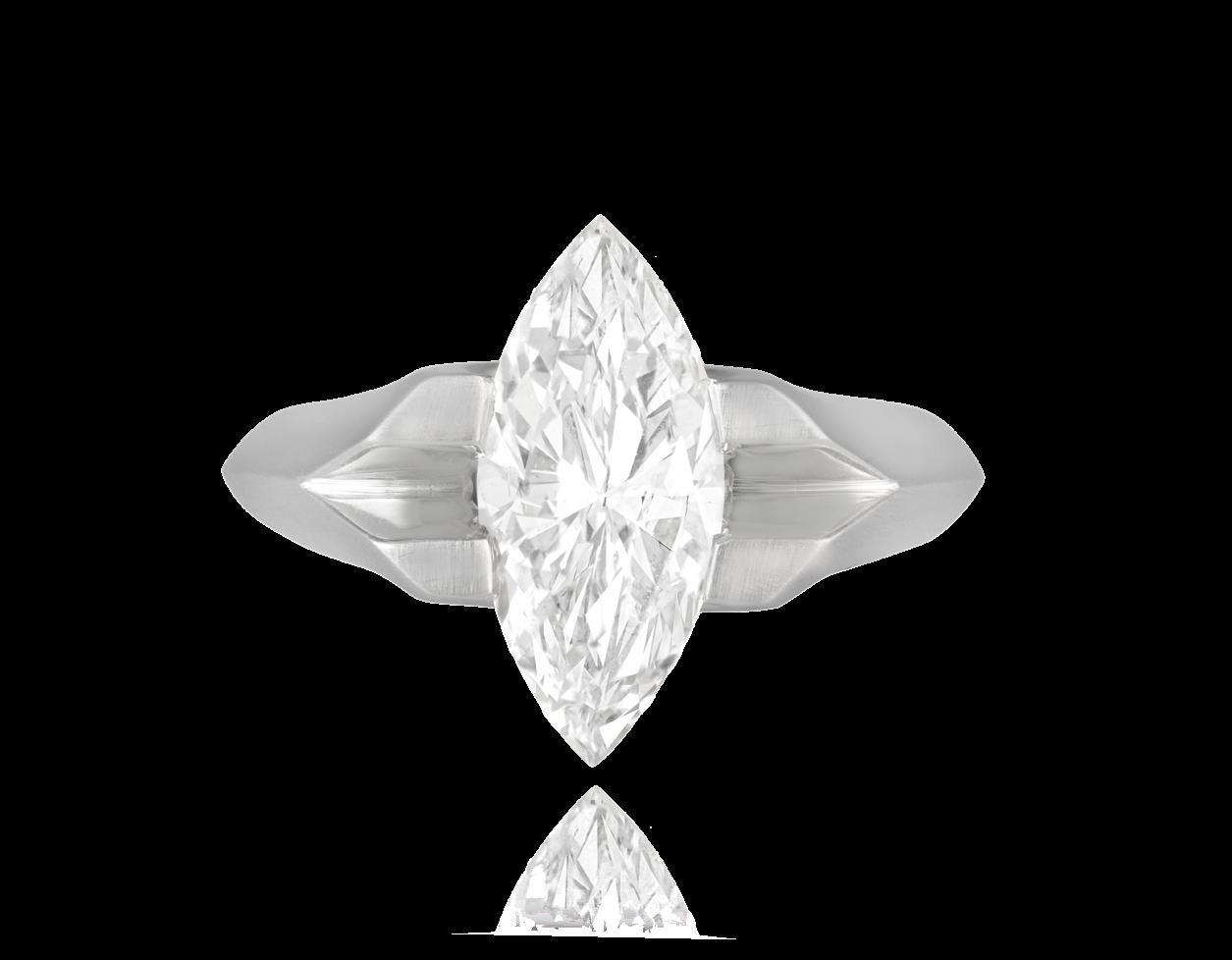
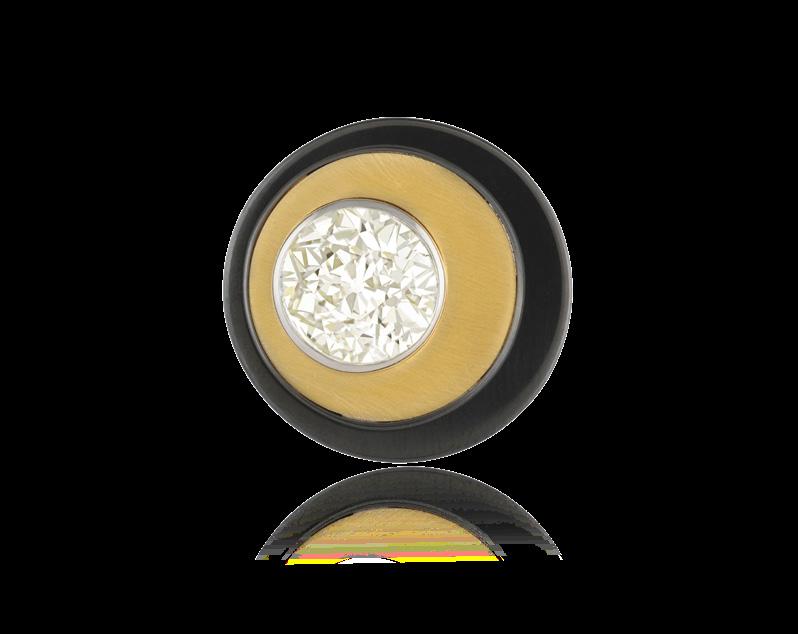
The circular-shaped mount applied with a brushed finish, collet-set with an old European-cut diamond weighing 4.58cts, within an asymmetrical zircon sur round, mounted in 18K gold and zircon, signed Langi, Italian registry mark, ring size M
€ 20,000 - 30,000
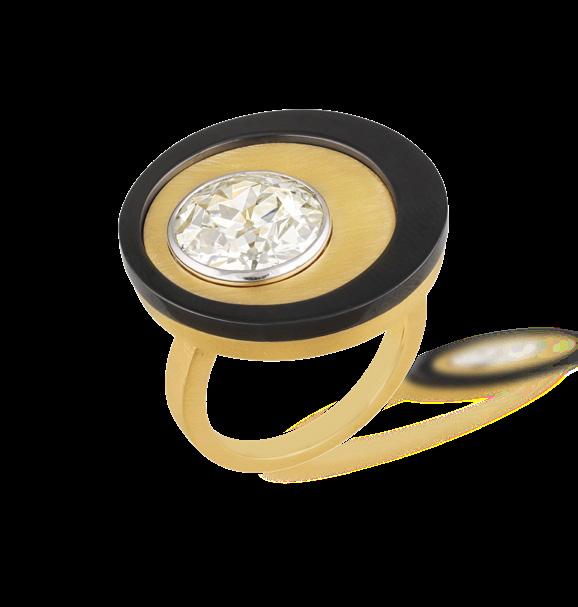

Composed of a continuous line of brilliant-cut diamonds within claw-setting, mounted in 18K yellow gold, diamonds approximately 12.50cts total, length 18.2cm
€ 12,000 - 18,000
Set with a series of baguette-cut diamonds to the front, between raised polished borders, mounted in 18K white gold, diamonds approximately 1.50cts total, with maker’s mark, ring size approx. N
€ 1,800 - 2,200
205
Of circular bombé design, cluster set with circular-cut emeralds, rubies and sapphires, to a mount of wire-design, mounted in 14K gold, maker’s mark ‘JH’, Austrian assay marks, ring size I½
€ 1,500 - 2,000
The cut-cornered rectangular emerald weighing 6.25cts, within a double four-claw setting, to pear and brilliant-cut diamond surround, to a trifurcated mounts with ropetwist detailing, mounted in 18K gold, diamonds approximately 3.50cts total, with velvet case, ring size H
€ 5,000 - 6,000
Accompanied by a report from Guild Gemological Laboratory, stating that the emerald weighing 6.25cts is natural, with minor indications of clarity enhancement. Report number 23187059, dated May 14th 2020.
Each hoop set with brilliant-cut diamonds to the front and interior, mounted in 18K gold white gold, diamonds approximately 5.00cts total, length 5.9cm
€ 5,000 - 6,000
The cushion-shaped sapphire weighing approximately 7.20cts, within a four-claw setting, the gallery and shoulders pavé-set with old brilliant and single-cut diamonds, mounted in platinum, diamonds approximately 1.00ct total, French assay marks, ring size K
€ 7,000 - 8,000
Accompanied with a report from GCS laboratory in London, stating that the natural sapphire is of Sri Lankan origin, with no indications of heating. Report no. 5785-1954, dated March 28th 2025.
Each brilliant-cut diamond, within a four-claw setting, mounted in 18K gold, diamonds approximately 1.00ct total, length 5mm
€ 1,200 - 2,800
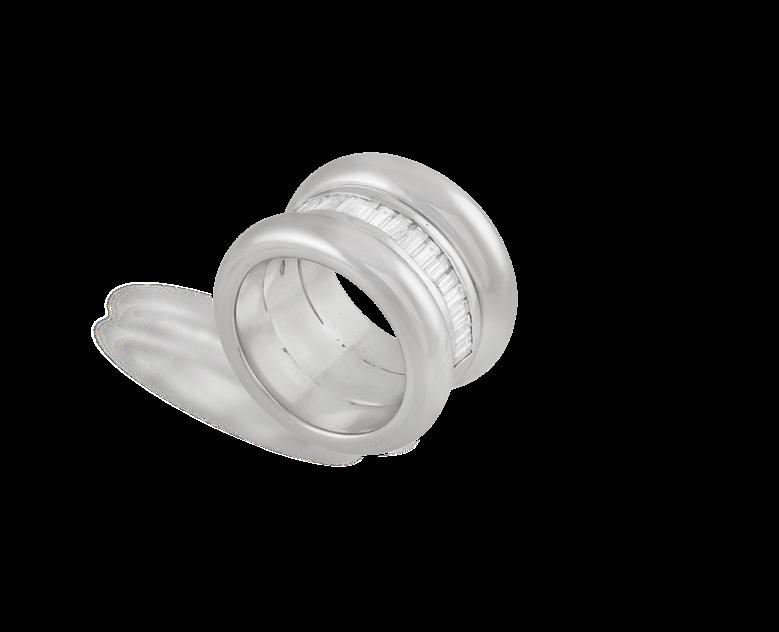
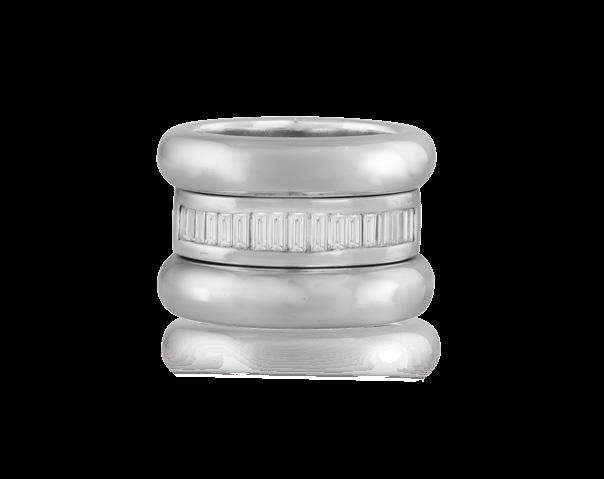
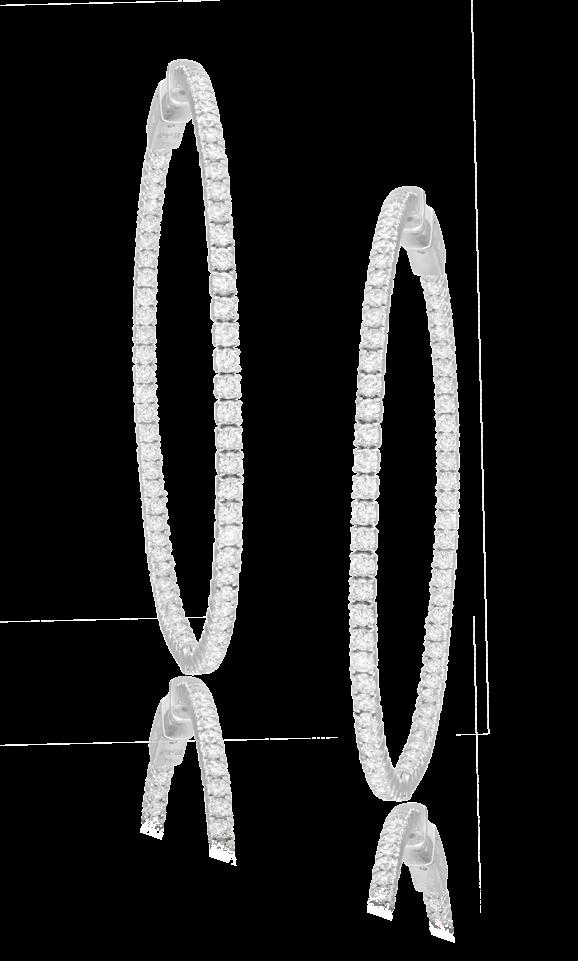
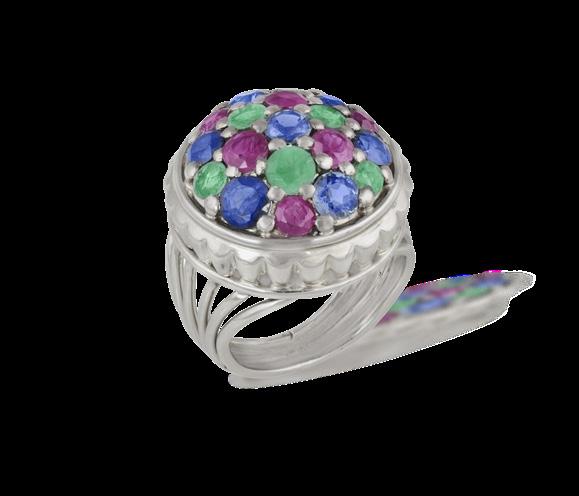
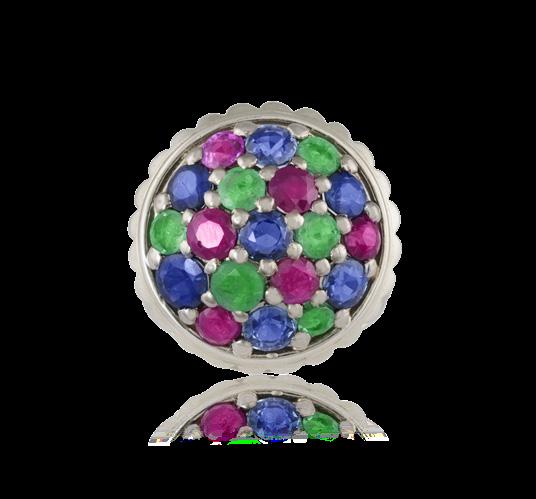
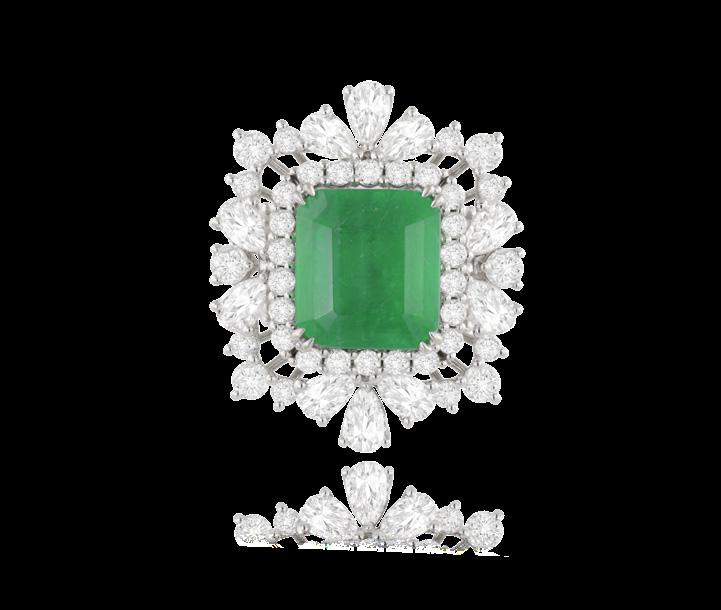
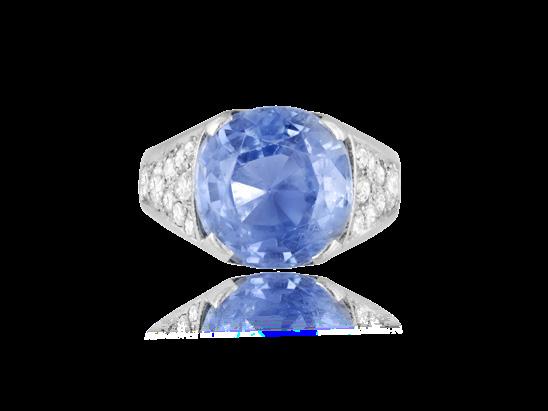
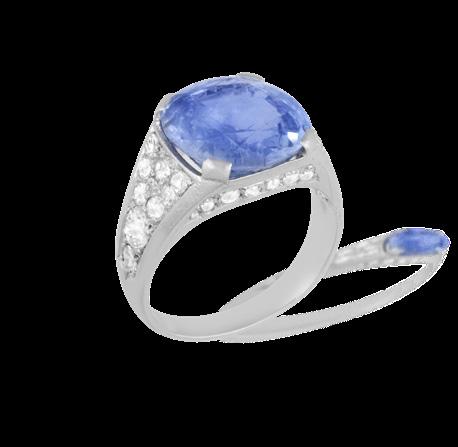

Composed of a continuous row of baguette-cut diamonds at the centre, between borders of brilliant-cut diamonds, mounted in platinum, total diamond carat weight stamped 25.24cts total, numbered, with case from Facet Dublin, length approximately 42.5cm
€ 8,000 - 12,000
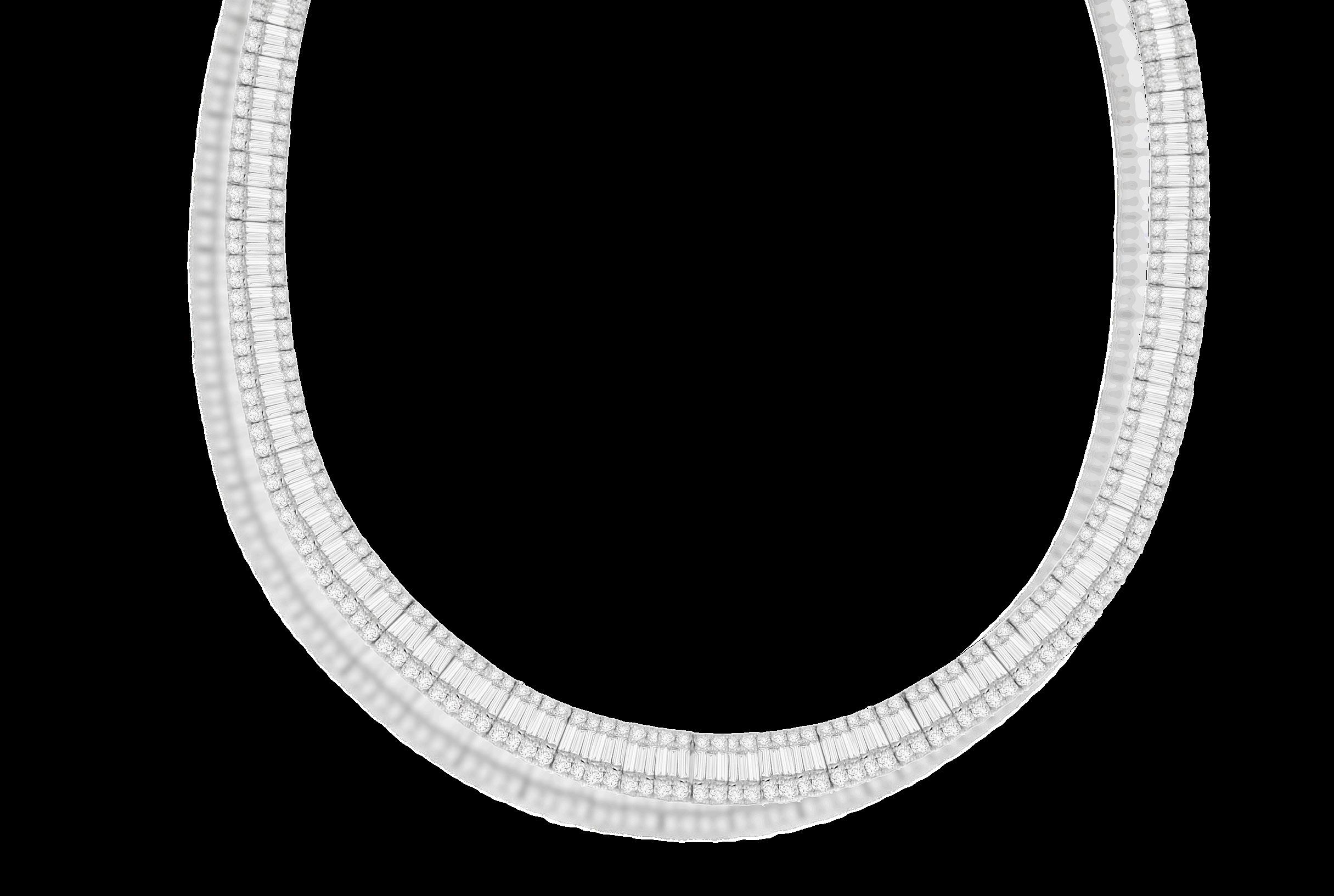
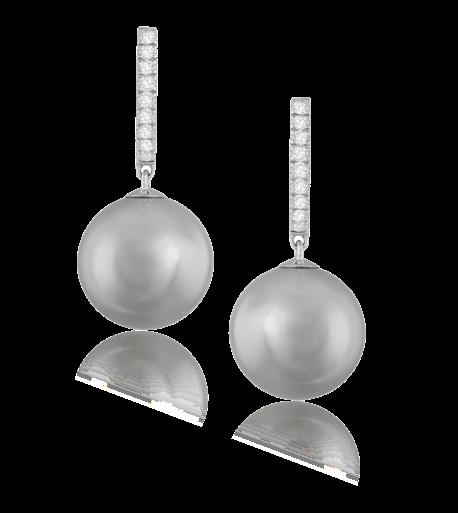
Each hoop set with brilliant-cut diamonds to the front, suspending a roundshaped cultured pearl of grey tint, mounted in 18K gold, length 3cm
€ 650 - 750

Composed of a continuous row of baguette-cut diamonds at the centre, between borders of brilliant-cut diamonds, mounted in platinum, total diamond carat weight stamped 9.49cts total, numbered, length approximately 18.6cm
€ 4,000 - 6,000
MICHELE DELLA VALLE
AN IMPORTANT GEM-SET AND DIAMOND CLIP BROOCH
Designed as a rose tied together with a bundle of wheat, set with circular-cut pink spinels, yellow sapphires, tsavorite garnets, brilliant-cut diamonds and reverse-set black spinels, mounted in 18K yellow and white gold, signed Michele della Valle, with maker’s mark, numbered, pink spinels 9.59cts total, yellow sapphires 4.03cts total, diamonds 0.17ct total, with maker’s case, length 10.5cm
€ 12,000 - 18,000
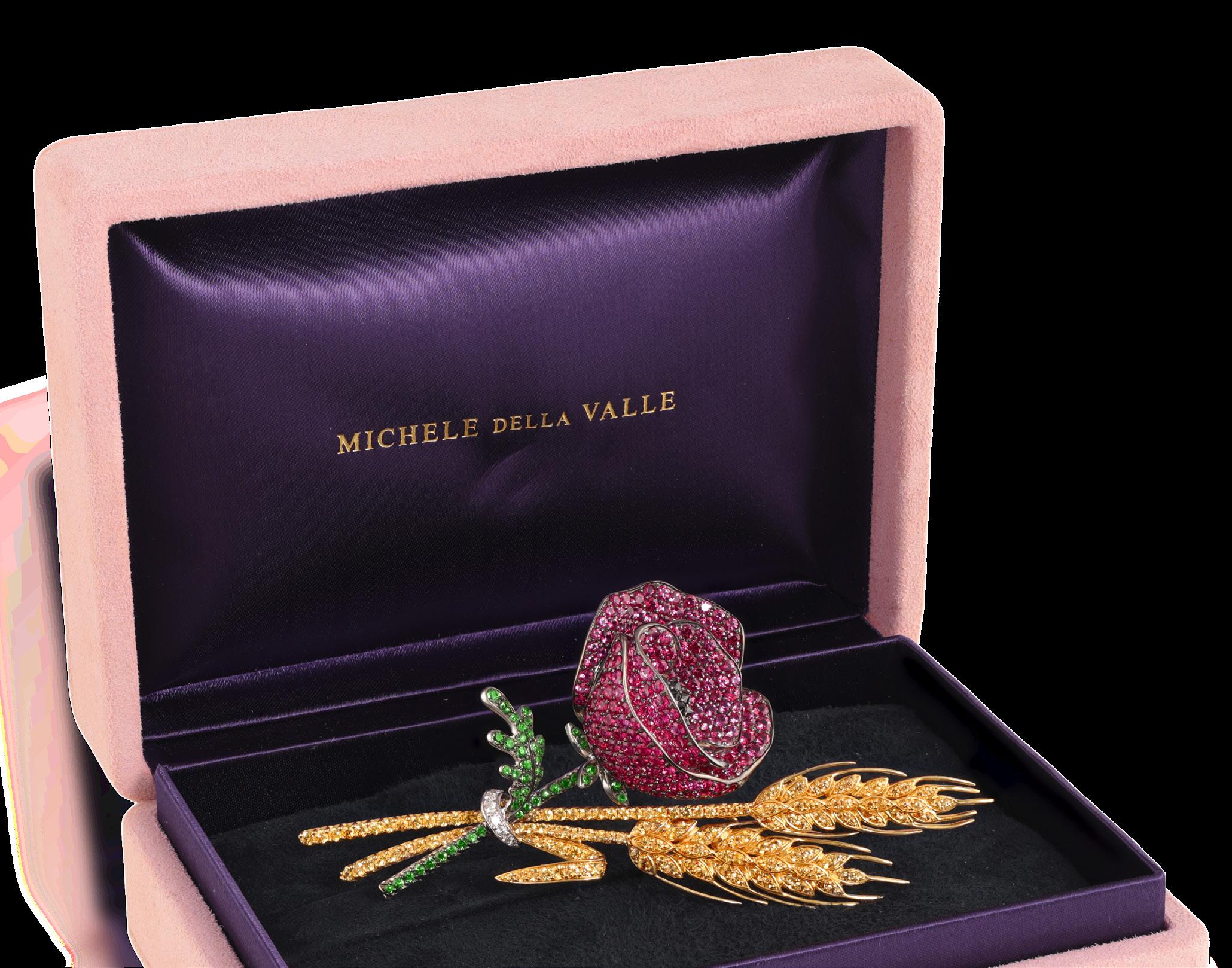
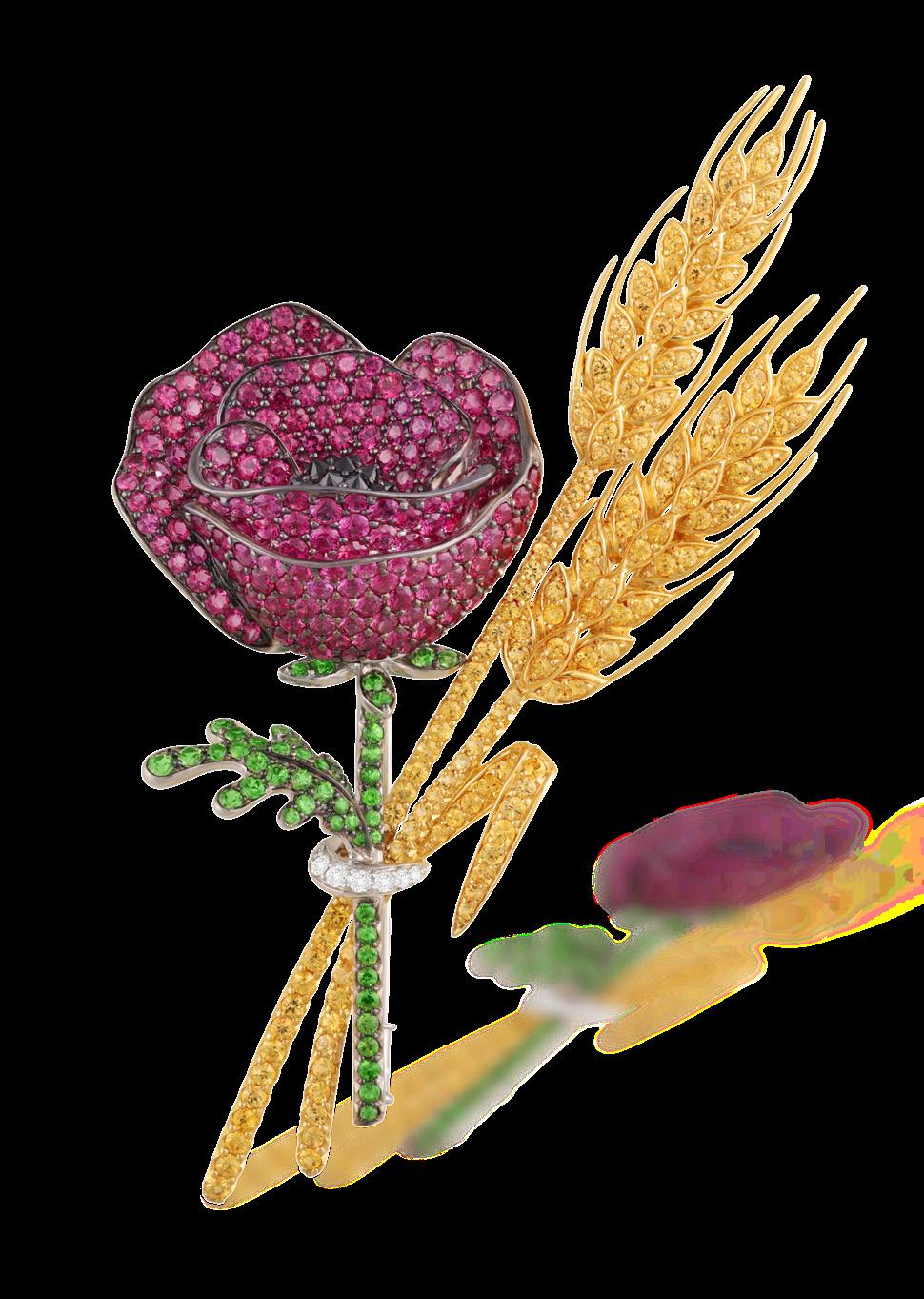
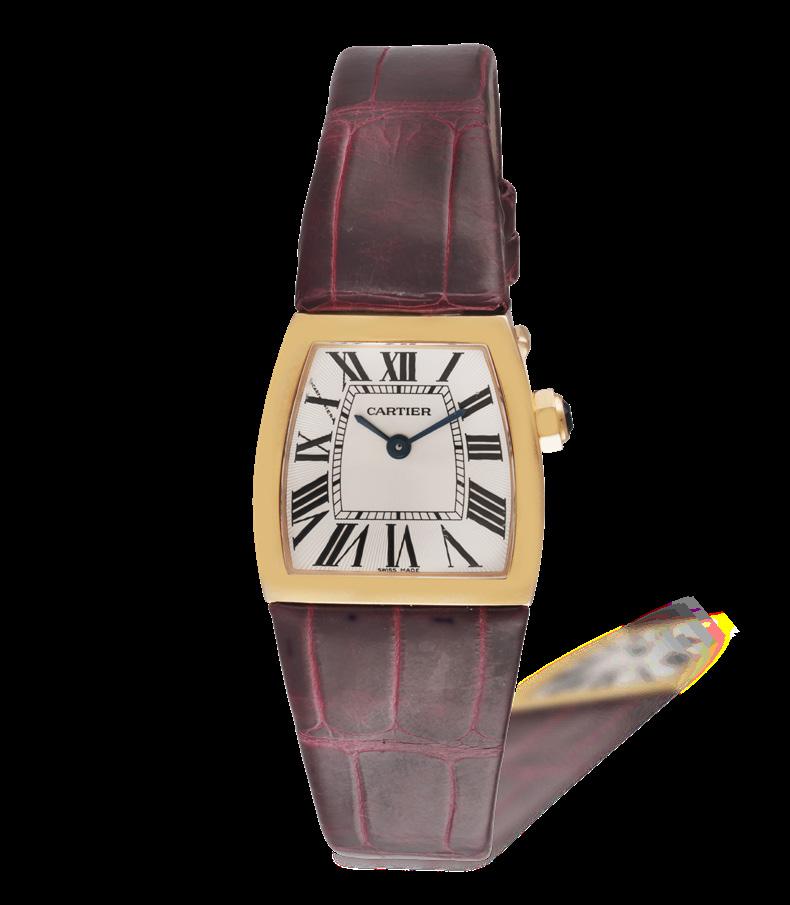
In 2006, Cartier unveiled ‘La Dona’ watch collection as a heartfelt tribute to the legendary Mexican actress and singer, María Félix. The collection, designed to honour her extraordinary legacy as both a style icon and a loyal Cartier client, captures the essence of the woman known to her fans as "La Doña". The La Dona watch, with its distinctive silhouette, tells a fascinating story, one woven from the deep connection between Maria Félix and the legendary jeweller.
This bond dates back to the 1950s when the actress at the height of her fame, became a muse for the Maison. Known for her commanding sense of style and love for bold, statement-making accessories, she frequently turned to Cartier for bespoke creations. It was during this time that her renowned jewellery collection began to take shape, featuring striking pieces like the Snake Necklace and the Crocodile Necklace, two of her most famous Cartier designs.
The crocodile, one of María Félix's favourite animals, played a pivotal role in one of the most memorable stories behind her jewellery. Legend has it that Félix brought her pet crocodile to Cartier's Rue de la Paix Paris boutique, hoping it would inspire the master jewellers to recreate the creature as realistically as possible. The result was a necklace that captured the wild elegance of the reptile, cementing Félix's love for animal-themed designs, a theme that Cartier had long been celebrated for.
When Cartier launched the 'La Dona' watch in 2006, they paid tribute to the iconic relationship between the designer and María Félix, celebrating her fierce and exotic spirit while incor-
Of quartz movement, the silvered guilloche asymmetrical tonneau-shaped dial, with Roman numerals ad inner hours and minute track, blued steel hands, fitted burgundy strap with original gold buckle, faceted blue crown, ref. 2904, case no. 83878MX, case, dial, movement and buckle signed, with certificate from Cartier in Milan dated December 25th 2007, with manual booklet and maker’s case, case from 20mm to 16mm
€ 2,500 - 3,500
porating subtle nods to the crocodile that Félix so admired. The watch's trapezoidal case echoes the asymmetrical shape of a crocodile's head. Available in both polished metal and vibrant leather strap options, it offers a modern take on the boldness and elegance that defined Félix's personal style. Its classic dial, featuring black Roman numerals and blue swordshaped hands, evokes Cartier's signature timeless elegance, while the faceted crown, topped with a blue stone, adds a touch of refinement. The design is both daring and graceful, perfectly capturing the essence of the woman it honours. Although María Félix passed away in 2002, before ‘La Dona’ watches were introduced, it's easy to imagine that she would have appreciated the watch's bold yet refined design. Today, the pieces she cherished, like her famous Snake and Crocodile Necklaces, live on in Cartier's official heritage collection, frequently displayed in exhibitions around the world. ‘La Dona’ watch collection, like these iconic pieces, serves as a lasting testament to María Félix's legacy, her love for the extraordinary, and her unique place in both Cartier's history and the world of style.
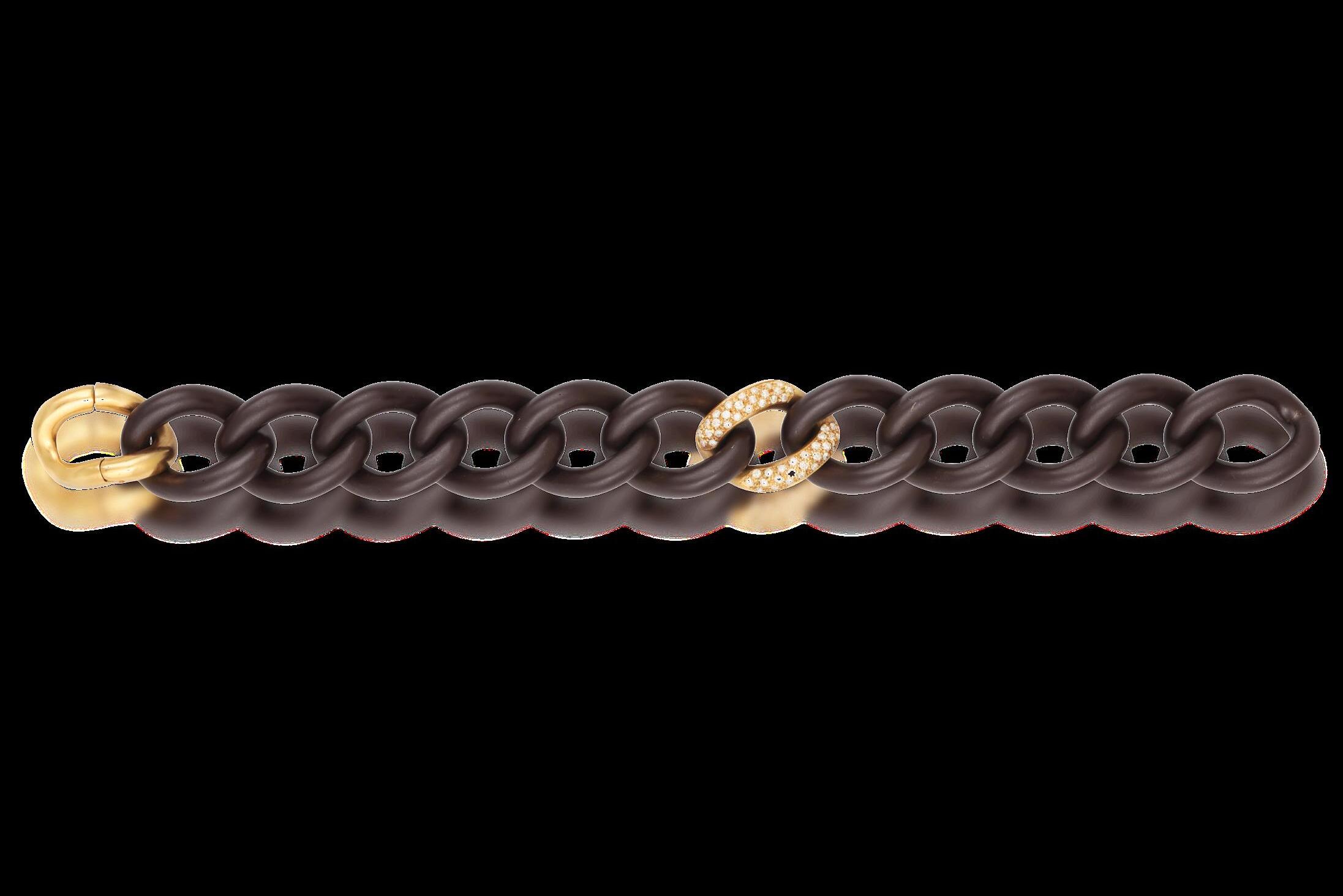
The large polished bronze links centring a similar link pavéset with brilliant-cut diamonds throughout, finishing with a similar polished gold link for clasp, mounted in 18K gold, Italian registry mark, length 21.6cm
€ 1,000 - 1,500
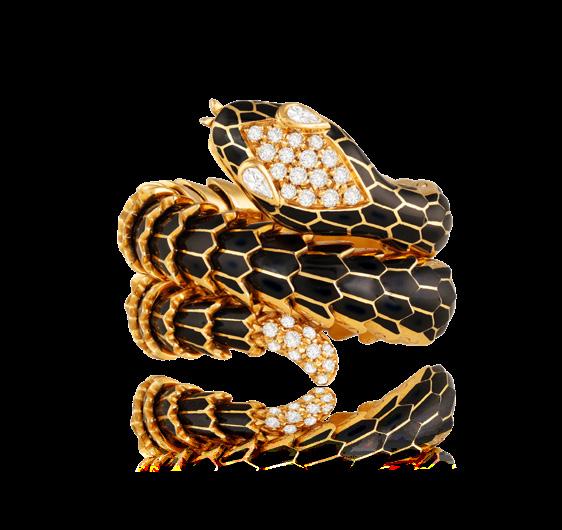
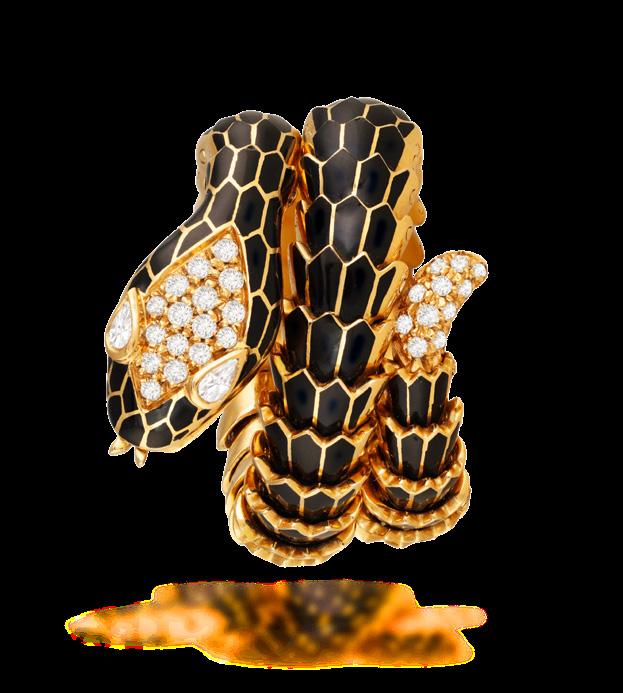
CARLO LUCA DELLA QUERCIA: AN ENAMEL AND DIAMOND SNAKE RING
The flexible ring, designed as a coiled serpent, the scales decorated with black enamel, the eyes with pear-shaped diamonds, the top of the head and tip of the tail embellished with brilliant-cut diamonds, mounted in 18K gold, Italian registry mark , ring size approximately O (extendible)
€ 8,500 - 9,500
The Illario family’s legacy in the world of fine jewellery spans over a century, beginning in 1920 with brothers Carlo, Vincenzo, and Luigi Illario. Originating from the small town of Valenza, just north-west of Milan, Italy, the three brothers founded their eponymous workshop, quickly earning a reputation for exceptional craftsmanship, and catching the attention of some of Italy’s most prestigious jewellery houses, including Bvlgari, Fasano, and Faraone.
This partnership with Bulgari was particularly fruitful, it was their pioneering work with flexible, snake-inspired designs that led to the development of the iconic Bulgari Serpenti collection, that remains a staple of the roman brand DNA. The company continued to flourish through the 20th century, passed down through generations, with the Illario name becoming synonymous with quality and artistry. By the mid-1990s, the family saw an opportunity to expand their reach, especially in the growing international markets. In
1996, Giovanni Illario, alongside his sons Carlo and Gian Luca, decided to form a new company. This led to a split from the original Società Carlo Illario, resulting in the creation of ‘Società Carlo Luca della Quercia’.
Carlo studied gemmology at the New York University and Gemological Institute of America, bringing technical knowledge and an international outlook. Gian Luca focused on the arts, studying in Milan and London, adding a creative approach to the business.
Today, Società Carlo Luca della Quercia continues to combine traditional craftsmanship with modern design and production. Still based in Valenza, the company draws inspiration from a variety of sources, including original Art Deco designs from the 1920s. Notable collections feature snake-themed jewellery crafted from gold and enamel, often combined with pearls, wood, and pavé-set gemstones, ensuring that the Illario legacy of excellence and innovation endures.
Composed of a series of tubular amber beads with polished gold terminals, with a matching pair of pendent earclips, mounted in 18K gold, both signed Vhernier, Italian registry marks, with maker’s pouch for necklace, necklace length 43.2cm, earrings length 7.2cm
€ 10,000 - 15,000
According to Vhernier, this collection is discontinued due to the scarcity of the amber originating from the Dominican Republic, known to have high quality amber with clear clarity.
Vhernier was founded in 1984 in Valenza, Italy, a town renowned for its long-standing goldsmithing tradition. The company was established with the aim of redefining fine jewellery by blending modern art, sculpture, and architecture, and continues to focus on creating distinctive designs using bold forms and unconventional materials.
Recognised for its sleek, sculptural design language, Vhernier’s pieces are minimalist yet refined, with clean lines, fluid contours, brushed gold, pavé diamonds, and geometric silhouettes forming the core of the brand’s aesthetic. By combining traditional goldsmithing techniques with innovative design practices, each piece is meticulously handcrafted in Italy. The brand is particularly known for its pioneering use of unexpected materials such as titanium, ebony, rock crystal, aluminium, and amber from the Dominican Republic, which are seamlessly integrated with traditional precious metals and gemstones.
Vhernier’s presence extends far beyond its Valenza roots. With flagship boutiques in Milan, Paris, London, New York, and Beverly Hills, the company has established itself as one of the most distinctive voices in contemporary jewellery. In May 2024, the Maison joined the Richemont group, marking a new chapter in its history.
Favoured by royals, Hollywood icons, and collectors alike, Vhernier’s creations have featured on red carpets and exclusive events: notable figures who have worn the brand include Zendaya at the 2020 AAA Arts Awards in New York, and Angelina Jolie at the 16th Rome Film Festival.


MARGHERITA BURGENER A SPINEL, DIAMOND AND TITANIUM LEAF PENDANT/BROOCH
The handmade stylised blue titanium leaf, embellished with a line of graduated circular-cut spinels of various tints at the centre, accented with brilliant-cut diamonds throughout, mounted in 18K gold, silver and titanium, signed Margherita Burgener, with maker’s mark ‘MB’, Italian registry marks, with maker’s case, length 7.9cm
€ 2,000 - 3,000
* This lot is sold without a reserve
219
A MULTI-COLOURED SAPPHIRE AND DIAMOND LINE BRACELET
The single line opposingly set with pear-shaped green, pink, orange, yellow and blue sapphires, between brilliant-cut diamond accents, mounted in 18K rose gold, sapphires approximately 20.00cts total, length 18cm
€ 4,500 - 5,500
221
A MULTI-COLOURED SAPPHIRE RING
Of openwork design, the three hoops set with multi-colour-
218
A PAIR OF GEM-SET AND DIAMOND HOOP EARRINGS
Of swirl design, set with tapered baguette-cut semi-precious stones of various tints, the interior highlighted with a line of brilliant-cut diamonds, to polished gold borders, mounted in 18K gold, length 2.9cm
€ 3,500 - 4,000
220
MICHELE DELLA VALLE. A PAIR OF TSAVORITE AND ENAMEL PENDENT EARRINGS
Each stylised long ribbon bow, pavé-set with circular-cut tsavorite garnets between black enamel borders, mounted in 18K gold, signed Michele della Valle, numbered, with maker’s mark, maker’s pouch, length 6.3cm
€ 3,000 - 5,000
222
A DIAMOND DRESS RING
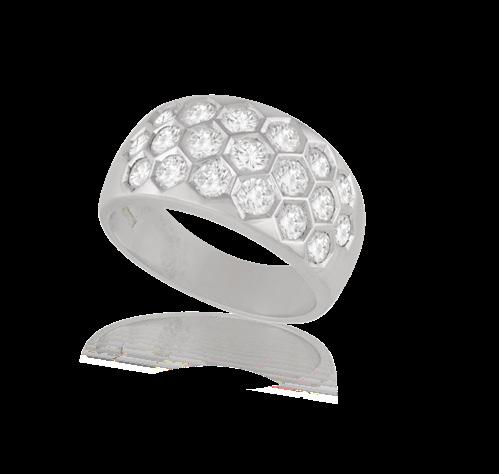
The slightly tapered band set with brilliant-cut diamonds in a honeycomb structure, mounted in 18K white gold, Italian reg istry mark, diamonds approximately 2.30cts total, ring size Q½
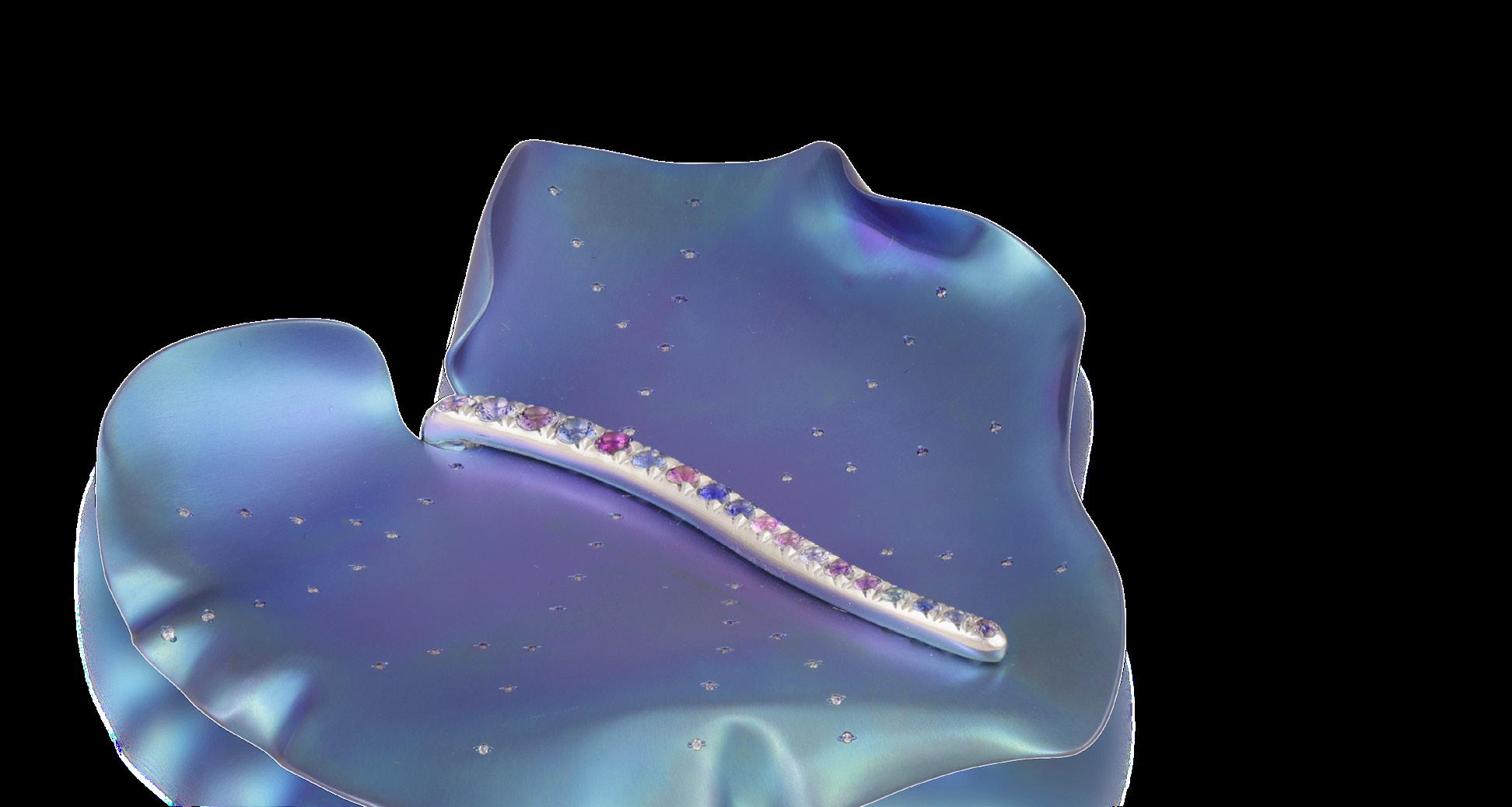
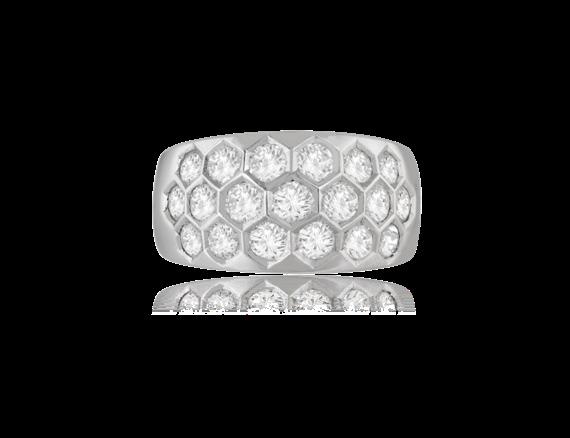
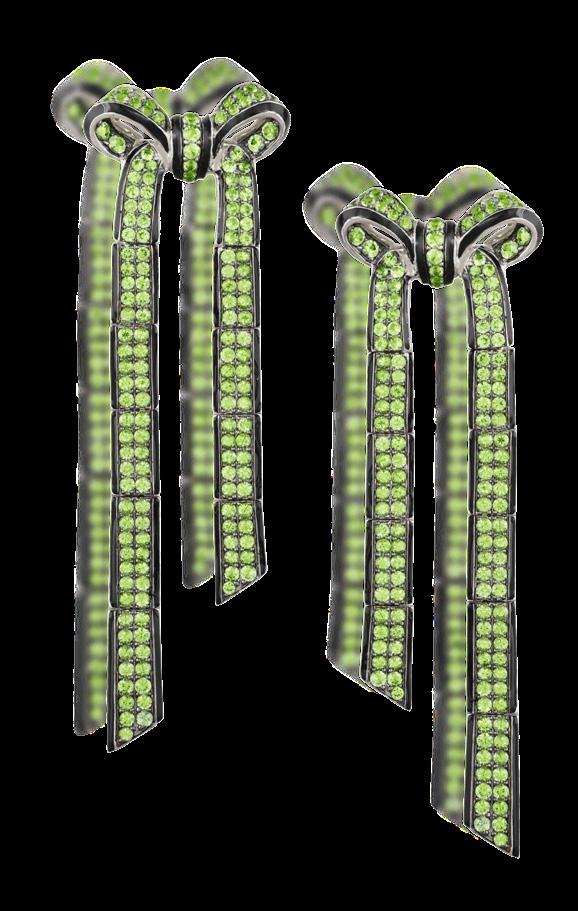


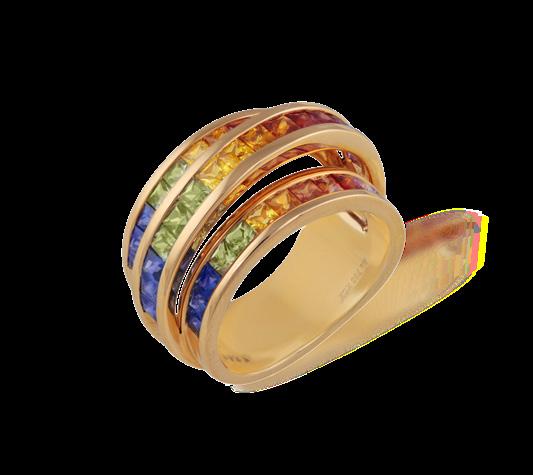
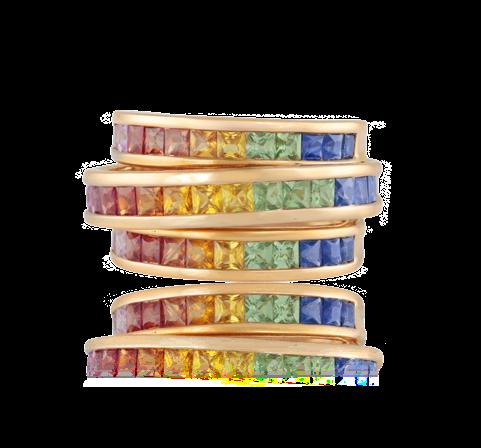
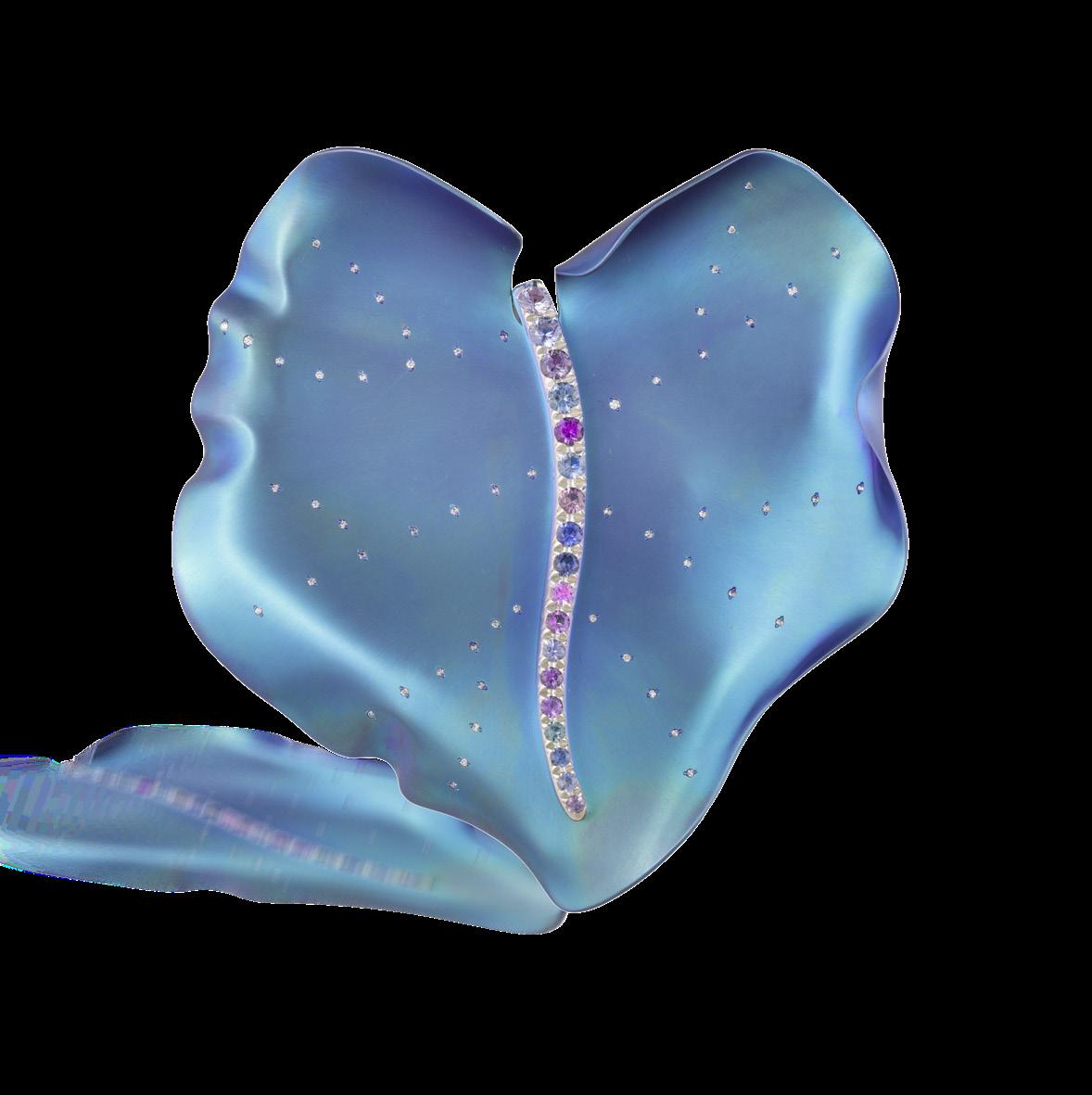
223
HERMÈS. A DIAMOND ‘CHAÎNE D’ANCRE CONTOUR PENDANT’ NECKLACE, CIRCA 2024
The anchor-link chain with toggle clasp, suspending an anchor motif pendant pavéset with brilliant-cut diamonds, mounted in 18K rose gold, signed Hermès, numbered, with maker’s mark, French assay marks, with certificate of authenticity from Hermès and photocopy of receipt, with maker’s case and outer box, size SH, interior circumference 39.2cm
€ 2,500 - 3,500
224
REPOSSI. A DIAMOND ‘BERBERE’ PENDANT NECKLACE, CIRCA 2024
Composed of a polished gold hoop, connected with a brilliant-cut diamond bar, suspending from a double trace-link chain on one side and a single similarly-link chain on the other, mounted in 18K rose gold, signed Repossi, numbered, Italian registry mark, with card of authenticity from Repossi and copy of receipt, with maker’s case and outer box, chain length 47.8cm
€ 1,800 - 2,200
225
REPOSSI. A GOLD ‘ANTIFER’ BRACELET, CIRCA 2024
The polished arched hoop at the centre, suspending from a cable-link chain, in 18K rose gold, signed Repossi, numbered, Italian registry mark, with card of authenticity from Repossi and photocopy of receipt, with maker’s case and outer box, length 17.2cm
€ 800 - 1,200

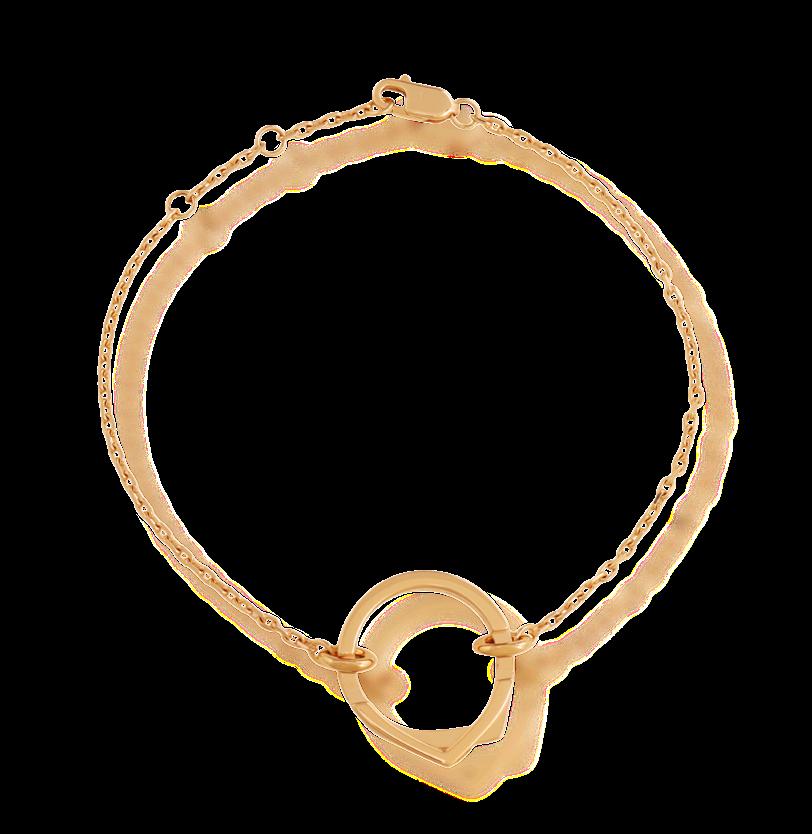
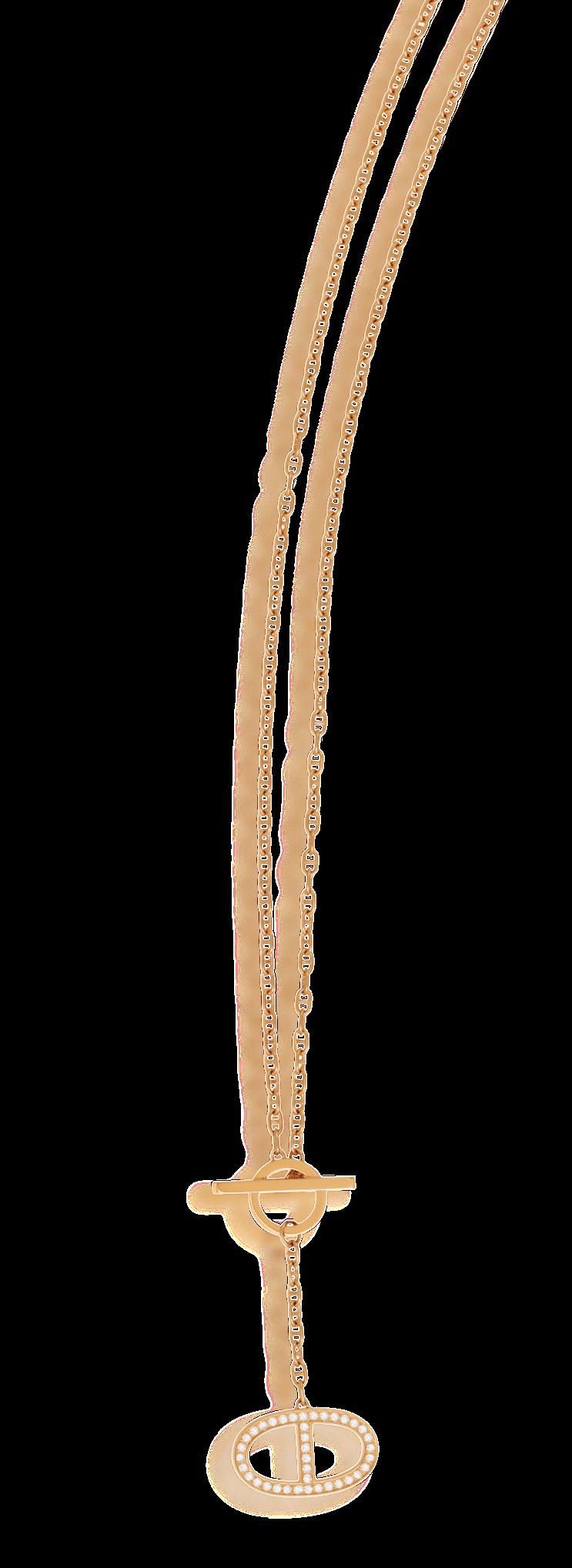
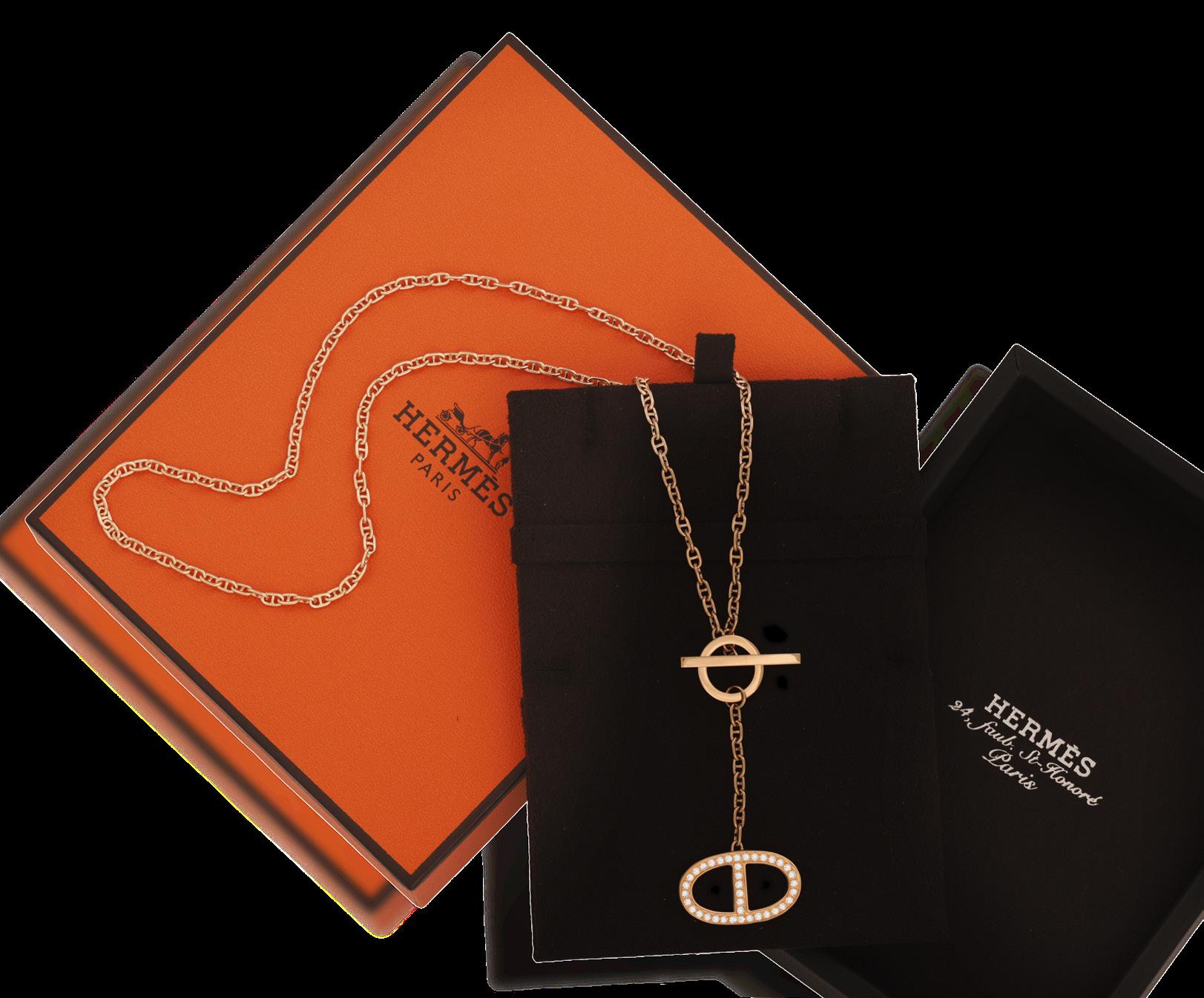
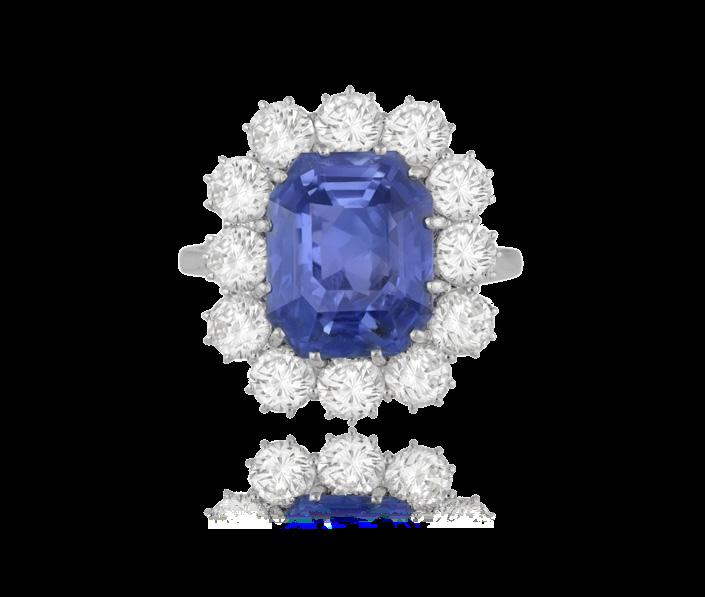
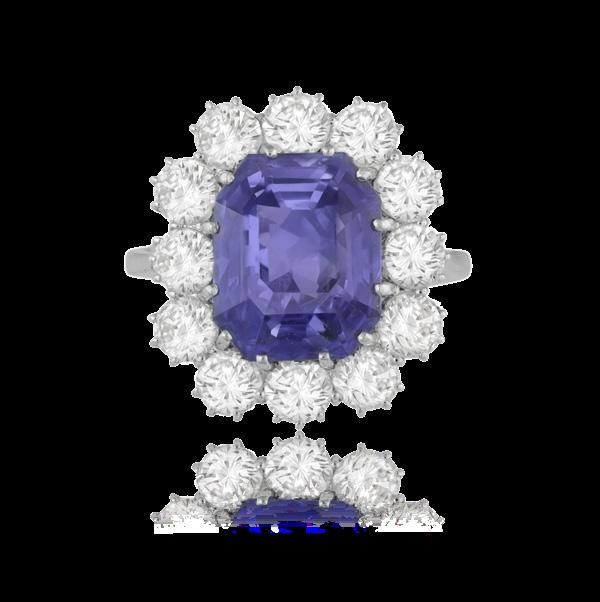
The cut-cornered rectangular sapphire weighing 6.29cts, within a multiple-claw setting, to a brilliant-cut diamond surround, mounted in 18K gold, diamonds approximately 1.70cts, ring size K½
€ 15,000 - 20,000
Accompanied by a report from GRS laboratory in Switzerland, stating that the natural sapphire, weighing 6.29cts, is of Sri Lankan origin, no indication of thermal treatment, colour changing from blue (daylight) to purple-pink (incandescent light). Report number GRS2023-097522, dated September 21st 2023.
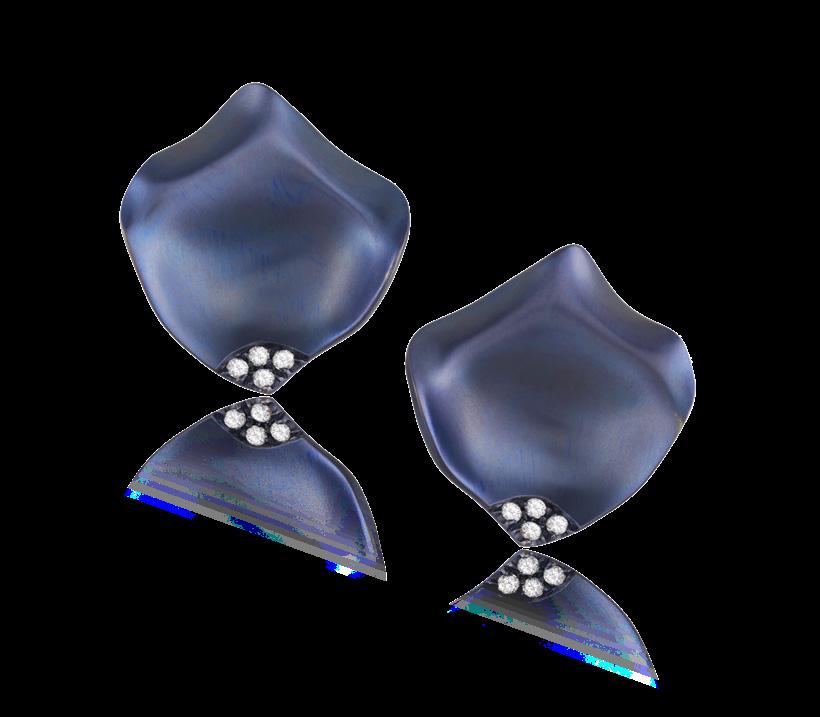
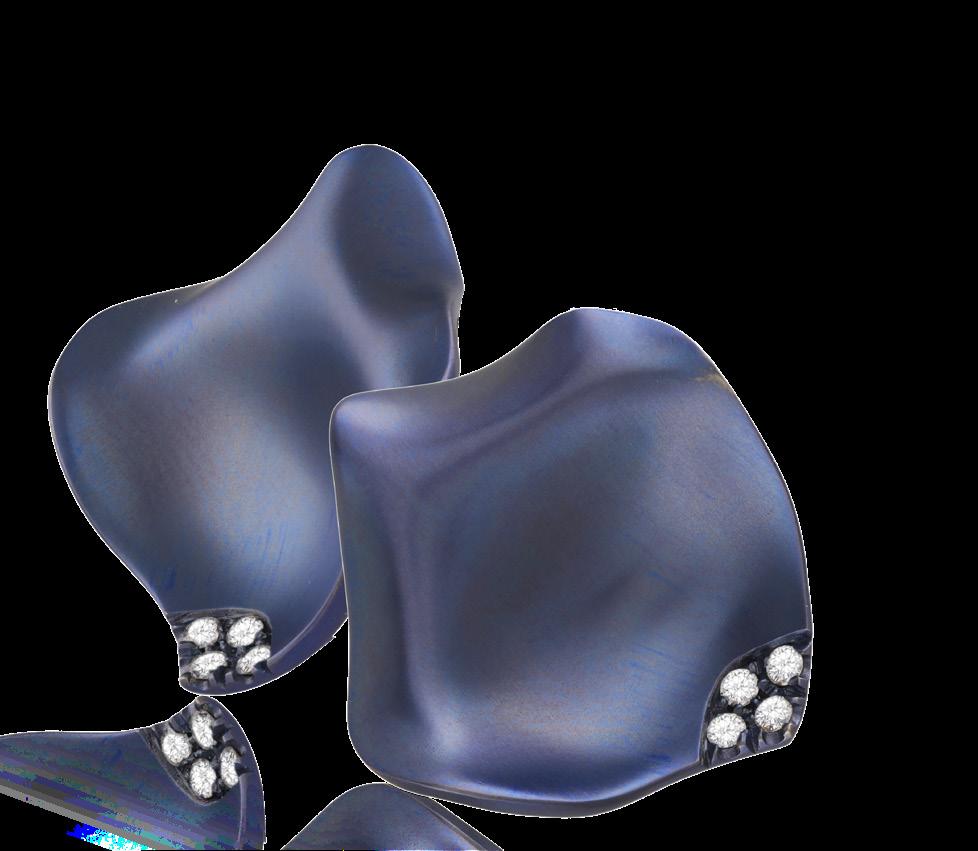
Each designed as an undulating petal, accented with brilliant-cut diamonds, mounted in 18K gold and puplish-blue titanium, signed Margherita Burgener, with maker’s mark ‘MB’, Italian registry mark, with maker’s case, length 2.3cm
€ 1,000 - 1,500
228
AN IMPORTANT EMERALD AND DIAMOND BRACELET
Of openwork foliate design, set with a series of rectangular-cut emeralds and brilliant-cut diamonds at the centre, between similarly-cut diamonds, mounted in 18K gold, diamonds approximately 18.00cts total, length 17.8cm
€ 14,000 - 18,000

229

AN EMERALD AND DIAMOND CLUSTER RING, ITALIAN, CIRCA 1960
The cut-cornered square-shaped emerald weighing approximately 1.22cts, within a brilliant-cut diamond double surround, mounted in 18K gold, diamonds approximately 2.00cts total, indistinct Italian registry mark between 1944-1968, ring size Q½
€ 3,000 - 4,000
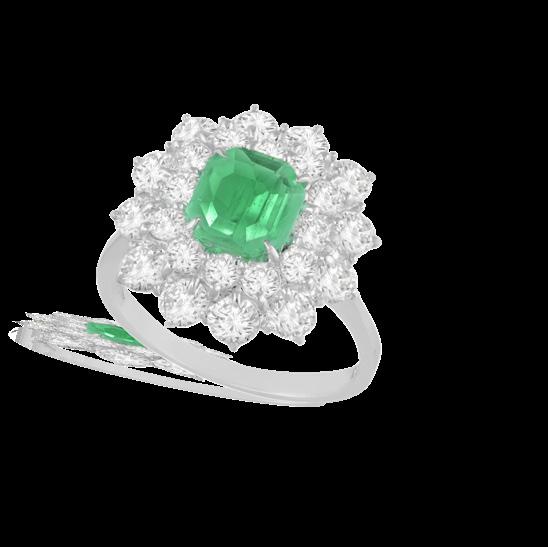
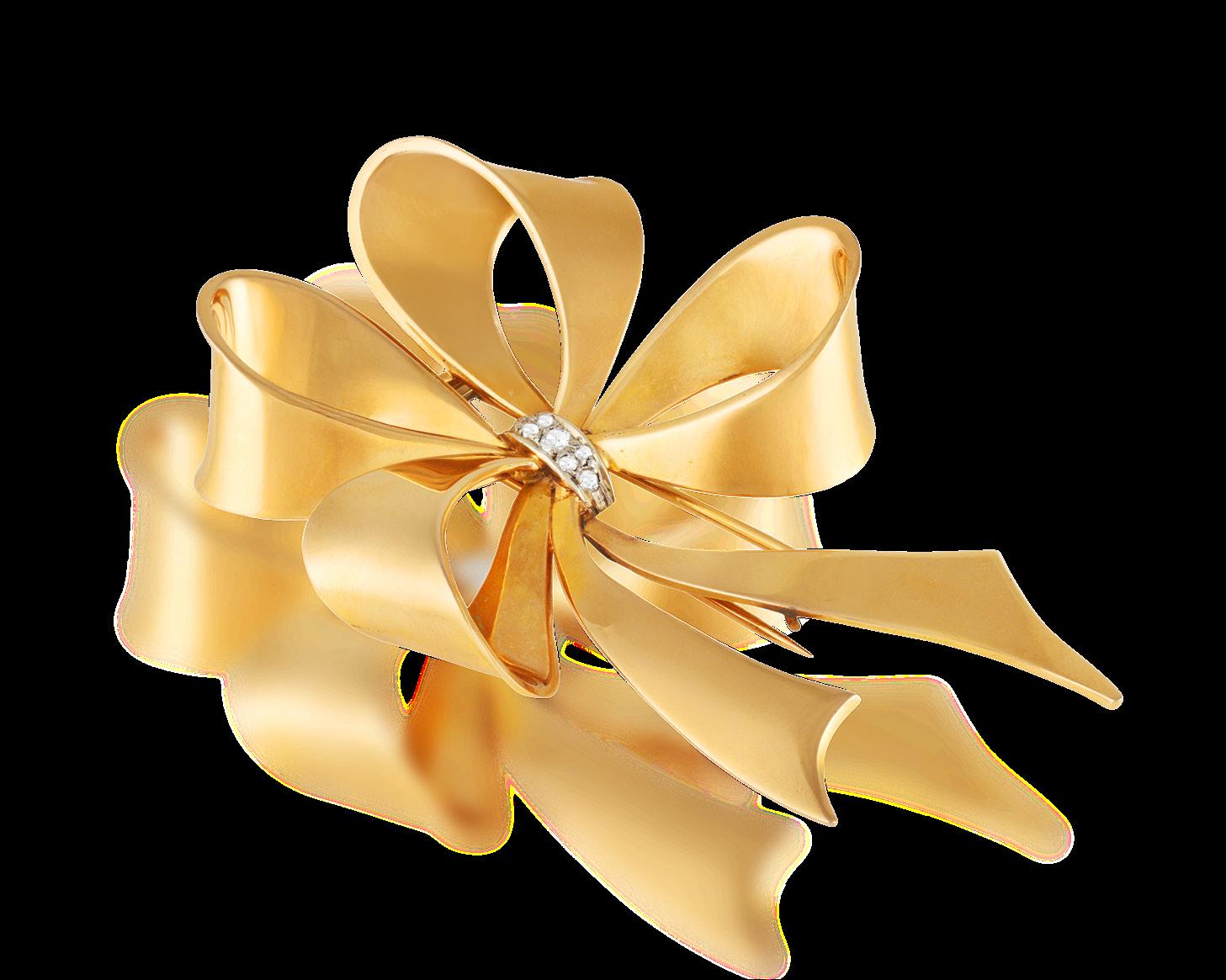
The stylised ribbon bow, centring centring old brilliant and single-cut diamonds, mounted in 18K gold, length 9cm
The fancy-link gold chain, suspending two charms set with an oval-shaped amethyst and carnelian cabochon, to a larger pendant set on either side with a carved amethyst and carnelian scarabs, in 18K gold, French import marks, various lengths 64cm, 67cm and 71cm, principal scarab length (including bale): 4.2cm
€ 5,000 - 6,000
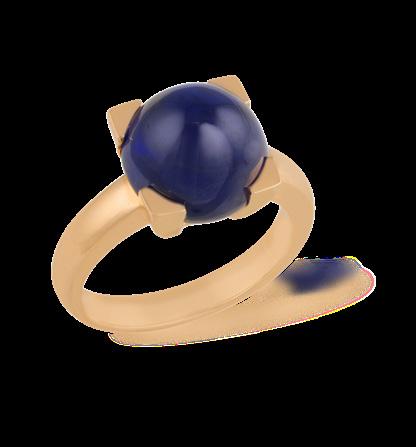
232
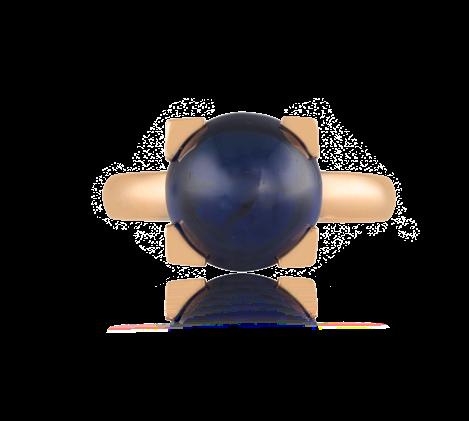
The circular sugarloaf sapphire cabochon, weighing approximately 10.00cts, within a four-claw setting, mounted in 18K rose gold, partial maker’s mark, French assay mark, ring size M
€ 2,500 - 3,000
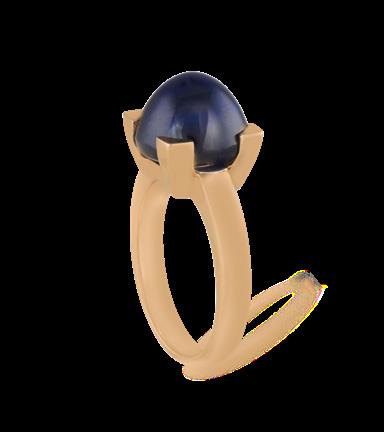
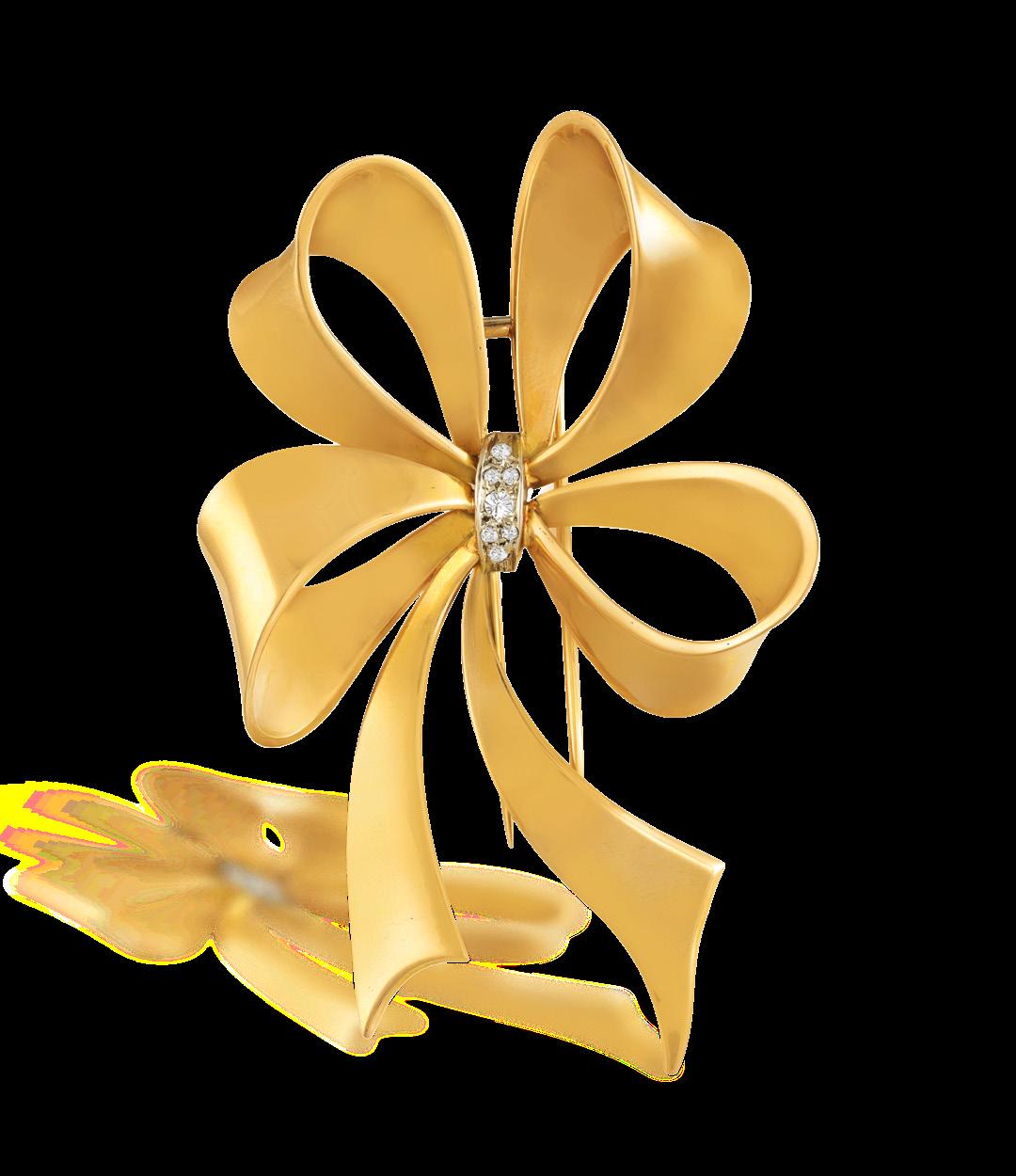
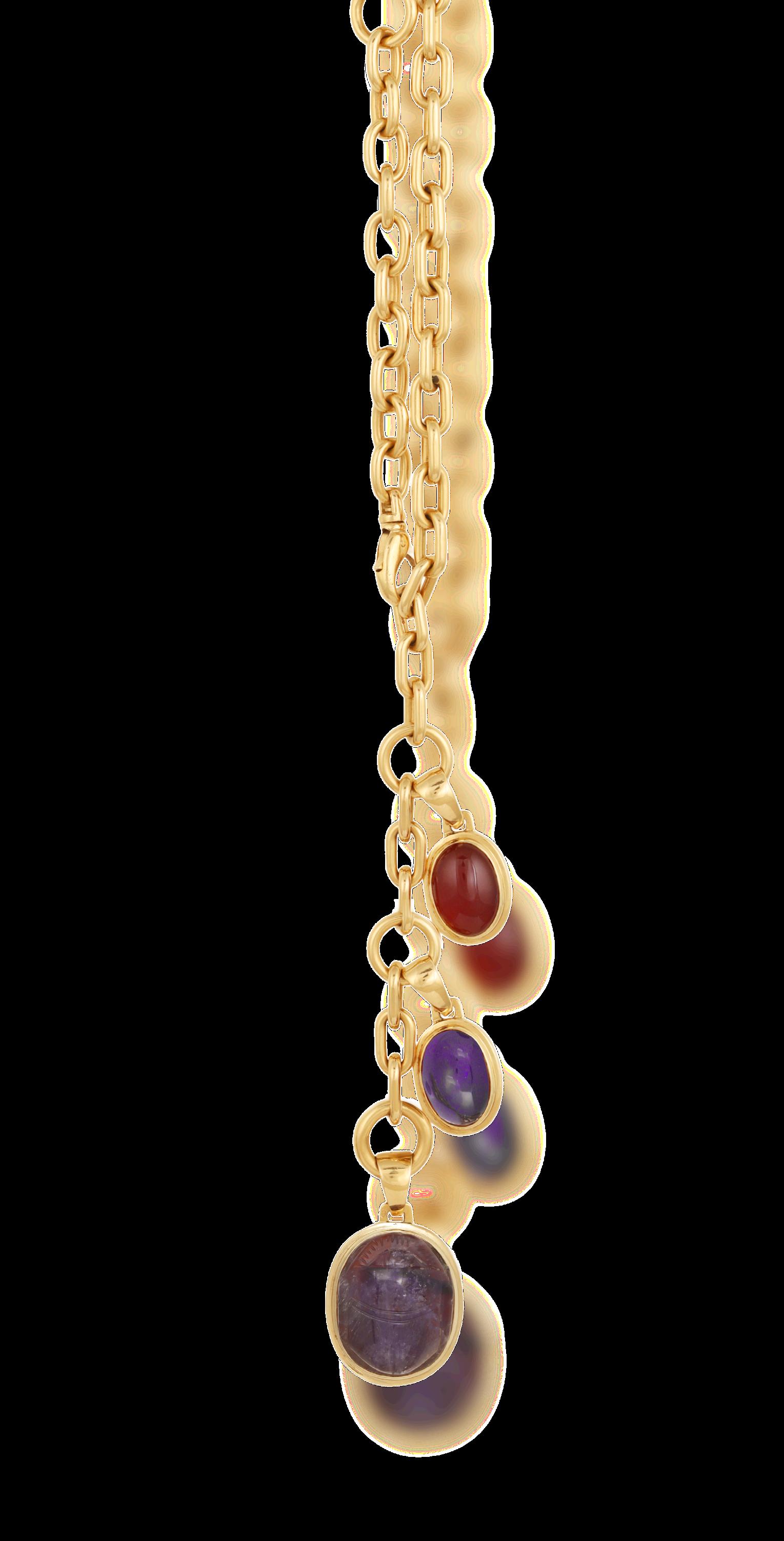
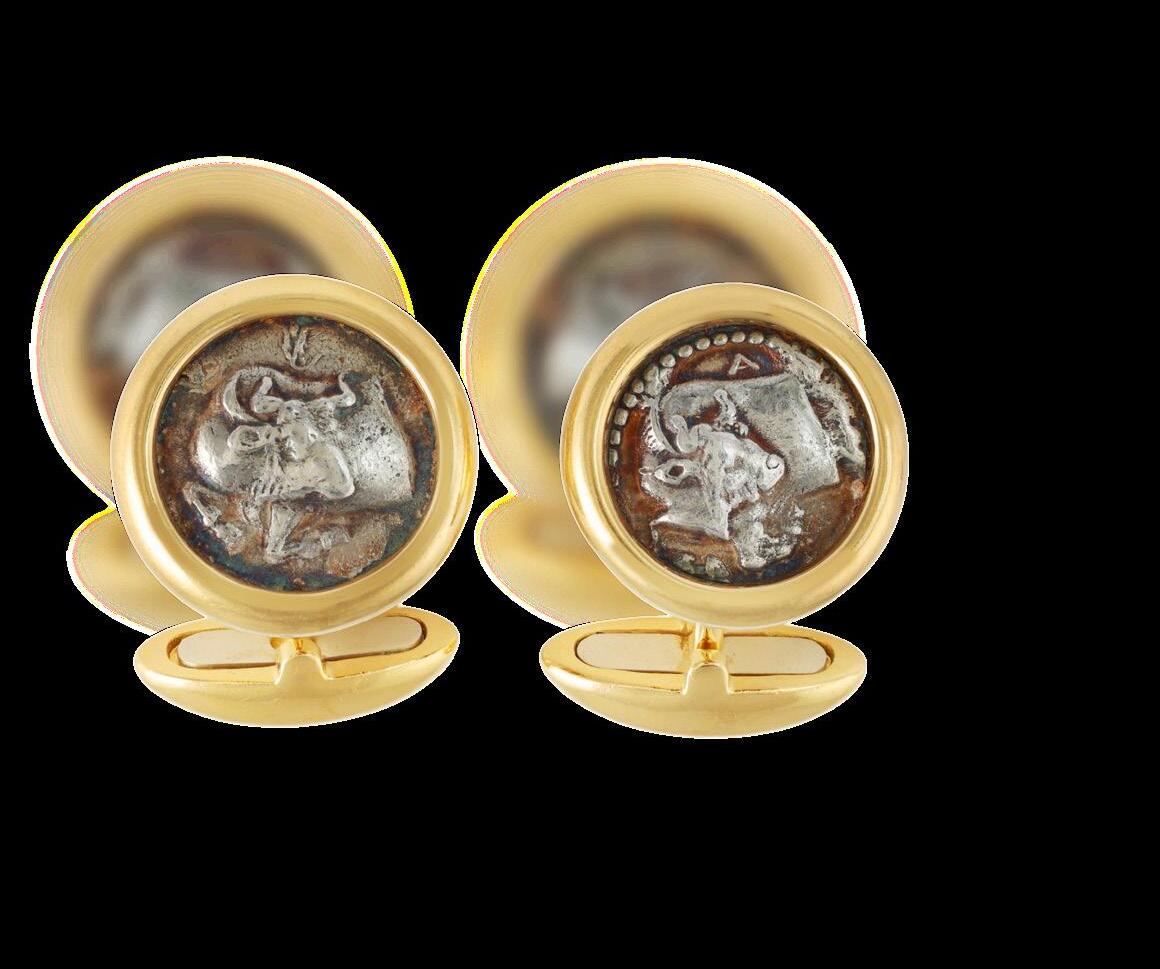
box, length of discs 1.6cm
€ 3,500 - 4,500
235
Each centring a pyramidical hematite, within a lozenge-shaped bi-coloured mount, in 18K gold and steel, signed Bvlgari, Italian registry mark, length 2.2cm
€ 2,000 - 3,000
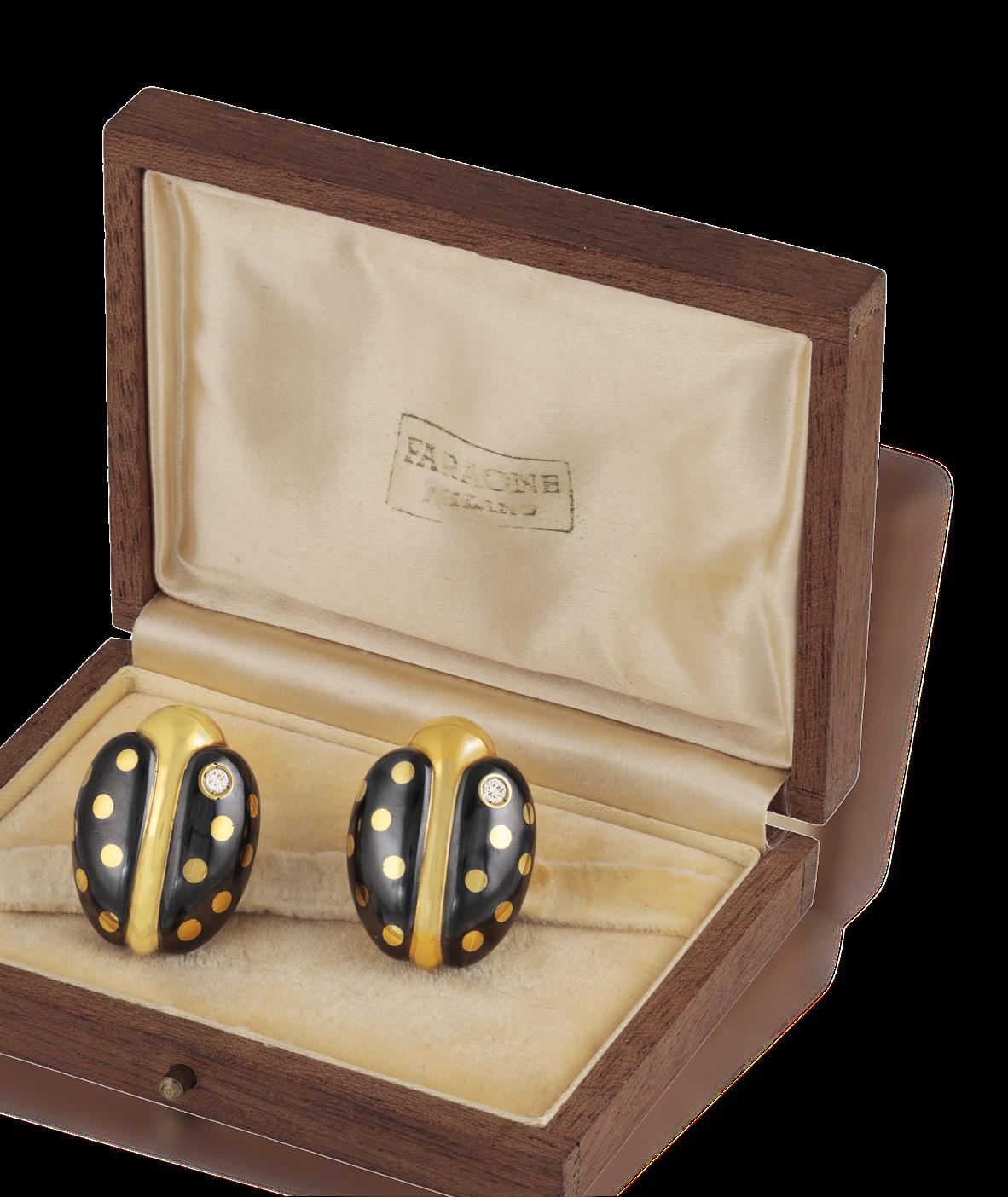
234
Of bow design, the polished ribbon highlighted with brilliant-cut diamonds, mounted in 18K gold, signed Pomellato, Italian registry marks, length 2.1cm
€ 1,800 - 2,200
236
Each designed as a stylised ladybug, the blackened gold wings with polished yellow gold spots, to a brilliant-cut diamond highlight, mounted in 18K bi-coloured gold, signed Faraone, Italian registry mark, with maker’s case, length 2.7cm
€ 2,800 - 3,200
Established in 1860, Faraone has over the course of more than one hundred and fifty years become synonymous with glamour and style. After its beginnings as an art nouveau design house it moved into a more brand conscious mind-set, setting up its first boutique on the Via Montenapoleone in Milan in 1945. From there Faraone built a clientele ranging from Hollywood stars to aristocratic Italian and European royal families. Their unique, timeless designs of precious metals and gemstones solidified their reputation as an exclusive European jewellery house.
In 1960 the prominent Italian family, Settepassi, who had specialised in pearls and precious gems for over four centuries, took over the company. In 1989, they forged a partnership with Tiffany & Co., the longstanding American brand who wanted to break into the continental market. The two remained in business with one another, Faraone helping to build up the Tiffany & Co. presence in Europe, before going their separate ways in 2001. The young and talented Vittoria Bianchi joined the company as the new CEO in 2012, instigating a complete revamp of the brand with a new product philosophy of presenting two brand-new lines of prêt-à-porter jewellery, i Composable and F di Faraone along with the more traditional customised pieces, Sfere di Faraone.

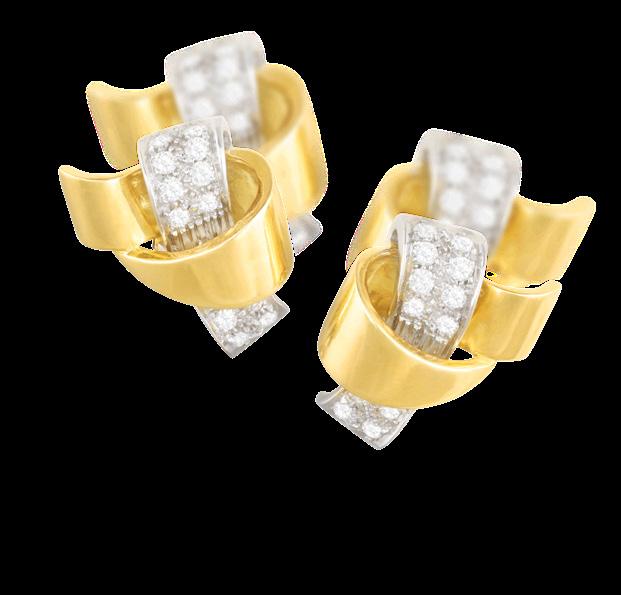
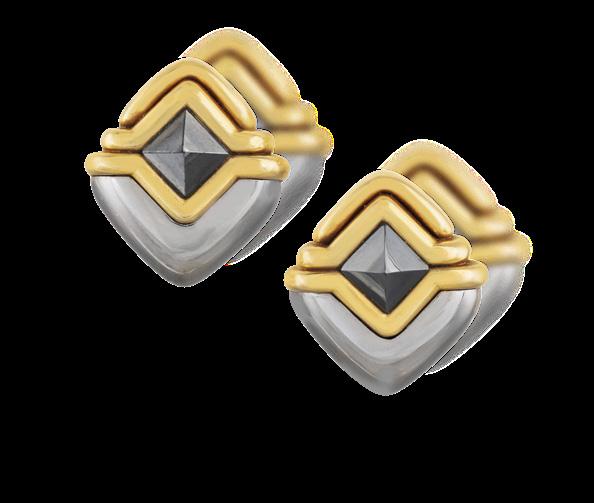
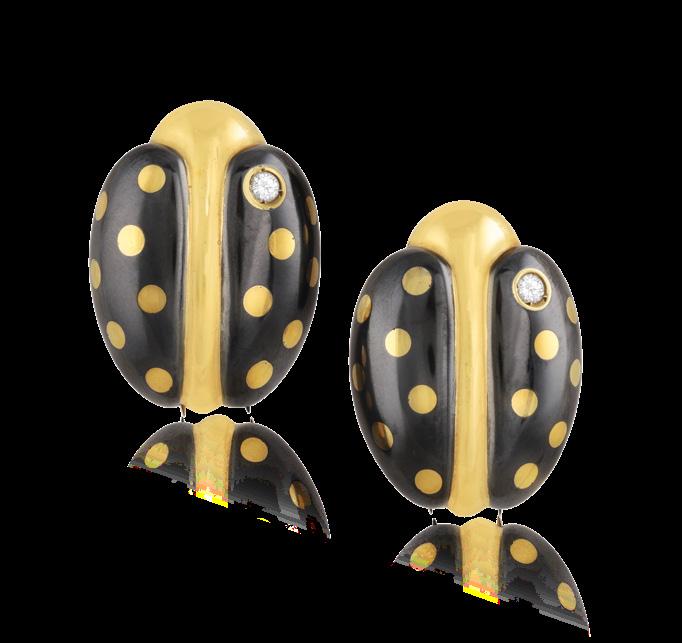
237
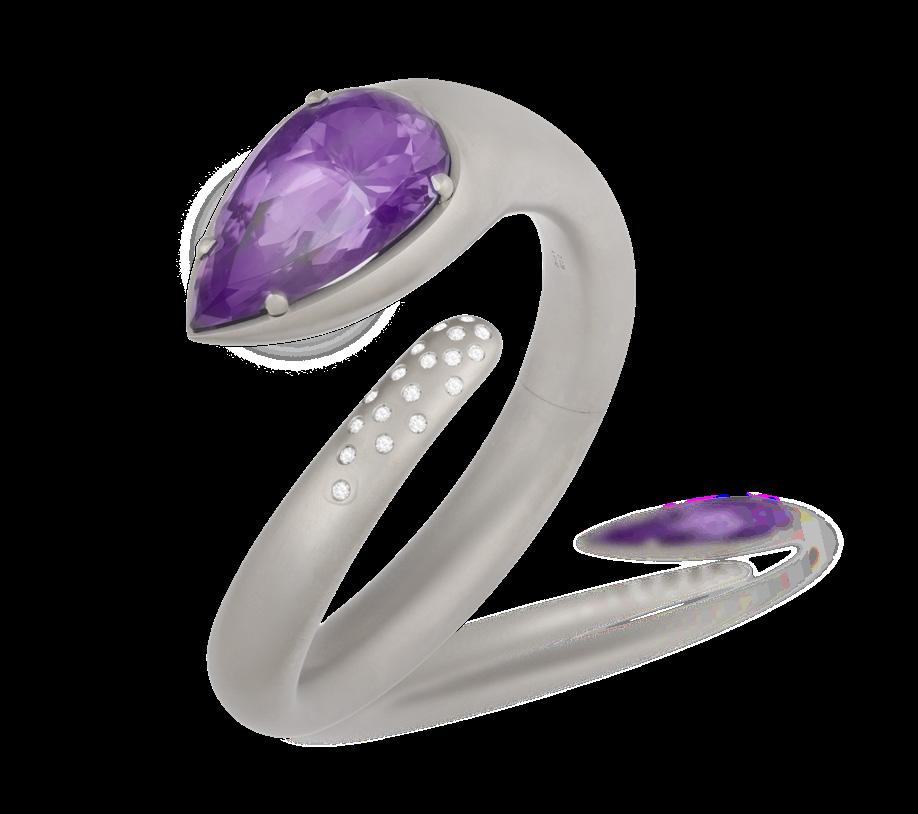
MARGHERITA BURGENER. AN AMETHYST AND DIAMOND SNAKE BANGLE
Of stylised serpent design, the head set with a pear-shaped amethyst weighing 41.40cts within a four-claw setting, the tail embellished with brilliant-cut diamonds, mounted in grey titanium, diamonds 0.38ct total, signed Margherita Burgener, handmade, with maker’s mark and case, inner diameter 5.2cm
€ 2,500 - 3,500
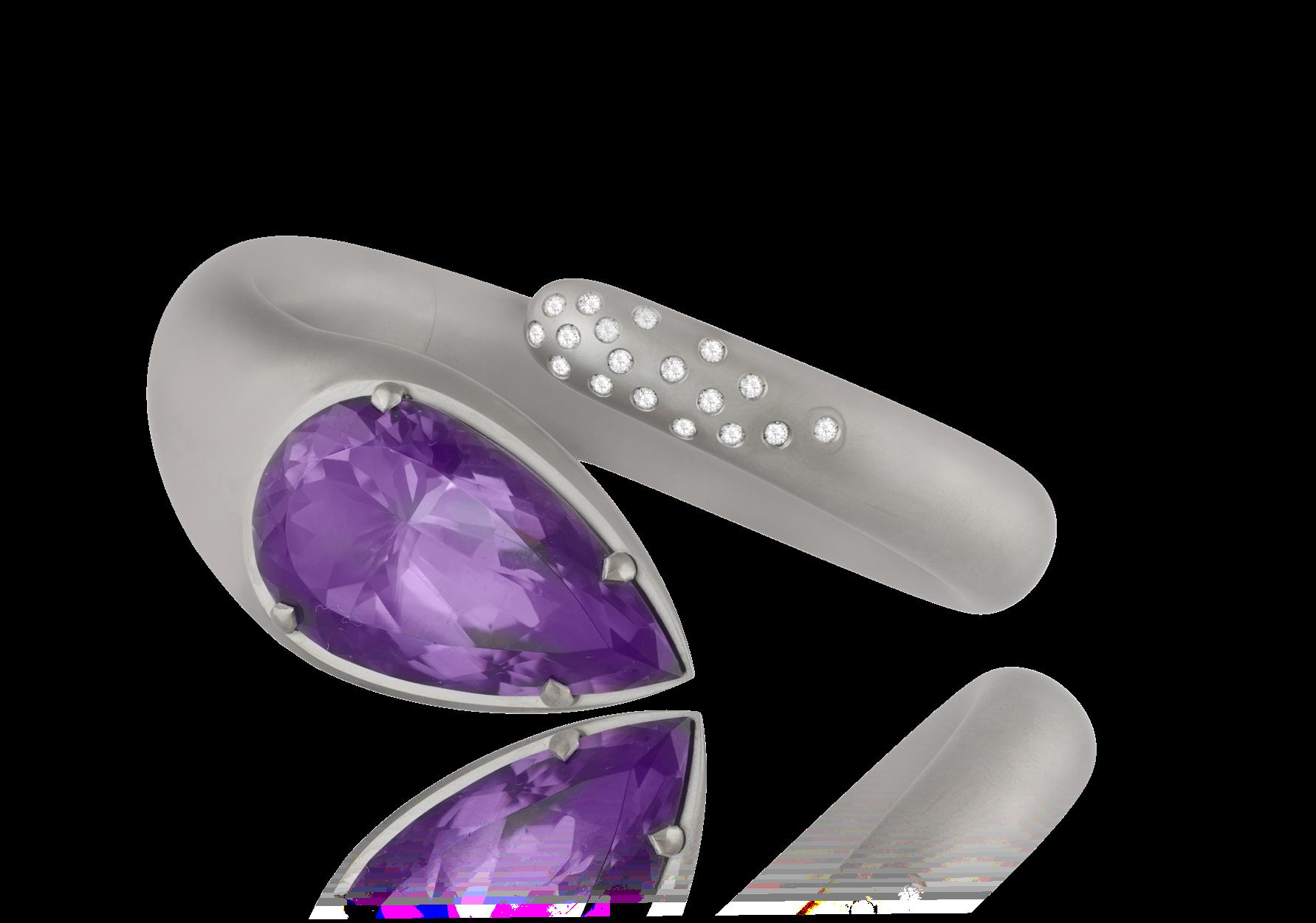
Of openwork articulated design, set throughout with fancy rose-cut sap phires of varied blue hues, accented with brilliant-cut diamonds, in 18K gold, sapphires approximately 50.00cts total, diamonds approximately 0.60ct total, Italian registry mark, length 18cm
€ 5,500 - 6,500
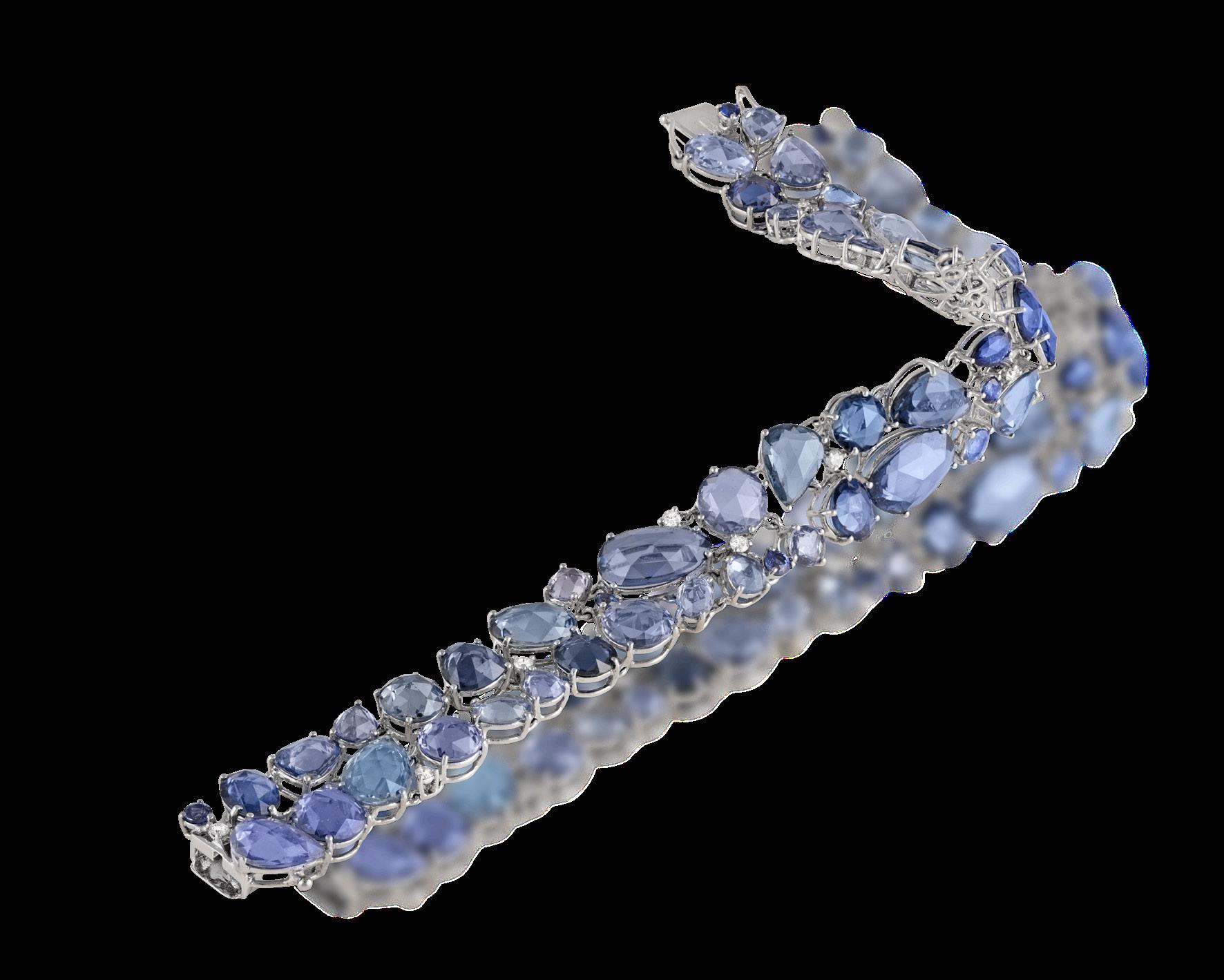
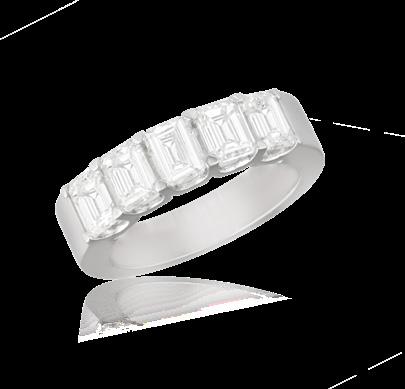
The frontispiece set with cut-cornered emerald-cut diamonds, each weighing approximately 0.50ct, to a plain polished hoop, mounted in 18K gold, Italian registry mark, ring size M
€ 8,000 - 9,000
240
GABRI. A PAIR OF TOPAZ AND DIAMOND PENDENT EARRINGS
Each set with an elongated topaz drop, with rose-cut diamond terminals and old-cut diamond connector, mounted in 18K gold, signed Gabri, with case, length 6.8cm
€ 1,500 - 2,000
242
The collet-set marquise-shaped diamond weighing approximately 1.75cts, between square-cut diamonds shoulders, mounted in 18K gold, French assay mark, signed Abdallah, diamonds approximately 1.20cts total, ring size O
€ 3,000 - 4,000
244
AN AQUAMARINE AND DIAMOND PENDANT
The large briolette aquamarine drop weighing approximately 60.00cts, with brilliant-cut diamond cap, to a brilliant and fancy-cut diamond connectors and graduated baguette-cut diamond bale, mounted in 18K gold, diamonds approximately 1.90cts total, length (including bale): 7.4cm
€ 3,500 - 4,000
241
The oval mount of cluster design, claw-set with an old oval-shaped diamond weighing approximately 1.50cts, framed by brilliant-cut diamonds, mounted in 18K white gold, partial English hallmarks, remaining diamonds approximately 2.20cts total, ring size L
€ 3,000 - 5,000
243
A PAIR OF DIAMOND EARRINGS
Each stylised butterfly, centring a pear-shaped diamond, to a brilliant-cut diamond surround, mounted in 18K gold, diamonds approximately 6.00cts total, length 3.2cm
€ 5,000 - 6,000
245
AN AQUAMARINE AND DIAMOND COCKTAIL RING
The collet-set oval-shaped aquamarine weighing approximately 20.00cts, to an openwork raised mount highlighted with brilliant-cut diamonds, mounted in 18K gold, diamonds approximately 0.50ct total, ring size approximately M
€ 1,800 - 2,200
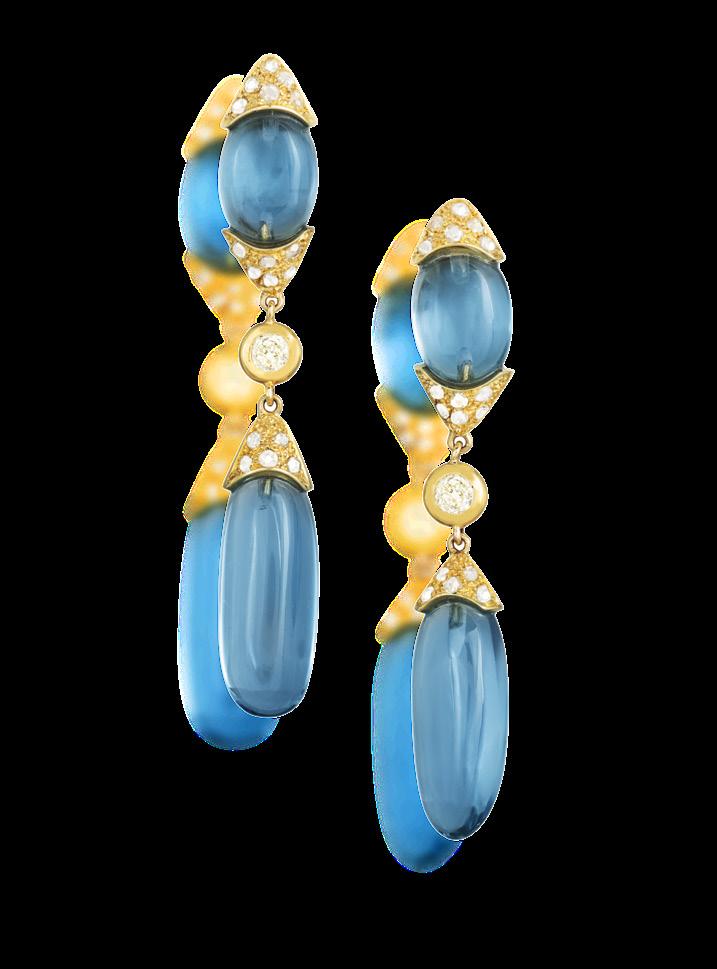
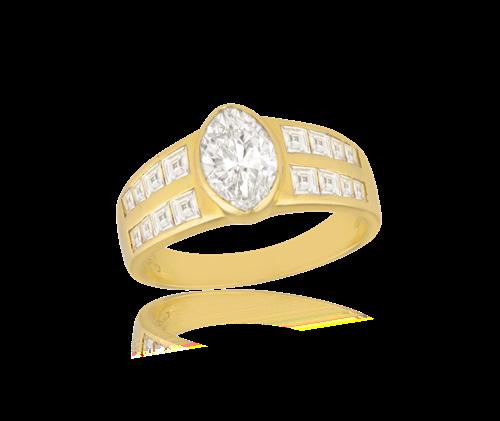
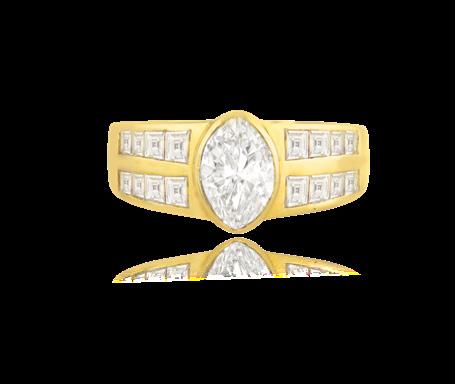
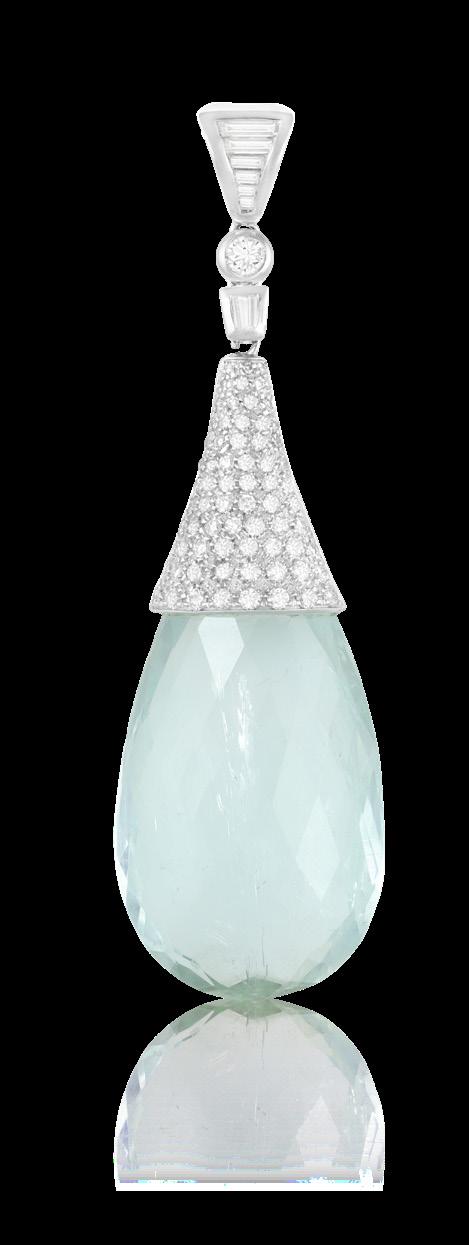

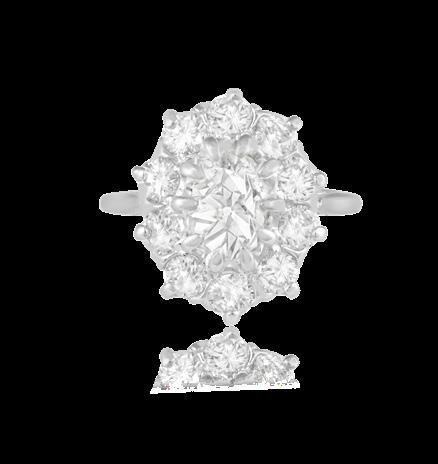
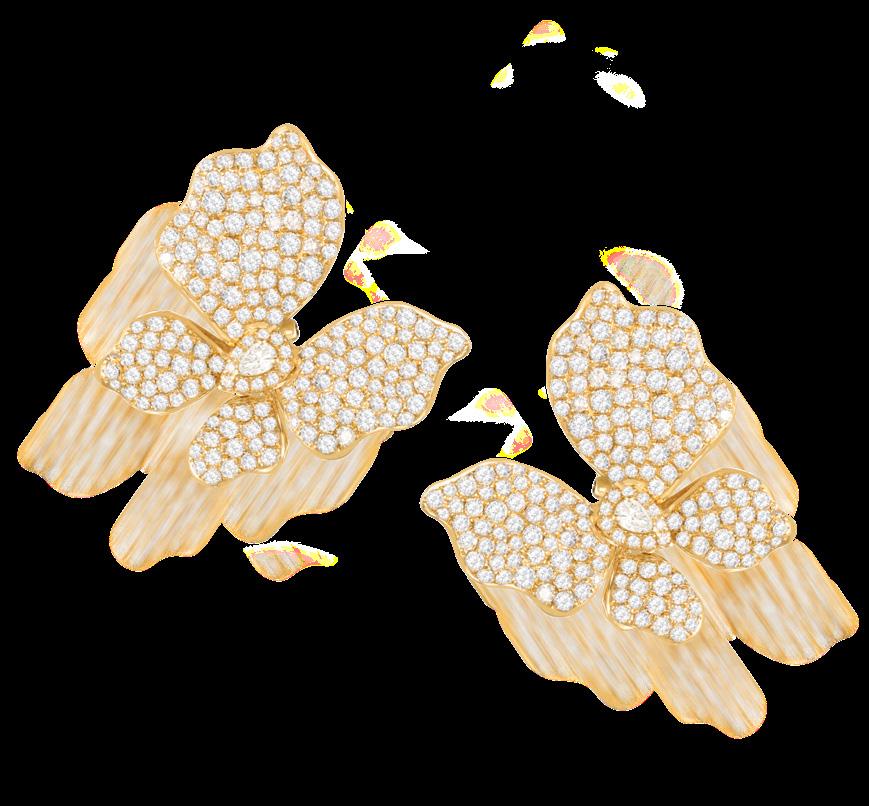
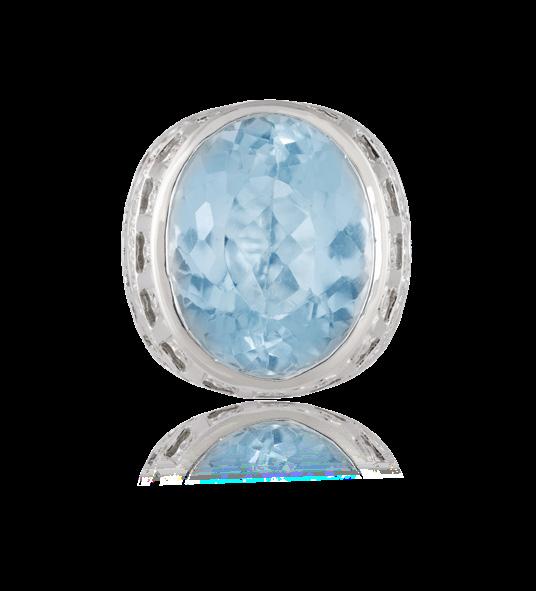

246
A PAIR OF CULTURED PEARL AND DIAMOND EARCLIPS
Each set with a slightly button-shaped cultured pearl of white tint, accented with collet-set pear, tapered baguette, baguette and brilliant-cut diamonds, mounted in 18K gold, Italian registry mark, length 1.7cm
€ 1,400 - 1,800
248
BULGARI. A PAIR OF CULTURED PEARL AND DIAMOND EARCLIPS
Each set with two cultured pearls of white tint, between brilliant-cut diamonds, to a tapered reeded mount, mounted in 18K gold, signed Bvlgari, Italian registry mark, length 1.5cm
€ 2,500 - 3,000
250
MARGHERITA BURGENER A DIAMOND AND TITANIUM RING
The stylised flowerhead, set at the centre with brilliant-cut diamonds of orangy-brown tint, surrounded by brushed and polished titanium petals, to a polished white gold mount, mounted in 18K gold, signed Margherita Burgener, maker’s mark ‘MB’, Italian registry mark, with maker’s case, ring size M (EU 51, US 7¼)
€ 1,500 - 2,500
Designed as three bands, collet-set with oval, baguette and brilliant-cut diamonds, mounted in 18K gold, diamonds approximately 2.00cts total, ring size I½
€ 1,200 - 1,800
249
Of bi-coloured crossover design, set with two baroque-shaped cultured pearls, to opeanwork scalloped shoulders, mounted in 18K white and yellow gold, Italian registry mark for Giuseppe & Figli Marchese, ring size M
€ 1,800 - 2,200
251
Of curb-link bi-colour design, set with a series of brilliant-cut diamonds, mounted in 18K gold, diamonds approximately 2.50cts total, French import mark, length 17.2cm
€ 3,800 - 4,200

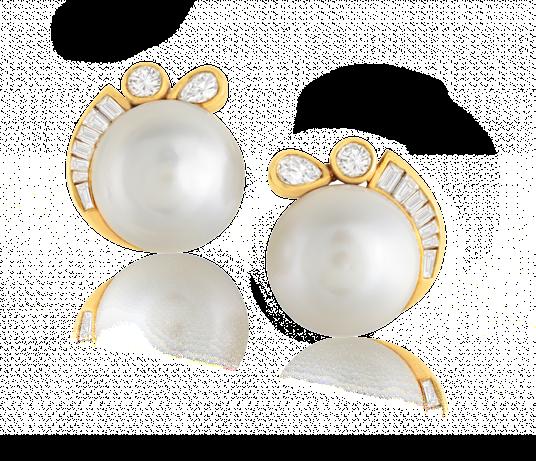
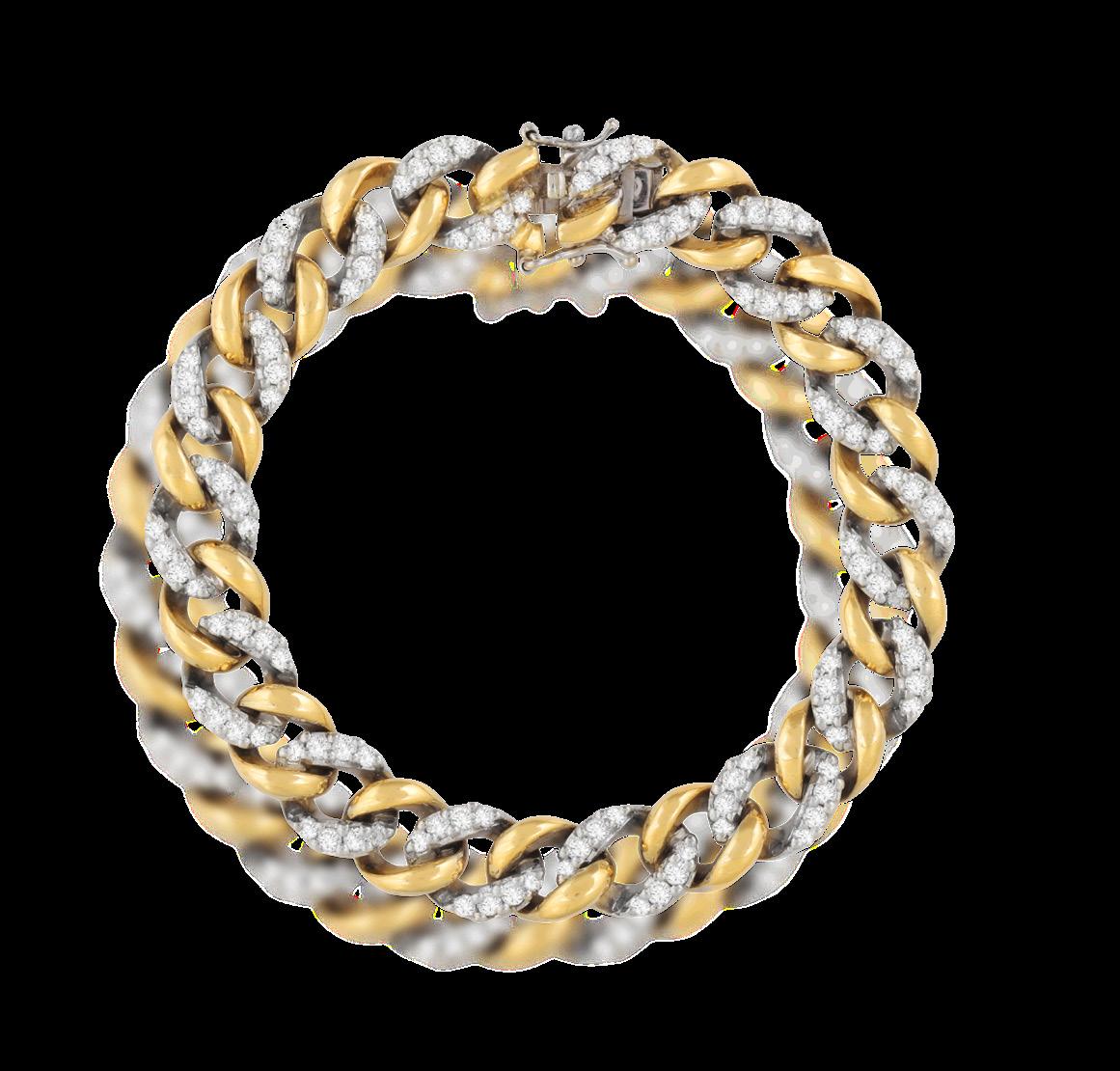
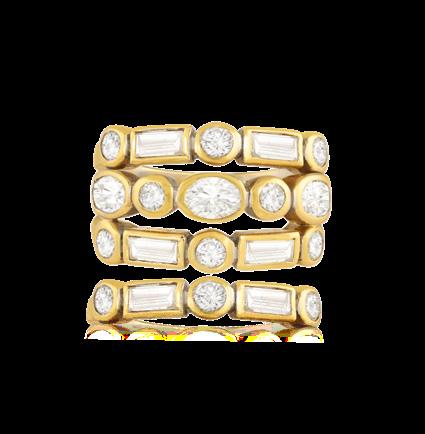
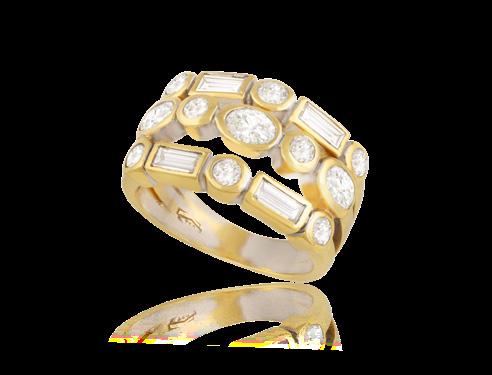
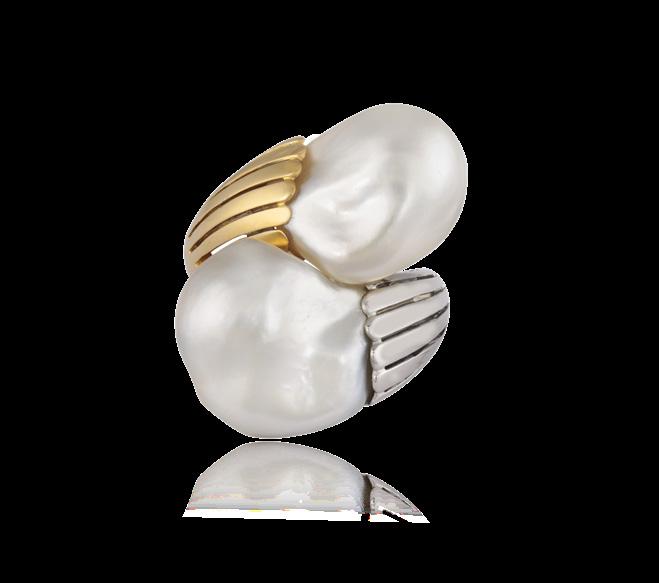
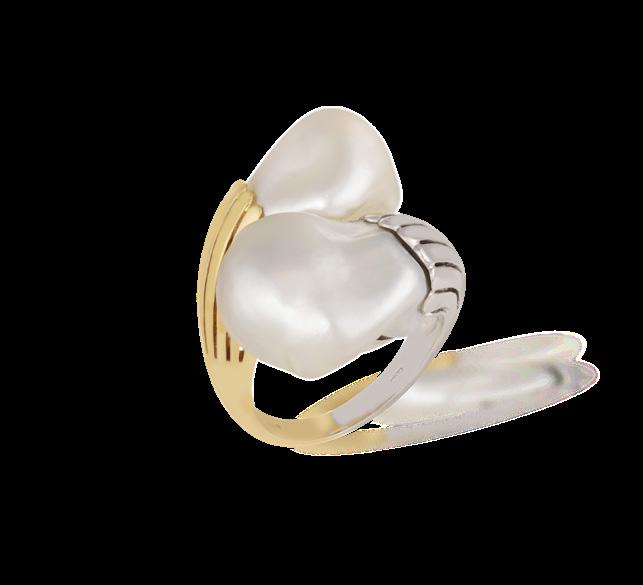
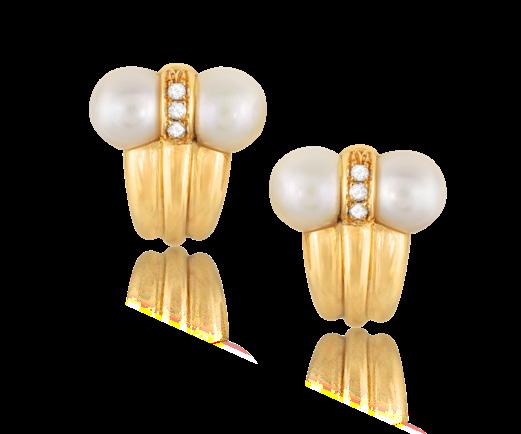
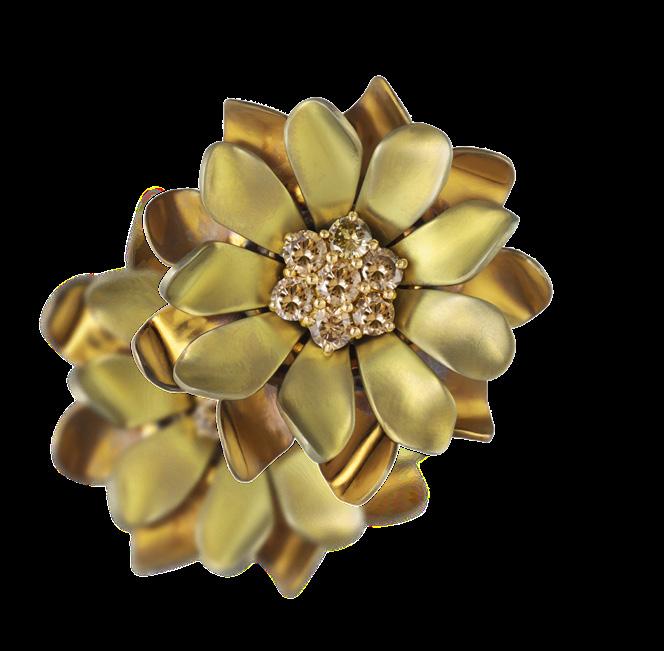
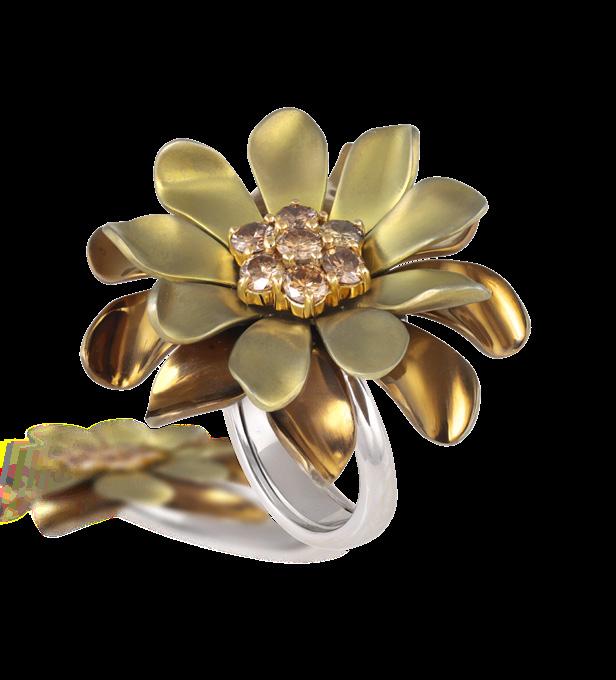
252
A DIAMOND BRACELET
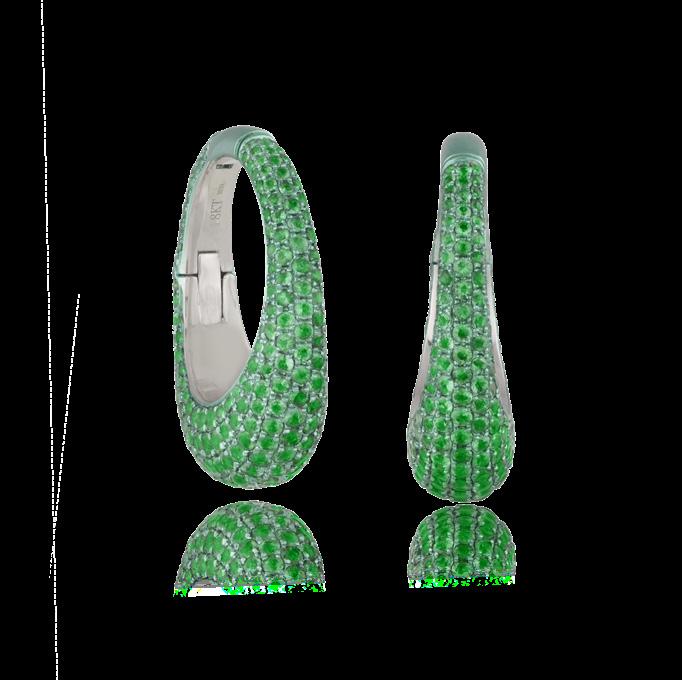
A PAIR OF EMERALD HOOP EARRINGS/RINGS
The highly articulated bracelet strap, set throughout with brilliant-cut diamonds, mounted in 18K gold, diamonds approximately 11.00cts total, length 17.8g
€ 5,000 - 6,000
254
MAUBOUSSIN: A DIAMOND AND COLOURED DIAMOND ‘ETOILE’ COCKTAIL RING
The raised bombé plaque centring a star motif pavéset with brilliant-cut diamonds, within a similarly-cut orangy-brown tinted diamond surround, mounted in 18K gold, signed Mauboussin, numbered, with partial maker’s mark, French assay mark, ring size M (53)
€ 1,500 - 2,500
256
A TOURMALINE AND DIAMOND DRESS RING
The rectangular-cut tourmaline weighing approximately 3.60cts, within a brilliant-cut diamond surround, mounted in 18K gold, diamonds approximately 0.70ct total, ring size K
€ 1,500 - 2,000
Each hoop pavé-set with circular-cut emeralds throughout, convertible from two rings to a pair of earrings, mounted in 18K gold, emeralds approximately 6.00cts total, length 2.6cm, ring sizes N
€ 4,000 - 5,000
255
AN EMERALD AND DIAMOND DRESS RING, CIRCA 1960
Of ballerina design, set at the centre with a rectangular-cut emerald weighing 2.82cts, within an undulating surround of tapered baguette-cut diamonds, mounted in platinum, diamonds approximately 3.00cts total, ring size N¾
€ 7,000 - 8,000
Accompanied by a report from CISGEM laboratory in Milan, stating that the emerald is natural, with moderate clarity enhancement with oil. Report number 21294, dated January 17th 2022.
257
A DIAMOND LINE BRACELET
Designed as single line of claw-set brilliant-cut diamonds, mounted in 18K white gold, diamonds approximately 9.00cts total, length 18cm
€ 6,500 - 7,500


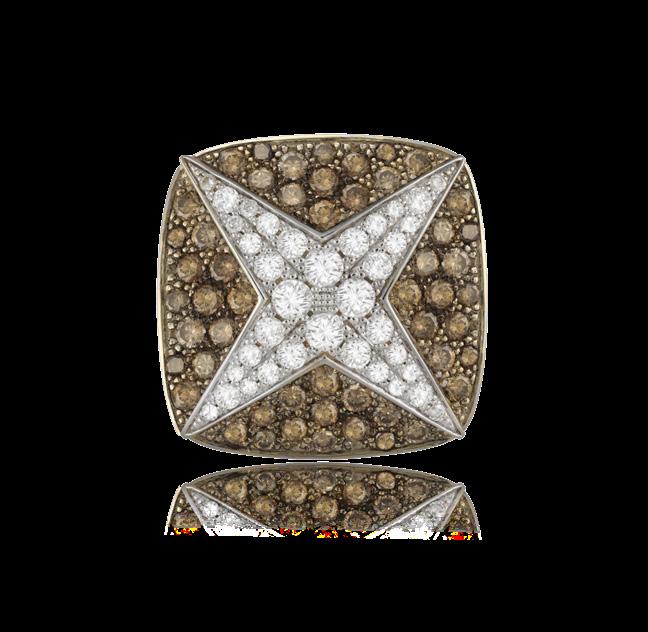
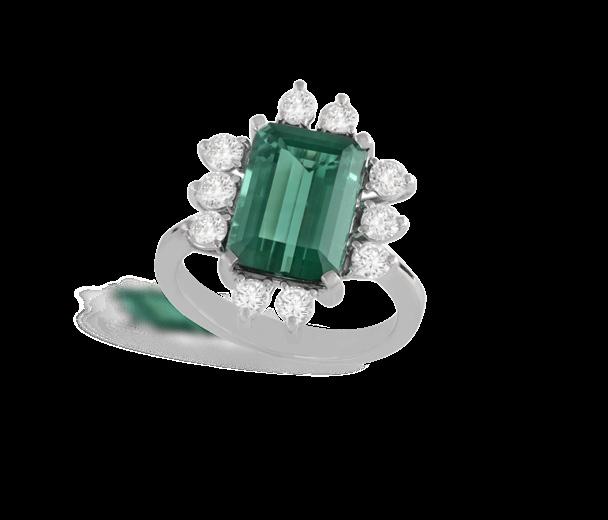

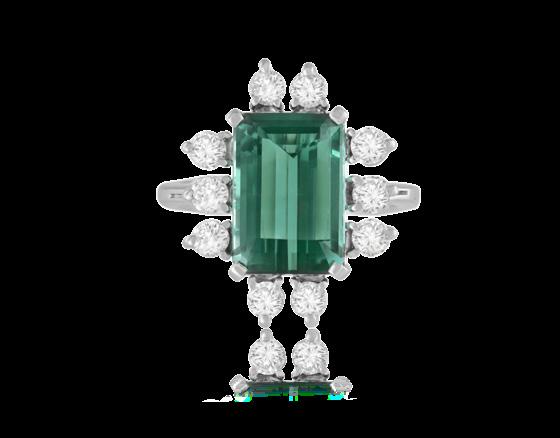
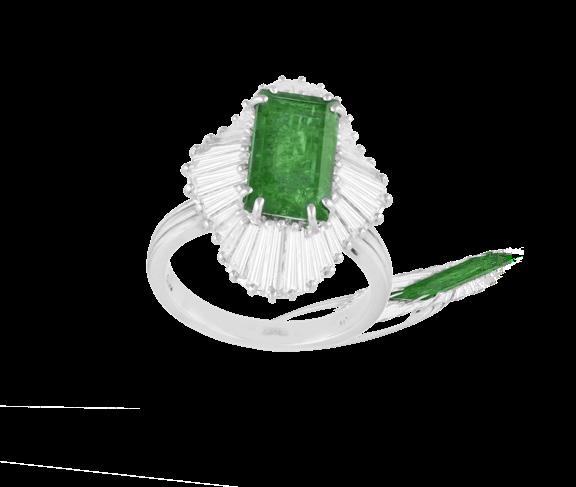
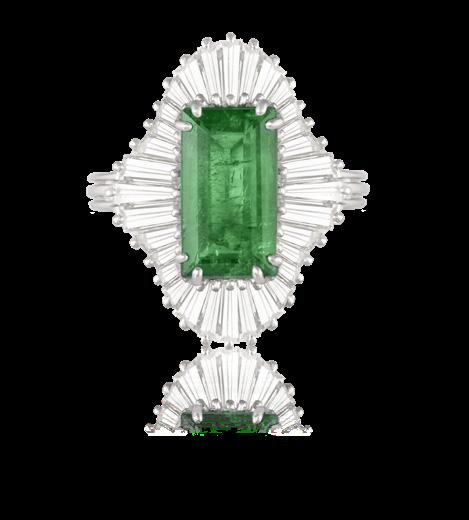

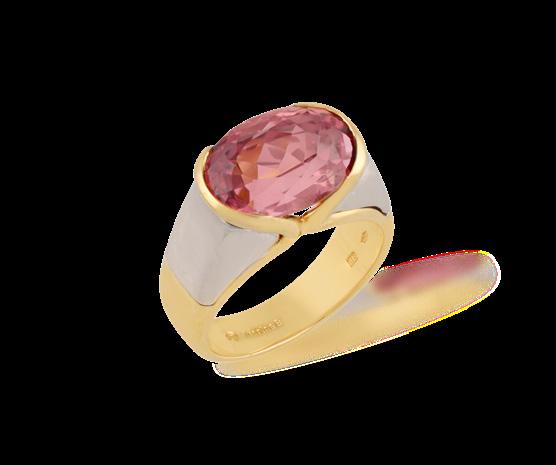
258
MARINA B
A TOURMALINE ‘PATRIZIA’ RING
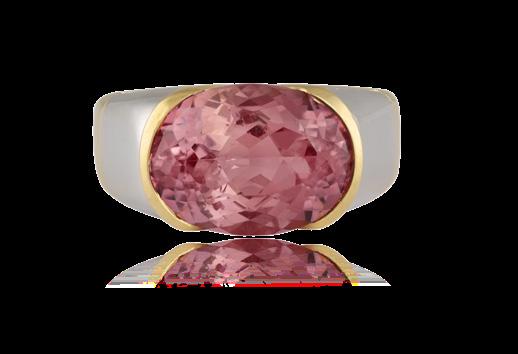
Horizontally set to the bezel, the oval-shaped pink tourmaline, bi-coloured 18K gold hoop, signed Marina B, maker’s mark ‘MB’, numbered, French import mark, ring size O
€ 2,000 - 3,000
Cf: See Vivianne Jutheau de Witt (2003-2011) Marina B: The Art of Jewellery Design. Skira Editori for comparable rings, page 112, no. 214 (dated 1987).
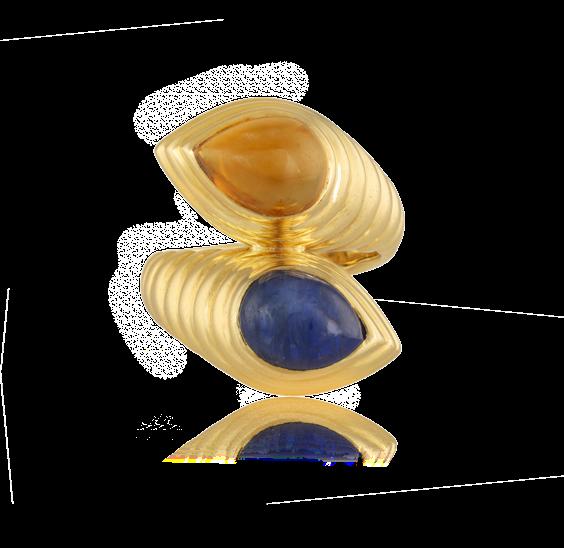
259
BULGARI
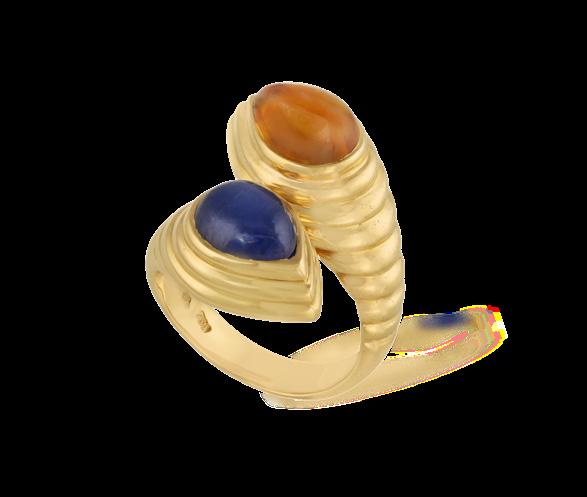
A TANZANITE AND CITRINE ‘DOPPIO BACCELLATO’ RING
Of crossover reeded design, set with a pear-shaped tanzanite and citrine, mounted in 18K gold, signed Bvlgari, with maker’s mark ‘BB’ for Bulgari, for jew els imported and sold in Switzerland, ring size K
€ 3,500 - 4,500
260
MARINA B
A PAIR OF GOLD CUFFLINKS, 1988
Each rhodium-treated oval-shaped link within a polished frame, to cable-link in 18K gold, signed Marina B, numbered, with maker’s mark ‘MB’, Italian registry mark, with maker’s case, length of oval link 1.8cm
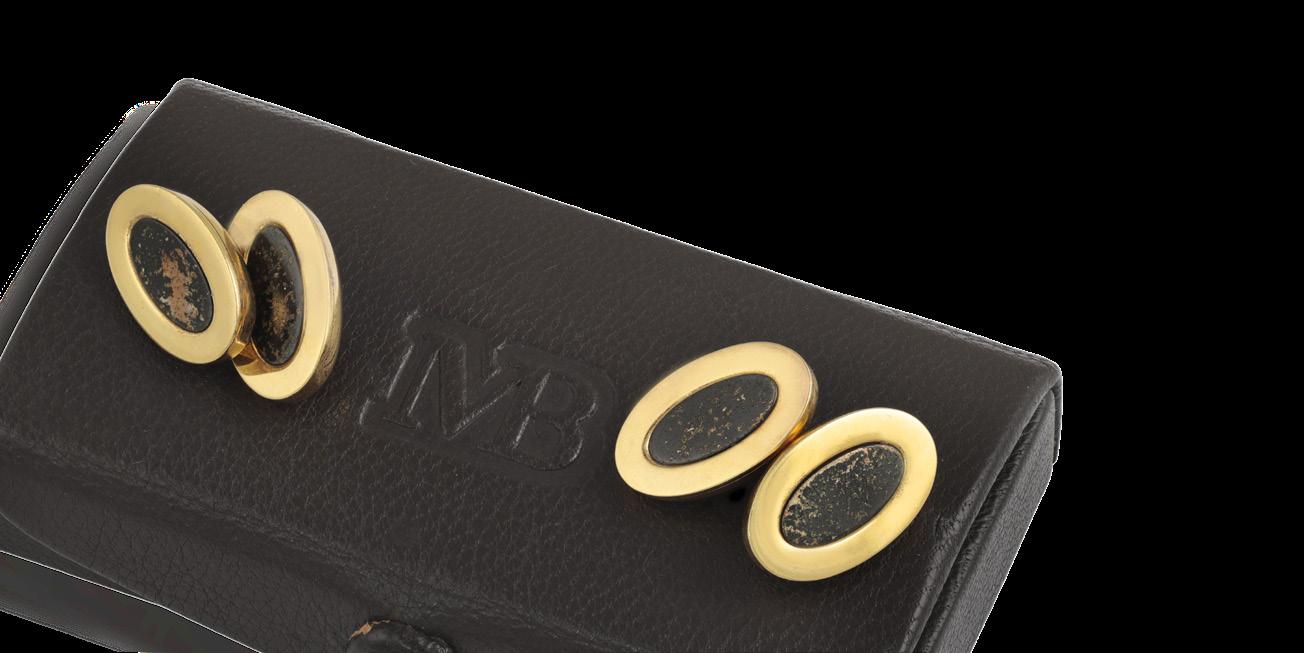
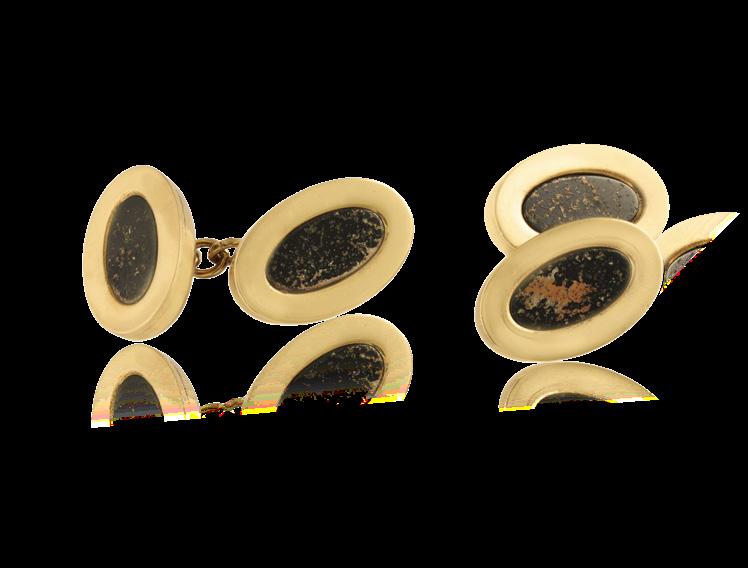


Designed as a rope of onyx beads, spaced by links set with pear-shaped cabochon emeralds, brilliant-cut diamonds, and onyx and ruby sections, mounted in 18K gold, signed Marina B, with maker’s mark ‘MB’, numbered W347, with maker’s mark ‘S.A. P.B’ for Sté Pierre-G. Brun, French assay marks, with maker’s case, length approximately 83cm (slightly extensible)
€ 10,000 - 15,000
Société Pierre-G Brun is a jewellery workshop which worked for Cartier, Fred, amongst others. They were bought by Cartier in 2000.
For a similar model, page 75: ‘Marina B. The Art of Jewellery Design’, by Viviane Jutheau de Witt, first published in 2003 by Skira Editore S.p.A.
Jean Pierre Brun himself described Marina B’s creations as highly structured, architectural, and meticulously constructed, comparing her uncompromising attention to detail to that of Suzanne Belperron. This collaboration not only underscored her commitment to precision but also played a crucial role in realising her inventive designs, including complex mechanisms for chokers and necklaces.
Perhaps one of her most celebrated masterpieces is the Najwa sautoir necklace, introduced in 1982, which was originally designed for a princess. Comprising a seamless strand of 1,800 nearly invisible pearls interwoven with subtle yet striking motifs in gold and diamond pavé, this necklace defied conventional aesthetics. The Najia sautoir quickly evolving into a symbol of Marina B’s creative genius and remains an enduring icon of her prestige.
262
A CULTURED PEARL, ROCK CRYSTAL AND ONYX SAUTOIR NECKLACE
The longchain necklace composed of round cultured pearls of white tint measuring from 13.0-13.8mm, fluted rock crystal beads and barrel-shaped onyx beads, to faceted rock crystal beads, roundels set with circular-shaped diamonds and onyx hoop connectors, length 101cm
€ 1,800 - 2,200
264
MARGHERITA BURGENER A PAIR OF TITANIUM EARCLIPS
Each handmade as a black titanium flowerhead, polished or brushed, mounted in silver and titanium, signed Margherita Burgener, with maker’s mark ‘MB’, Italian registry mark, with maker’s case, length 3.9cm
€ 600 - 800
* This lot is sold without are reserve

263
A PAIR OF DIAMOND AND ONYX EARRINGS
Of opposing design, each drop-shaped motif set with carved onyx bands and brilliant-cut diamonds, in 18K white gold, French import marks, length 3.9cm
€ 2,000 - 3,000
265
AN EMERALD, ONYX AND DIAMOND DRESS RING
Centring a square sugarloaf-shaped emerald weighing approximately 2.90cts, within a brilliant-cut diamond sur round, to bombé mount pavé-set with brilliant-cut dia monds accented with onyx, mounted in 18K gold, diamonds approximately 1.10cts total, numbered, ring size N
€ 4,000 - 5,000

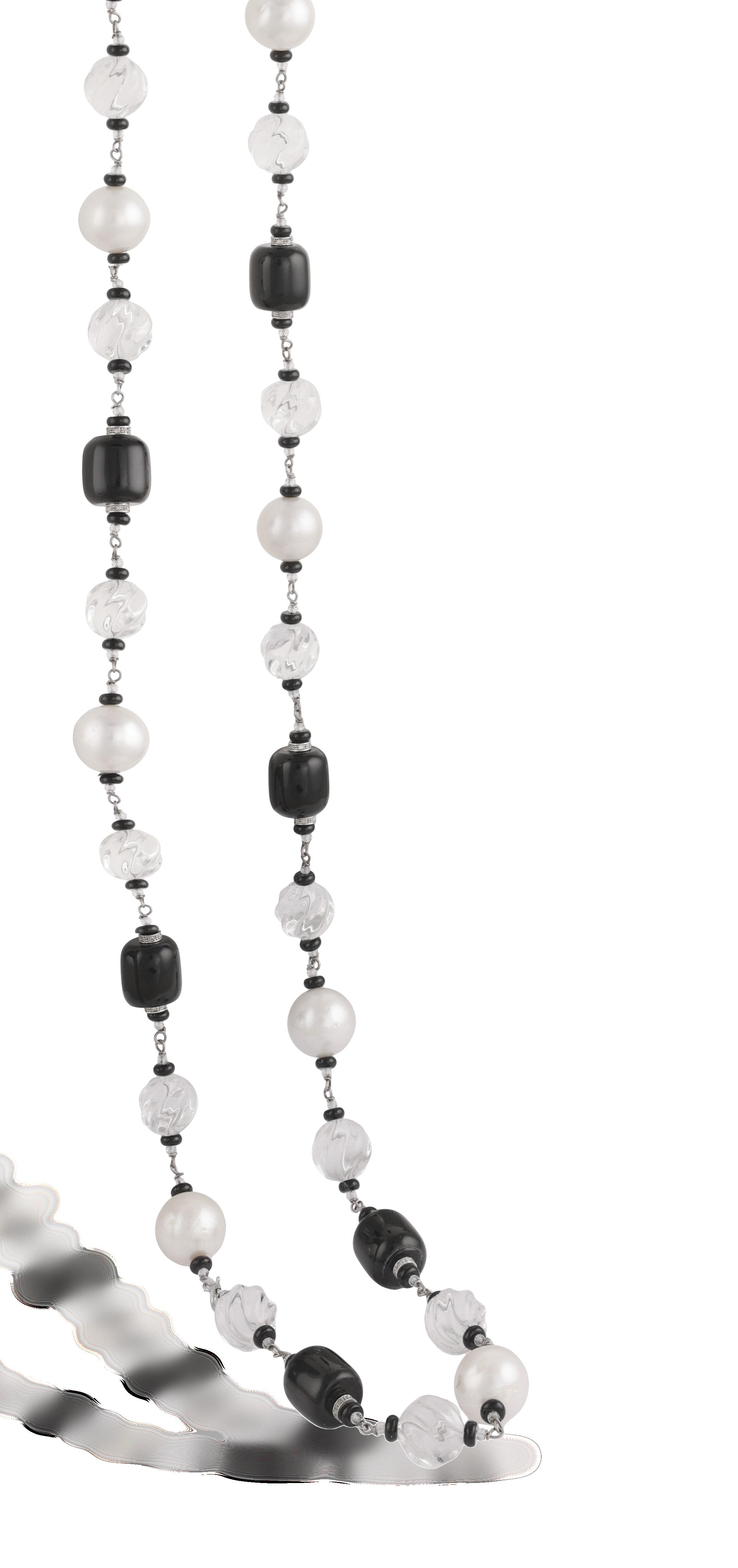
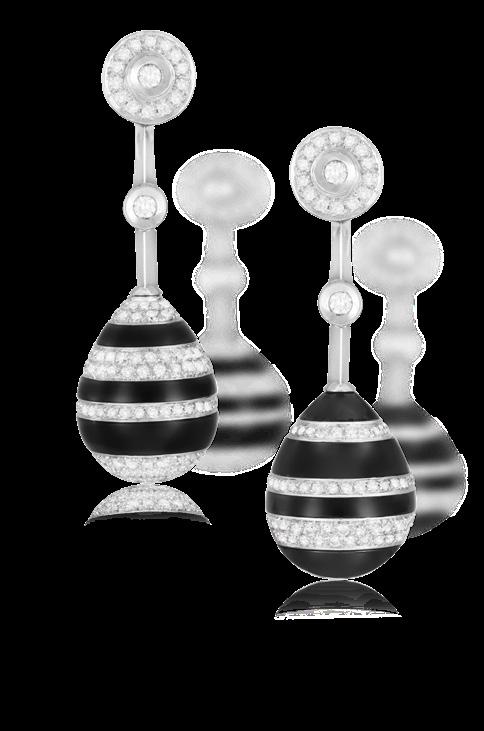
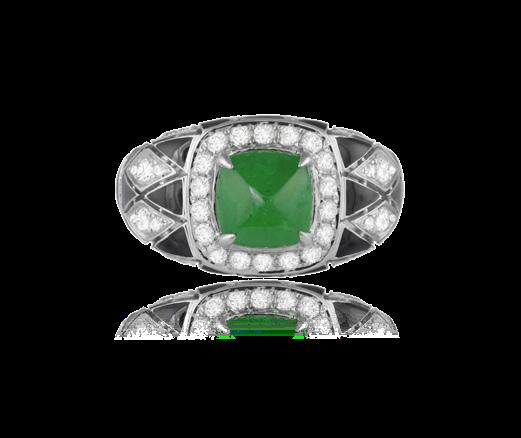
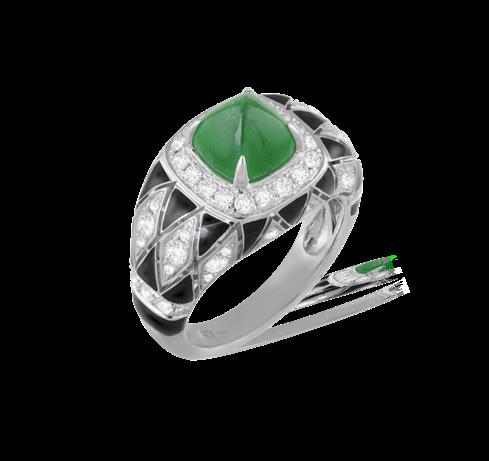
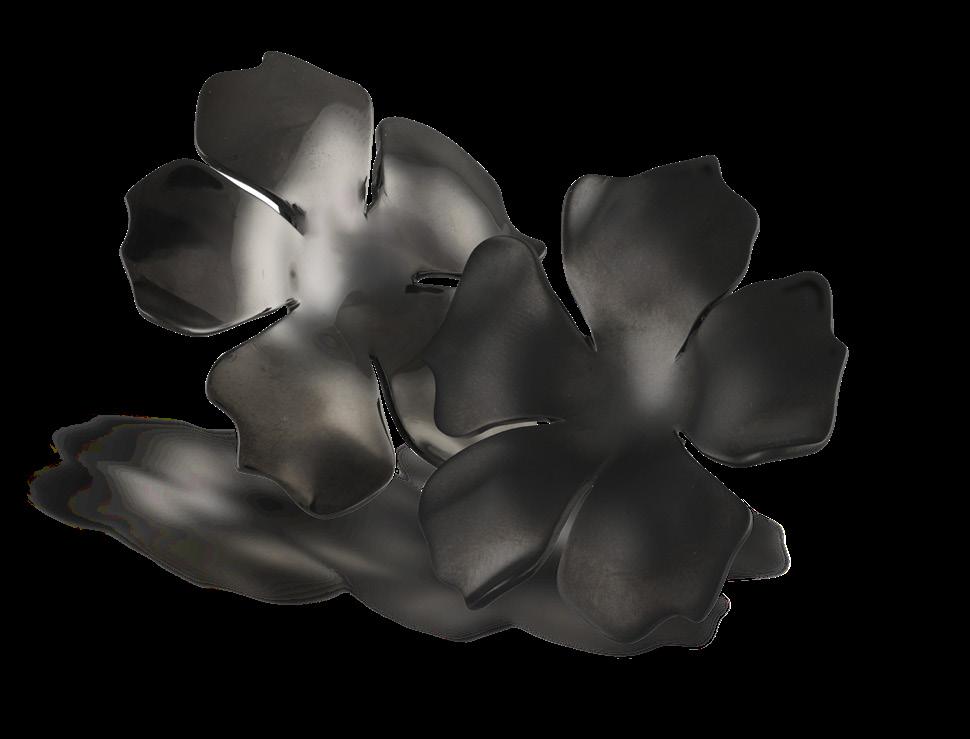
Each fancy-link chain, suspending various charms such as a horseshoe, an anchor, a flag, an umbrella etc...each highlighted with brilliant-cut diamonds and some with sapphires, both mounted in 18K gold, French import marks, lengths 19cm each
€ 4,000 - 5,000
Designed as a dragonfly, its thorax set with an old European-cut diamond weighing approximately 0.90ct, head and segment set with a shield-shaped and rectangular-cut emeralds, its wings of openwork design, set with brilliant and single-cut diamonds, eyes and antennas further enhanced with similarly-cut diamonds, mounted in 18K white gold,
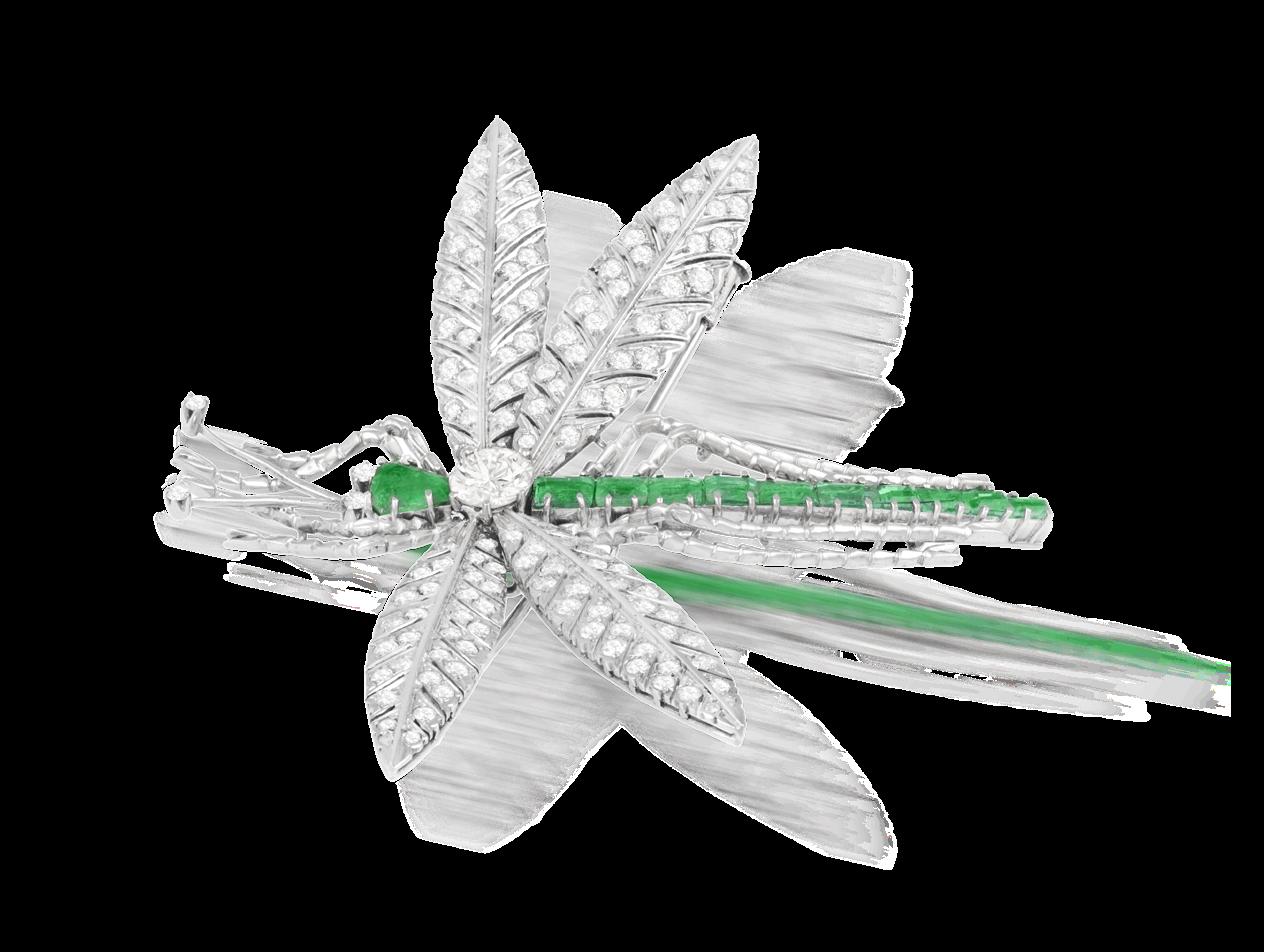
The brilliant-cut diamond weighing 1.51cts, within a fourclaw setting, to a polished hoop with a secret brilliant-cut diamond inside the shank, mounted in platinum, signed De Beers, numbered, ring size I½
€ 4,000 - 5,000
Accompanied with its certificate of authenticity from De Beers, stating that the diamond is F colour, SI1 clarity. Report dated October 22nd 2007 and with GIA laser inscription, 14846981, from 2006.
270
Of Tutti Frutti style, set to the centre with a carved sapphire depicting the Buddha, within a surround composed of scrolled foliate motifs set with old European-cut diamonds, carved emerald leaves, ruby beads, cushion-shaped sapphires and drop-shaped cultured pearls of silver hue, mounted in 14K gold, faceted sapphires approximately 15.00cts total, diamonds approximately 1.50cts total, length 6cm
€ 5,000 - 6,000
The cut-cornered rectangular-cut diamond at the centre weighing approximately 1.00ct, within a four-claw setting, to a raised bombé mount pavé-set with brilliant-cut diamonds and baguette-cut diamond shoulders, mounted in 18K gold, remaining diamonds approximately 2.00cts total, ring size N½
€ 4,000 - 5,000
The pear-shaped diamond weighing approximately 0.90ct, within a three-claw setting, to a plain polished bale, mounted in 18K gold, partial maker’s mark, length 1.3cm
€ 700 - 900
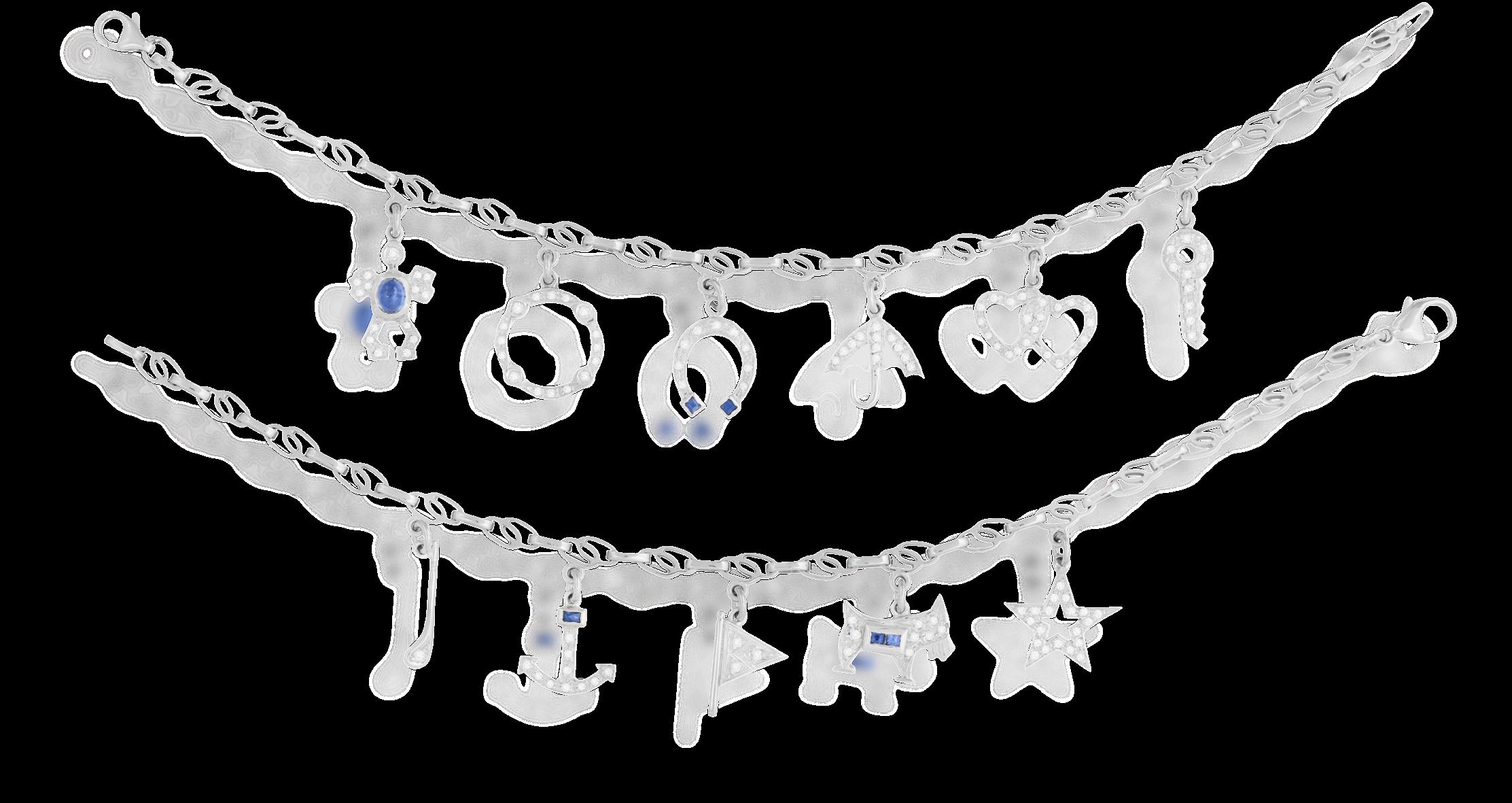
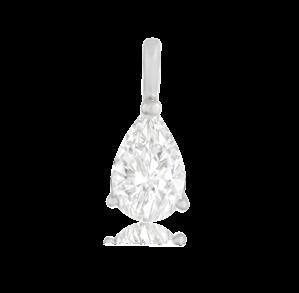
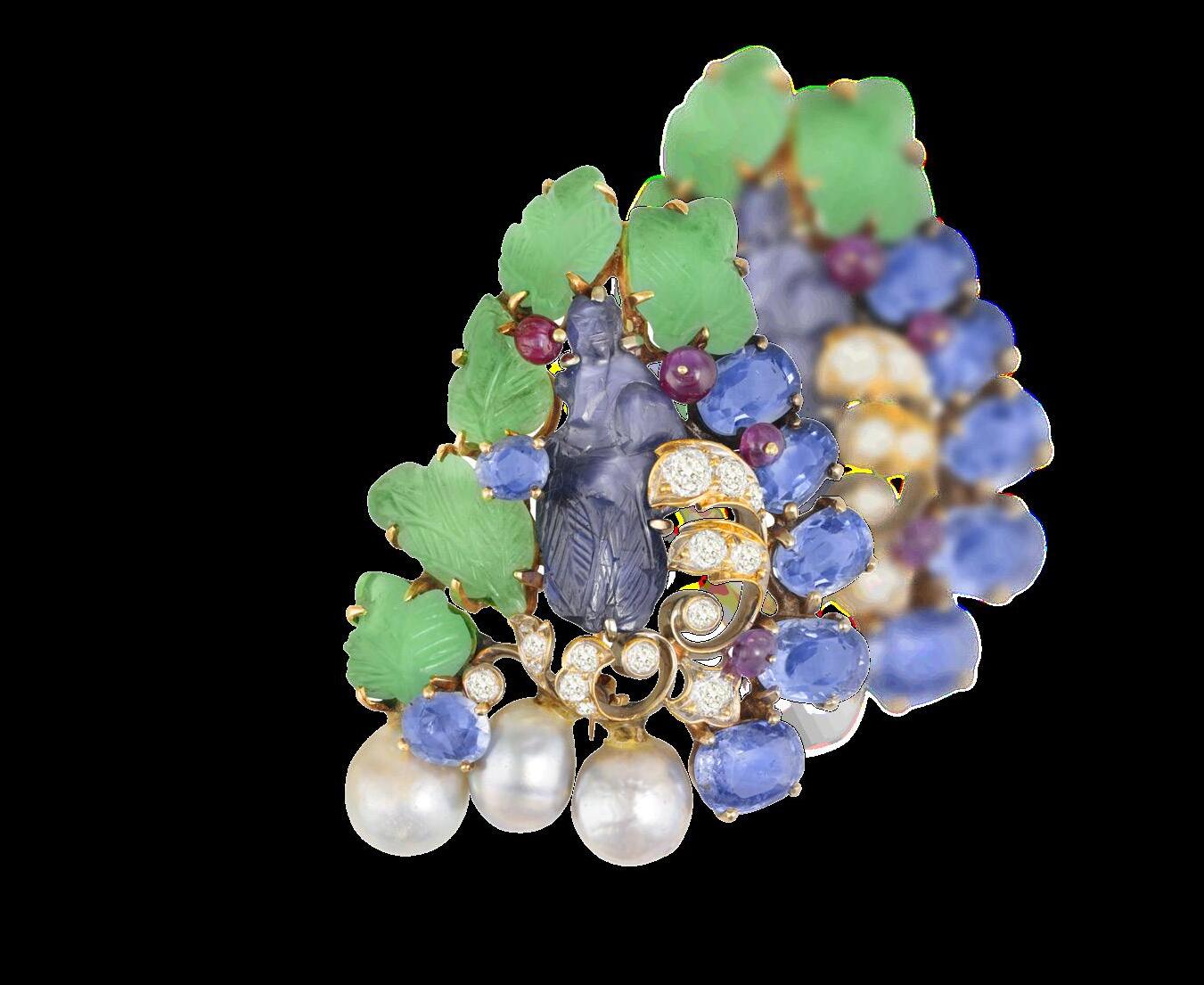
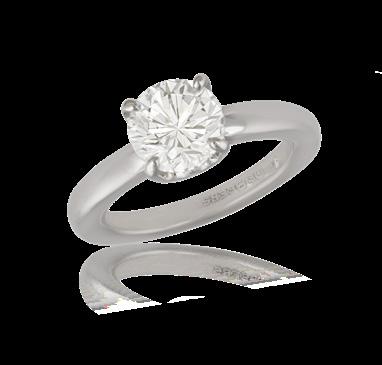
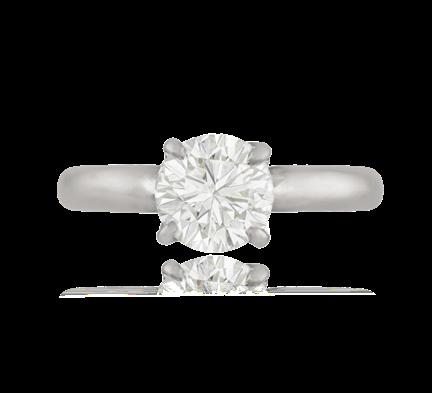
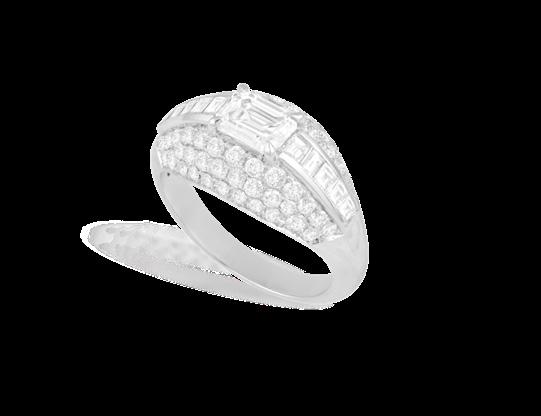
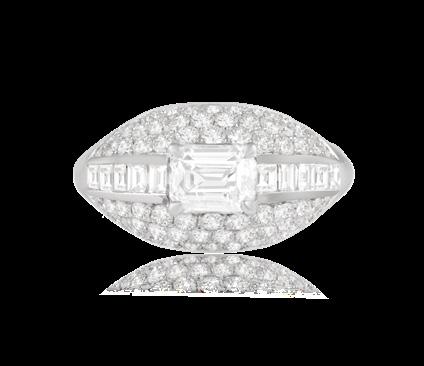
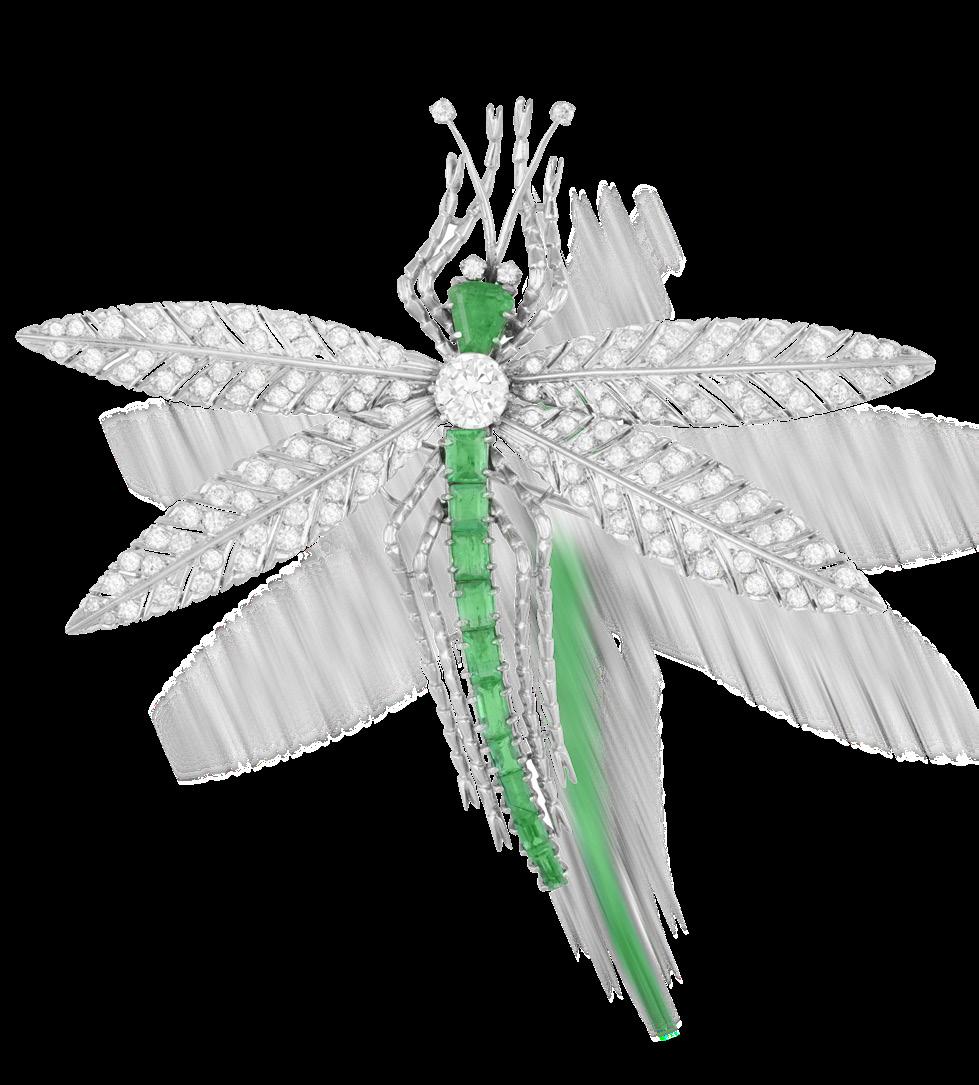
272
BULGARI AN EMERALD DRESS RING

Of reeded design, centring a collet-set oval-shaped emerald cabochon weighing approximately 3.80cts, mounted in 18K gold, signed Bvlgari, Italian registry mark, ring size P½
€ 6,500 - 7,500
274
BULGARI AN 18K GOLD ‘ANTALYA’ BANGLE WATCH
The 6-jewel Cal-512 quartz movement, black dial with gilt hands, polished bezel with polished gold lugs, brushed gold case with two screws on back, polished gold bracelet surmounted with brown leather strap, case and movement signed, case no. C509, ref. no. BJO3, signed fabriqué en Suisse, case 20mm, internal circumference approx. 13.6cm (flexible)
€ 5,000 - 6,000
276
CARTIER A DIAMOND PENDANT BROOCH
Of openwork lozenge-shape design, composed of reeded quarters and brilliant-cut diamond flower motifs, partially signed Cartier, numbered P1371, diamonds approximately 1.90cts total, length 4.5cm
€ 2,500 - 3,500
273
BULGARI A RUBY DRESS RING

The bi-coloured bombé and reeded mount centring an oval-shaped ruby cabochon, within collet-setting, mounted in 18K white and yellow gold, signed Bvlgari, Italian registry mark, with maker’s case, ring size L
€ 5,000 - 6,000
275
CARTIER A PAIR OF GOLD AND STAINLESS STEEL EARCLIPS AND A BANGLE BRACELET
Each hoop earclip and bangle composed of rounded stainless steel and gold wires, with gold panels of similar design set across, signed Cartier, numbered, with maker’s mark ‘DC’ for Coindre Steiner, French assay mark, with maker’s pouch, earclips length 2.6cm, bangle inner circumference 16cm
€ 3,500 - 4,000
Coindre Steiner workshop was founded in 1967 near Lyon in France. They have worked for Cartier, amongst others.
277
MARINA B A MOTHER-OF PEARL AND GOLD RING, CIRCA 1980
Of bombé design, centring a heart-shaped plaque, within a mother-of-pearl frame, to further mother-of-pearl shoulders, mounted in 18K gold, signed Marina B, with maker’s mark ‘MB’, numbered, with maker’s mark ‘GS’ for Guillemin & Soulaine, French assay mark, ring size F
€ 1,200 - 1,800
Guillemin & Soulaine was a Parisian workshop established in 1955. They worked for jewellery houses such as Marina B, Bulgari, Harry Winston to name just a few. The workshop closed in 1984.

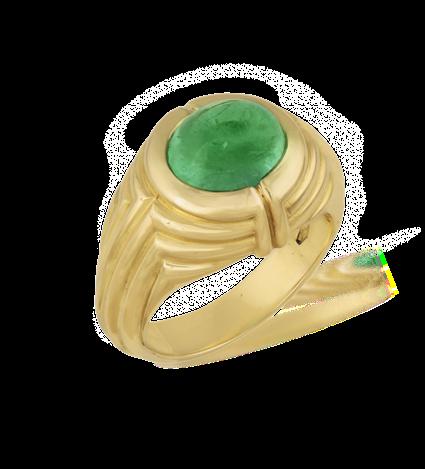
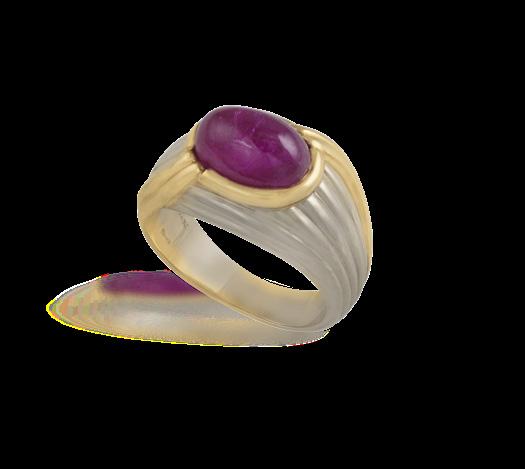
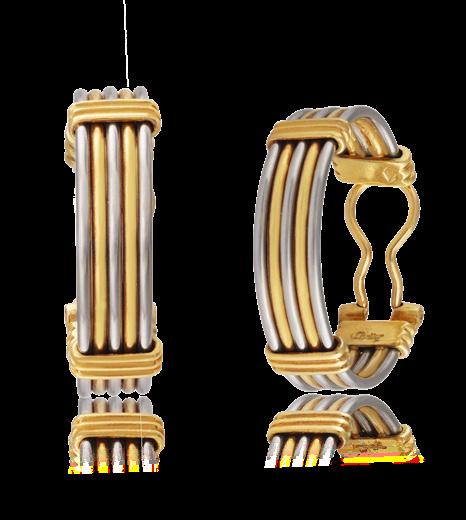
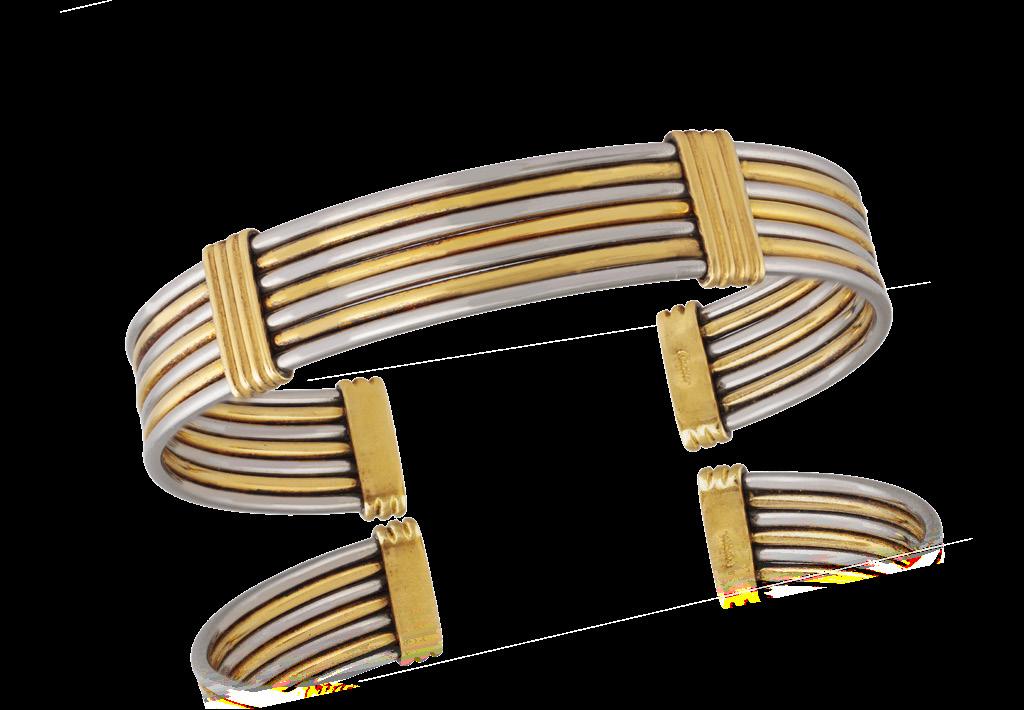
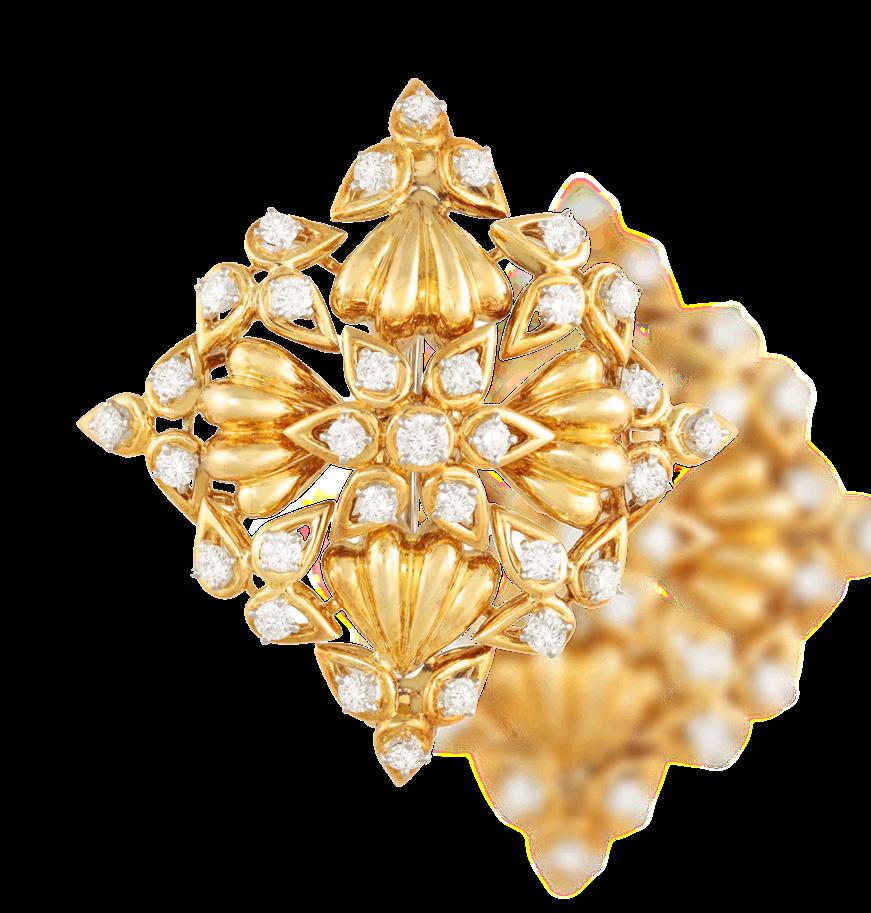

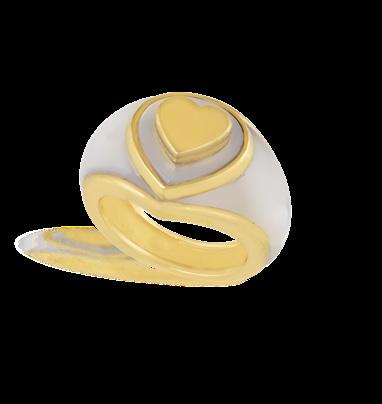

279
A GOLD AND ONYX LONG CHAIN NECKLACE
Composed of a series of coffee-bean polished gold links, interspersed by similarly-shaped onyx links, mounted in gold, length 67.3cm
€ 5,000 - 6,000
280
A PINK SAPPHIRE LINE BRACELET
Composed of a continuous row of oval-shaped sapphires of graduated pink hues, mounted in 18K rose gold, sapphires approximately 11.00cts total, numbered, length 19.1cm
€ 2,800 - 3,200
282
A DIAMOND SINGLE-STONE RING
Centring a marquise-shaped diamond weighing approximately 1.23cts, between tapered baguette-cut diamonds, mounted in 18K gold, French import mark, ring size M
€ 4,000 - 5,000
Accompanied by a report from the LFG laboratory (Laboratoire Francais de Gemmologie), stating that the natural marquise diamond, weighing 1.23cts, is E colour, VS1
Of curb-link design, pavé-set throughout with brilliant-cut diamonds, mounted in 18K yellow gold, diamonds approximately 13.50cts total, length 18.7cm
€ 14,000 - 18,000
281
THREE GEM-SET AND DIAMOND RINGS
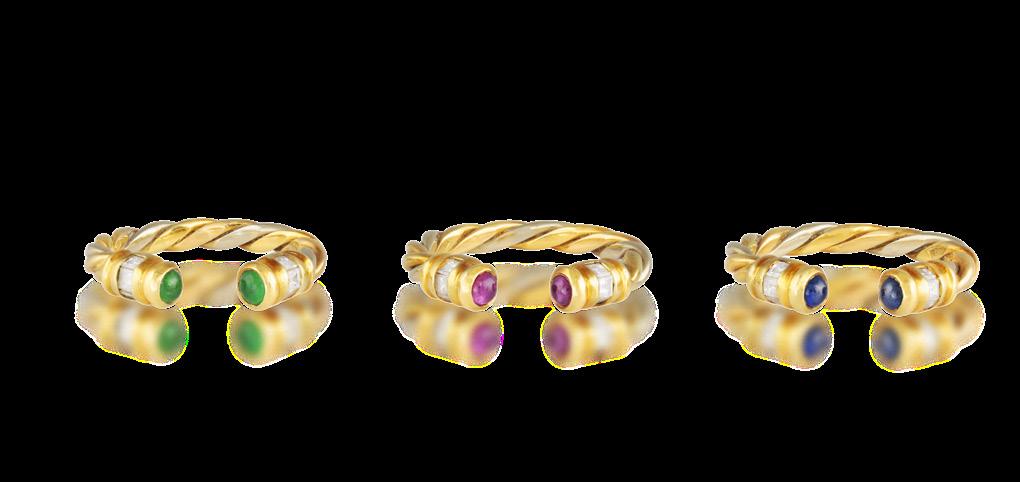
Each ring of openwork design, composed of a scrolled bi-coloured wire, terminals set with either cabochon sapphires, rubies or emeralds, further accented by squareshaped diamonds, mounted in 18K gold, Italian registry marks, ring sizes N½, N½ and L½
€ 1,200 - 1,800
283
Of cluster design, set with a rectangular-shaped emerald weighing approximately 1.40cts, within a surround of brilliant-cut diamonds, mounted in gold, diamonds approximately 1.50cts total, ring size P⅔
€ 2,200 - 2,800

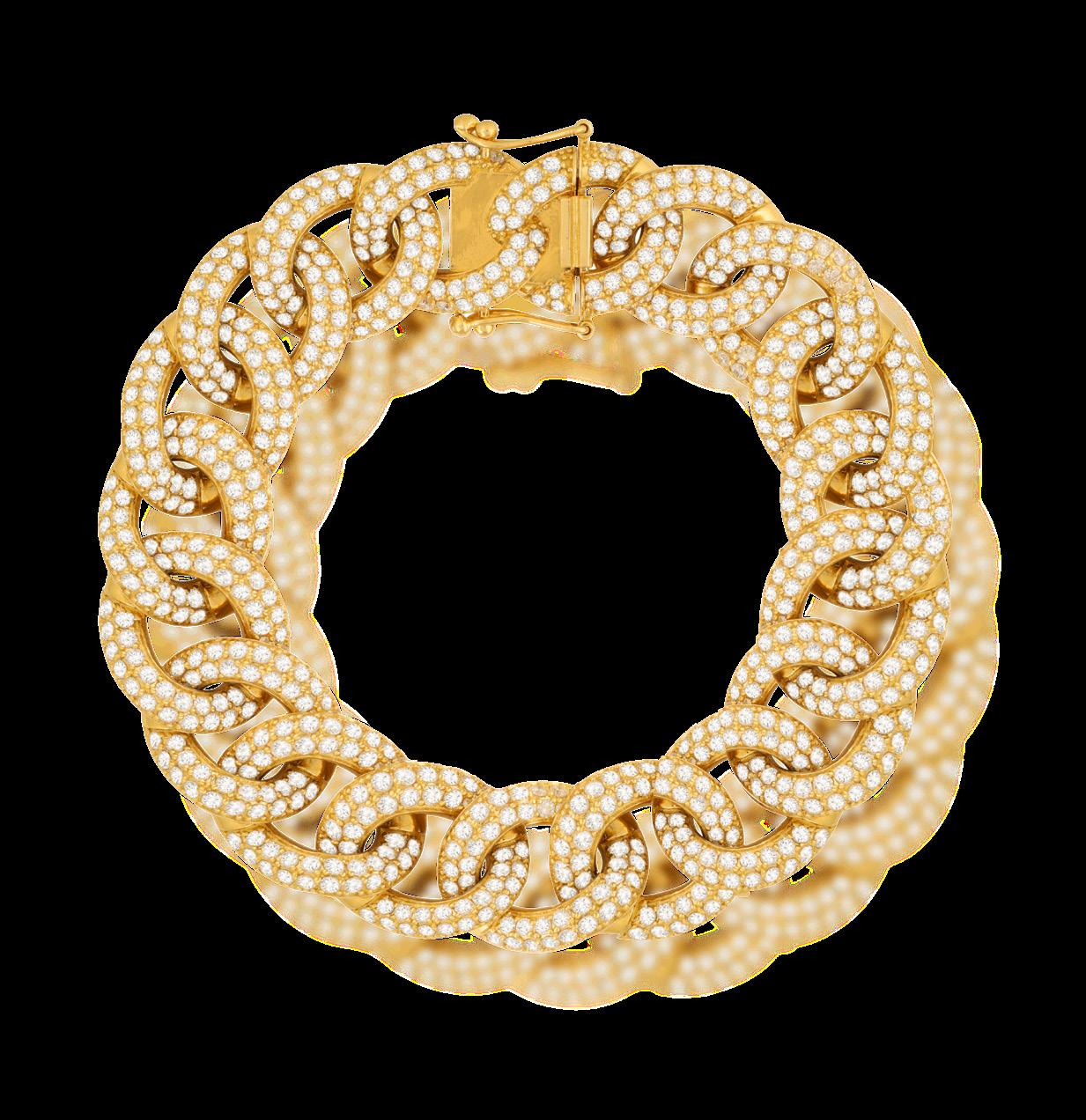
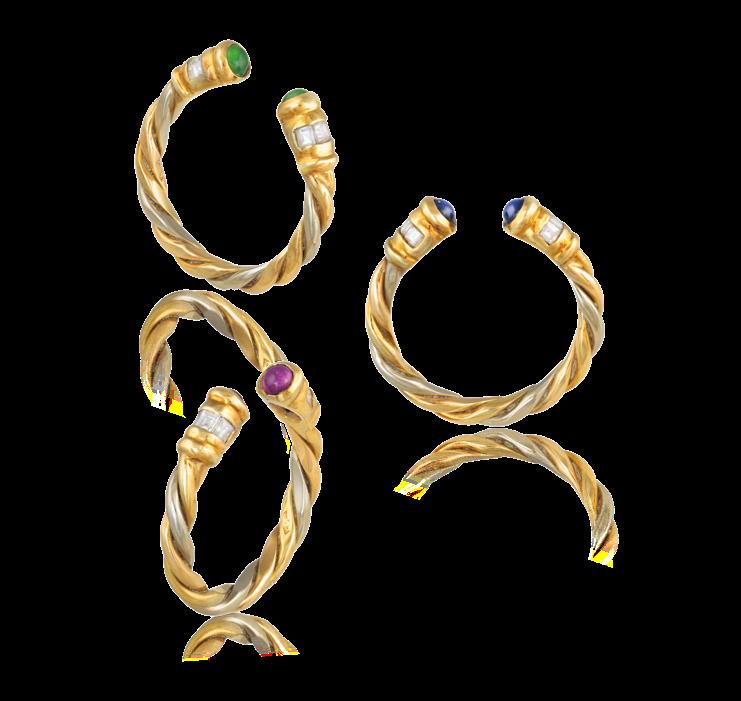
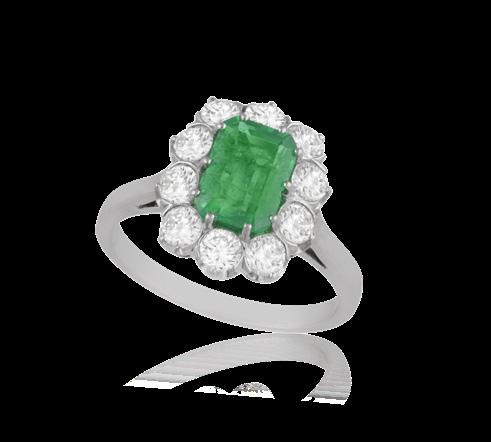
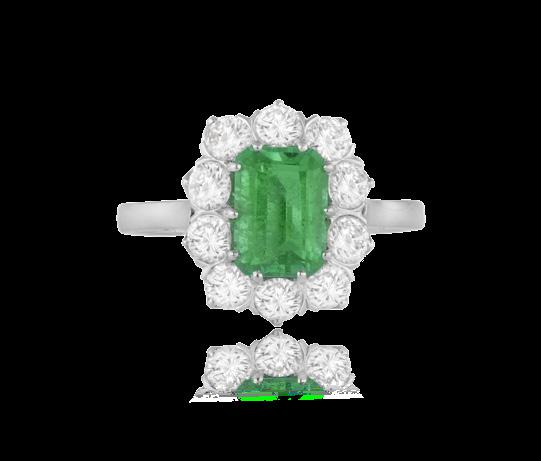
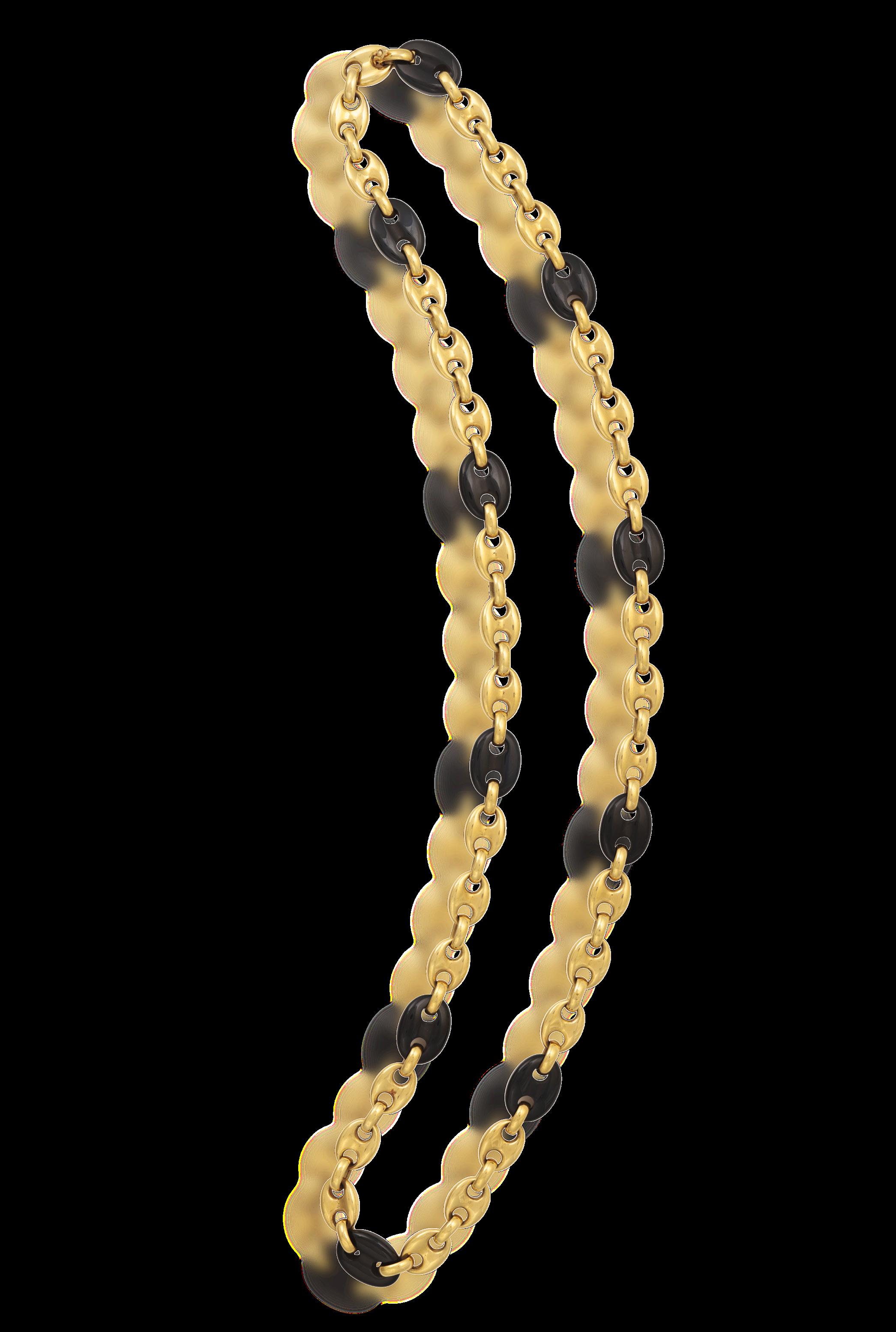

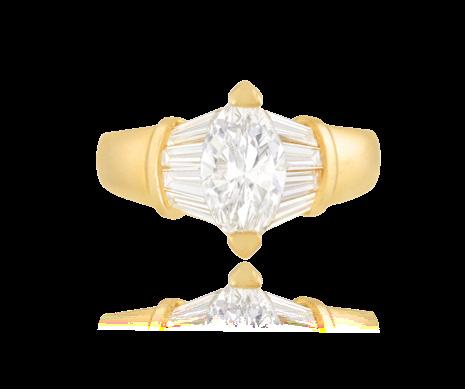
284
A DIAMOND LINE BRACELET
Composed of round collets, set with brilliant-cut diamonds, mounted in 18K white gold, length 16cm
€ 1,000 - 1,500
286
Of alternate design, the surmounts each set with a graduated row of brilliant-cut diamonds, suspending polished amethyst and citrine hoops with spectacle-set brilliant-cut diamonds between and terminating in a briolette-cut amethyst or citrine drop, mounted in 18K gold, signed Michele della Valle, numbered, with maker’s pouch, length 10cm
€ 3,000 - 5,000
288
AN AQUAMARINE AND DIAMOND DRESS RING
The oval-shaped aquamarine weighing approximately 10.50cts, within a brilliant-cut diamond frame, to a similarly-cut diamond gallery and shoulders, mounted in 18K gold, diamonds approximately 1.40cts total, Italian registry mark, ring size M¾
€ 2,800 - 3,200
285
The openwork round mount composed of flower motifs, petals set with polished pear-shaped lapis lazuli and chrysoprase, with brilliant-cut diamond accents, within a surround of baguette-cut diamonds, mounted in platinum and 18K gold, diamonds approximately 4.50cts total, ring size M½
€ 5,000 - 6,000
287
Collet-set with a heart-shaped diamond, within a surround of brilliant-cut diamonds, to similarly-cut diamond shoulders and a polished band, mounted in 18K gold, ring size R⅓
€ 2,000 - 3,000
289
Composed of a continuous row of brilliant-cut diamonds, mounted in 18K gold, diamonds approximately 1.80cts total, Italian registry mark, ring size M½
€ 1,200 - 1,800

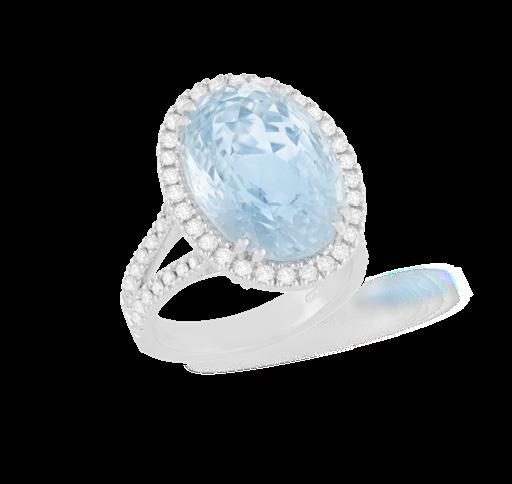
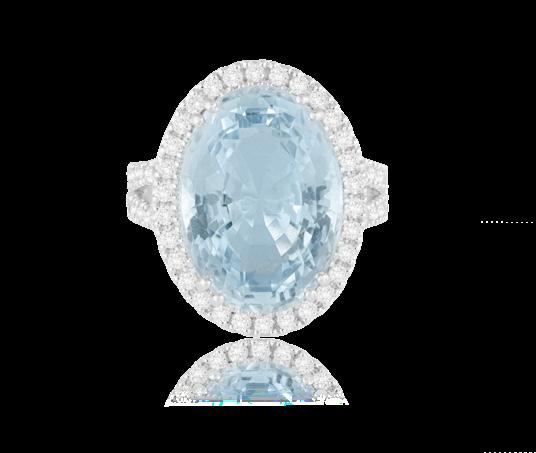

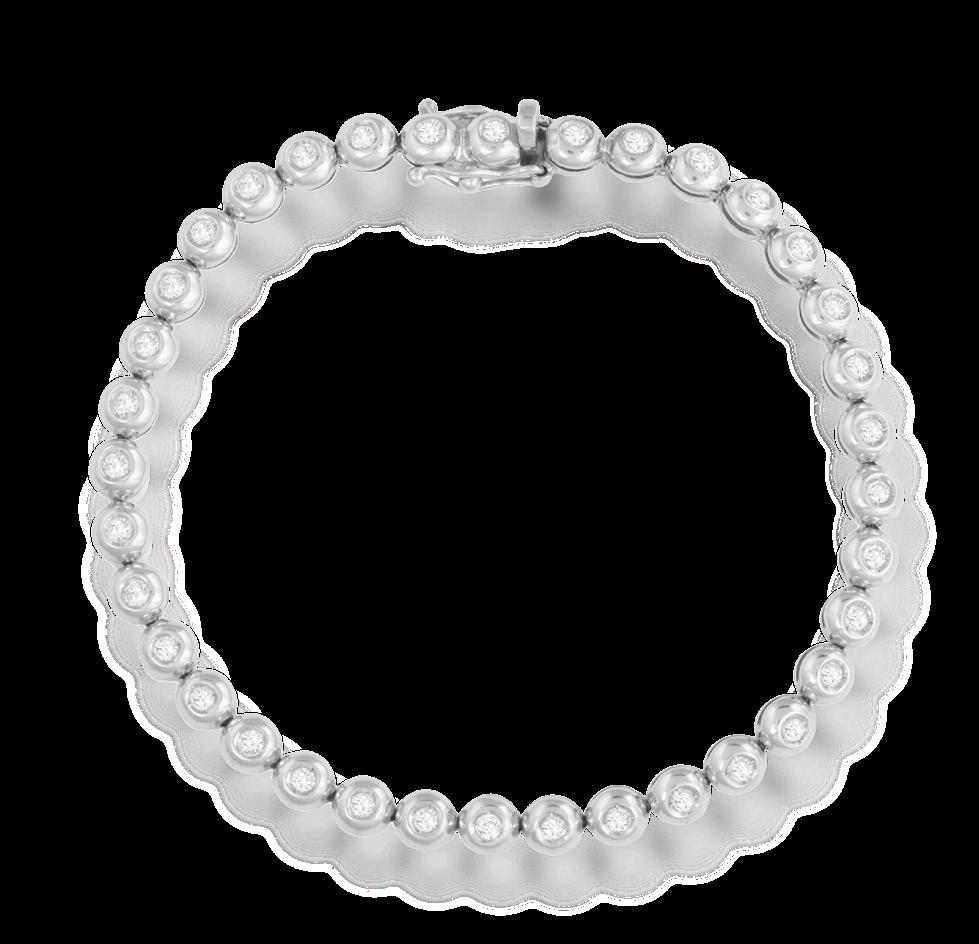

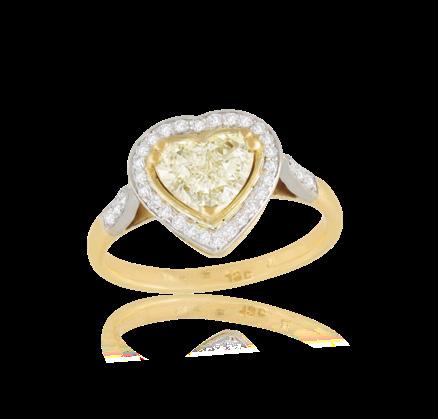

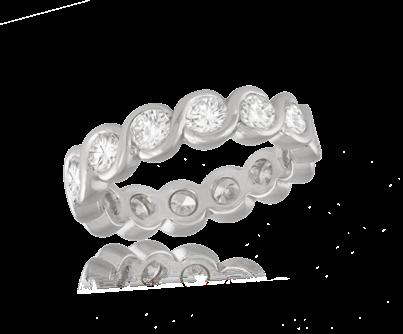
290
A PINK SAPPHIRE AND DIAMOND CLUSTER RING

Centrally set with an oval-shaped pink sapphire weighing 2.04cts, within a four-claw setting, to a brilliant-cut diamond surround, mounted in platinum, diamonds approximately 0.70ct total, ring size M
€ 3,000 - 4,000
Accompanied by a report from GRS laboratory in Switzerland, stating that the natural pink sapphire is of Madagascan origin, with no indication of heating. Report number GRS2024-091364, dated October 21st 2024.
292
A RUBELLITE, DIAMOND AND ROCK CRYSTAL RING
Set with a pear-shaped rubellite cabochon weighing approximately 6.80cts, framed by brilliant-cut diamonds, within a drop-shaped mount composed of frosted rock crystal, mounted in 18K white gold, ring size L½
€ 3,200 - 3,800
294
A CULTURED PEARL AND DIAMOND BROOCH
Designed as either a 6 or an 9, set with a series of roundshaped cultured pearls, highlighted with old-cut diamonds, mounted in 18K gold, diamonds approximately 2.00cts total, French assay marks, length 4.3cm
€ 2,000 - 3,000
291
A PAIR OF RUBY AND DIAMOND HOOP EARRINGS
Each hoop channel-set to the front and reverse with calibré-cut rubies, edges pave-set with brilliant-cut diamonds, mounted in 18K white gold, diamonds approximately 4.50cts total, length 3.5cm
€ 5,000 - 6,000
293
A DIAMOND SINGLE-STONE RING, CIRCA 1960
The raised old brilliant-cut diamond weighing approximately 2.55cts, within a double four-claw setting, to a plain hoop, mounted in platinum, ring size I
€ 5,000 - 7,000
295
A DIAMOND SINGLE-STONE RING
The pear-shaped diamond weighing approximately 1.80cts, to a plain hoop, mounted in 18K gold, ring size L¾
€ 3,500 - 4,500

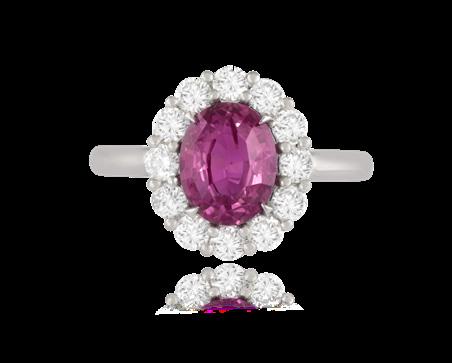
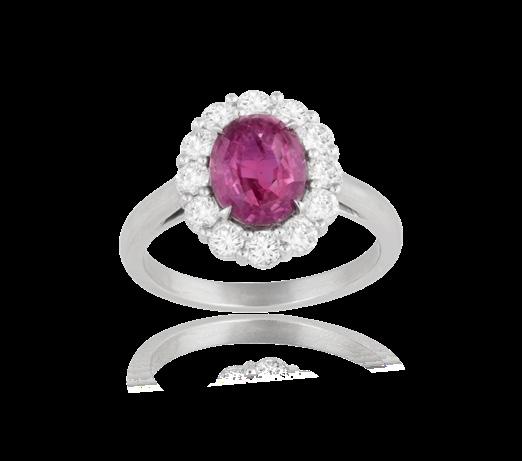
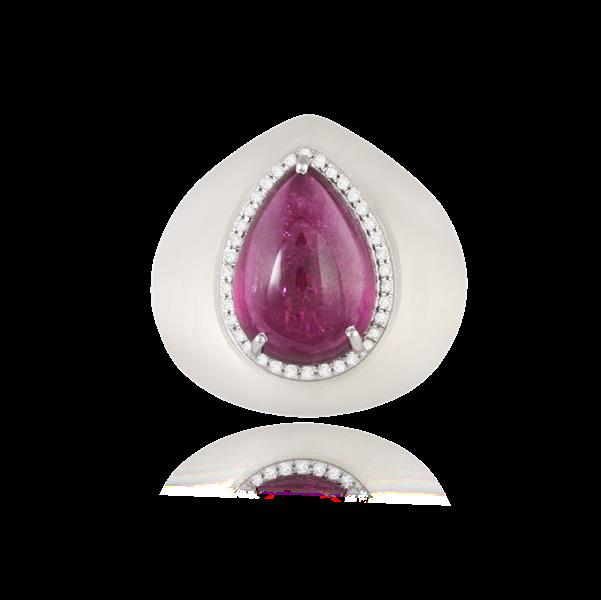

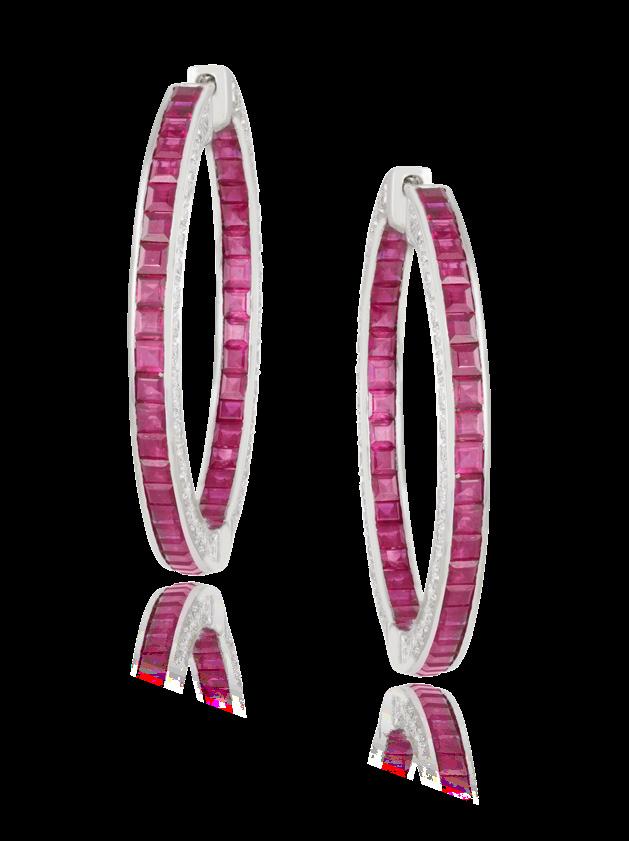
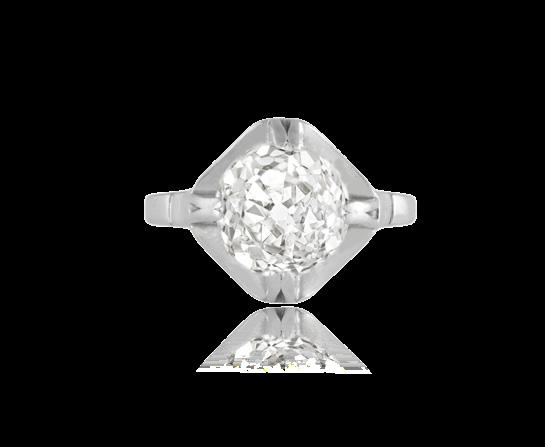
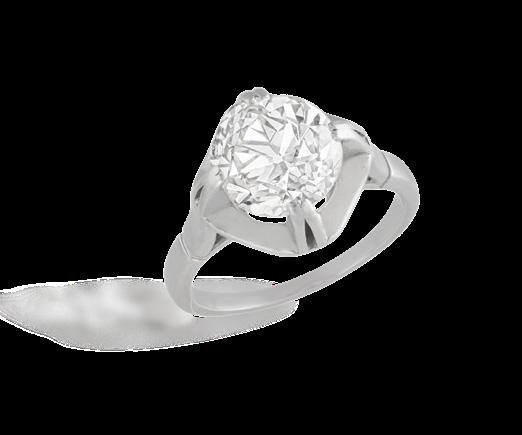
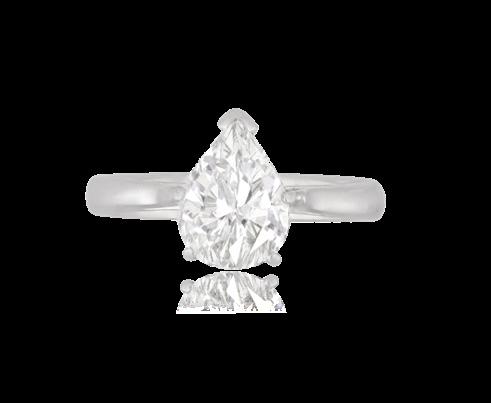
296
The 28-jewel automatic co-axial movement, circular black dial with ‘supernova’ pattern, single-cut diamonds for numerals and date at 3, polished white gold Alpha-shaped luminous hands, to a polished stainless steel bezel, transparent case back with 4 screws, logo crown, to a black satin and leather strap with signed folding clasp, dial and movement signed, mov. no. 85394220 & no. Si14, with maker’s pouch and case, card of authenticity, case: 33mm
€ 1,500 - 2,000
298
A DIAMOND ETERNITY RING
Composed of a continuous row of baguette-cut diamonds within claw-setting, mounted in 18K white gold, diamonds approximately 2.50cts total, numbered, ring size N
€ 3,000 - 4,000
300
A SAPPHIRE AND DIAMOND RING
The cushion-shaped sapphire weighing 3.01cts, between a double four-claw setting, to half moon-shaped diamond shoulders, mounted in platinum, diamonds approximately 0.60ct total, ring size M
€ 5,000 - 6,000
Accompanied by a report from The Gem & Pearl Laboratory in London, stating that the natural sapphire is of Sri Lankan origin, with no indication of heating. Report number 25799, dated March 28th 2025.
Accompanied by a report from Guild laboratory in Asia, stating that the sapphire is of Sri Lankan origin, with no indication of thermal of heating. Report number 0107473415, dated December 31st 2024.
Designed as two interlocking rectangular-shaped frames, pavé-set with brilliant-cut diamonds, mounted in 18K white gold, with maker’s mark, English hallmarks for London 2014, ring size P
€ 700 - 900
Each hoop, pavé-set with brilliant-cut diamonds to the front and back, with heart motifs detailing on mounts, mounted in 18K gold, diamonds approximately 2.50cts total, numbered, length 3.2cm
€ 3,800 - 4,200
301
A STAINLESS STEEL, MOTHER-OF PEARL AND DIAMOND-SET ‘HAPPY SPORT’ WRISTWATCH
LIMITED EDITION
7-jewel Cal-955112 ETA movement, the circular mother-ofpearl dial with Roman quarters and batons for numerals, with steel hands and applied star motifs, embellished with two stars and a crescent moon floating within the dial, facets blue crown, polished bezel and brushed case with 8 screws on back, to a signed black leather strap and stainless steel buckle, dial and movement signed Chopard, case no. 14725018475, case 34mm
€ 800 - 1,200
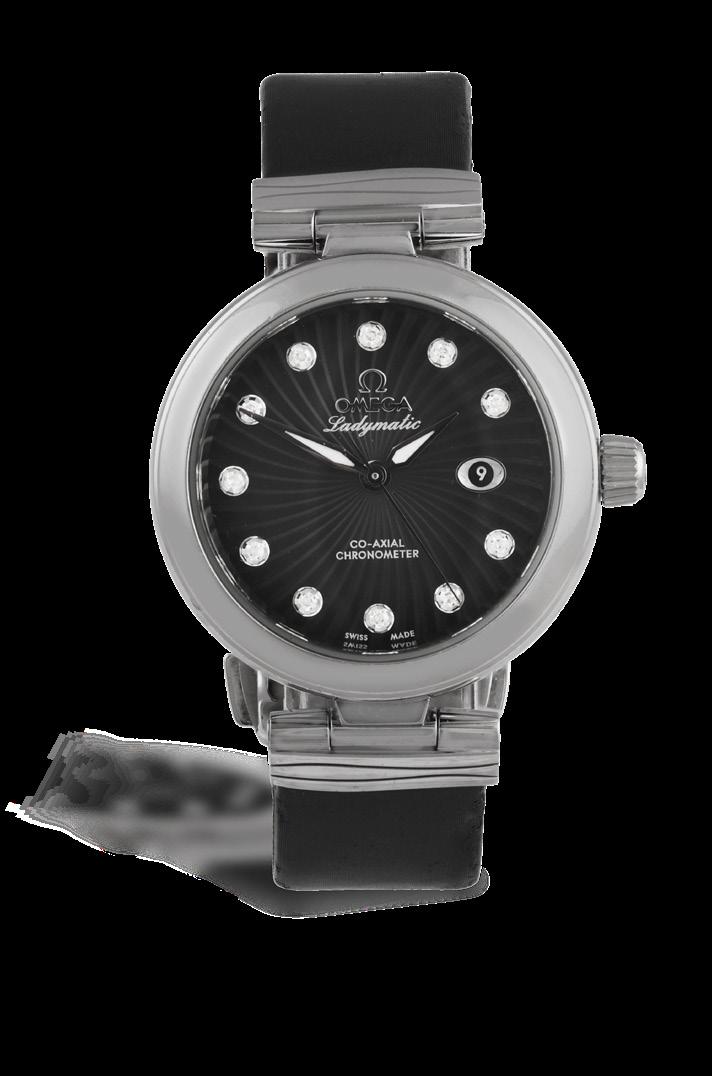
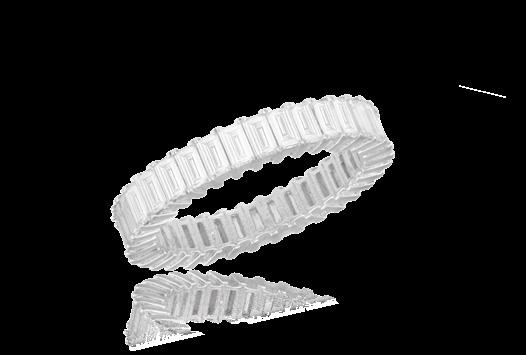
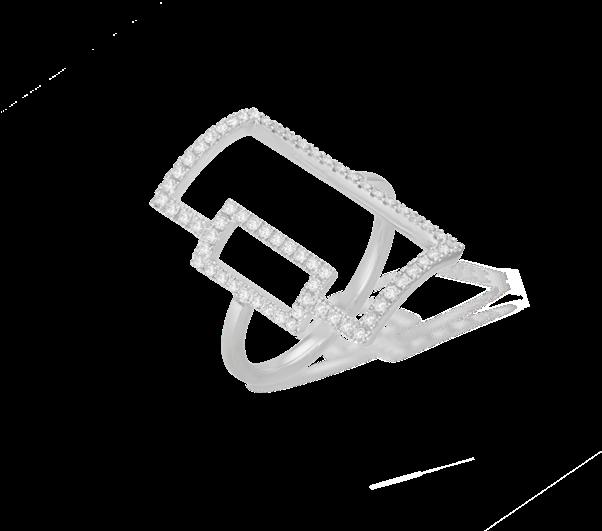
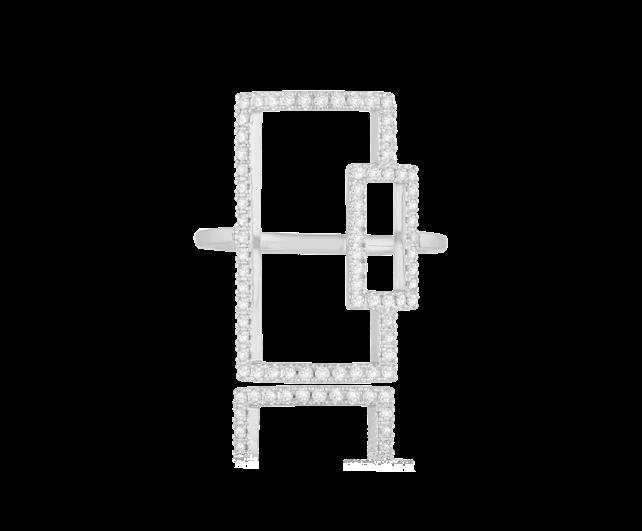
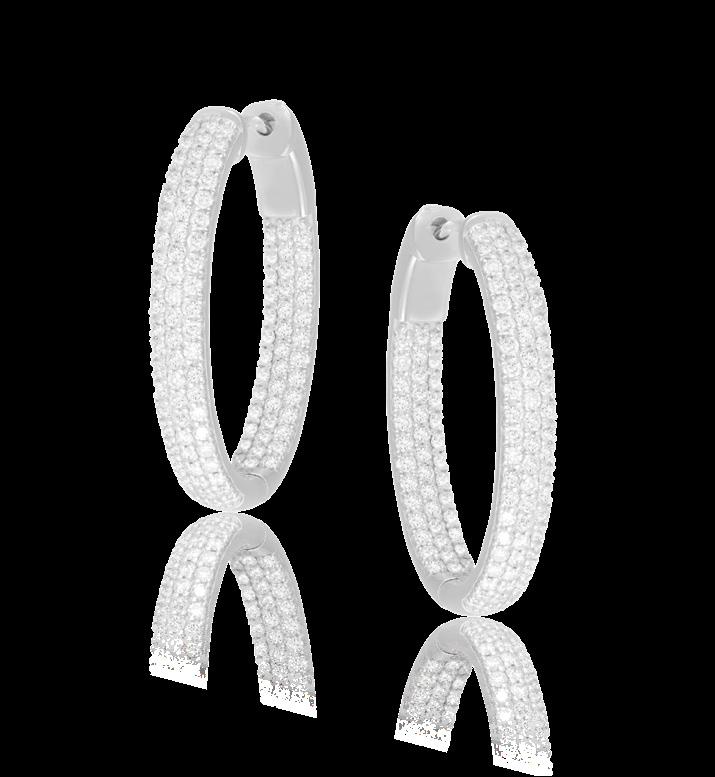
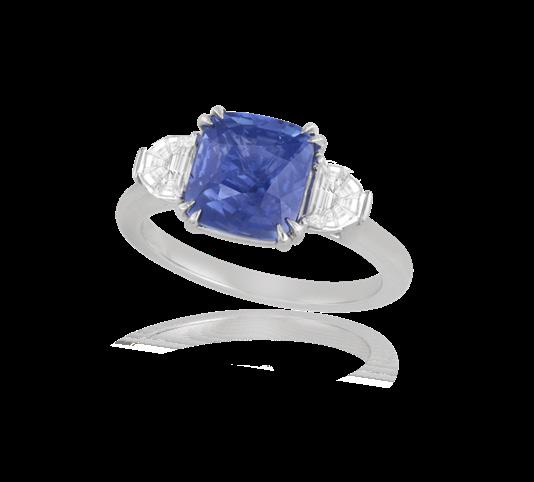
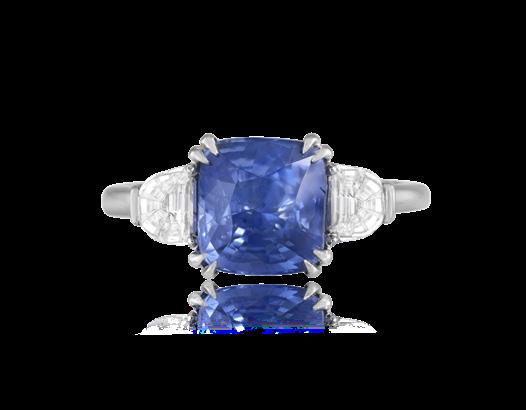
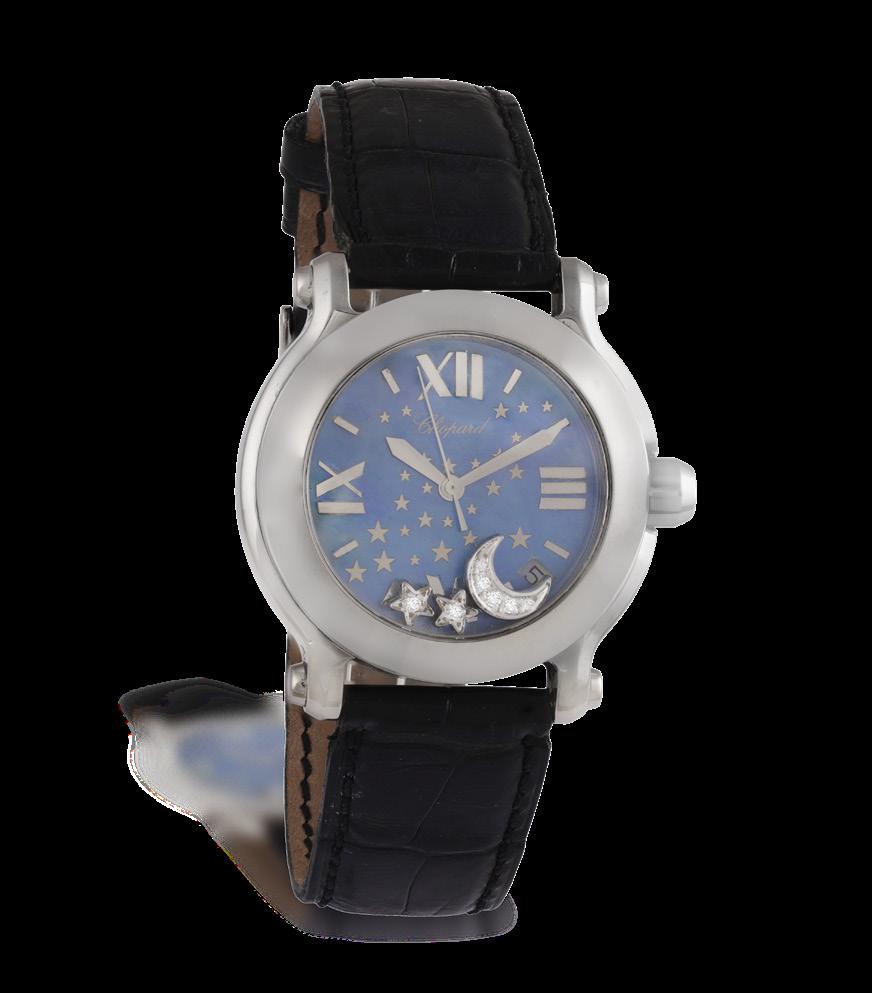
The oval-shaped diamond weighing 1.70cts, within a four-claw setting, to a brilliant-cut diamond surround and similarly-cut diamond shoulders, mounted in 18K gold, ring size M
€ 4,000 - 5,000
Accompanied by a report from the GIA laboratory in America, stating that the natural diamond, weighing 1.70cts, is K colour, SI1 clarity (with laser inscription). Report number 5463317575, dated April 20th 2023.
304
Of scallop shell design, in 18K gold, each signed Cartier Paris, with maker’s marks ‘PO’, French assay marks, length 1.5cm
€ 2,000 - 3,000
306
JAEGER-LECOULTRE: A LADY’S STAINLESS
STEEL ‘REVERSO’ BRACELET WATCH, CIRCA 2007
The 7-jewel Cal-1137 quartz movement, silver dial with Arabic numerals, black inner minute track, blued sword hands, polished reversible rectangular case with reeded ends, to a brown strap with deployant clasp signed, dial and movement signed, mov. no. 3450388, with maker’s case and certificate of authenticity, case 19mm
€ 800 - 1,000
303
Of bombé design, set with circular-cut emeralds, sapphires and rubies and brilliant-cut diamonds, mounted in 18K yellow gold, ring size P¼
€ 2,500 - 3,000
305
Of cluster design, centring a claw-set cushion-shaped ruby weighing approximately 3.30cts, within a brilliant-cut diamond surround, diamonds approximately 3.00cts total, ring size M
€ 7,000 - 8,000
307
Claw-set with a sapphire weighing approximately 4.60cts, between pear-shaped diamond shoulders set as hearts, mounted in 18K gold, diamonds approximately 0.70ct total, with maker’s mark, ring size M
€ 6,000 - 7,000
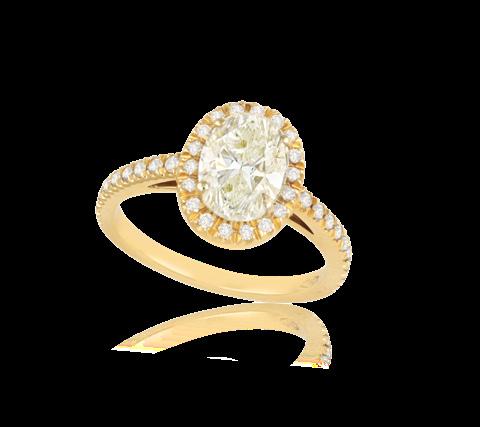
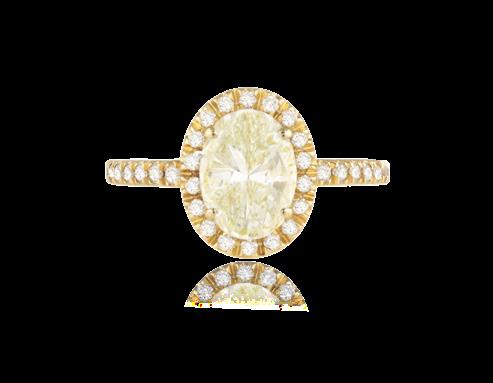
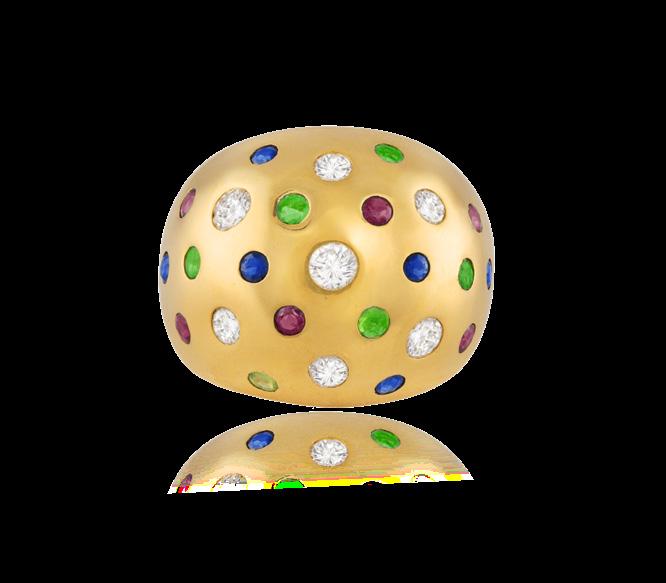
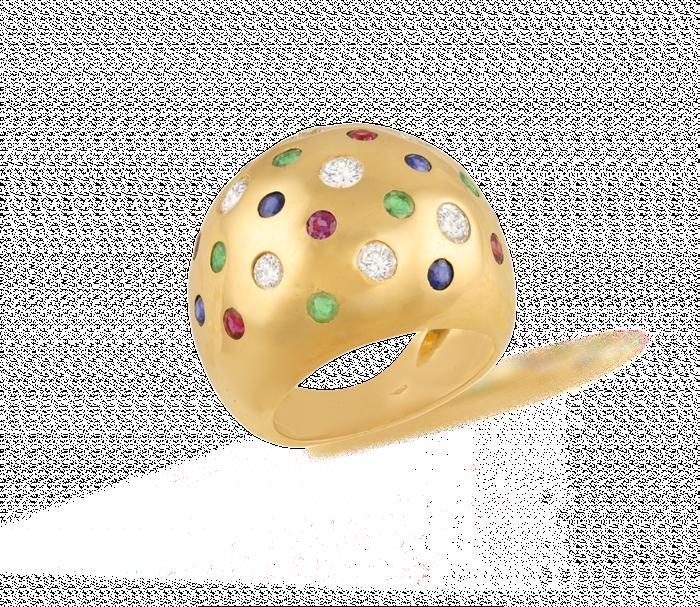
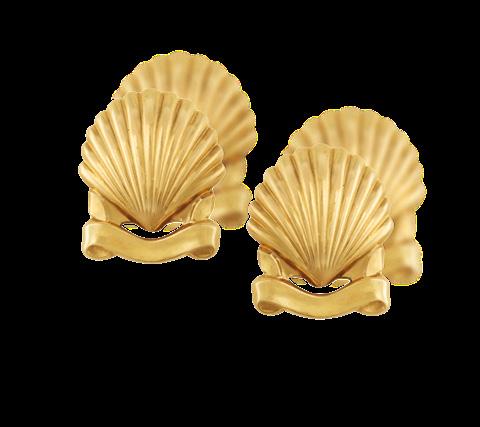
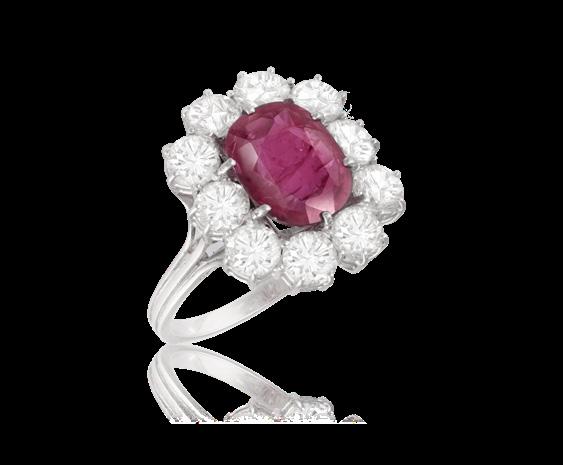
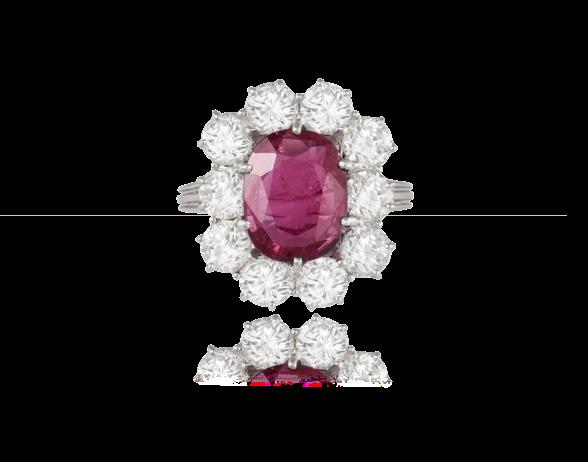
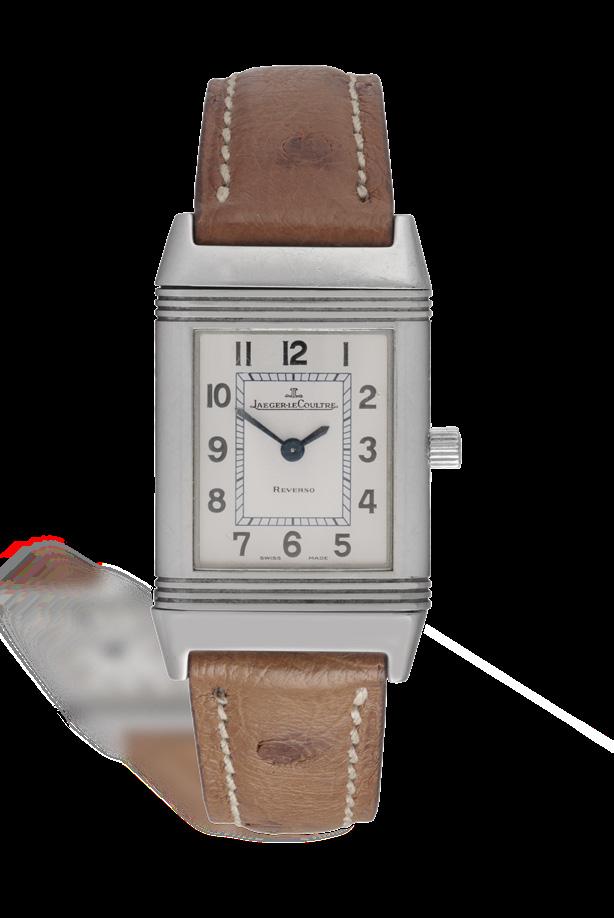

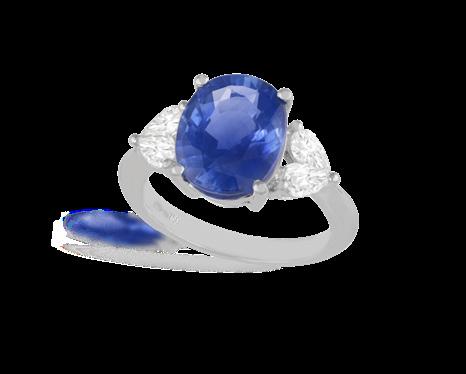
Adam’s Auctioneers act as agents to sell jewellery on behalf of predominantly, private clients. As such, the jewellery offered for sale at Adam’s is generally vintage or antique. When purchasing such jewellery it must be borne in mind that, as would be the case when purchasing a vintage car, it will require servicing from time to time. The purchasing of jewellery at auction allows you the opportunity to buy and own unique and rare pieces at a fraction of what it might cost to buy such pieces at retail. However, it is your responsibility as a buyer, to be aware of the specific attention such period pieces require and to bear in mind that this may include a regular, annual service by a reputable jeweller
In order for your jewellery to remain in the best condition, it should be kept in a clean, dry place. Damage can be easily avoided by storing pieces separately and by dividing them using tissue paper. Diamonds are extremely hard-wearing but attract grease, and so when cleaning they require hot water, a non-bleaching washing-up liquid such as fairy liquid and a soft toothbrush. The same process may be applied to rubies and sapphires. More fragile gemstones such as emeralds, aquamarines, morganite and heliodor should be washed with a lukewarm, not hot water, a similar washing-up liquid and a soft toothbrush and only for very short periods of time. Organic gemstones, such as coral, amber or pearls, should only be cleaned using a soft cloth and not washed at all. Additionally, Adam’s always recommends re-stringing pearls. If you have any queries regarding specific items we recommend reaching out to local jewellers who will be happy to help.
All jewellery sold at Adam’s is examined by an experienced gemmologist and is accompanied by a thorough catalogue’s description. If you require any specific, additional information, not provided in the catalogue description, do not hesitate to request a condition report, in advance of the auction, which we will be happy to provide.
Some gemstones offered for sale at Adam’s may be accompanied by their own laboratory report which will be clearly noted in the jewellery catalogue’s description. Additionally, some diamonds offered for sale which have been certified by the Gemological Institute of America (GIA) laboratory, may have a code laser inscribed to the girdle which is possible to look up on the GIA website, this will give you specific information with regards to the weight and grading of the diamond. If a diamond is laser inscribed, it will be mentioned in its catalogue description. If a gemstone isn’t accompanied by a laboratory report and doesn’t have a laser inscription, it will have been graded by our own gemmologists and this information is available in the condition report, not the catalogue description. Please note that carat weights given in the condition reports are those of mounted gemstones, and as such, allow for a discrepancy of between 5-10% with those that are unmounted. Adam’s recommends that buyers request a condition report before purchasing and examine both the report and the item carefully.
Natural and synthetic gems have the exact same chemical structure and because of this, can look extremely similar, if not identical. On occasion, Adam’s will sell synthetic gemstones giving buyers a chance to bid on beautiful pieces at more accessible prices. However, it will be clearly stated that they are synthetic. Retro pieces will commonly have small calibré-cut synthetic gemstones which is considered acceptable as gemstones were scarce during and post WWII.
All items of jewellery sold in our Fine Jewellery auctions are photographed in house by our experienced photography team and are displayed on Adam's website prior to the auction. Some images may include models. If you require additional images, please don’t hesitate to contact us at the Jewellery Department and we will be happy to supply you with additional images prior to the auction. Additional images may be helpful to give a sense of scale, especially if you are unable to make it to the viewing.
If an item of jewellery is accompanied by a case, pouch or certificate, this will be clearly stated in the catalogue’s description. All items purchased in Adam’s Fine Jewellery auctions are accompanied with a complimentary suede pouch. Ring boxes are available to purchase for an additional cost of 30 euros +VAT, to provide a unique and beautiful gift for a special occasion.
Finally, on collection of an item of jewellery from Adam’s, you, as a buyer should thoroughly examine the item and satisfy yourself as to its condition, double-checking that the condition agrees with the condition report. Unfortunately, once you have signed for and collected the item in question, Adam’s can no longer be held liable for the condition.
As we do not have an in-house shipping department, the following options are available to you: If you have your own Fedex or UPS account, you are welcome to provide it to us and we can pack and send your items to you. You can ship with a specialised jewellery shipper but the invoice made would be via Adam’s, so we can provide you with a quote and pack your items for you. You can also contact the shipping company directly and they will pack, pick up, send and invoice you directly.
Their contact details can be found on our website. If you require shipping outside of the EU, you would be entitled to reclaim the VAT on our premium against a proof of export document. This is something Ferrari and Mailboxes would be able to provide to us directly but if you choose your own courier, you will need to claim that proof of export directly with them.
For all jewellery and watch shipments, the jewellery department would be delighted to assist you.
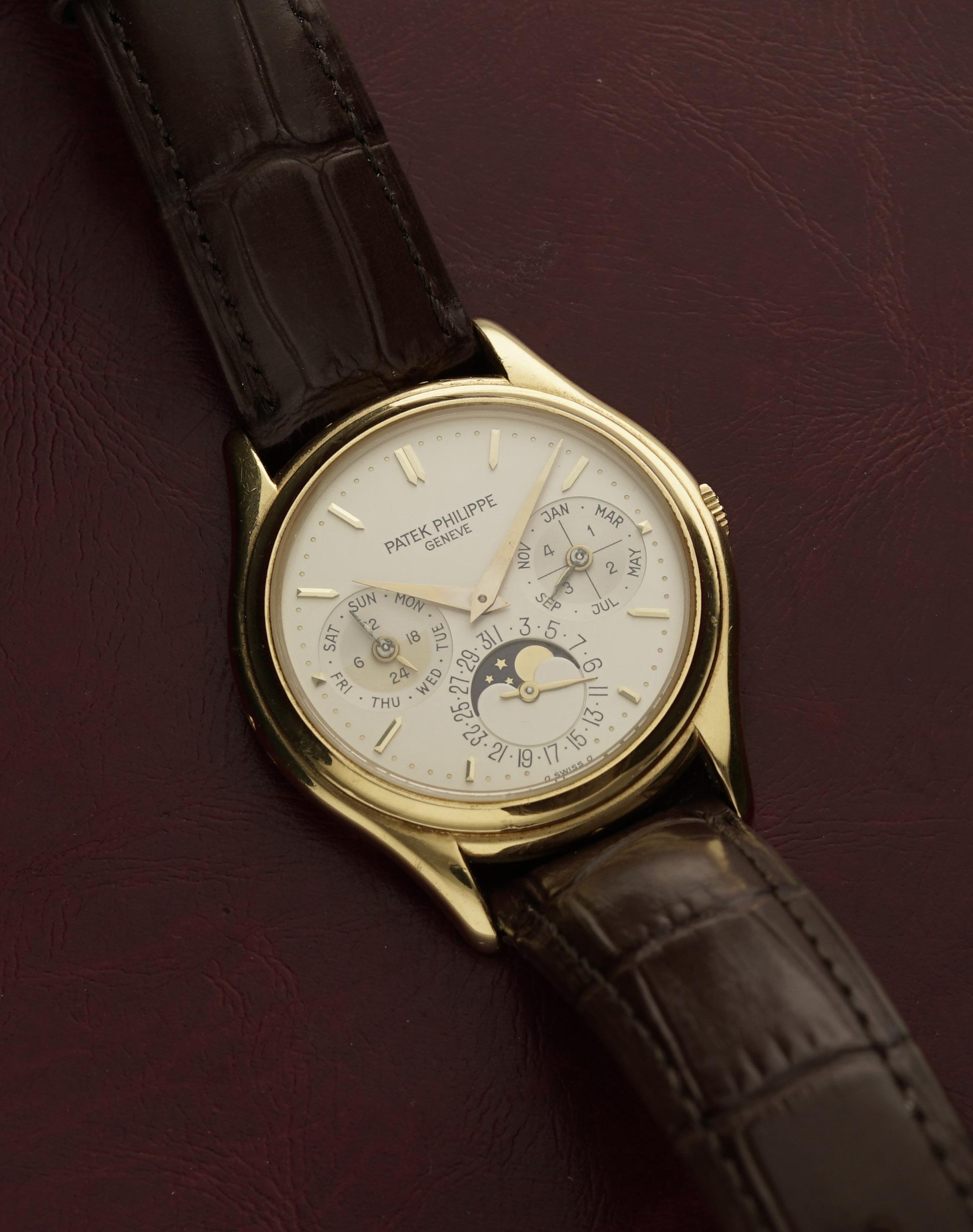

PATEK PHILIPPE
REF. 3940J, PERPETUAL CALENDAR, 18K YELLOW GOLD, THIRD SERIES, CERTIFICATE OF ORIGIN
A n important, attractive and well preserved 18K yellow gold, self-winding perpetual calendar wristwatch
Year : C. 1980
Dial : Third series silvered with applied gold baton hour markers. Applied gold dots minute track. Three sunken-sub-dials with leap year indicator, month, day, date, moonphase, day/night indicators. Gold Dauphine hands.
Calibre : Patek Philippe signed Cal 240Q ; numbered 773971
Case : Open display and 18K yellow gold case back both numbered 2936197
Bracelet : Brown leather strap with gilt pin buckle
Dimensions : Ø 36 mm
Signature : Dial, case, movement
Accessories : Box, papers, stylus, original hang tag, Patek Philippe winder
€ 30,000 - 50,000
43
REF. 78092, TANK NORMALE, 18K
YELLOW GOLD
A rare and elegant 18K yellow gold manual-winding wristwatch
Year : C.1980
Dial : Paris white with black painted Roman numeral hour markers. Inner minute track. Blued steel sword
hands
Caliber : Cal. 78/1 numbered
Case : numbered 780922208, Cartier makers mark and signature
Bracelet : Brown leather with original 18K Cartier deployment buckle
Dimensions : 23 x 30 mm
Approx. Weight : 33.5 grams
Signature : Dial, case, movement and Buckle
€ 8,000 - 12,000
41
CARTIER
TANK LOUIS CARTIER, JAEGER
LECOUTRE CASE & BUCKLE ,18K
YELLOW GOLD
A rare and elegant 18K yellow gold manual-winding wristwatch.
Year : C.1950
Dial : White with black painted Roman numeral hour markers. Inner minute track. Blued steel sword hands
Calibre : Cartier Signed based on Jaeger LeCoultre cal. K821, 18 jewels
Case : numbered 51998, Edmond Jaeger makers mark. Cartier service sticker
Bracelet : Black leather with Original 18K yellow and rose gold Cartier deployment buckle with Edmond Jaeger maker’s mark, numbered 19861
Dimensions : 23 x 30 mm
Approx. Weight : 36.5 grams
Signature : Dial, case, movement and Buckle
€ 6,000 - 9,000
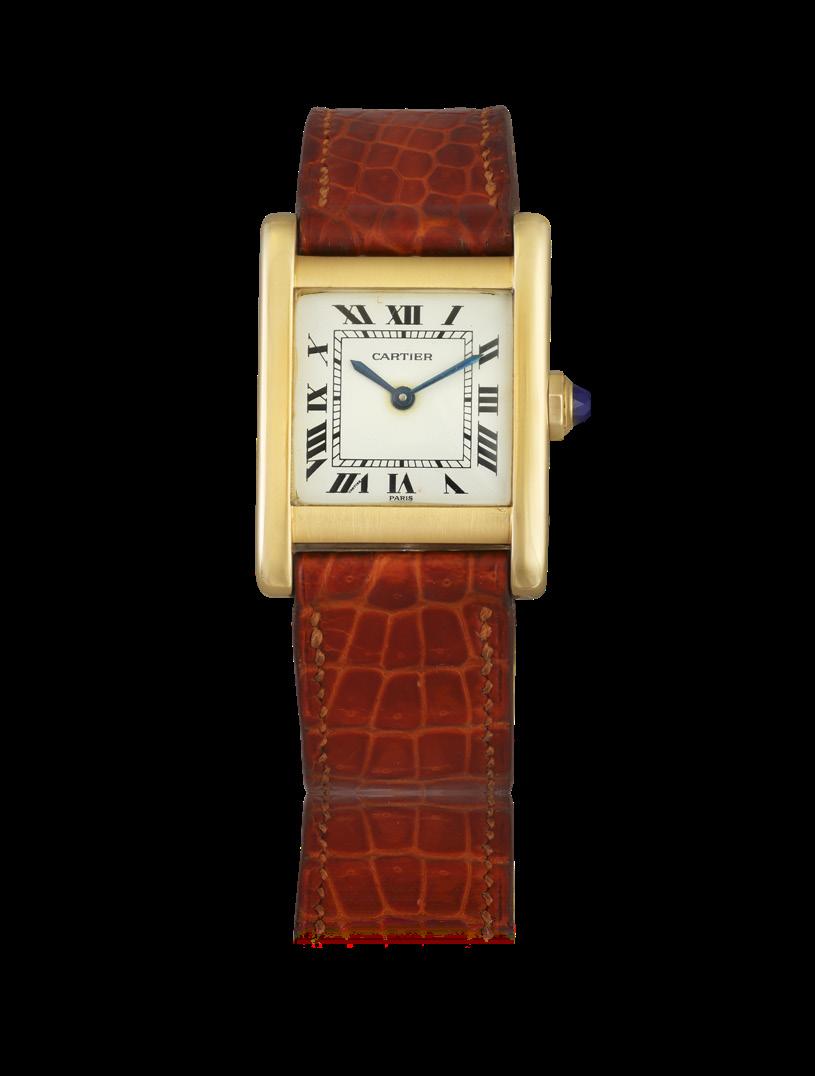

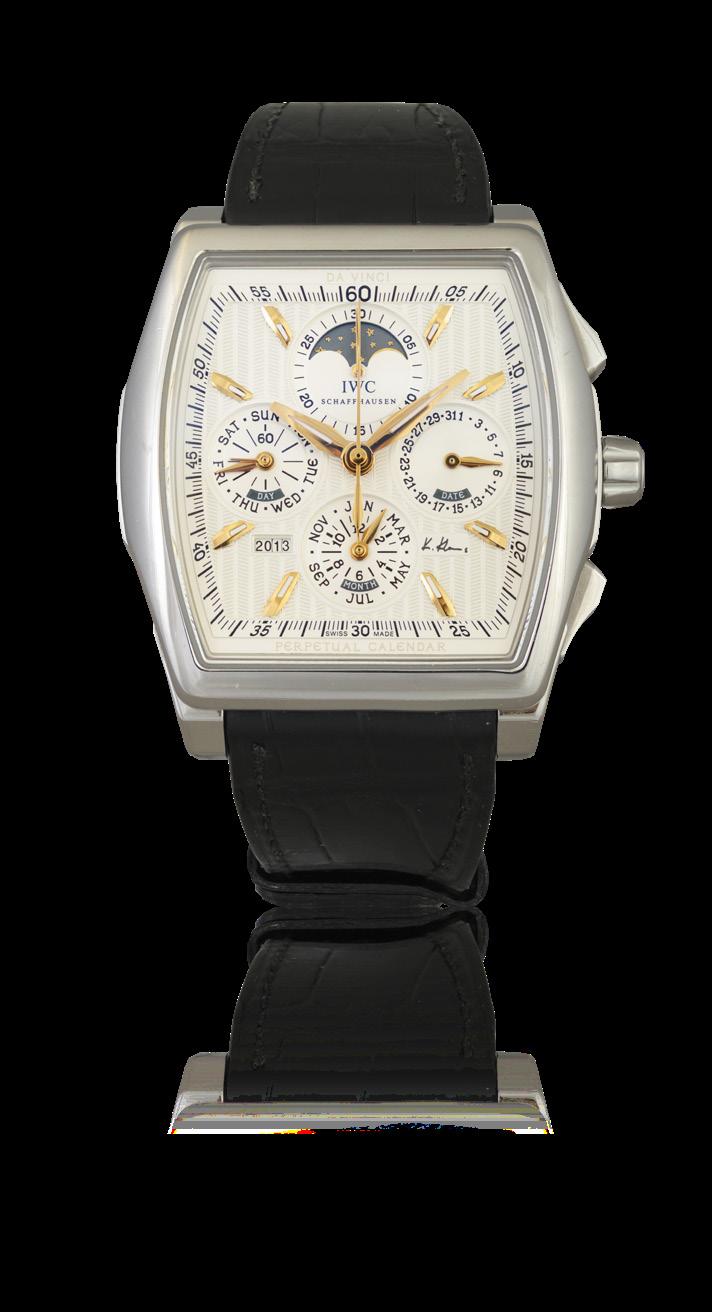
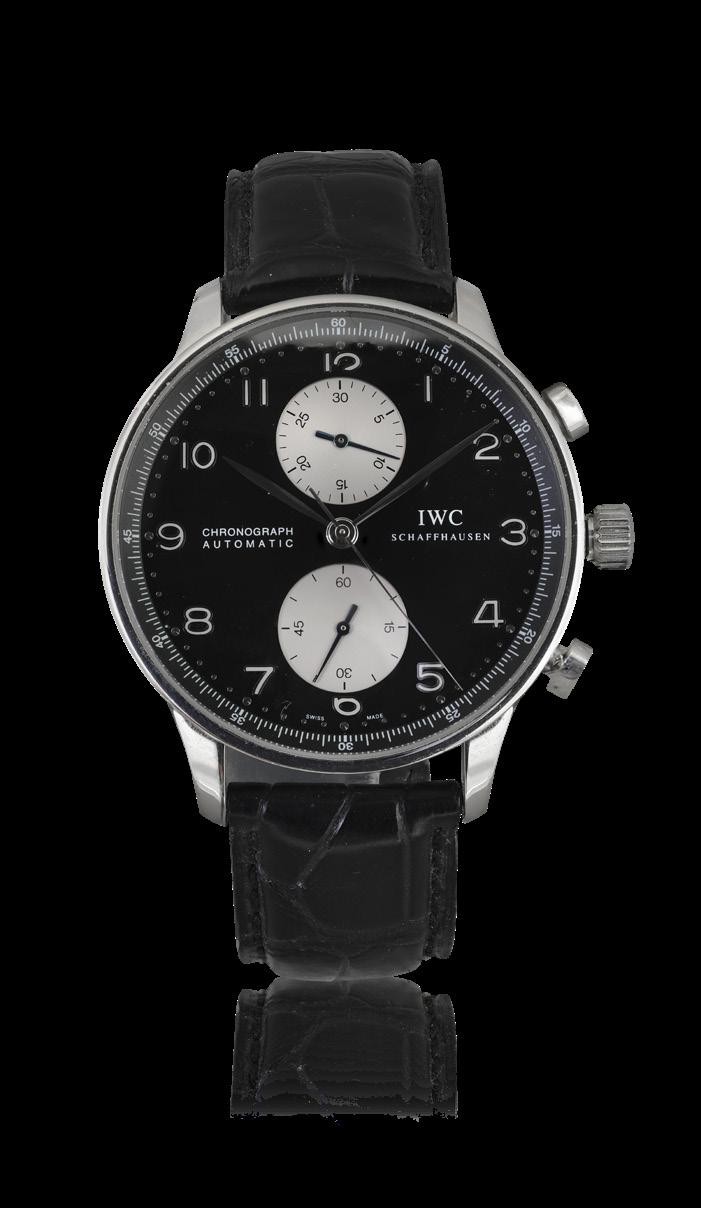
54
IWC
REF. 3762-07, “DA VINCI
PERPETUAL CALENDAR EDITION
KURT KLAUS”, LIMITED EDITION OF 3,000 PIECES
A large, self-winding, chronograph, minute and hour counters, secular millesimal perpetual calendar, moon phases, stainless steel wristwatch.
Year : C. 2010
Dial : white-silver guilloché (engine-turned) dial with applied radial luminescent indexes, subsidiary seconds at 9 and nine horological complications: 1/10 second chronograph, half-instantaneous 30-minute and moon phase at 12 o’clock, 12-hour recorder 6 o’clock, half-instantaneous secular perpetual calendar, date aperture at 3 o’clock, day of the week at 9 o’clock, month of the year at 6 o’clock, millesimal of the year aperture at 7:30 ; century, decade and year
Calibre : IWC Signed Calibre 79261, 39 jewels
Case : Number 0668/3000 limited serial 3422721
Bracelet : IWC black leather strap with original IWC stainless steel folding clasp
Dimensions : 51 x 42.8 mm
Signature : Dial, case, movement bracelet and buckle
€ 6,000 - 8,000
47
IWC
REF IW3714, PORTUGIESER, CHRONOGRAPH
A fine stainless steel self-winding chronograph wristwatch
Year : C. 2010
Dial : Black dial with applied Arabic numerals hour markers. Outer applied dot minute track and 1/4th second. Two register chronograph, with blued steel hand for the 30-minutes and running seconds
Calibre : IWC calibre Cal. 79240, 31 jewels
Case : numbered 2851900
Bracelet : Black leather strap with IWC pin buckle
Dimensions : Ø 41 mm
Signature : Dial, case, movement and buckle
Accessories : Box and papers
€ 3,000 - 5,000
61
ROLEX
REF. 18038, OYSTER PERPETUAL
DAY-DATE, FLUTED BEZEL, OMBRÉ DIAMOND DIAL, 18K YELLOW GOLD
A very fine, 18K yellow gold, self winding centre-seconds wristwatch with day and date function
Year : 1984/1985
Dial : Brown ombré with applied gold and diamond and luminous dot hour markers. Outer half second and minute track. Day aperture at 12 o’clock. Bevelled date aperture at 3 o’clock. Gold luminous dress hands. Gold centre second. Fluted bezel
Caliber : Rolex Cal 3055, 27 jewels, numbered 1245234
Case : Serial 8800094
Bracelet : 18K yellow gold Rolex president bracelet Ref. 8385 (J3) with deployant clasp, approx. overall length 175 mm. 1 extra link.
Dimensions : Ø 36 mm
Signature : Dial, case, movement and bracelet
Accessories : Service pouch, 1 extra link
€ 18,000 - 22,000
58
ROLEX
REF. 6917, OYSTER PERPETUAL DATEJUST, 18K YELLOW GOLD
A fine and elegant 18K yellow gold, self winding lady’s wristwatch with date
Year : 1977
Dial : Gold with gold baton hour markers, Luminous dots. Bevelled date aperture at 3 o’clock. Gold luminous dress hands ; gold centre-second hand
Calibre : Rolex Cal 2030, 28 jewels numbered
Case : Circa 1977 ; numbered 5483051
Bracelet : 18K yellow gold Rolex president bracelet with folding clasp, approx. overall length 170 mm
Dimensions : Ø 26 mm
Signature : Dial, case, movement and bracelet
€ 4,500 - 5,500

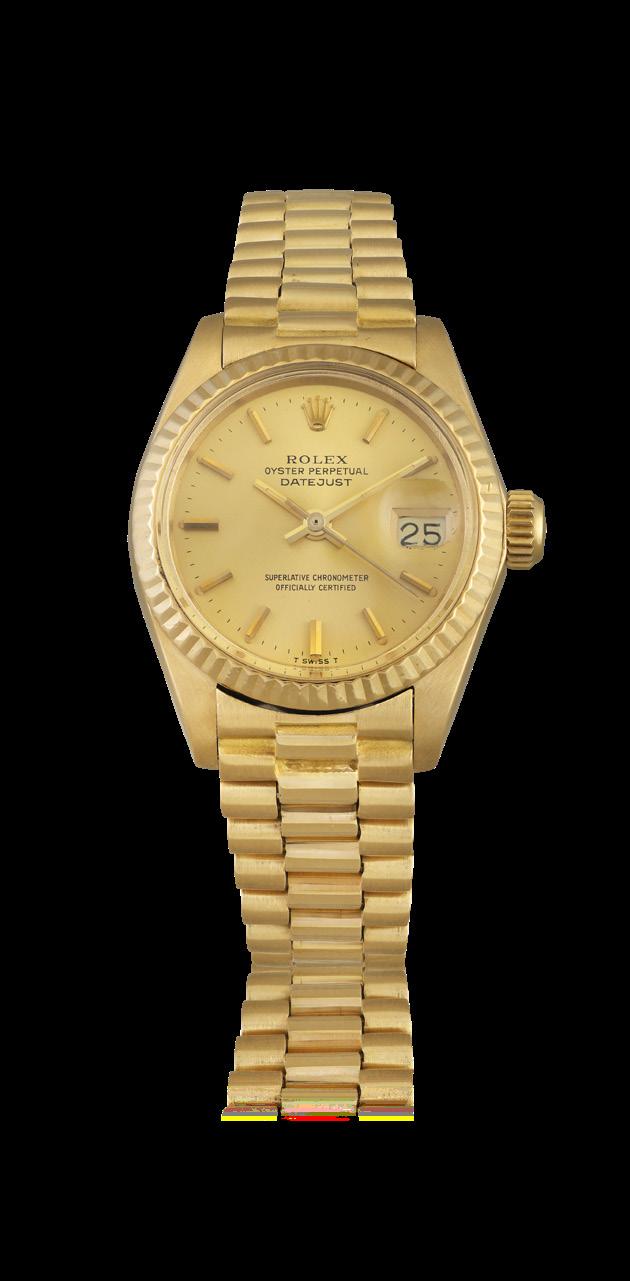
AUDEMARS PIGUET
REF. 5548, QUANTIEME PERPETUEL AUTOMATIQUE, 18K YELLOW GOLD, SOLAR WINDER
A very rare, early and well preserved 18K yellow gold, self-winding quantieme perpetual calendar wristwatch
Year : C. 1980
Dial : White with applied gold baton and dot hour markers. Black painted minute track. Four sunken-sub-dials with blued steel sword hands for day, month, date and moon-phases. Gold baton hands
Calibre : AP Signed Automatic Cal. 2120/4 Numbered 549874 - 38 jewels
Case : Numbered B62986 ; N°478
Bracelet : Black leather strap with original 18K yellow gold Audemars Piguet pin buckle
Dimensions : Ø 36 mm
Signature : Dial, case, movement and buckle
Accessories : Box, travel pouch, solar winder
€ 10,000 - 15,000
Production 1978 -1991
Jaqulin Dimmer, famed for her incredible contribution to the Royal Oak, was the design mastermind behind this original REF. 5548 Audemars Piguet Quantieme perpetuel. The 5548 was her playground from which she went on to design a vast number of magnificent models and variations.
The reference 5548 is famously the first wristwatch to be fitted with the ultra-thin calibre 2120 and went on to become a huge success for the company, the most prolific perpetual calendar in its time for Audemars Piguet, selling at its peak 675 examples in a single year. The reference 5548 can be found across both B & early C series like our exemplar, numbered B62986.
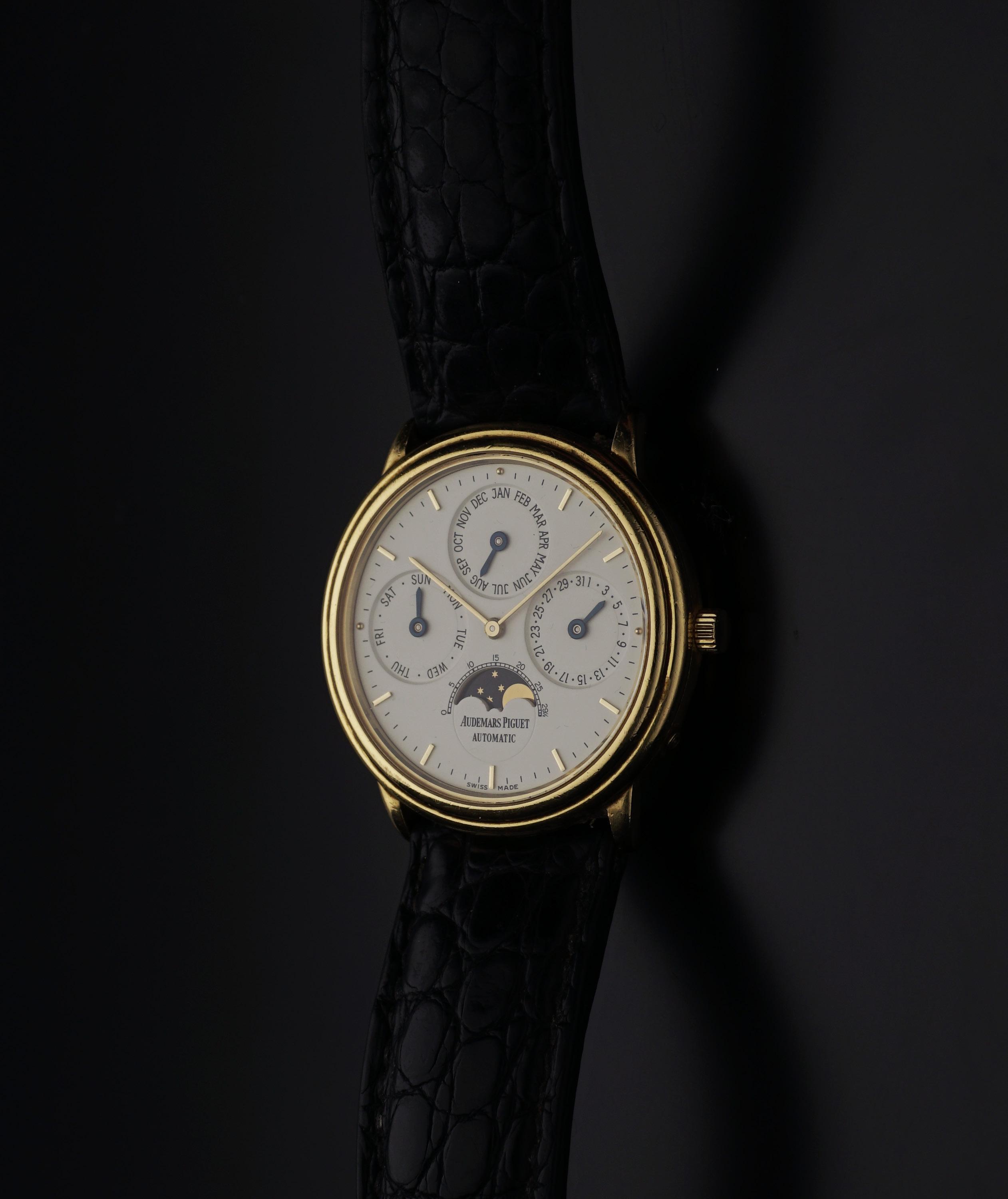
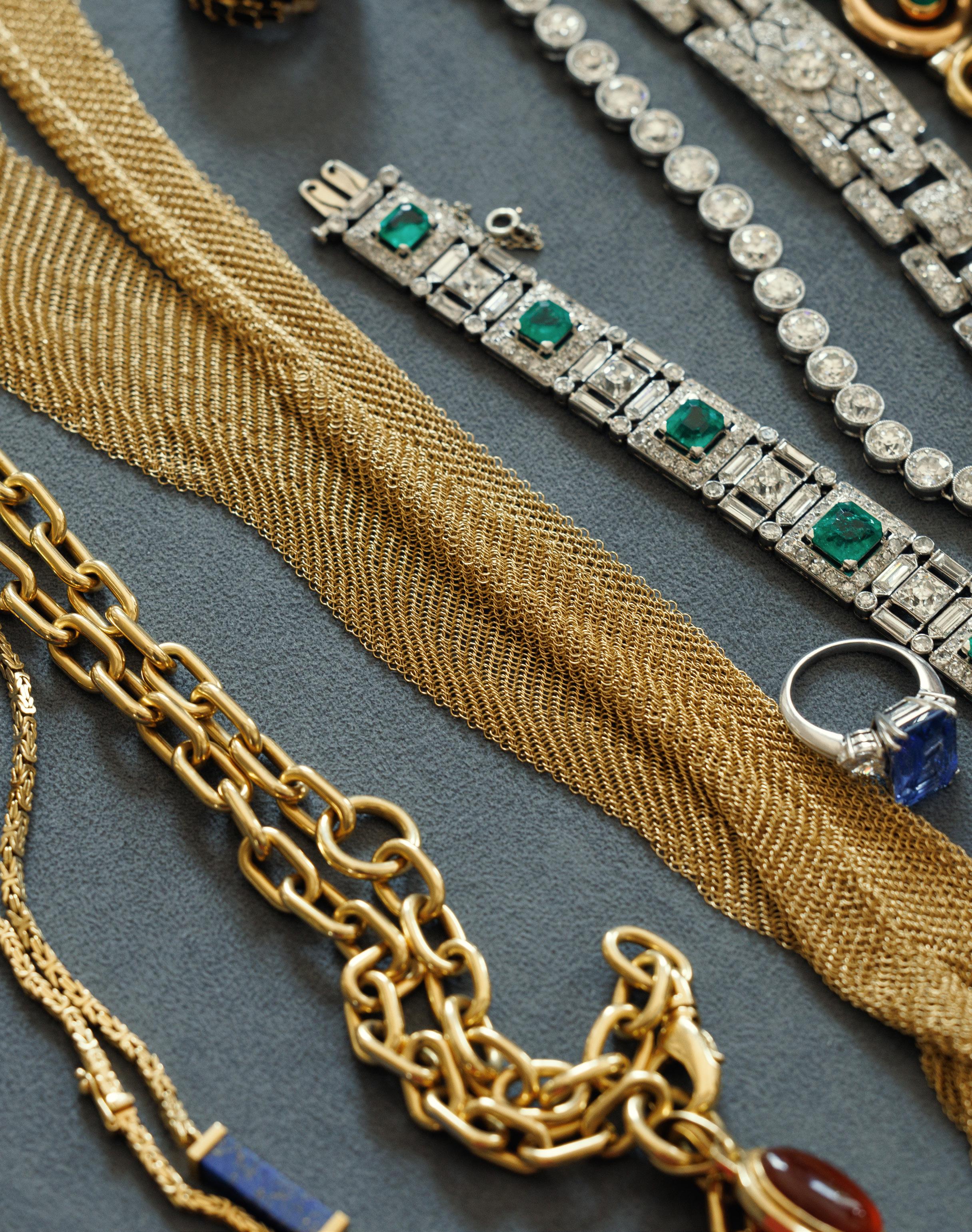
The Auctioneer carries on business on the following terms and conditions and on such other terms or conditions as may be expressly agreed with the Auctioneer or set out in any relevant Catalogue. Conditions 12-21 relate mainly to buyers and conditions 22-32 relate mainly to sellers. Words and phrases with special meanings are defined in condition 1. Buyers and sellers are requested to read carefully the Cataloguing Practice and Catalogue Explanation contained in condition 2.
1. In these conditions the following words and expressions shall have the following meaings:
‘Auctioneer’ – James Adam & Sons.
‘Auctioneer’s Commission’ – The commission payable to the Auctioneer by the buyer and seller as specified in conditions 13 and 25.
‘Catalogue’ – Any advertisement, brochure, estimate, price list or other publication.
‘Forgery’ – A Lot which was made with the intention of deceiving with regard to authorship, culture, source, origin, date, age or period and which is not shown to be such in the description therefore in the Catalogue and the market value for which at the date of the auction was substantially less than it would have been had the Lot been in accordance with the Catalogue description.
‘Hammer Price’ – The price at which a Lot is knocked down by the Auctioneer to the buyer.
‘Lot’ – Any item which is deposited with the Auctioneer with a view to its sale at auction and, in particular, the item or items described against any Lot number in any Catalogue.
‘Proceeds of Sale’ – The net amount due to the seller being the Hammer Price of the Lot after deducting the Auctioneer’s Commission thereon under condition 25 the seller’s contribution towards insurance under condition 26, such VAT as is chargeable and any other amounts due by the seller to the Auctioneer in whatever capacity howsoever arising.
‘Registration Form or Register’ – The registration form (or, in the case of persons who have previously attended at auctions held by the Auctioneer and completed registration forms, the register maintained by the Auctioneer which is compiled from such registration forms) to be completed and signed by each prospective buyer or, where the Auctioneer has acknowledged pursuant to condition 12 that a bidder is acting as agent on behalf of a named principal, each such bidder prior to the commencement of an auction.
‘Sale Order Form’ – The sale order form to be completed and signed by each seller prior to the commencement of an auction.
‘Total Amount Due’ – The Hammer Price of the Lot sold, the Auctioneer’s Commission due thereon under condition 13, such VAT as is chargeable and any additional interest, expenses or charges due hereunder.
‘V.A.T.’ – Value Added Tax.
Cataloguing Practice and Catalogue Explanations
2. Terms used in Catalogues have the following meanings and the Cataloguing Practice is as follows:
The first name or names and surname of the artist; In the opinion of the Auctioneer a work by the artist.
The initials of the first name(s) and the surname of the artist; In the opinion of the Auctioneer a work of the period of the artist and which may be in whole or in part the work of the artist.
The surname only of the artist; In the opinion of the Auctioneer a work of the school or by one of the followers of the artist or in his style.
The surname of the artist preceded by ‘after’; In the opinion of the Auctioneer a copy of the work of the artist. ‘Signed’/’Dated’/’lnscribed’; In the opinion of the Auctioneer the work has been signed/dated/inscribed by the artist.
‘With Signature’/’with date’/’with inscription’; In the opinion of the Auctioneer the work has been signed/dated/inscribed by a person other than the artist.
‘Attributed to’; In the opinion of the Auctioneer probably a work of the artist.
‘Studio of/Workshop of’ In the opinion of the Auctioneer a work executed in the studio of the artist and possibly under his supervision.
‘Circle of’; In the opinion of the Auctioneer a work of the period of the artist and showing his influence.
‘Follower of’; In the opinion of the Auctioneer a work executed in the artist’s style yet not necessarily by a pupil.
‘Manner of’; In the opinion of the Auctioneer a work executed in artist’s style but of a later date. ‘*’;
None of the terms above are appropriate but in the Auctioneer’s opinion the work is a work by the artist named.
Auctioneer Acting as Agent
3. The Auctioneer is selling as agent for the seller unless it is specifically stated to the contrary. The Auctioneer as agent for the seller is not responsible for any default by the seller or the buyer.
Auctioneer Bidding on behalf of Buyer
4. It is suggested that the interests of prospective buyers are best protected and served by the buyers attending at an auction. However, the Auctioneer will, if instructed, execute bids on behalf of a prospective buyer. Neither the Auctioneer nor its employees, servants or agents shall be responsible for any neglect or default in executing bids or failing to execute bids.
Admission to Auctions
5. The Auctioneer shall have the right exercisable in its absolute discretion to refuse admission to its premises or attendance at its auctions by any person.
Acceptance of Bids
6. The Auctioneer shall have the right exercisable in its absolute discretion to refuse any bids, advance the bidding in any manner it may decide, withdraw or divide any Lot, combine any two or more Lots and, in the case of a dispute, to put any Lot up for auction again.
Indemnities
7. Any indemnity given under these conditions shall extend to all actions, proceedings, claims, demands, costs and expenses whatever and howsoever incurred or suffered by the person entitled to the benefit of the indemnity and the Auctioneer declares itself to be a trustee of the benefit of every such indemnity for its employees, servants or agents to the extent that such indemnity is expressed to be for their benefit.
Representations in Catalogues
8. Representations or statements made by the Auctioneer in any Catalogue as to contribution, authorship, genuineness, source, origin, date, age, provenance, condition or estimated selling price or value is a statement of opinion only. Neither the Auctioneer nor its employees, servants or agents shall be responsible for the accuracy of any such opinions. Every person interested in a Lot must exercise and rely on their own judgment and opinion as to such matters.
9. The headings of the conditions herein contained are inserted for convenience of reference only and are not intended to be part of, or to effect, the meaning or interpretation thereof.
Governing Law
10. These conditions shall be governed by and construed in accordance with Irish Law.
Notices
11. Any notice or other communication required to be given by the Auctioneer hereunder to a buyer or a seller shall, where required, be in writing and shall be sufficiently given if delivered by hand or sent by post to, in the case of the buyer, the address of the buyer specified in the Registration Form or Register, and in the case of the seller, the address of the seller specified in the Sale Order Form or to such other address as the buyer or seller (as appropriate) may notify the Auctioneer in writing. Every notice or communication given in accordance with this condition shall be deemed to have been received if delivered by hand on the day and time of delivery and if delivered by post three (3) business days after posting.
The Buyer
12. The buyer shall be the highest bidder acceptable to the Auctioneer who buys at the Hammer Price. Any dispute which may arise with regard to bidding or the acceptance of bids shall be settled by the Auctioneer. Every bidder shall be deemed to act as principal unless the Auctioneer has prior to the auction, acknowledged in writing that a bidder is acting as agent on behalf of a named principal.
Commission
13. The buyer shall pay the Auctioneer a commission at the rate of 20.325%, exclusive of V.A.T..
Payment
14. Unless credit terms have been agreed with the Auctioneer before the auction the buyer of a Lot shall pay to the Auctioneer within one (1) day from the date of the auction the Total Amount Due. Notwithstanding this, the Auctioneer may, in its sole discretion, require a buyer to pay a deposit of 25% of the Total Amount Due at the conclusion of the auction.
The Auctioneer may apply any payments received by a buyer towards any sums owing from that buyer to the Auctioneer on any account whatever regardless of any directions of the buyer or his agent in that regard whether express or implied.
The Auctioneer shall only accept payment from successful bidders in cash or by the bidder’s own cheque. Cheques drawn by third parties, whether in the Auctioneer’s favour or requiring endorsement, shall not be accepted.
15. Notwithstanding delivery or passing of risk to the buyer the ownership of a Lot shall not pass to the buyer until he has paid to the Auctioneer the Total Amount Due.
16. The buyer shall at his own expense collect the Lot purchased not later than seven (7) days after the date of the auction but (unless credit terms have been agreed with the Auctioneer pursuant to condition 14) not before payment to the Auctioneer of the Total Amount Due.
The buyer shall be responsible for any removal, storage and insurance charges in respect of any Lot which is not taken away within seven (7) days after the date of the auction.
The purchased Lot shall be at the buyer’s risk in all respects from the earlier of the time of collection or the expiry of one (1) day from the date of the auction. Neither the Auctioneer nor its employees, servants or agents shall thereafter be liable for any loss or damage of any kind howsoever caused while a purchased Lot remains in its custody or control after such time.
17. Purchased Lots may be packed and handled by the Auctioneer, its employees, servants or agents. Where this is done it is undertaken solely as a courtesy to buyers and at the discretion of the Auctioneer. Under no circumstances shall the Auctioneer, its employees, servants or agents be liable for damage of any kind and howsoever caused to glass or frames nor shall the Auctioneer be liable for the errors or omissions of, or for any damage caused by, any packers or shippers which the Auctioneer has recommended.
18. If a buyer fails to pay for and/or collect any purchased Lot by the dates herein specified for payment and collection the Auctioneer shall, in its absolute discretion and without prejudice to any other rights or remedies it may have, be entitled to exercise one or more of the following rights or remedies without further notice to the buyer:
(a) To issue court proceedings for damages for breach of contract;
(b) To rescind the sale of that Lot or any other Lots sold to the buyer whether at that or at any other auction;
(c) To resell the Lot or cause it to be resold whether by public auction or private sale. In the event that there is a deficiency between the Total Amount Due by the buyer and the amount received by the Auctioneer on such resale after deduction of any necessary expenses the difference shall be paid to the Auctioneer by the buyer. Any surplus arising shall belong to the seller.
(d) To store (whether at the Auctioneer’s premises or elsewhere) and insure thepurchased Lot at the expense of the buyer.
(e) To charge interest on the Total Amount Due at the rate of 2% over and above the base rate from time to time of Bank of Ireland or if there be no such rate, the nearest equivalent thereto as determined by the Auctioneer in its absolute discretion from the date on which payment is due hereunder to the date of actual payment.
(f) To retain that Lot or any other Lot purchased by the buyer whether at the same or any other auction and release same to the buyer only after payment to the Auctioneer of the Total Amount Due.
(g) To apply any sums which the Auctioneer received in respect of Lots being sold by the buyer towards settlement of the Total Amount Due.
(h) To exercise a lien on any property of the buyer in the possession of the Auctioneer or whatever reason.
Liability of Auctioneer and Seller
19. Prior to auction ample opportunity is given for the inspection of the Lots on sale and each buyer by making a bid acknowledges that he has, by exercising and relying on his own judgment, satisfied himself as to the physical condition, age and Catalogue description of each Lot (including but not restricted to whether the Lot is damaged or has been repaired or restored). All Lots are sold with all faults and imperfections and errors of description. None of the seller, the Auctioneer nor any of their employees, servants or agents shall be responsible for any error of description or for the condition or authenticity of any Lot. No warranty whatsoever is given by the seller or Auctioneer or by any of their employees, servants or agents in respect of any Lot and any condition or warranty express or implied by statute or otherwise is hereby specifically excluded.
Forgeries
20. Any amount paid by a buyer in respect of a Lot which, if it is proved within three (3) years of the date of the auction at which it was purchased, to have been a Forgery shall be refunded to the seller subject to the provisions hereof, provided that:
(a) The Lot has been returned by the buyer to the Auctioneer within three (3) years of the date of the auction in the same condition in which it was at the time of the auction together with evidence proving that it is a Forgery, the number of the Lot and the date of the auction at which it was purchased;
(b) The Auctioneer is satisfied that the Lot is a Forgery and that the buyer has and is able to transfer good and marketable title to the Lot free from any third party claims;
FURTHER PROVIDED THAT the buyer shall have no rights hereunder if:
(i) The description of the Lot in the Catalogue at the time of the auction was in accordance with the then generally accepted opinion of scholars or experts or fairly indicated that there was a conflict of such opinion;
(ii) The only method of establishing at the time of the auction in question that the Lot was a Forgery would have been by means of scientific processes which were not generally accepted for use until after the date of the auction or which were unreasonably expensive or impractical.
The buyer’s sole entitlement under this condition is to a refund of the actual amount paid by him in respect of the Lot. Under no circumstances shall the Auctioneer be liable for any damage, loss (including consequential, indirect or economic loss) or expense suffered or incurred by the buyer by reason of the Lot being a Forgery.
The benefit of this condition shall be solely and exclusively for the buyer and shall not be assignable. The buyer shall for the purpose of this condition be the person to whom the original invoice in respect of the sale of the Lot is made.
Photographs 21. The buyer authorises the Auctioneer at any time to make use of any photographs or illustrations of the Lot purchased by the buyer for such purposes as the Auctioneer may require.
CONDITIONS WHICH MAINLY CONCERN THE SELLER
Auctioneer’s Discretion
22. With regard to the sale of any Lot the Auctioneer shall have the following powers exercisable solely in the discretion of the Auctioneer:
(i) To decide whether to offer any Lot for sale or not;
(ii) To decide whether a particular Lot is suitable for sale by the Auctioneer and, if so, to determine which auction, the place and date of sale, the conditions of sale and the manner in which such sale should be conducted;
(iii) To determine the description of any Lot in a Catalogue.
(iv) To decide whether the views of any expert shall be obtained and to submit Lots for examination by any such experts.
(v) To determine what illustration of a Lot (if any) is to be included in the Catalogue.
Seller’s Warranty and Indemnity
23. The seller warrants to the Auctioneer and to the buyer that he is the true owner of the Lot or is legally authorised to sell the Lot on behalf of the true owner and can transfer good and marketable title to the Lot free from any third party claims. As regards Lots not held by the Auctioneer on its premises or under its control the seller warrants and undertakes to the Auctioneer and the buyer that the Lot will be available and in a deliverable state on demand by the Auctioneer or buyer. The seller shall indemnify the Auctioneer and the buyer or any of their respective employees, servants or agents against any loss or damage suffered by any of them in consequence of any breach of the above warranties or undertakings by the seller.
24. Subject to the Auctioneer’s discretion, the seller shall be entitled prior to the auction to place a reserve on any Lot. All reserves must be agreed in advance by the Auctioneer and entered on the Sale Order Form or subsequently be confirmed in writing to the Auctioneer prior to auction. This also applies to changes in reserves. A reserve may not be placed upon any Lots under IR£100 in value. The reserve shall be the minimum Hammer Price at which the Lot may be sold by the Auctioneer. A reserve once in place may only be changed with the consent of the Auctioneer. A commission shall be charged on the ‘knock-down’ bid for Lots which fail to reach the reserve price. Such commission shall be 5% of the ‘knock-down’ bid. This commission and any VAT payable thereon must be paid before removal of the Lot after the auction. The minimum commission hereunder shall be IR £25. The Auctioneer may in its sole discretion sell a Lot at a Hammer Price below the reserve therefore but in such case the Proceeds of Sale to which the seller shall be entitled shall be the same as they would have been had the sale been at the reverse.
Unless a reserve has been placed on a Lot in accordance with the provisions set out above such Lot shall be put up for sale without reserve.
In the event that any reserve price is not reached at auction then for so long as the Lot remains with the Auctioneer and to the extent that the Lot has not been re-entered in another auction pursuant to condition 31 the seller authorises the Auctioneer to sell the Lot by private treaty at not less than the reserve price. The Auctioneer shall ensure that in such a case those conditions herein which concern mainly the buyer shall, with any necessary modification, apply to such sale.

These are heartbreaking words from a client of Dubl in Simon, who found himself sleeping rough around Dublin and feeling sc ared and isolated. The pain was so visible on his face when he told us : ‘ I had just hit rock bottom’ . We're happy to tell you that he has been supported by Dublin Simon Community to rebuild his life and his confidence. B ut there are still so many people who desperately need help, and we need your support to help them.
Please donate what you can, and we will work hard t o make sure it changes lives.

"All I asked for when I was homeless was for a roof over my head or a safe place, because I had NO SAFETY, NO SECURITY, NO WARMTH, NO COMFORT, NO LOVE." Donate now at: www.dubsimon.ie This Spring, Let Hope Grow Give Someone a Second Chance
Commission
25. The seller shall pay the Auctioneer commission at the rate of 10% on the Hammer Price of all Lots sold on behalf of the seller at Irish Art Sales and 17.5% on the Hammer Price of all Lots sold on behalf of the seller at Fine Art, Wine and Militaria Sales together with V.A.T. thereon at the applicable rate. The seller authorises the Auctioneer to deduct from the Hammer Price paid by the buyer the Auctioneer’s Commission under this condition; VAT payable at the applicable rates and any other amounts due by the seller to the Auctioneer in whatever capacity howsoever arising. The seller agrees that the Auctioneer may also receive commission from the buyer pursuant to condition 13.
26. Unless otherwise instructed by the seller, all Lots (with the exception of motor vehicles) deposited with the Auctioneer or put under its control for sale shall automatically be insured by the Auctioneer under the Auctioneer’s own fine arts policy for such sum as the Auctioneer shall from time to time in its absolute discretion determine. The seller shall pay the Auctioneer a contribution towards such insurance at the rate of 1% of the Hammer Price plus VAT. If the seller instructs the Auctioneer not to insure a Lot then the Lot shall at all times remain at the risk of the seller who undertakes to indemnify the Auctioneer and hold the Auctioneer harmless against any and all claims made or proceedings brought against the Auctioneer of whatever nature and howsoever and wheresoever occurring for loss or damage to the Lot. The sum for which a Lot is covered for insurance under this condition shall not constitute and shall not be relied upon by the seller as a representation, warranty or guarantee as to the value of the Lot or that the Lot will, if sold by the Auctioneer, be sold for such amount. Such insurance shall subsist until such time as the Lot is paid for and collected by the buyer or, in the case of Lots sold which are not paid for or collected by the buyer by the due date hereunder for payment or collection such due date or, in the case of Lots which are not sold, on the expiry of seven (7) days from the date on which the Auctioneer has notified the seller to collect the Lots.
Recision of Sale
27. If before the Auctioneer has paid the Proceeds of Sale to the seller the buyer proves to the satisfaction of the Auctioneer that the Lot sold is a Forgery and the requirements of condition 20 are satisfied the Auctioneer shall rescind the sale and refund to the buyer any amount paid to the Auctioneer by the buyer in respect of the Lot.
Payment of Proceeds of Sale
28. The Auctioneer shall remit the Proceeds of Sale to the seller not later than thirty (30) days after the date of the auction, provided however that, if by that date, the Auctioneer has not received the Total Amount Due from the buyer then the Auctioneer shall remit the Proceeds of Sale within seven (7) working days after the date on which the Total Amount Due is received from the buyer. If credit terms have been agreed between the Auctioneer and the buyer the Auctioneer shall remit to the seller the Proceeds of Sale not later than thirty (30) days after the date of the auction unless otherwise agreed by the seller.
If before the Total Amount Due is paid by the buyer the Auctioneer pays the seller an amount equal to the Proceeds of Sale then title to the Lot shall pass to the Auctioneer.
If the buyer fails to pay the Auctioneer the Total Amount Due within fourteen (14) days after the date of the auction, the Auctioneer shall endeavour to notify the seller and take the seller’s instructions on the course of action to be taken and, to the extent that it is in the sole opinion of the Auctioneer feasible, shall endeavour to assist the seller to recover the Total Amount Due from the buyer provided that nothing herein shall oblige the Auctioneer to issue proceedings against the buyer in the Auctioneer’s own name. If circumstances do not permit the Auctioneer to take instructions from the seller or, if after notifying the seller, it does not receive instructions within seven (7) days, the Auctioneer reserves the right, and is hereby authorised by the seller at the seller’s expense, to agree special terms for payments of the Total Amount Due, to remove, store and insure the Lot sold, to settle claims made by or against the buyer on such terms as the Auctioneer shall in its absolute discretion think fit, to take such steps as are necessary to collect monies due by the buyer to the seller and, if necessary, to rescind the sale and refund money to the buyer.
Payment of Proceeds to Overseas Sellers
29. If the seller resides outside Ireland the Proceeds of Sale shall be paid to such seller in Irish Punts unless it was agreed with the seller prior to the auction that the Proceeds of Sale would be paid in a currency (other than Irish Punts) specified by the seller in which case the Proceeds of Sale shall be paid by the Auctioneer to the seller in such specified currency (provided that that currency is legally available to the Auctioneer in the amount required) calculated at the rate of exchange quoted to the Auctioneer by its bankers on the date of payment.
Charges for Withdrawn Lots
30. Once catalogued, Lots withdrawn from sale before proofing/publication of Catalogue will be subject to commission of 5% of the Auctioneer’s latest estimate of the auction price of the Lot withdrawn together with VAT thereon and any expenses incurred by the Auctioneer in relation to the Lot. If Lots are withdrawn after proofing or publication of Catalogue they will be subject to a commission of 10% of the Auctioneer’s latest estimate of the auction price of the Lot withdrawn together with VAT thereon and any expenses incurred by the Auctioneer in relation to the Lot. All commission hereunder must be paid for before Lots withdrawn may be removed.
Unsold Lots
31. Where any Lot fails to sell at auction the Auctioneer shall notify the seller accordingly and (in the absence of agreement between the seller and the Auctioneer to the contrary) such Lot may, in the absolute discretion of the Auctioneer, be re-entered in the next suitable auction unless instructions are received from the seller to the contrary, otherwise such Lots must be collected at the seller’s expense within the period of thirty (30) days of such notification from the Auctioneer.
Upon the expiry of such period the Auctioneer shall have the right to sell such Lots by public auction or private sale and on such terms as the Auctioneer in its sole discretion may think fit. The Auctioneer shall be entitled to deduct from the price received for such Lots any sums owing to the Auctioneer in respect of such Lots including without limitation removal, storage and insurance expenses, any commission and expenses due in respect of the prior auction and commission and expenses in respect of the subsequent auction together with all reasonable expenses before remitting the balance to the seller. If the seller cannot be traced the balance shall be placed in a bank account in the name of the Auctioneer for the seller. Any deficit arising shall be due from the seller to the Auctioneer. Any Lots returned at the seller’s request shall be returned at the seller’s risk and expense and will not be insured in transit unless the Auctioneer is so instructed by the seller.
Auctioneer’s Right to Photographs and Illustrations
32. The seller authorises the Auctioneer to photograph and illustrate any Lot placed with if for sale and further authorises the Auctioneer to use such photographs and illustrations and any photographs and illustrations provided by the seller at any time in its absolute discretion (whether or not in connection with the auction).
Catalogue illustrations are included at the discretion of the Auctioneer. Illustration charges will be calculated on the particular category of sale. These charges are subject to change. Irish Art Sale Illustrations: €150.00 full page, €100.00 half page, €50.00 other sizes. Fine Art Illustrations: Scaled fee: €100.00 for lots sold for €3,000.00 and over, hammer price, €50.00 for lots sold under €3,000.00 hammer price. All other sales: €25.00 per illustration. All lots illustrated and not sold are charged €25.00 per illustration.
VAT
34. It is presumed, unless stated to the contrary, that the items listed herein are auction scheme goods as defined in the Finance Act 1995.
35. Artist’s Resale Rights (Droit de Suite) Government Regulations (S.1. 312/2006)
Under this legislation a royalty (droit de suite) is payable to artists or the artist’s heirs (if deceased in the last 70 years) of E.U. nationality on all works resold for €3,000 or more, other than those sold by the artist or the artist’s agent.
The resale royalty payable is calculated as follows:
From €3,000 to €50,000 4%
From €50,000.01 to €200,000 3%
From €200,000.01 to €350,000 1%
From €350,000.01 to €500,000 0.5%
Exceeding €500,000 0.25%
The total amount of royalty payable on any individual sale shall not exceed €12,500 The seller is liable for payment (paragraph 7.1 of Government Regulations (S.1. 312/2006) of this royalty on completion of the sale. The artist may request from the Auctioneer any information necessary to secure payment.
The Auctioneer will automatically deduct the amount due from the proceeds of sale and will hold in trust for the artist, their heirs or their representative for a period of 3 years from the date of sale. A vendor may choose to check the ARR Waiver on the Sale Receipt Contract indicating that they accept sole responsibility for the payment and authorises the Auctioneers to disclose their contact details to the artist, their heirs or their representative.
